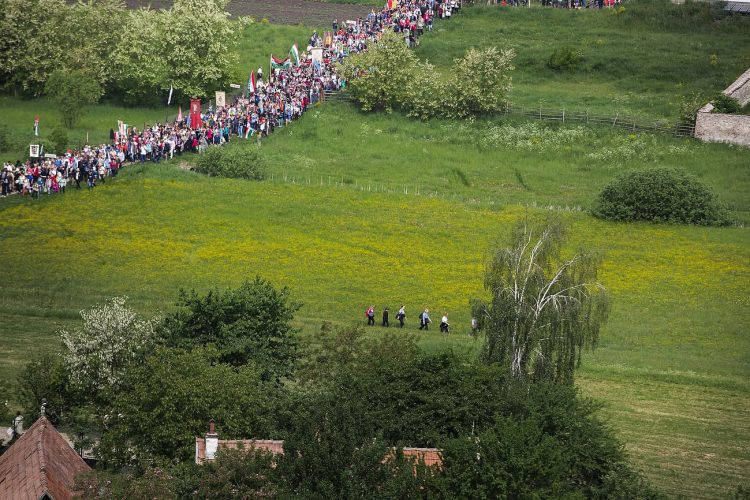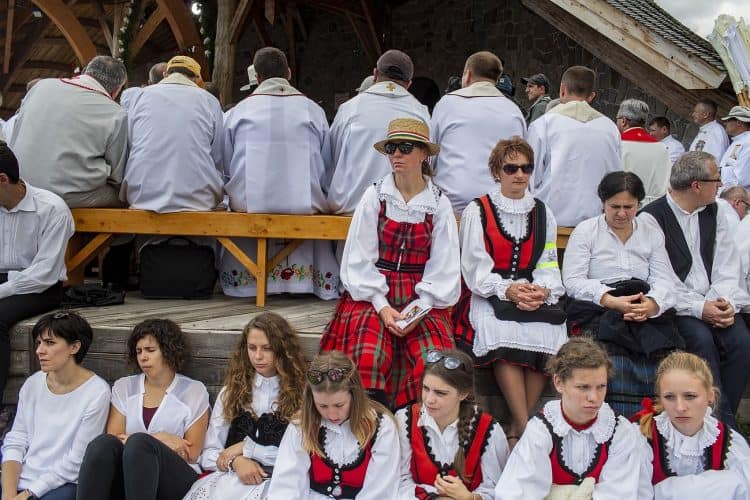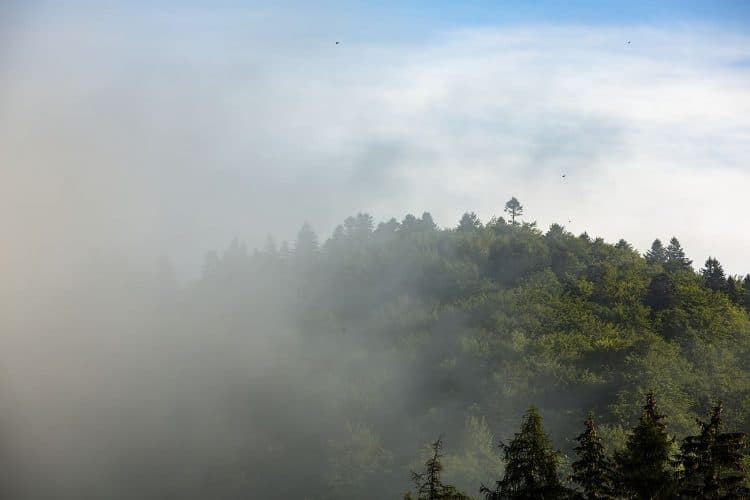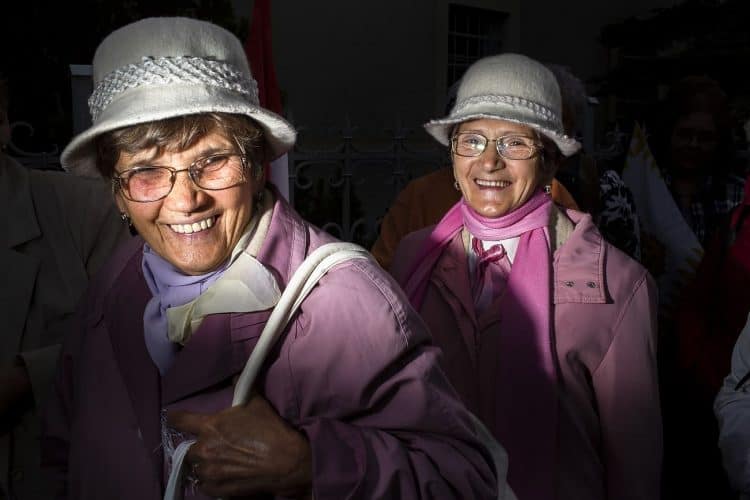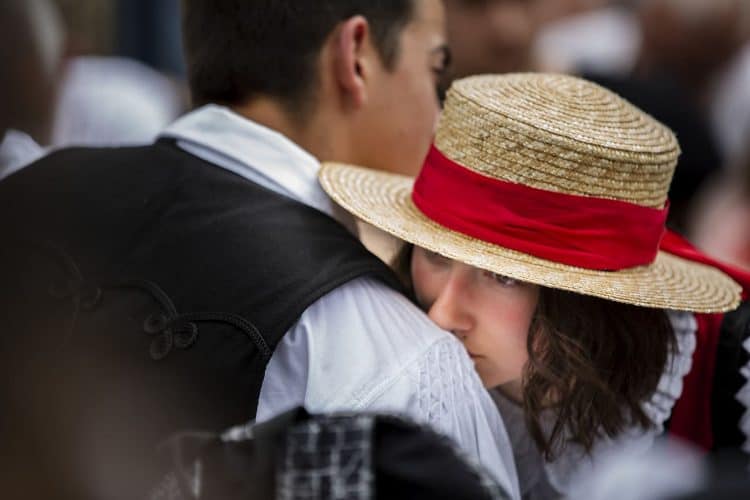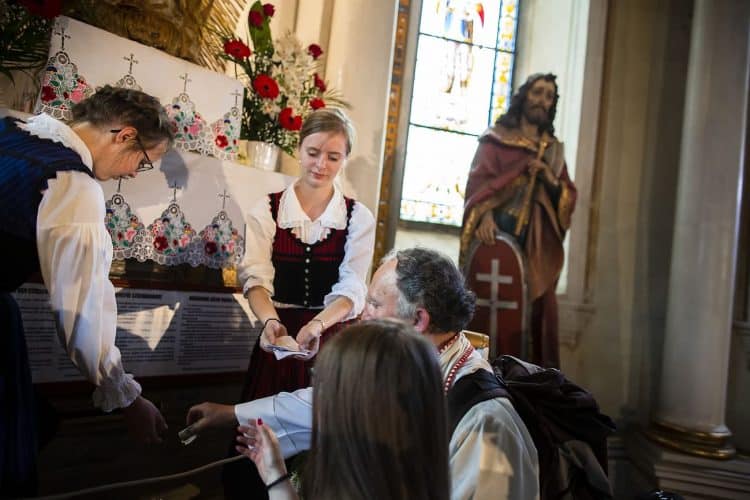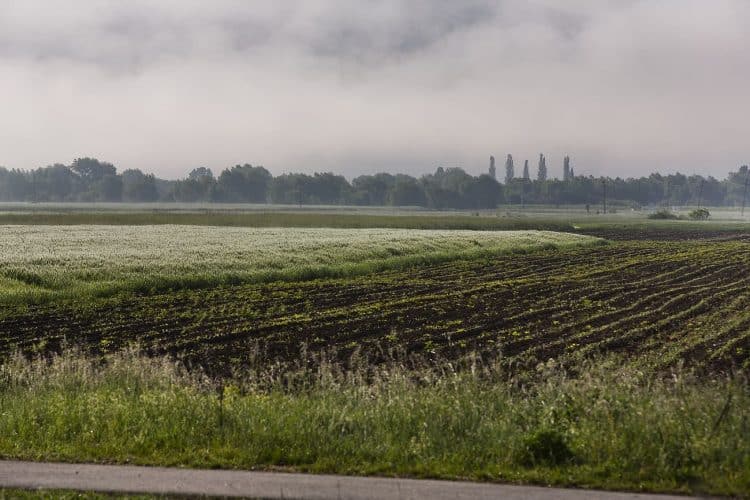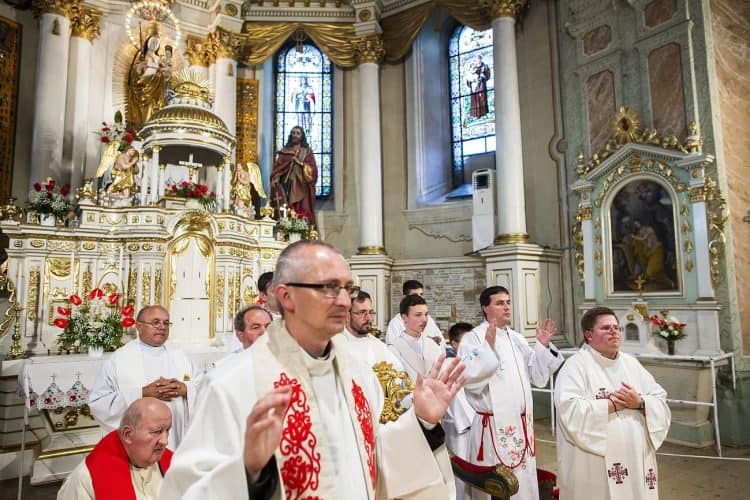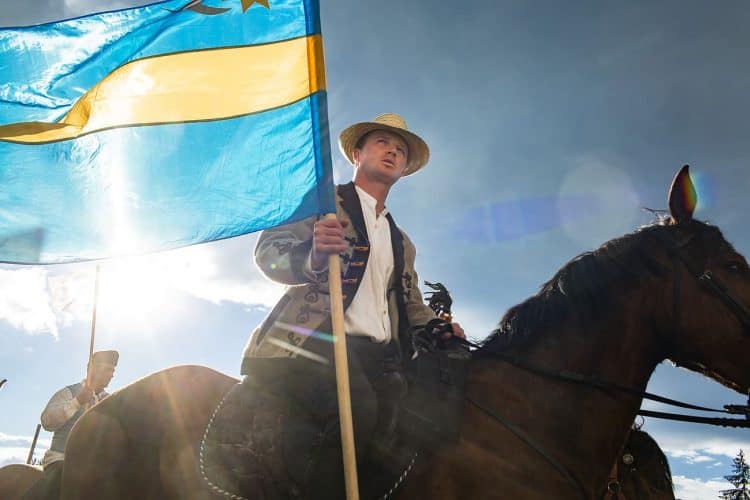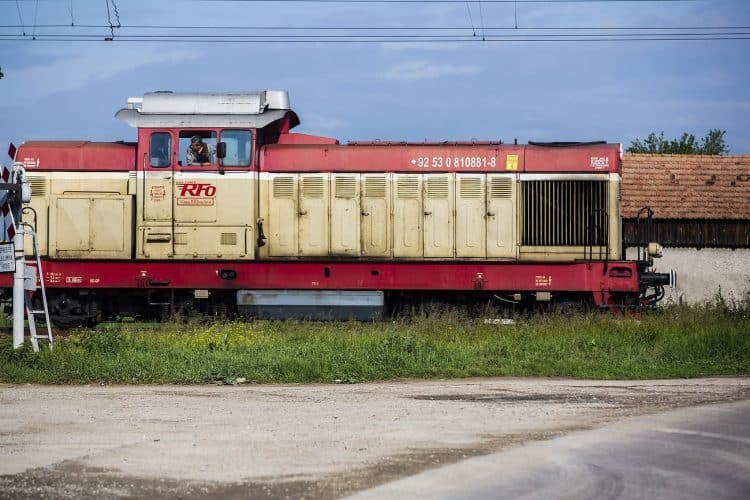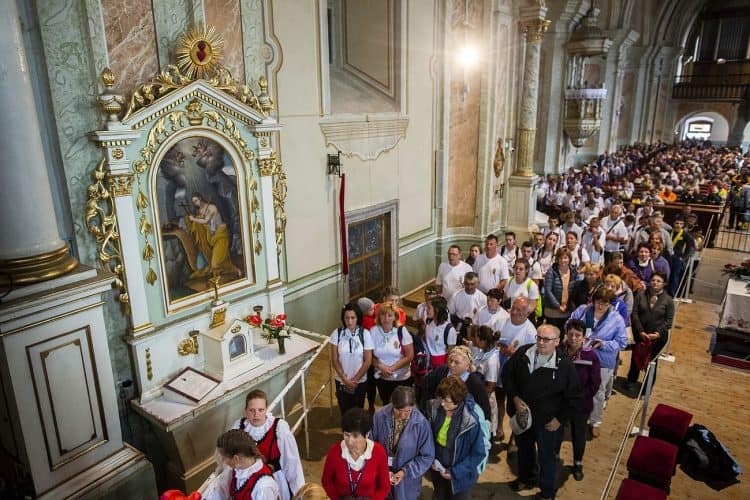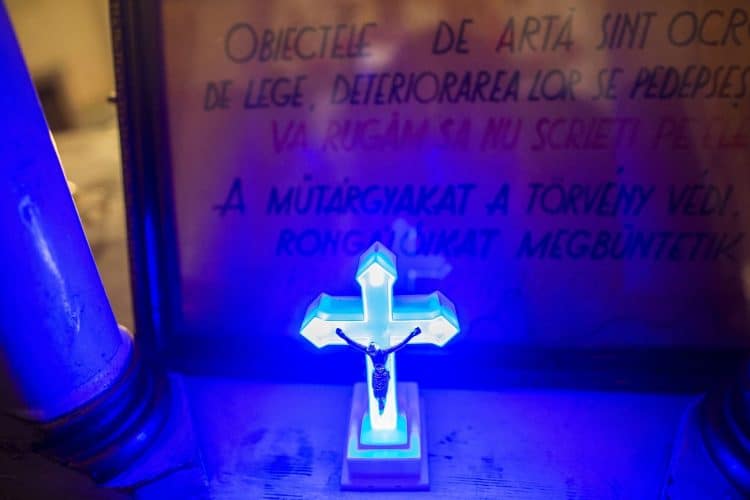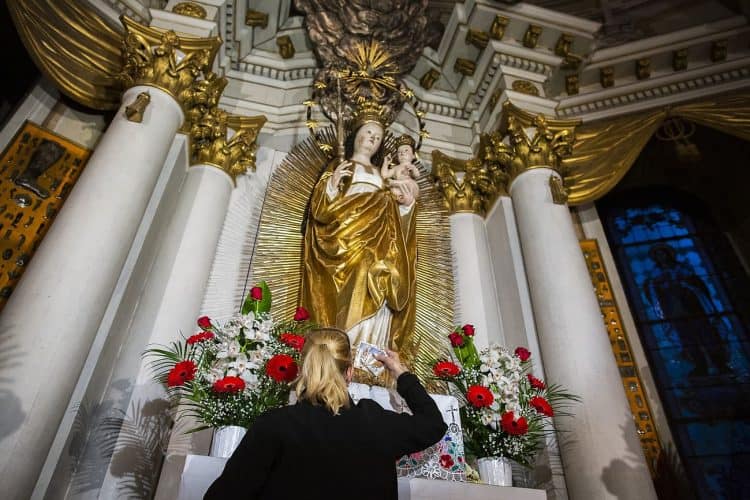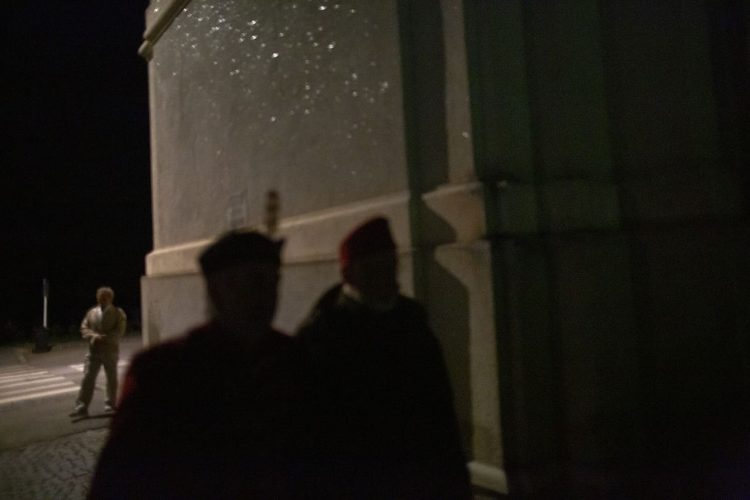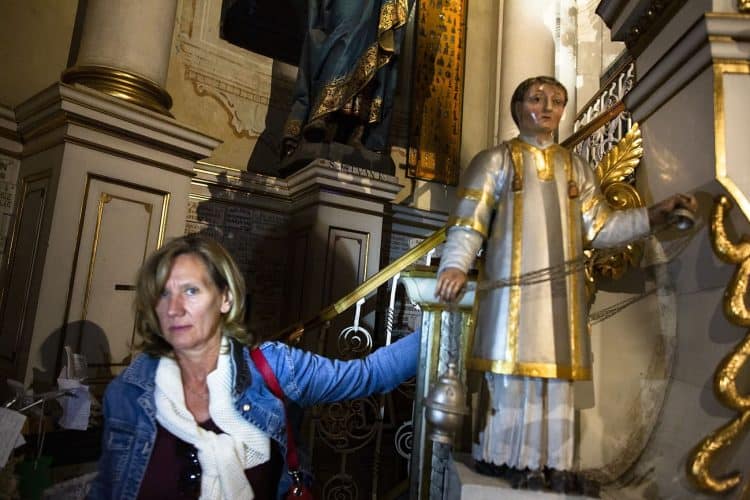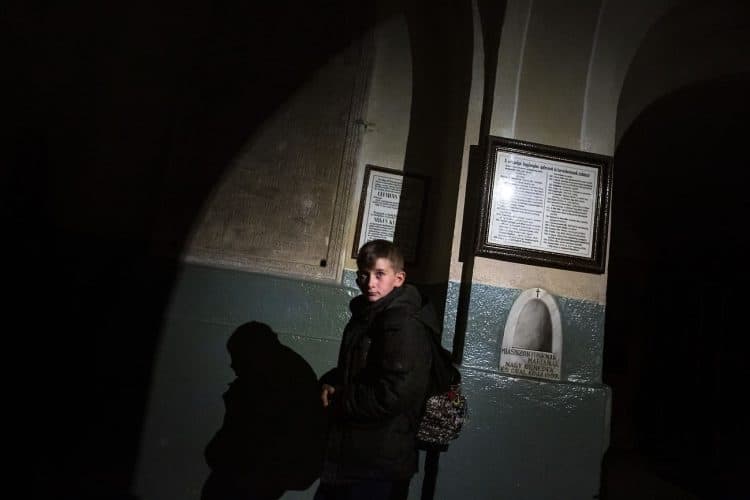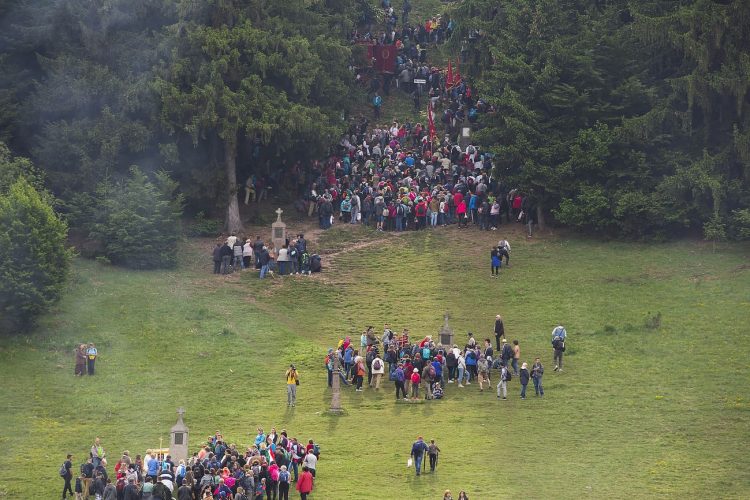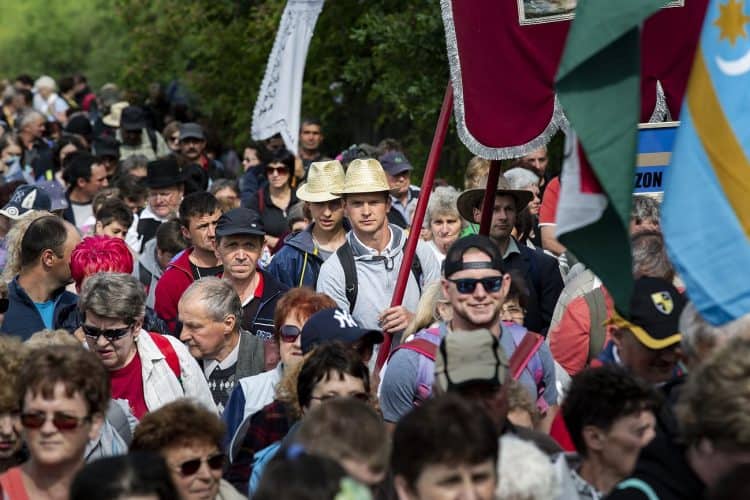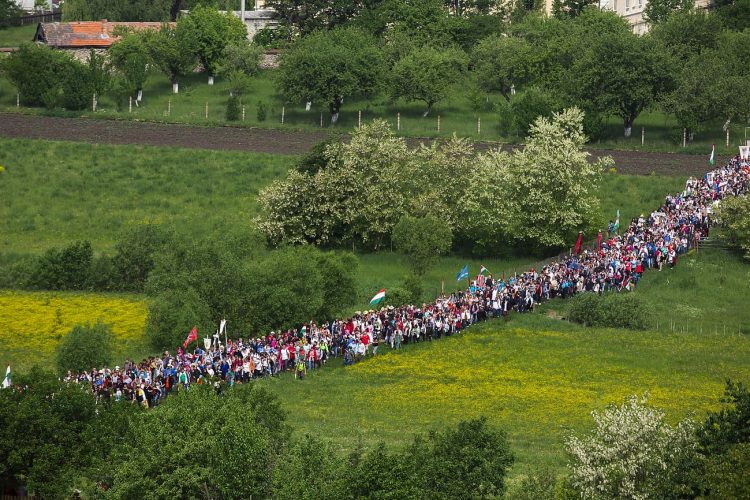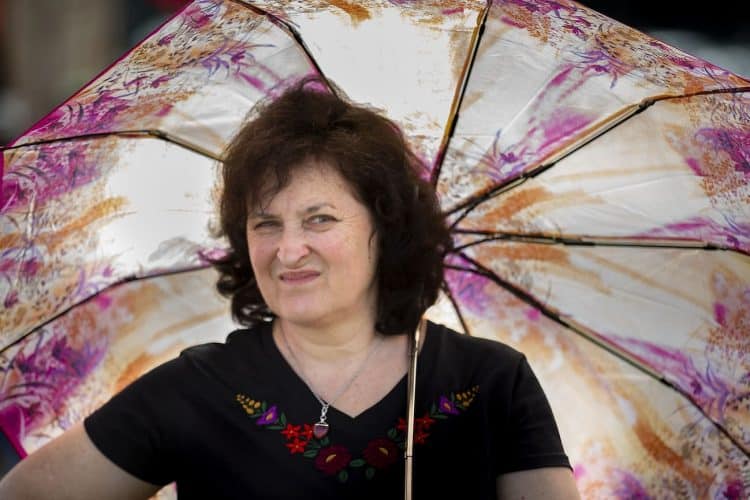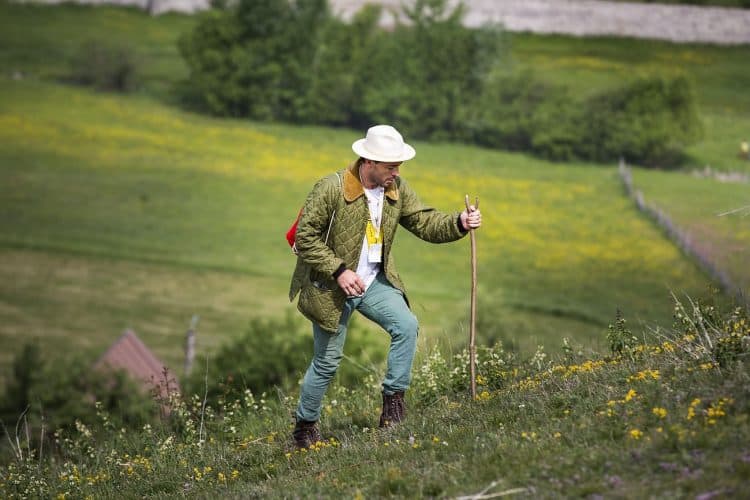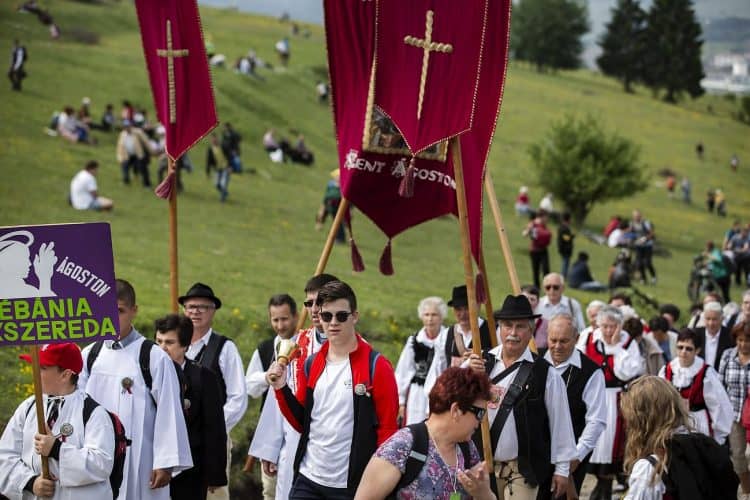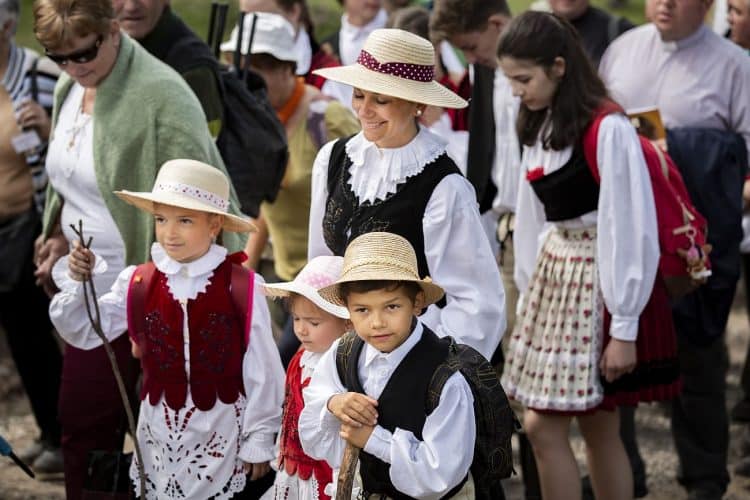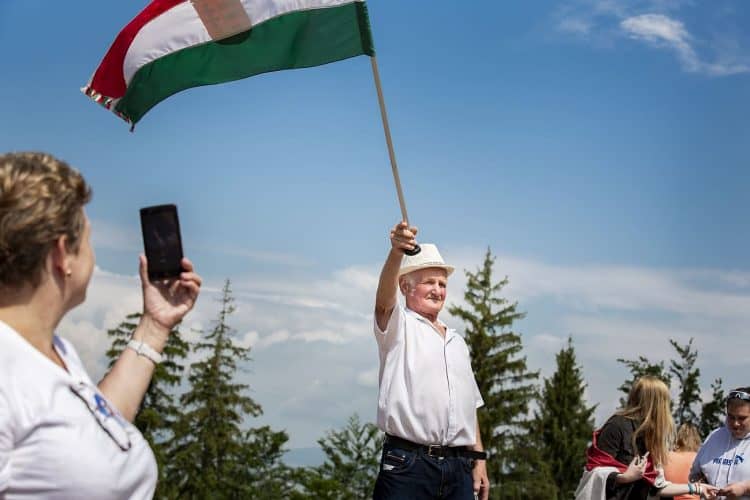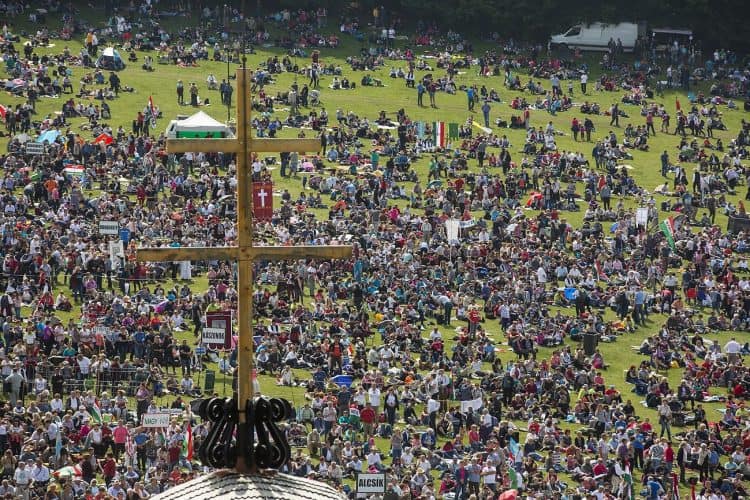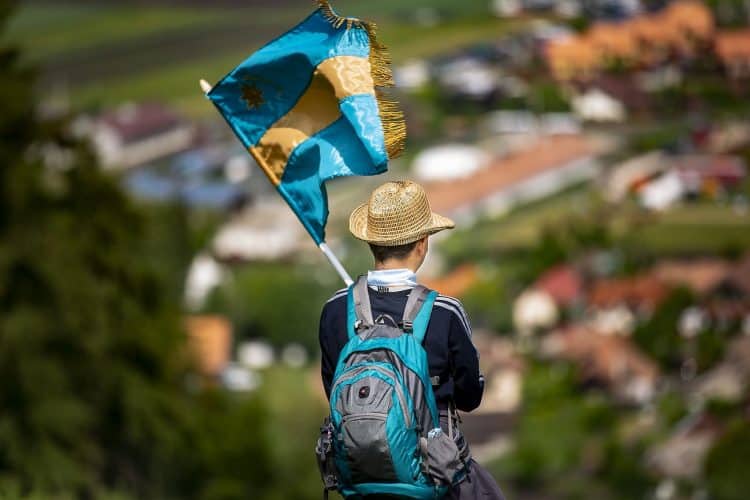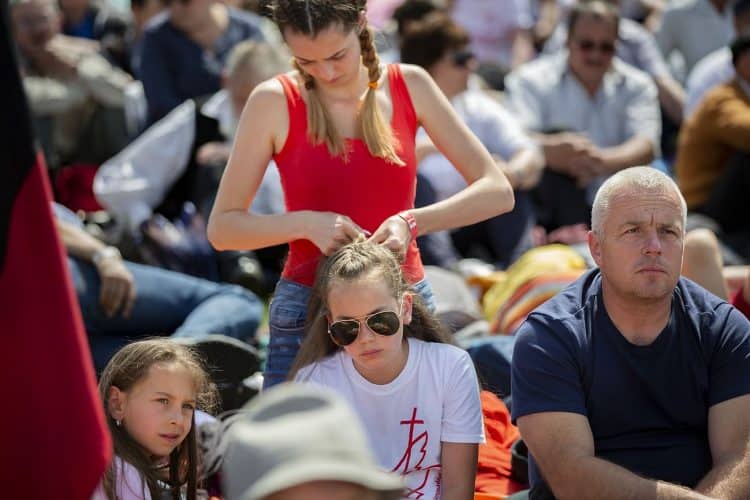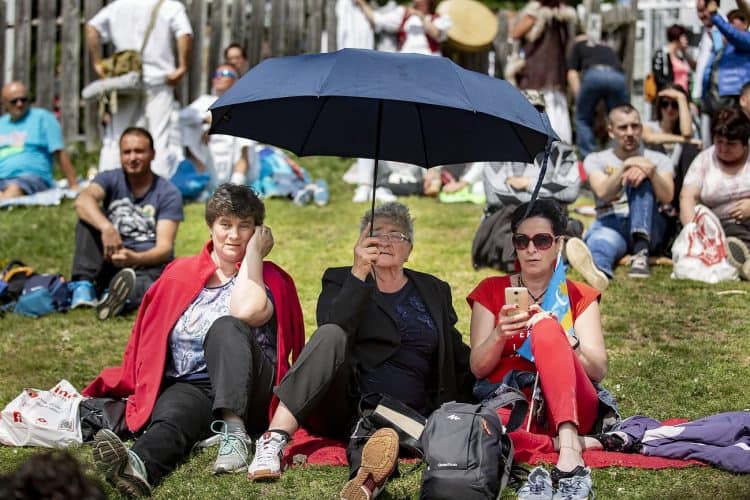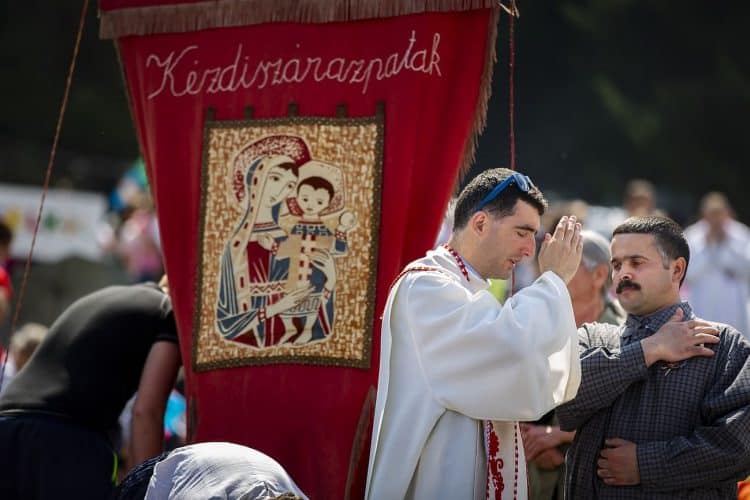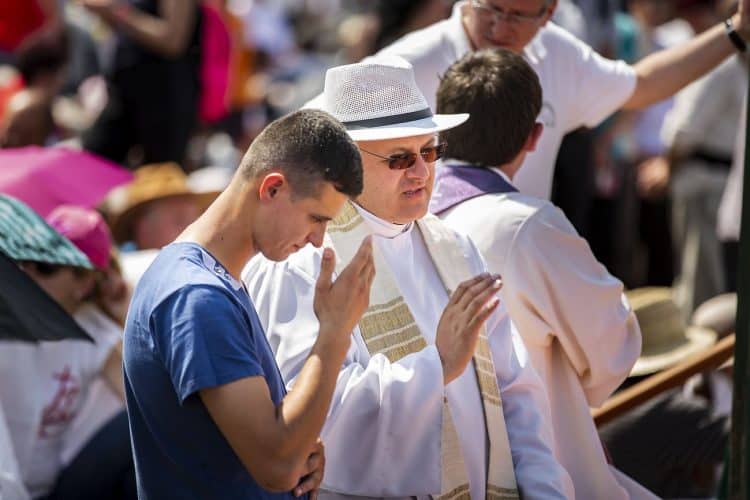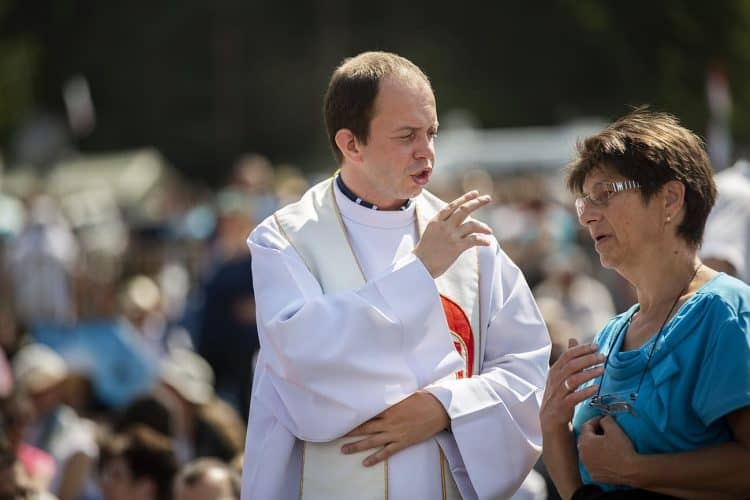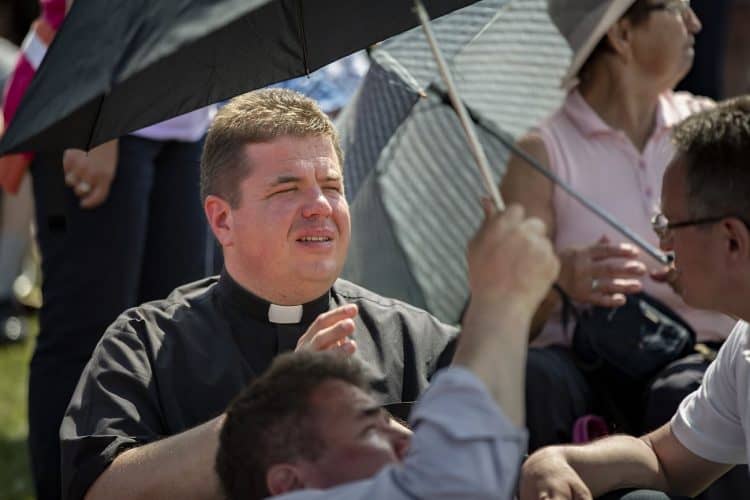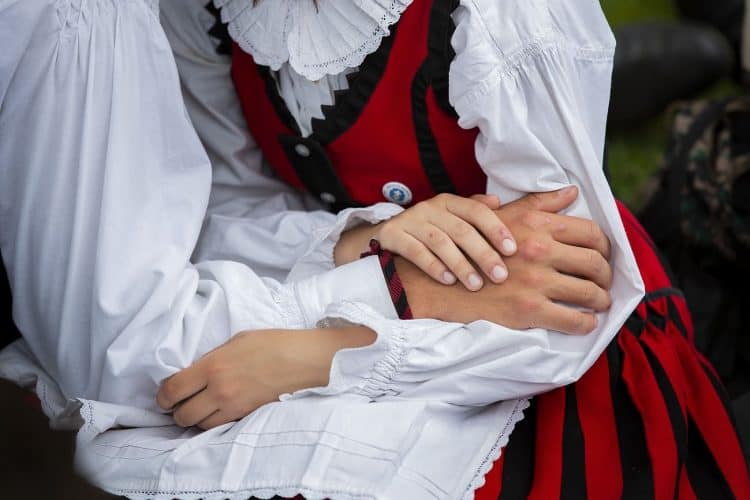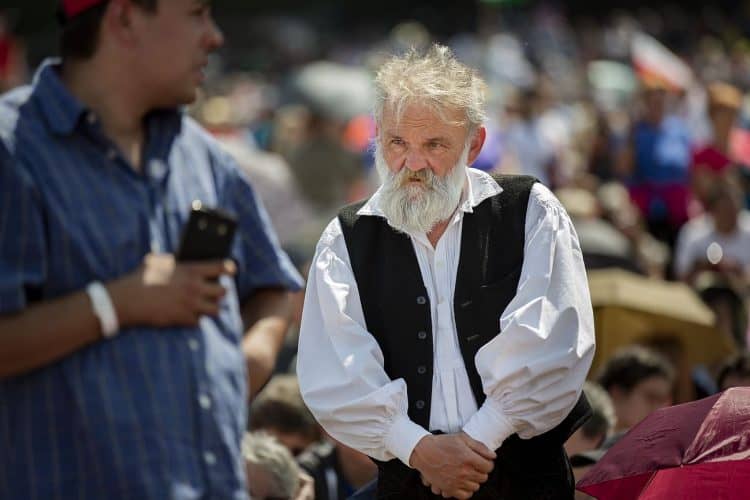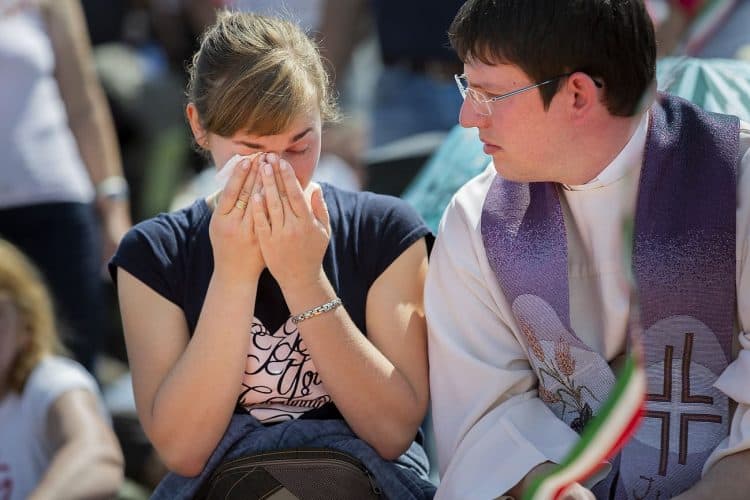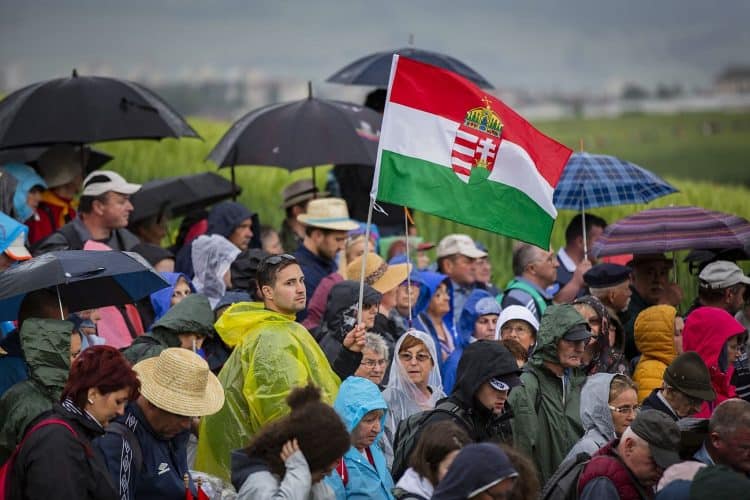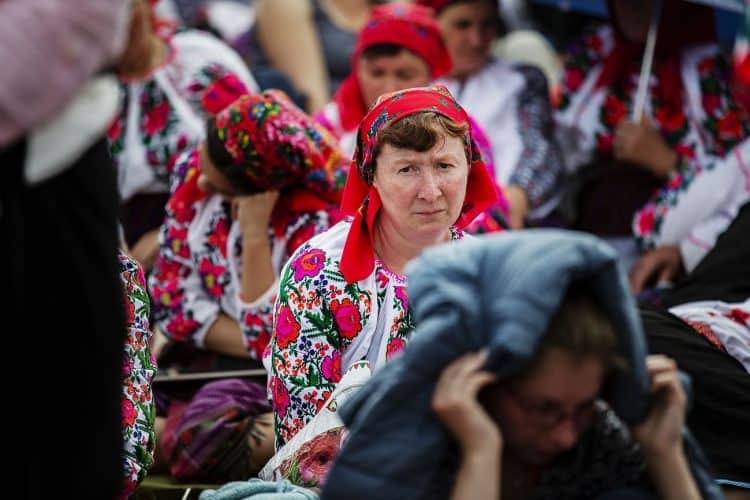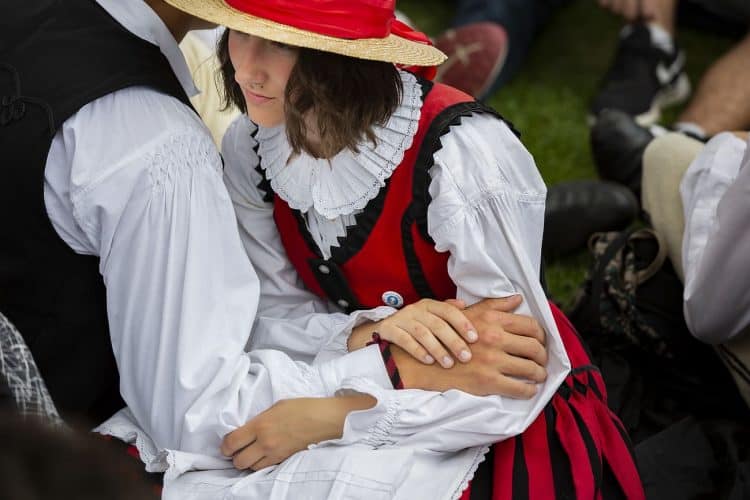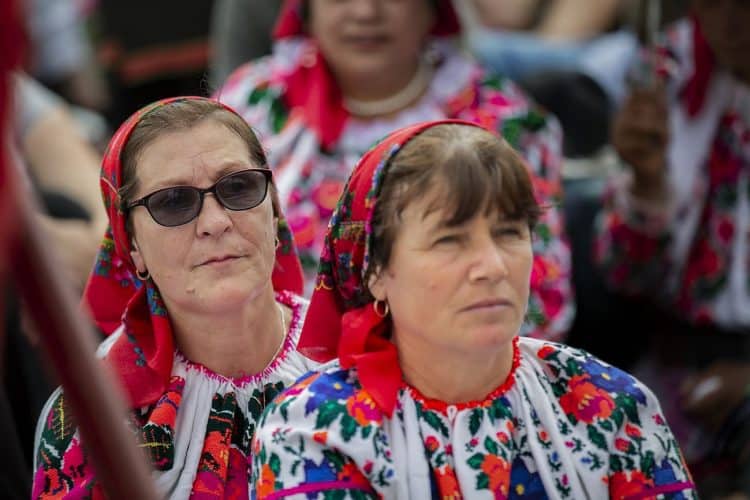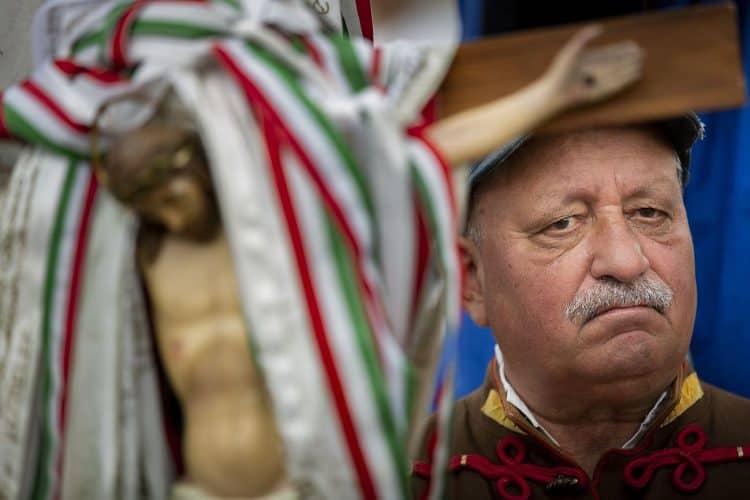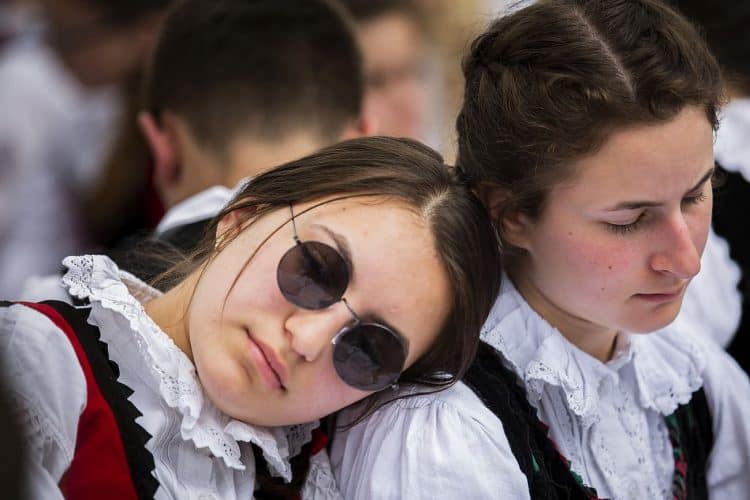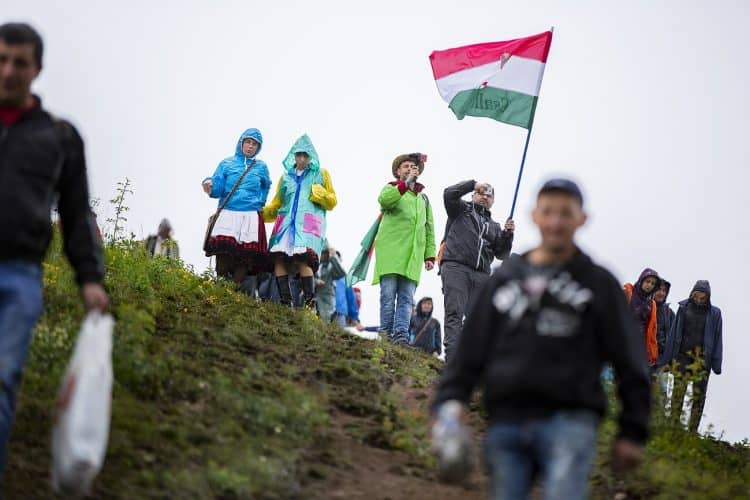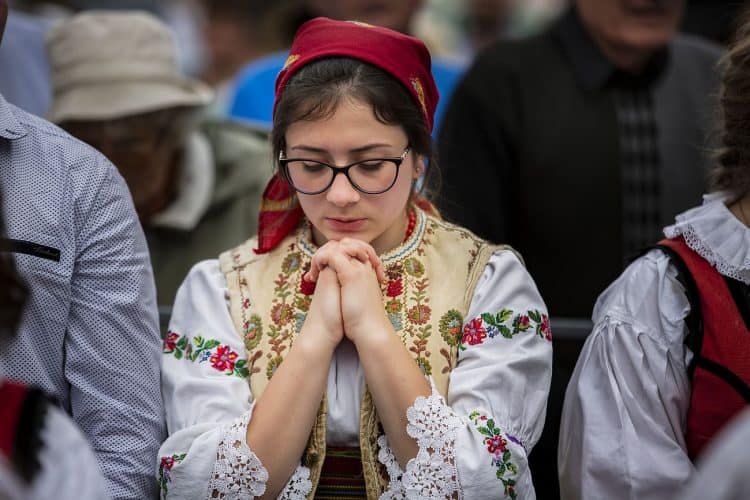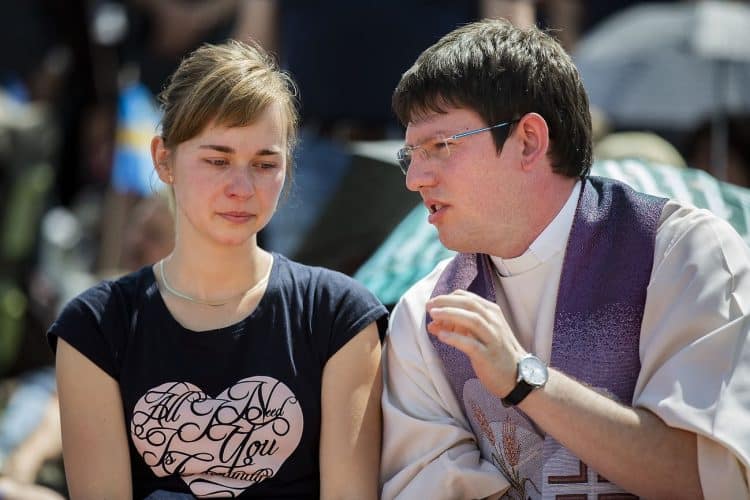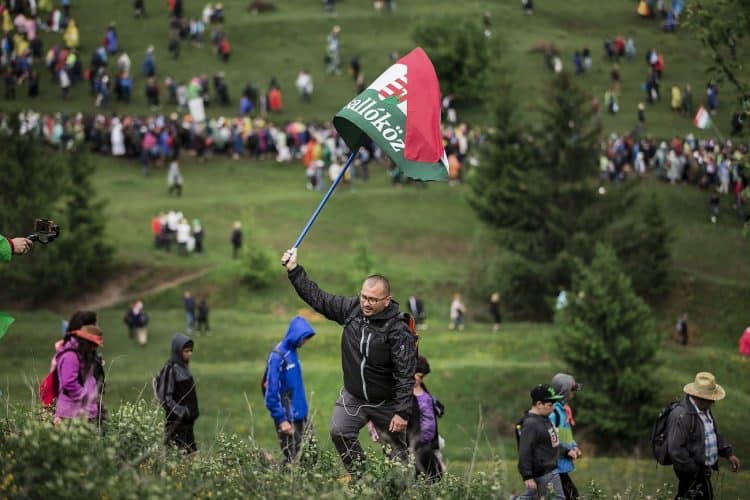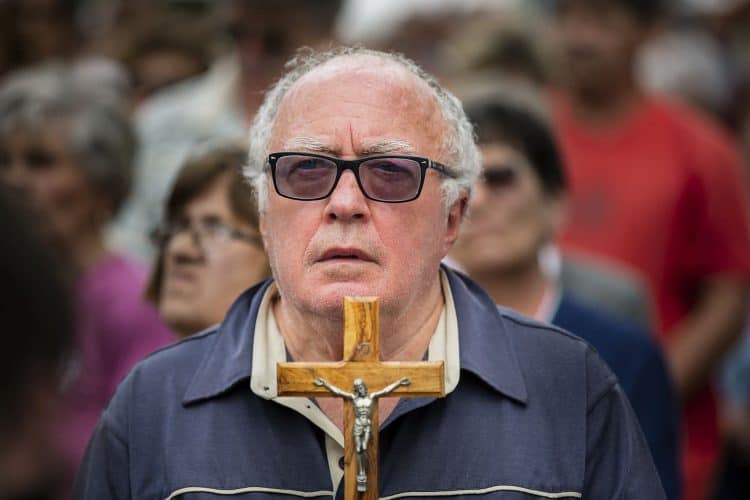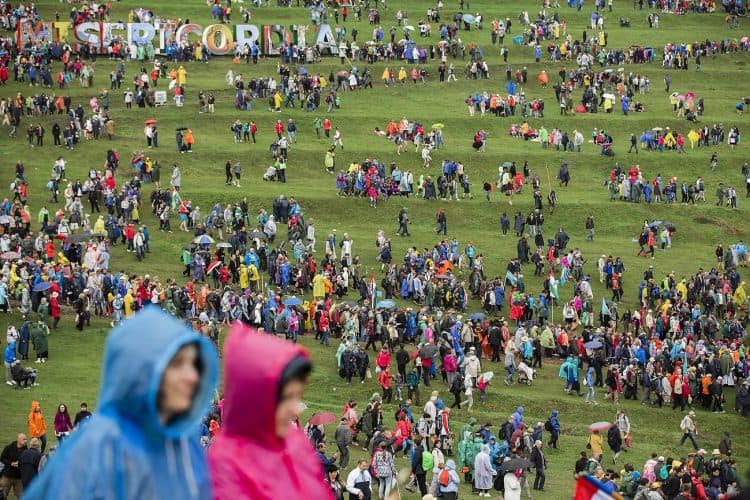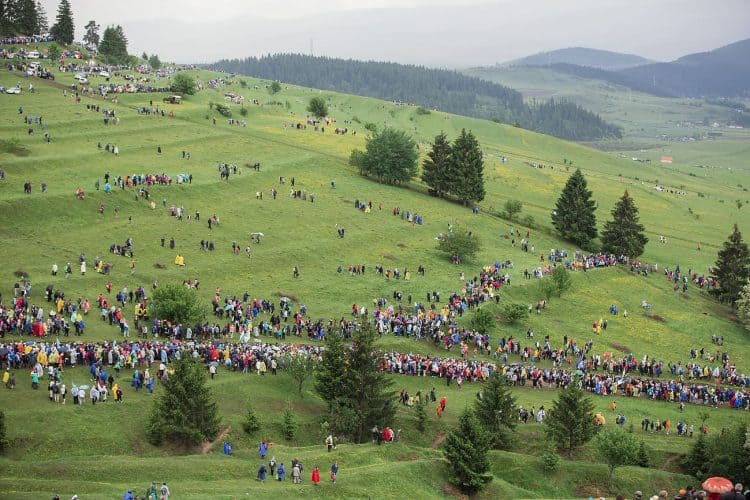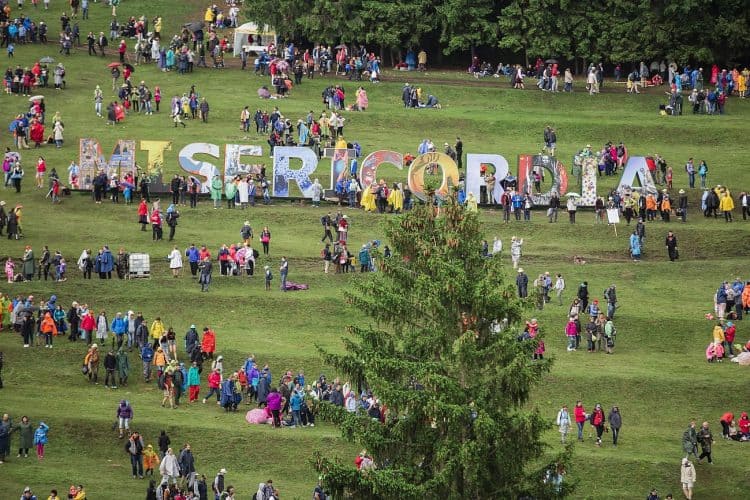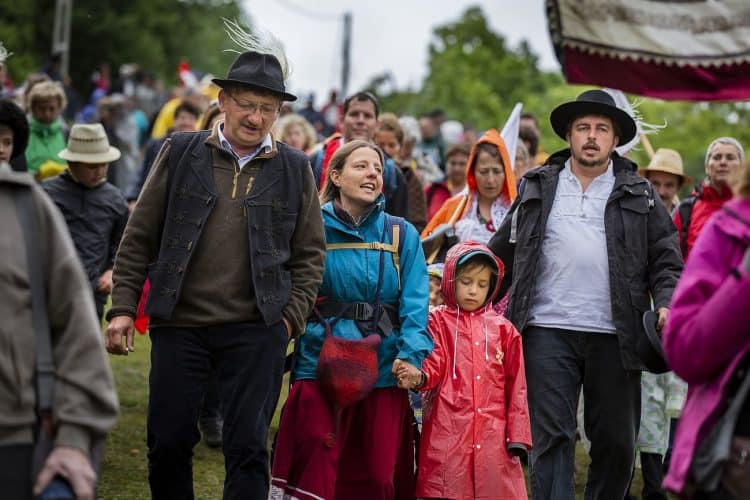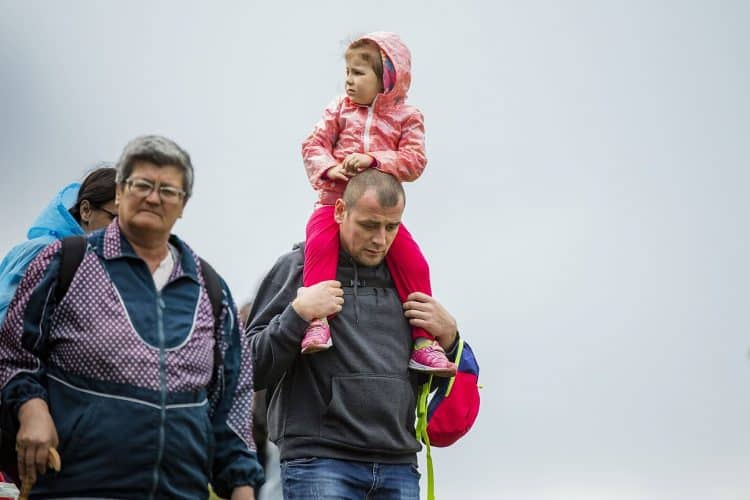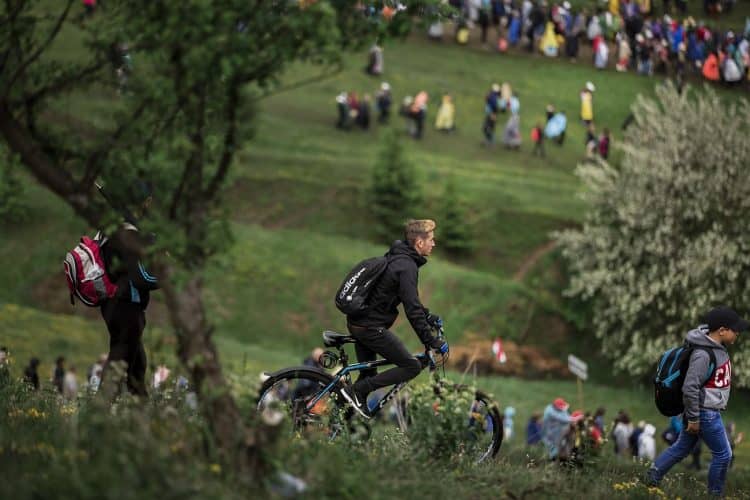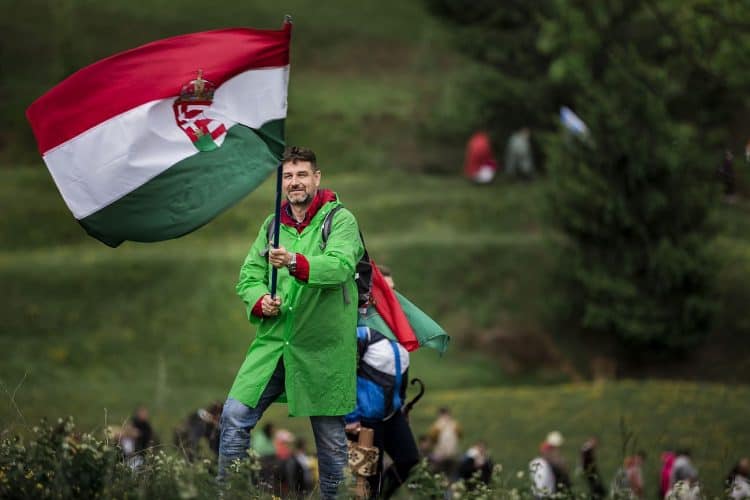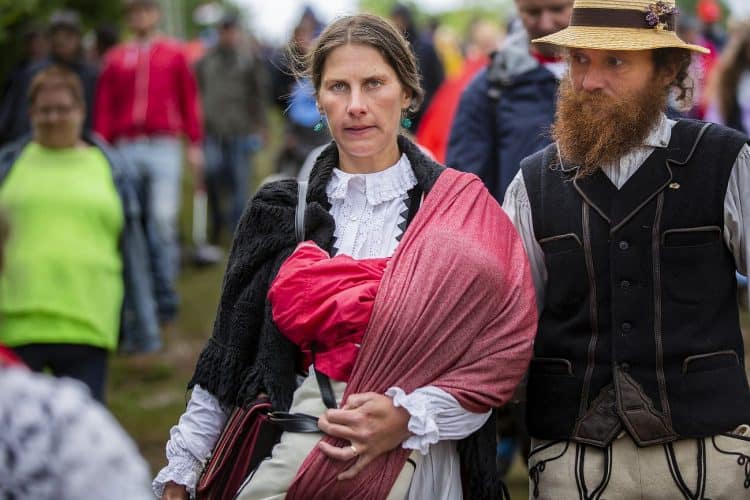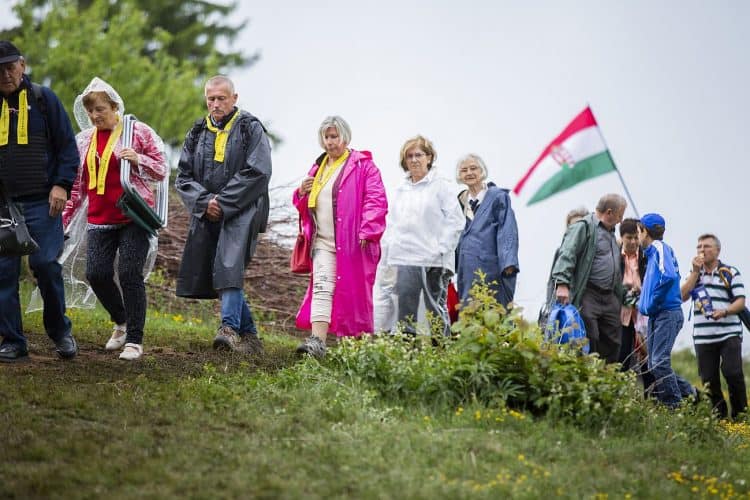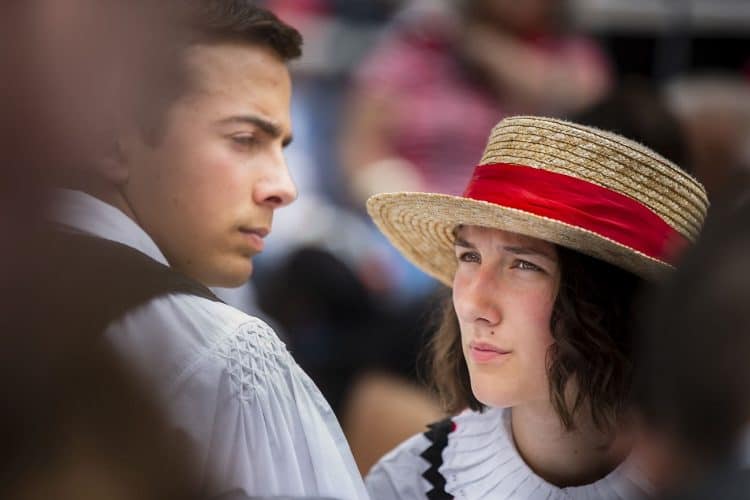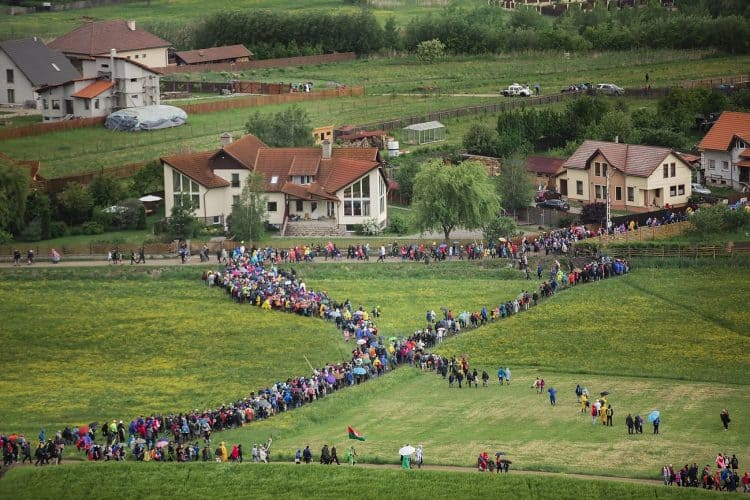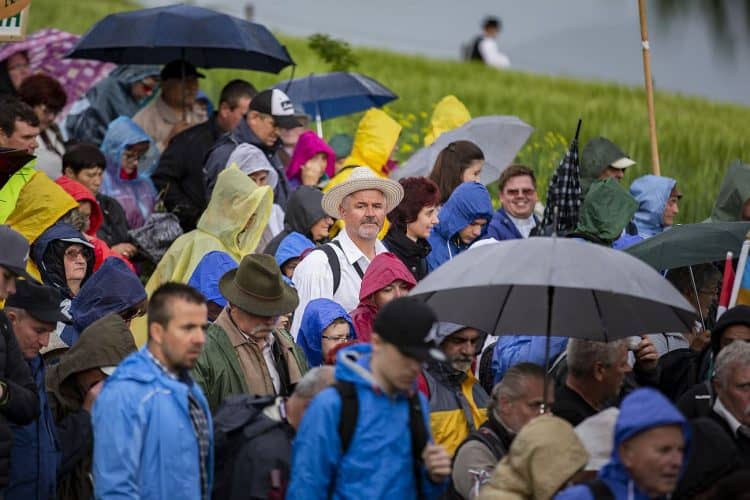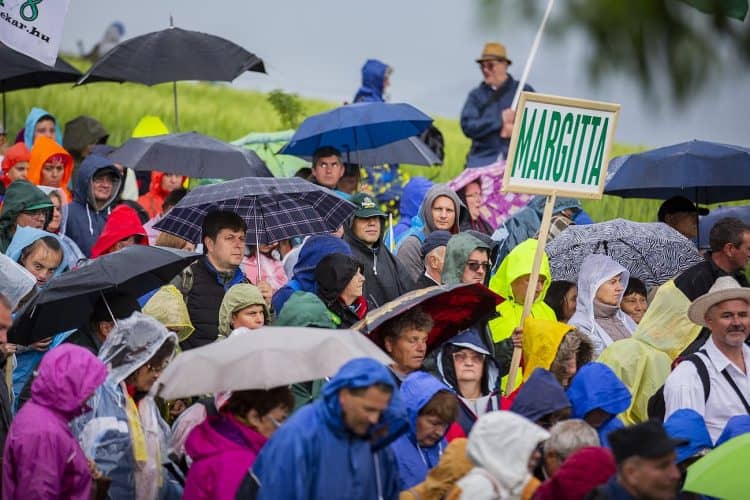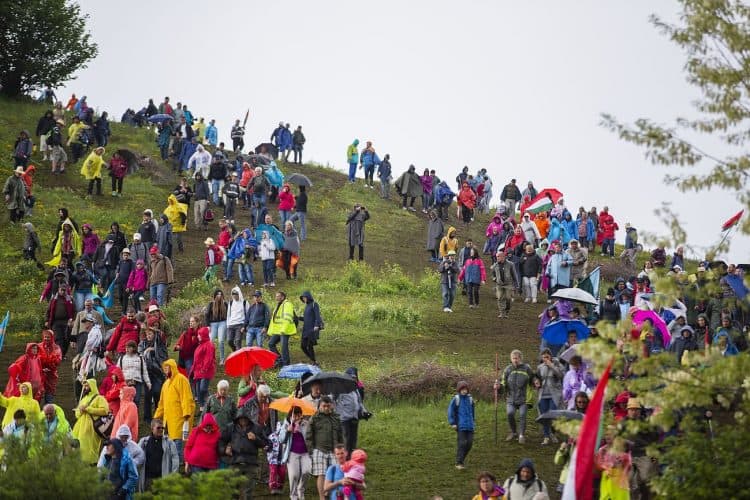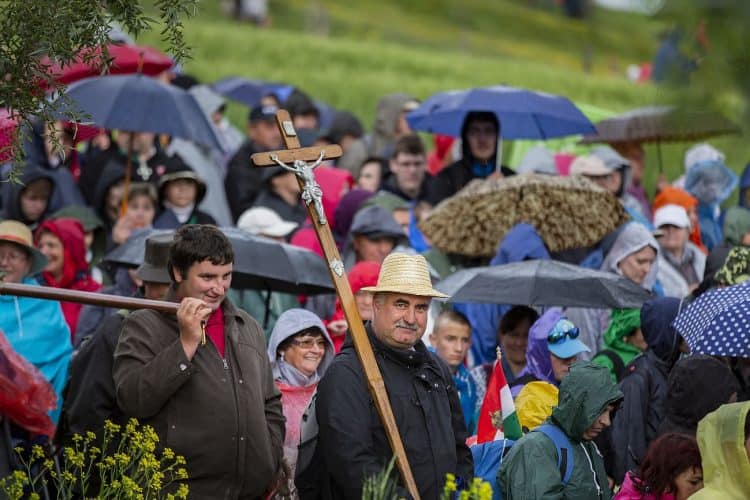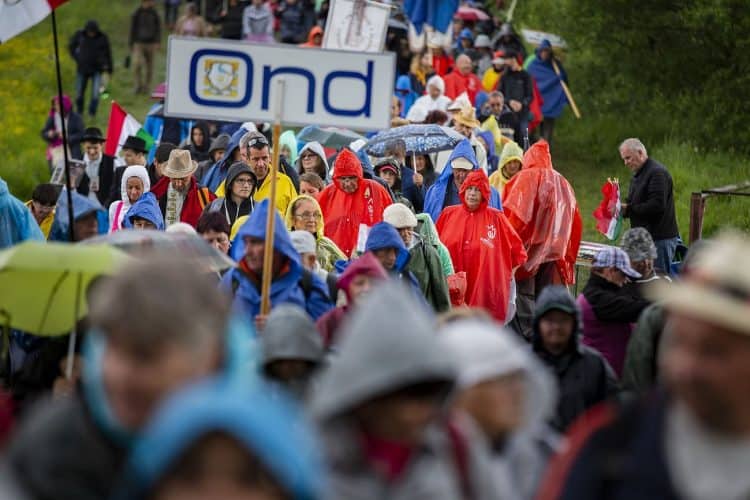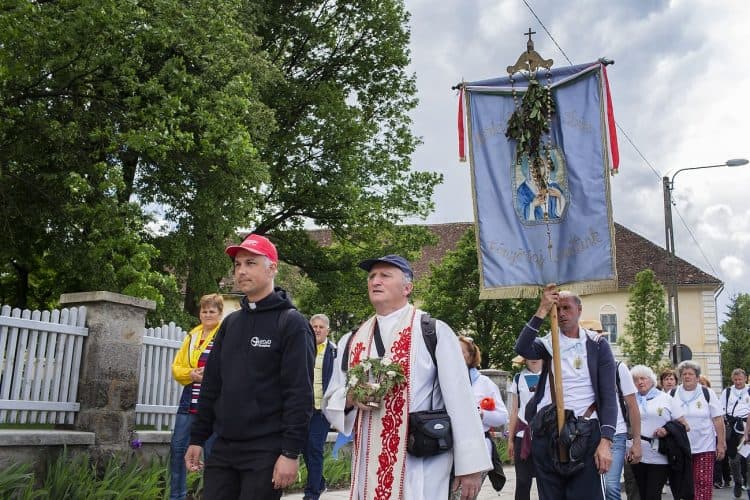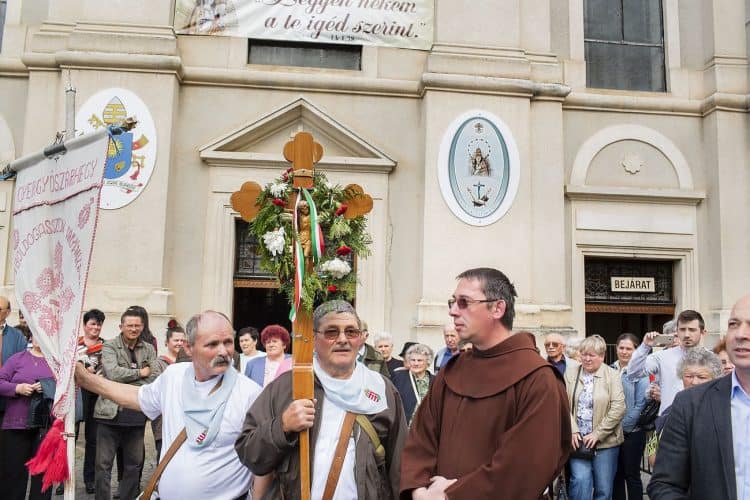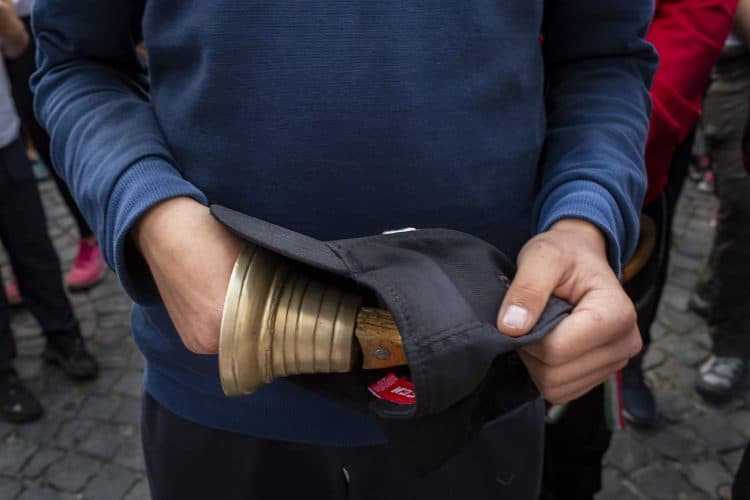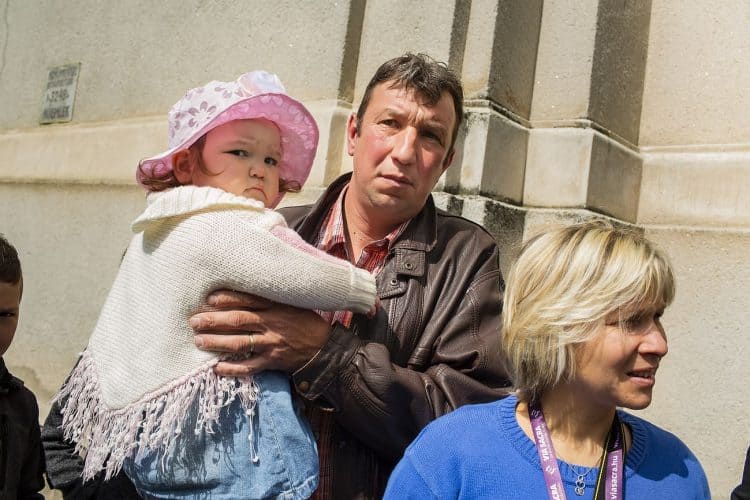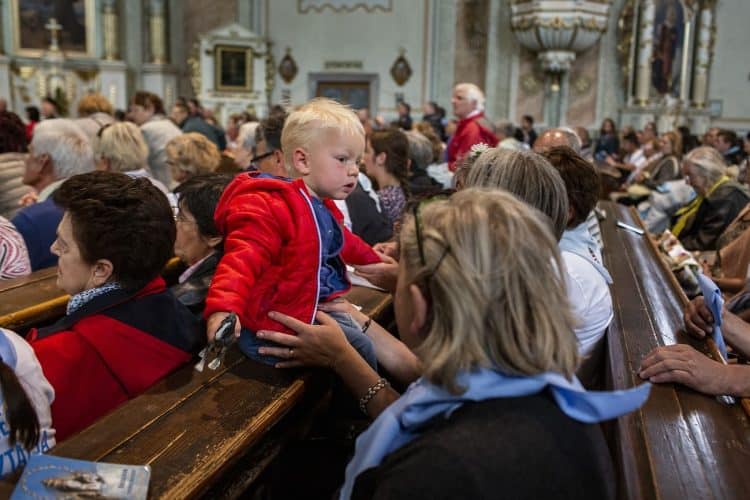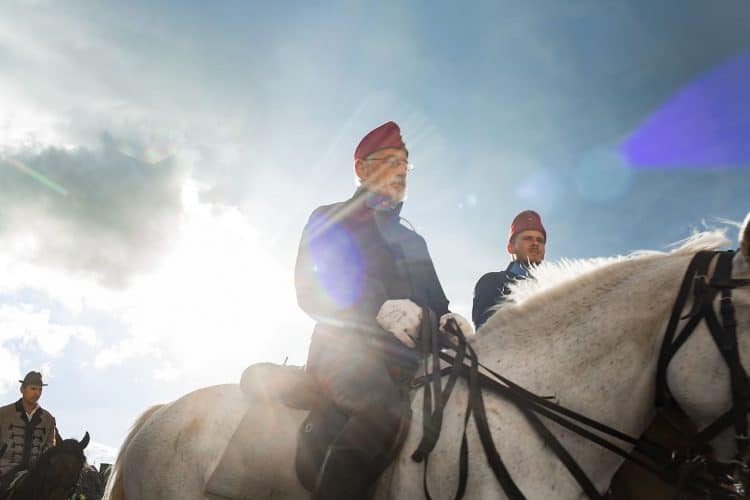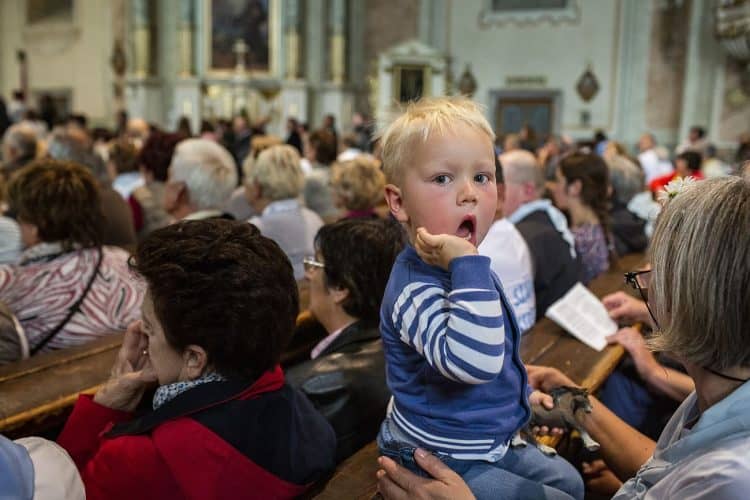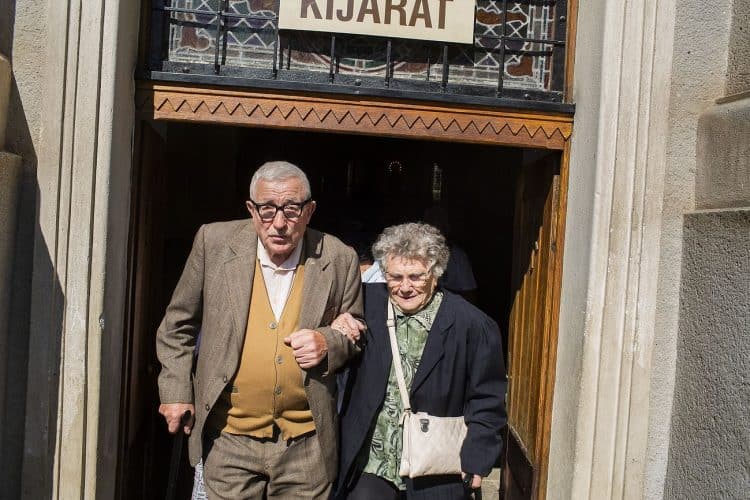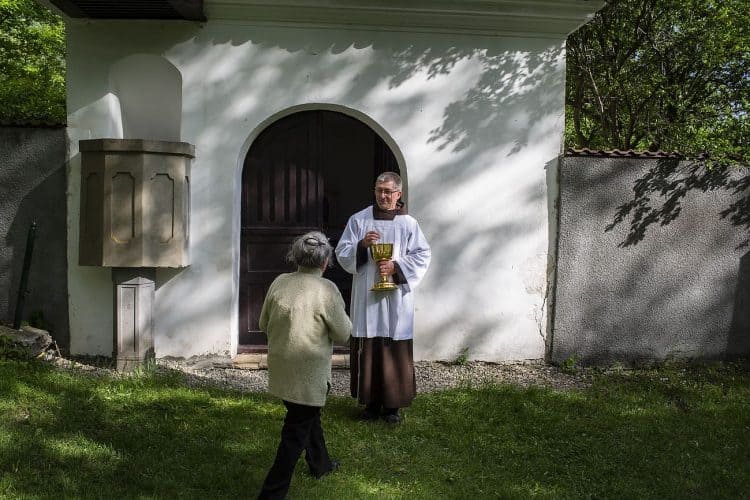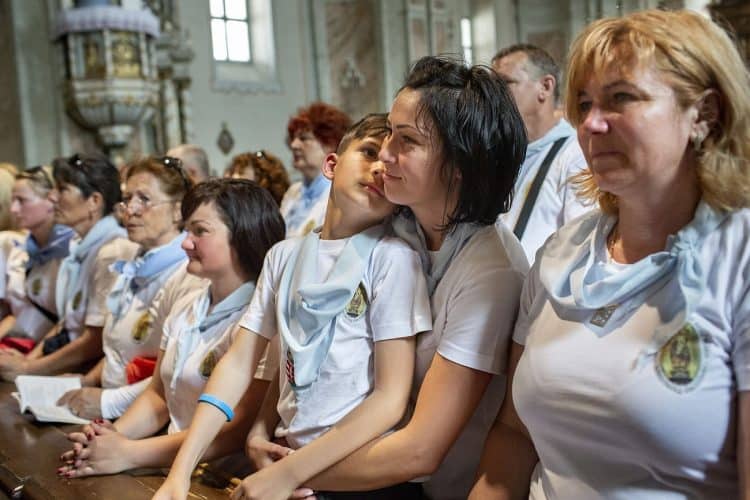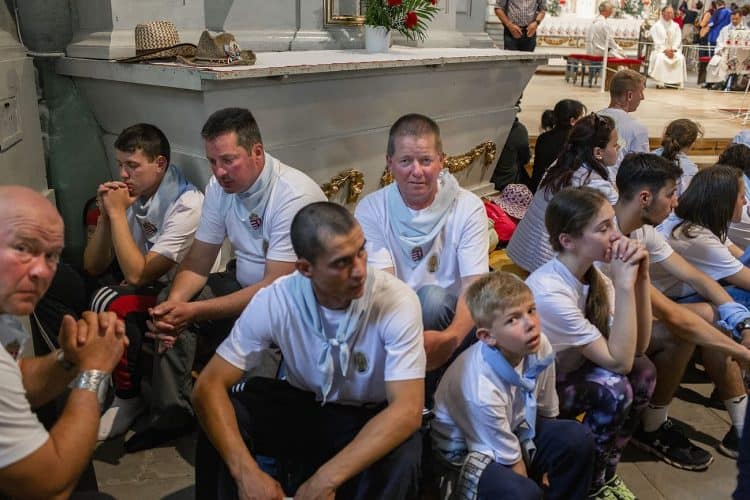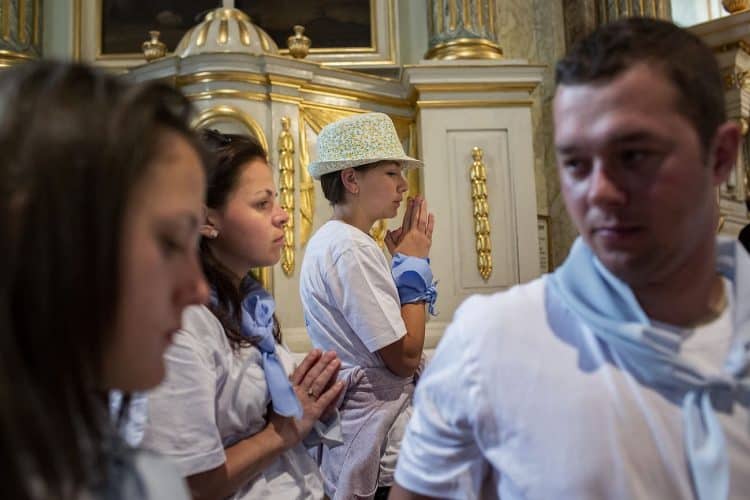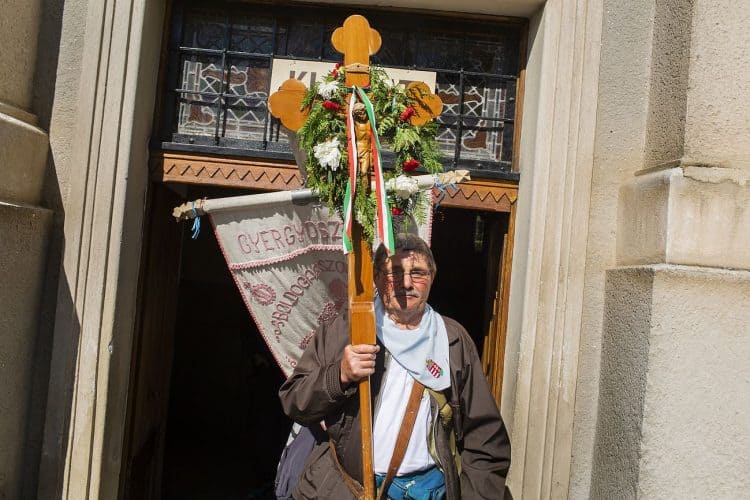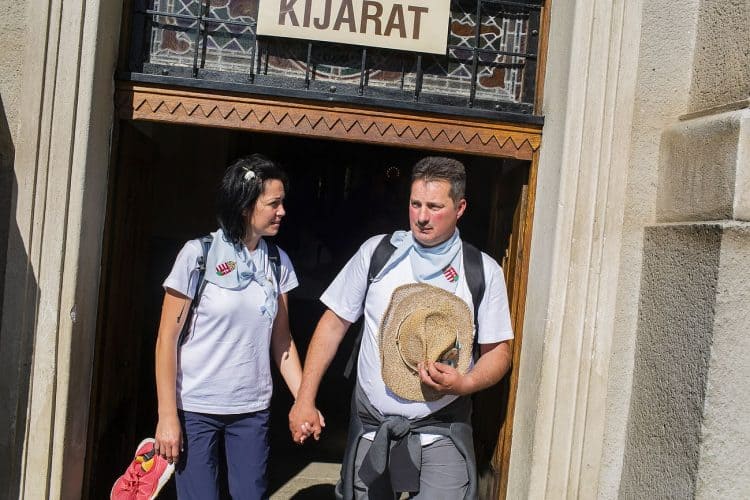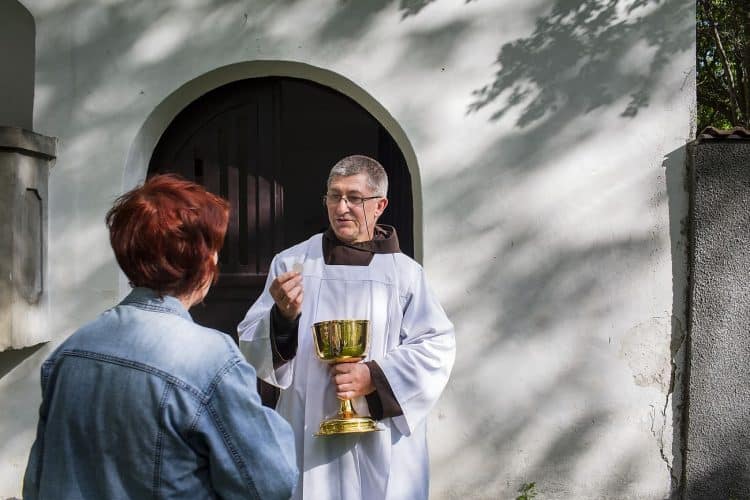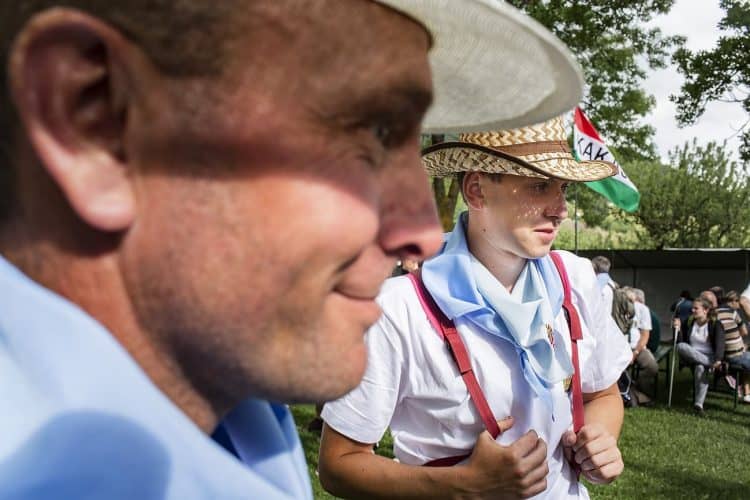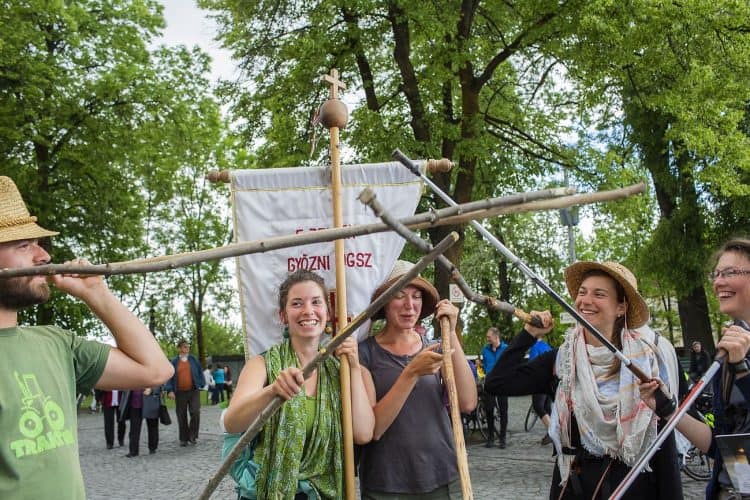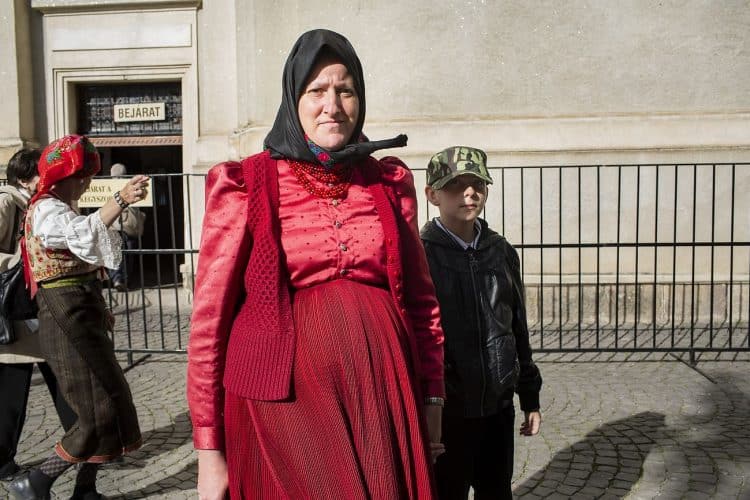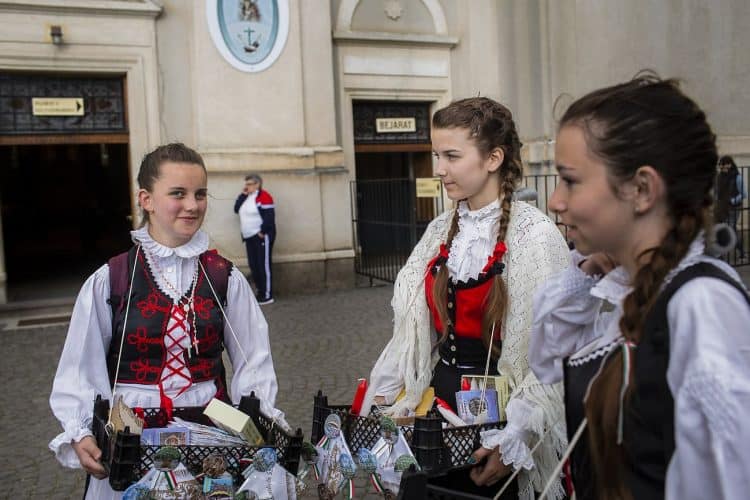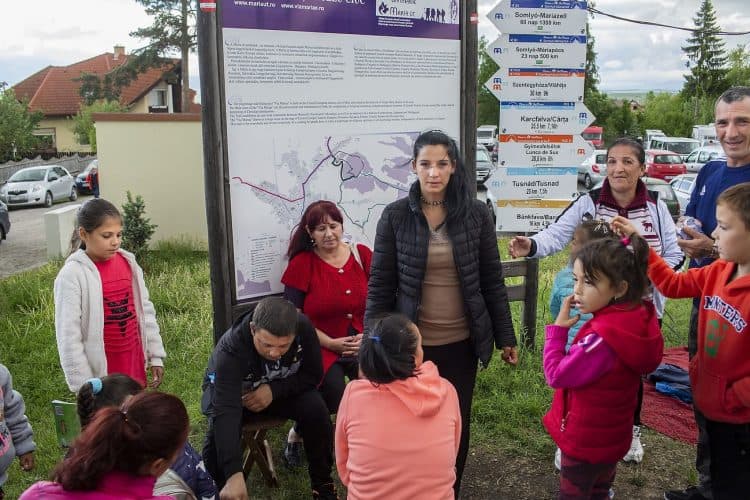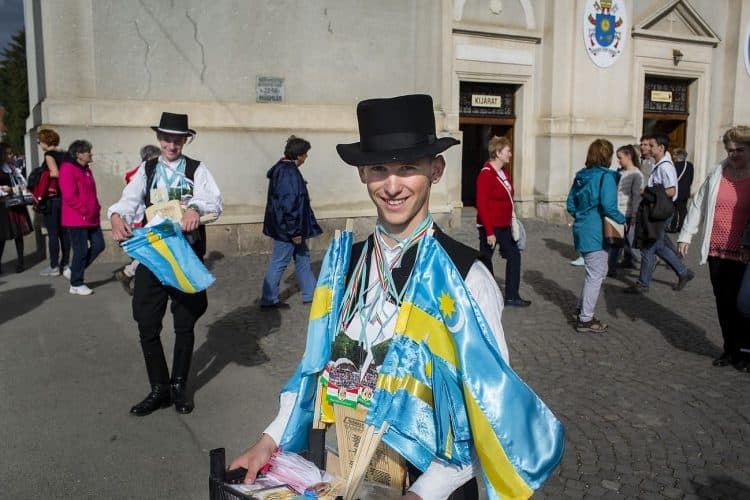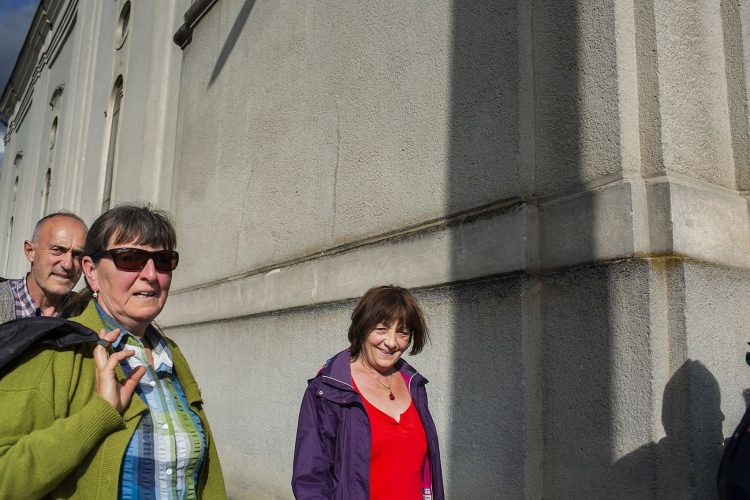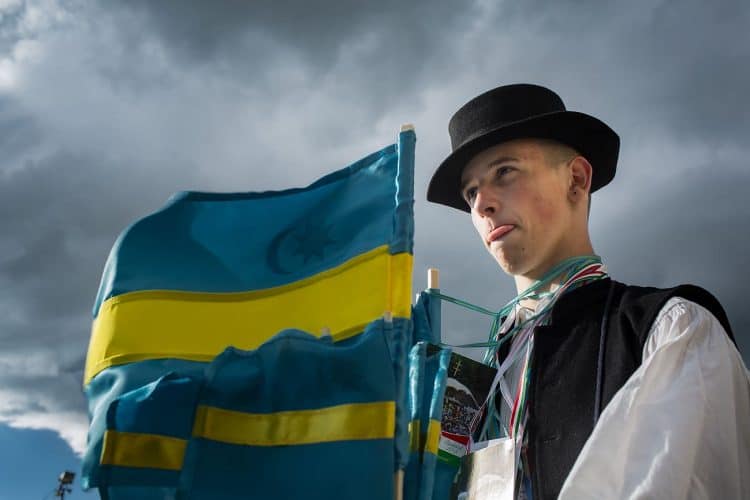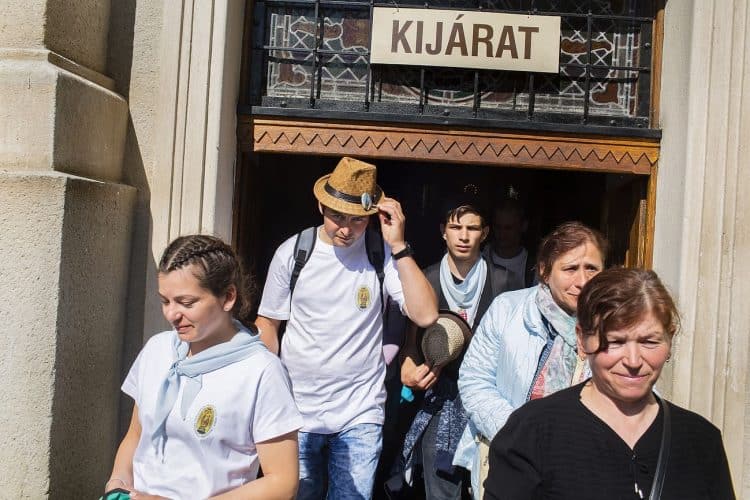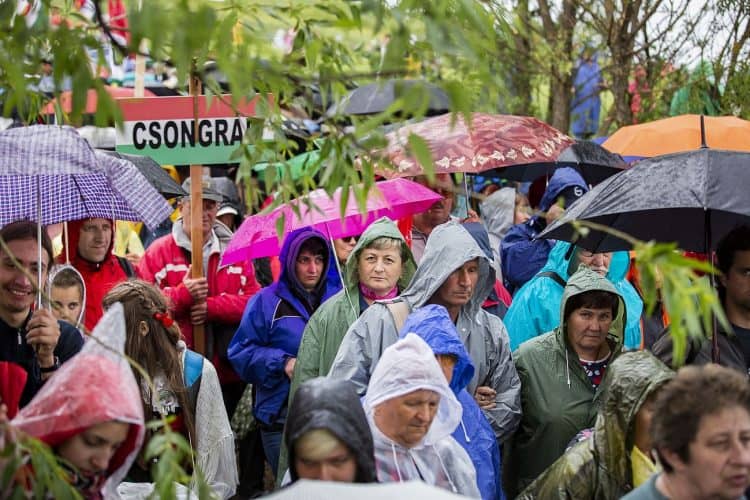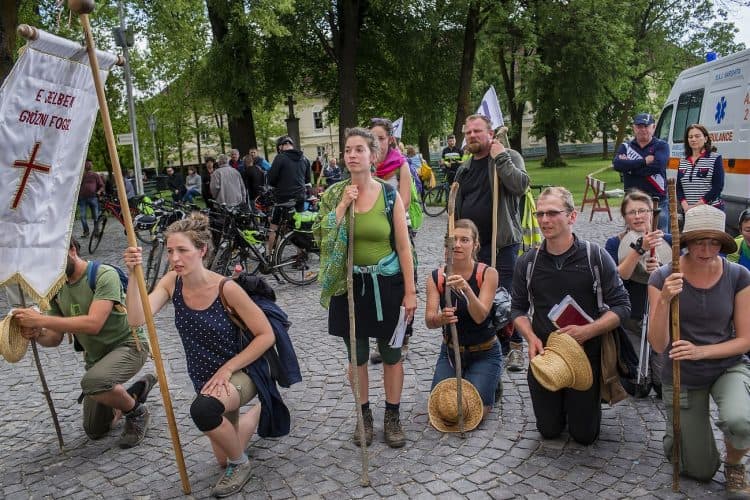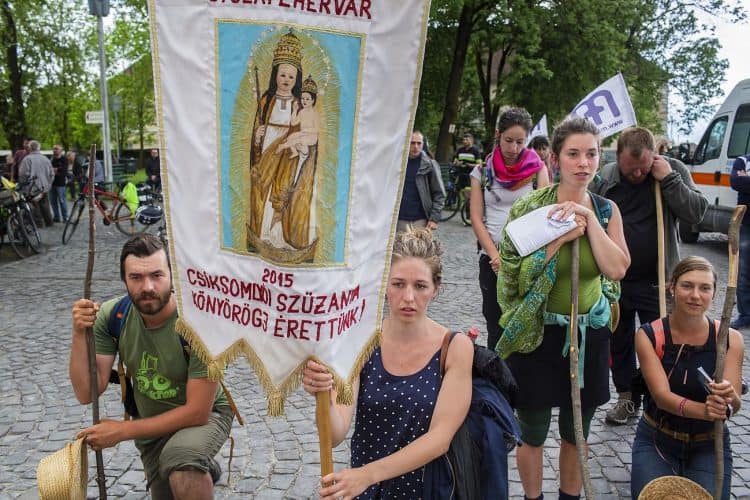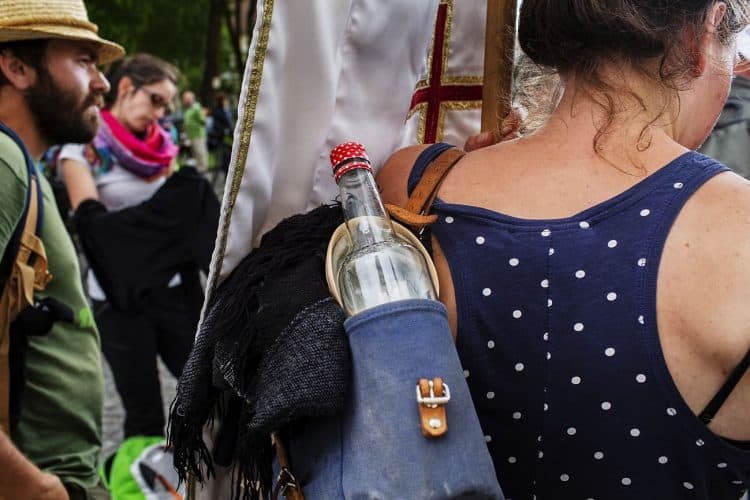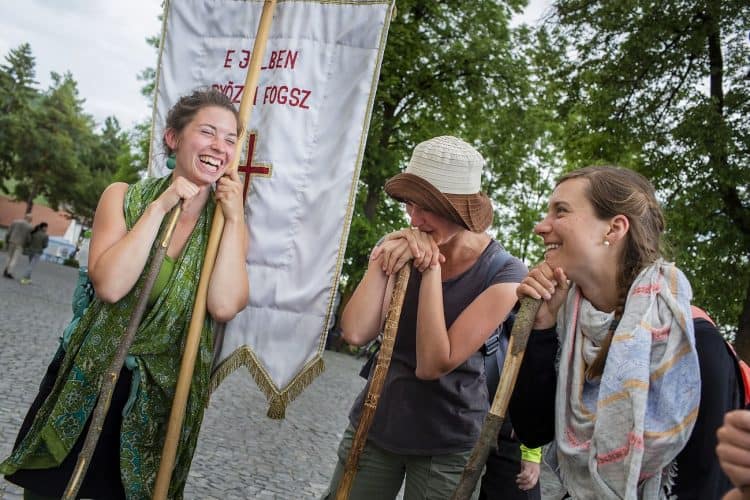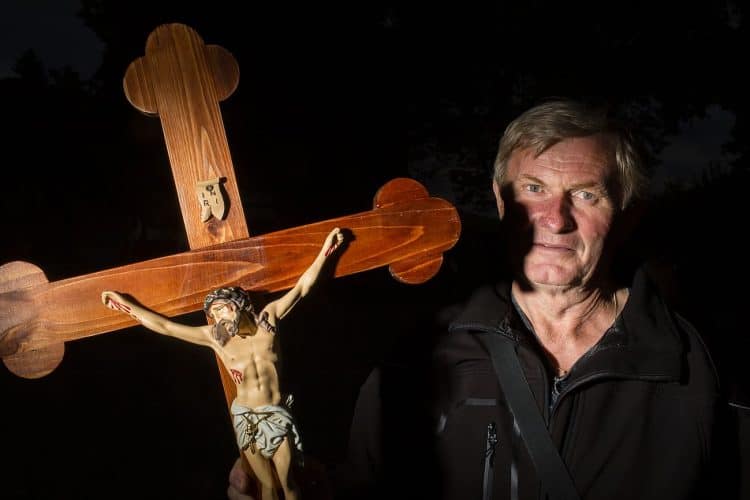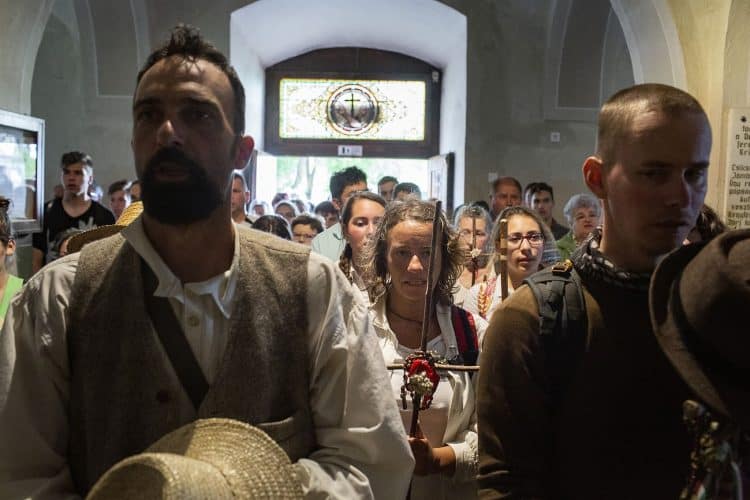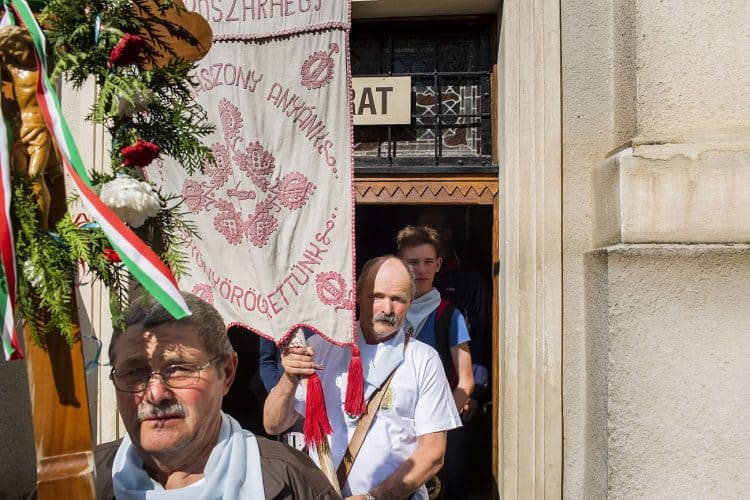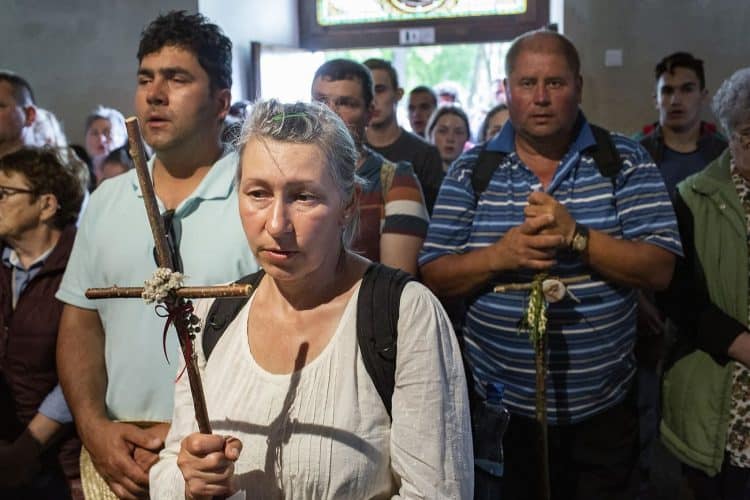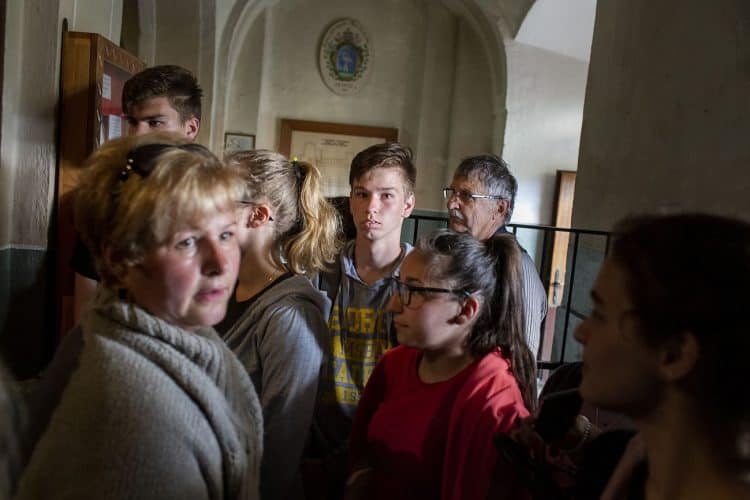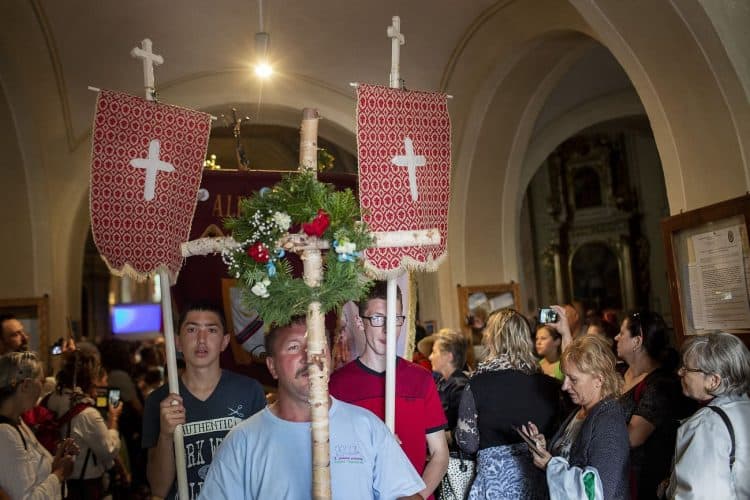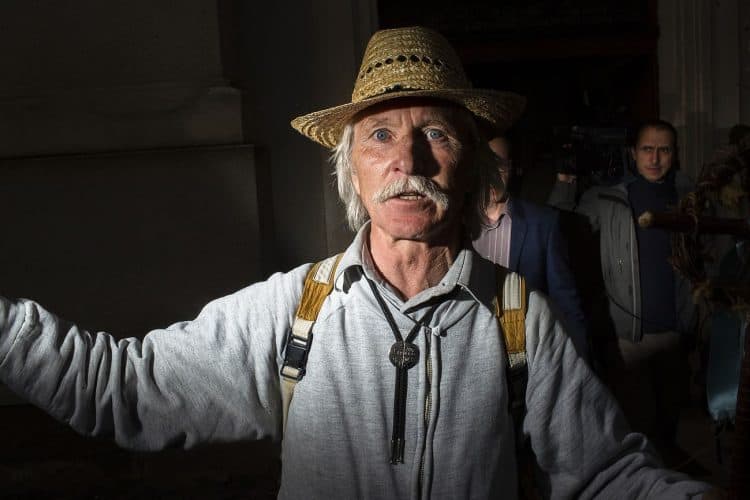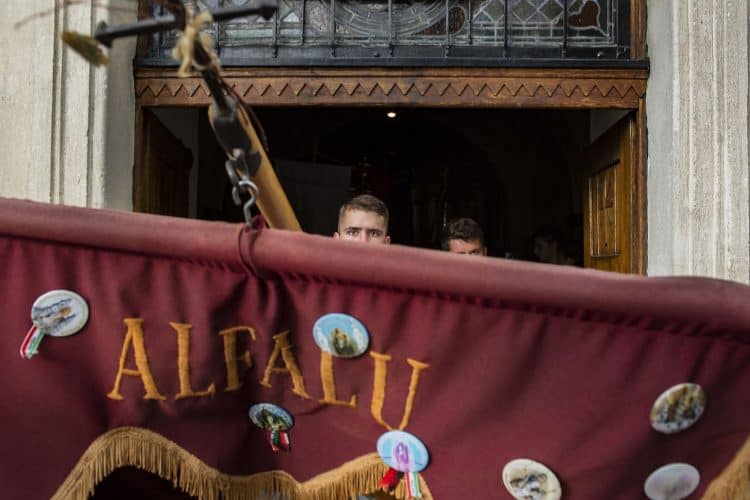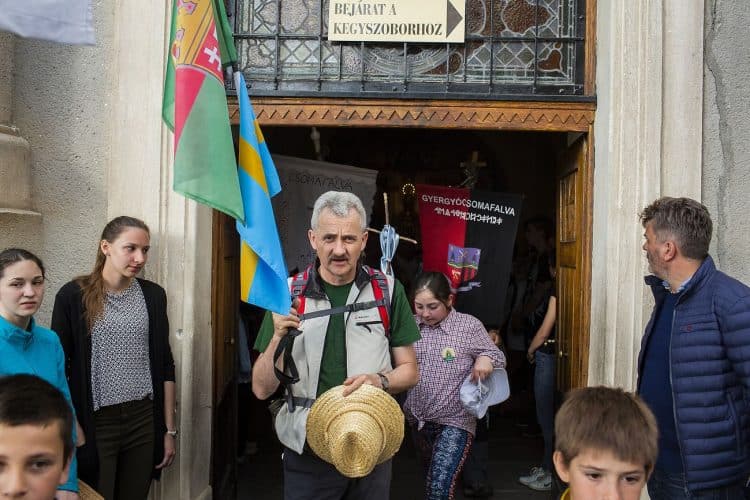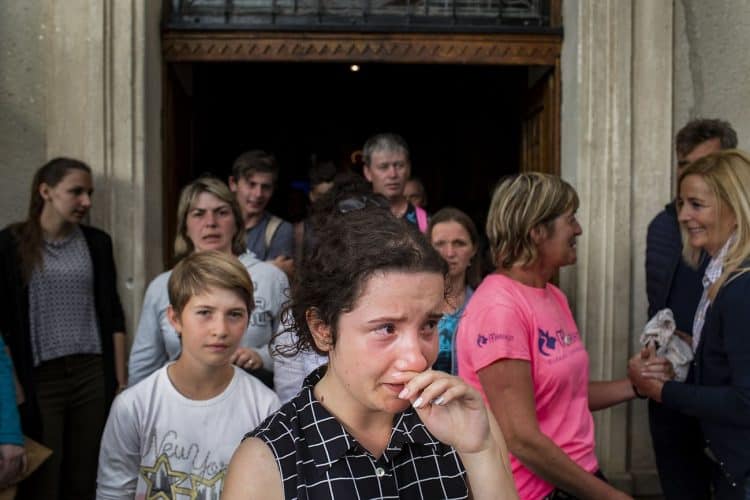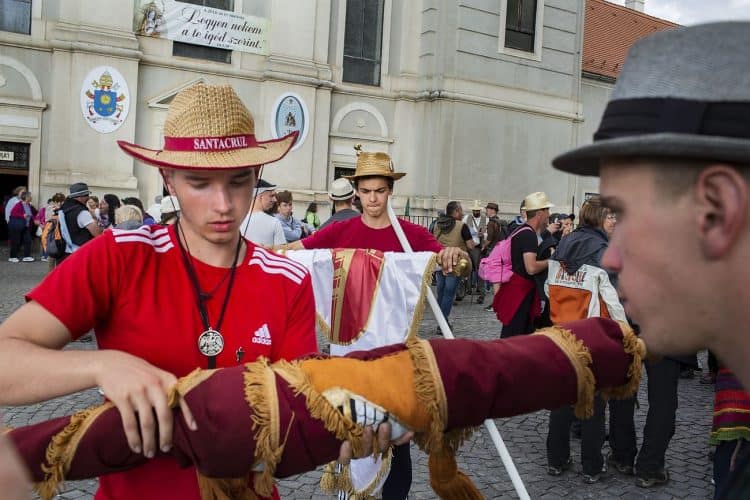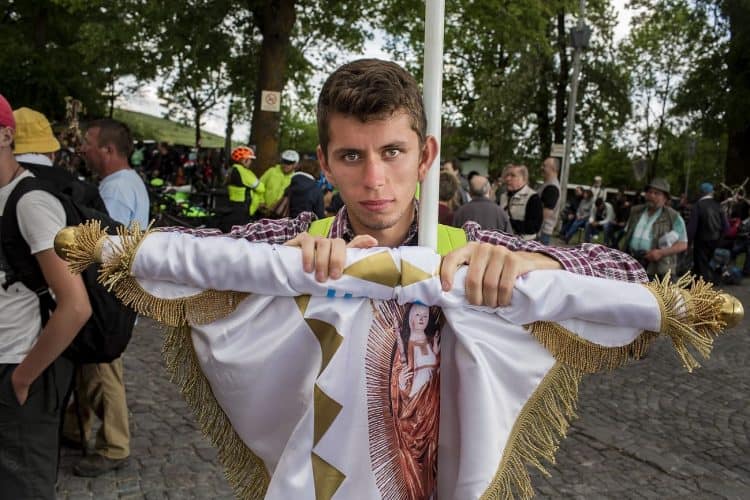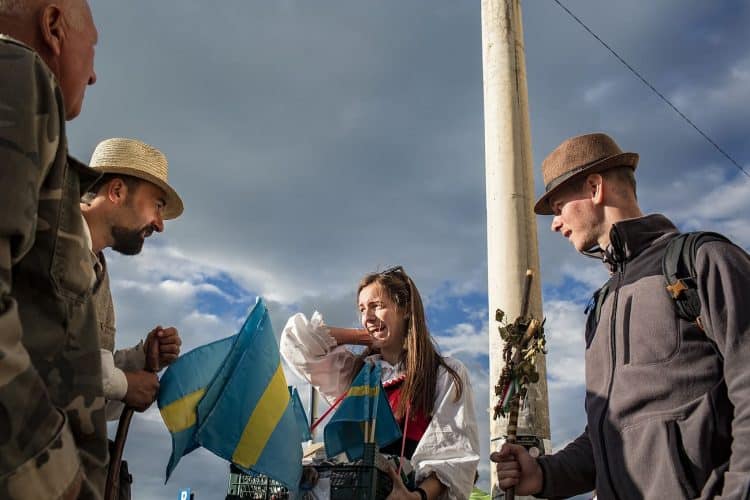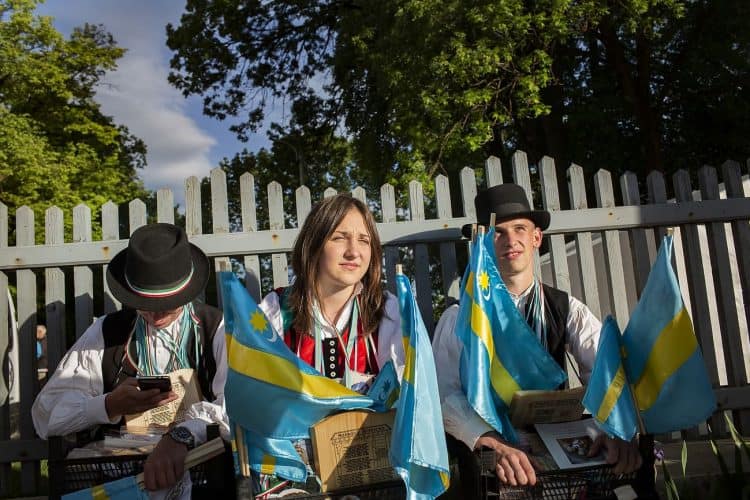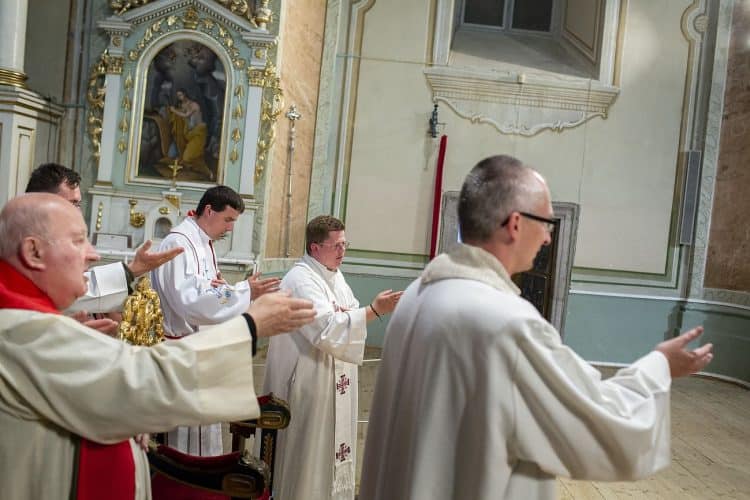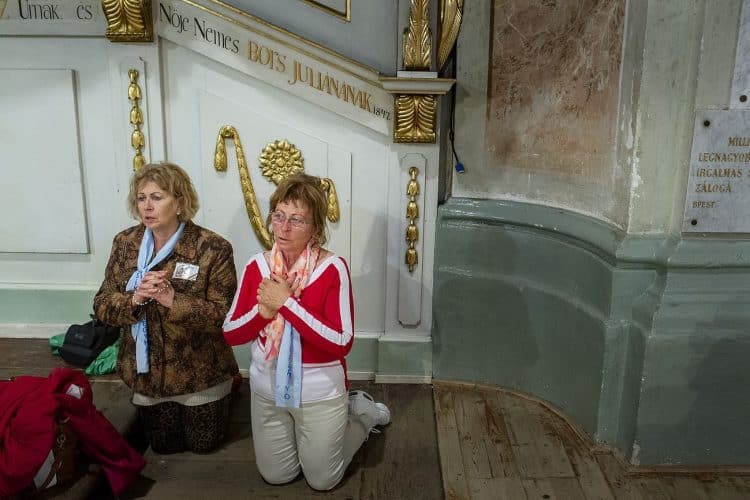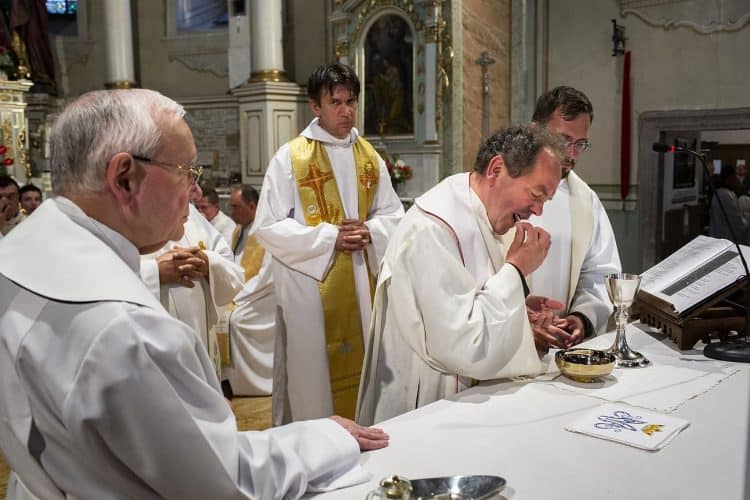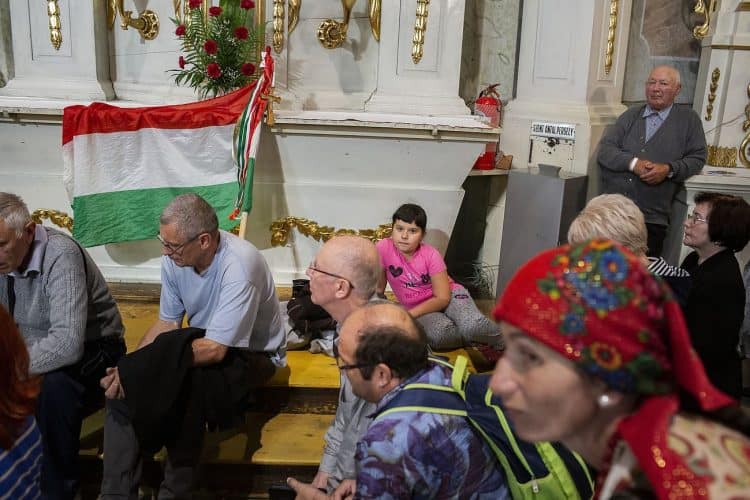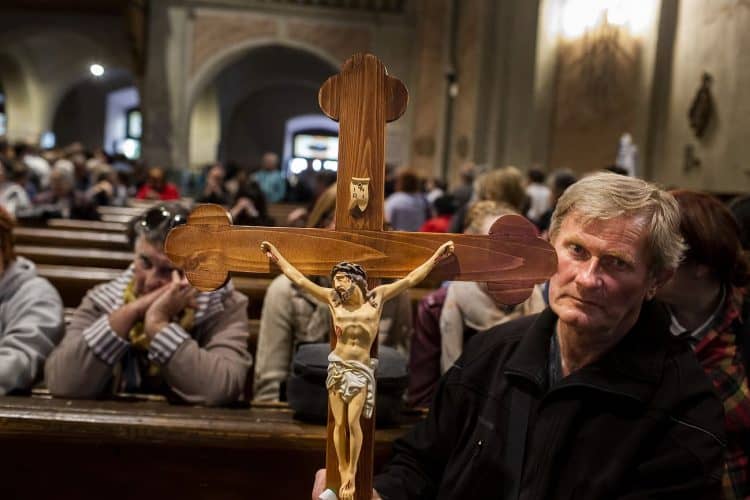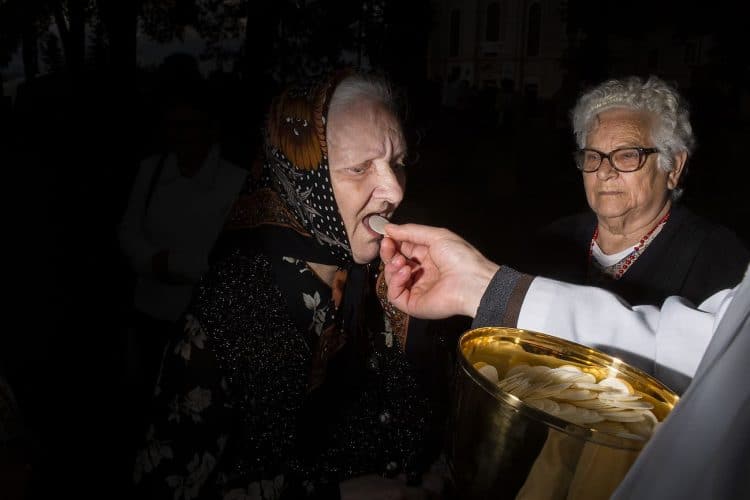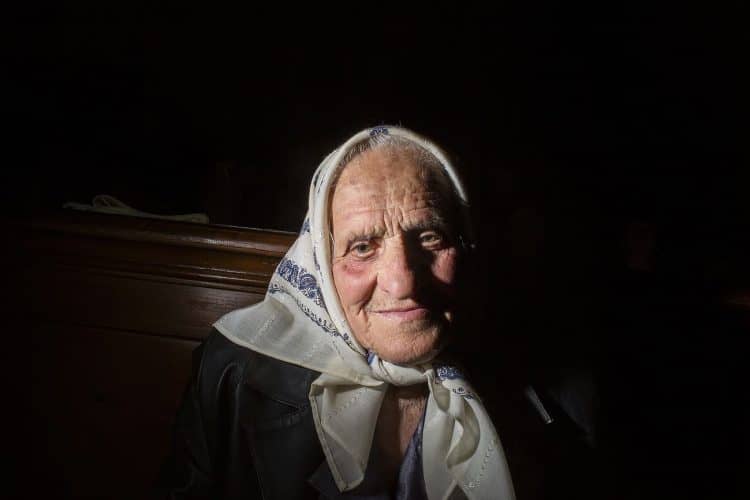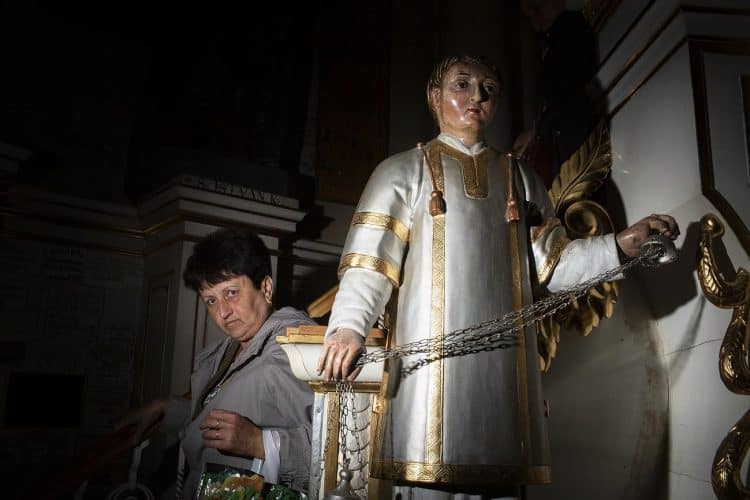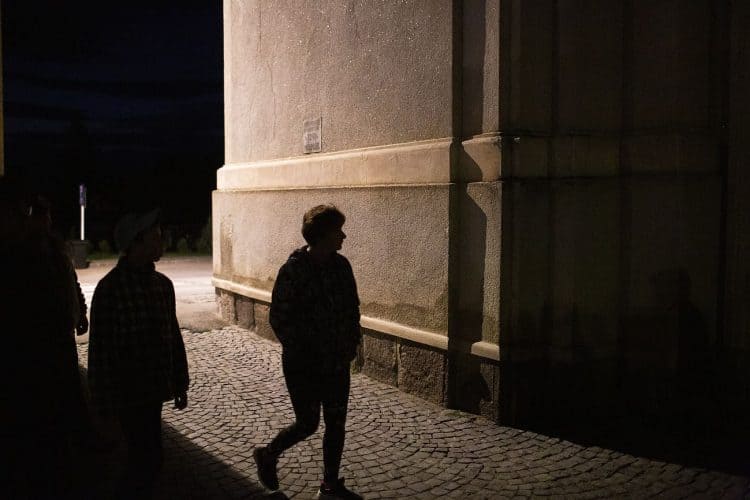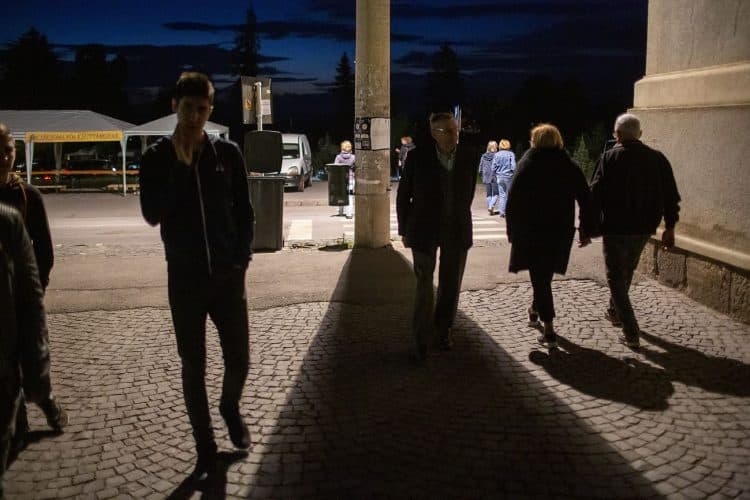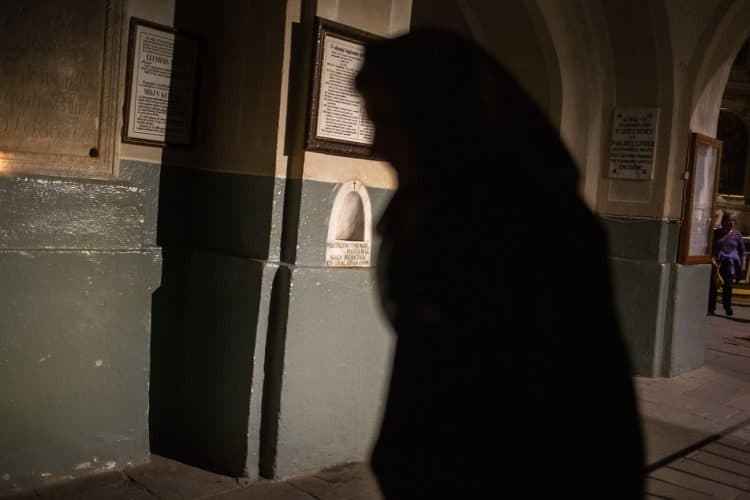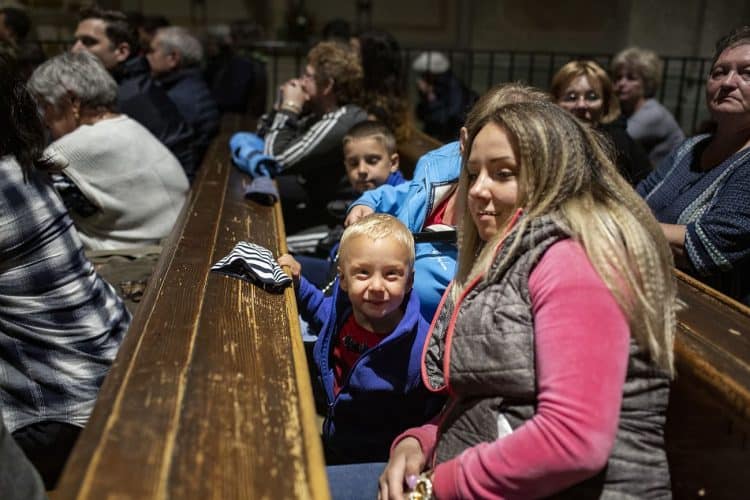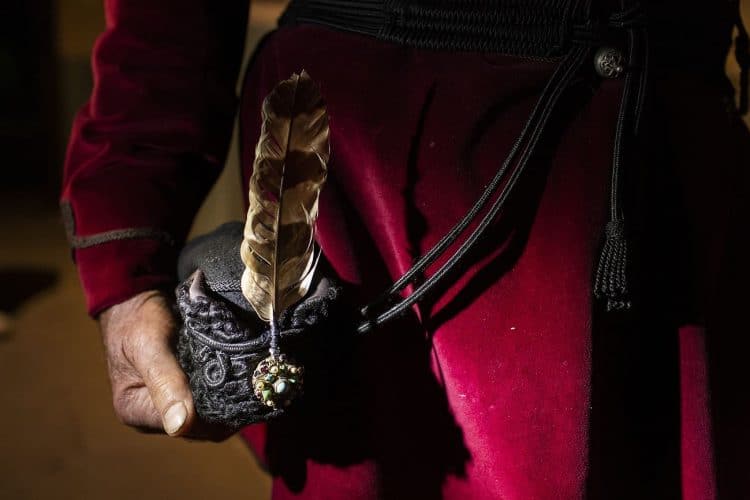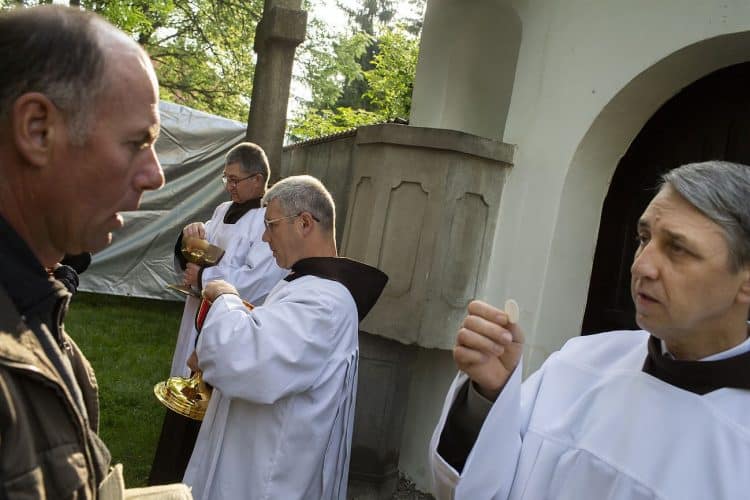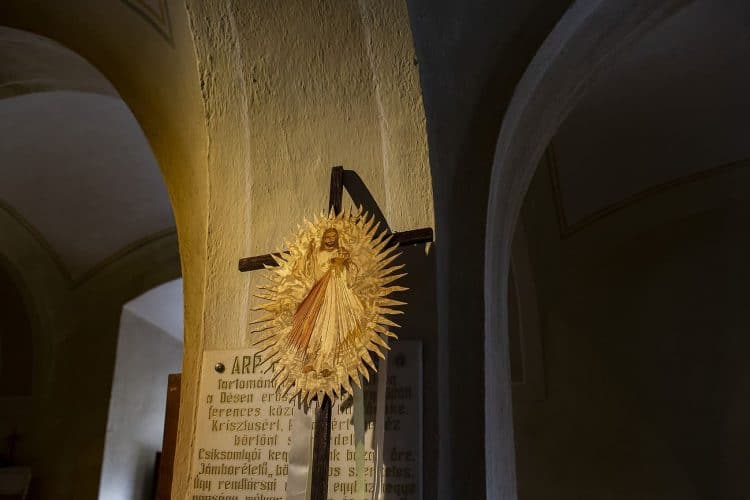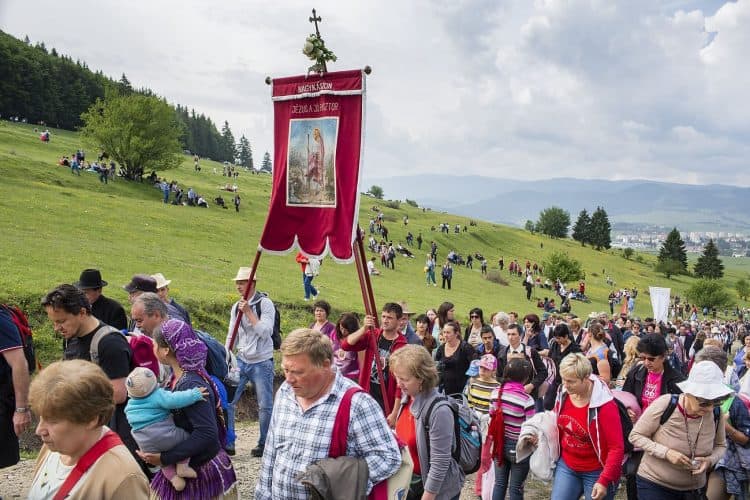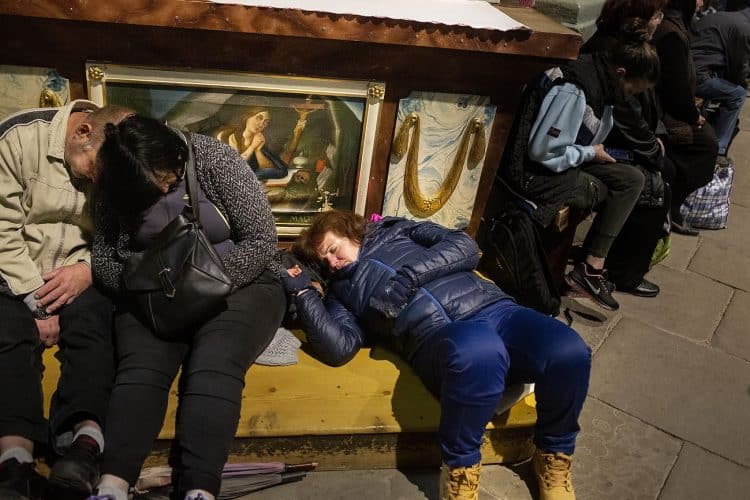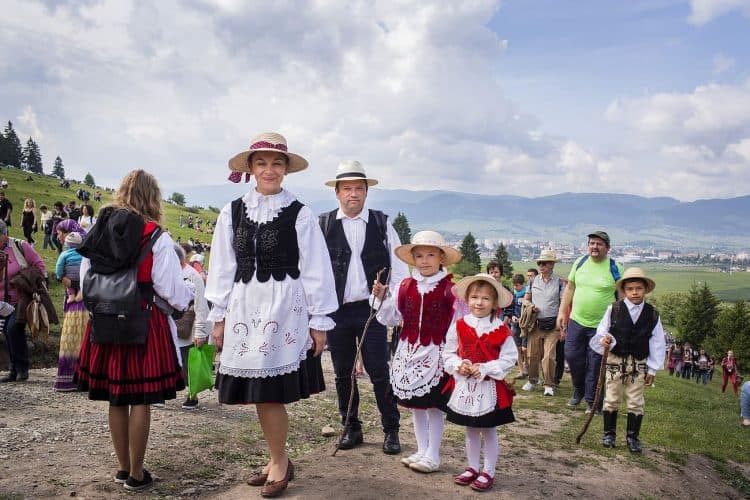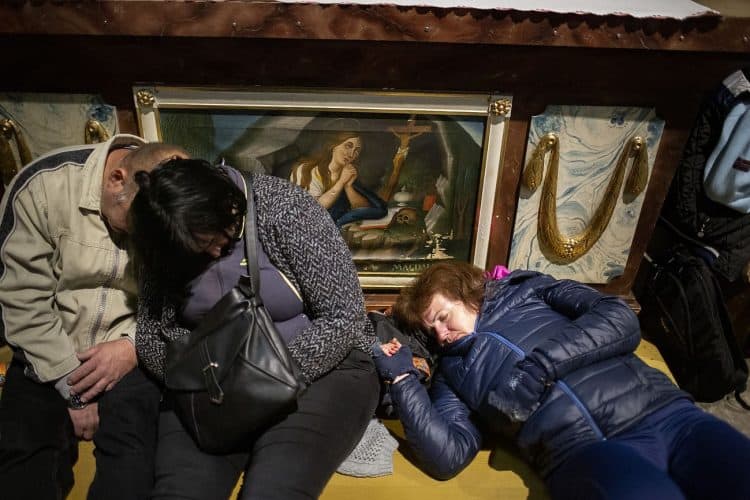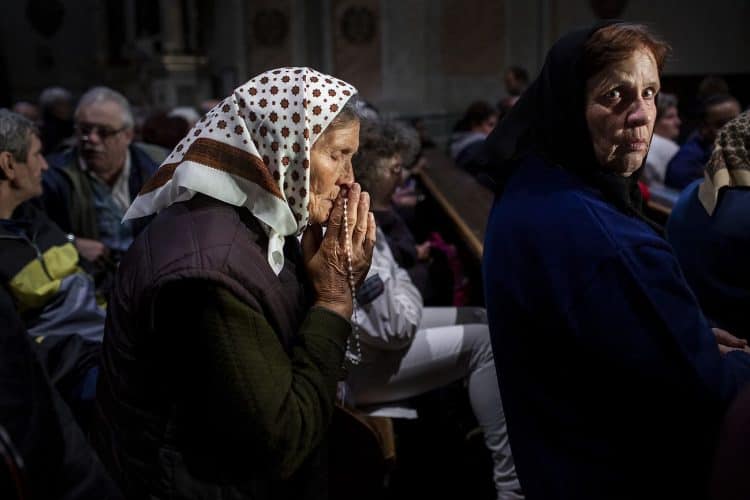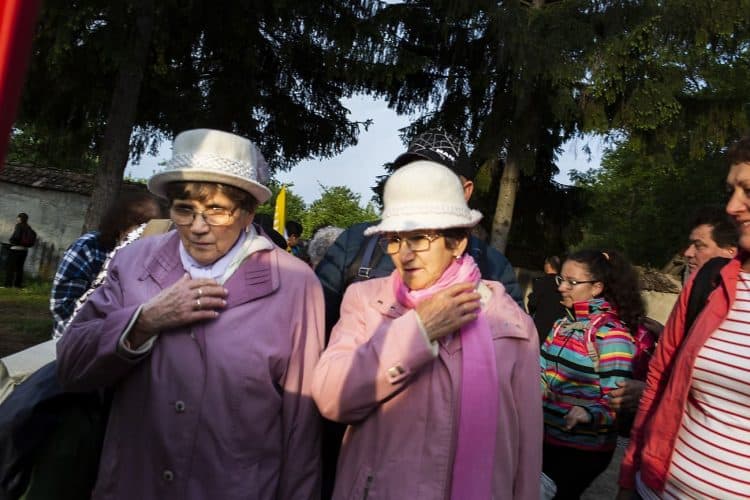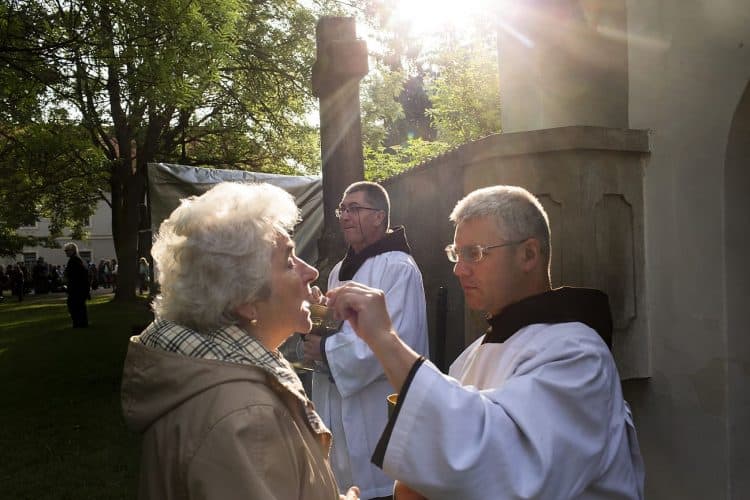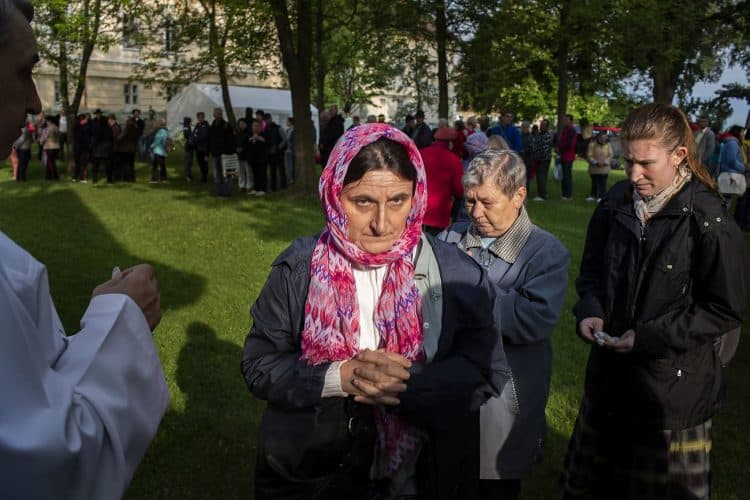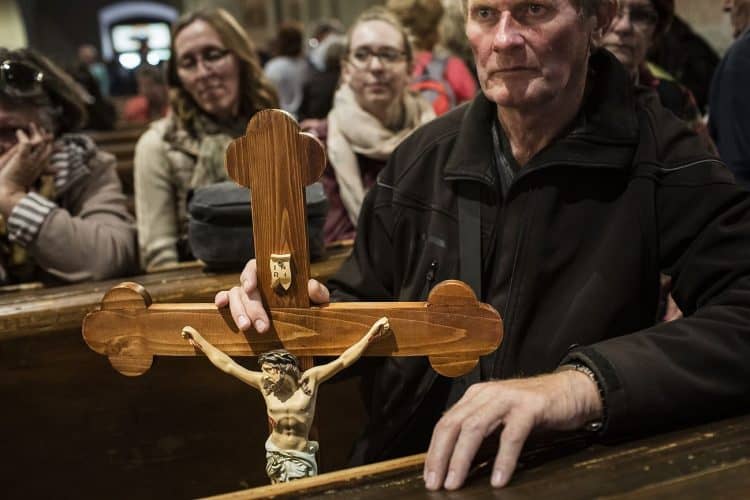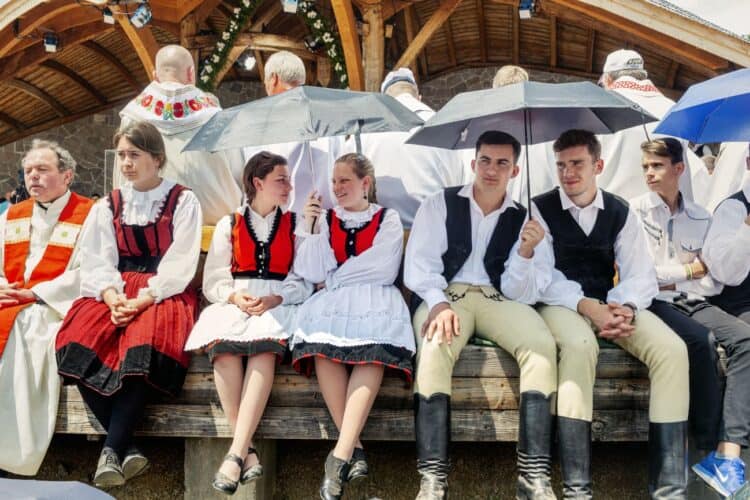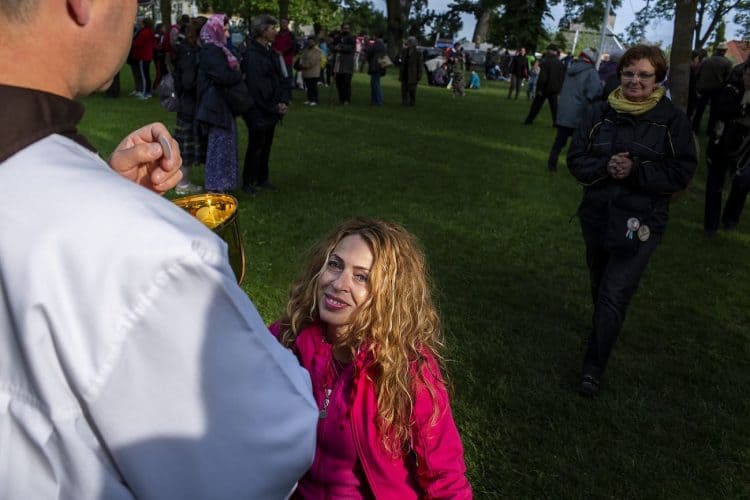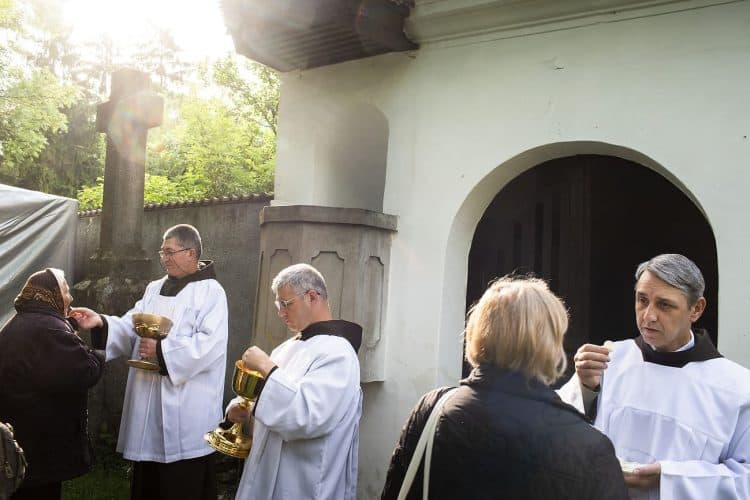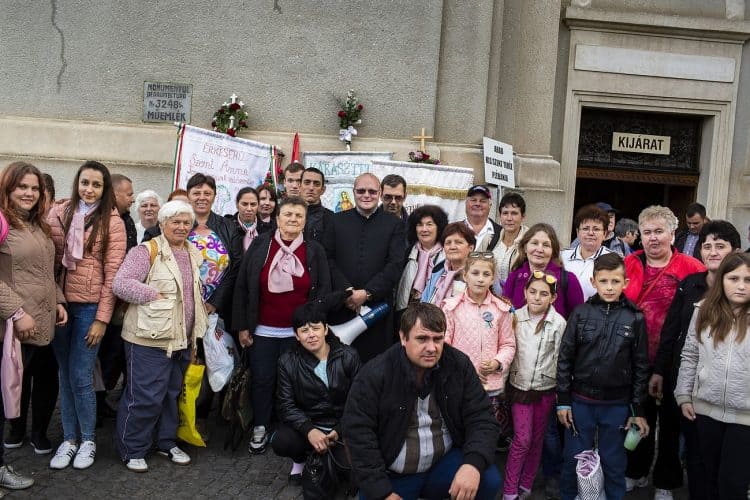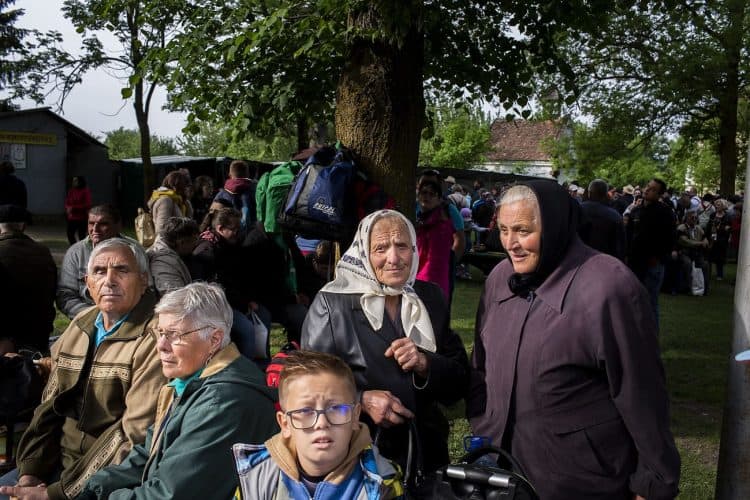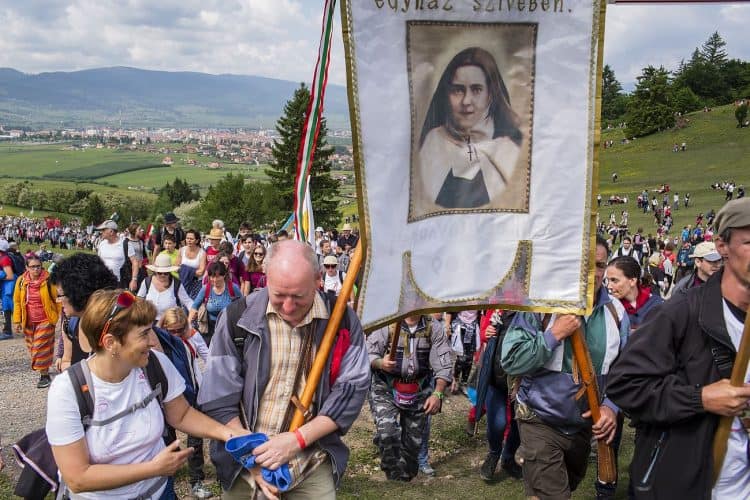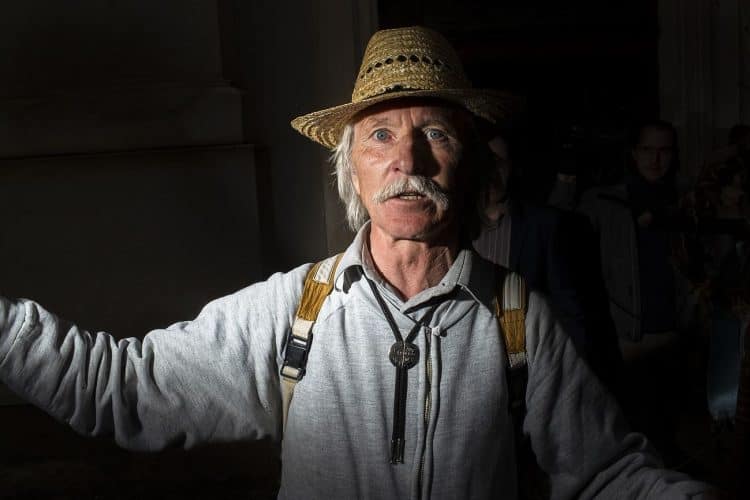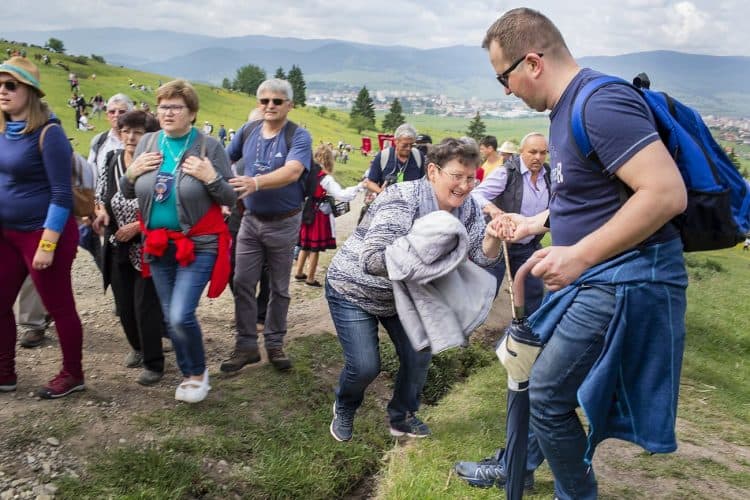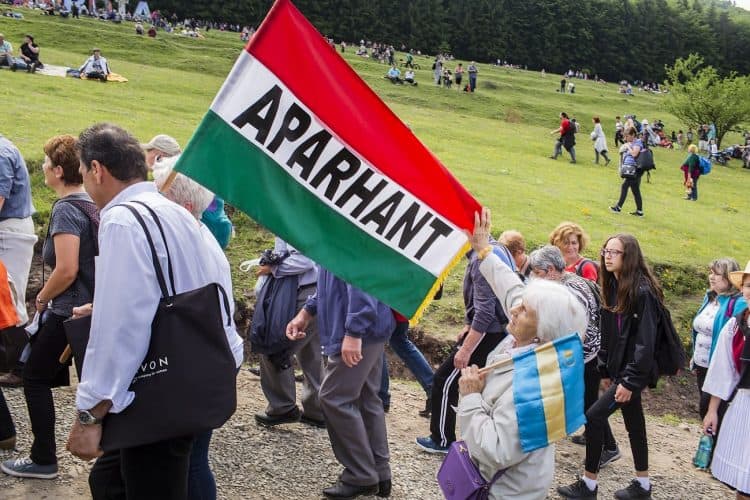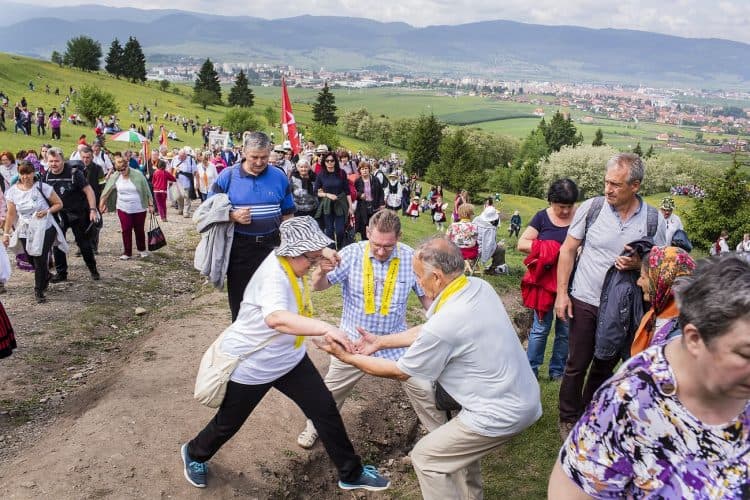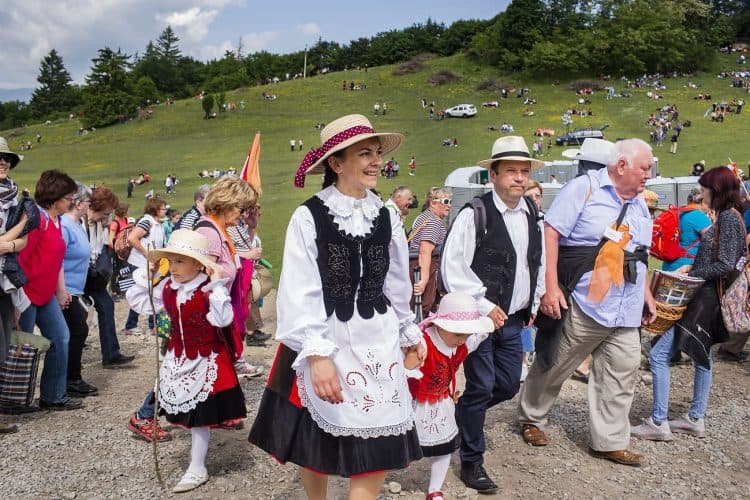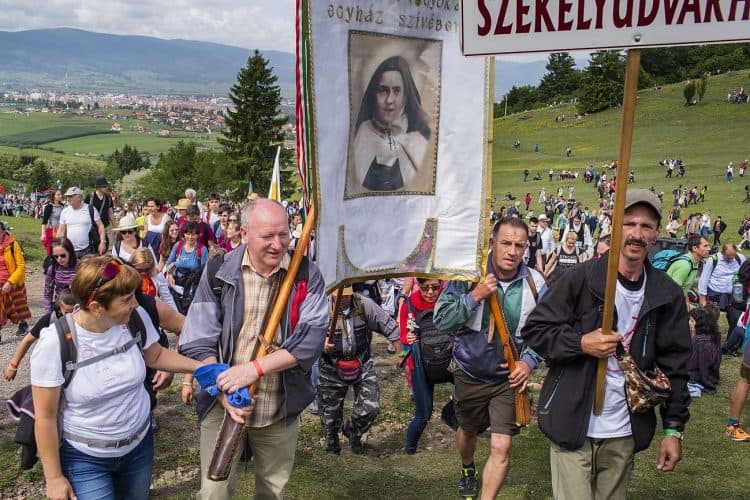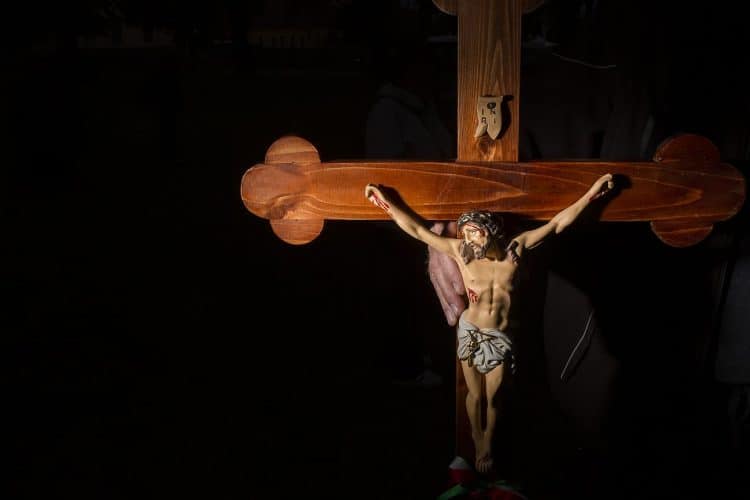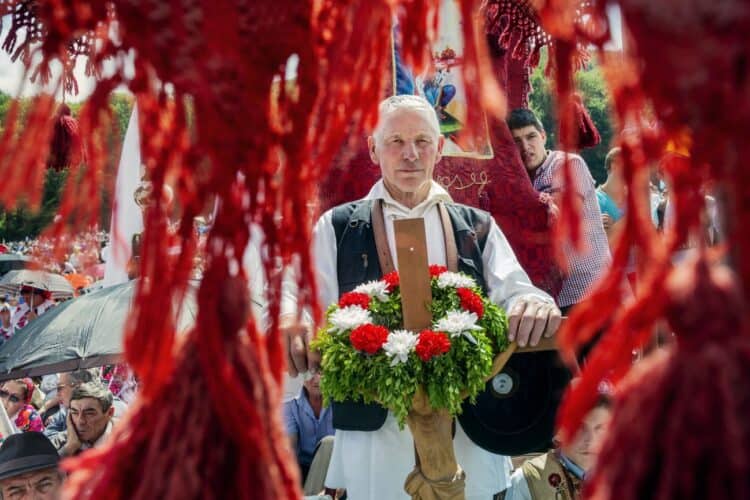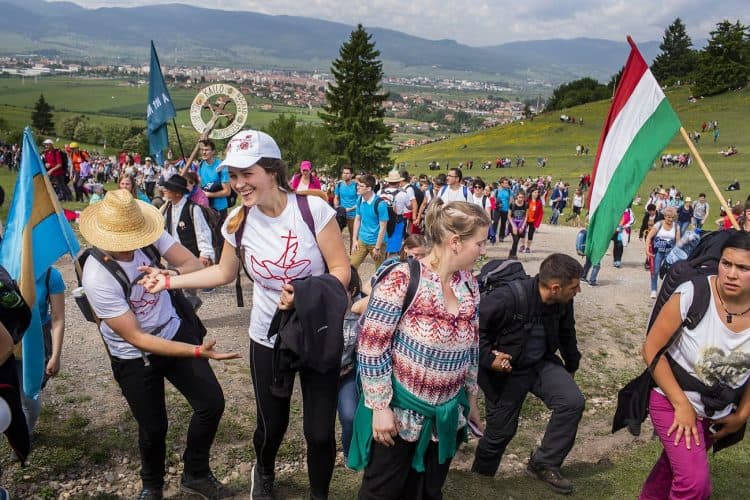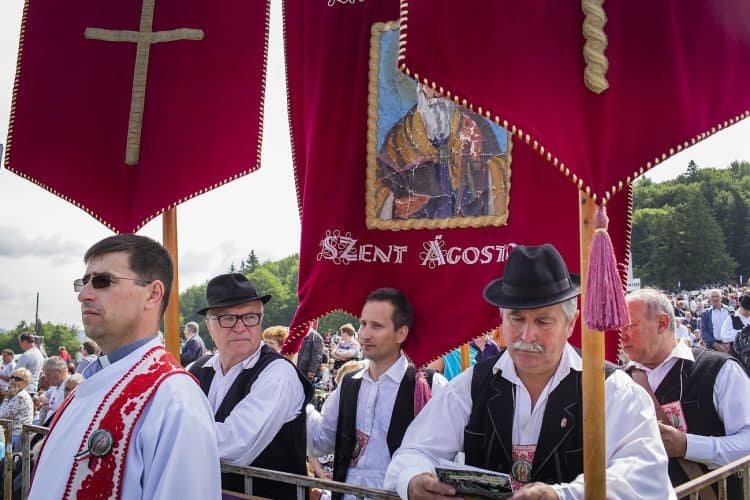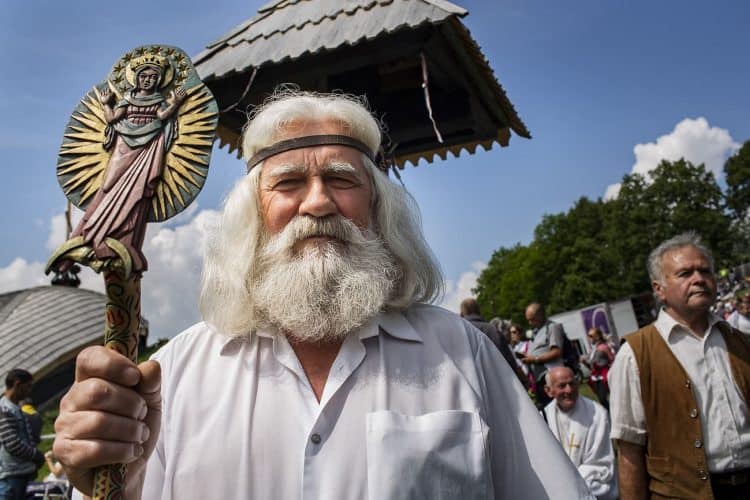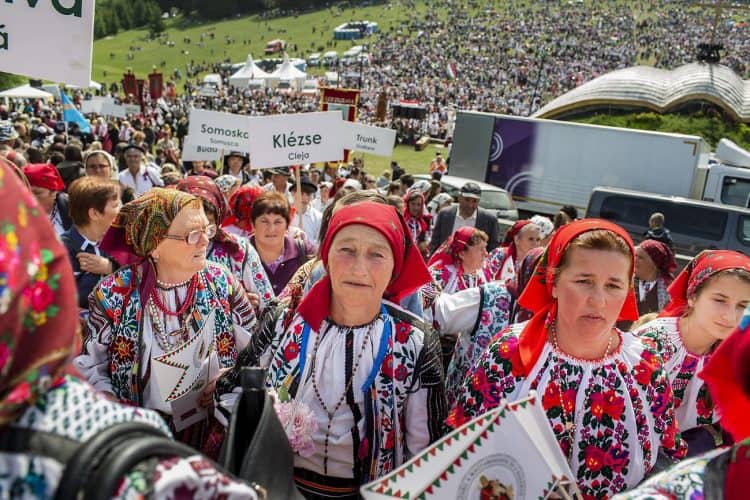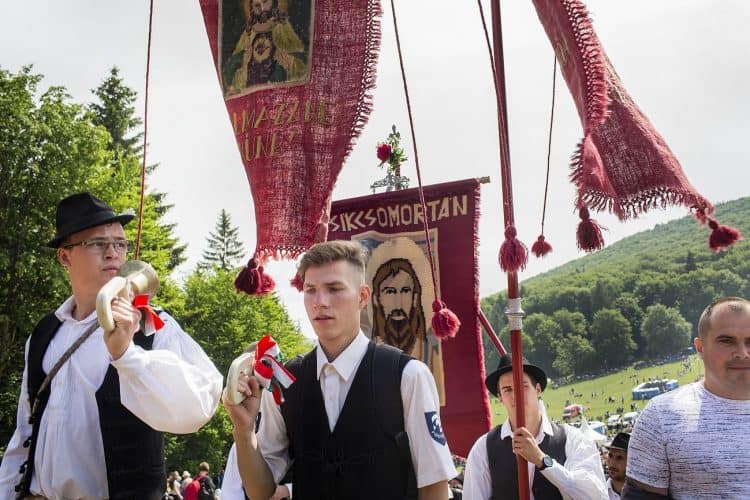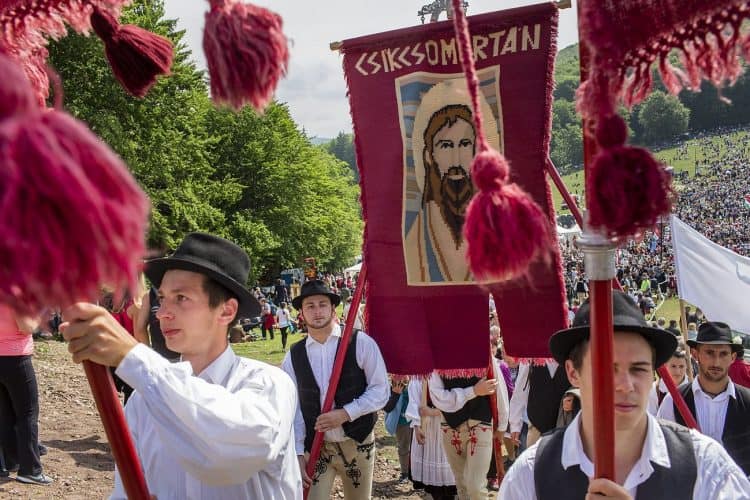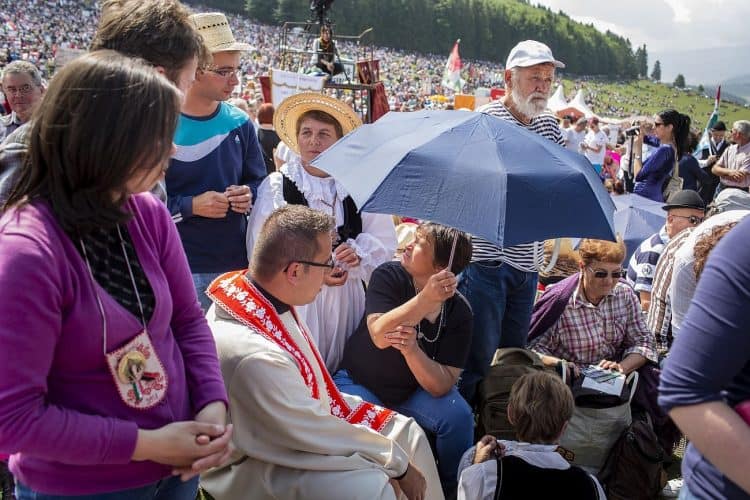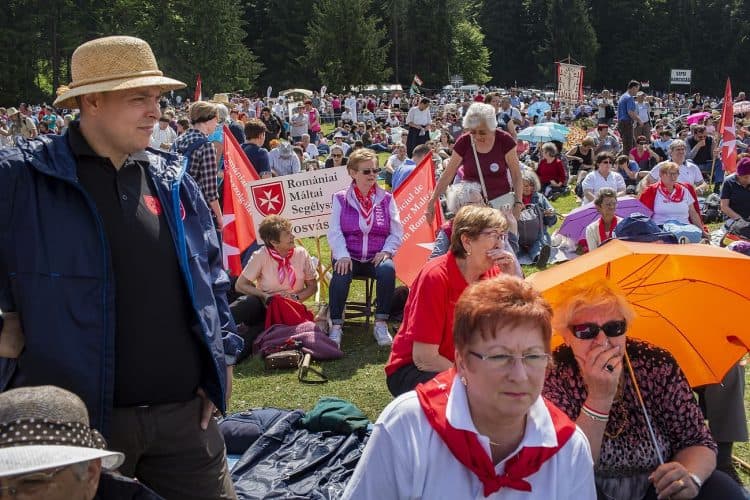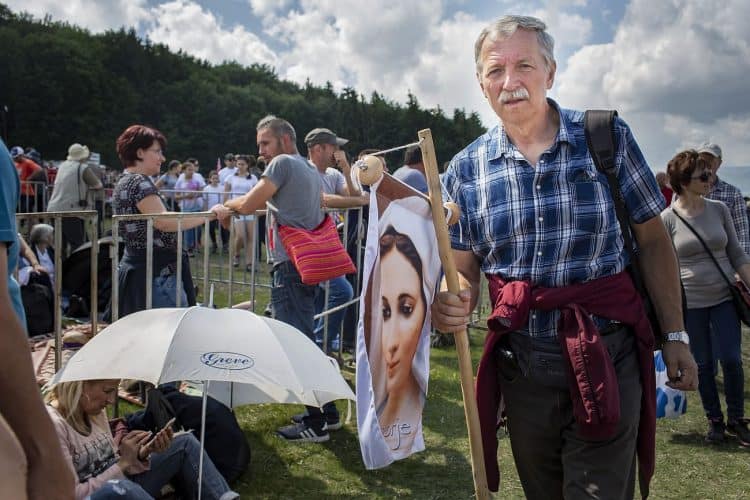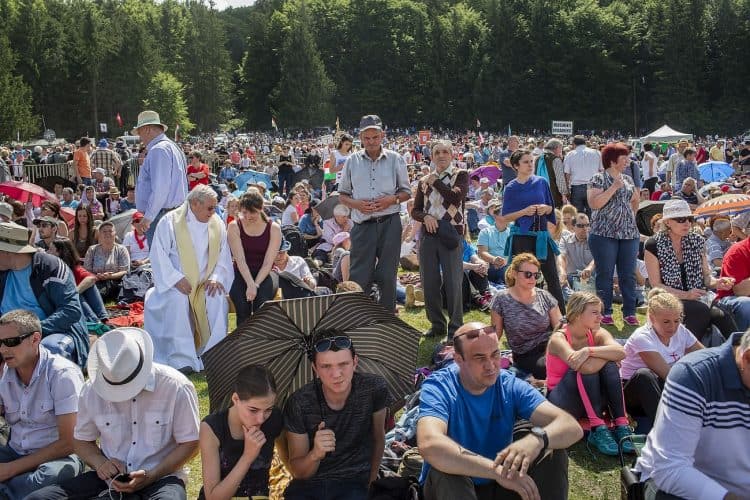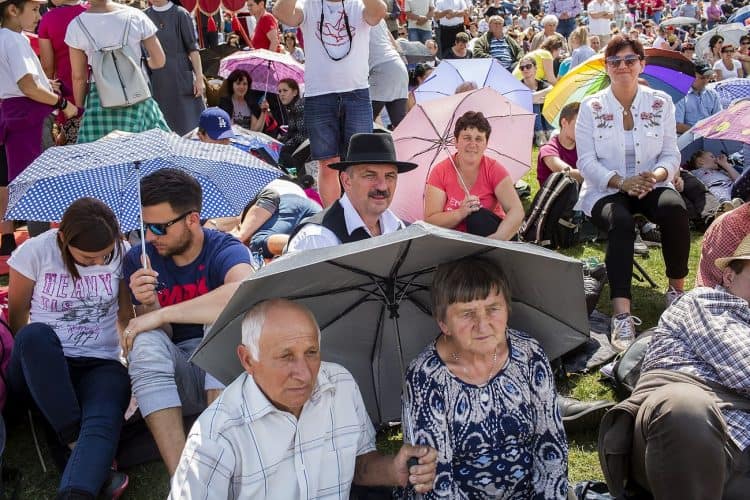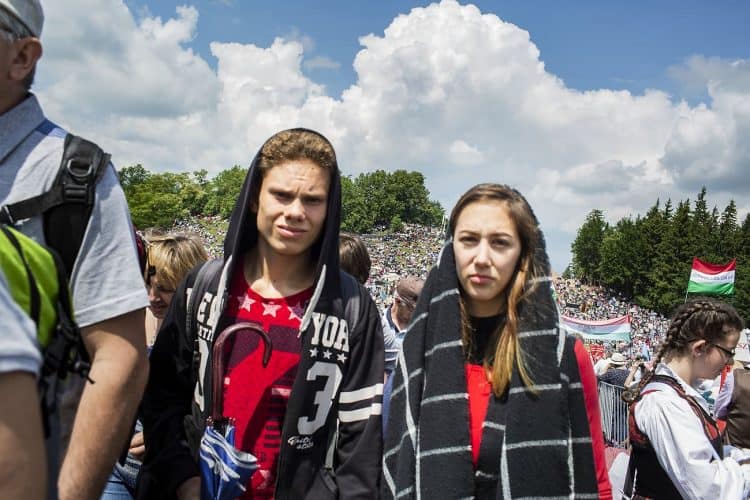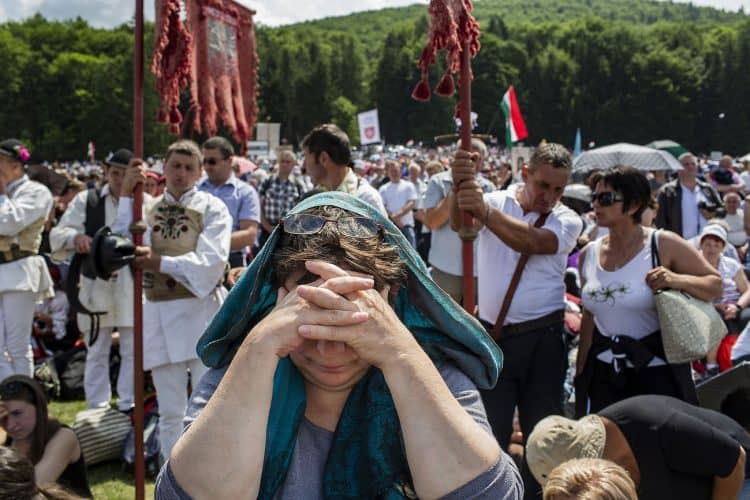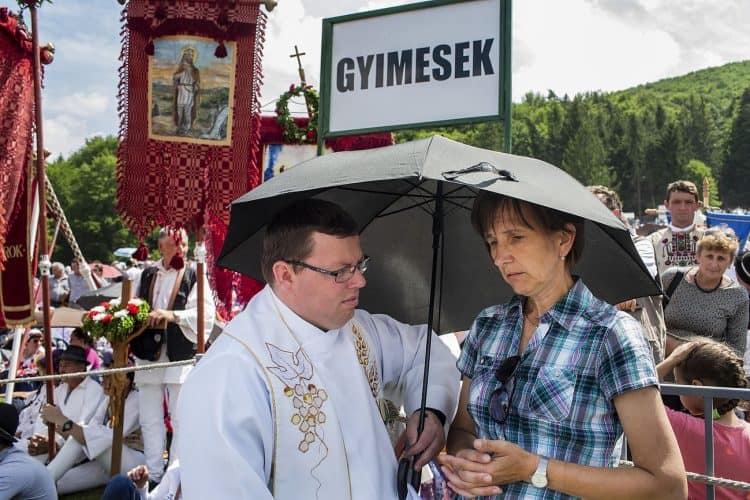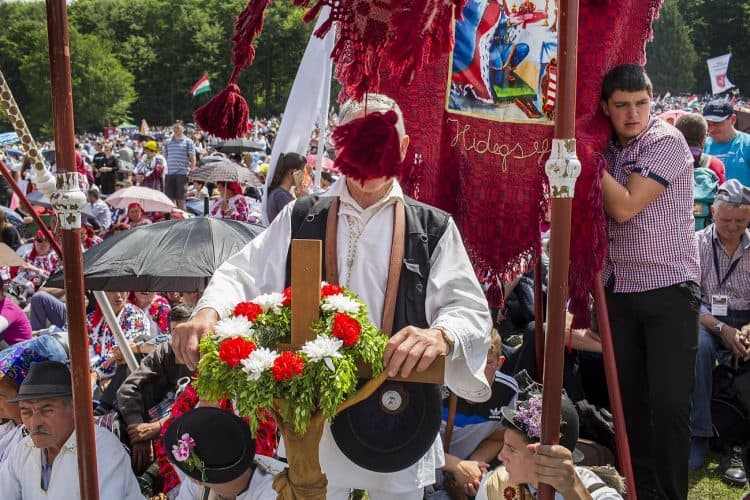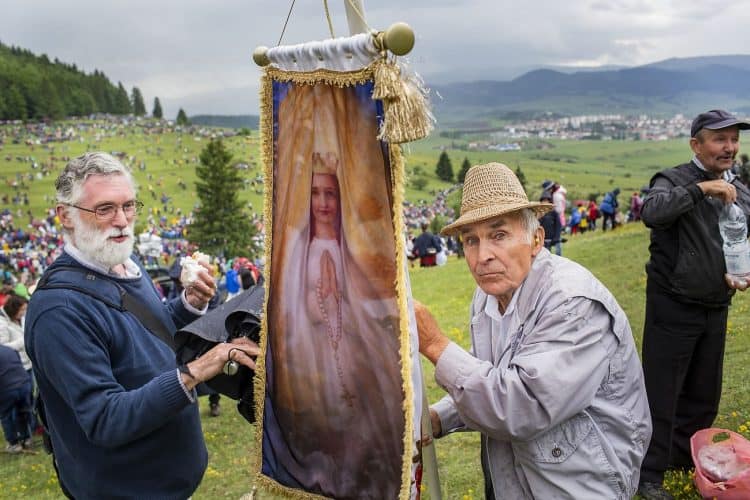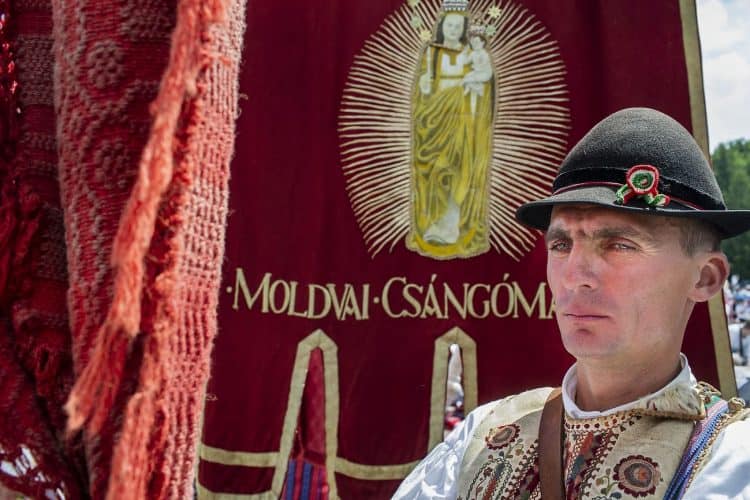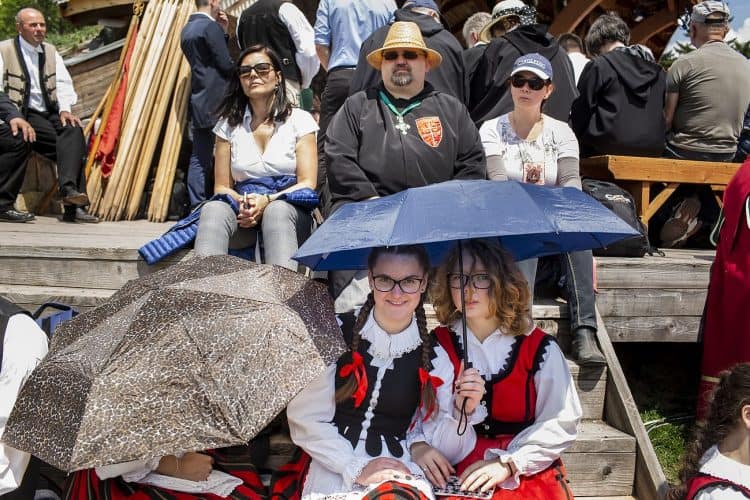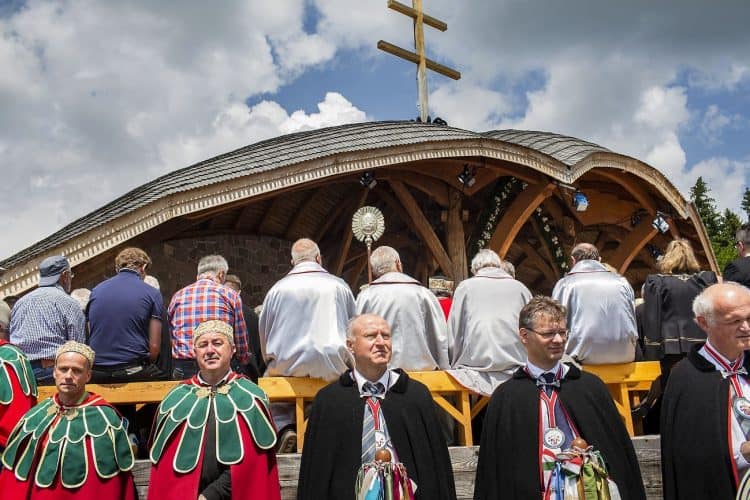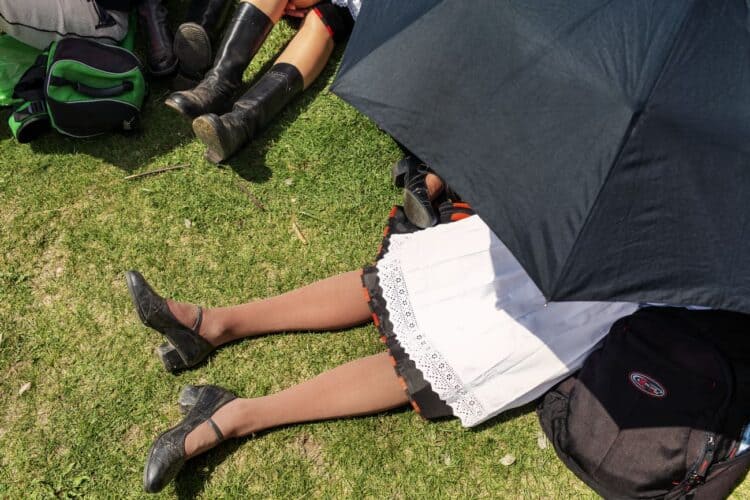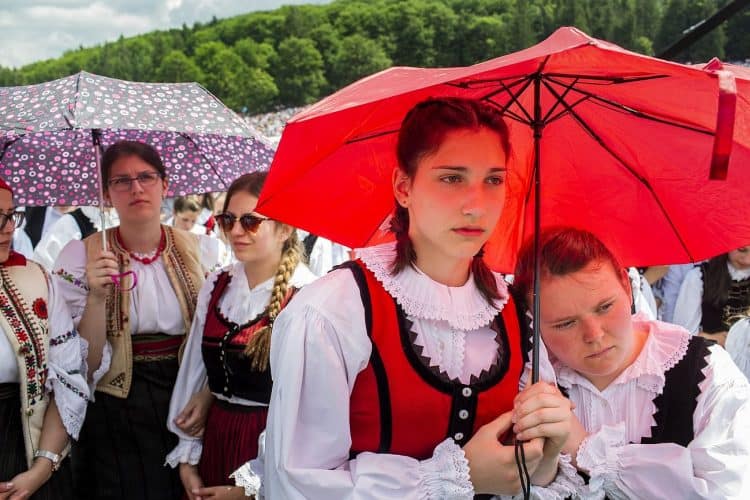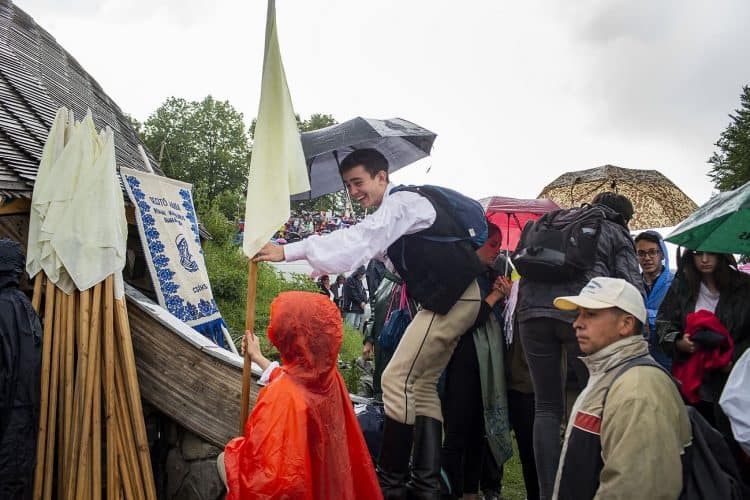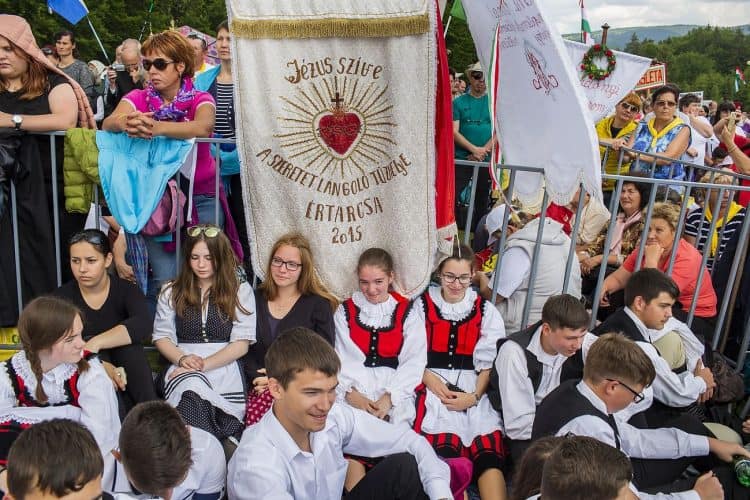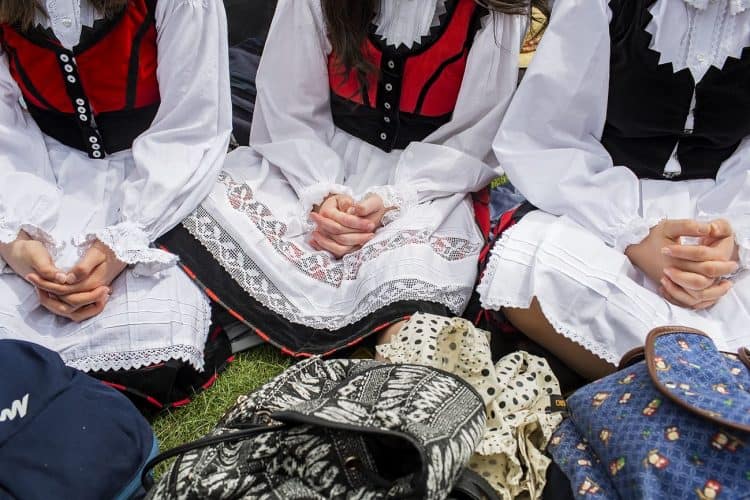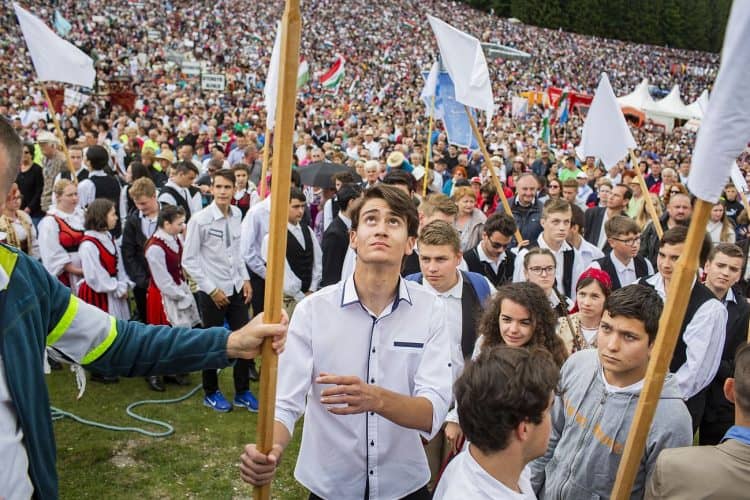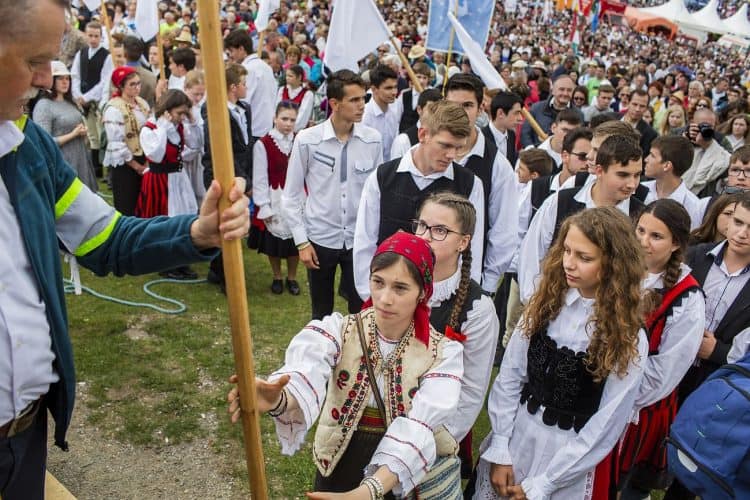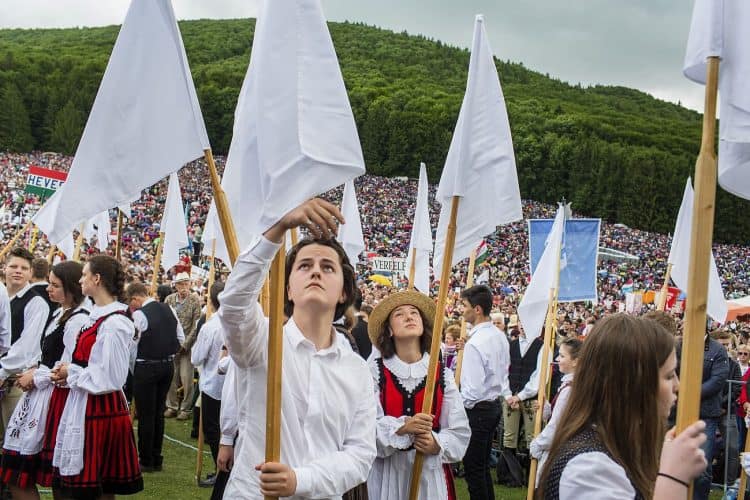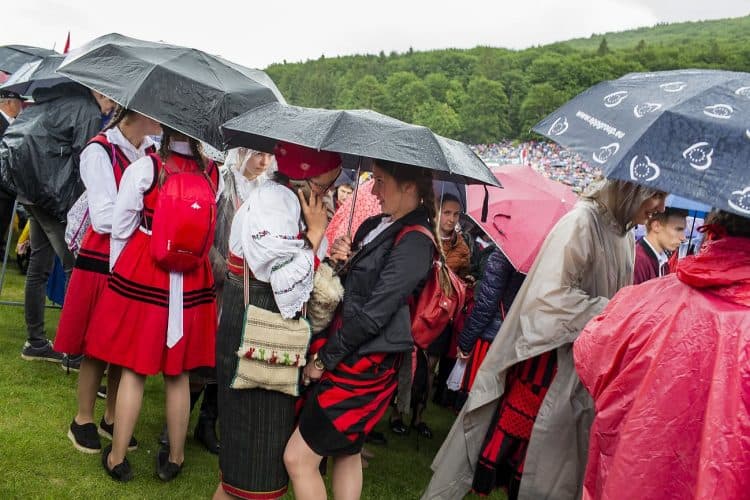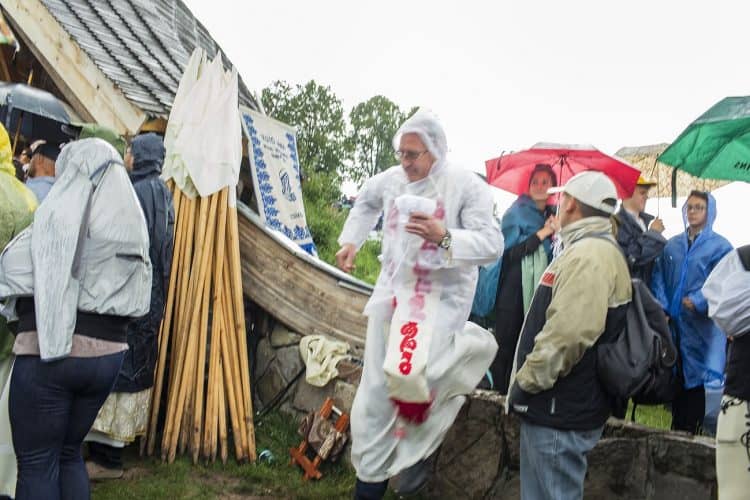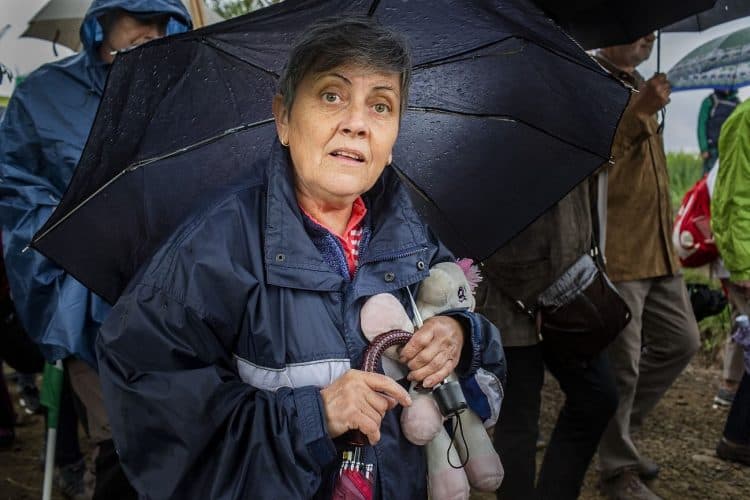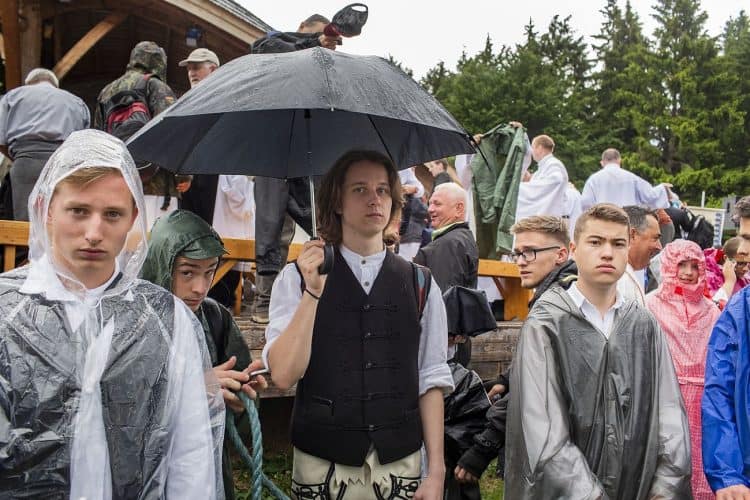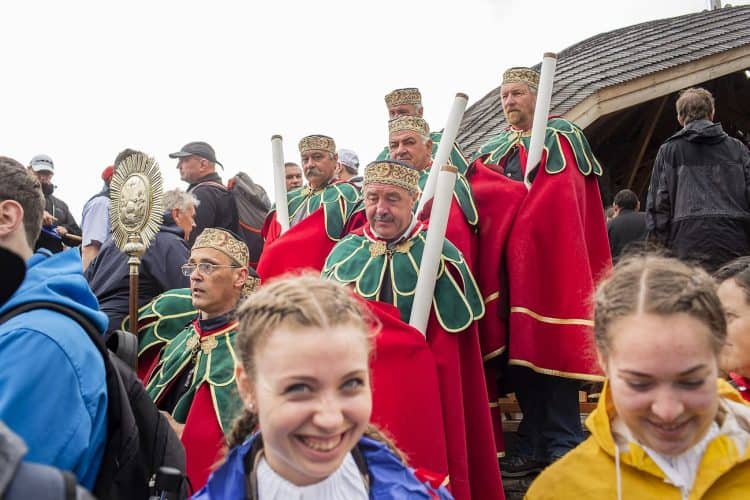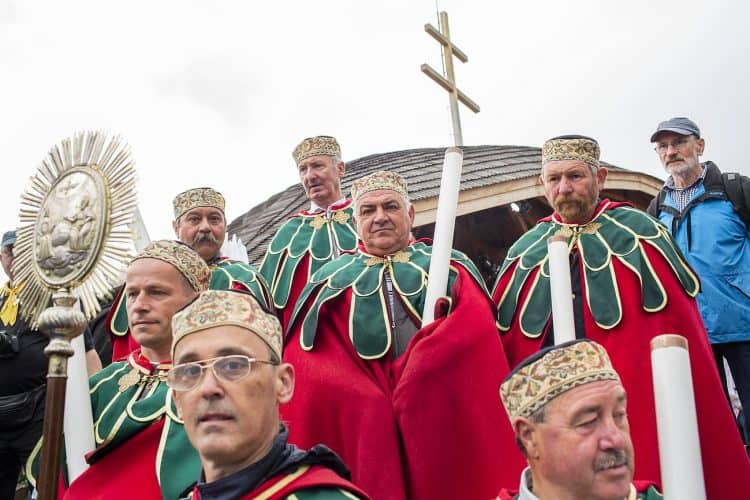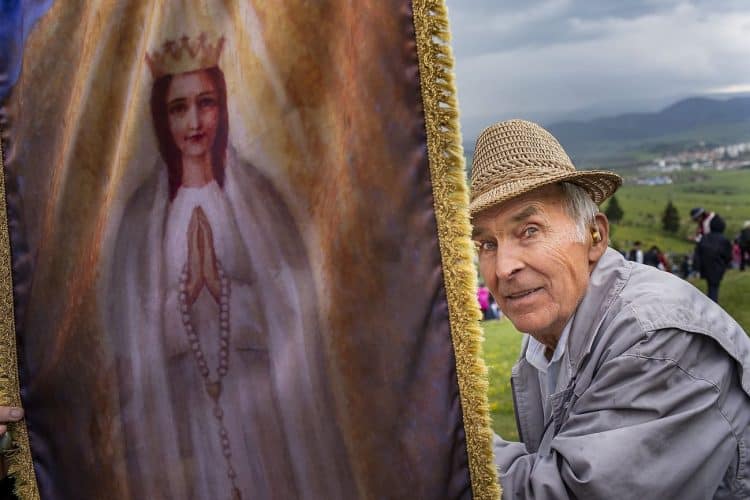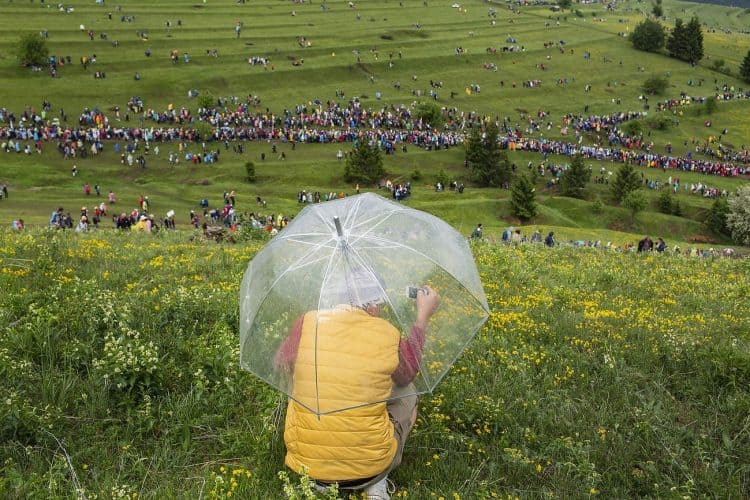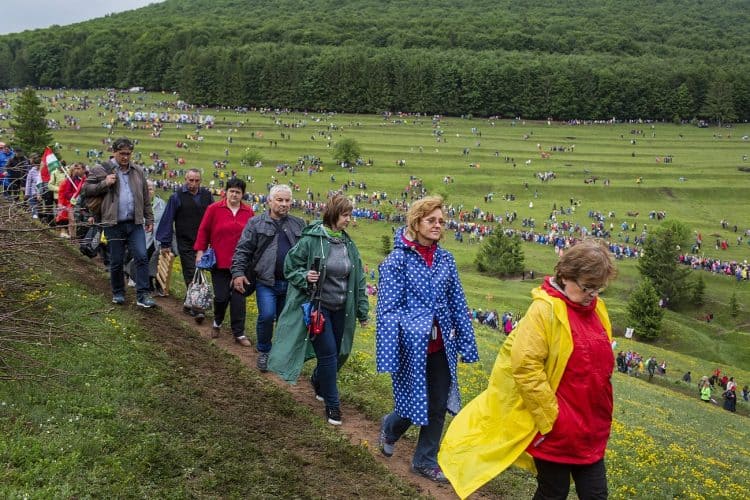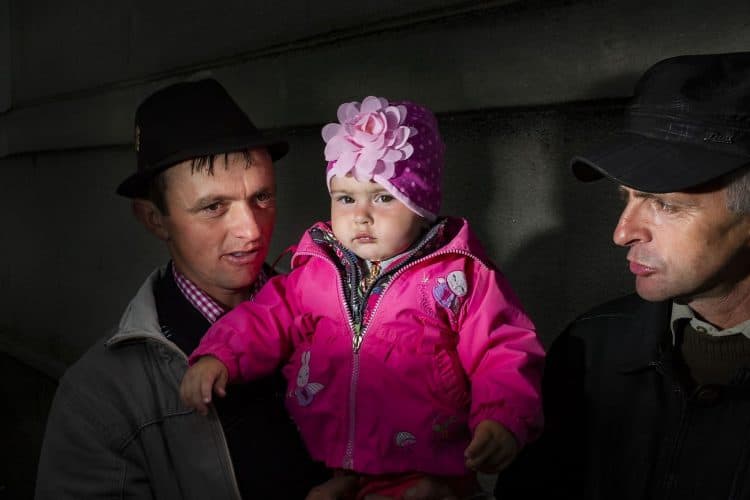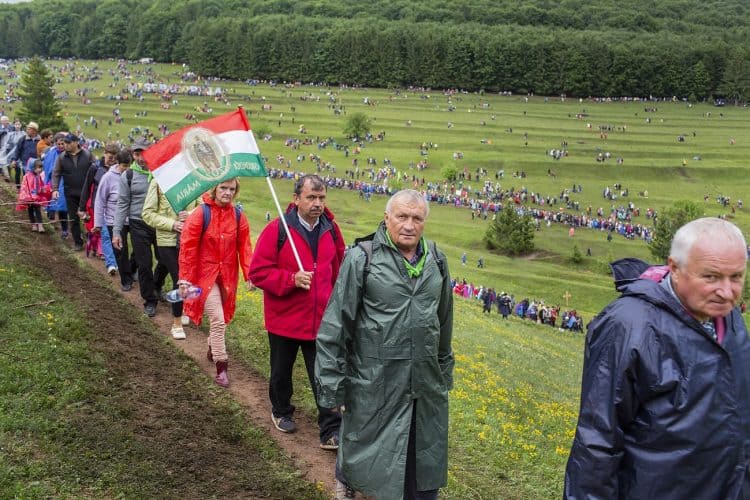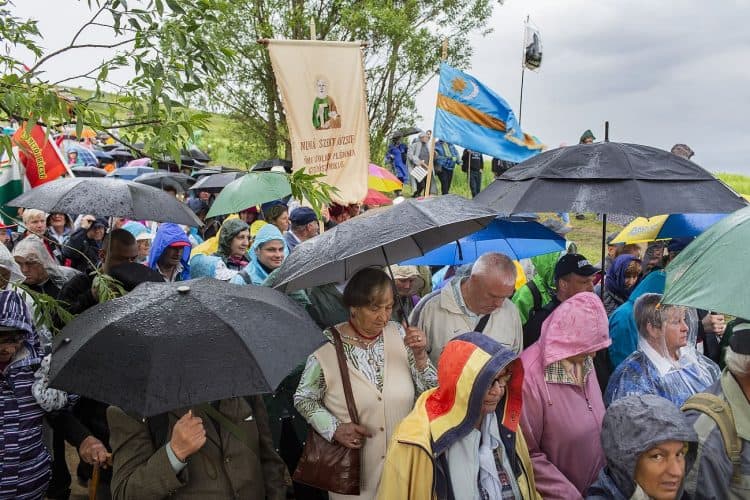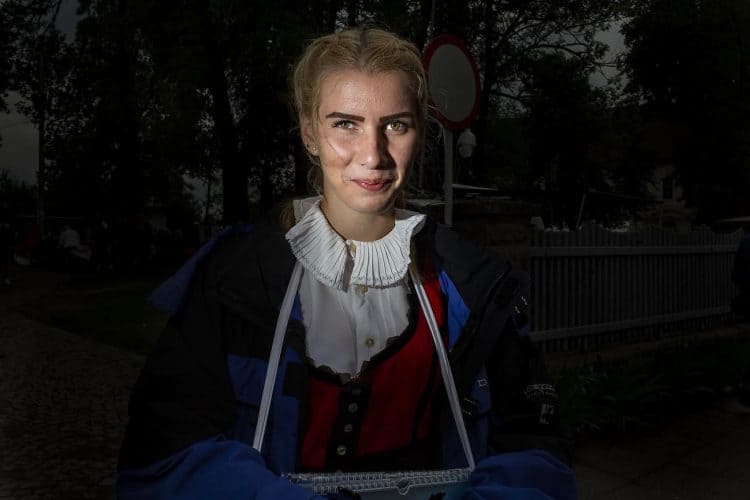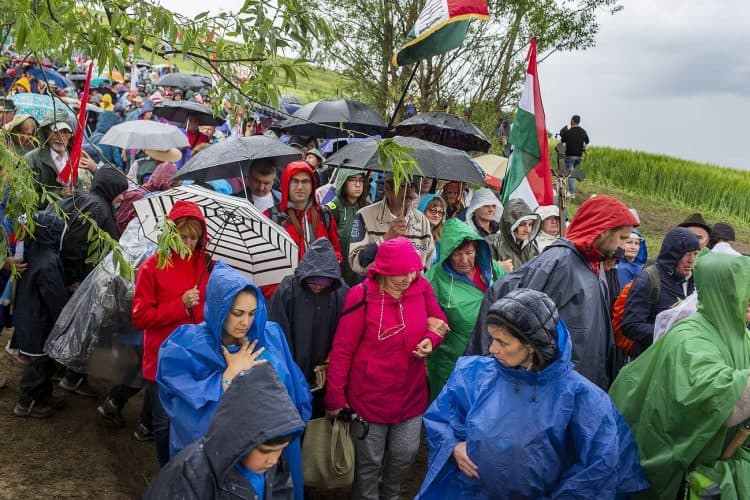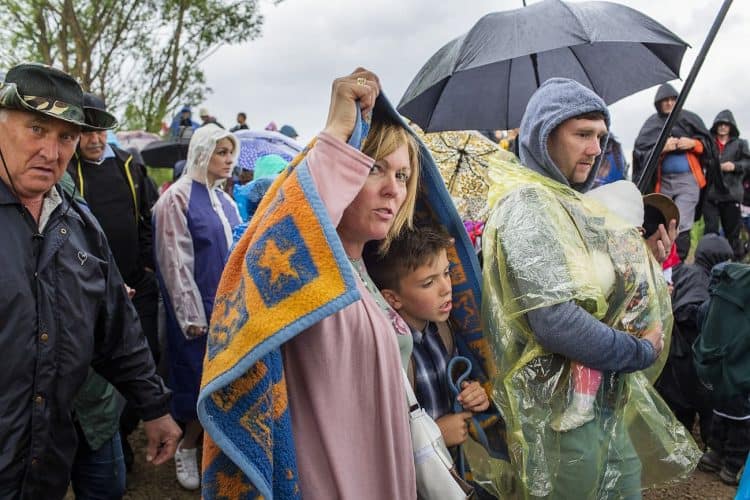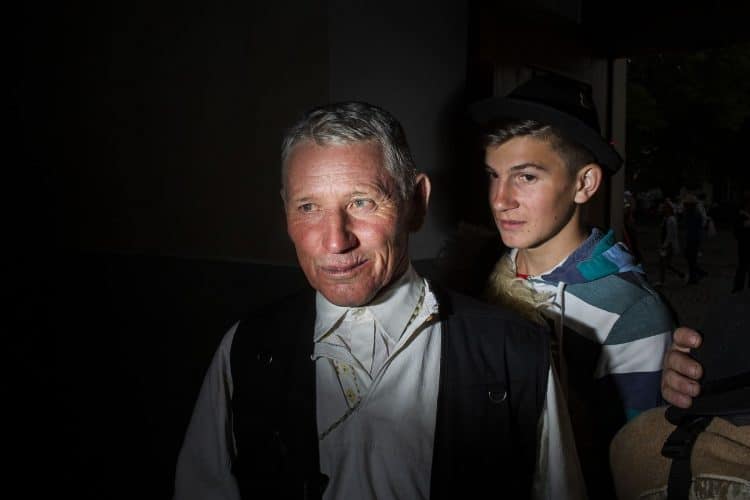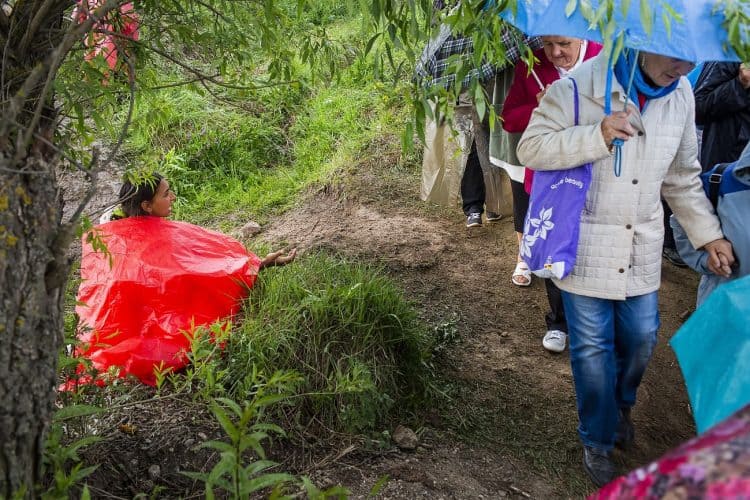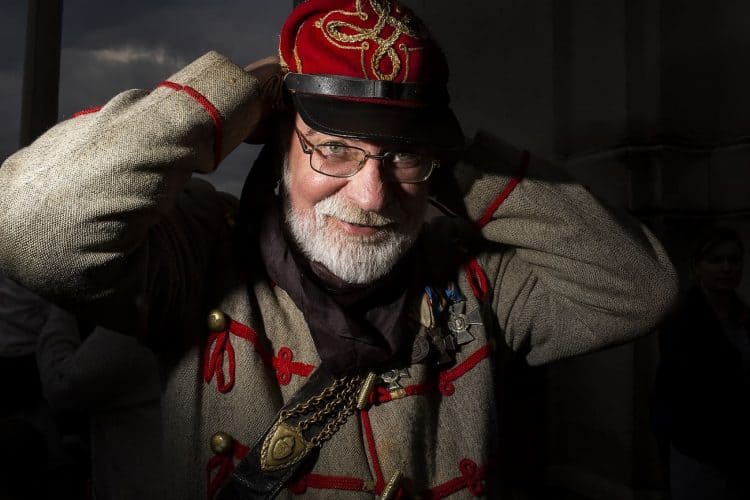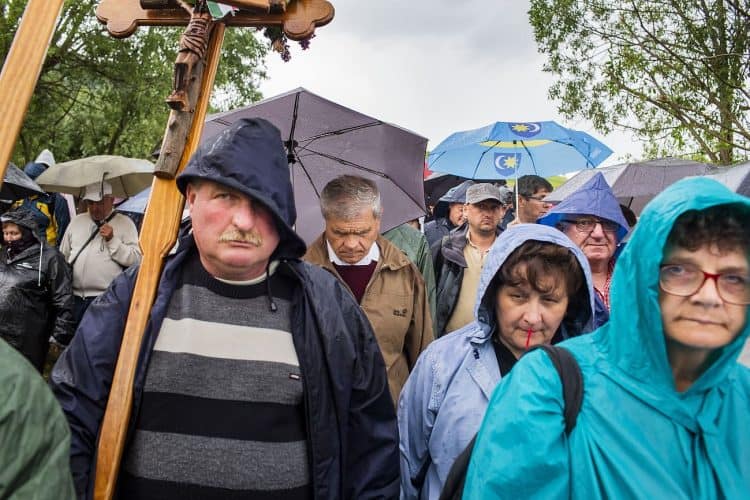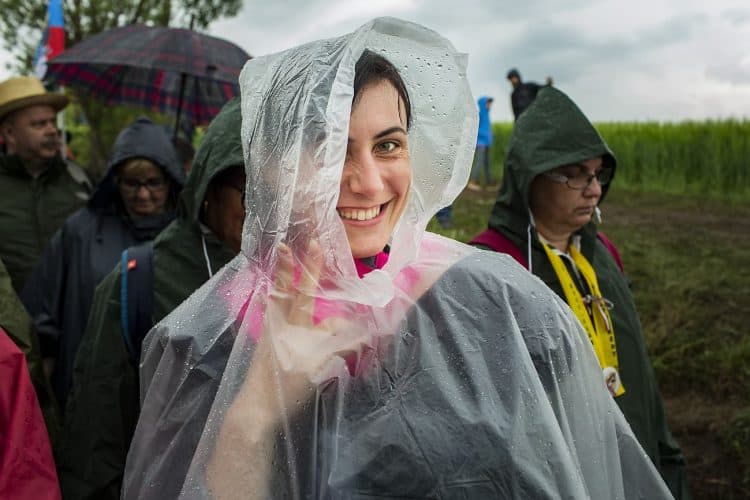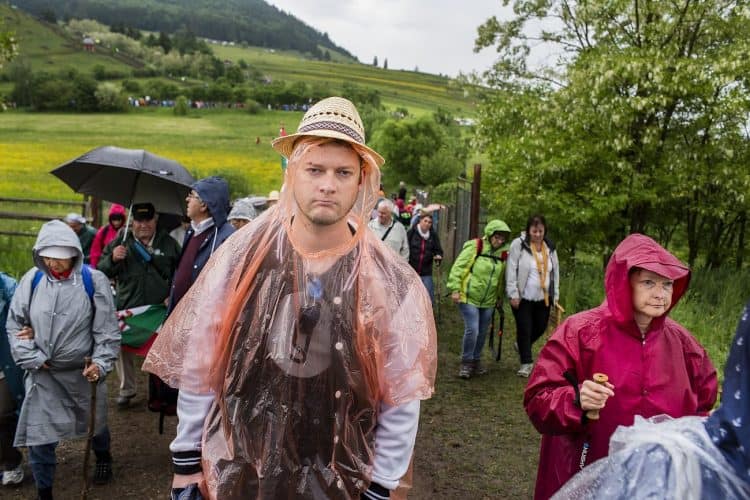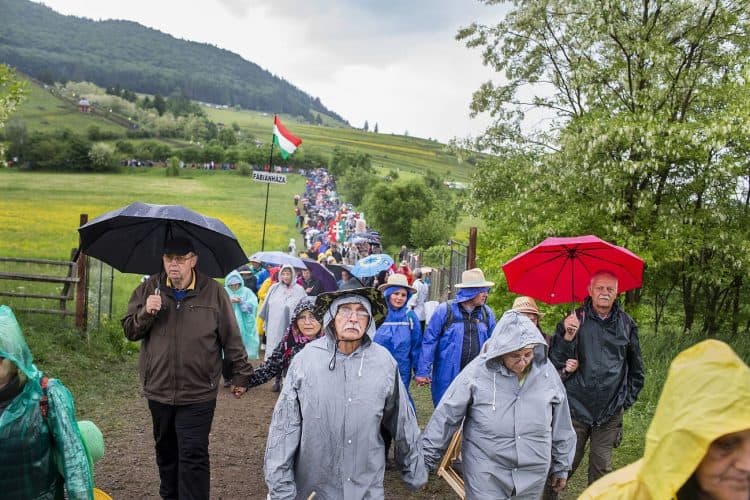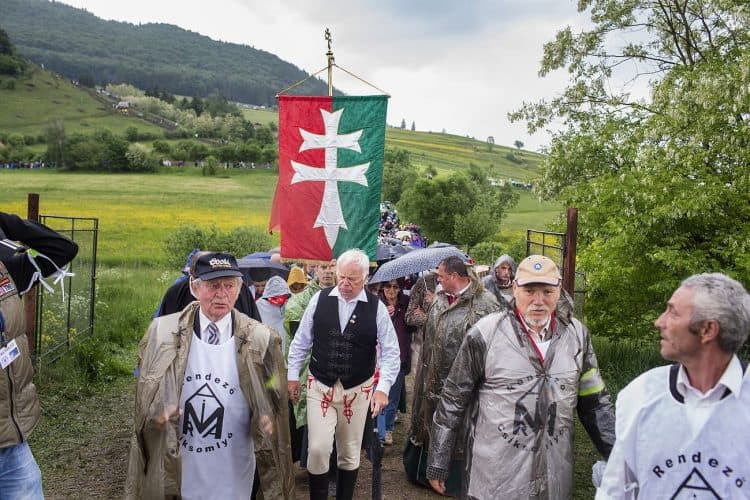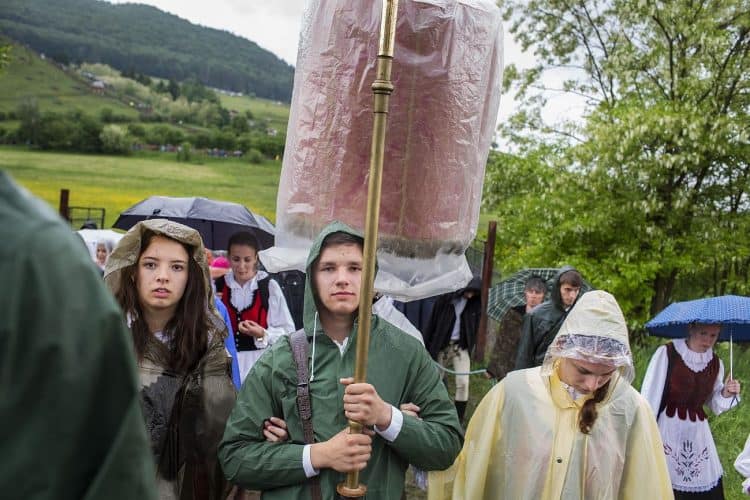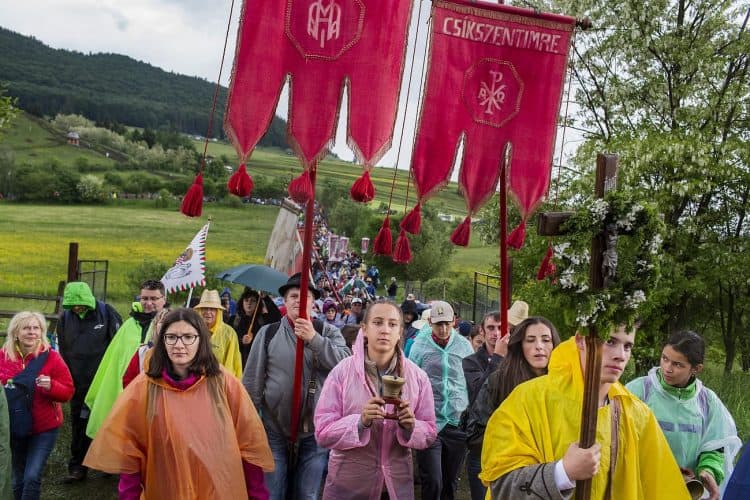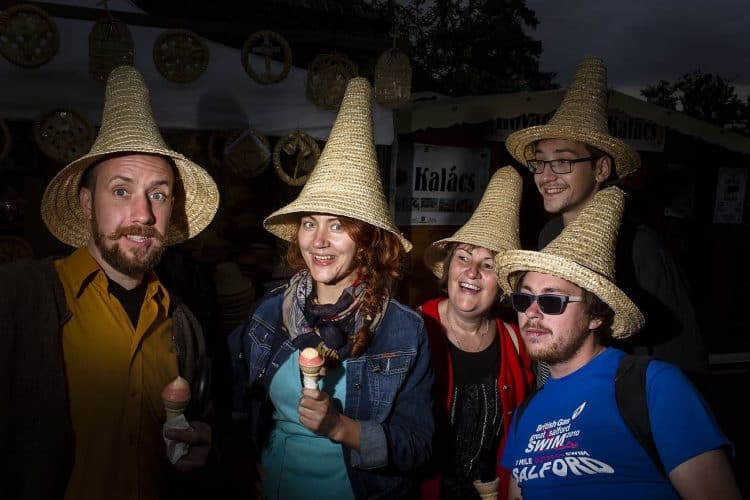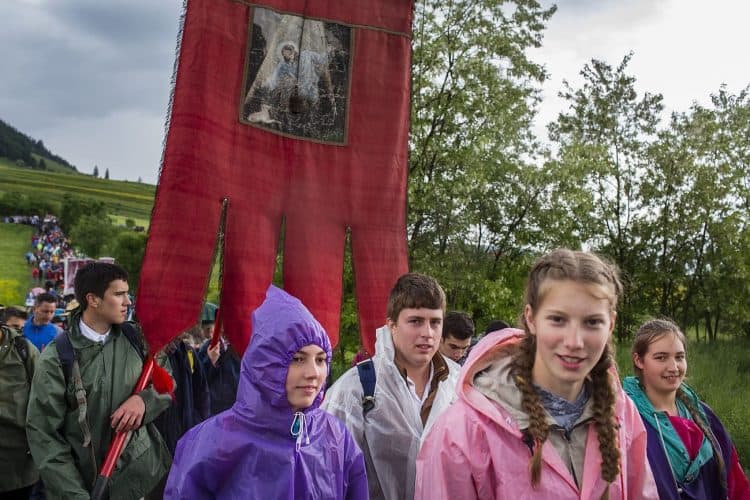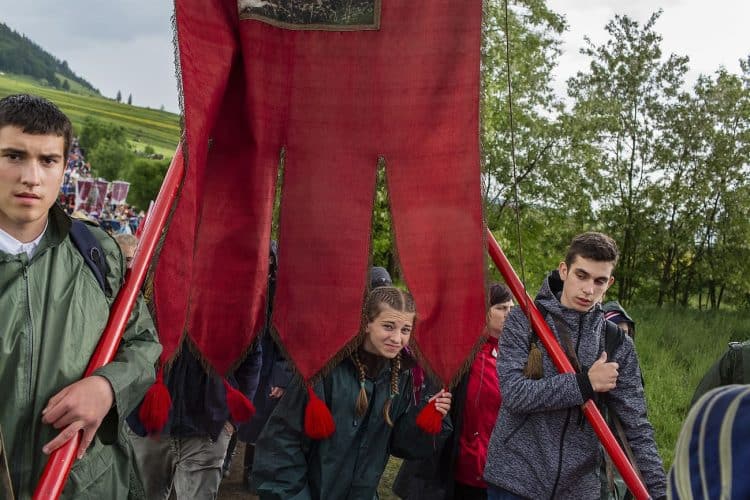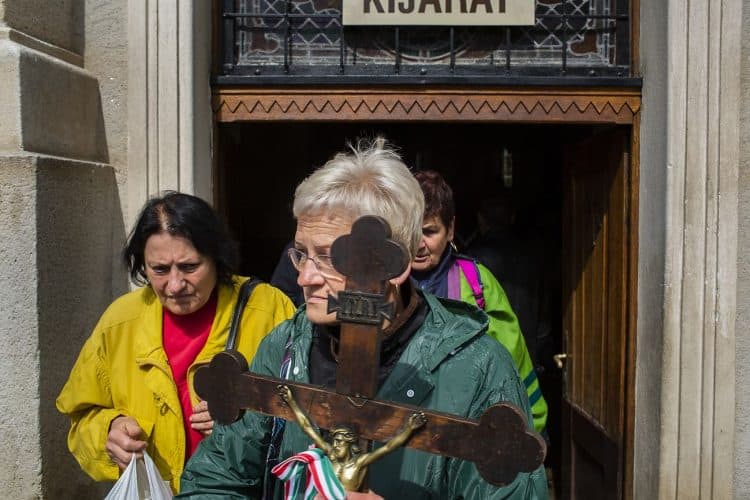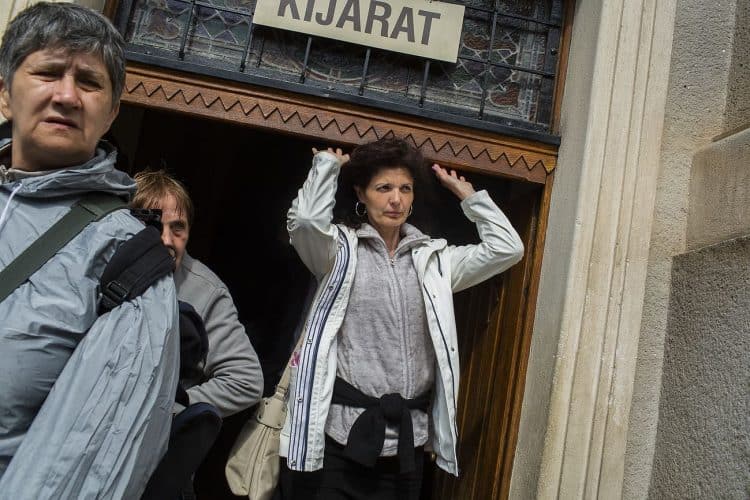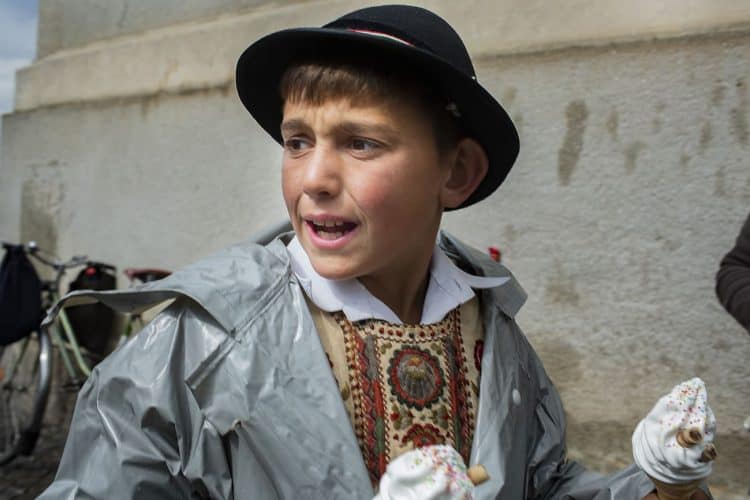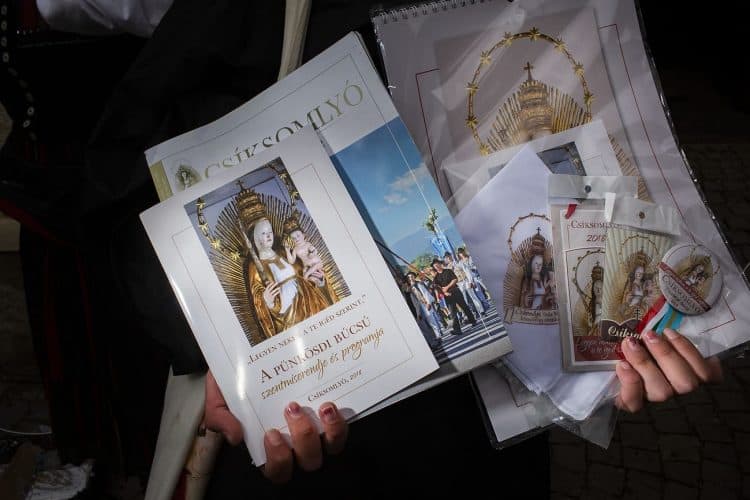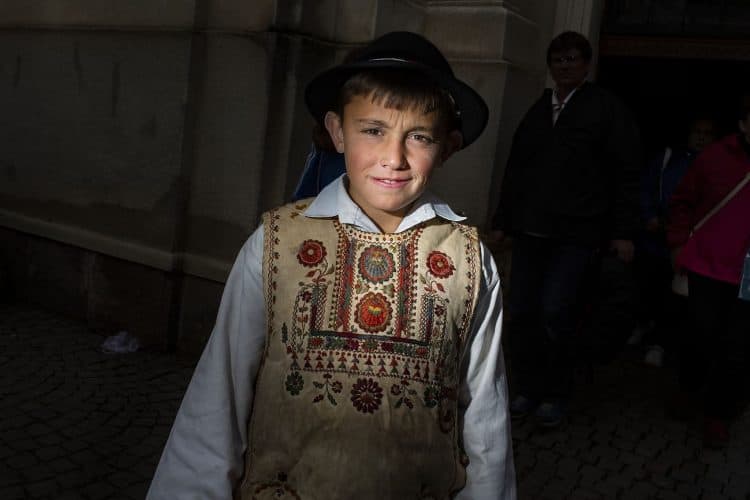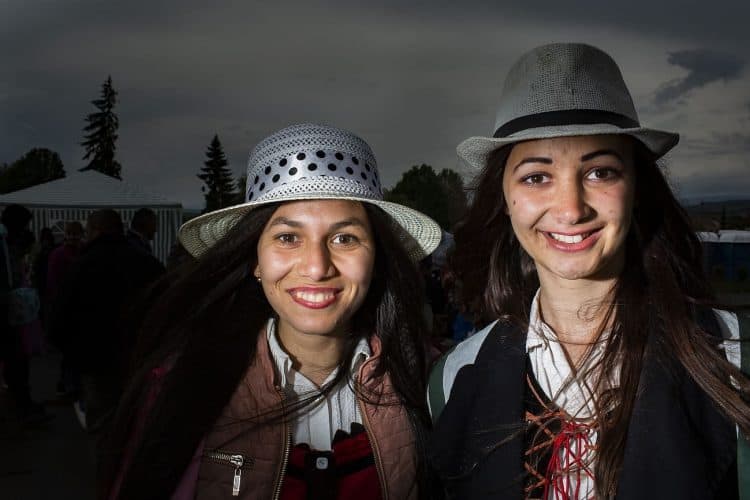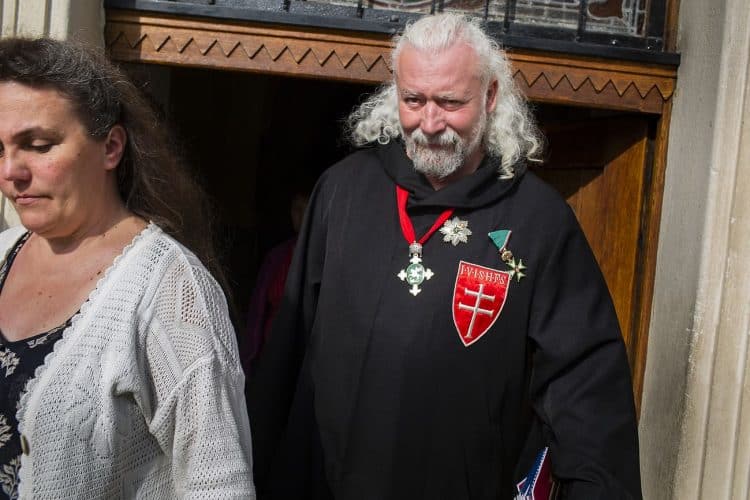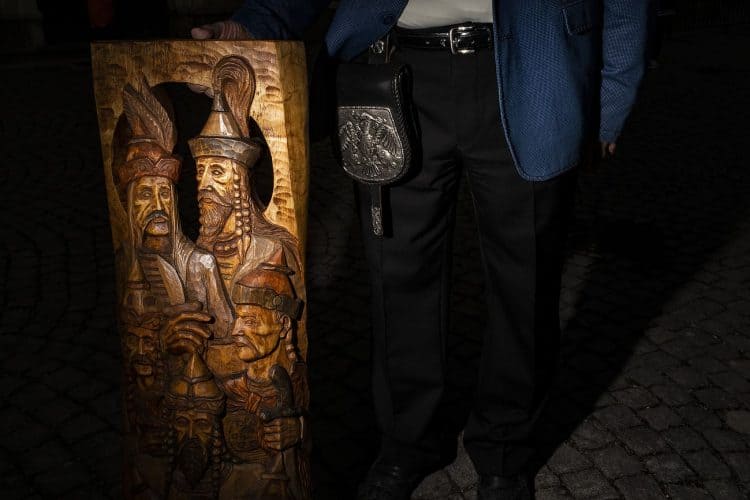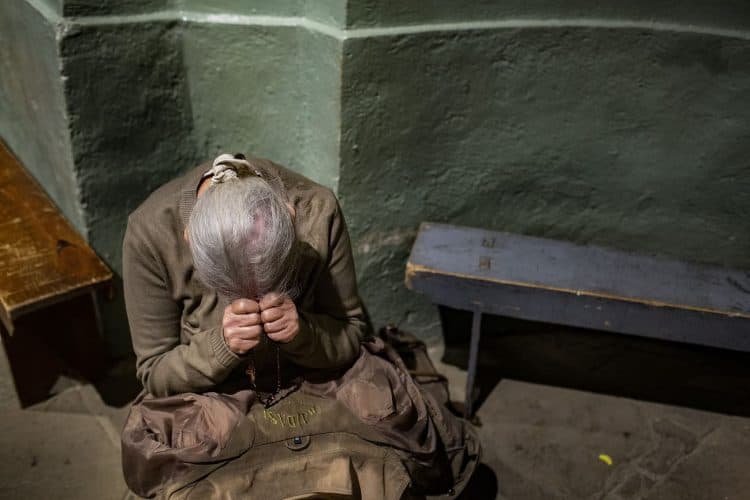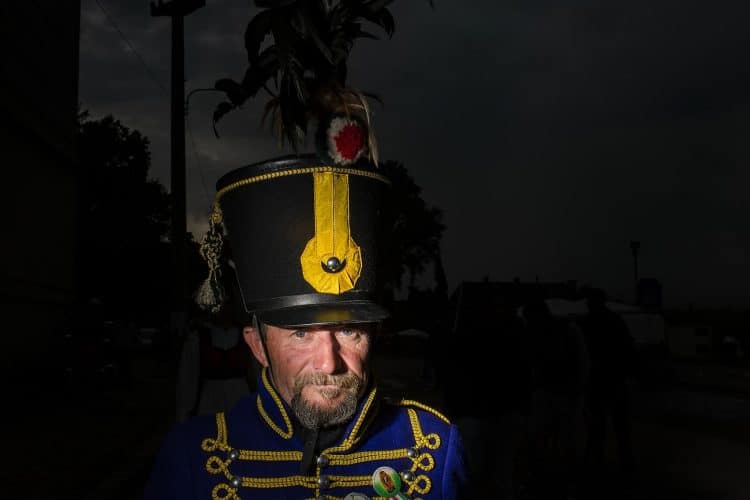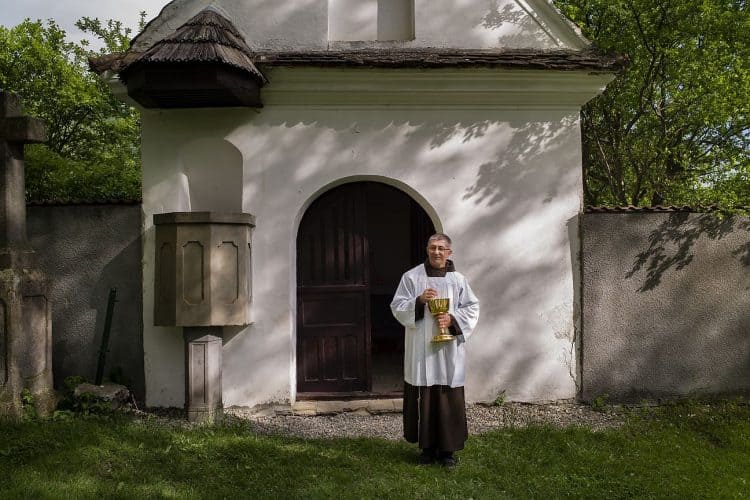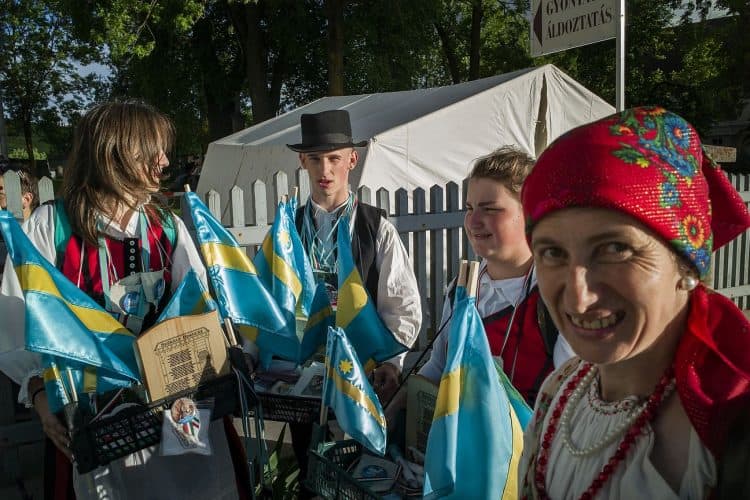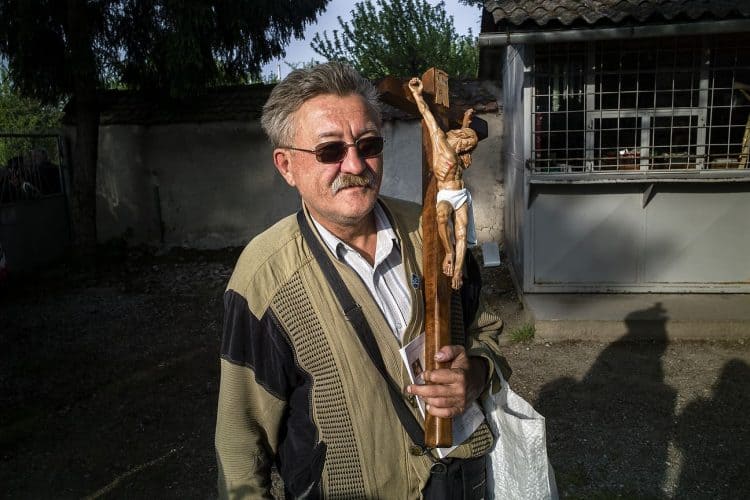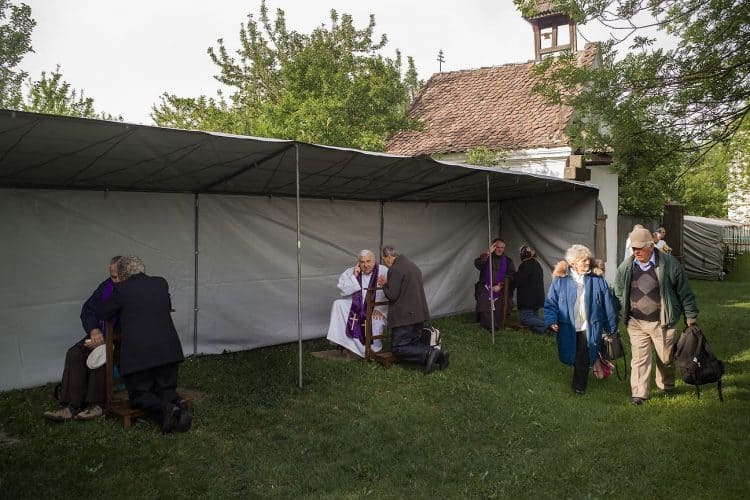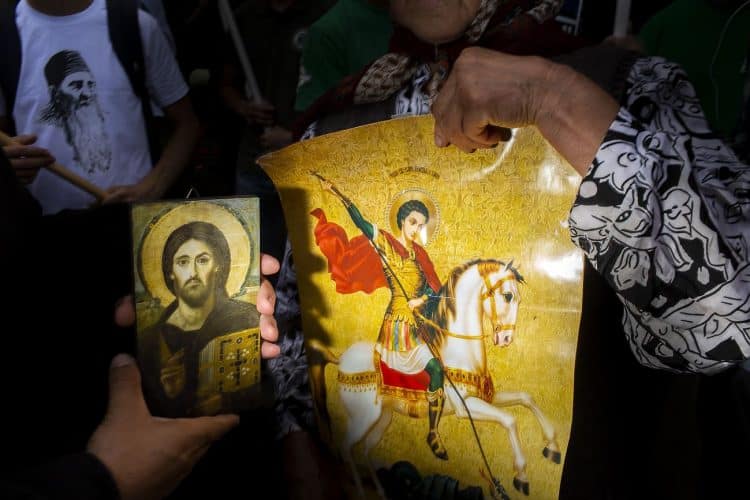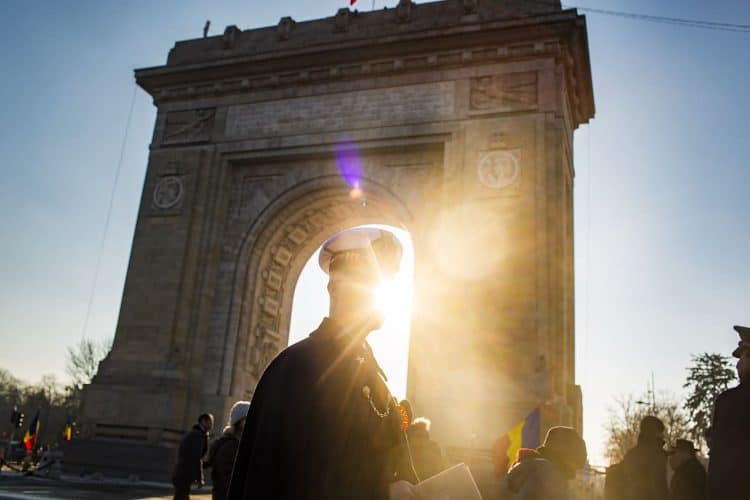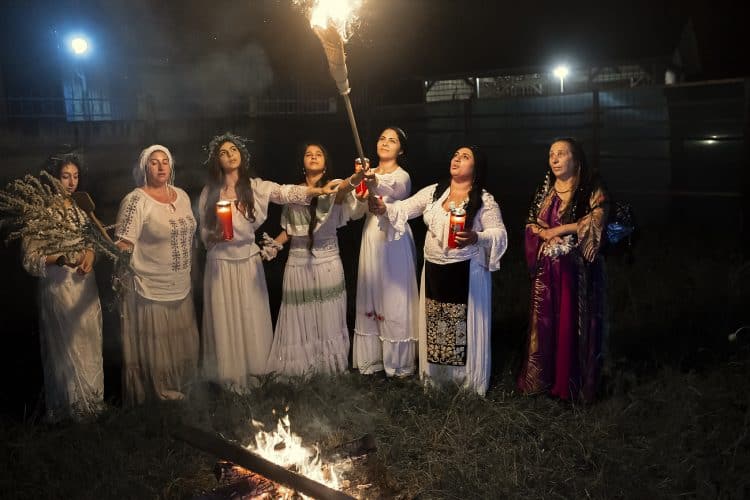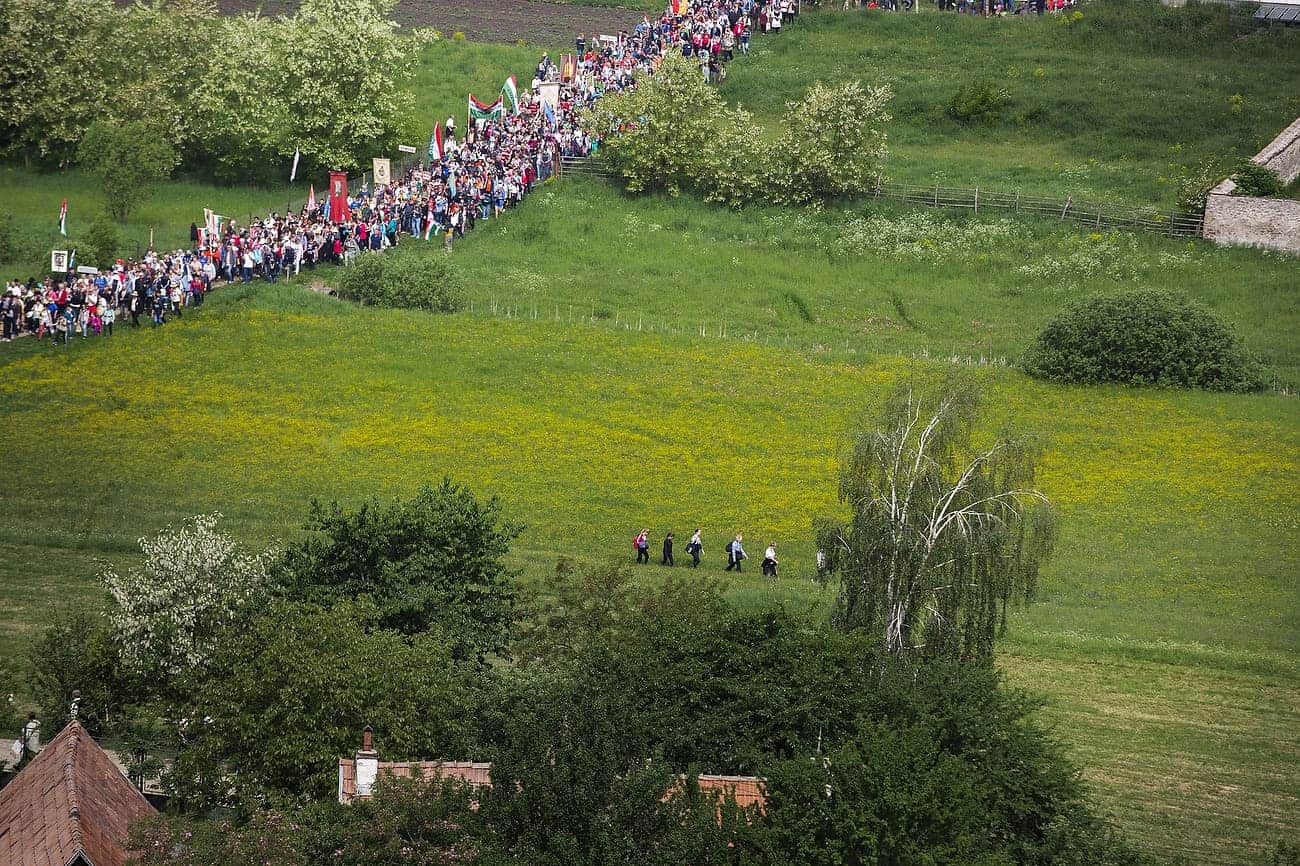
SUMULEU CIUC, ROMANIA - MAY 19: Hungarians from all over the world attending the early pilgrimage hold at Sumuleu Ciuc in Romania, as seen on May 19, 2018. Sumuleu Ciuc became a pilgrimage site in 1567, when Hungarian king John II Sigismund Zápolya wanted to convert the Székely population of the upper Csík to Protestantism. The Székelys refused to abandon the Catholic faith and resisted. A battle took place on a nearby field, on Saturday before Pentecost 1567, from which the Székelys emerged victorious. The monks saw this as a sign of the care of Virgin Mary, and since then, this event has been commemorated by a pilgrimage when the believers gather on Pentecost every year. Beside its religious importance, the pilgrimage has also become a community event demonstrating spiritual unity of Hungarian people living in and outside the historical region of Transylvania. Photography by Mugur Varzariu/Getty Images/Newsweek.

SUMULEU CIUC, ROMANIA - MAY 19: Hungarians from all over the world attending the early pilgrimage hold at Sumuleu Ciuc in Romania, as seen on May 19, 2018. Sumuleu Ciuc became a pilgrimage site in 1567, when Hungarian king John II Sigismund Zápolya wanted to convert the Székely population of the upper Csík to Protestantism. The Székelys refused to abandon the Catholic faith and resisted. A battle took place on a nearby field, on Saturday before Pentecost 1567, from which the Székelys emerged victorious. The monks saw this as a sign of the care of Virgin Mary, and since then, this event has been commemorated by a pilgrimage when the believers gather on Pentecost every year. Beside its religious importance, the pilgrimage has also become a community event demonstrating spiritual unity of Hungarian people living in and outside the historical region of Transylvania. © Mugur Varzariu

SUMULEU CIUC, ROMANIA - MAY 18: Hungarians from all over the world attending the early pilgrimage hold at Sumuleu Ciuc in Romania, as seen on May 18, 2018. Sumuleu Ciuc became a pilgrimage site in 1567, when Hungarian king John II Sigismund Zápolya wanted to convert the Székely population of the upper Csík to Protestantism. The Székelys refused to abandon the Catholic faith and resisted. A battle took place on a nearby field, on Saturday before Pentecost 1567, from which the Székelys emerged victorious. The monks saw this as a sign of the care of Virgin Mary, and since then, this event has been commemorated by a pilgrimage when the believers gather on Pentecost every year. Beside its religious importance, the pilgrimage has also become a community event demonstrating spiritual unity of Hungarian people living in and outside the historical region of Transylvania. Photography by Mugur Varzariu/Getty Images/Newsweek.
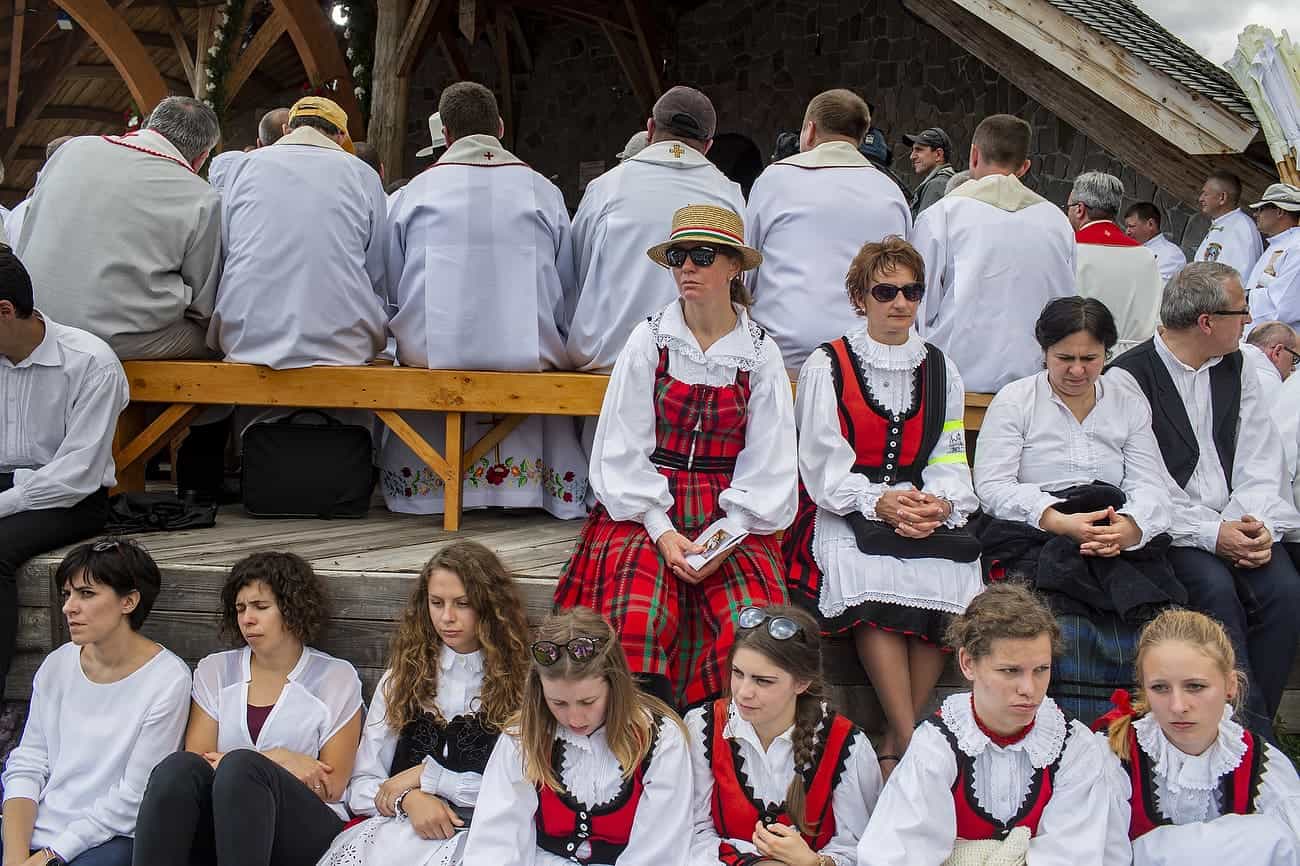
SUMULEU CIUC, ROMANIA - MAY 19: Hungarians from all over the world attending the early pilgrimage hold at Sumuleu Ciuc in Romania, as seen on May 19, 2018. Sumuleu Ciuc became a pilgrimage site in 1567, when Hungarian king John II Sigismund Zápolya wanted to convert the Székely population of the upper Csík to Protestantism. The Székelys refused to abandon the Catholic faith and resisted. A battle took place on a nearby field, on Saturday before Pentecost 1567, from which the Székelys emerged victorious. The monks saw this as a sign of the care of Virgin Mary, and since then, this event has been commemorated by a pilgrimage when the believers gather on Pentecost every year. Beside its religious importance, the pilgrimage has also become a community event demonstrating spiritual unity of Hungarian people living in and outside the historical region of Transylvania. Photography by Mugur Varzariu/Getty Images/Newsweek.
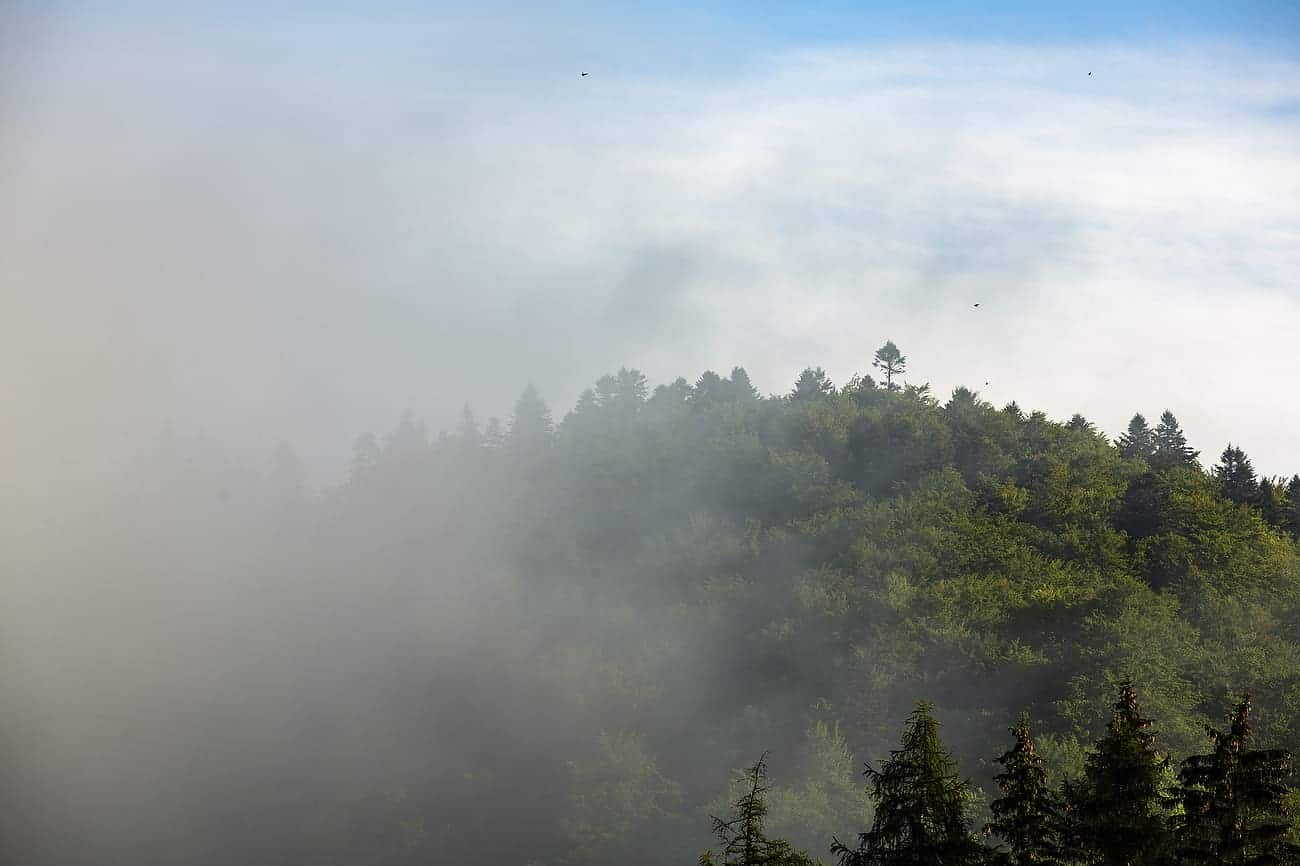
SUMULEU CIUC, ROMANIA - MAY 18: Hungarians from all over the world attending the early pilgrimage hold at Sumuleu Ciuc in Romania, as seen on May 18, 2018. Sumuleu Ciuc became a pilgrimage site in 1567, when Hungarian king John II Sigismund Zpolya wanted to convert the Szkely population of the upper Csk to Protestantism. The Szkelys refused to abandon the Catholic faith and resisted. A battle took place on a nearby field, on Saturday before Pentecost 1567, from which the Szkelys emerged victorious. The monks saw this as a sign of the care of Virgin Mary, and since then, this event has been commemorated by a pilgrimage when the believers gather on Pentecost every year. Beside its religious importance, the pilgrimage has also become a community event demonstrating spiritual unity of Hungarian people living in and outside the historical region of Transylvania. Photography by Mugur Varzariu/Getty Images/Newsweek.
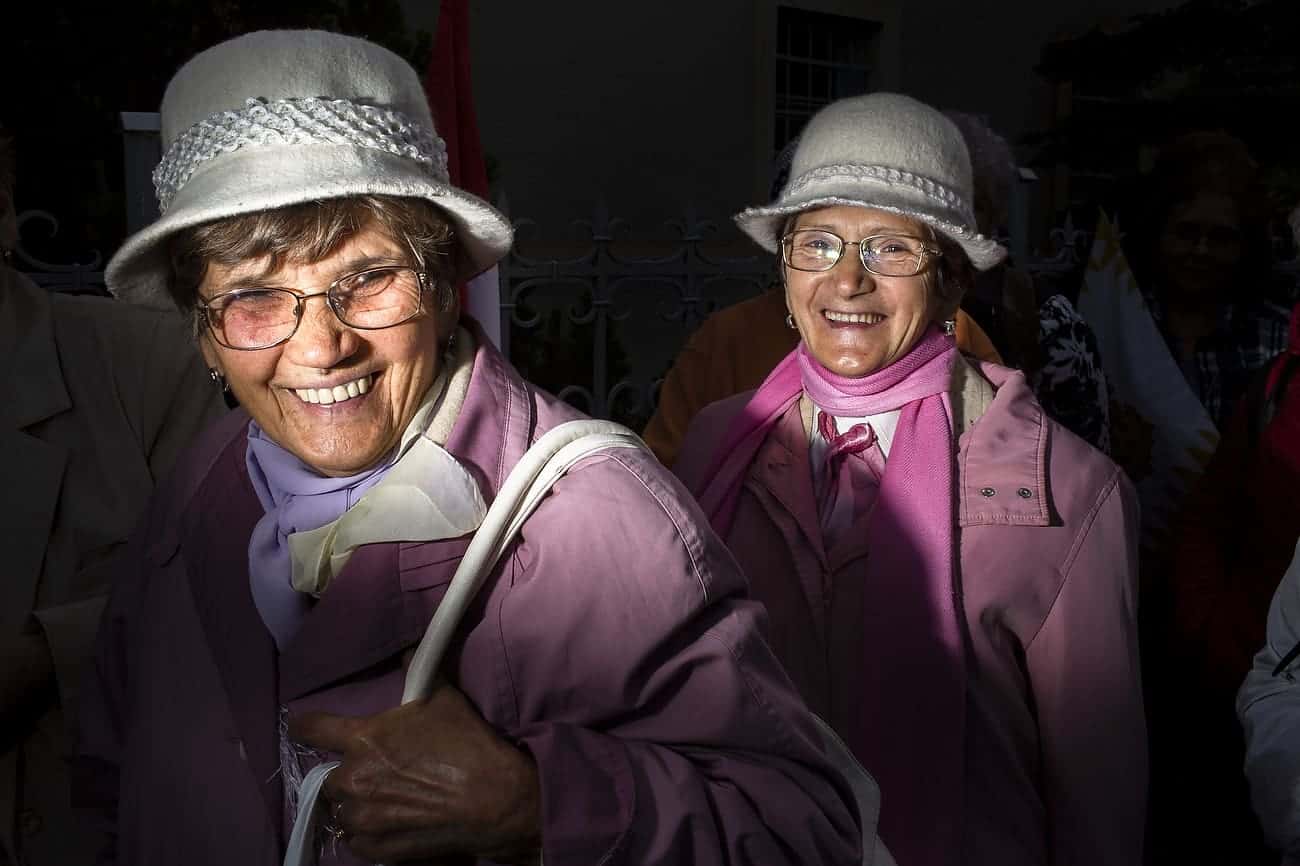
SUMULEU CIUC, ROMANIA - MAY 19: Hungarians from all over the world attending the early pilgrimage hold at Sumuleu Ciuc in Romania, as seen on May 19, 2018. Sumuleu Ciuc became a pilgrimage site in 1567, when Hungarian king John II Sigismund Zápolya wanted to convert the Székely population of the upper Csík to Protestantism. The Székelys refused to abandon the Catholic faith and resisted. A battle took place on a nearby field, on Saturday before Pentecost 1567, from which the Székelys emerged victorious. The monks saw this as a sign of the care of Virgin Mary, and since then, this event has been commemorated by a pilgrimage when the believers gather on Pentecost every year. Beside its religious importance, the pilgrimage has also become a community event demonstrating spiritual unity of Hungarian people living in and outside the historical region of Transylvania. Photography by Mugur Varzariu/Getty Images/Newsweek.
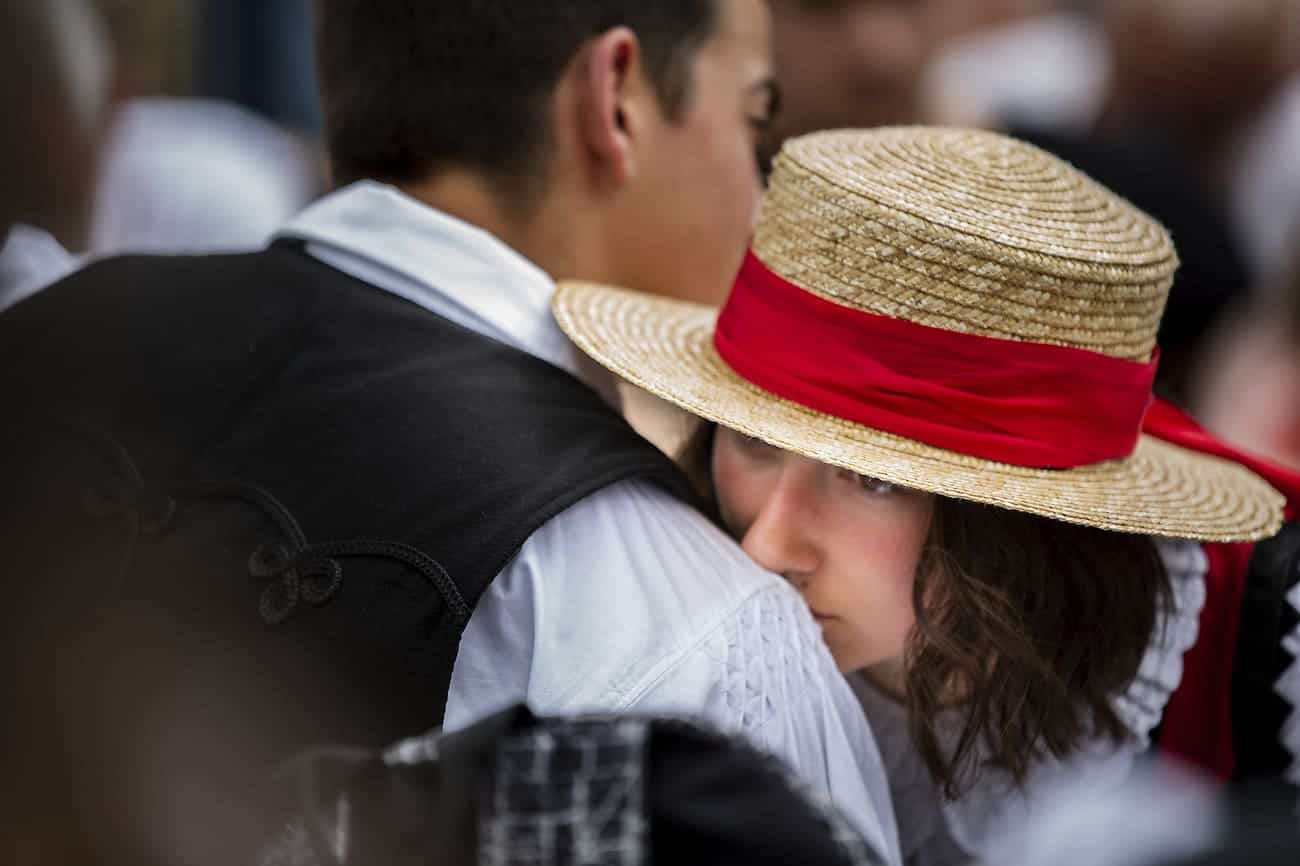
SUMULEU CIUC, ROMANIA - MAY 19: Hungarians from all over the world attending the early pilgrimage hold at Sumuleu Ciuc in Romania, as seen on May 19, 2018. Sumuleu Ciuc became a pilgrimage site in 1567, when Hungarian king John II Sigismund Zápolya wanted to convert the Székely population of the upper Csík to Protestantism. The Székelys refused to abandon the Catholic faith and resisted. A battle took place on a nearby field, on Saturday before Pentecost 1567, from which the Székelys emerged victorious. The monks saw this as a sign of the care of Virgin Mary, and since then, this event has been commemorated by a pilgrimage when the believers gather on Pentecost every year. Beside its religious importance, the pilgrimage has also become a community event demonstrating spiritual unity of Hungarian people living in and outside the historical region of Transylvania. Photography by Mugur Varzariu/Getty Images/Newsweek.
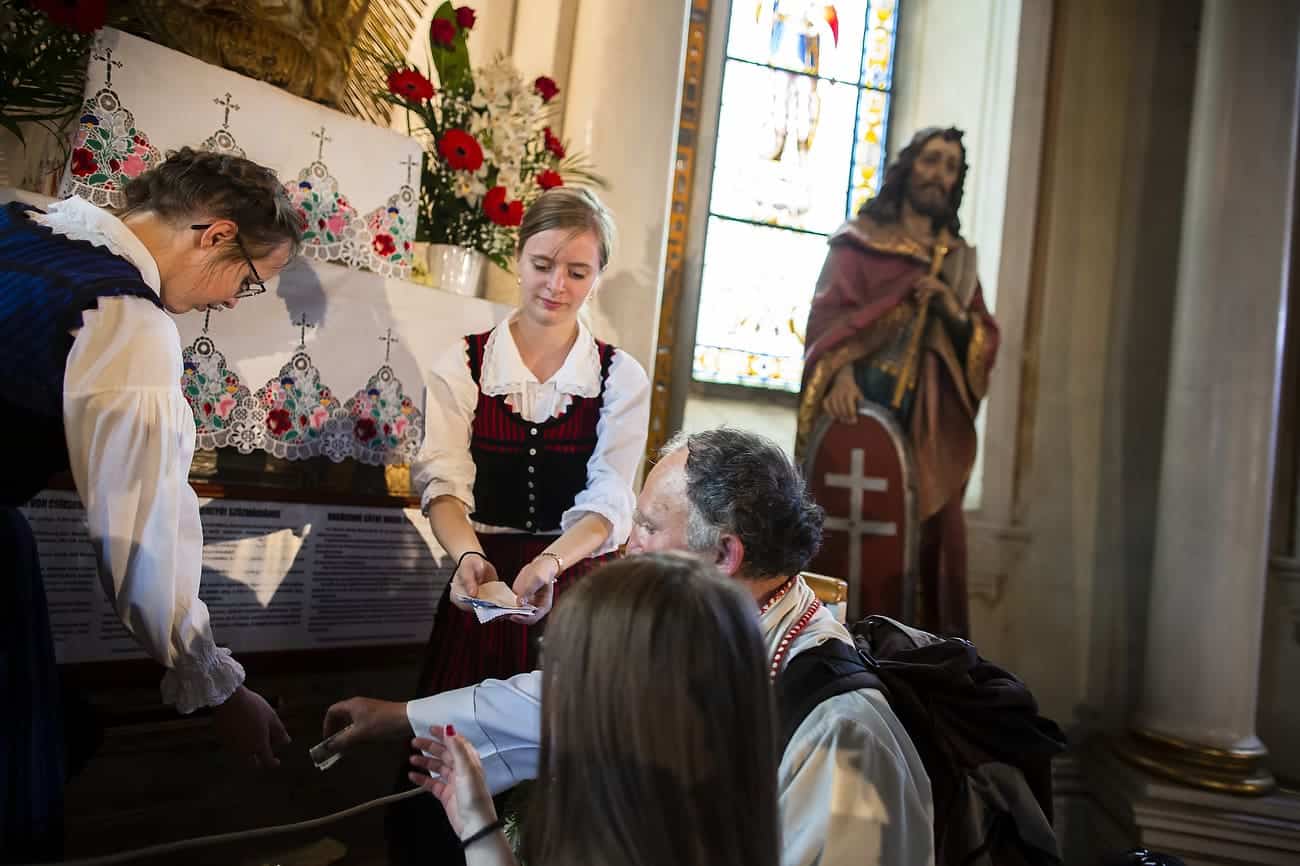
SUMULEU CIUC, ROMANIA - MAY 18: Hungarians from all over the world attending the early pilgrimage hold at Sumuleu Ciuc in Romania, as seen on May 18, 2018. Sumuleu Ciuc became a pilgrimage site in 1567, when Hungarian king John II Sigismund Zpolya wanted to convert the Szkely population of the upper Csk to Protestantism. The Szkelys refused to abandon the Catholic faith and resisted. A battle took place on a nearby field, on Saturday before Pentecost 1567, from which the Szkelys emerged victorious. The monks saw this as a sign of the care of Virgin Mary, and since then, this event has been commemorated by a pilgrimage when the believers gather on Pentecost every year. Beside its religious importance, the pilgrimage has also become a community event demonstrating spiritual unity of Hungarian people living in and outside the historical region of Transylvania. Photography by Mugur Varzariu/Getty Images/Newsweek.
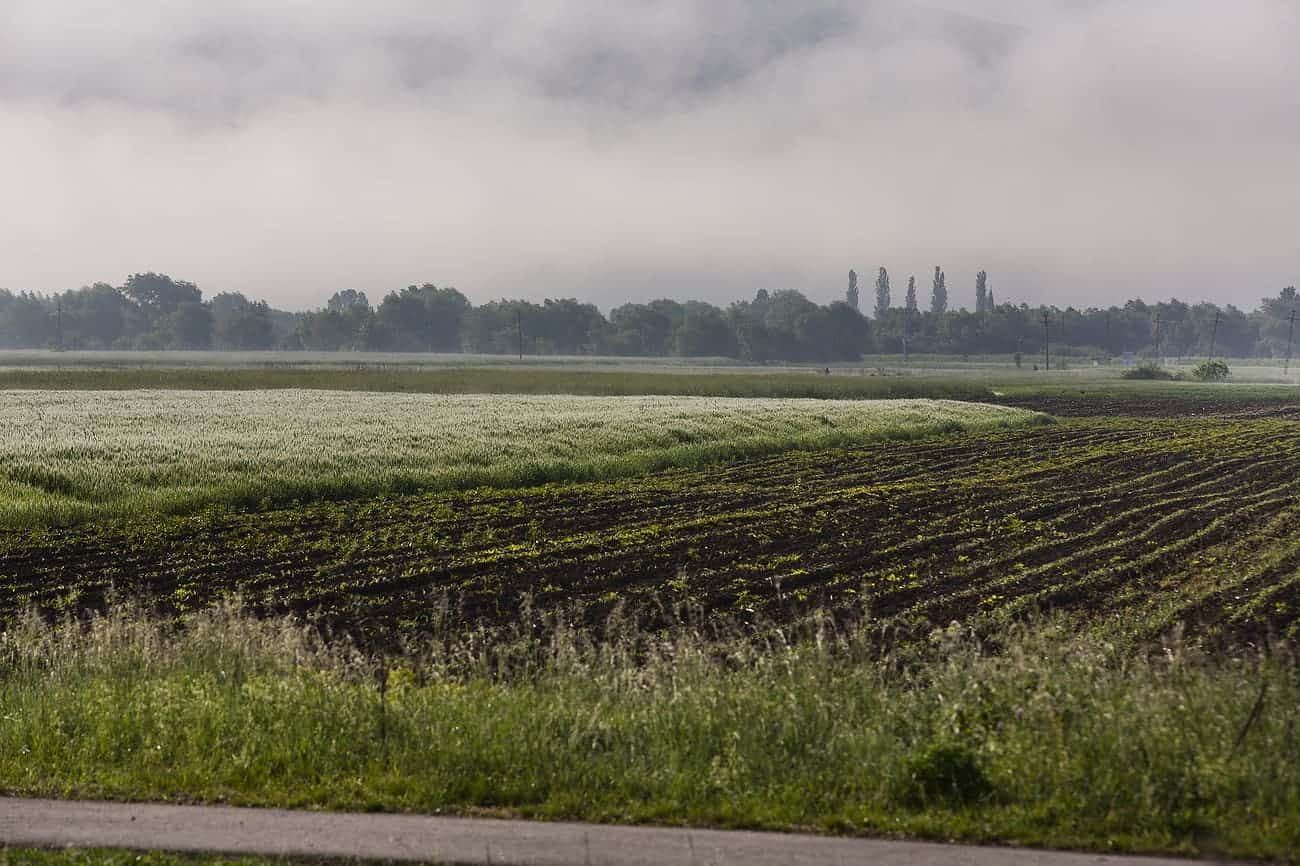
SUMULEU CIUC, ROMANIA - MAY 18: Hungarians from all over the world attending the early pilgrimage hold at Sumuleu Ciuc in Romania, as seen on May 18, 2018. Sumuleu Ciuc became a pilgrimage site in 1567, when Hungarian king John II Sigismund Zápolya wanted to convert the Székely population of the upper Csík to Protestantism. The Székelys refused to abandon the Catholic faith and resisted. A battle took place on a nearby field, on Saturday before Pentecost 1567, from which the Székelys emerged victorious. The monks saw this as a sign of the care of Virgin Mary, and since then, this event has been commemorated by a pilgrimage when the believers gather on Pentecost every year. Beside its religious importance, the pilgrimage has also become a community event demonstrating spiritual unity of Hungarian people living in and outside the historical region of Transylvania. Photography by Mugur Varzariu/Getty Images/Newsweek.
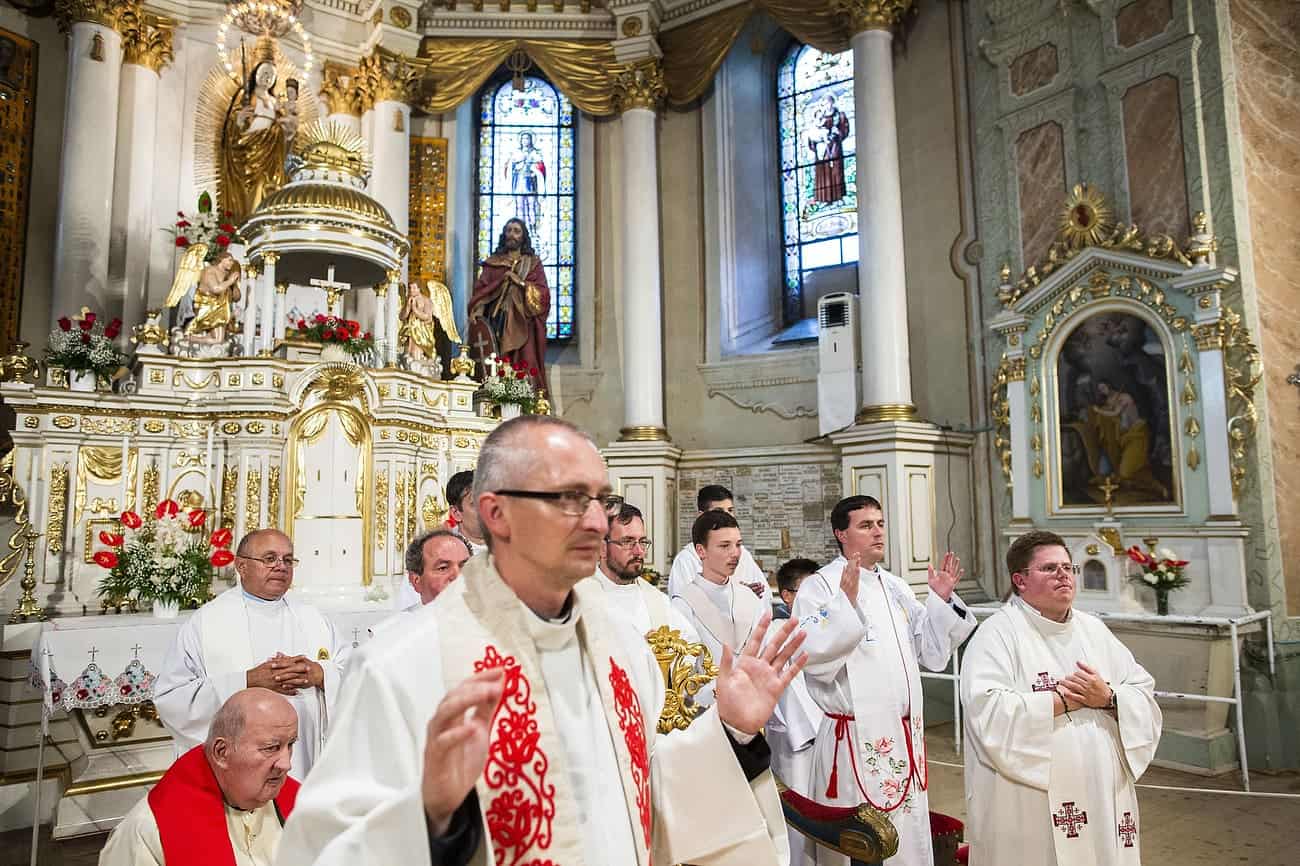
SUMULEU CIUC, ROMANIA - MAY 18: Hungarians from all over the world attending the early pilgrimage hold at Sumuleu Ciuc in Romania, as seen on May 18, 2018. Sumuleu Ciuc became a pilgrimage site in 1567, when Hungarian king John II Sigismund Zápolya wanted to convert the Székely population of the upper Csík to Protestantism. The Székelys refused to abandon the Catholic faith and resisted. A battle took place on a nearby field, on Saturday before Pentecost 1567, from which the Székelys emerged victorious. The monks saw this as a sign of the care of Virgin Mary, and since then, this event has been commemorated by a pilgrimage when the believers gather on Pentecost every year. Beside its religious importance, the pilgrimage has also become a community event demonstrating spiritual unity of Hungarian people living in and outside the historical region of Transylvania. Photography by Mugur Varzariu/Getty Images/Newsweek.

SUMULEU CIUC, ROMANIA - MAY 18: Hungarians from all over the world attending the early pilgrimage hold at Sumuleu Ciuc in Romania, as seen on May 18, 2018. Sumuleu Ciuc became a pilgrimage site in 1567, when Hungarian king John II Sigismund Zpolya wanted to convert the Szkely population of the upper Csk to Protestantism. The Szkelys refused to abandon the Catholic faith and resisted. A battle took place on a nearby field, on Saturday before Pentecost 1567, from which the Szkelys emerged victorious. The monks saw this as a sign of the care of Virgin Mary, and since then, this event has been commemorated by a pilgrimage when the believers gather on Pentecost every year. Beside its religious importance, the pilgrimage has also become a community event demonstrating spiritual unity of Hungarian people living in and outside the historical region of Transylvania. Photography by Mugur Varzariu/Getty Images/Newsweek.
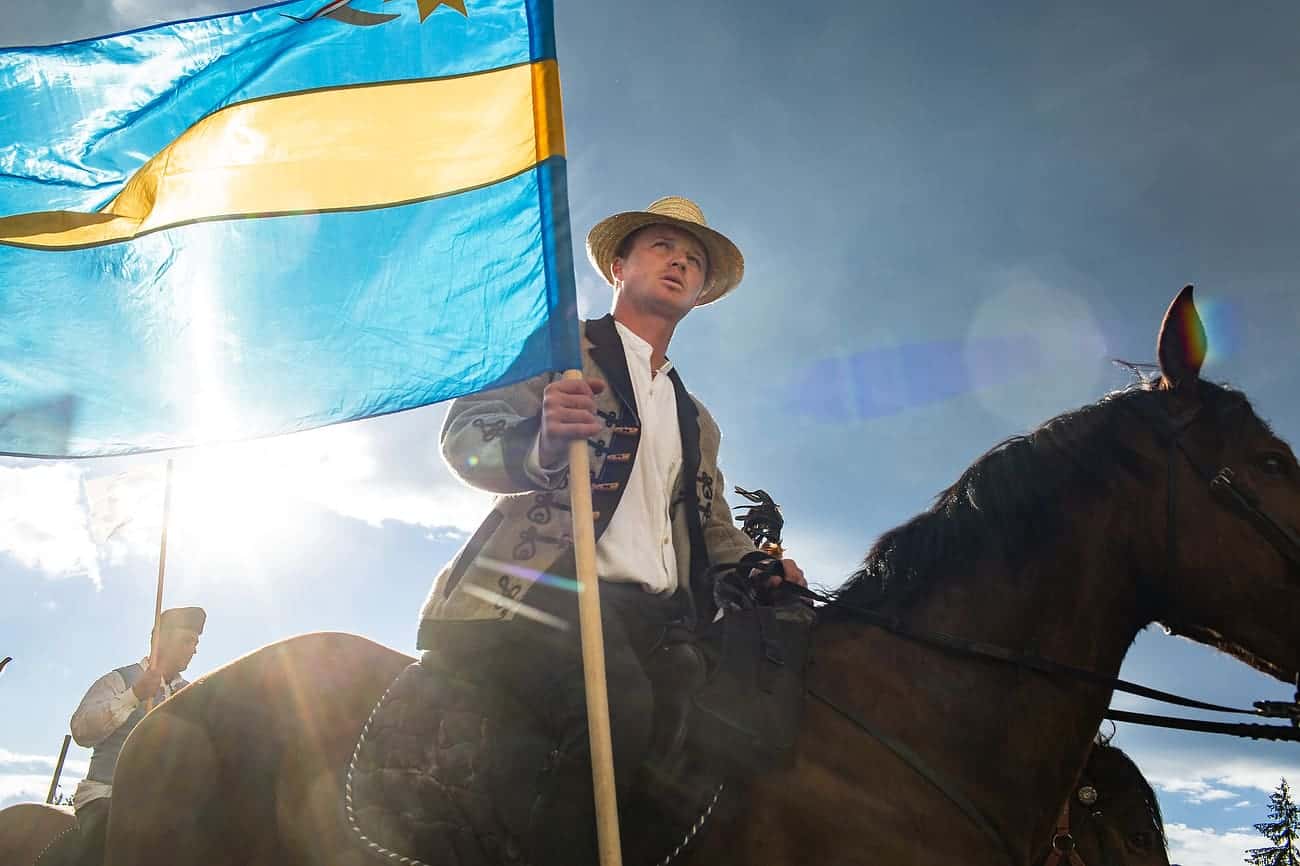
SUMULEU CIUC, ROMANIA - MAY 18: Hungarians from all over the world attending the early pilgrimage hold at Sumuleu Ciuc in Romania, as seen on May 18, 2018. Sumuleu Ciuc became a pilgrimage site in 1567, when Hungarian king John II Sigismund Zápolya wanted to convert the Székely population of the upper Csík to Protestantism. The Székelys refused to abandon the Catholic faith and resisted. A battle took place on a nearby field, on Saturday before Pentecost 1567, from which the Székelys emerged victorious. The monks saw this as a sign of the care of Virgin Mary, and since then, this event has been commemorated by a pilgrimage when the believers gather on Pentecost every year. Beside its religious importance, the pilgrimage has also become a community event demonstrating spiritual unity of Hungarian people living in and outside the historical region of Transylvania. Photography by Mugur Varzariu/Getty Images/Newsweek.
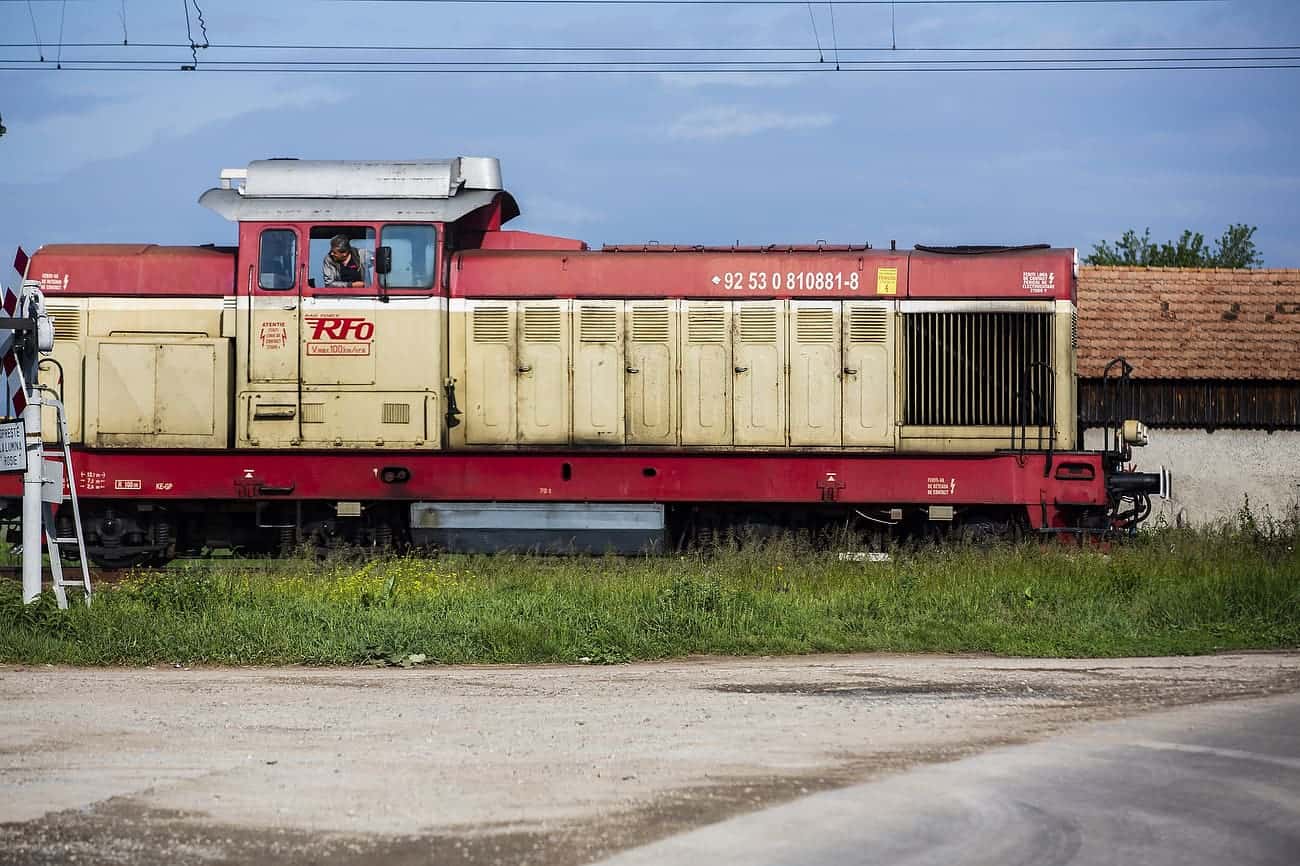
SUMULEU CIUC, ROMANIA - MAY 18: Hungarians from all over the world attending the early pilgrimage hold at Sumuleu Ciuc in Romania, as seen on May 18, 2018. Sumuleu Ciuc became a pilgrimage site in 1567, when Hungarian king John II Sigismund Zápolya wanted to convert the Székely population of the upper Csík to Protestantism. The Székelys refused to abandon the Catholic faith and resisted. A battle took place on a nearby field, on Saturday before Pentecost 1567, from which the Székelys emerged victorious. The monks saw this as a sign of the care of Virgin Mary, and since then, this event has been commemorated by a pilgrimage when the believers gather on Pentecost every year. Beside its religious importance, the pilgrimage has also become a community event demonstrating spiritual unity of Hungarian people living in and outside the historical region of Transylvania. Photography by Mugur Varzariu/Getty Images/Newsweek.
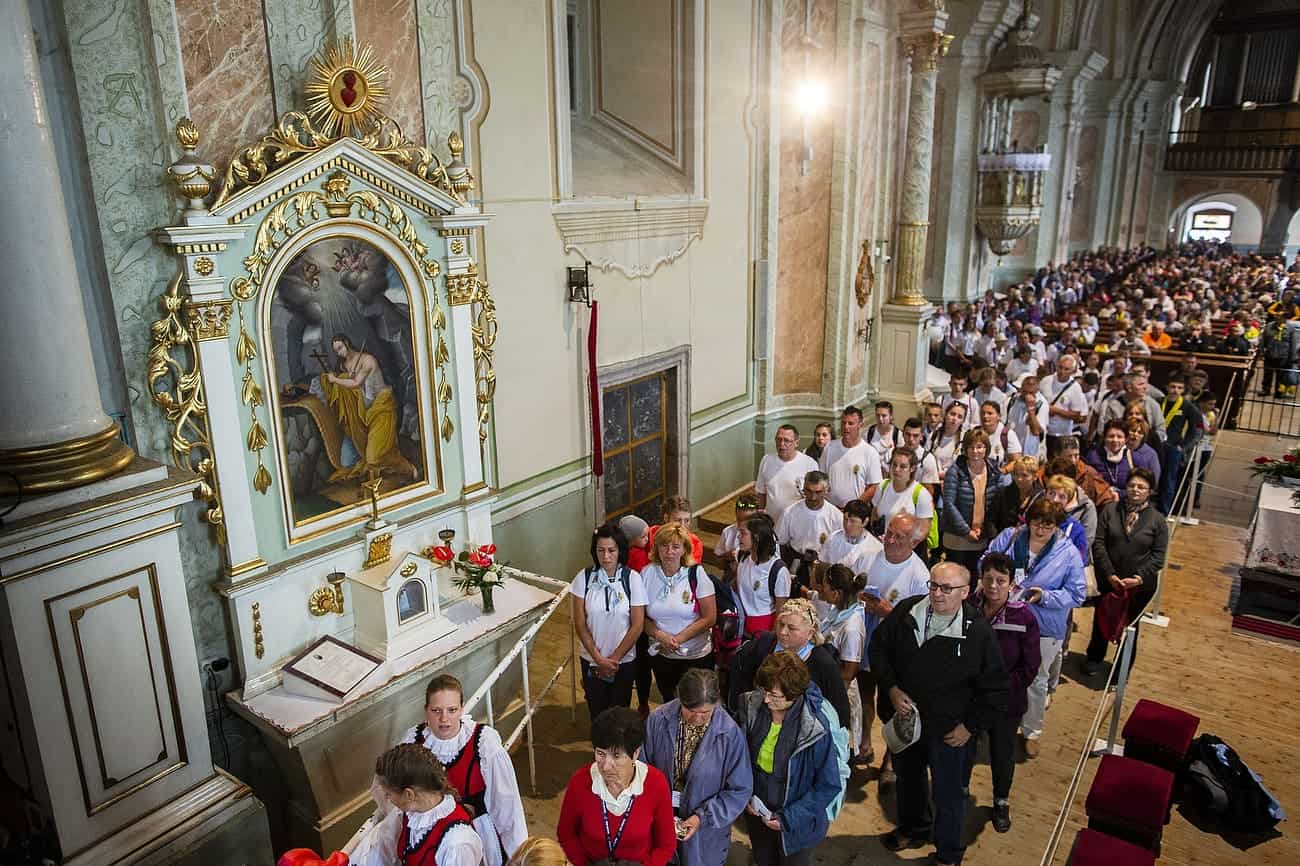
SUMULEU CIUC, ROMANIA - MAY 18: Hungarians from all over the world attending the early pilgrimage hold at Sumuleu Ciuc in Romania, as seen on May 18, 2018. Sumuleu Ciuc became a pilgrimage site in 1567, when Hungarian king John II Sigismund Zápolya wanted to convert the Székely population of the upper Csík to Protestantism. The Székelys refused to abandon the Catholic faith and resisted. A battle took place on a nearby field, on Saturday before Pentecost 1567, from which the Székelys emerged victorious. The monks saw this as a sign of the care of Virgin Mary, and since then, this event has been commemorated by a pilgrimage when the believers gather on Pentecost every year. Beside its religious importance, the pilgrimage has also become a community event demonstrating spiritual unity of Hungarian people living in and outside the historical region of Transylvania. Photography by Mugur Varzariu/Getty Images/Newsweek.

SUMULEU CIUC, ROMANIA - MAY 18: Hungarians from all over the world attending the early pilgrimage hold at Sumuleu Ciuc in Romania, as seen on May 18, 2018. Sumuleu Ciuc became a pilgrimage site in 1567, when Hungarian king John II Sigismund Zápolya wanted to convert the Székely population of the upper Csík to Protestantism. The Székelys refused to abandon the Catholic faith and resisted. A battle took place on a nearby field, on Saturday before Pentecost 1567, from which the Székelys emerged victorious. The monks saw this as a sign of the care of Virgin Mary, and since then, this event has been commemorated by a pilgrimage when the believers gather on Pentecost every year. Beside its religious importance, the pilgrimage has also become a community event demonstrating spiritual unity of Hungarian people living in and outside the historical region of Transylvania. Photography by Mugur Varzariu/Getty Images/Newsweek.
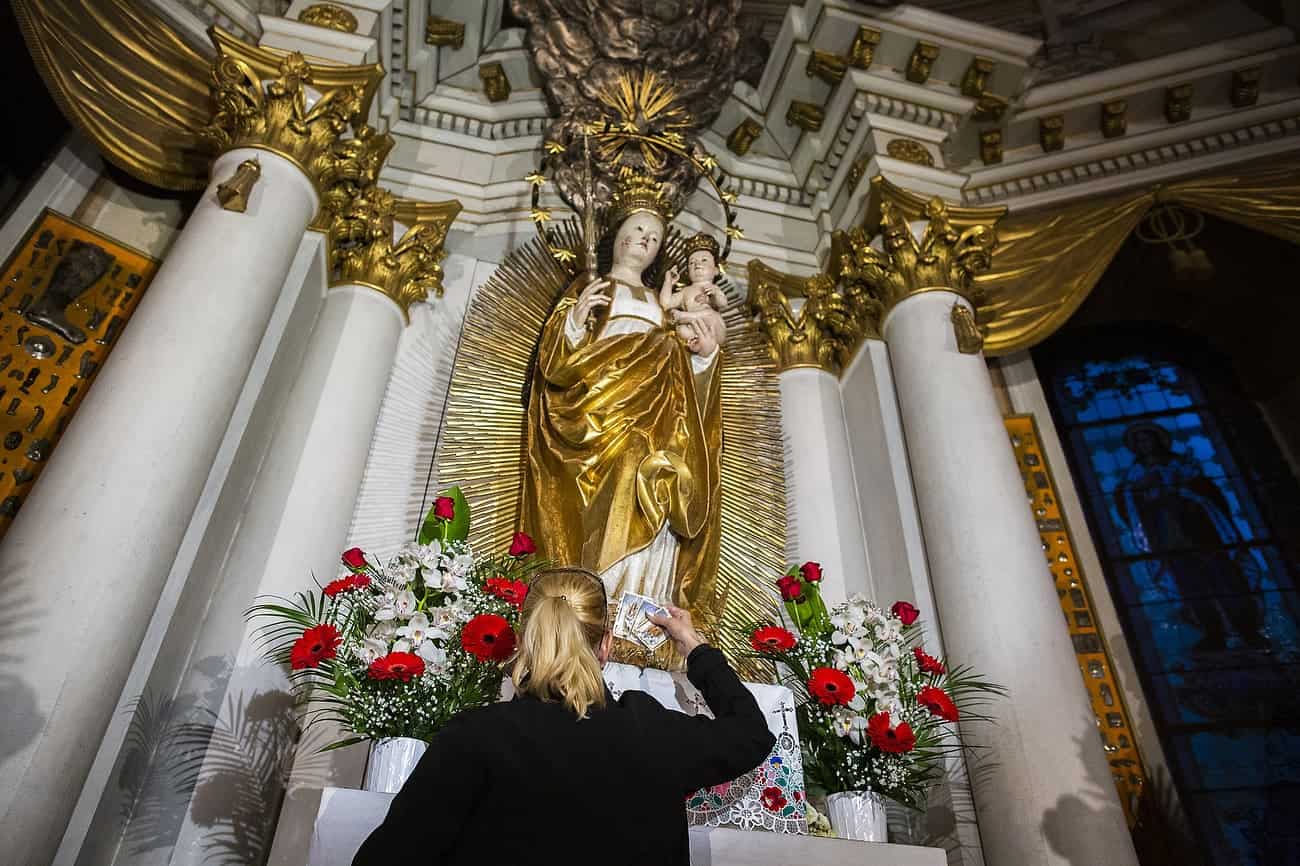
SUMULEU CIUC, ROMANIA - MAY 18: Hungarians from all over the world attending the early pilgrimage hold at Sumuleu Ciuc in Romania, as seen on May 18, 2018. Sumuleu Ciuc became a pilgrimage site in 1567, when Hungarian king John II Sigismund Zápolya wanted to convert the Székely population of the upper Csík to Protestantism. The Székelys refused to abandon the Catholic faith and resisted. A battle took place on a nearby field, on Saturday before Pentecost 1567, from which the Székelys emerged victorious. The monks saw this as a sign of the care of Virgin Mary, and since then, this event has been commemorated by a pilgrimage when the believers gather on Pentecost every year. Beside its religious importance, the pilgrimage has also become a community event demonstrating spiritual unity of Hungarian people living in and outside the historical region of Transylvania. Photography by Mugur Varzariu/Getty Images/Newsweek.
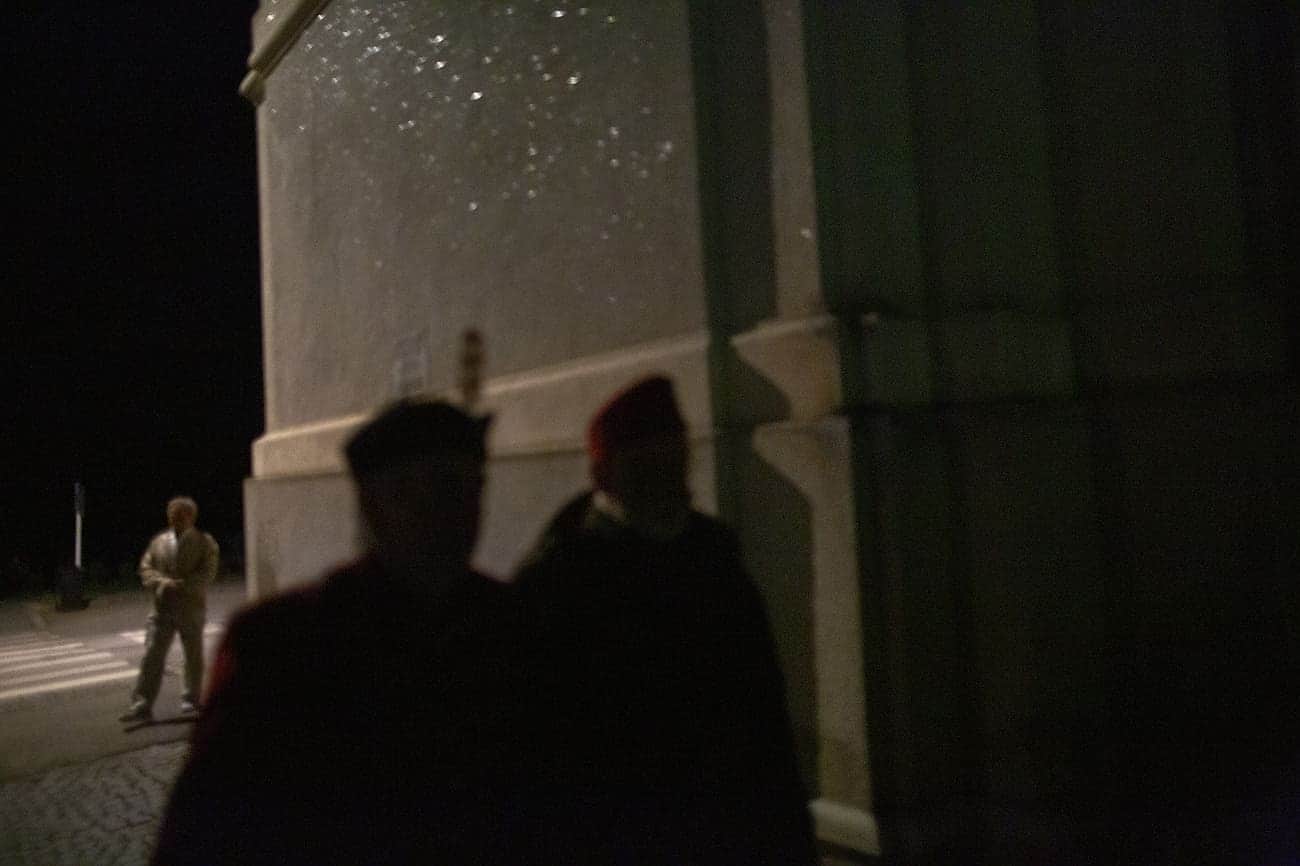
SUMULEU CIUC, ROMANIA - MAY 18: Hungarians from all over the world attending the early pilgrimage hold at Sumuleu Ciuc in Romania, as seen on May 18, 2018. Sumuleu Ciuc became a pilgrimage site in 1567, when Hungarian king John II Sigismund Zápolya wanted to convert the Székely population of the upper Csík to Protestantism. The Székelys refused to abandon the Catholic faith and resisted. A battle took place on a nearby field, on Saturday before Pentecost 1567, from which the Székelys emerged victorious. The monks saw this as a sign of the care of Virgin Mary, and since then, this event has been commemorated by a pilgrimage when the believers gather on Pentecost every year. Beside its religious importance, the pilgrimage has also become a community event demonstrating spiritual unity of Hungarian people living in and outside the historical region of Transylvania. Photography by Mugur Varzariu/Getty Images/Newsweek.
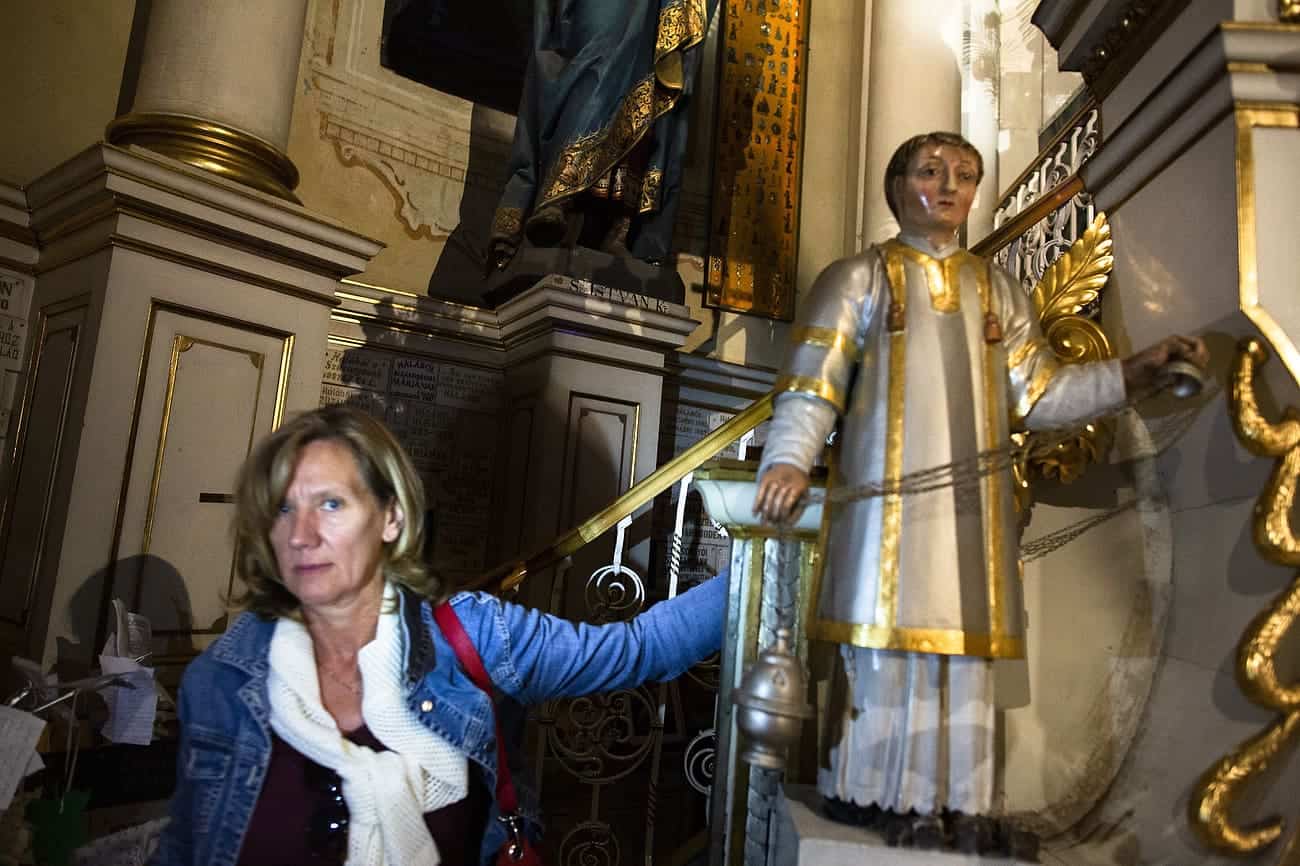
SUMULEU CIUC, ROMANIA - MAY 18: Hungarians from all over the world attending the early pilgrimage hold at Sumuleu Ciuc in Romania, as seen on May 18, 2018. Sumuleu Ciuc became a pilgrimage site in 1567, when Hungarian king John II Sigismund Zápolya wanted to convert the Székely population of the upper Csík to Protestantism. The Székelys refused to abandon the Catholic faith and resisted. A battle took place on a nearby field, on Saturday before Pentecost 1567, from which the Székelys emerged victorious. The monks saw this as a sign of the care of Virgin Mary, and since then, this event has been commemorated by a pilgrimage when the believers gather on Pentecost every year. Beside its religious importance, the pilgrimage has also become a community event demonstrating spiritual unity of Hungarian people living in and outside the historical region of Transylvania. Photography by Mugur Varzariu/Getty Images/Newsweek.
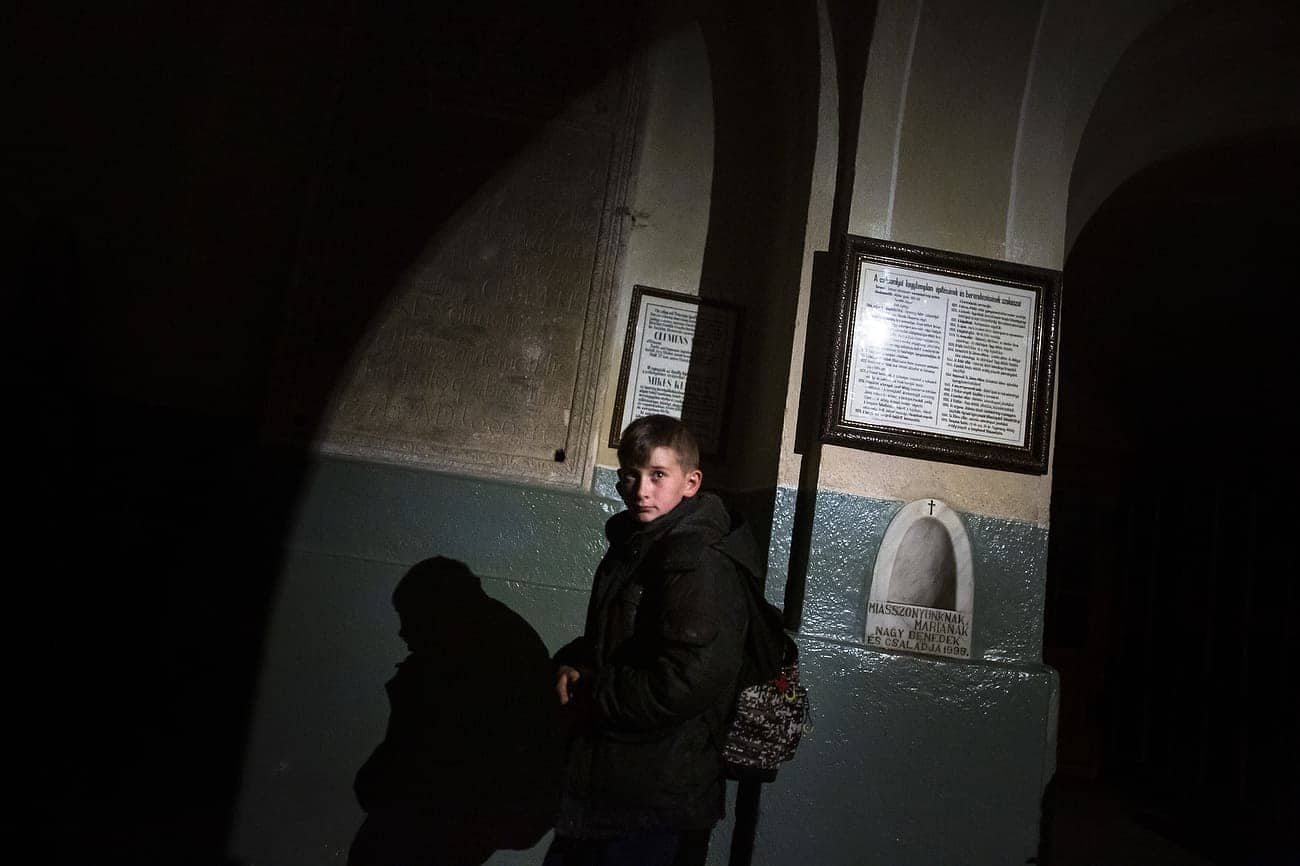
SUMULEU CIUC, ROMANIA - MAY 18: Hungarians from all over the world attending the early pilgrimage hold at Sumuleu Ciuc in Romania, as seen on May 18, 2018. Sumuleu Ciuc became a pilgrimage site in 1567, when Hungarian king John II Sigismund Zápolya wanted to convert the Székely population of the upper Csík to Protestantism. The Székelys refused to abandon the Catholic faith and resisted. A battle took place on a nearby field, on Saturday before Pentecost 1567, from which the Székelys emerged victorious. The monks saw this as a sign of the care of Virgin Mary, and since then, this event has been commemorated by a pilgrimage when the believers gather on Pentecost every year. Beside its religious importance, the pilgrimage has also become a community event demonstrating spiritual unity of Hungarian people living in and outside the historical region of Transylvania. Photography by Mugur Varzariu/Getty Images/Newsweek.
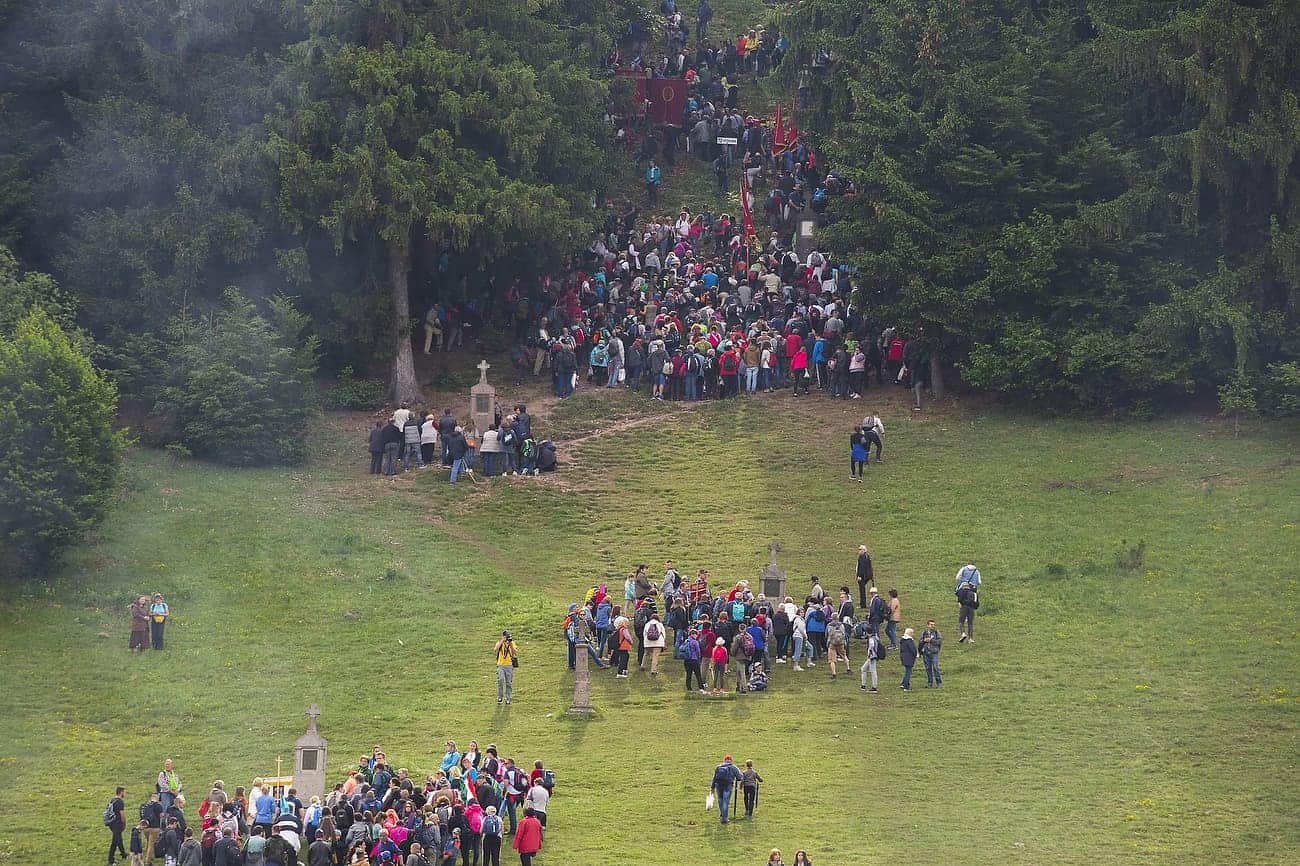
SUMULEU CIUC, ROMANIA - MAY 19: Hungarians from all over the world attending the early pilgrimage hold at Sumuleu Ciuc in Romania, as seen on May 19, 2018. Sumuleu Ciuc became a pilgrimage site in 1567, when Hungarian king John II Sigismund Zápolya wanted to convert the Székely population of the upper Csík to Protestantism. The Székelys refused to abandon the Catholic faith and resisted. A battle took place on a nearby field, on Saturday before Pentecost 1567, from which the Székelys emerged victorious. The monks saw this as a sign of the care of Virgin Mary, and since then, this event has been commemorated by a pilgrimage when the believers gather on Pentecost every year. Beside its religious importance, the pilgrimage has also become a community event demonstrating spiritual unity of Hungarian people living in and outside the historical region of Transylvania. Photography by Mugur Varzariu/Getty Images/Newsweek.
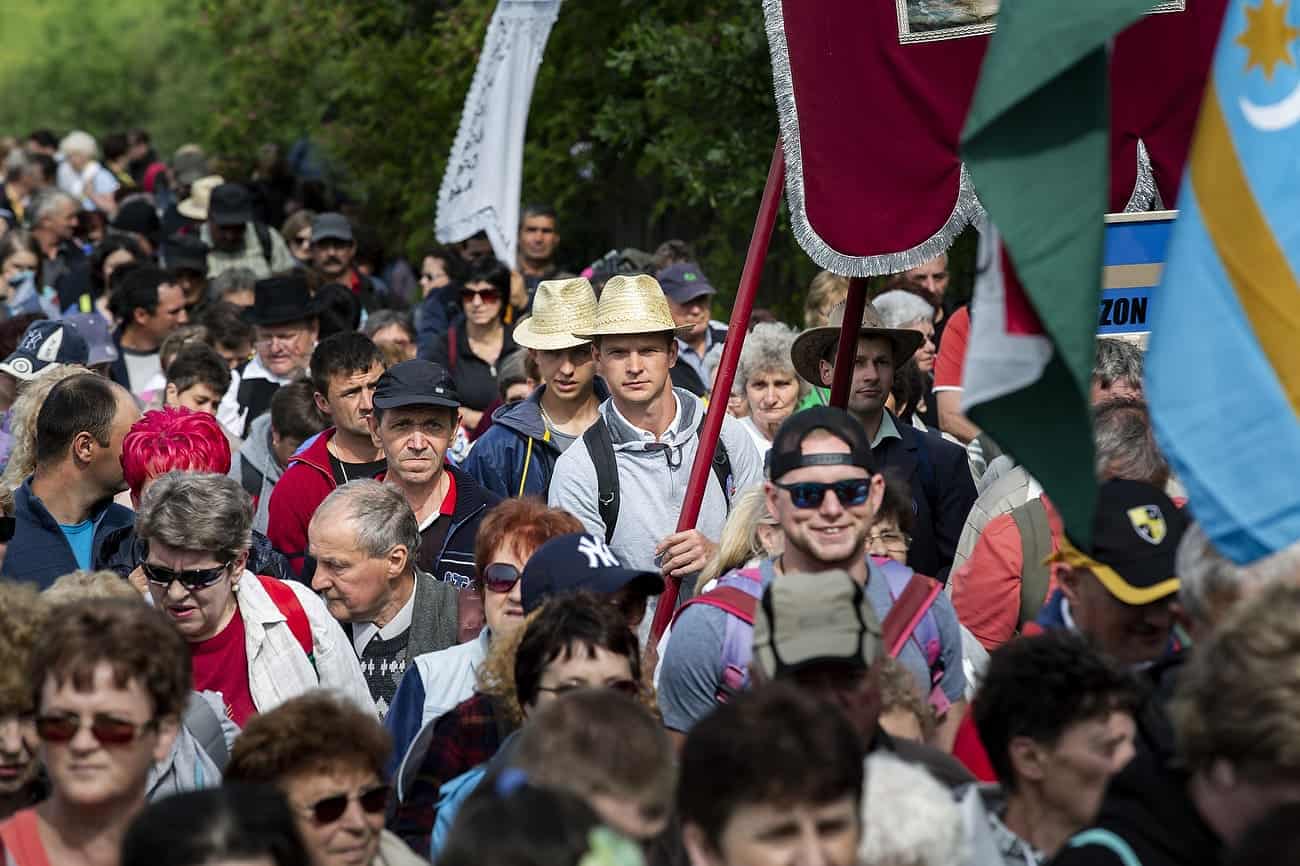
SUMULEU CIUC, ROMANIA - MAY 19: Hungarians from all over the world attending the early pilgrimage hold at Sumuleu Ciuc in Romania, as seen on May 19, 2018. Sumuleu Ciuc became a pilgrimage site in 1567, when Hungarian king John II Sigismund Zpolya wanted to convert the Szkely population of the upper Csk to Protestantism. The Szkelys refused to abandon the Catholic faith and resisted. A battle took place on a nearby field, on Saturday before Pentecost 1567, from which the Szkelys emerged victorious. The monks saw this as a sign of the care of Virgin Mary, and since then, this event has been commemorated by a pilgrimage when the believers gather on Pentecost every year. Beside its religious importance, the pilgrimage has also become a community event demonstrating spiritual unity of Hungarian people living in and outside the historical region of Transylvania. Photography by Mugur Varzariu/Getty Images/Newsweek.
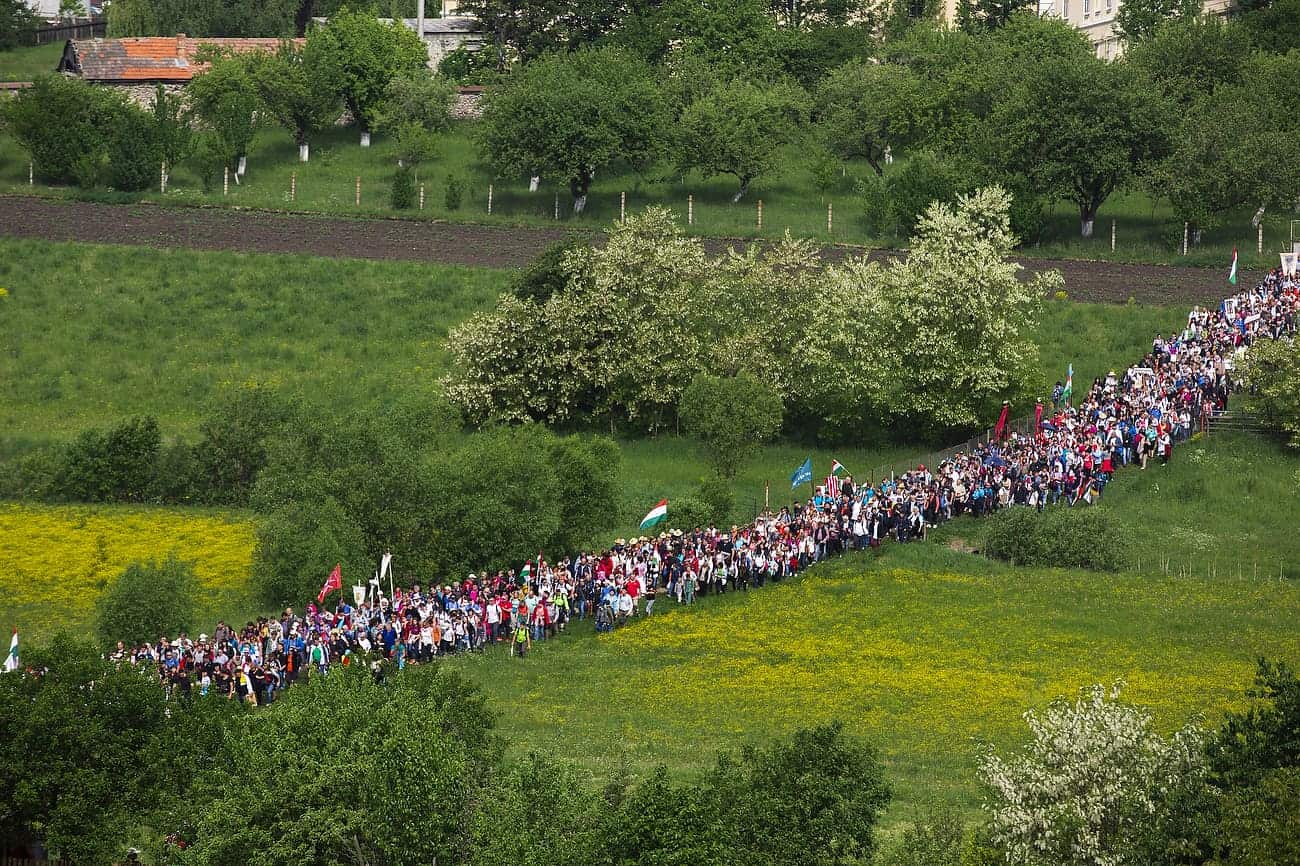
SUMULEU CIUC, ROMANIA - MAY 19: Hungarians from all over the world attending the early pilgrimage hold at Sumuleu Ciuc in Romania, as seen on May 19, 2018. Sumuleu Ciuc became a pilgrimage site in 1567, when Hungarian king John II Sigismund Zápolya wanted to convert the Székely population of the upper Csík to Protestantism. The Székelys refused to abandon the Catholic faith and resisted. A battle took place on a nearby field, on Saturday before Pentecost 1567, from which the Székelys emerged victorious. The monks saw this as a sign of the care of Virgin Mary, and since then, this event has been commemorated by a pilgrimage when the believers gather on Pentecost every year. Beside its religious importance, the pilgrimage has also become a community event demonstrating spiritual unity of Hungarian people living in and outside the historical region of Transylvania. Photography by Mugur Varzariu/Getty Images/Newsweek.
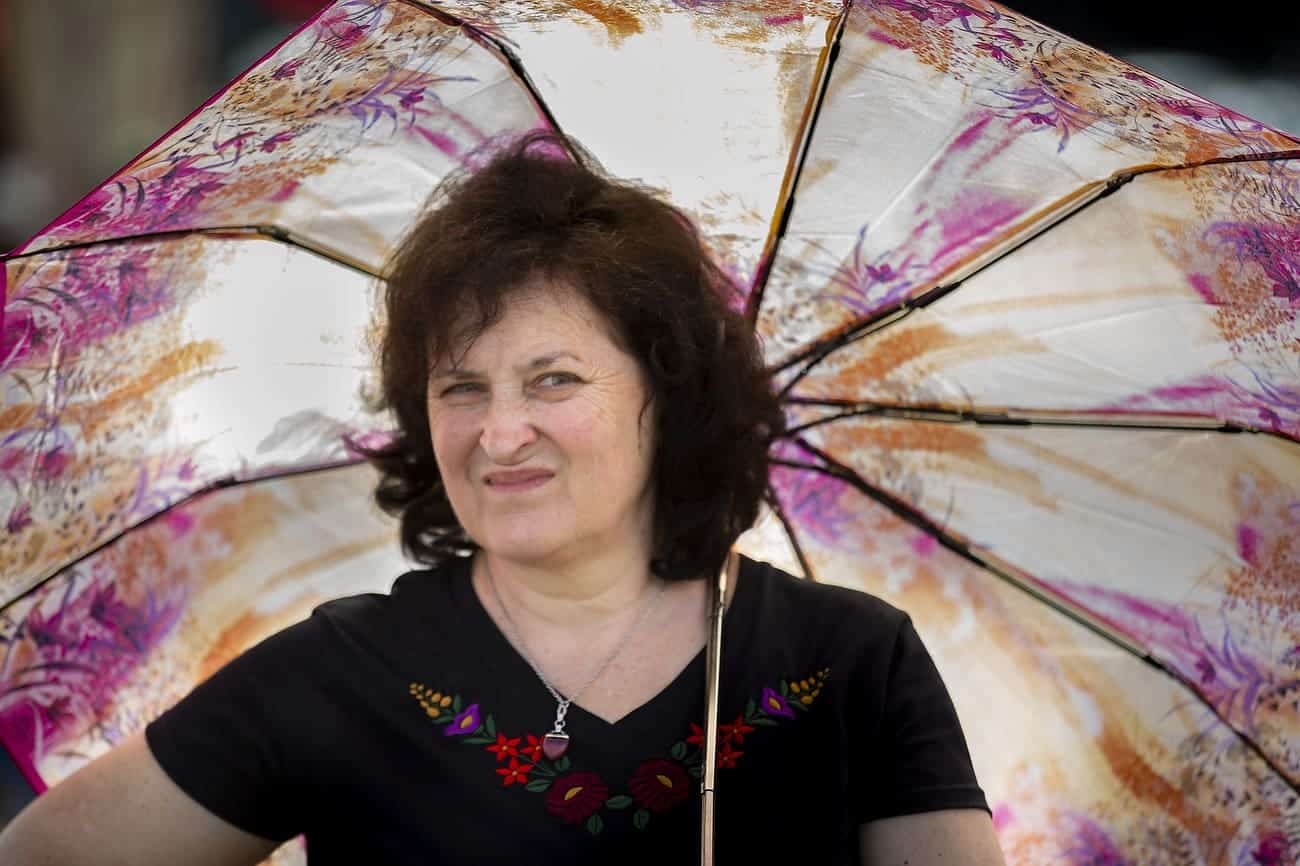
SUMULEU CIUC, ROMANIA - MAY 19: Hungarians from all over the world attending the early pilgrimage hold at Sumuleu Ciuc in Romania, as seen on May 19, 2018. Sumuleu Ciuc became a pilgrimage site in 1567, when Hungarian king John II Sigismund Zápolya wanted to convert the Székely population of the upper Csík to Protestantism. The Székelys refused to abandon the Catholic faith and resisted. A battle took place on a nearby field, on Saturday before Pentecost 1567, from which the Székelys emerged victorious. The monks saw this as a sign of the care of Virgin Mary, and since then, this event has been commemorated by a pilgrimage when the believers gather on Pentecost every year. Beside its religious importance, the pilgrimage has also become a community event demonstrating spiritual unity of Hungarian people living in and outside the historical region of Transylvania. Photography by Mugur Varzariu/Getty Images/Newsweek.
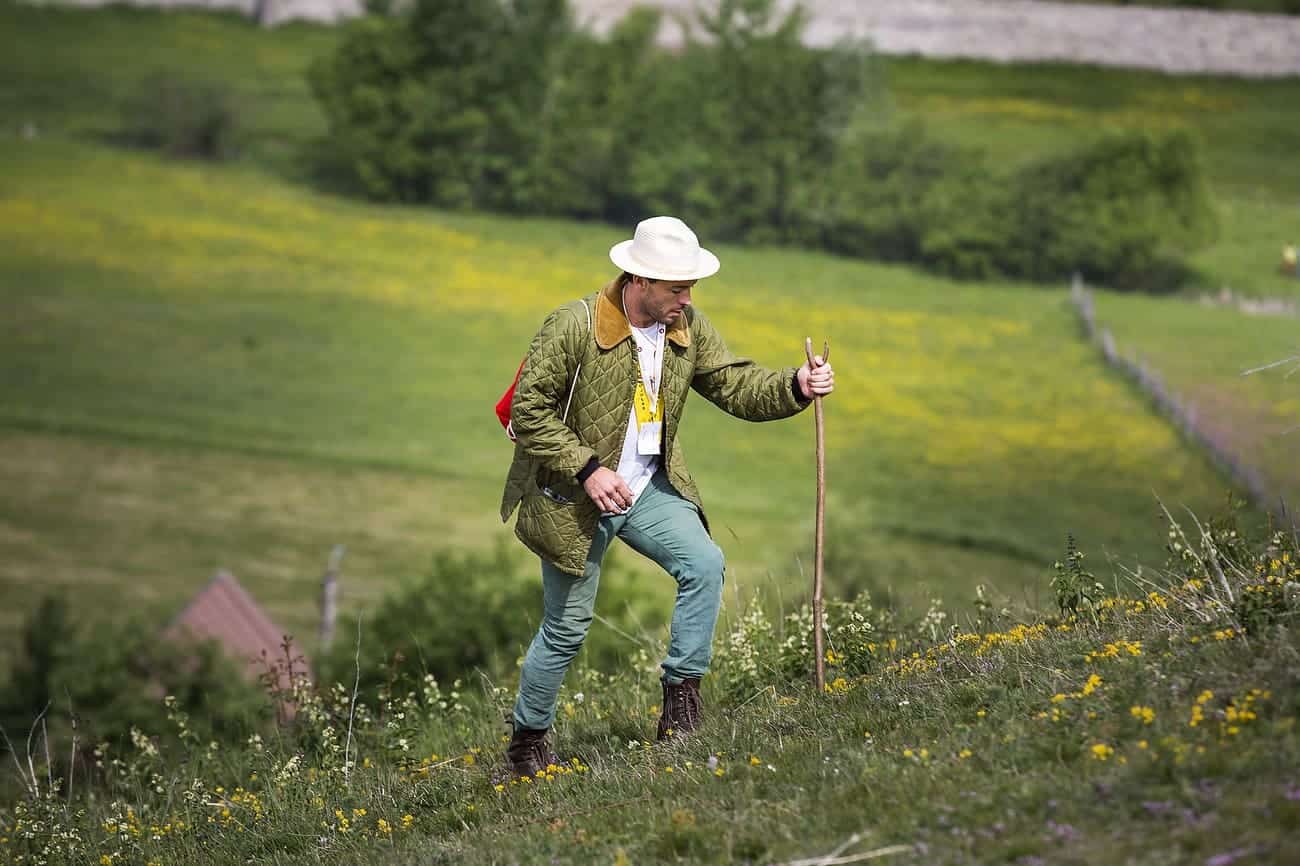
SUMULEU CIUC, ROMANIA - MAY 19: Hungarians from all over the world attending the early pilgrimage hold at Sumuleu Ciuc in Romania, as seen on May 19, 2018. Sumuleu Ciuc became a pilgrimage site in 1567, when Hungarian king John II Sigismund Zápolya wanted to convert the Székely population of the upper Csík to Protestantism. The Székelys refused to abandon the Catholic faith and resisted. A battle took place on a nearby field, on Saturday before Pentecost 1567, from which the Székelys emerged victorious. The monks saw this as a sign of the care of Virgin Mary, and since then, this event has been commemorated by a pilgrimage when the believers gather on Pentecost every year. Beside its religious importance, the pilgrimage has also become a community event demonstrating spiritual unity of Hungarian people living in and outside the historical region of Transylvania. Photography by Mugur Varzariu/Getty Images/Newsweek.
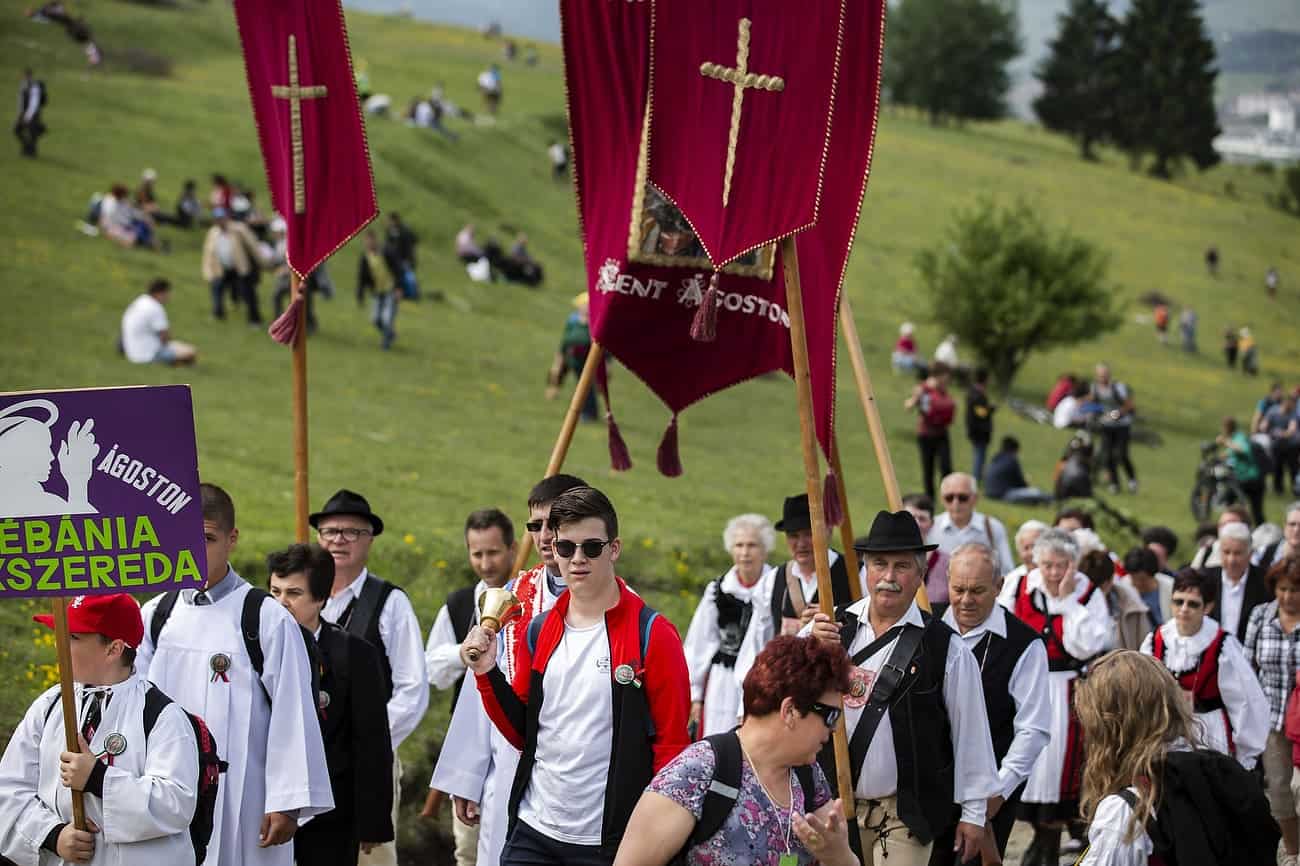
SUMULEU CIUC, ROMANIA - MAY 19: Hungarians from all over the world attending the early pilgrimage hold at Sumuleu Ciuc in Romania, as seen on May 19, 2018. Sumuleu Ciuc became a pilgrimage site in 1567, when Hungarian king John II Sigismund Zápolya wanted to convert the Székely population of the upper Csík to Protestantism. The Székelys refused to abandon the Catholic faith and resisted. A battle took place on a nearby field, on Saturday before Pentecost 1567, from which the Székelys emerged victorious. The monks saw this as a sign of the care of Virgin Mary, and since then, this event has been commemorated by a pilgrimage when the believers gather on Pentecost every year. Beside its religious importance, the pilgrimage has also become a community event demonstrating spiritual unity of Hungarian people living in and outside the historical region of Transylvania. Photography by Mugur Varzariu/Getty Images/Newsweek.

SUMULEU CIUC, ROMANIA - MAY 19: Hungarians from all over the world attending the early pilgrimage hold at Sumuleu Ciuc in Romania, as seen on May 19, 2018. Sumuleu Ciuc became a pilgrimage site in 1567, when Hungarian king John II Sigismund Zápolya wanted to convert the Székely population of the upper Csík to Protestantism. The Székelys refused to abandon the Catholic faith and resisted. A battle took place on a nearby field, on Saturday before Pentecost 1567, from which the Székelys emerged victorious. The monks saw this as a sign of the care of Virgin Mary, and since then, this event has been commemorated by a pilgrimage when the believers gather on Pentecost every year. Beside its religious importance, the pilgrimage has also become a community event demonstrating spiritual unity of Hungarian people living in and outside the historical region of Transylvania. Photography by Mugur Varzariu/Getty Images/Newsweek.
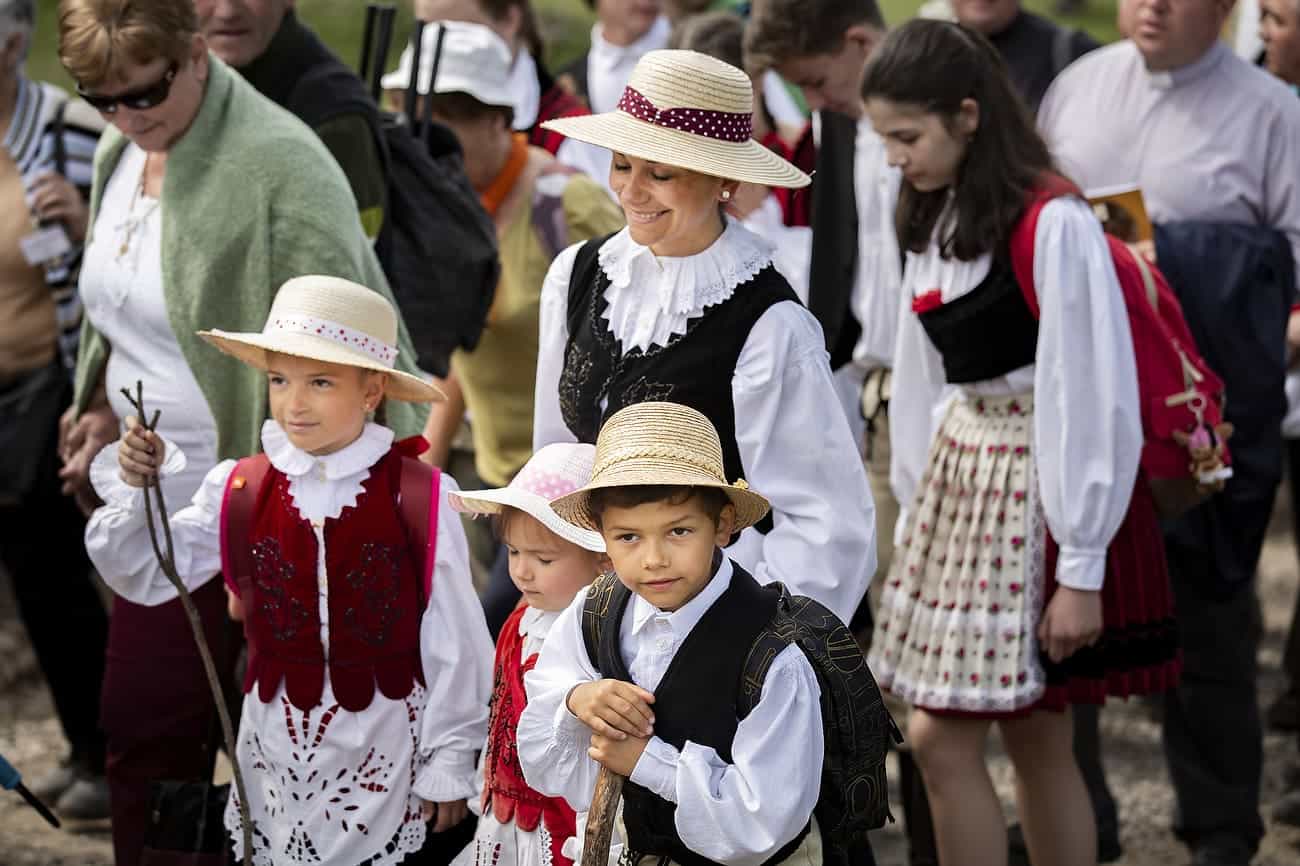
SUMULEU CIUC, ROMANIA - MAY 19: Hungarians from all over the world attending the early pilgrimage hold at Sumuleu Ciuc in Romania, as seen on May 19, 2018. Sumuleu Ciuc became a pilgrimage site in 1567, when Hungarian king John II Sigismund Zápolya wanted to convert the Székely population of the upper Csík to Protestantism. The Székelys refused to abandon the Catholic faith and resisted. A battle took place on a nearby field, on Saturday before Pentecost 1567, from which the Székelys emerged victorious. The monks saw this as a sign of the care of Virgin Mary, and since then, this event has been commemorated by a pilgrimage when the believers gather on Pentecost every year. Beside its religious importance, the pilgrimage has also become a community event demonstrating spiritual unity of Hungarian people living in and outside the historical region of Transylvania. Photography by Mugur Varzariu/Getty Images/Newsweek.
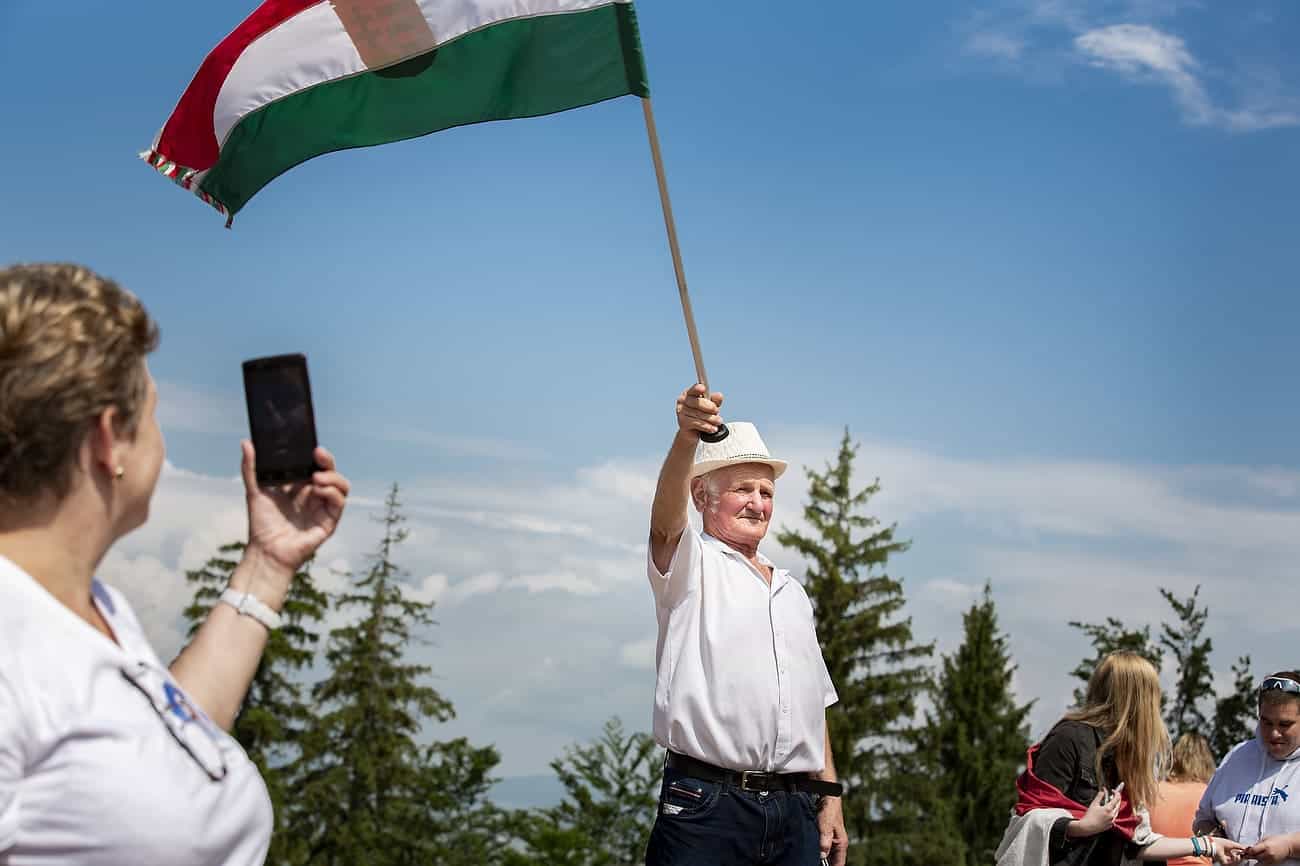
SUMULEU CIUC, ROMANIA - MAY 19: Hungarians from all over the world attending the early pilgrimage hold at Sumuleu Ciuc in Romania, as seen on May 19, 2018. Sumuleu Ciuc became a pilgrimage site in 1567, when Hungarian king John II Sigismund Zápolya wanted to convert the Székely population of the upper Csík to Protestantism. The Székelys refused to abandon the Catholic faith and resisted. A battle took place on a nearby field, on Saturday before Pentecost 1567, from which the Székelys emerged victorious. The monks saw this as a sign of the care of Virgin Mary, and since then, this event has been commemorated by a pilgrimage when the believers gather on Pentecost every year. Beside its religious importance, the pilgrimage has also become a community event demonstrating spiritual unity of Hungarian people living in and outside the historical region of Transylvania. Photography by Mugur Varzariu/Getty Images/Newsweek.
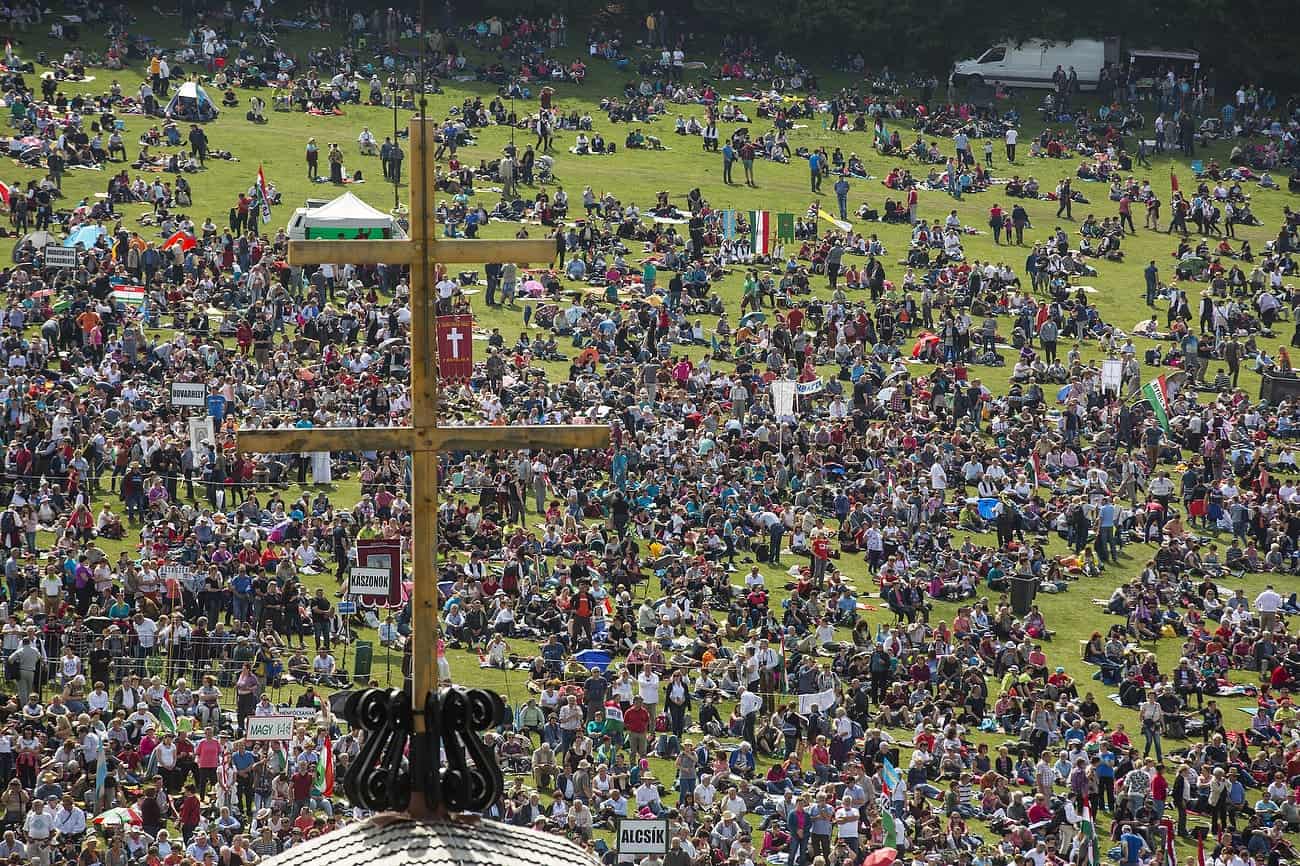
SUMULEU CIUC, ROMANIA - MAY 19: Hungarians from all over the world attending the early pilgrimage hold at Sumuleu Ciuc in Romania, as seen on May 19, 2018. Sumuleu Ciuc became a pilgrimage site in 1567, when Hungarian king John II Sigismund Zápolya wanted to convert the Székely population of the upper Csík to Protestantism. The Székelys refused to abandon the Catholic faith and resisted. A battle took place on a nearby field, on Saturday before Pentecost 1567, from which the Székelys emerged victorious. The monks saw this as a sign of the care of Virgin Mary, and since then, this event has been commemorated by a pilgrimage when the believers gather on Pentecost every year. Beside its religious importance, the pilgrimage has also become a community event demonstrating spiritual unity of Hungarian people living in and outside the historical region of Transylvania. Photography by Mugur Varzariu/Getty Images/Newsweek.
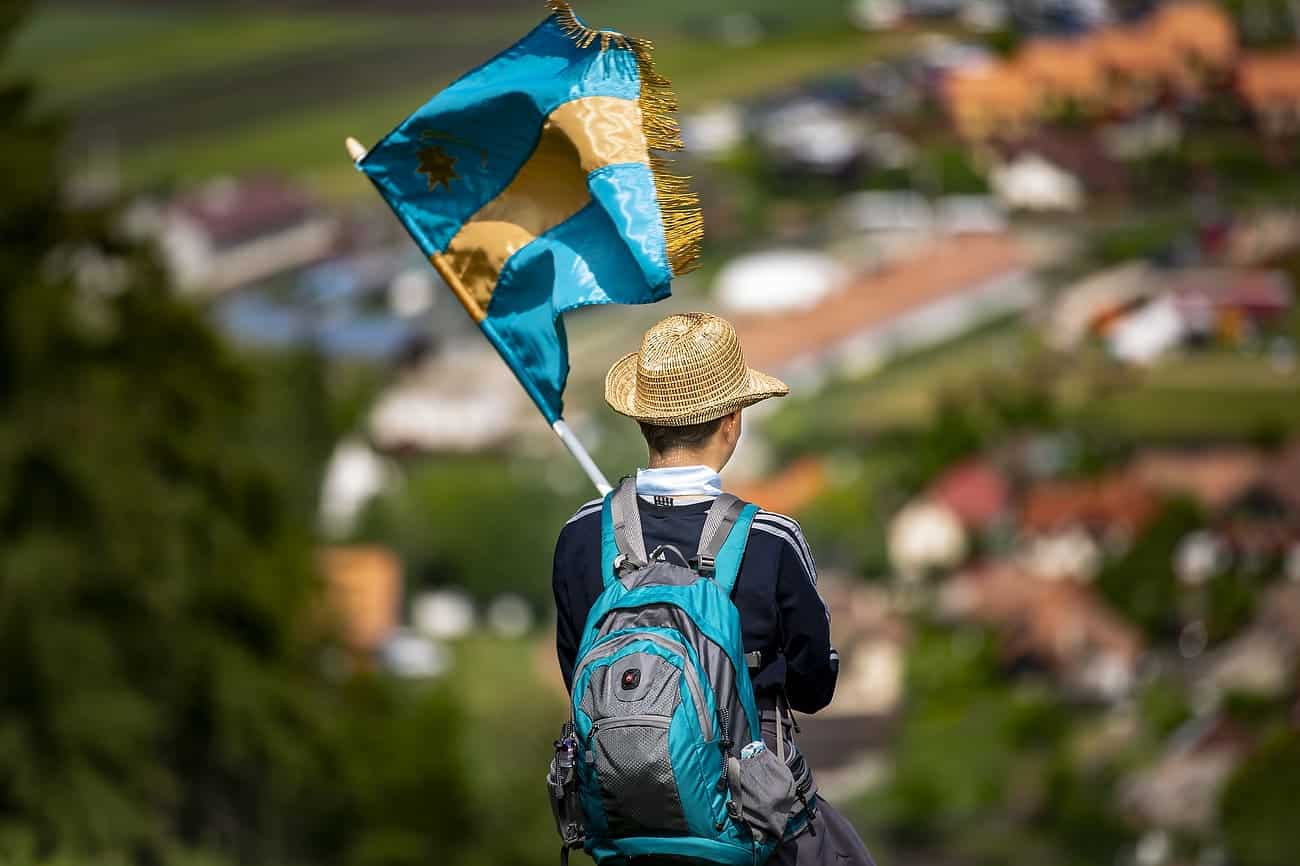
SUMULEU CIUC, ROMANIA - MAY 19: Hungarians from all over the world attending the early pilgrimage hold at Sumuleu Ciuc in Romania, as seen on May 19, 2018. Sumuleu Ciuc became a pilgrimage site in 1567, when Hungarian king John II Sigismund Zápolya wanted to convert the Székely population of the upper Csík to Protestantism. The Székelys refused to abandon the Catholic faith and resisted. A battle took place on a nearby field, on Saturday before Pentecost 1567, from which the Székelys emerged victorious. The monks saw this as a sign of the care of Virgin Mary, and since then, this event has been commemorated by a pilgrimage when the believers gather on Pentecost every year. Beside its religious importance, the pilgrimage has also become a community event demonstrating spiritual unity of Hungarian people living in and outside the historical region of Transylvania. Photography by Mugur Varzariu/Getty Images/Newsweek.

SUMULEU CIUC, ROMANIA - MAY 19: Hungarians from all over the world attending the early pilgrimage hold at Sumuleu Ciuc in Romania, as seen on May 19, 2018. Sumuleu Ciuc became a pilgrimage site in 1567, when Hungarian king John II Sigismund Zápolya wanted to convert the Székely population of the upper Csík to Protestantism. The Székelys refused to abandon the Catholic faith and resisted. A battle took place on a nearby field, on Saturday before Pentecost 1567, from which the Székelys emerged victorious. The monks saw this as a sign of the care of Virgin Mary, and since then, this event has been commemorated by a pilgrimage when the believers gather on Pentecost every year. Beside its religious importance, the pilgrimage has also become a community event demonstrating spiritual unity of Hungarian people living in and outside the historical region of Transylvania. Photography by Mugur Varzariu/Getty Images/Newsweek.
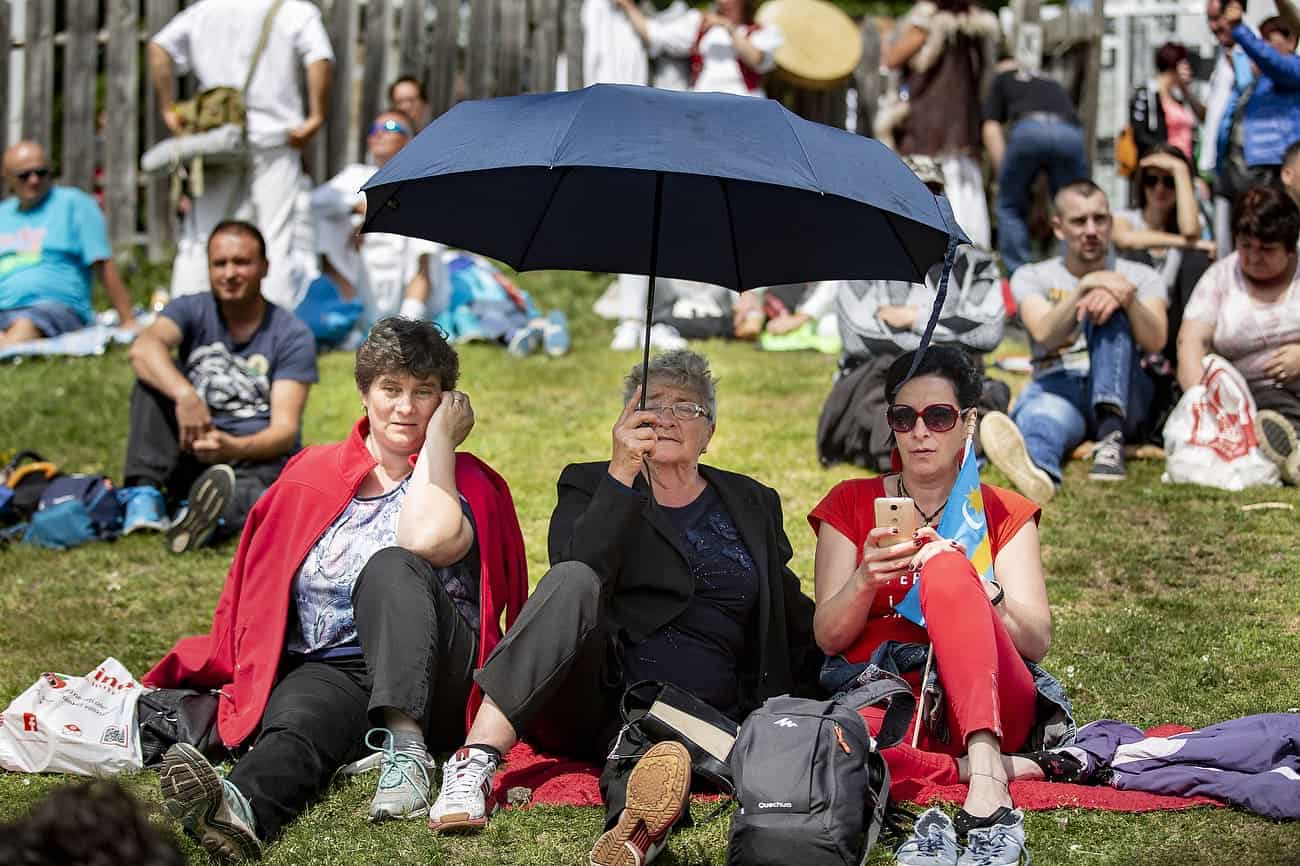
SUMULEU CIUC, ROMANIA - MAY 19: Hungarians from all over the world attending the early pilgrimage hold at Sumuleu Ciuc in Romania, as seen on May 19, 2018. Sumuleu Ciuc became a pilgrimage site in 1567, when Hungarian king John II Sigismund Zápolya wanted to convert the Székely population of the upper Csík to Protestantism. The Székelys refused to abandon the Catholic faith and resisted. A battle took place on a nearby field, on Saturday before Pentecost 1567, from which the Székelys emerged victorious. The monks saw this as a sign of the care of Virgin Mary, and since then, this event has been commemorated by a pilgrimage when the believers gather on Pentecost every year. Beside its religious importance, the pilgrimage has also become a community event demonstrating spiritual unity of Hungarian people living in and outside the historical region of Transylvania. Photography by Mugur Varzariu/Getty Images/Newsweek.

SUMULEU CIUC, ROMANIA - MAY 19: Hungarians from all over the world attending the early pilgrimage hold at Sumuleu Ciuc in Romania, as seen on May 19, 2018. Sumuleu Ciuc became a pilgrimage site in 1567, when Hungarian king John II Sigismund Zápolya wanted to convert the Székely population of the upper Csík to Protestantism. The Székelys refused to abandon the Catholic faith and resisted. A battle took place on a nearby field, on Saturday before Pentecost 1567, from which the Székelys emerged victorious. The monks saw this as a sign of the care of Virgin Mary, and since then, this event has been commemorated by a pilgrimage when the believers gather on Pentecost every year. Beside its religious importance, the pilgrimage has also become a community event demonstrating spiritual unity of Hungarian people living in and outside the historical region of Transylvania. Photography by Mugur Varzariu/Getty Images/Newsweek.
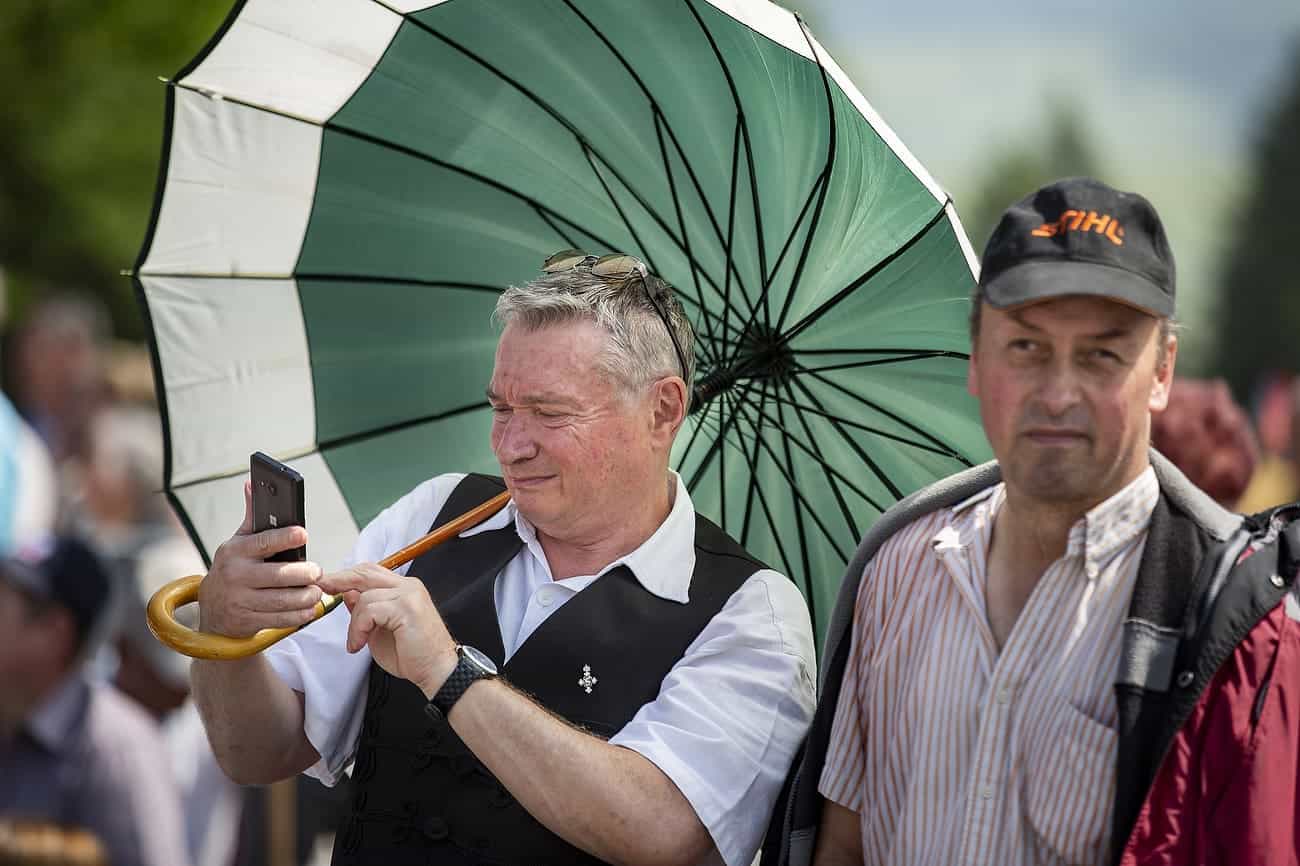
SUMULEU CIUC, ROMANIA - MAY 19: Hungarians from all over the world attending the early pilgrimage hold at Sumuleu Ciuc in Romania, as seen on May 19, 2018. Sumuleu Ciuc became a pilgrimage site in 1567, when Hungarian king John II Sigismund Zápolya wanted to convert the Székely population of the upper Csík to Protestantism. The Székelys refused to abandon the Catholic faith and resisted. A battle took place on a nearby field, on Saturday before Pentecost 1567, from which the Székelys emerged victorious. The monks saw this as a sign of the care of Virgin Mary, and since then, this event has been commemorated by a pilgrimage when the believers gather on Pentecost every year. Beside its religious importance, the pilgrimage has also become a community event demonstrating spiritual unity of Hungarian people living in and outside the historical region of Transylvania. Photography by Mugur Varzariu/Getty Images/Newsweek.
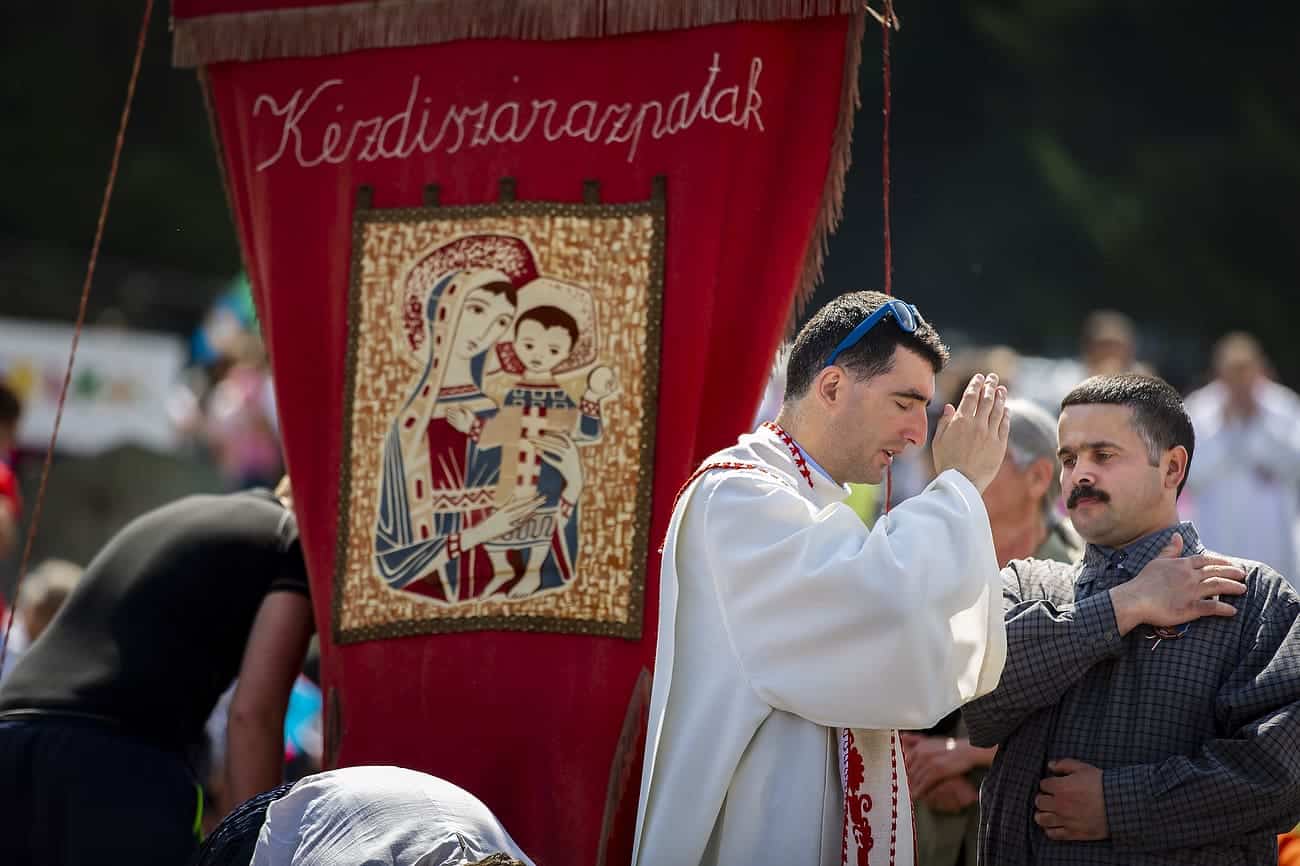
SUMULEU CIUC, ROMANIA - MAY 19: Hungarians from all over the world attending the early pilgrimage hold at Sumuleu Ciuc in Romania, as seen on May 19, 2018. Sumuleu Ciuc became a pilgrimage site in 1567, when Hungarian king John II Sigismund Zpolya wanted to convert the Szkely population of the upper Csk to Protestantism. The Szkelys refused to abandon the Catholic faith and resisted. A battle took place on a nearby field, on Saturday before Pentecost 1567, from which the Szkelys emerged victorious. The monks saw this as a sign of the care of Virgin Mary, and since then, this event has been commemorated by a pilgrimage when the believers gather on Pentecost every year. Beside its religious importance, the pilgrimage has also become a community event demonstrating spiritual unity of Hungarian people living in and outside the historical region of Transylvania. Photography by Mugur Varzariu/Getty Images/Newsweek.

SUMULEU CIUC, ROMANIA - MAY 19: Hungarians from all over the world attending the early pilgrimage hold at Sumuleu Ciuc in Romania, as seen on May 19, 2018. Sumuleu Ciuc became a pilgrimage site in 1567, when Hungarian king John II Sigismund Zápolya wanted to convert the Székely population of the upper Csík to Protestantism. The Székelys refused to abandon the Catholic faith and resisted. A battle took place on a nearby field, on Saturday before Pentecost 1567, from which the Székelys emerged victorious. The monks saw this as a sign of the care of Virgin Mary, and since then, this event has been commemorated by a pilgrimage when the believers gather on Pentecost every year. Beside its religious importance, the pilgrimage has also become a community event demonstrating spiritual unity of Hungarian people living in and outside the historical region of Transylvania. Photography by Mugur Varzariu/Getty Images/Newsweek.
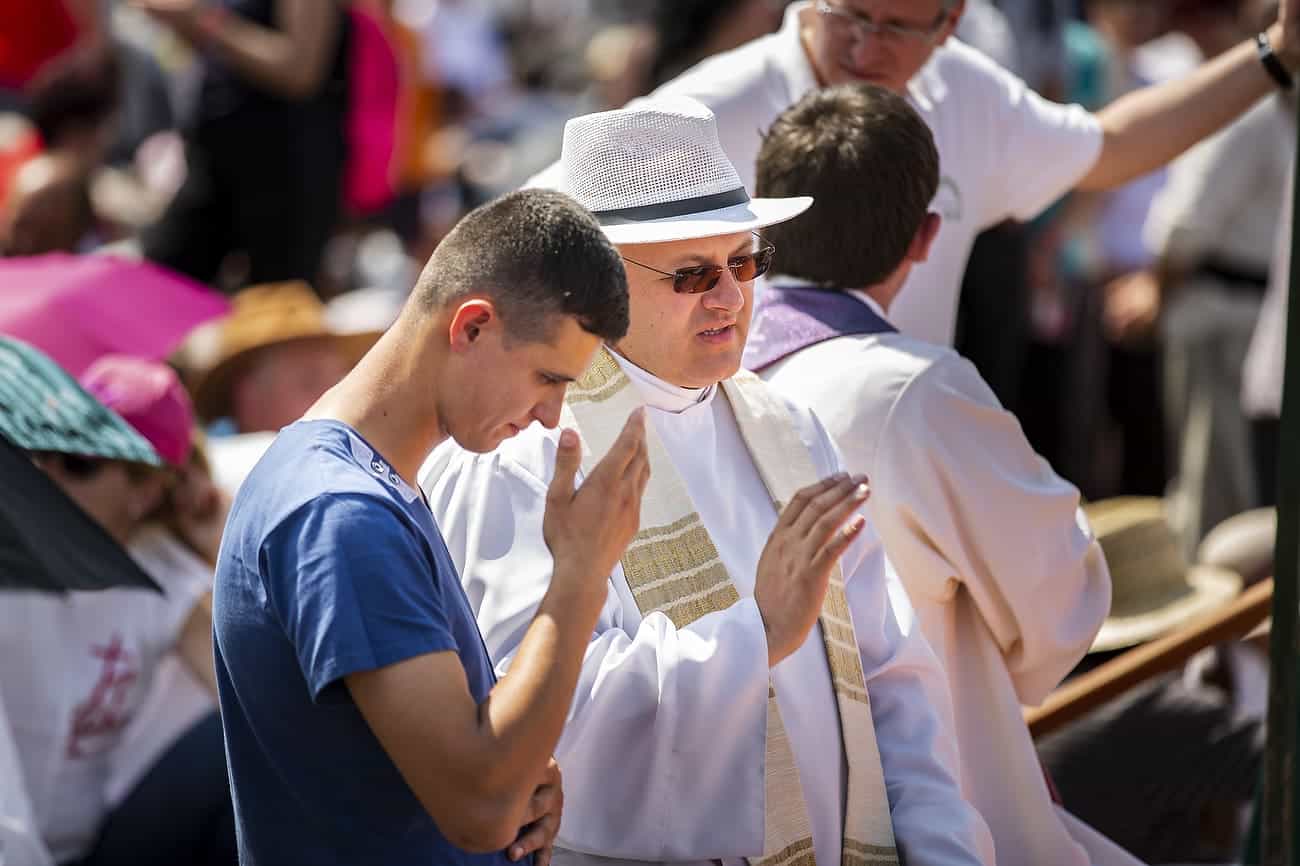
SUMULEU CIUC, ROMANIA - MAY 19: Hungarians from all over the world attending the early pilgrimage hold at Sumuleu Ciuc in Romania, as seen on May 19, 2018. Sumuleu Ciuc became a pilgrimage site in 1567, when Hungarian king John II Sigismund Zápolya wanted to convert the Székely population of the upper Csík to Protestantism. The Székelys refused to abandon the Catholic faith and resisted. A battle took place on a nearby field, on Saturday before Pentecost 1567, from which the Székelys emerged victorious. The monks saw this as a sign of the care of Virgin Mary, and since then, this event has been commemorated by a pilgrimage when the believers gather on Pentecost every year. Beside its religious importance, the pilgrimage has also become a community event demonstrating spiritual unity of Hungarian people living in and outside the historical region of Transylvania. Photography by Mugur Varzariu/Getty Images/Newsweek.
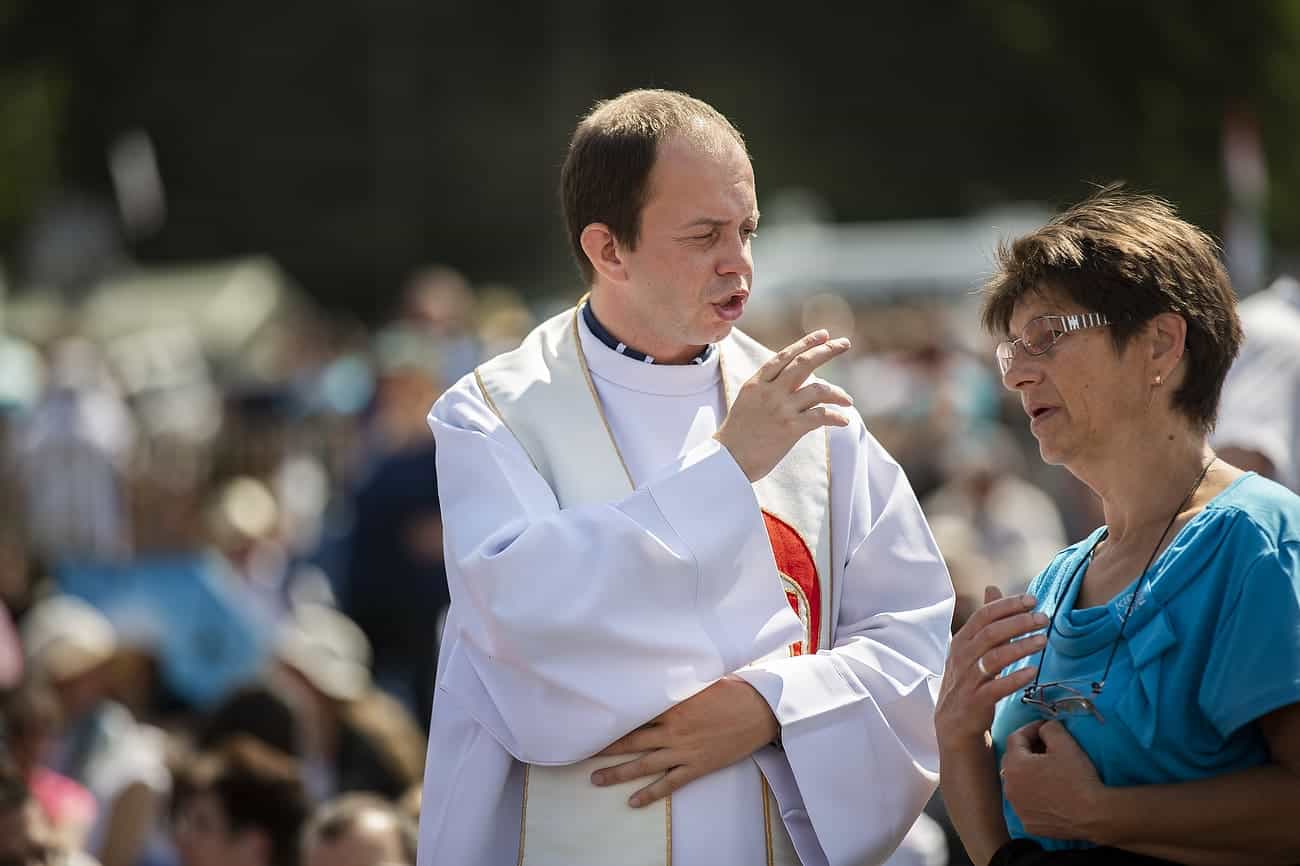
SUMULEU CIUC, ROMANIA - MAY 19: Hungarians from all over the world attending the early pilgrimage hold at Sumuleu Ciuc in Romania, as seen on May 19, 2018. Sumuleu Ciuc became a pilgrimage site in 1567, when Hungarian king John II Sigismund Zápolya wanted to convert the Székely population of the upper Csík to Protestantism. The Székelys refused to abandon the Catholic faith and resisted. A battle took place on a nearby field, on Saturday before Pentecost 1567, from which the Székelys emerged victorious. The monks saw this as a sign of the care of Virgin Mary, and since then, this event has been commemorated by a pilgrimage when the believers gather on Pentecost every year. Beside its religious importance, the pilgrimage has also become a community event demonstrating spiritual unity of Hungarian people living in and outside the historical region of Transylvania. Photography by Mugur Varzariu/Getty Images/Newsweek.
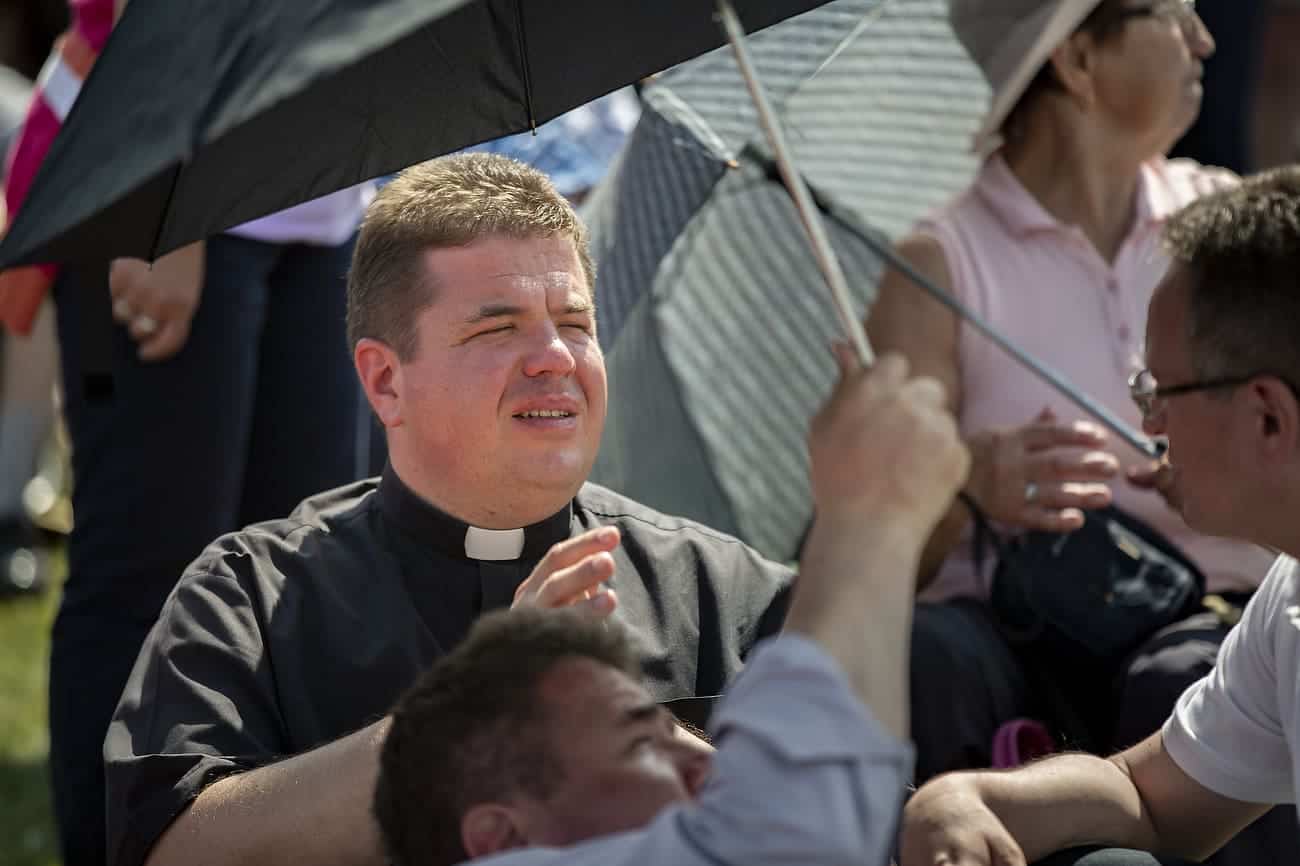
SUMULEU CIUC, ROMANIA - MAY 19: Hungarians from all over the world attending the early pilgrimage hold at Sumuleu Ciuc in Romania, as seen on May 19, 2018. Sumuleu Ciuc became a pilgrimage site in 1567, when Hungarian king John II Sigismund Zápolya wanted to convert the Székely population of the upper Csík to Protestantism. The Székelys refused to abandon the Catholic faith and resisted. A battle took place on a nearby field, on Saturday before Pentecost 1567, from which the Székelys emerged victorious. The monks saw this as a sign of the care of Virgin Mary, and since then, this event has been commemorated by a pilgrimage when the believers gather on Pentecost every year. Beside its religious importance, the pilgrimage has also become a community event demonstrating spiritual unity of Hungarian people living in and outside the historical region of Transylvania. Photography by Mugur Varzariu/Getty Images/Newsweek.

SUMULEU CIUC, ROMANIA - MAY 19: Hungarians from all over the world attending the early pilgrimage hold at Sumuleu Ciuc in Romania, as seen on May 19, 2018. Sumuleu Ciuc became a pilgrimage site in 1567, when Hungarian king John II Sigismund Zpolya wanted to convert the Szkely population of the upper Csk to Protestantism. The Szkelys refused to abandon the Catholic faith and resisted. A battle took place on a nearby field, on Saturday before Pentecost 1567, from which the Szkelys emerged victorious. The monks saw this as a sign of the care of Virgin Mary, and since then, this event has been commemorated by a pilgrimage when the believers gather on Pentecost every year. Beside its religious importance, the pilgrimage has also become a community event demonstrating spiritual unity of Hungarian people living in and outside the historical region of Transylvania. Photography by Mugur Varzariu/Getty Images/Newsweek.

SUMULEU CIUC, ROMANIA - MAY 19: Hungarians from all over the world attending the early pilgrimage hold at Sumuleu Ciuc in Romania, as seen on May 19, 2018. Sumuleu Ciuc became a pilgrimage site in 1567, when Hungarian king John II Sigismund Zápolya wanted to convert the Székely population of the upper Csík to Protestantism. The Székelys refused to abandon the Catholic faith and resisted. A battle took place on a nearby field, on Saturday before Pentecost 1567, from which the Székelys emerged victorious. The monks saw this as a sign of the care of Virgin Mary, and since then, this event has been commemorated by a pilgrimage when the believers gather on Pentecost every year. Beside its religious importance, the pilgrimage has also become a community event demonstrating spiritual unity of Hungarian people living in and outside the historical region of Transylvania. Photography by Mugur Varzariu/Getty Images/Newsweek.

SUMULEU CIUC, ROMANIA - MAY 19: Hungarians from all over the world attending the early pilgrimage hold at Sumuleu Ciuc in Romania, as seen on May 19, 2018. Sumuleu Ciuc became a pilgrimage site in 1567, when Hungarian king John II Sigismund Zápolya wanted to convert the Székely population of the upper Csík to Protestantism. The Székelys refused to abandon the Catholic faith and resisted. A battle took place on a nearby field, on Saturday before Pentecost 1567, from which the Székelys emerged victorious. The monks saw this as a sign of the care of Virgin Mary, and since then, this event has been commemorated by a pilgrimage when the believers gather on Pentecost every year. Beside its religious importance, the pilgrimage has also become a community event demonstrating spiritual unity of Hungarian people living in and outside the historical region of Transylvania. Photography by Mugur Varzariu/Getty Images/Newsweek.
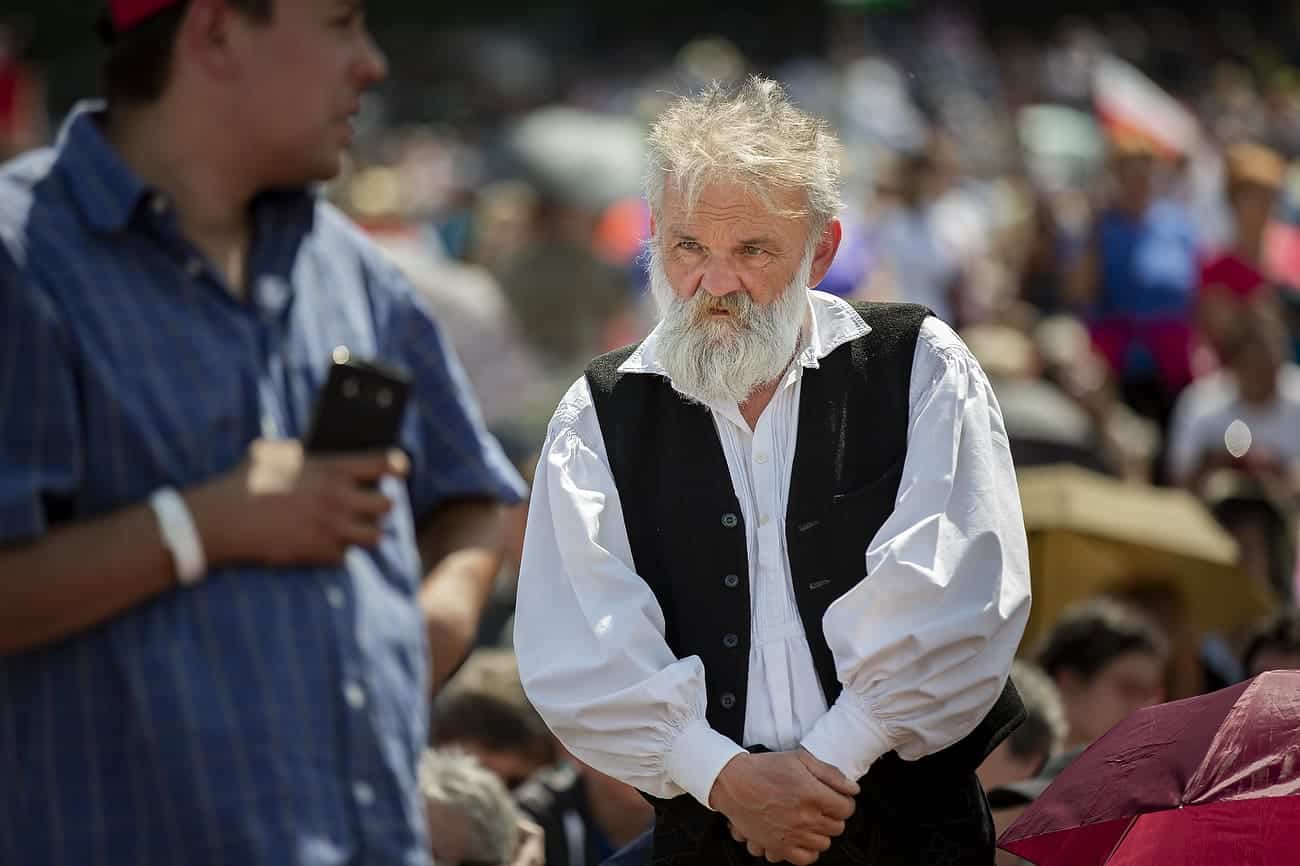
SUMULEU CIUC, ROMANIA - MAY 19: Hungarians from all over the world attending the early pilgrimage hold at Sumuleu Ciuc in Romania, as seen on May 19, 2018. Sumuleu Ciuc became a pilgrimage site in 1567, when Hungarian king John II Sigismund Zápolya wanted to convert the Székely population of the upper Csík to Protestantism. The Székelys refused to abandon the Catholic faith and resisted. A battle took place on a nearby field, on Saturday before Pentecost 1567, from which the Székelys emerged victorious. The monks saw this as a sign of the care of Virgin Mary, and since then, this event has been commemorated by a pilgrimage when the believers gather on Pentecost every year. Beside its religious importance, the pilgrimage has also become a community event demonstrating spiritual unity of Hungarian people living in and outside the historical region of Transylvania. Photography by Mugur Varzariu/Getty Images/Newsweek.
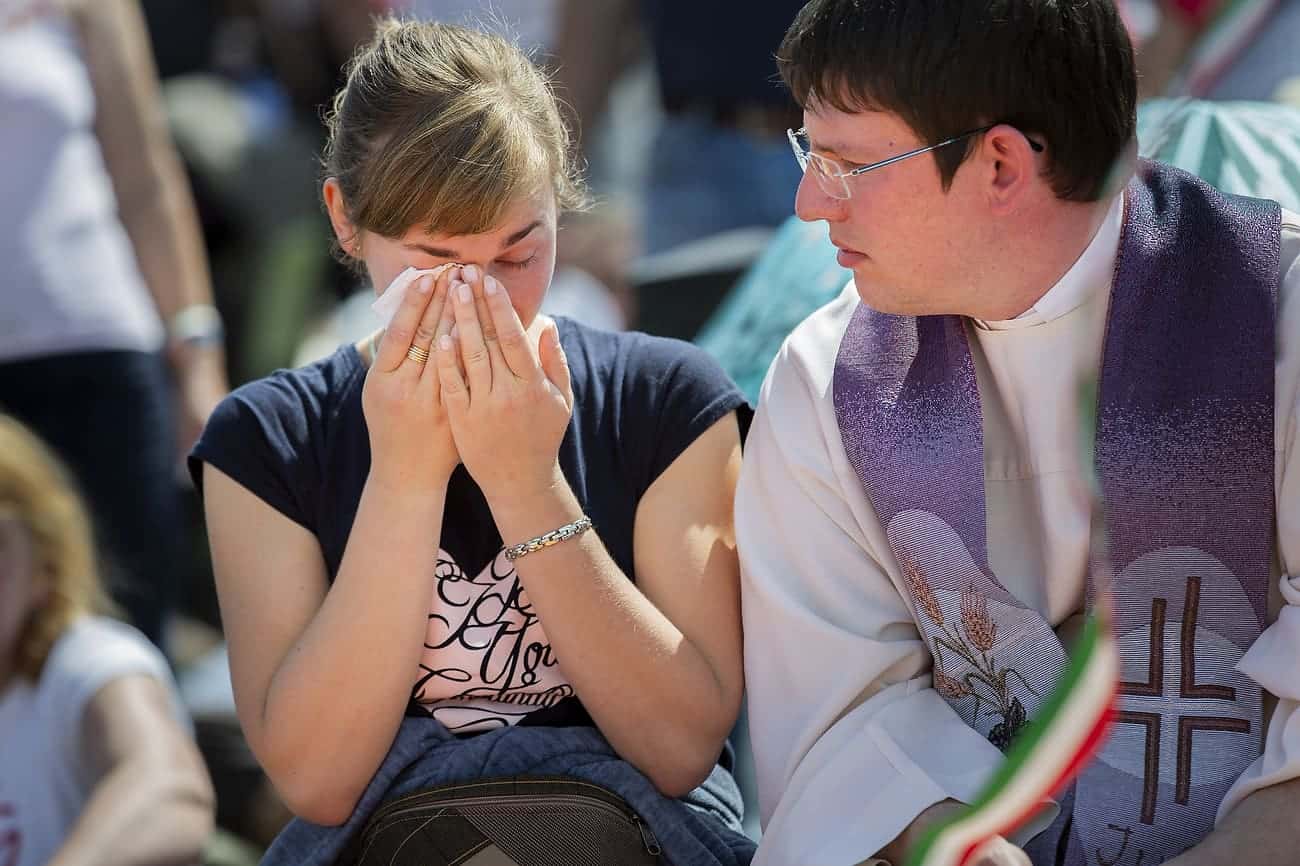
SUMULEU CIUC, ROMANIA - MAY 19: Hungarians from all over the world attending the early pilgrimage hold at Sumuleu Ciuc in Romania, as seen on May 19, 2018. Sumuleu Ciuc became a pilgrimage site in 1567, when Hungarian king John II Sigismund Zápolya wanted to convert the Székely population of the upper Csík to Protestantism. The Székelys refused to abandon the Catholic faith and resisted. A battle took place on a nearby field, on Saturday before Pentecost 1567, from which the Székelys emerged victorious. The monks saw this as a sign of the care of Virgin Mary, and since then, this event has been commemorated by a pilgrimage when the believers gather on Pentecost every year. Beside its religious importance, the pilgrimage has also become a community event demonstrating spiritual unity of Hungarian people living in and outside the historical region of Transylvania. Photography by Mugur Varzariu/Getty Images/Newsweek.
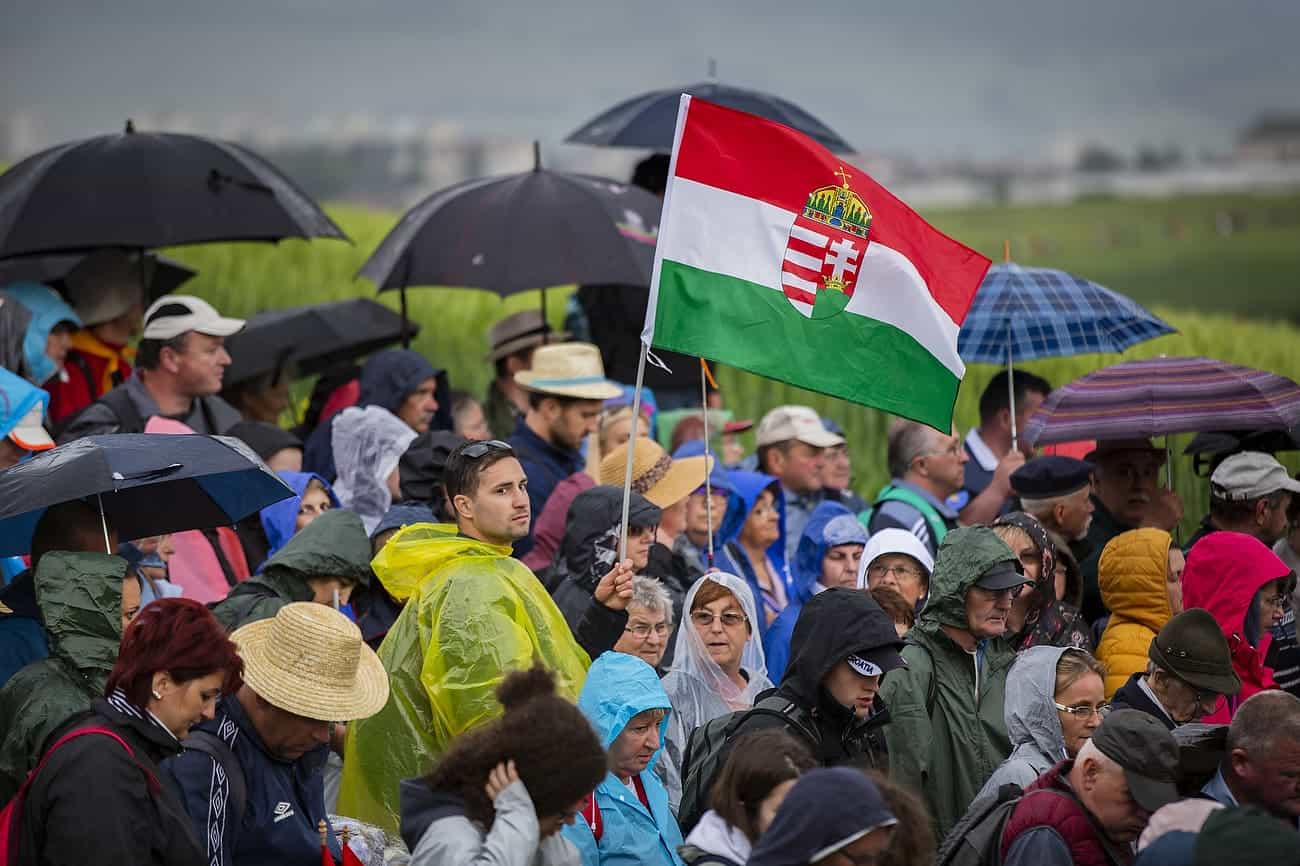
SUMULEU CIUC, ROMANIA - MAY 19: Hungarians from all over the world attending the early pilgrimage hold at Sumuleu Ciuc in Romania, as seen on May 19, 2018. Sumuleu Ciuc became a pilgrimage site in 1567, when Hungarian king John II Sigismund Zápolya wanted to convert the Székely population of the upper Csík to Protestantism. The Székelys refused to abandon the Catholic faith and resisted. A battle took place on a nearby field, on Saturday before Pentecost 1567, from which the Székelys emerged victorious. The monks saw this as a sign of the care of Virgin Mary, and since then, this event has been commemorated by a pilgrimage when the believers gather on Pentecost every year. Beside its religious importance, the pilgrimage has also become a community event demonstrating spiritual unity of Hungarian people living in and outside the historical region of Transylvania. Photography by Mugur Varzariu/Getty Images/Newsweek.
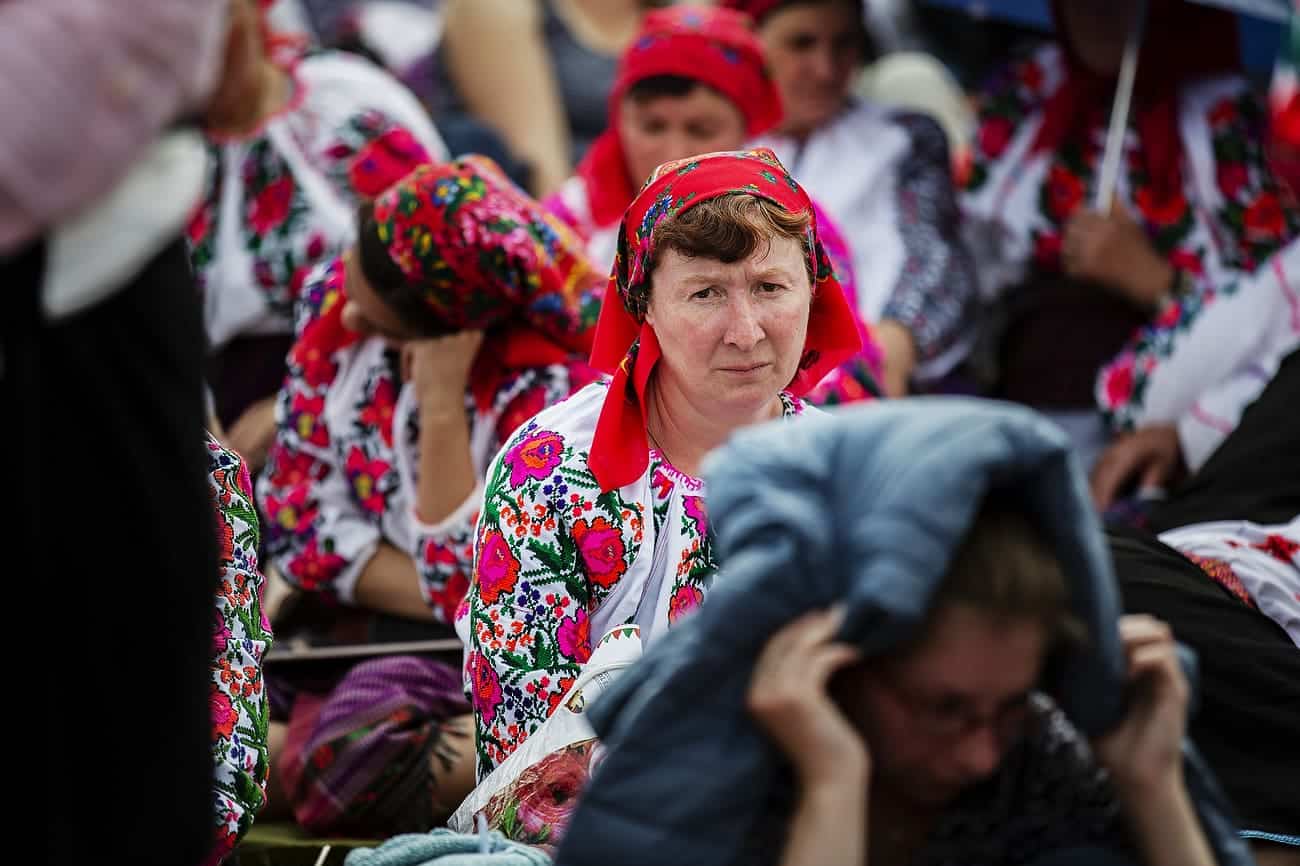
SUMULEU CIUC, ROMANIA - MAY 19: Hungarians from all over the world attending the early pilgrimage hold at Sumuleu Ciuc in Romania, as seen on May 19, 2018. Sumuleu Ciuc became a pilgrimage site in 1567, when Hungarian king John II Sigismund Zpolya wanted to convert the Szkely population of the upper Csk to Protestantism. The Szkelys refused to abandon the Catholic faith and resisted. A battle took place on a nearby field, on Saturday before Pentecost 1567, from which the Szkelys emerged victorious. The monks saw this as a sign of the care of Virgin Mary, and since then, this event has been commemorated by a pilgrimage when the believers gather on Pentecost every year. Beside its religious importance, the pilgrimage has also become a community event demonstrating spiritual unity of Hungarian people living in and outside the historical region of Transylvania. Photography by Mugur Varzariu/Getty Images/Newsweek.
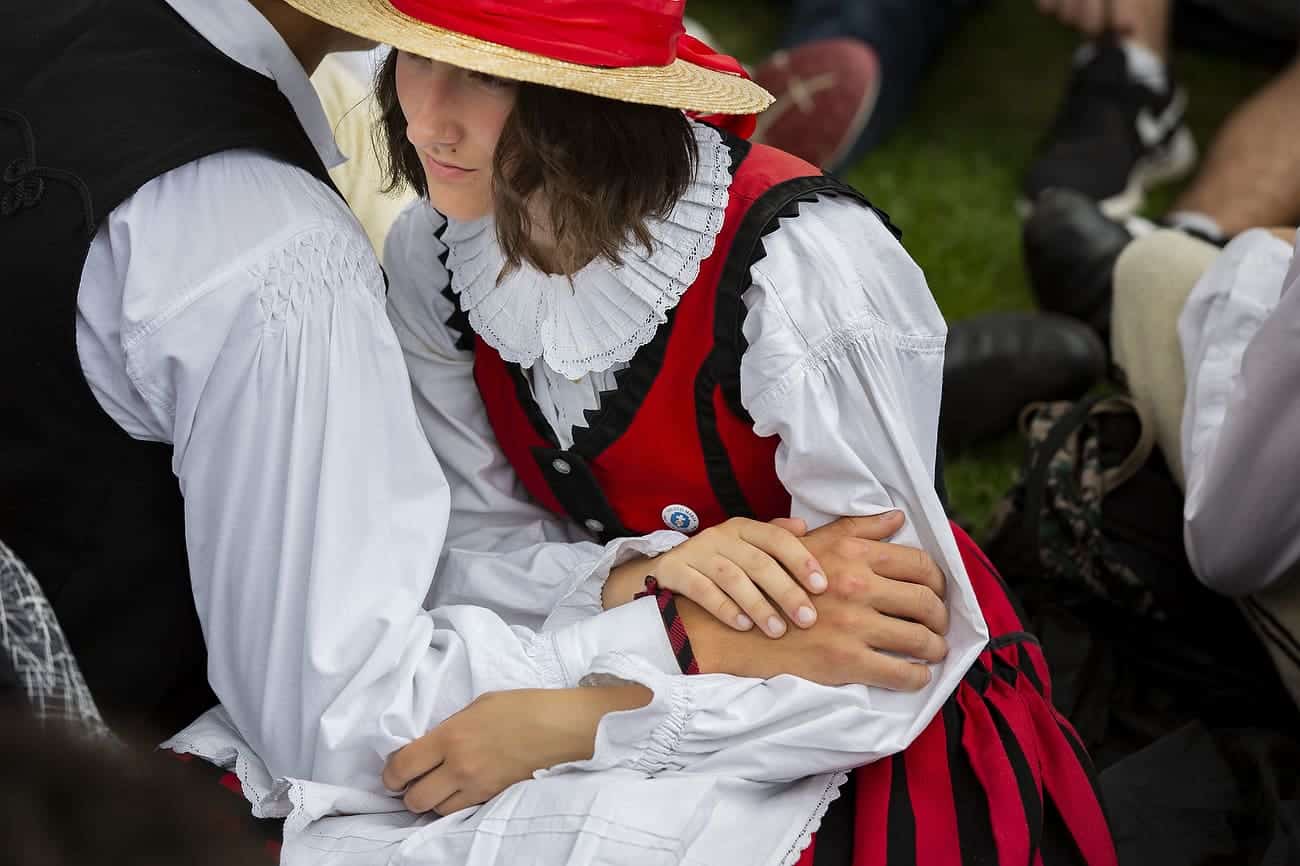
SUMULEU CIUC, ROMANIA - MAY 19: Hungarians from all over the world attending the early pilgrimage hold at Sumuleu Ciuc in Romania, as seen on May 19, 2018. Sumuleu Ciuc became a pilgrimage site in 1567, when Hungarian king John II Sigismund Zápolya wanted to convert the Székely population of the upper Csík to Protestantism. The Székelys refused to abandon the Catholic faith and resisted. A battle took place on a nearby field, on Saturday before Pentecost 1567, from which the Székelys emerged victorious. The monks saw this as a sign of the care of Virgin Mary, and since then, this event has been commemorated by a pilgrimage when the believers gather on Pentecost every year. Beside its religious importance, the pilgrimage has also become a community event demonstrating spiritual unity of Hungarian people living in and outside the historical region of Transylvania. Photography by Mugur Varzariu/Getty Images/Newsweek.
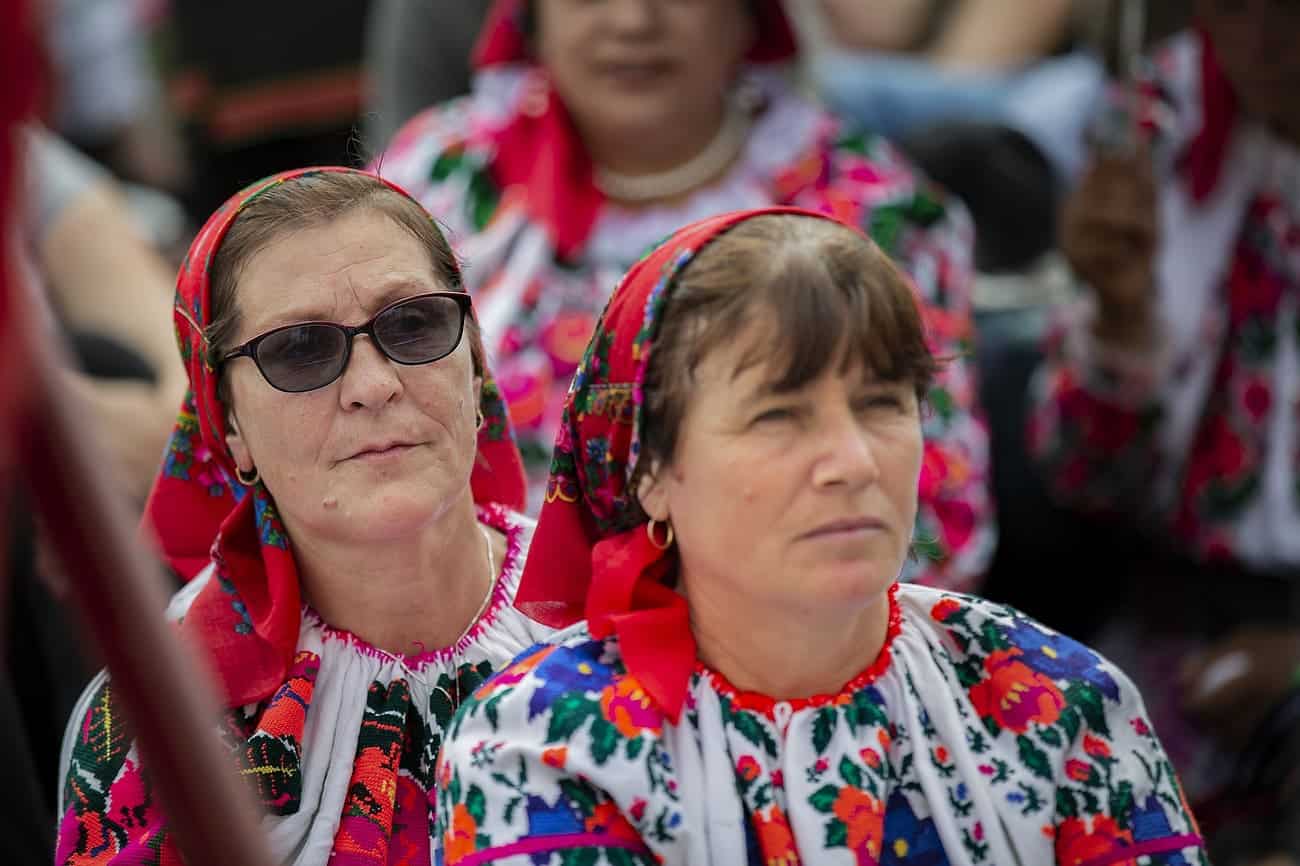
SUMULEU CIUC, ROMANIA - MAY 19: Hungarians from all over the world attending the early pilgrimage hold at Sumuleu Ciuc in Romania, as seen on May 19, 2018. Sumuleu Ciuc became a pilgrimage site in 1567, when Hungarian king John II Sigismund Zpolya wanted to convert the Szkely population of the upper Csk to Protestantism. The Szkelys refused to abandon the Catholic faith and resisted. A battle took place on a nearby field, on Saturday before Pentecost 1567, from which the Szkelys emerged victorious. The monks saw this as a sign of the care of Virgin Mary, and since then, this event has been commemorated by a pilgrimage when the believers gather on Pentecost every year. Beside its religious importance, the pilgrimage has also become a community event demonstrating spiritual unity of Hungarian people living in and outside the historical region of Transylvania. Photography by Mugur Varzariu/Getty Images/Newsweek.
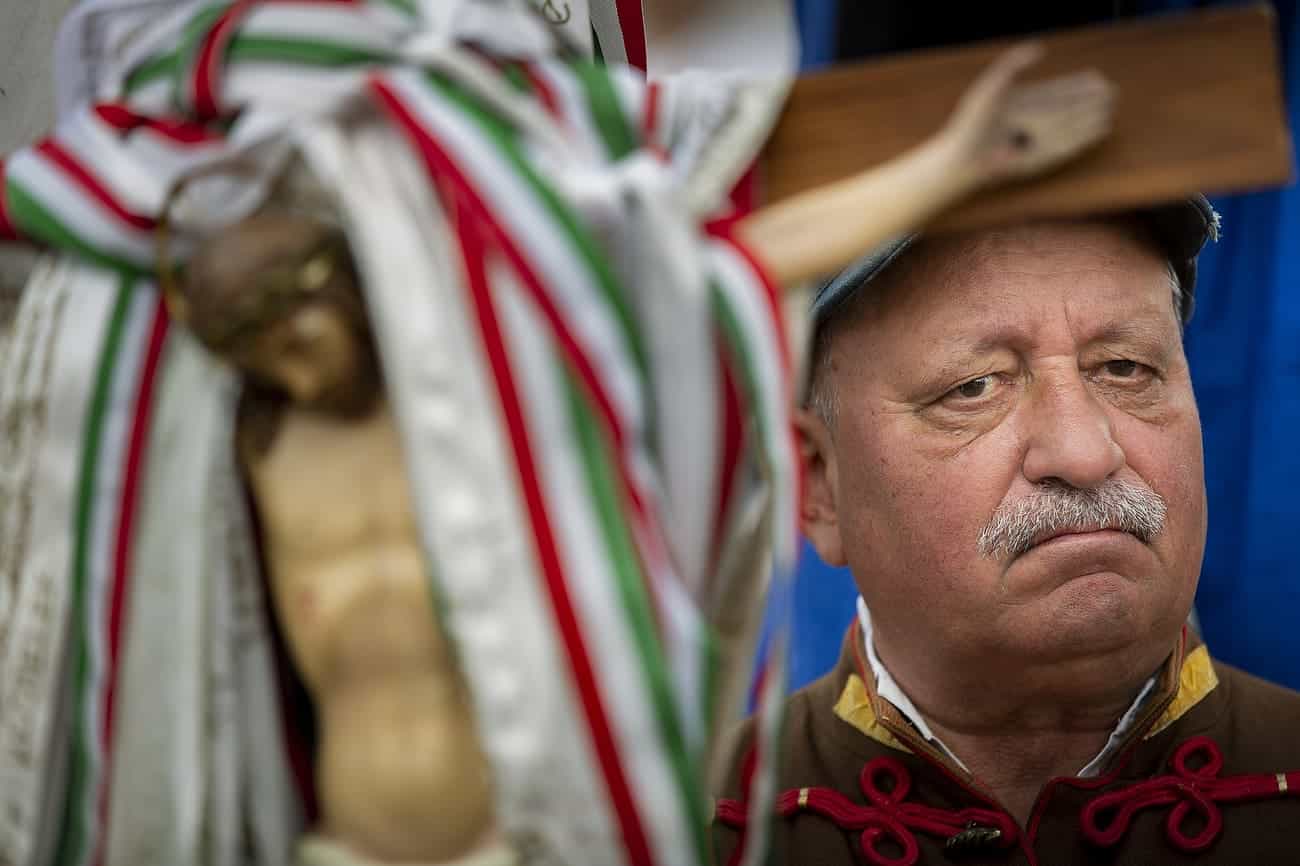
SUMULEU CIUC, ROMANIA - MAY 19: Hungarians from all over the world attending the early pilgrimage hold at Sumuleu Ciuc in Romania, as seen on May 19, 2018. Sumuleu Ciuc became a pilgrimage site in 1567, when Hungarian king John II Sigismund Zápolya wanted to convert the Székely population of the upper Csík to Protestantism. The Székelys refused to abandon the Catholic faith and resisted. A battle took place on a nearby field, on Saturday before Pentecost 1567, from which the Székelys emerged victorious. The monks saw this as a sign of the care of Virgin Mary, and since then, this event has been commemorated by a pilgrimage when the believers gather on Pentecost every year. Beside its religious importance, the pilgrimage has also become a community event demonstrating spiritual unity of Hungarian people living in and outside the historical region of Transylvania. Photography by Mugur Varzariu/Getty Images/Newsweek.

SUMULEU CIUC, ROMANIA - MAY 19: Hungarians from all over the world attending the early pilgrimage hold at Sumuleu Ciuc in Romania, as seen on May 19, 2018. Sumuleu Ciuc became a pilgrimage site in 1567, when Hungarian king John II Sigismund Zápolya wanted to convert the Székely population of the upper Csík to Protestantism. The Székelys refused to abandon the Catholic faith and resisted. A battle took place on a nearby field, on Saturday before Pentecost 1567, from which the Székelys emerged victorious. The monks saw this as a sign of the care of Virgin Mary, and since then, this event has been commemorated by a pilgrimage when the believers gather on Pentecost every year. Beside its religious importance, the pilgrimage has also become a community event demonstrating spiritual unity of Hungarian people living in and outside the historical region of Transylvania. Photography by Mugur Varzariu/Getty Images/Newsweek.

SUMULEU CIUC, ROMANIA - MAY 19: Hungarians from all over the world attending the early pilgrimage hold at Sumuleu Ciuc in Romania, as seen on May 19, 2018. Sumuleu Ciuc became a pilgrimage site in 1567, when Hungarian king John II Sigismund Zápolya wanted to convert the Székely population of the upper Csík to Protestantism. The Székelys refused to abandon the Catholic faith and resisted. A battle took place on a nearby field, on Saturday before Pentecost 1567, from which the Székelys emerged victorious. The monks saw this as a sign of the care of Virgin Mary, and since then, this event has been commemorated by a pilgrimage when the believers gather on Pentecost every year. Beside its religious importance, the pilgrimage has also become a community event demonstrating spiritual unity of Hungarian people living in and outside the historical region of Transylvania. Photography by Mugur Varzariu/Getty Images/Newsweek.
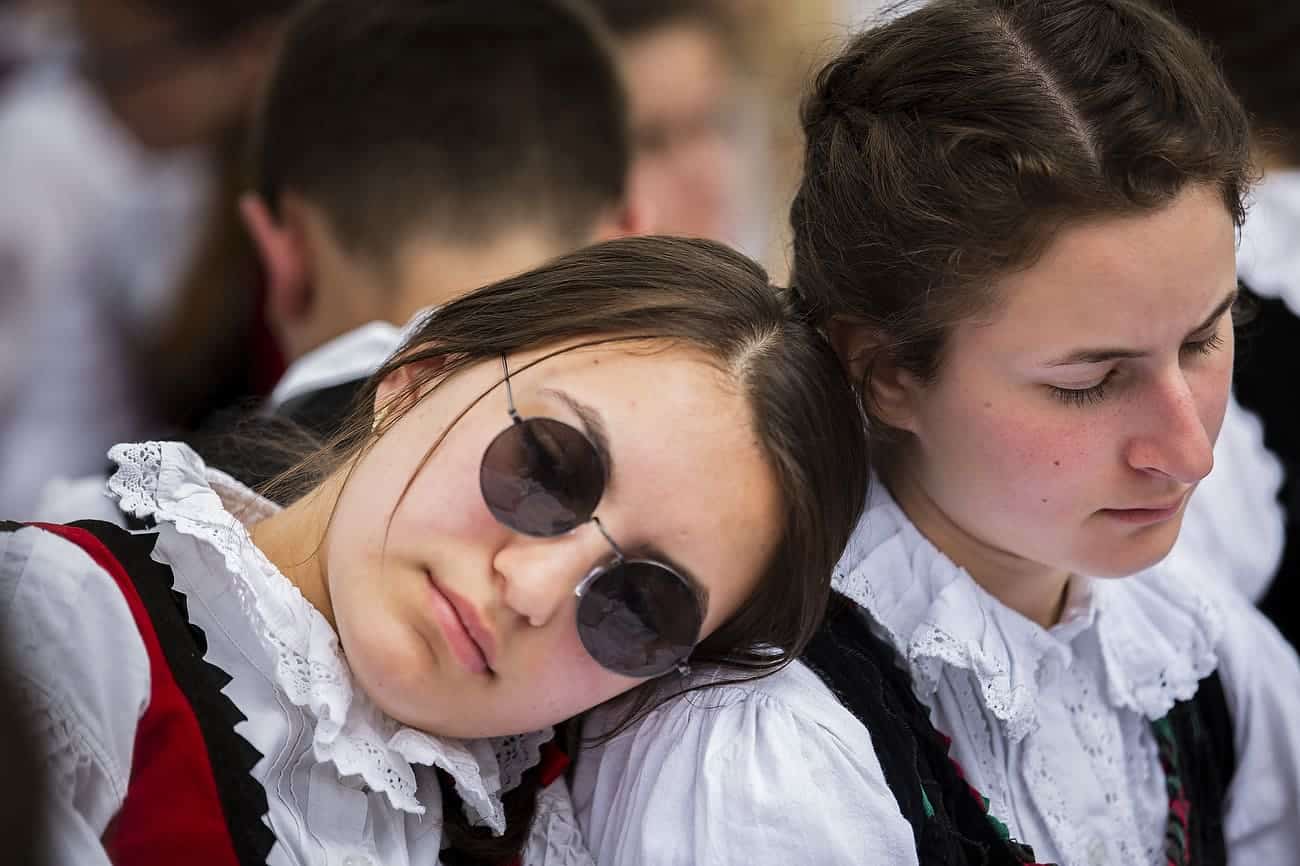
SUMULEU CIUC, ROMANIA - MAY 19: Hungarians from all over the world attending the early pilgrimage hold at Sumuleu Ciuc in Romania, as seen on May 19, 2018. Sumuleu Ciuc became a pilgrimage site in 1567, when Hungarian king John II Sigismund Zápolya wanted to convert the Székely population of the upper Csík to Protestantism. The Székelys refused to abandon the Catholic faith and resisted. A battle took place on a nearby field, on Saturday before Pentecost 1567, from which the Székelys emerged victorious. The monks saw this as a sign of the care of Virgin Mary, and since then, this event has been commemorated by a pilgrimage when the believers gather on Pentecost every year. Beside its religious importance, the pilgrimage has also become a community event demonstrating spiritual unity of Hungarian people living in and outside the historical region of Transylvania. Photography by Mugur Varzariu/Getty Images/Newsweek.
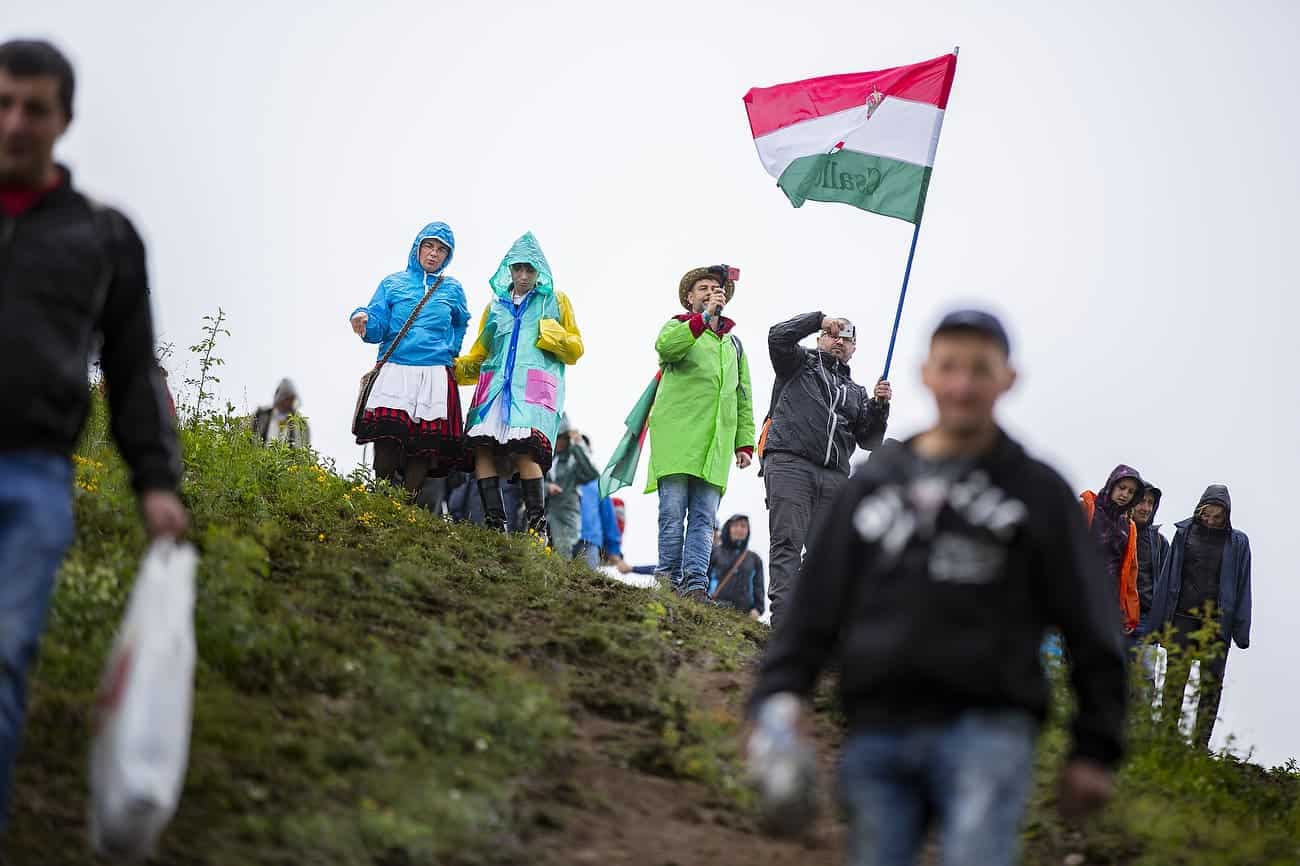
SUMULEU CIUC, ROMANIA - MAY 19: Hungarians from all over the world attending the early pilgrimage hold at Sumuleu Ciuc in Romania, as seen on May 19, 2018. Sumuleu Ciuc became a pilgrimage site in 1567, when Hungarian king John II Sigismund Zpolya wanted to convert the Szkely population of the upper Csk to Protestantism. The Szkelys refused to abandon the Catholic faith and resisted. A battle took place on a nearby field, on Saturday before Pentecost 1567, from which the Szkelys emerged victorious. The monks saw this as a sign of the care of Virgin Mary, and since then, this event has been commemorated by a pilgrimage when the believers gather on Pentecost every year. Beside its religious importance, the pilgrimage has also become a community event demonstrating spiritual unity of Hungarian people living in and outside the historical region of Transylvania. Photography by Mugur Varzariu/Getty Images/Newsweek.
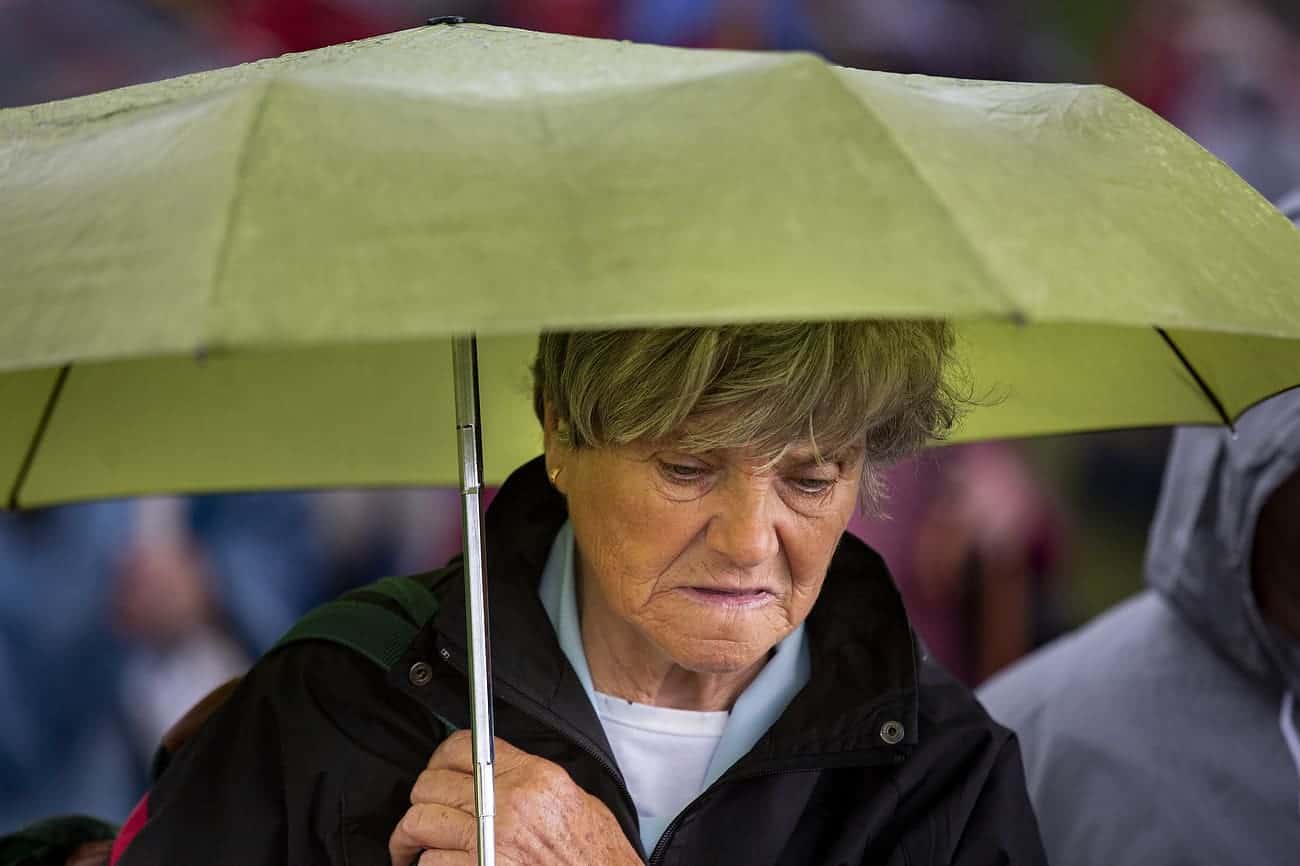
SUMULEU CIUC, ROMANIA - MAY 19: Hungarians from all over the world attending the early pilgrimage hold at Sumuleu Ciuc in Romania, as seen on May 19, 2018. Sumuleu Ciuc became a pilgrimage site in 1567, when Hungarian king John II Sigismund Zápolya wanted to convert the Székely population of the upper Csík to Protestantism. The Székelys refused to abandon the Catholic faith and resisted. A battle took place on a nearby field, on Saturday before Pentecost 1567, from which the Székelys emerged victorious. The monks saw this as a sign of the care of Virgin Mary, and since then, this event has been commemorated by a pilgrimage when the believers gather on Pentecost every year. Beside its religious importance, the pilgrimage has also become a community event demonstrating spiritual unity of Hungarian people living in and outside the historical region of Transylvania. Photography by Mugur Varzariu/Getty Images/Newsweek.
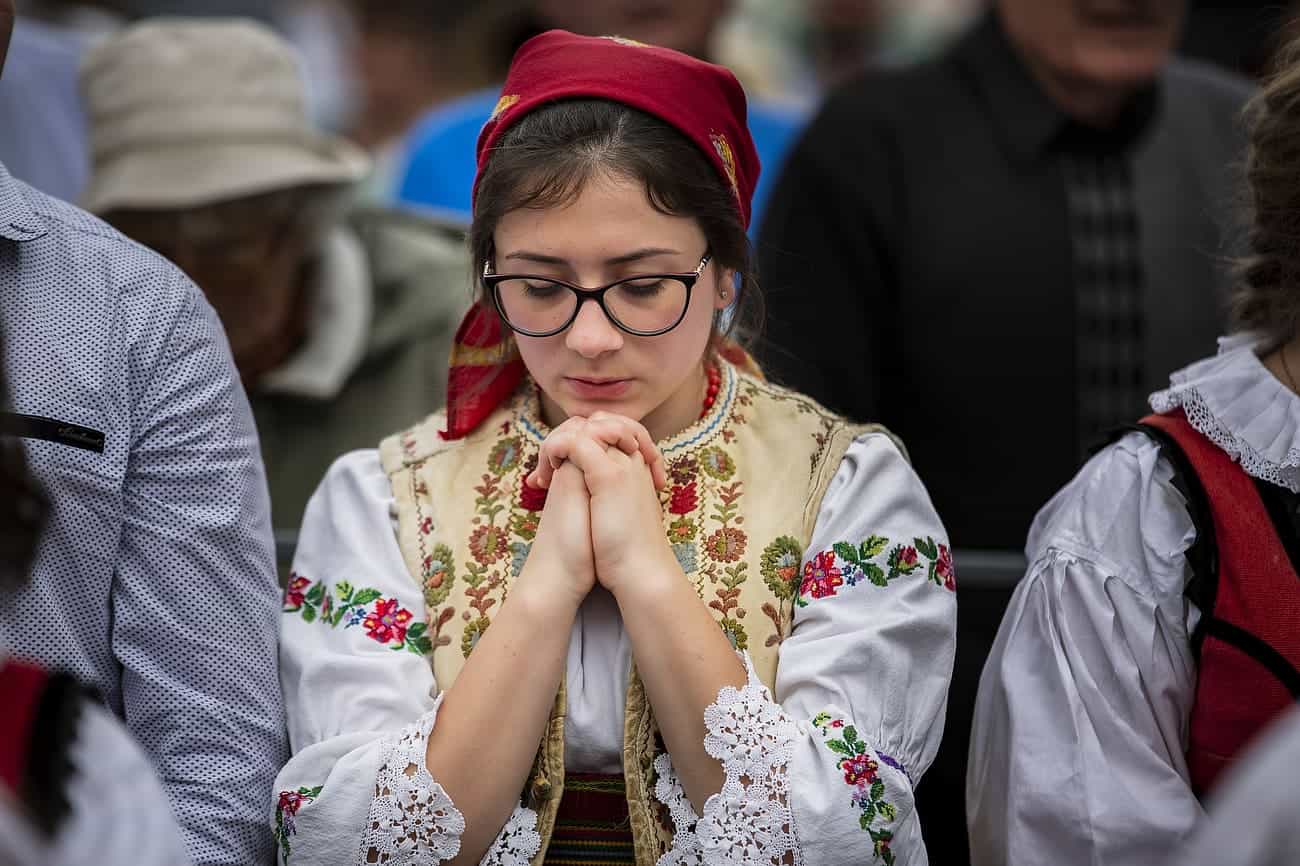
SUMULEU CIUC, ROMANIA - MAY 19: Hungarians from all over the world attending the early pilgrimage hold at Sumuleu Ciuc in Romania, as seen on May 19, 2018. Sumuleu Ciuc became a pilgrimage site in 1567, when Hungarian king John II Sigismund Zápolya wanted to convert the Székely population of the upper Csík to Protestantism. The Székelys refused to abandon the Catholic faith and resisted. A battle took place on a nearby field, on Saturday before Pentecost 1567, from which the Székelys emerged victorious. The monks saw this as a sign of the care of Virgin Mary, and since then, this event has been commemorated by a pilgrimage when the believers gather on Pentecost every year. Beside its religious importance, the pilgrimage has also become a community event demonstrating spiritual unity of Hungarian people living in and outside the historical region of Transylvania. Photography by Mugur Varzariu/Getty Images/Newsweek.
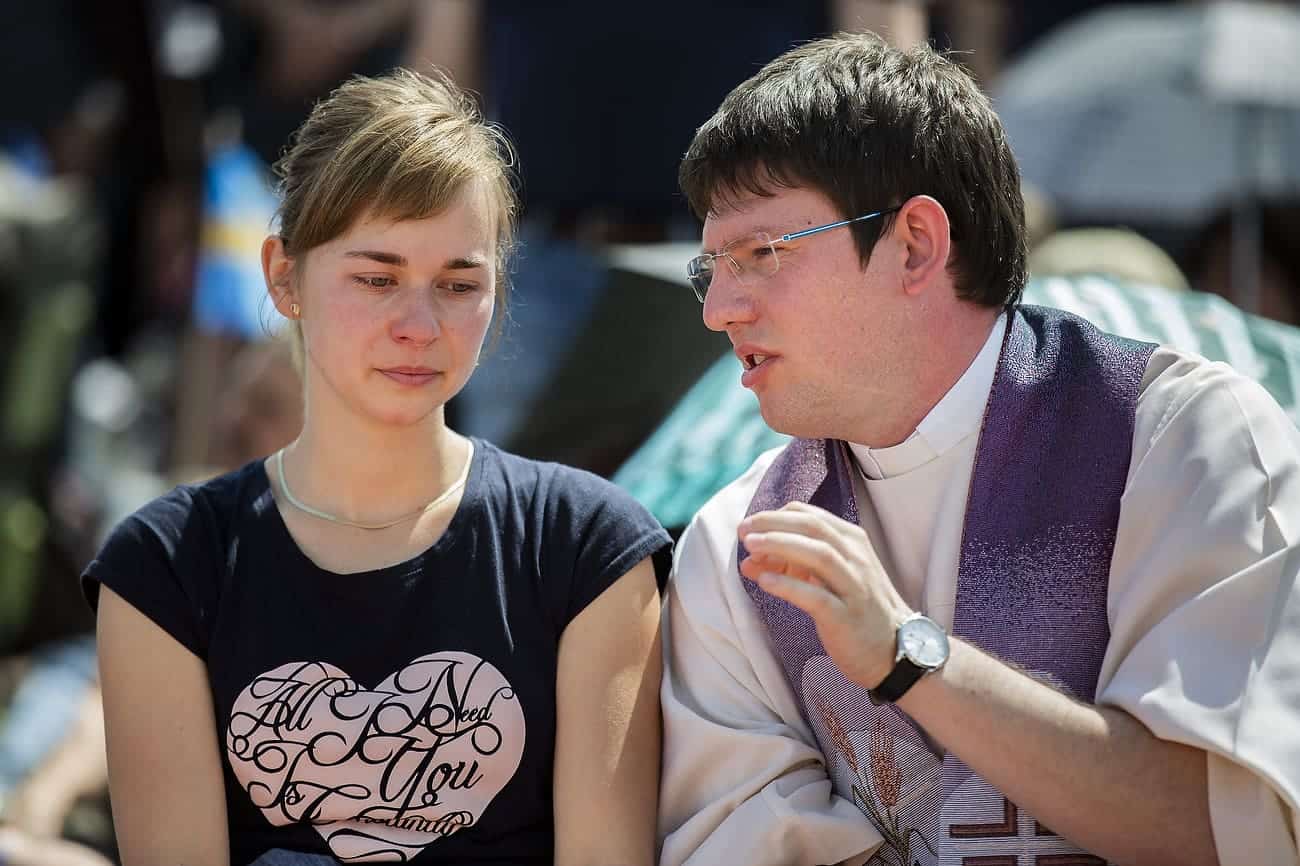
SUMULEU CIUC, ROMANIA - MAY 19: Hungarians from all over the world attending the early pilgrimage hold at Sumuleu Ciuc in Romania, as seen on May 19, 2018. Sumuleu Ciuc became a pilgrimage site in 1567, when Hungarian king John II Sigismund Zápolya wanted to convert the Székely population of the upper Csík to Protestantism. The Székelys refused to abandon the Catholic faith and resisted. A battle took place on a nearby field, on Saturday before Pentecost 1567, from which the Székelys emerged victorious. The monks saw this as a sign of the care of Virgin Mary, and since then, this event has been commemorated by a pilgrimage when the believers gather on Pentecost every year. Beside its religious importance, the pilgrimage has also become a community event demonstrating spiritual unity of Hungarian people living in and outside the historical region of Transylvania. Photography by Mugur Varzariu/Getty Images/Newsweek.
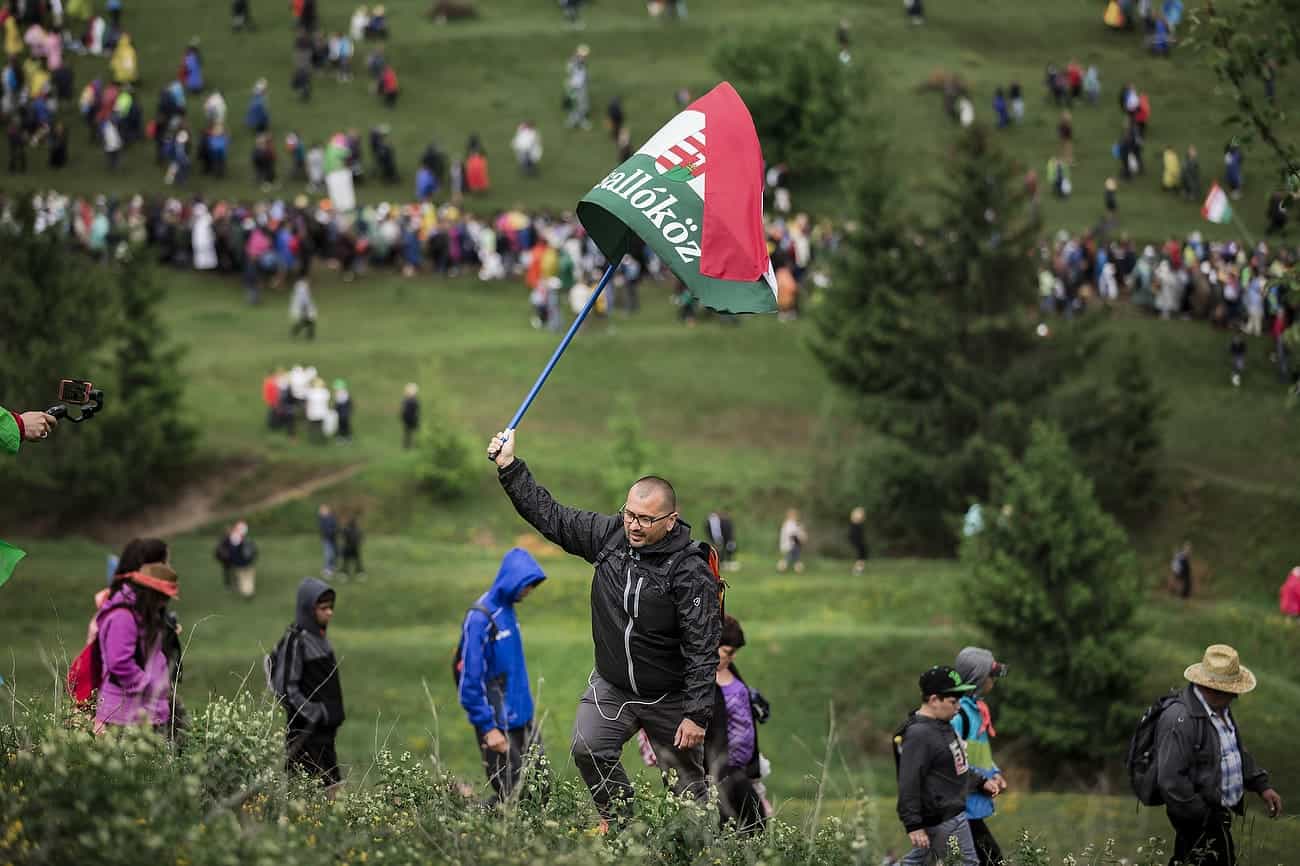
SUMULEU CIUC, ROMANIA - MAY 19: Hungarians from all over the world attending the early pilgrimage hold at Sumuleu Ciuc in Romania, as seen on May 19, 2018. Sumuleu Ciuc became a pilgrimage site in 1567, when Hungarian king John II Sigismund Zápolya wanted to convert the Székely population of the upper Csík to Protestantism. The Székelys refused to abandon the Catholic faith and resisted. A battle took place on a nearby field, on Saturday before Pentecost 1567, from which the Székelys emerged victorious. The monks saw this as a sign of the care of Virgin Mary, and since then, this event has been commemorated by a pilgrimage when the believers gather on Pentecost every year. Beside its religious importance, the pilgrimage has also become a community event demonstrating spiritual unity of Hungarian people living in and outside the historical region of Transylvania. Photography by Mugur Varzariu/Getty Images/Newsweek.
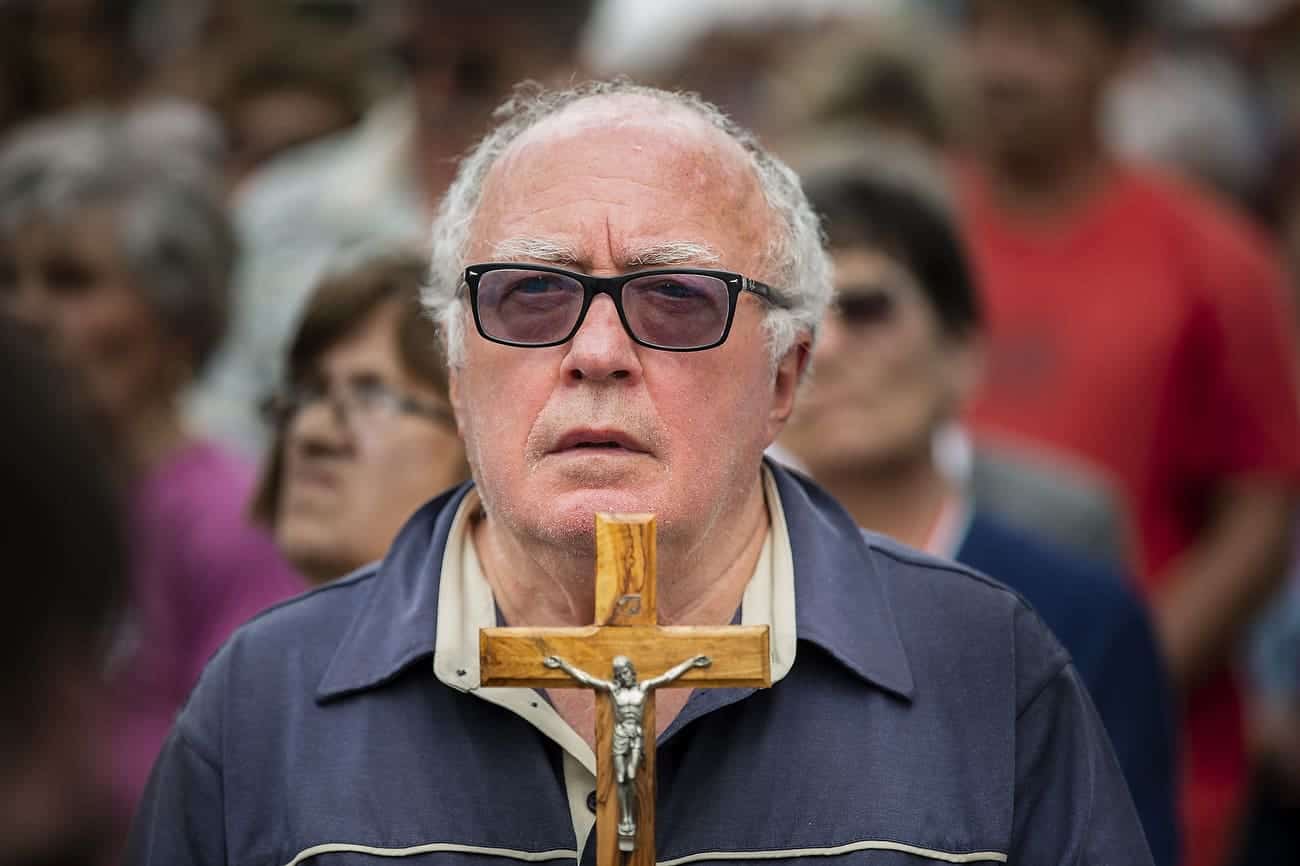
SUMULEU CIUC, ROMANIA - MAY 19: Hungarians from all over the world attending the early pilgrimage hold at Sumuleu Ciuc in Romania, as seen on May 19, 2018. Sumuleu Ciuc became a pilgrimage site in 1567, when Hungarian king John II Sigismund Zpolya wanted to convert the Szkely population of the upper Csk to Protestantism. The Szkelys refused to abandon the Catholic faith and resisted. A battle took place on a nearby field, on Saturday before Pentecost 1567, from which the Szkelys emerged victorious. The monks saw this as a sign of the care of Virgin Mary, and since then, this event has been commemorated by a pilgrimage when the believers gather on Pentecost every year. Beside its religious importance, the pilgrimage has also become a community event demonstrating spiritual unity of Hungarian people living in and outside the historical region of Transylvania. Photography by Mugur Varzariu/Getty Images/Newsweek.
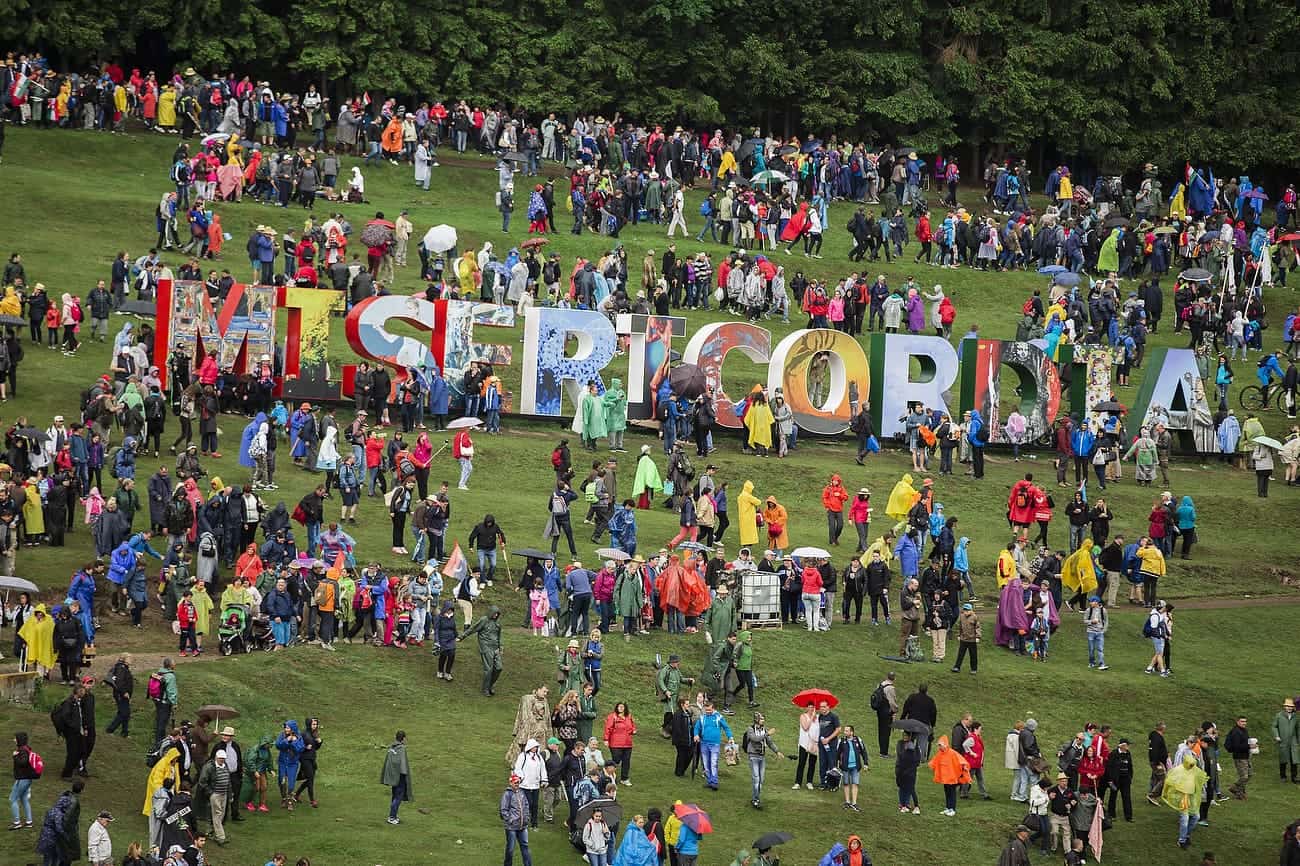
SUMULEU CIUC, ROMANIA - MAY 19: Hungarians from all over the world attending the early pilgrimage hold at Sumuleu Ciuc in Romania, as seen on May 19, 2018. Sumuleu Ciuc became a pilgrimage site in 1567, when Hungarian king John II Sigismund Zápolya wanted to convert the Székely population of the upper Csík to Protestantism. The Székelys refused to abandon the Catholic faith and resisted. A battle took place on a nearby field, on Saturday before Pentecost 1567, from which the Székelys emerged victorious. The monks saw this as a sign of the care of Virgin Mary, and since then, this event has been commemorated by a pilgrimage when the believers gather on Pentecost every year. Beside its religious importance, the pilgrimage has also become a community event demonstrating spiritual unity of Hungarian people living in and outside the historical region of Transylvania. Photography by Mugur Varzariu/Getty Images/Newsweek.
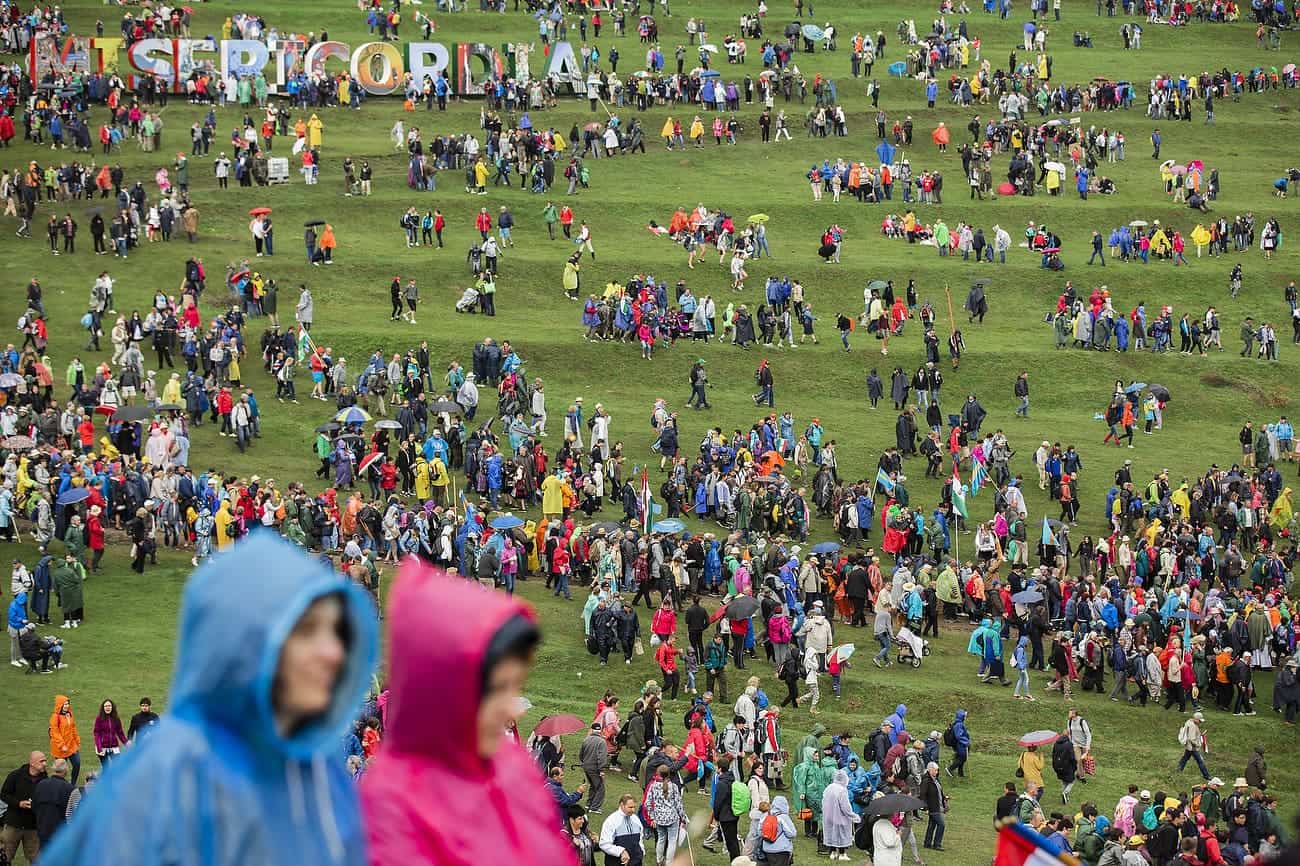
SUMULEU CIUC, ROMANIA - MAY 19: Hungarians from all over the world attending the early pilgrimage hold at Sumuleu Ciuc in Romania, as seen on May 19, 2018. Sumuleu Ciuc became a pilgrimage site in 1567, when Hungarian king John II Sigismund Zápolya wanted to convert the Székely population of the upper Csík to Protestantism. The Székelys refused to abandon the Catholic faith and resisted. A battle took place on a nearby field, on Saturday before Pentecost 1567, from which the Székelys emerged victorious. The monks saw this as a sign of the care of Virgin Mary, and since then, this event has been commemorated by a pilgrimage when the believers gather on Pentecost every year. Beside its religious importance, the pilgrimage has also become a community event demonstrating spiritual unity of Hungarian people living in and outside the historical region of Transylvania. Photography by Mugur Varzariu/Getty Images/Newsweek.

SUMULEU CIUC, ROMANIA - MAY 19: Hungarians from all over the world attending the early pilgrimage hold at Sumuleu Ciuc in Romania, as seen on May 19, 2018. Sumuleu Ciuc became a pilgrimage site in 1567, when Hungarian king John II Sigismund Zápolya wanted to convert the Székely population of the upper Csík to Protestantism. The Székelys refused to abandon the Catholic faith and resisted. A battle took place on a nearby field, on Saturday before Pentecost 1567, from which the Székelys emerged victorious. The monks saw this as a sign of the care of Virgin Mary, and since then, this event has been commemorated by a pilgrimage when the believers gather on Pentecost every year. Beside its religious importance, the pilgrimage has also become a community event demonstrating spiritual unity of Hungarian people living in and outside the historical region of Transylvania. Photography by Mugur Varzariu/Getty Images/Newsweek.

SUMULEU CIUC, ROMANIA - MAY 19: Hungarians from all over the world attending the early pilgrimage hold at Sumuleu Ciuc in Romania, as seen on May 19, 2018. Sumuleu Ciuc became a pilgrimage site in 1567, when Hungarian king John II Sigismund Zápolya wanted to convert the Székely population of the upper Csík to Protestantism. The Székelys refused to abandon the Catholic faith and resisted. A battle took place on a nearby field, on Saturday before Pentecost 1567, from which the Székelys emerged victorious. The monks saw this as a sign of the care of Virgin Mary, and since then, this event has been commemorated by a pilgrimage when the believers gather on Pentecost every year. Beside its religious importance, the pilgrimage has also become a community event demonstrating spiritual unity of Hungarian people living in and outside the historical region of Transylvania. Photography by Mugur Varzariu/Getty Images/Newsweek.
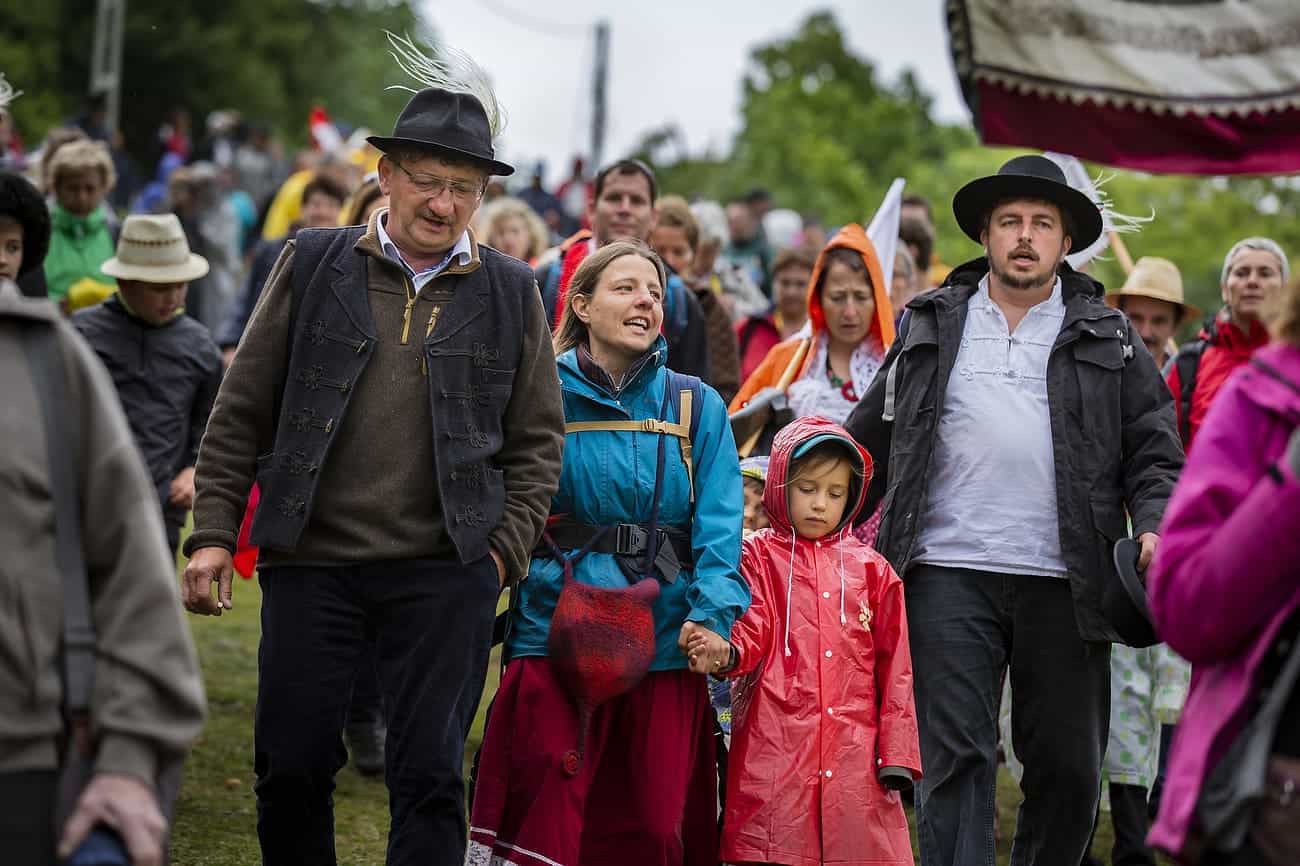
SUMULEU CIUC, ROMANIA - MAY 19: Hungarians from all over the world attending the early pilgrimage hold at Sumuleu Ciuc in Romania, as seen on May 19, 2018. Sumuleu Ciuc became a pilgrimage site in 1567, when Hungarian king John II Sigismund Zápolya wanted to convert the Székely population of the upper Csík to Protestantism. The Székelys refused to abandon the Catholic faith and resisted. A battle took place on a nearby field, on Saturday before Pentecost 1567, from which the Székelys emerged victorious. The monks saw this as a sign of the care of Virgin Mary, and since then, this event has been commemorated by a pilgrimage when the believers gather on Pentecost every year. Beside its religious importance, the pilgrimage has also become a community event demonstrating spiritual unity of Hungarian people living in and outside the historical region of Transylvania. Photography by Mugur Varzariu/Getty Images/Newsweek.
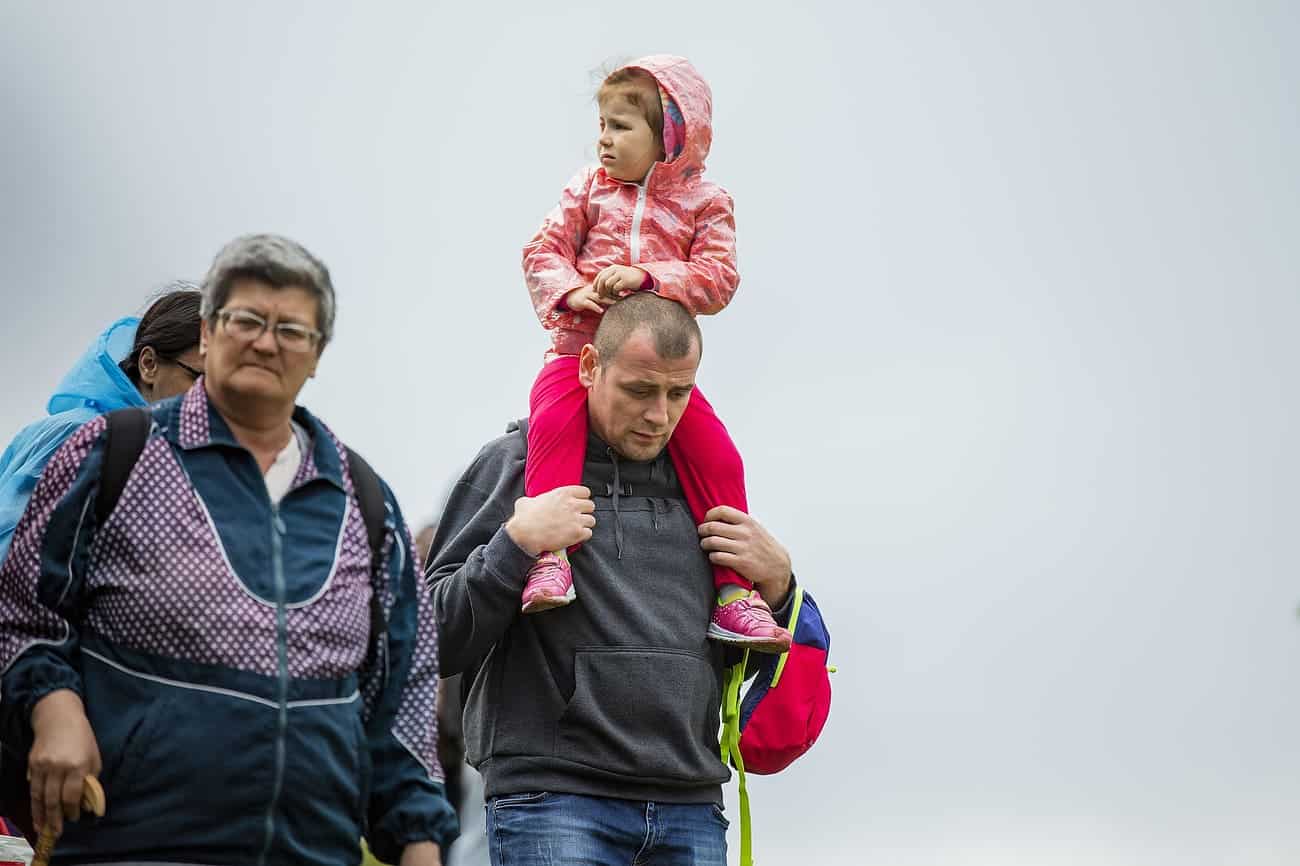
SUMULEU CIUC, ROMANIA - MAY 19: Hungarians from all over the world attending the early pilgrimage hold at Sumuleu Ciuc in Romania, as seen on May 19, 2018. Sumuleu Ciuc became a pilgrimage site in 1567, when Hungarian king John II Sigismund Zápolya wanted to convert the Székely population of the upper Csík to Protestantism. The Székelys refused to abandon the Catholic faith and resisted. A battle took place on a nearby field, on Saturday before Pentecost 1567, from which the Székelys emerged victorious. The monks saw this as a sign of the care of Virgin Mary, and since then, this event has been commemorated by a pilgrimage when the believers gather on Pentecost every year. Beside its religious importance, the pilgrimage has also become a community event demonstrating spiritual unity of Hungarian people living in and outside the historical region of Transylvania. Photography by Mugur Varzariu/Getty Images/Newsweek.
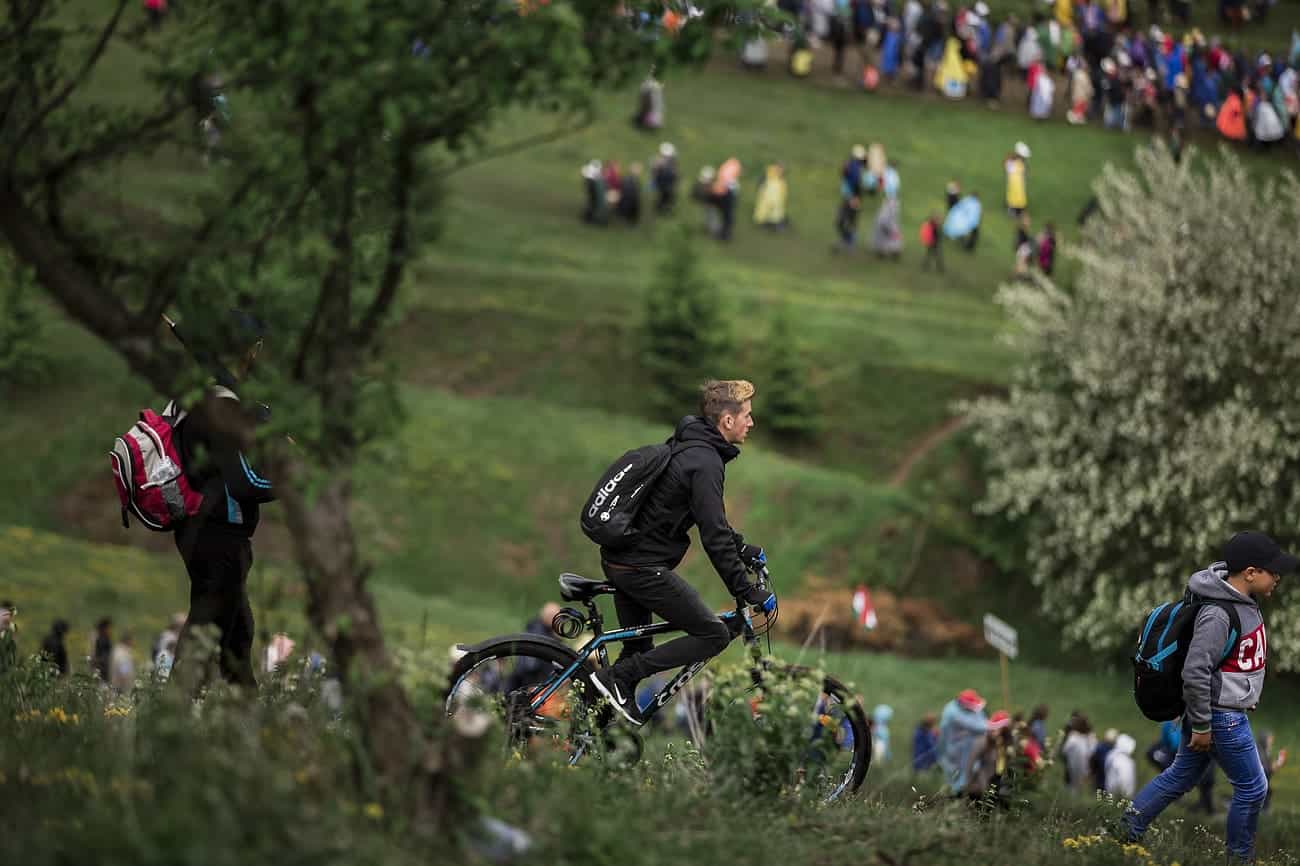
SUMULEU CIUC, ROMANIA - MAY 19: Hungarians from all over the world attending the early pilgrimage hold at Sumuleu Ciuc in Romania, as seen on May 19, 2018. Sumuleu Ciuc became a pilgrimage site in 1567, when Hungarian king John II Sigismund Zápolya wanted to convert the Székely population of the upper Csík to Protestantism. The Székelys refused to abandon the Catholic faith and resisted. A battle took place on a nearby field, on Saturday before Pentecost 1567, from which the Székelys emerged victorious. The monks saw this as a sign of the care of Virgin Mary, and since then, this event has been commemorated by a pilgrimage when the believers gather on Pentecost every year. Beside its religious importance, the pilgrimage has also become a community event demonstrating spiritual unity of Hungarian people living in and outside the historical region of Transylvania. Photography by Mugur Varzariu/Getty Images/Newsweek.
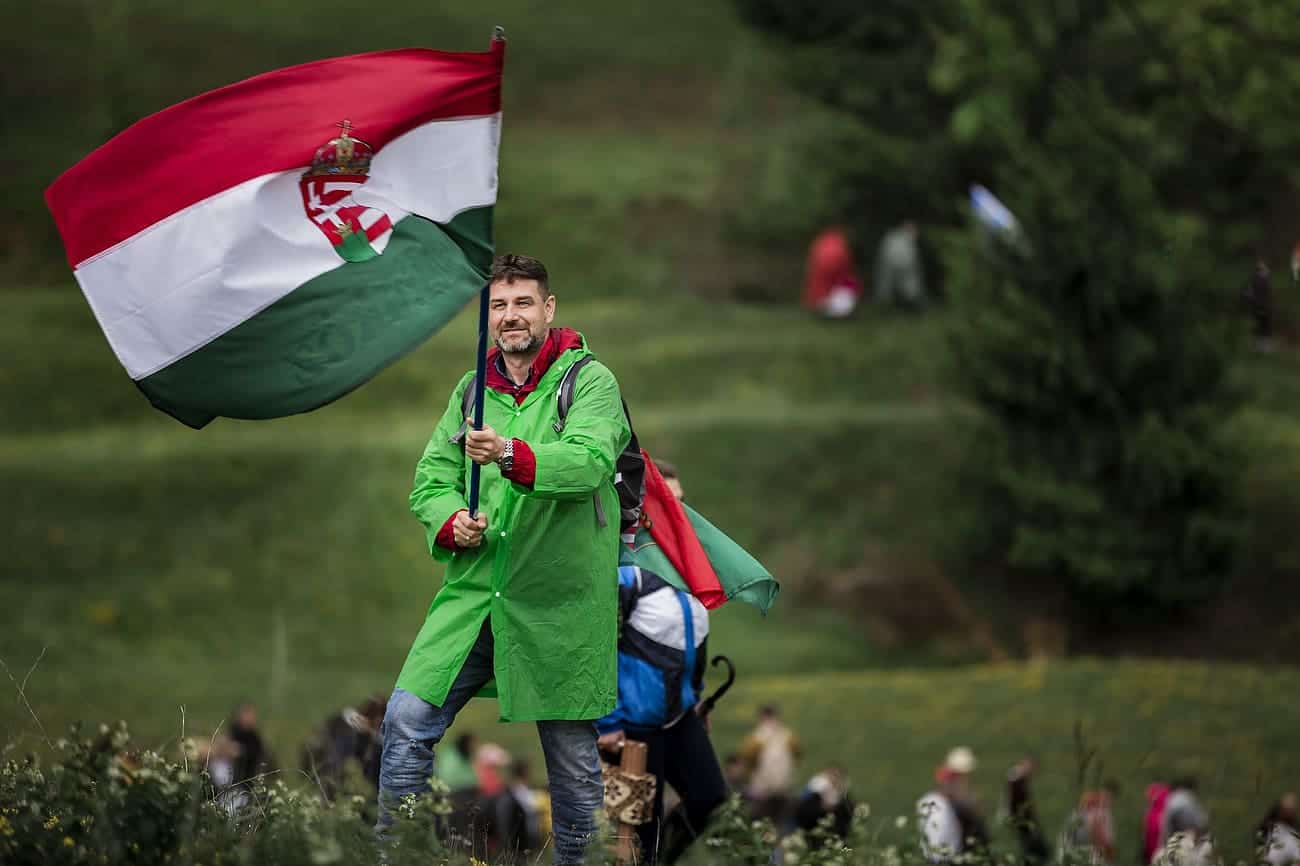
SUMULEU CIUC, ROMANIA - MAY 19: Hungarians from all over the world attending the early pilgrimage hold at Sumuleu Ciuc in Romania, as seen on May 19, 2018. Sumuleu Ciuc became a pilgrimage site in 1567, when Hungarian king John II Sigismund Zápolya wanted to convert the Székely population of the upper Csík to Protestantism. The Székelys refused to abandon the Catholic faith and resisted. A battle took place on a nearby field, on Saturday before Pentecost 1567, from which the Székelys emerged victorious. The monks saw this as a sign of the care of Virgin Mary, and since then, this event has been commemorated by a pilgrimage when the believers gather on Pentecost every year. Beside its religious importance, the pilgrimage has also become a community event demonstrating spiritual unity of Hungarian people living in and outside the historical region of Transylvania. Photography by Mugur Varzariu/Getty Images/Newsweek.
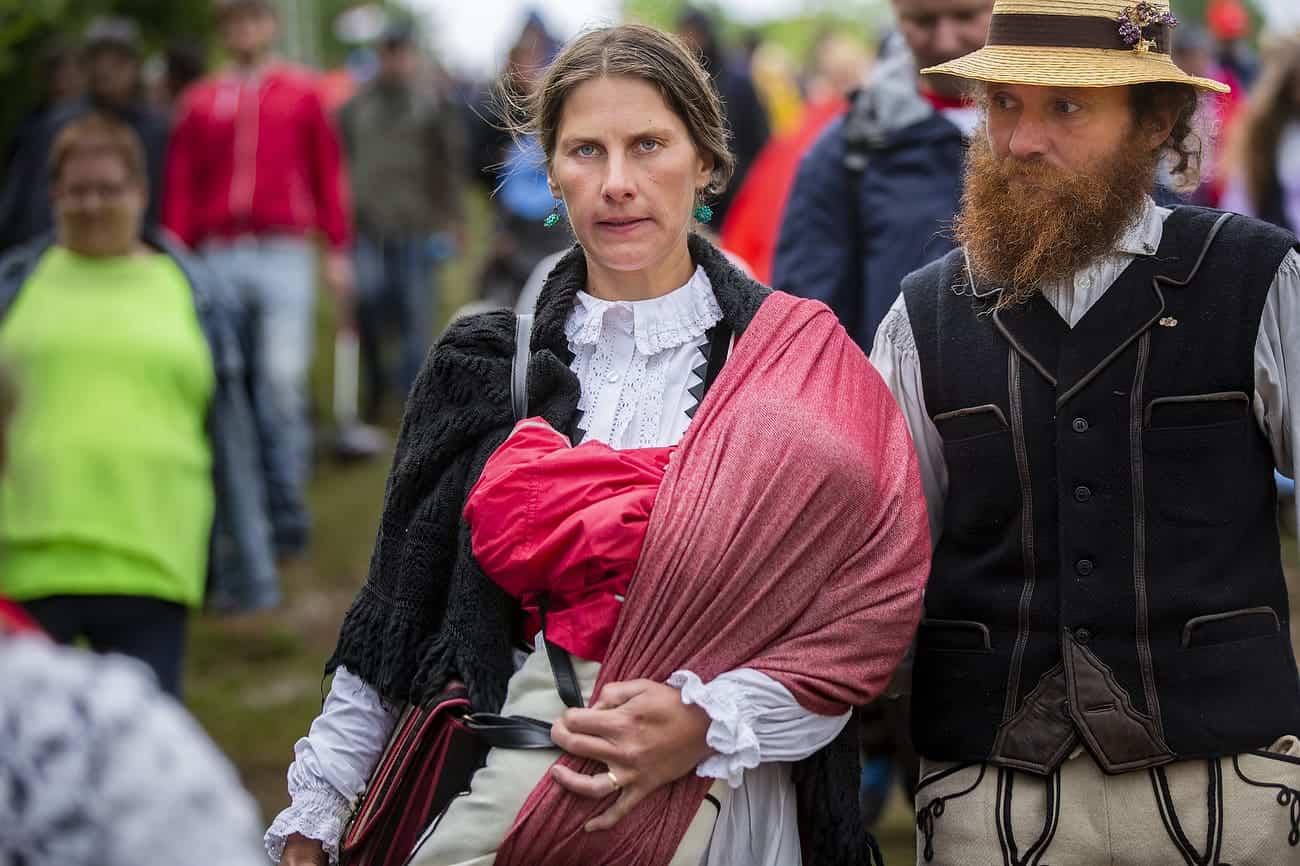
SUMULEU CIUC, ROMANIA - MAY 19: Hungarians from all over the world attending the early pilgrimage hold at Sumuleu Ciuc in Romania, as seen on May 19, 2018. Sumuleu Ciuc became a pilgrimage site in 1567, when Hungarian king John II Sigismund Zpolya wanted to convert the Szkely population of the upper Csk to Protestantism. The Szkelys refused to abandon the Catholic faith and resisted. A battle took place on a nearby field, on Saturday before Pentecost 1567, from which the Szkelys emerged victorious. The monks saw this as a sign of the care of Virgin Mary, and since then, this event has been commemorated by a pilgrimage when the believers gather on Pentecost every year. Beside its religious importance, the pilgrimage has also become a community event demonstrating spiritual unity of Hungarian people living in and outside the historical region of Transylvania. Photography by Mugur Varzariu/Getty Images/Newsweek.
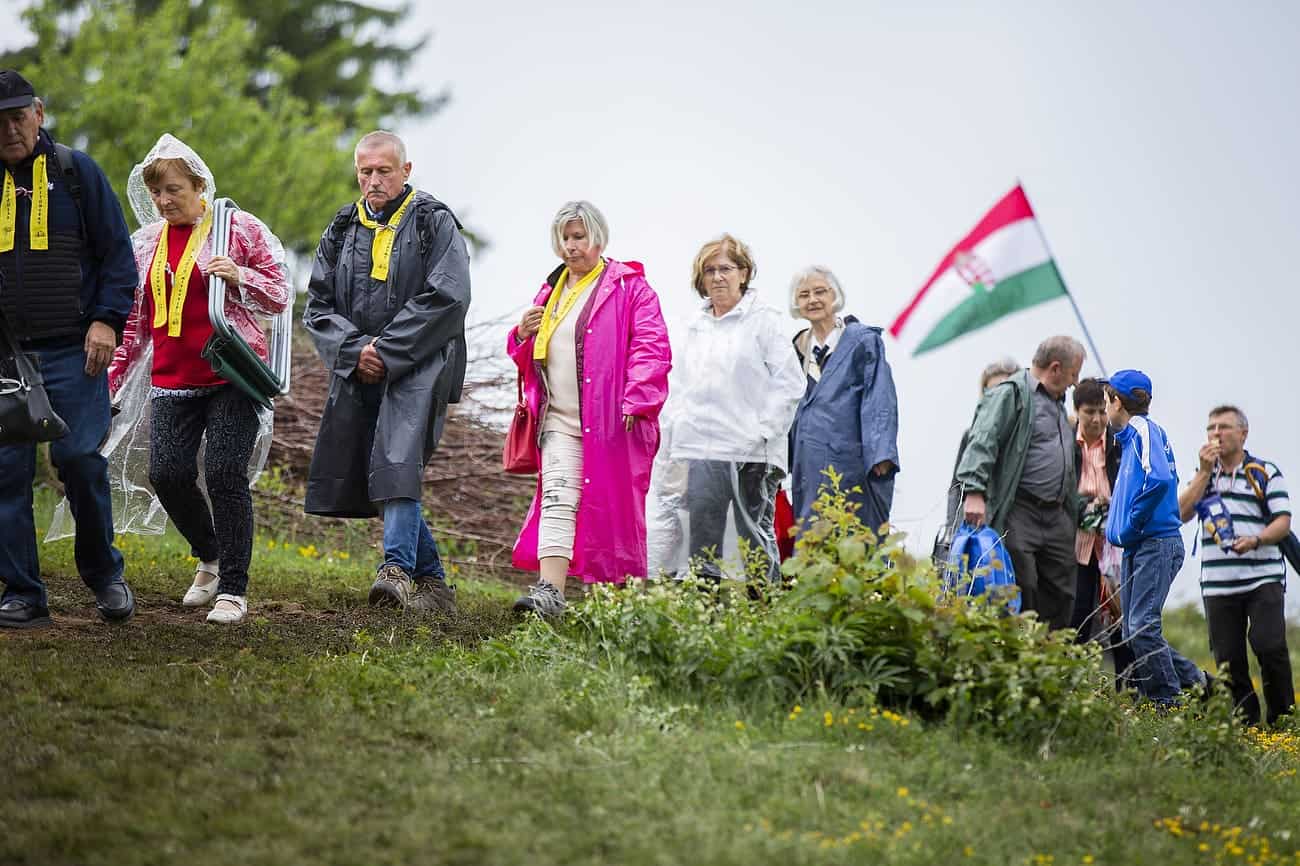
SUMULEU CIUC, ROMANIA - MAY 19: Hungarians from all over the world attending the early pilgrimage hold at Sumuleu Ciuc in Romania, as seen on May 19, 2018. Sumuleu Ciuc became a pilgrimage site in 1567, when Hungarian king John II Sigismund Zpolya wanted to convert the Szkely population of the upper Csk to Protestantism. The Szkelys refused to abandon the Catholic faith and resisted. A battle took place on a nearby field, on Saturday before Pentecost 1567, from which the Szkelys emerged victorious. The monks saw this as a sign of the care of Virgin Mary, and since then, this event has been commemorated by a pilgrimage when the believers gather on Pentecost every year. Beside its religious importance, the pilgrimage has also become a community event demonstrating spiritual unity of Hungarian people living in and outside the historical region of Transylvania. Photography by Mugur Varzariu/Getty Images/Newsweek.

SUMULEU CIUC, ROMANIA - MAY 19: Hungarians from all over the world attending the early pilgrimage hold at Sumuleu Ciuc in Romania, as seen on May 19, 2018. Sumuleu Ciuc became a pilgrimage site in 1567, when Hungarian king John II Sigismund Zápolya wanted to convert the Székely population of the upper Csík to Protestantism. The Székelys refused to abandon the Catholic faith and resisted. A battle took place on a nearby field, on Saturday before Pentecost 1567, from which the Székelys emerged victorious. The monks saw this as a sign of the care of Virgin Mary, and since then, this event has been commemorated by a pilgrimage when the believers gather on Pentecost every year. Beside its religious importance, the pilgrimage has also become a community event demonstrating spiritual unity of Hungarian people living in and outside the historical region of Transylvania. Photography by Mugur Varzariu/Getty Images/Newsweek.
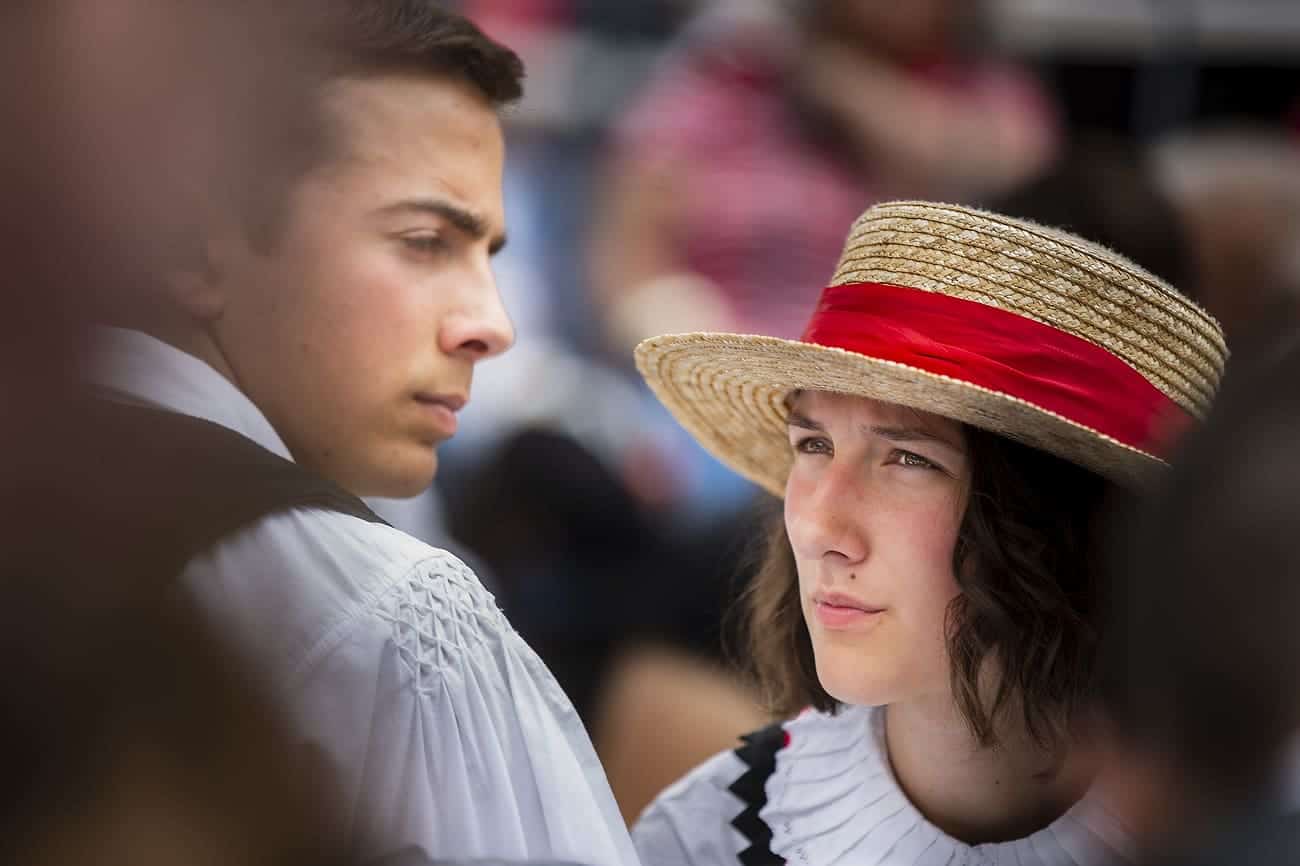
SUMULEU CIUC, ROMANIA - MAY 19: Hungarians from all over the world attending the early pilgrimage hold at Sumuleu Ciuc in Romania, as seen on May 19, 2018. Sumuleu Ciuc became a pilgrimage site in 1567, when Hungarian king John II Sigismund Zápolya wanted to convert the Székely population of the upper Csík to Protestantism. The Székelys refused to abandon the Catholic faith and resisted. A battle took place on a nearby field, on Saturday before Pentecost 1567, from which the Székelys emerged victorious. The monks saw this as a sign of the care of Virgin Mary, and since then, this event has been commemorated by a pilgrimage when the believers gather on Pentecost every year. Beside its religious importance, the pilgrimage has also become a community event demonstrating spiritual unity of Hungarian people living in and outside the historical region of Transylvania. Photography by Mugur Varzariu/Getty Images/Newsweek.
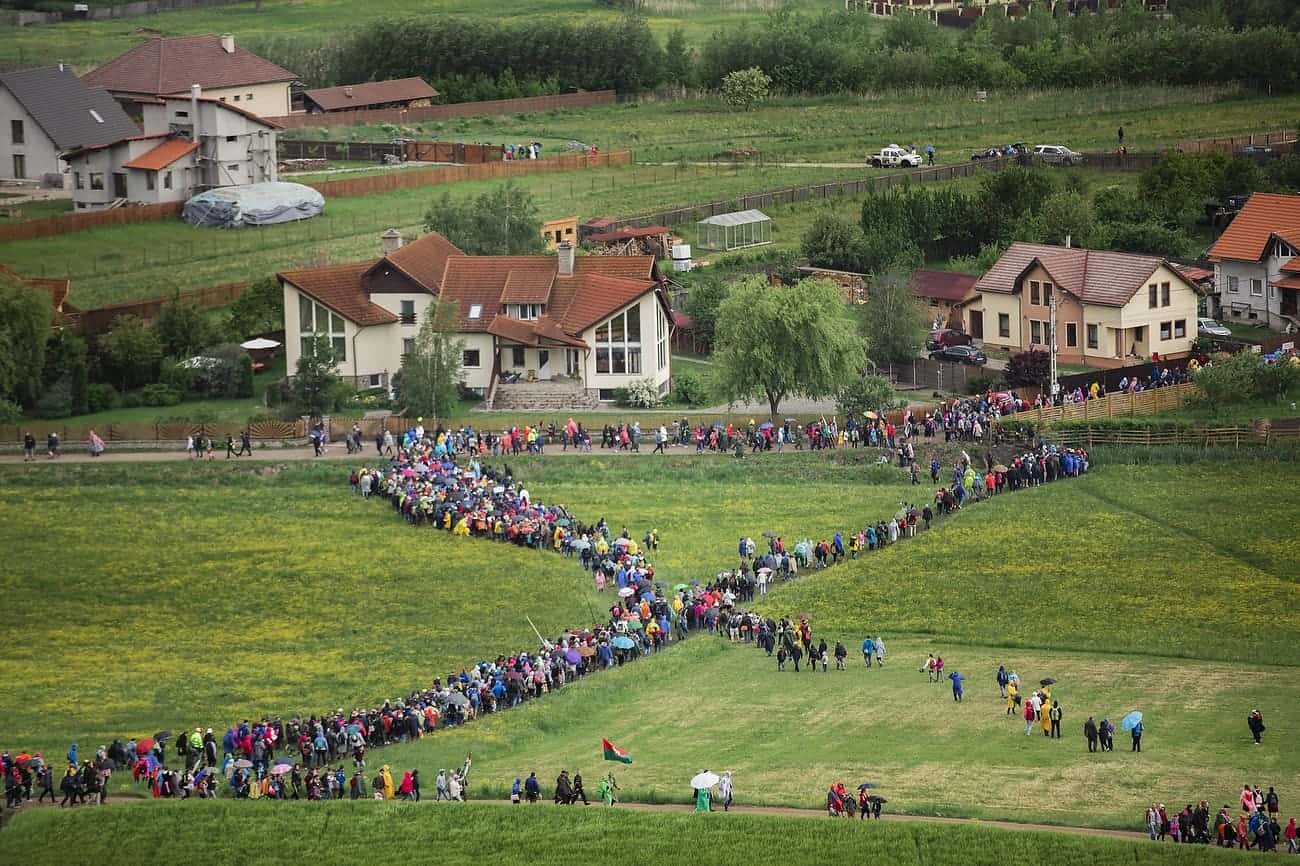
SUMULEU CIUC, ROMANIA - MAY 19: Hungarians from all over the world attending the early pilgrimage hold at Sumuleu Ciuc in Romania, as seen on May 19, 2018. Sumuleu Ciuc became a pilgrimage site in 1567, when Hungarian king John II Sigismund Zápolya wanted to convert the Székely population of the upper Csík to Protestantism. The Székelys refused to abandon the Catholic faith and resisted. A battle took place on a nearby field, on Saturday before Pentecost 1567, from which the Székelys emerged victorious. The monks saw this as a sign of the care of Virgin Mary, and since then, this event has been commemorated by a pilgrimage when the believers gather on Pentecost every year. Beside its religious importance, the pilgrimage has also become a community event demonstrating spiritual unity of Hungarian people living in and outside the historical region of Transylvania. Photography by Mugur Varzariu/Getty Images/Newsweek.
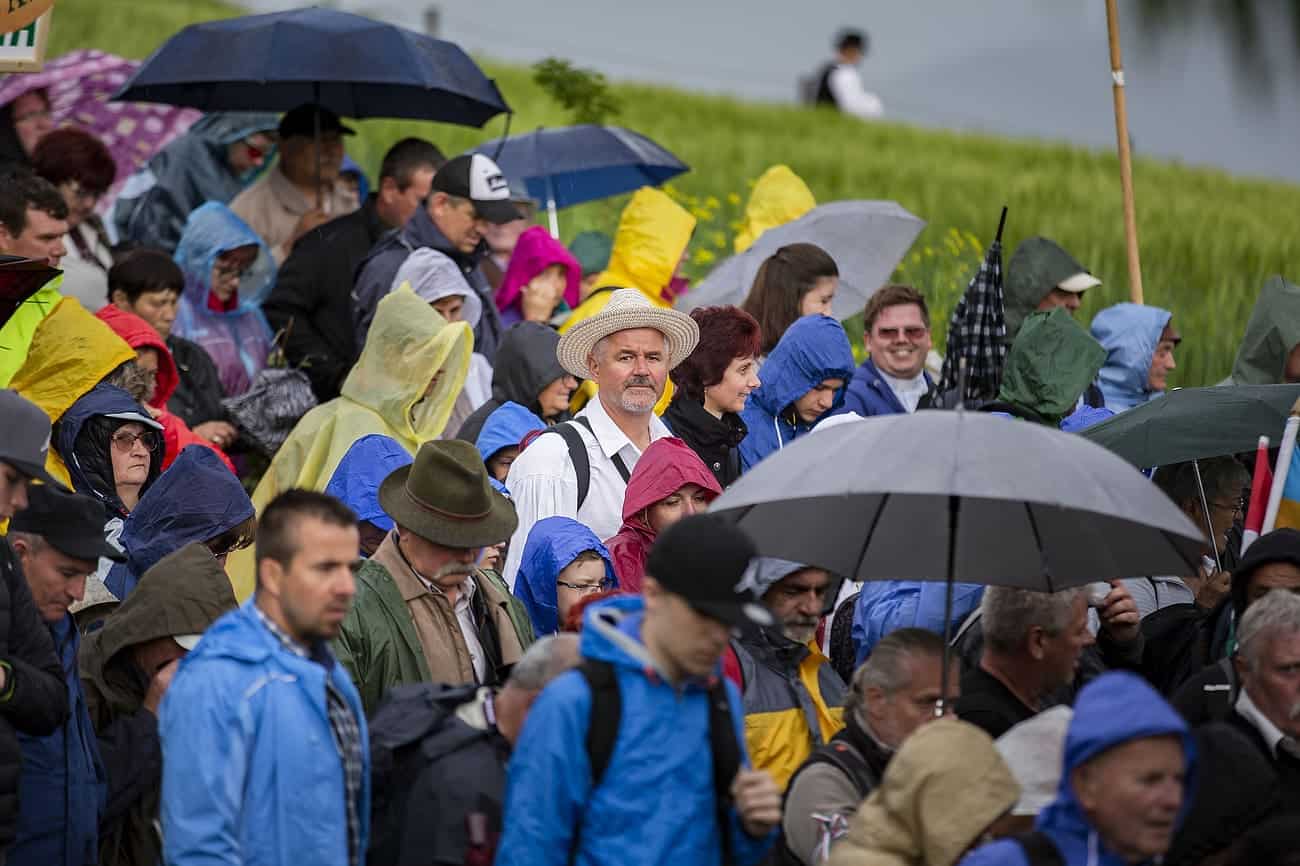
SUMULEU CIUC, ROMANIA - MAY 19: Hungarians from all over the world attending the early pilgrimage hold at Sumuleu Ciuc in Romania, as seen on May 19, 2018. Sumuleu Ciuc became a pilgrimage site in 1567, when Hungarian king John II Sigismund Zápolya wanted to convert the Székely population of the upper Csík to Protestantism. The Székelys refused to abandon the Catholic faith and resisted. A battle took place on a nearby field, on Saturday before Pentecost 1567, from which the Székelys emerged victorious. The monks saw this as a sign of the care of Virgin Mary, and since then, this event has been commemorated by a pilgrimage when the believers gather on Pentecost every year. Beside its religious importance, the pilgrimage has also become a community event demonstrating spiritual unity of Hungarian people living in and outside the historical region of Transylvania. Photography by Mugur Varzariu/Getty Images/Newsweek.
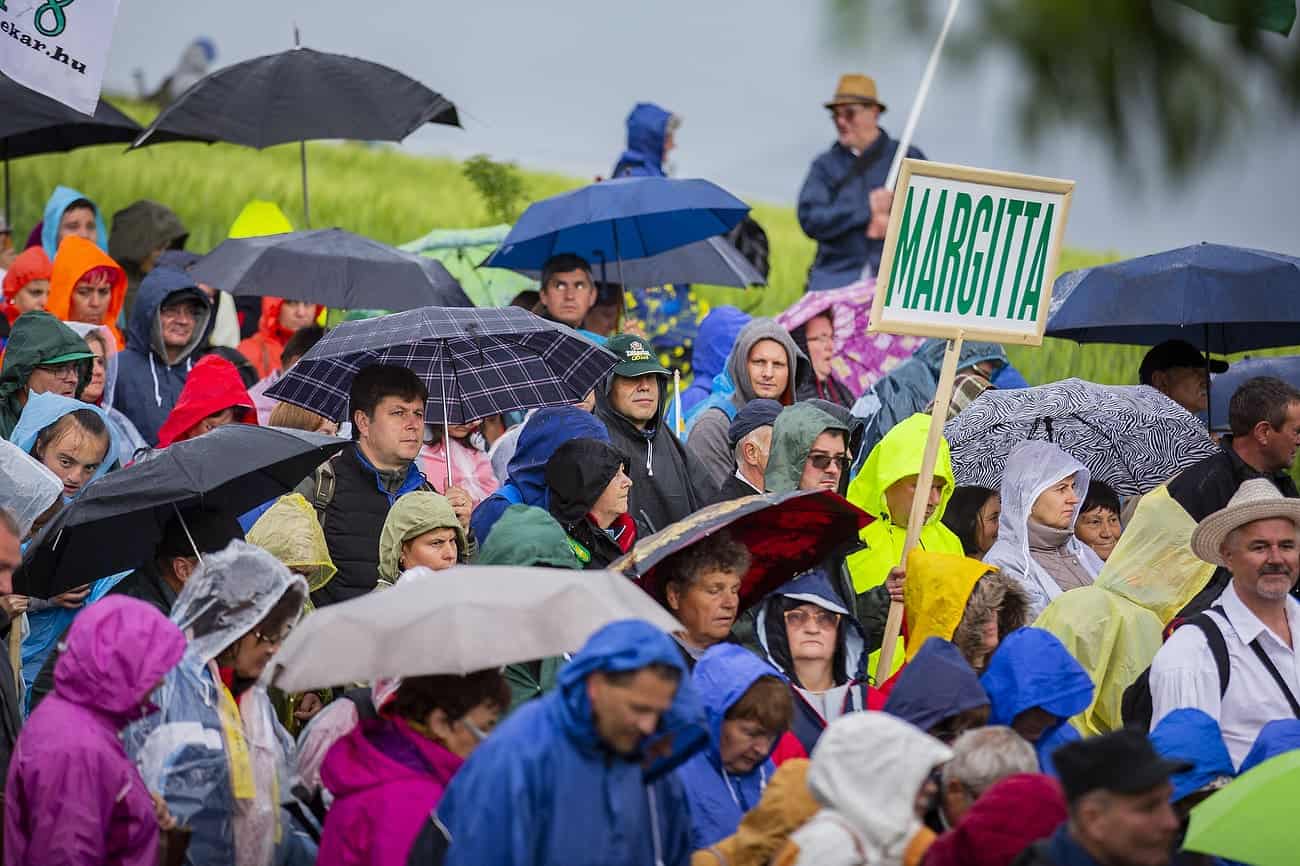
SUMULEU CIUC, ROMANIA - MAY 19: Hungarians from all over the world attending the early pilgrimage hold at Sumuleu Ciuc in Romania, as seen on May 19, 2018. Sumuleu Ciuc became a pilgrimage site in 1567, when Hungarian king John II Sigismund Zápolya wanted to convert the Székely population of the upper Csík to Protestantism. The Székelys refused to abandon the Catholic faith and resisted. A battle took place on a nearby field, on Saturday before Pentecost 1567, from which the Székelys emerged victorious. The monks saw this as a sign of the care of Virgin Mary, and since then, this event has been commemorated by a pilgrimage when the believers gather on Pentecost every year. Beside its religious importance, the pilgrimage has also become a community event demonstrating spiritual unity of Hungarian people living in and outside the historical region of Transylvania. Photography by Mugur Varzariu/Getty Images/Newsweek.
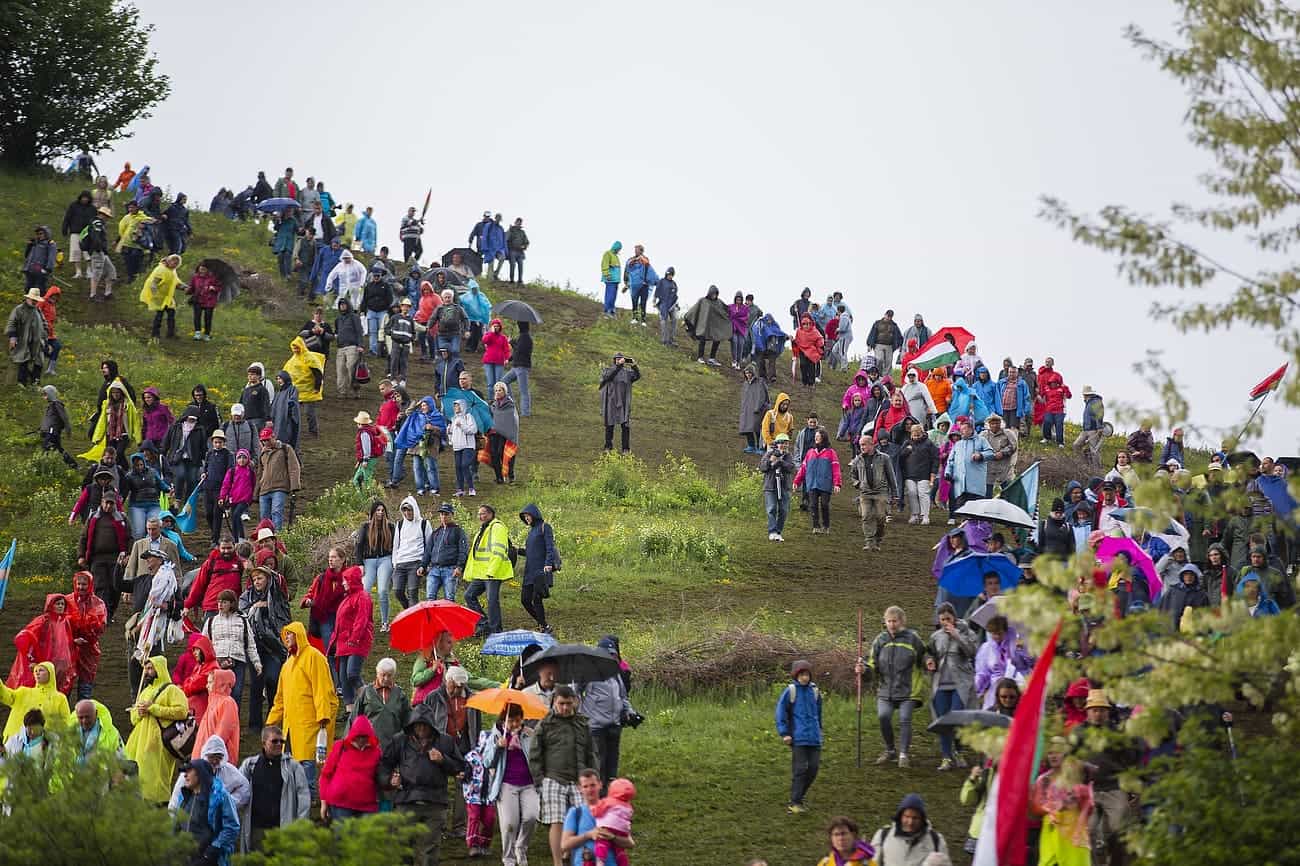
SUMULEU CIUC, ROMANIA - MAY 19: Hungarians from all over the world attending the early pilgrimage hold at Sumuleu Ciuc in Romania, as seen on May 19, 2018. Sumuleu Ciuc became a pilgrimage site in 1567, when Hungarian king John II Sigismund Zápolya wanted to convert the Székely population of the upper Csík to Protestantism. The Székelys refused to abandon the Catholic faith and resisted. A battle took place on a nearby field, on Saturday before Pentecost 1567, from which the Székelys emerged victorious. The monks saw this as a sign of the care of Virgin Mary, and since then, this event has been commemorated by a pilgrimage when the believers gather on Pentecost every year. Beside its religious importance, the pilgrimage has also become a community event demonstrating spiritual unity of Hungarian people living in and outside the historical region of Transylvania. Photography by Mugur Varzariu/Getty Images/Newsweek.
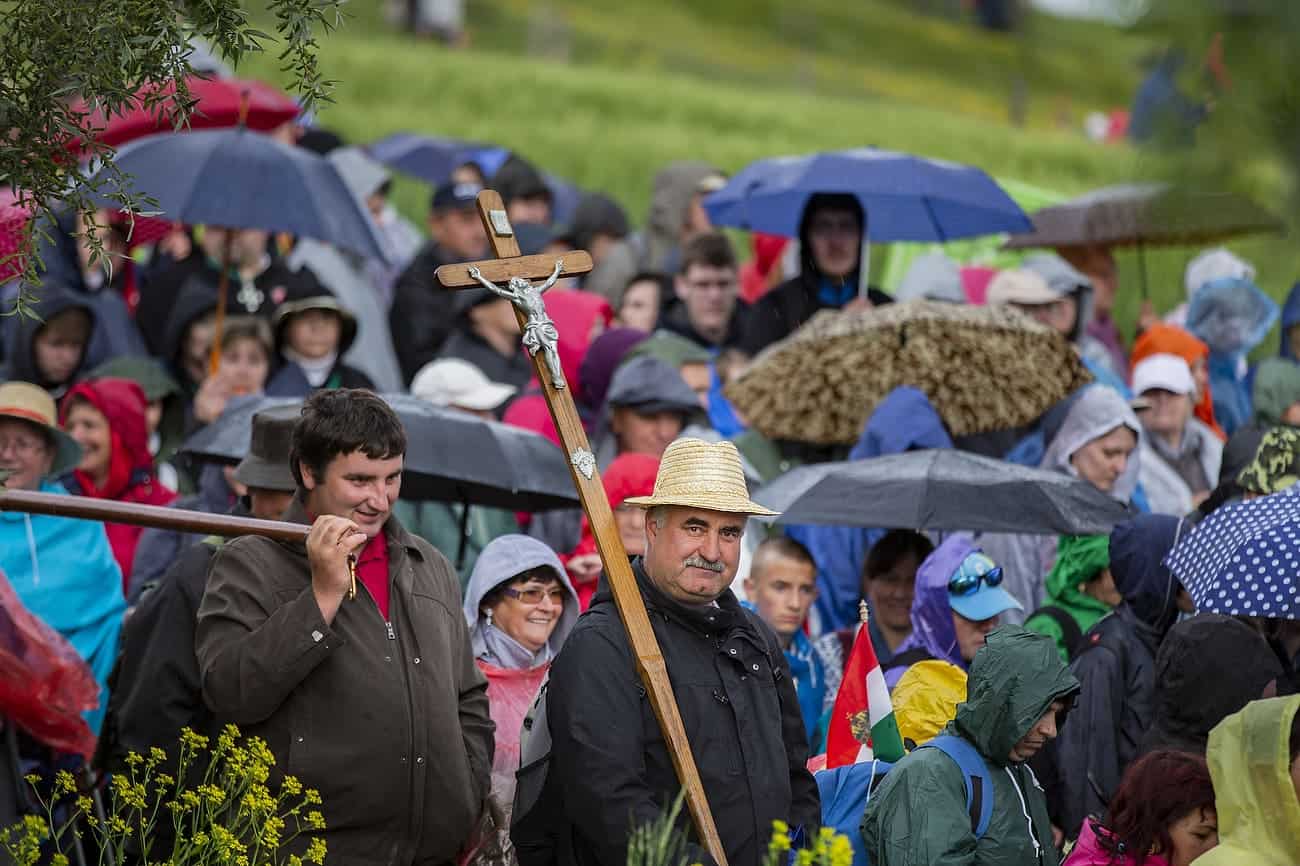
SUMULEU CIUC, ROMANIA - MAY 19: Hungarians from all over the world attending the early pilgrimage hold at Sumuleu Ciuc in Romania, as seen on May 19, 2018. Sumuleu Ciuc became a pilgrimage site in 1567, when Hungarian king John II Sigismund Zápolya wanted to convert the Székely population of the upper Csík to Protestantism. The Székelys refused to abandon the Catholic faith and resisted. A battle took place on a nearby field, on Saturday before Pentecost 1567, from which the Székelys emerged victorious. The monks saw this as a sign of the care of Virgin Mary, and since then, this event has been commemorated by a pilgrimage when the believers gather on Pentecost every year. Beside its religious importance, the pilgrimage has also become a community event demonstrating spiritual unity of Hungarian people living in and outside the historical region of Transylvania. Photography by Mugur Varzariu/Getty Images/Newsweek.
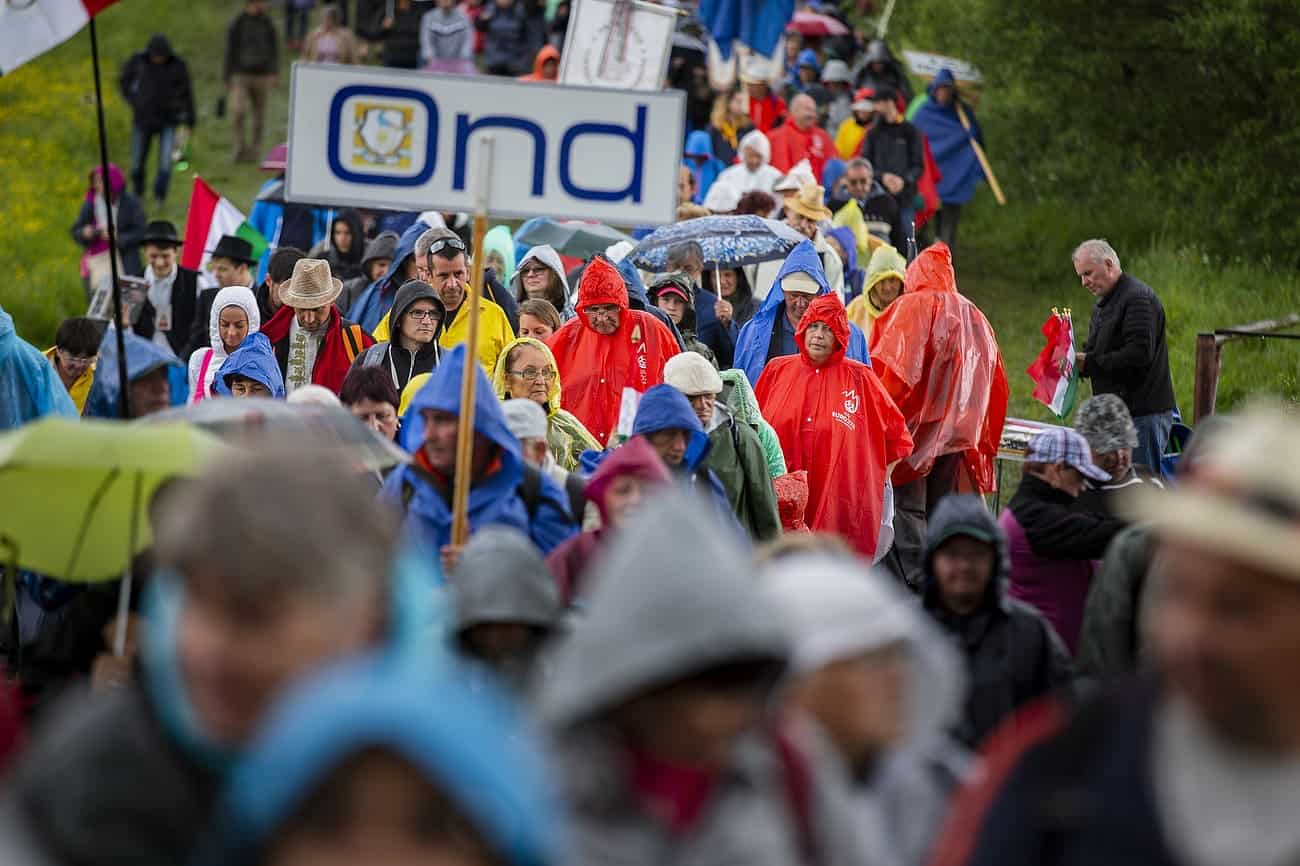
SUMULEU CIUC, ROMANIA - MAY 19: Hungarians from all over the world attending the early pilgrimage hold at Sumuleu Ciuc in Romania, as seen on May 19, 2018. Sumuleu Ciuc became a pilgrimage site in 1567, when Hungarian king John II Sigismund Zápolya wanted to convert the Székely population of the upper Csík to Protestantism. The Székelys refused to abandon the Catholic faith and resisted. A battle took place on a nearby field, on Saturday before Pentecost 1567, from which the Székelys emerged victorious. The monks saw this as a sign of the care of Virgin Mary, and since then, this event has been commemorated by a pilgrimage when the believers gather on Pentecost every year. Beside its religious importance, the pilgrimage has also become a community event demonstrating spiritual unity of Hungarian people living in and outside the historical region of Transylvania. Photography by Mugur Varzariu/Getty Images/Newsweek.

SUMULEU CIUC, ROMANIA - MAY 18: Hungarians from all over the world attending the early pilgrimage hold at Sumuleu Ciuc in Romania, as seen on May 18, 2018. Sumuleu Ciuc became a pilgrimage site in 1567, when Hungarian king John II Sigismund Zápolya wanted to convert the Székely population of the upper Csík to Protestantism. The Székelys refused to abandon the Catholic faith and resisted. A battle took place on a nearby field, on Saturday before Pentecost 1567, from which the Székelys emerged victorious. The monks saw this as a sign of the care of Virgin Mary, and since then, this event has been commemorated by a pilgrimage when the believers gather on Pentecost every year. Beside its religious importance, the pilgrimage has also become a community event demonstrating spiritual unity of Hungarian people living in and outside the historical region of Transylvania. Photography by Mugur Varzariu/Getty Images/Newsweek.
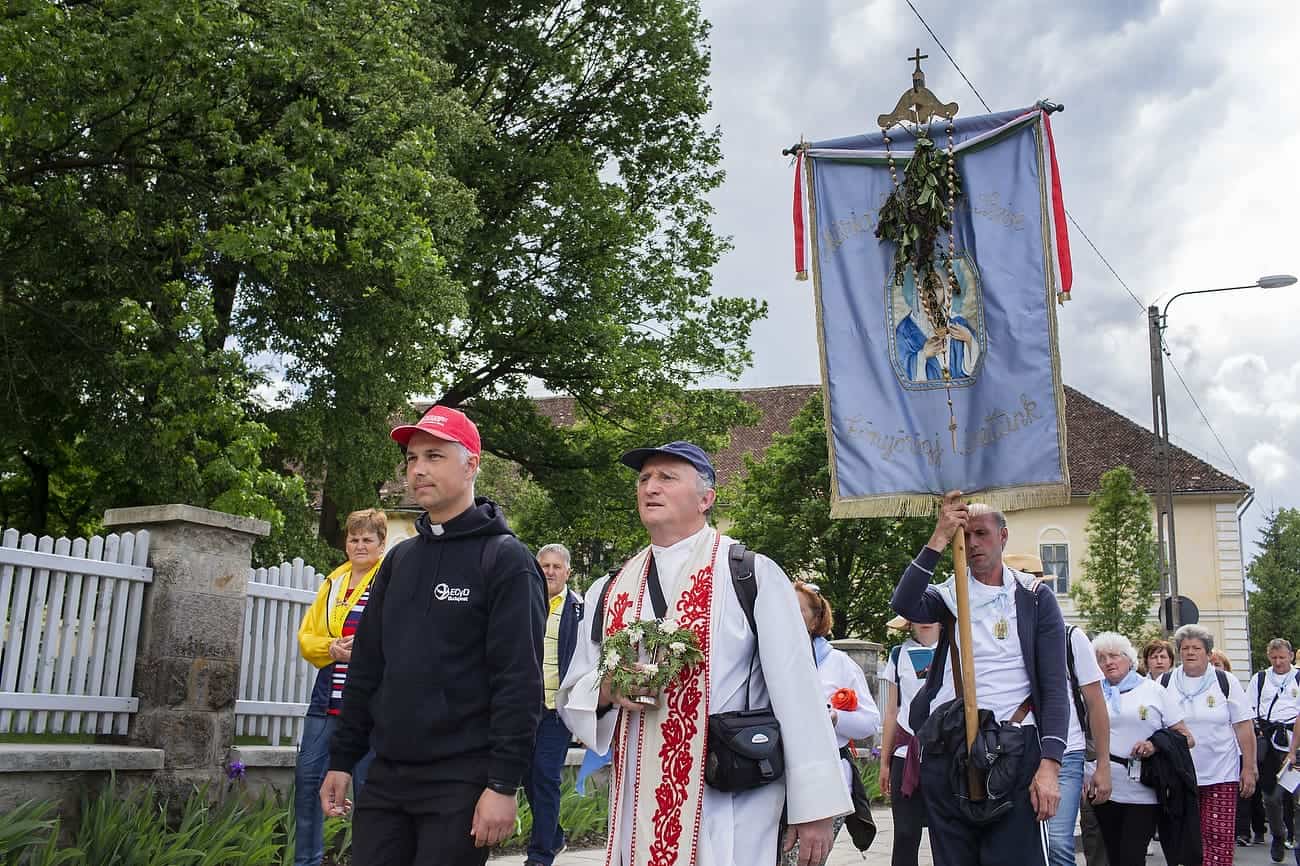
SUMULEU CIUC, ROMANIA - MAY 18: Hungarians from all over the world attending the early pilgrimage hold at Sumuleu Ciuc in Romania, as seen on May 18, 2018. Sumuleu Ciuc became a pilgrimage site in 1567, when Hungarian king John II Sigismund Zápolya wanted to convert the Székely population of the upper Csík to Protestantism. The Székelys refused to abandon the Catholic faith and resisted. A battle took place on a nearby field, on Saturday before Pentecost 1567, from which the Székelys emerged victorious. The monks saw this as a sign of the care of Virgin Mary, and since then, this event has been commemorated by a pilgrimage when the believers gather on Pentecost every year. Beside its religious importance, the pilgrimage has also become a community event demonstrating spiritual unity of Hungarian people living in and outside the historical region of Transylvania. Photography by Mugur Varzariu/Getty Images/Newsweek.
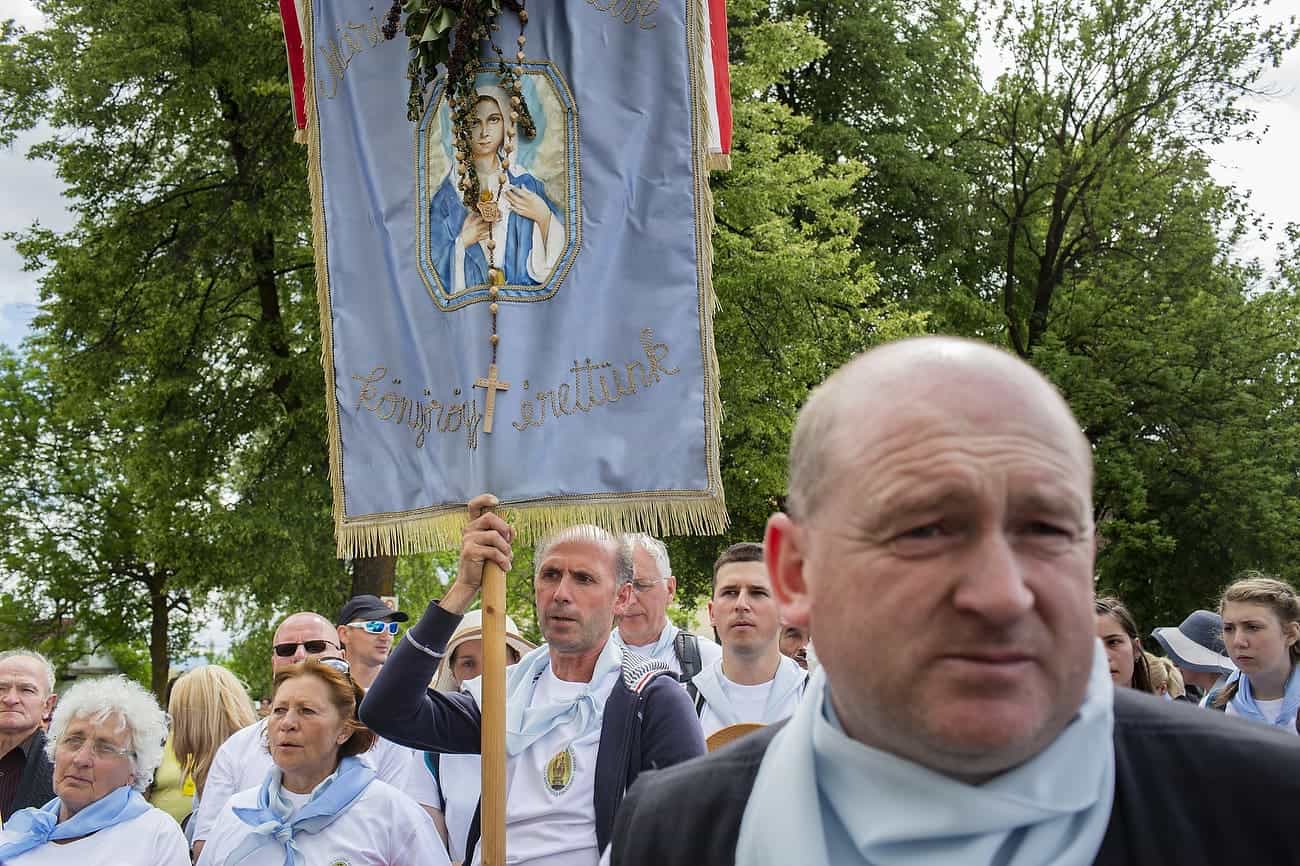
SUMULEU CIUC, ROMANIA - MAY 18: Hungarians from all over the world attending the early pilgrimage hold at Sumuleu Ciuc in Romania, as seen on May 18, 2018. Sumuleu Ciuc became a pilgrimage site in 1567, when Hungarian king John II Sigismund Zápolya wanted to convert the Székely population of the upper Csík to Protestantism. The Székelys refused to abandon the Catholic faith and resisted. A battle took place on a nearby field, on Saturday before Pentecost 1567, from which the Székelys emerged victorious. The monks saw this as a sign of the care of Virgin Mary, and since then, this event has been commemorated by a pilgrimage when the believers gather on Pentecost every year. Beside its religious importance, the pilgrimage has also become a community event demonstrating spiritual unity of Hungarian people living in and outside the historical region of Transylvania. Photography by Mugur Varzariu/Getty Images/Newsweek.
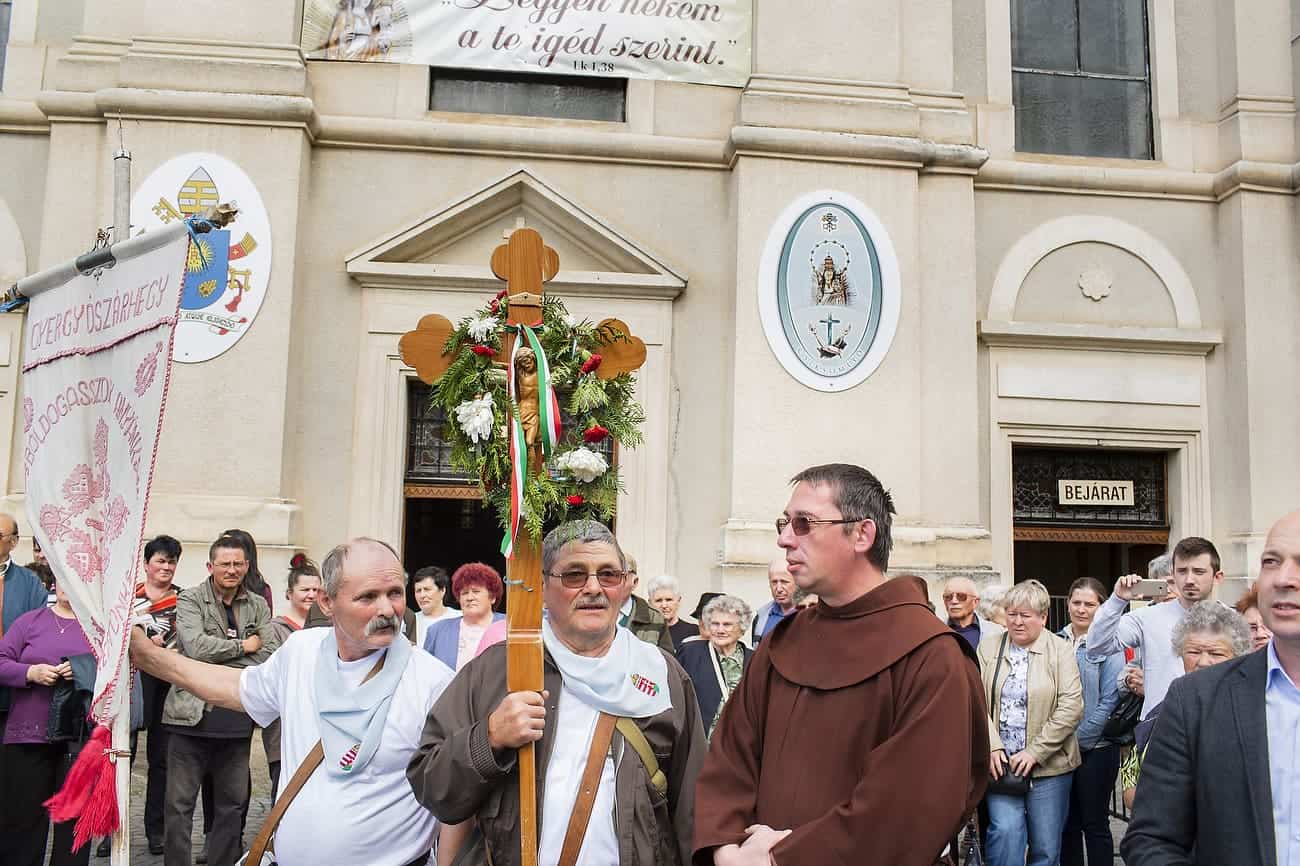
SUMULEU CIUC, ROMANIA - MAY 18: Hungarians from all over the world attending the early pilgrimage hold at Sumuleu Ciuc in Romania, as seen on May 18, 2018. Sumuleu Ciuc became a pilgrimage site in 1567, when Hungarian king John II Sigismund Zápolya wanted to convert the Székely population of the upper Csík to Protestantism. The Székelys refused to abandon the Catholic faith and resisted. A battle took place on a nearby field, on Saturday before Pentecost 1567, from which the Székelys emerged victorious. The monks saw this as a sign of the care of Virgin Mary, and since then, this event has been commemorated by a pilgrimage when the believers gather on Pentecost every year. Beside its religious importance, the pilgrimage has also become a community event demonstrating spiritual unity of Hungarian people living in and outside the historical region of Transylvania. Photography by Mugur Varzariu/Getty Images/Newsweek.
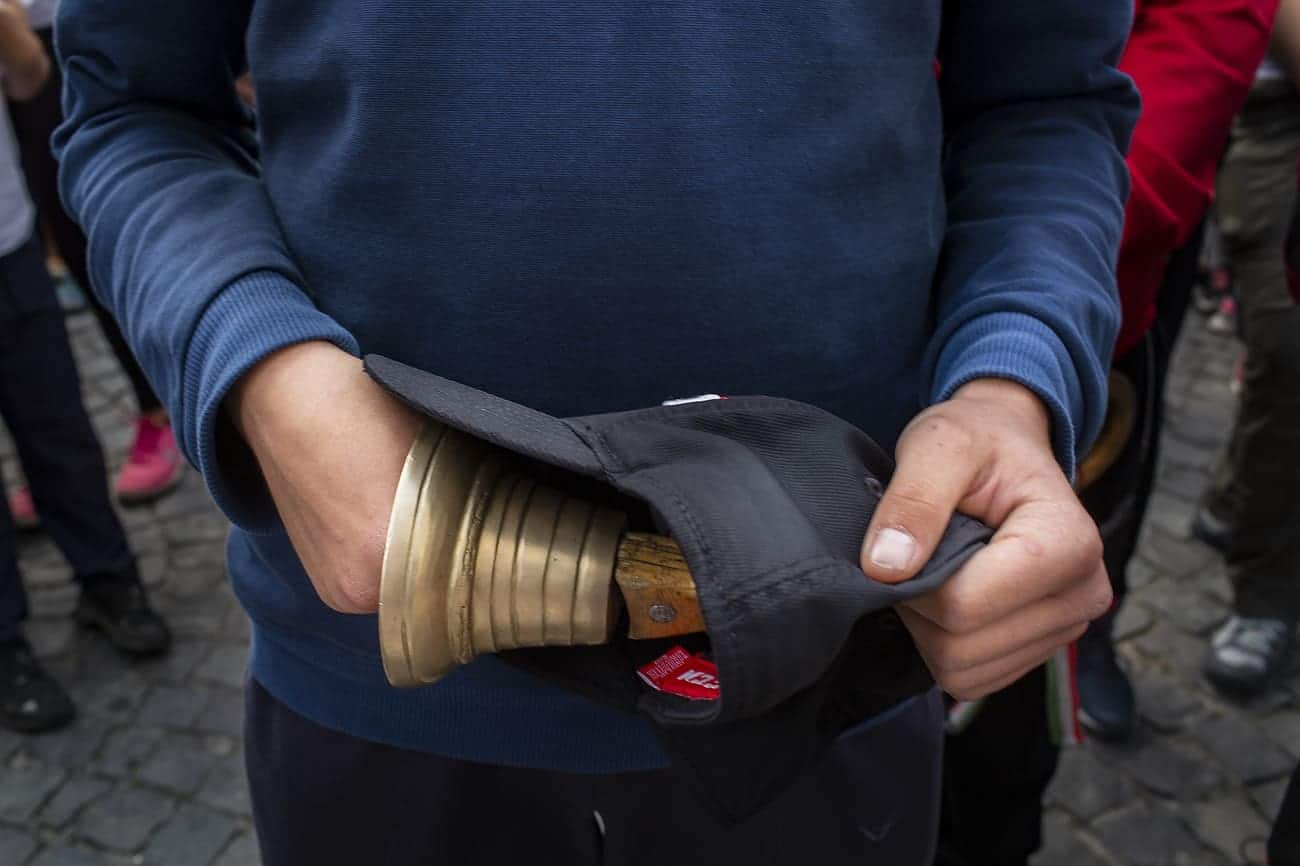
SUMULEU CIUC, ROMANIA - MAY 18: Hungarians from all over the world attending the early pilgrimage hold at Sumuleu Ciuc in Romania, as seen on May 18, 2018. Sumuleu Ciuc became a pilgrimage site in 1567, when Hungarian king John II Sigismund Zápolya wanted to convert the Székely population of the upper Csík to Protestantism. The Székelys refused to abandon the Catholic faith and resisted. A battle took place on a nearby field, on Saturday before Pentecost 1567, from which the Székelys emerged victorious. The monks saw this as a sign of the care of Virgin Mary, and since then, this event has been commemorated by a pilgrimage when the believers gather on Pentecost every year. Beside its religious importance, the pilgrimage has also become a community event demonstrating spiritual unity of Hungarian people living in and outside the historical region of Transylvania. Photography by Mugur Varzariu/Getty Images/Newsweek.

SUMULEU CIUC, ROMANIA - MAY 18: Hungarians from all over the world attending the early pilgrimage hold at Sumuleu Ciuc in Romania, as seen on May 18, 2018. Sumuleu Ciuc became a pilgrimage site in 1567, when Hungarian king John II Sigismund Zápolya wanted to convert the Székely population of the upper Csík to Protestantism. The Székelys refused to abandon the Catholic faith and resisted. A battle took place on a nearby field, on Saturday before Pentecost 1567, from which the Székelys emerged victorious. The monks saw this as a sign of the care of Virgin Mary, and since then, this event has been commemorated by a pilgrimage when the believers gather on Pentecost every year. Beside its religious importance, the pilgrimage has also become a community event demonstrating spiritual unity of Hungarian people living in and outside the historical region of Transylvania. Photography by Mugur Varzariu/Getty Images/Newsweek.

SUMULEU CIUC, ROMANIA - MAY 18: Hungarians from all over the world attending the early pilgrimage hold at Sumuleu Ciuc in Romania, as seen on May 18, 2018. Sumuleu Ciuc became a pilgrimage site in 1567, when Hungarian king John II Sigismund Zápolya wanted to convert the Székely population of the upper Csík to Protestantism. The Székelys refused to abandon the Catholic faith and resisted. A battle took place on a nearby field, on Saturday before Pentecost 1567, from which the Székelys emerged victorious. The monks saw this as a sign of the care of Virgin Mary, and since then, this event has been commemorated by a pilgrimage when the believers gather on Pentecost every year. Beside its religious importance, the pilgrimage has also become a community event demonstrating spiritual unity of Hungarian people living in and outside the historical region of Transylvania. Photography by Mugur Varzariu/Getty Images/Newsweek.
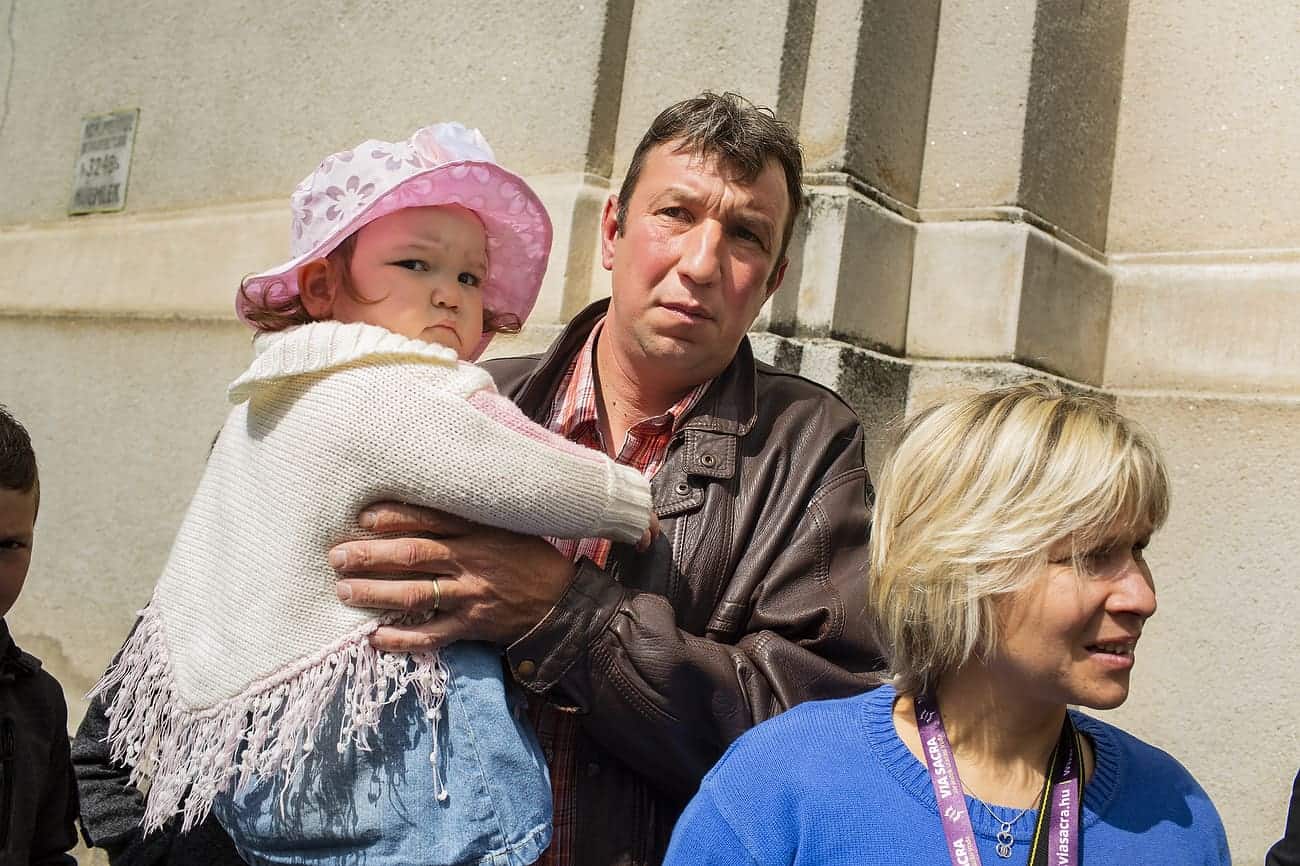
SUMULEU CIUC, ROMANIA - MAY 18: Hungarians from all over the world attending the early pilgrimage hold at Sumuleu Ciuc in Romania, as seen on May 18, 2018. Sumuleu Ciuc became a pilgrimage site in 1567, when Hungarian king John II Sigismund Zápolya wanted to convert the Székely population of the upper Csík to Protestantism. The Székelys refused to abandon the Catholic faith and resisted. A battle took place on a nearby field, on Saturday before Pentecost 1567, from which the Székelys emerged victorious. The monks saw this as a sign of the care of Virgin Mary, and since then, this event has been commemorated by a pilgrimage when the believers gather on Pentecost every year. Beside its religious importance, the pilgrimage has also become a community event demonstrating spiritual unity of Hungarian people living in and outside the historical region of Transylvania. Photography by Mugur Varzariu/Getty Images/Newsweek.
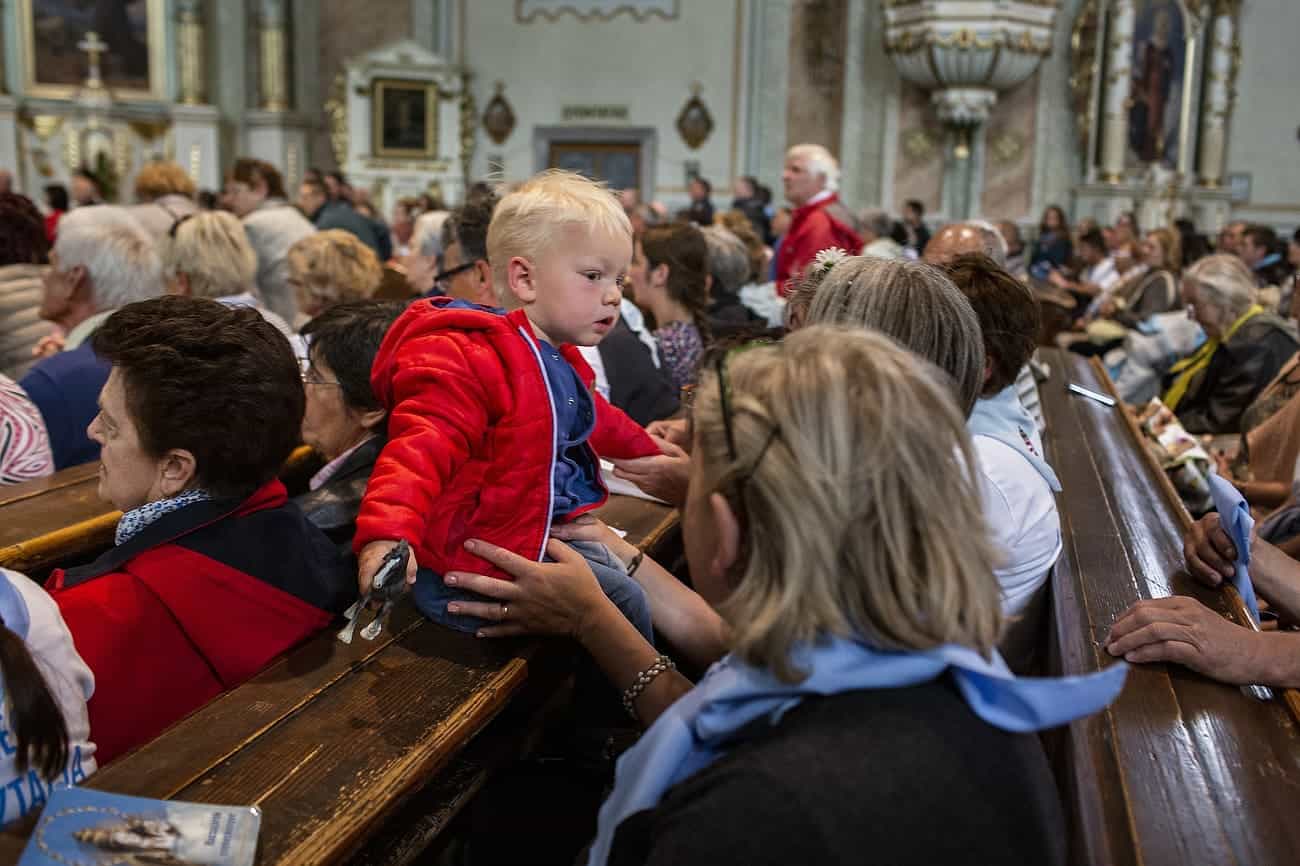
SUMULEU CIUC, ROMANIA - MAY 18: Hungarians from all over the world attending the early pilgrimage hold at Sumuleu Ciuc in Romania, as seen on May 18, 2018. Sumuleu Ciuc became a pilgrimage site in 1567, when Hungarian king John II Sigismund Zápolya wanted to convert the Székely population of the upper Csík to Protestantism. The Székelys refused to abandon the Catholic faith and resisted. A battle took place on a nearby field, on Saturday before Pentecost 1567, from which the Székelys emerged victorious. The monks saw this as a sign of the care of Virgin Mary, and since then, this event has been commemorated by a pilgrimage when the believers gather on Pentecost every year. Beside its religious importance, the pilgrimage has also become a community event demonstrating spiritual unity of Hungarian people living in and outside the historical region of Transylvania. Photography by Mugur Varzariu/Getty Images/Newsweek.
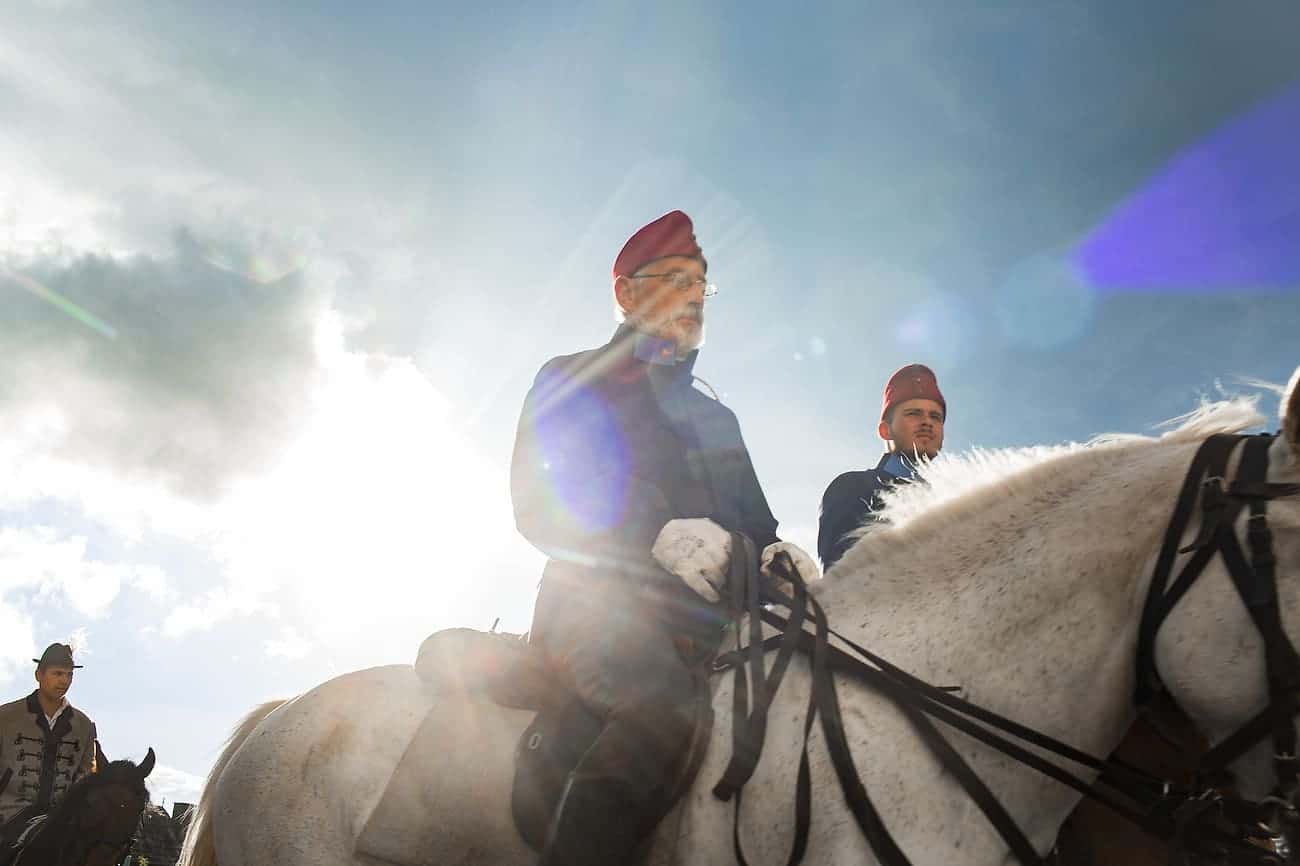
SUMULEU CIUC, ROMANIA - MAY 18: Hungarians from all over the world attending the early pilgrimage hold at Sumuleu Ciuc in Romania, as seen on May 18, 2018. Sumuleu Ciuc became a pilgrimage site in 1567, when Hungarian king John II Sigismund Zápolya wanted to convert the Székely population of the upper Csík to Protestantism. The Székelys refused to abandon the Catholic faith and resisted. A battle took place on a nearby field, on Saturday before Pentecost 1567, from which the Székelys emerged victorious. The monks saw this as a sign of the care of Virgin Mary, and since then, this event has been commemorated by a pilgrimage when the believers gather on Pentecost every year. Beside its religious importance, the pilgrimage has also become a community event demonstrating spiritual unity of Hungarian people living in and outside the historical region of Transylvania. Photography by Mugur Varzariu/Getty Images/Newsweek.
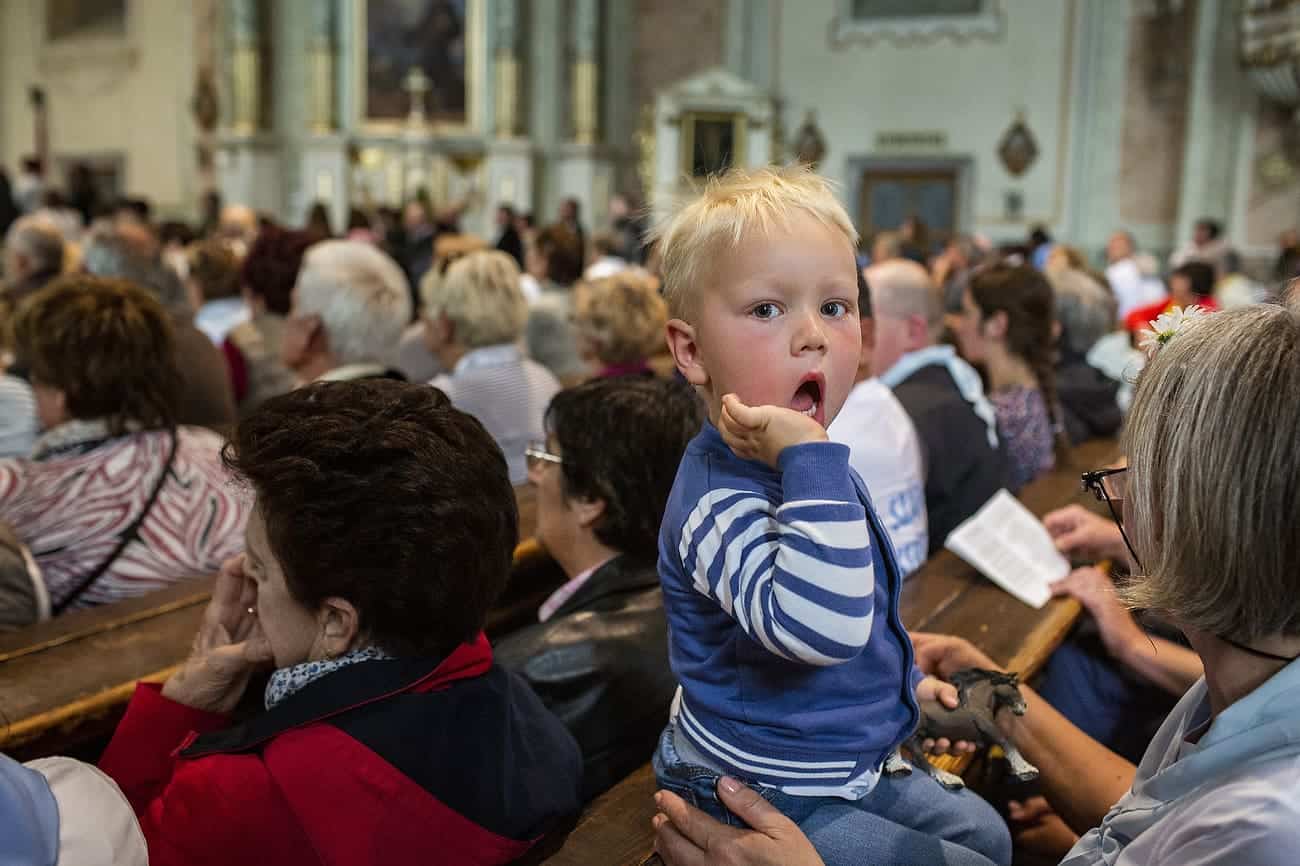
SUMULEU CIUC, ROMANIA - MAY 18: Hungarians from all over the world attending the early pilgrimage hold at Sumuleu Ciuc in Romania, as seen on May 18, 2018. Sumuleu Ciuc became a pilgrimage site in 1567, when Hungarian king John II Sigismund Zápolya wanted to convert the Székely population of the upper Csík to Protestantism. The Székelys refused to abandon the Catholic faith and resisted. A battle took place on a nearby field, on Saturday before Pentecost 1567, from which the Székelys emerged victorious. The monks saw this as a sign of the care of Virgin Mary, and since then, this event has been commemorated by a pilgrimage when the believers gather on Pentecost every year. Beside its religious importance, the pilgrimage has also become a community event demonstrating spiritual unity of Hungarian people living in and outside the historical region of Transylvania. Photography by Mugur Varzariu/Getty Images/Newsweek.
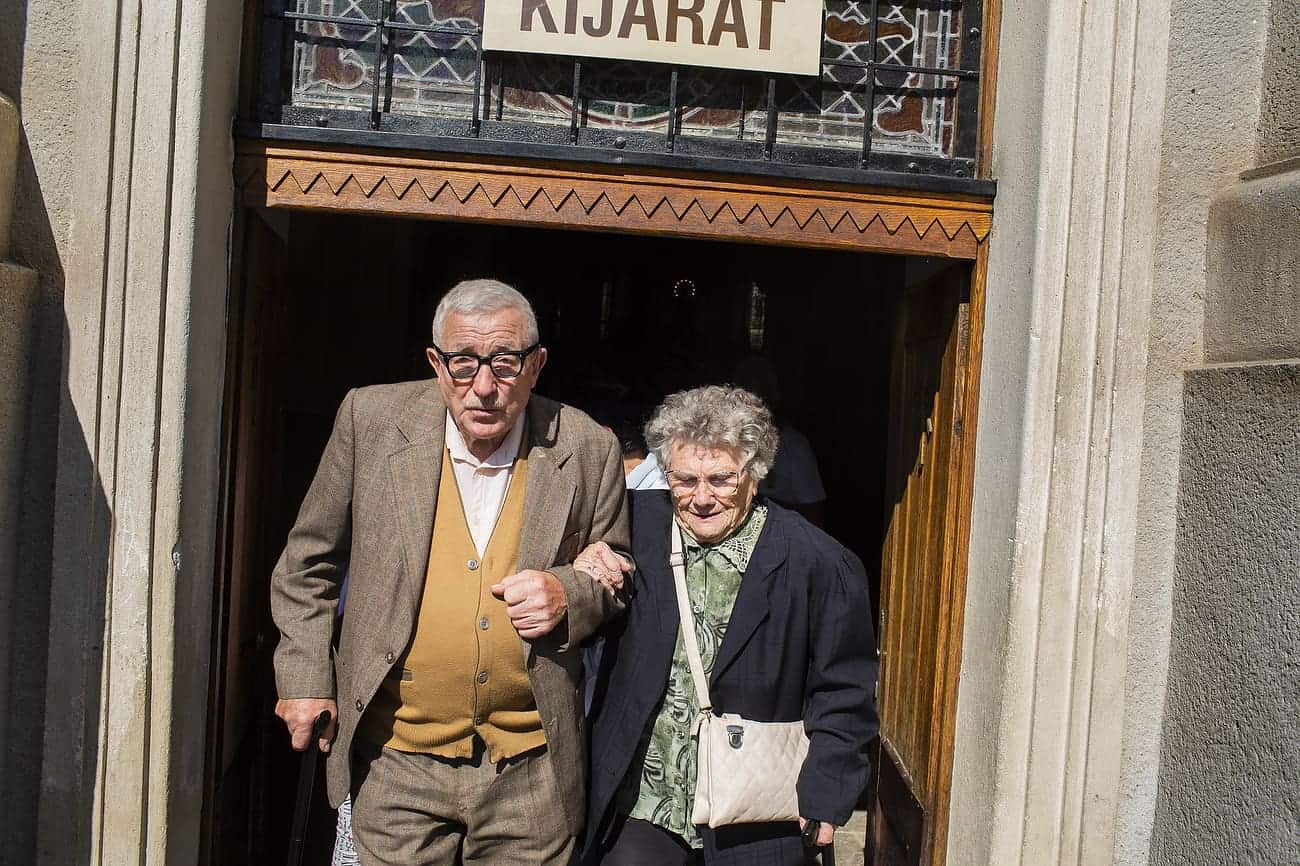
SUMULEU CIUC, ROMANIA - MAY 18: Hungarians from all over the world attending the early pilgrimage hold at Sumuleu Ciuc in Romania, as seen on May 18, 2018. Sumuleu Ciuc became a pilgrimage site in 1567, when Hungarian king John II Sigismund Zápolya wanted to convert the Székely population of the upper Csík to Protestantism. The Székelys refused to abandon the Catholic faith and resisted. A battle took place on a nearby field, on Saturday before Pentecost 1567, from which the Székelys emerged victorious. The monks saw this as a sign of the care of Virgin Mary, and since then, this event has been commemorated by a pilgrimage when the believers gather on Pentecost every year. Beside its religious importance, the pilgrimage has also become a community event demonstrating spiritual unity of Hungarian people living in and outside the historical region of Transylvania. Photography by Mugur Varzariu/Getty Images/Newsweek.
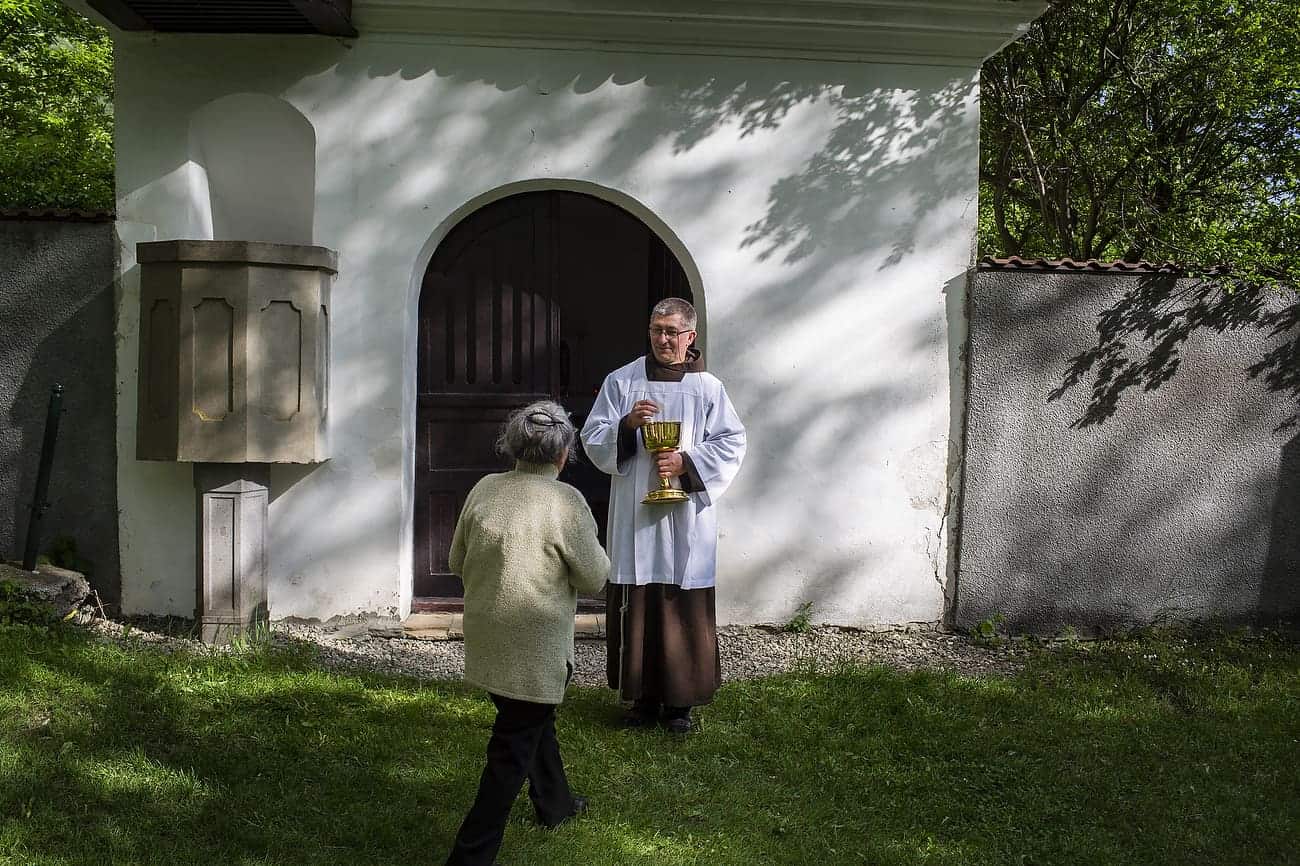
SUMULEU CIUC, ROMANIA - MAY 18: Hungarians from all over the world attending the early pilgrimage hold at Sumuleu Ciuc in Romania, as seen on May 18, 2018. Sumuleu Ciuc became a pilgrimage site in 1567, when Hungarian king John II Sigismund Zápolya wanted to convert the Székely population of the upper Csík to Protestantism. The Székelys refused to abandon the Catholic faith and resisted. A battle took place on a nearby field, on Saturday before Pentecost 1567, from which the Székelys emerged victorious. The monks saw this as a sign of the care of Virgin Mary, and since then, this event has been commemorated by a pilgrimage when the believers gather on Pentecost every year. Beside its religious importance, the pilgrimage has also become a community event demonstrating spiritual unity of Hungarian people living in and outside the historical region of Transylvania. Photography by Mugur Varzariu/Getty Images/Newsweek.
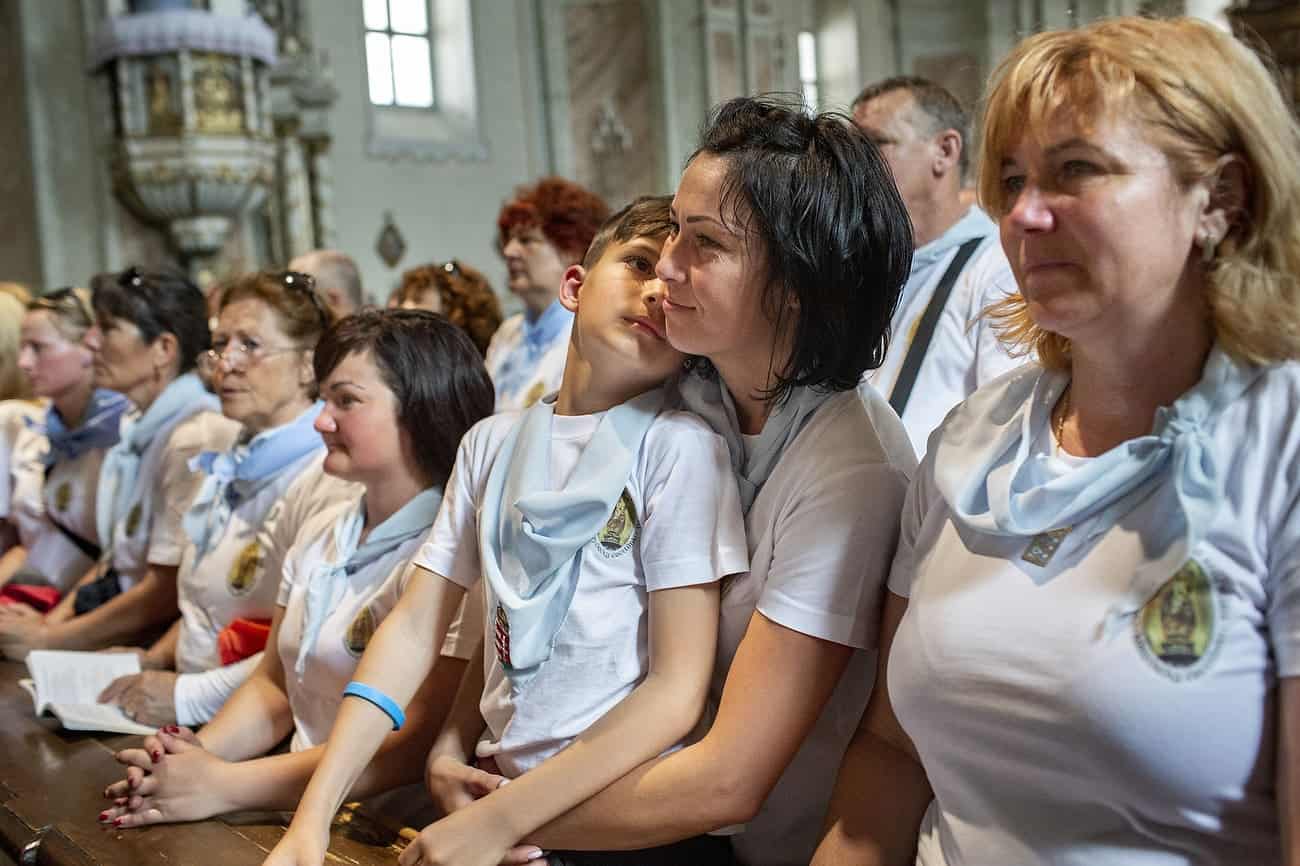
SUMULEU CIUC, ROMANIA - MAY 18: Hungarians from all over the world attending the early pilgrimage hold at Sumuleu Ciuc in Romania, as seen on May 18, 2018. Sumuleu Ciuc became a pilgrimage site in 1567, when Hungarian king John II Sigismund Zápolya wanted to convert the Székely population of the upper Csík to Protestantism. The Székelys refused to abandon the Catholic faith and resisted. A battle took place on a nearby field, on Saturday before Pentecost 1567, from which the Székelys emerged victorious. The monks saw this as a sign of the care of Virgin Mary, and since then, this event has been commemorated by a pilgrimage when the believers gather on Pentecost every year. Beside its religious importance, the pilgrimage has also become a community event demonstrating spiritual unity of Hungarian people living in and outside the historical region of Transylvania. Photography by Mugur Varzariu/Getty Images/Newsweek.
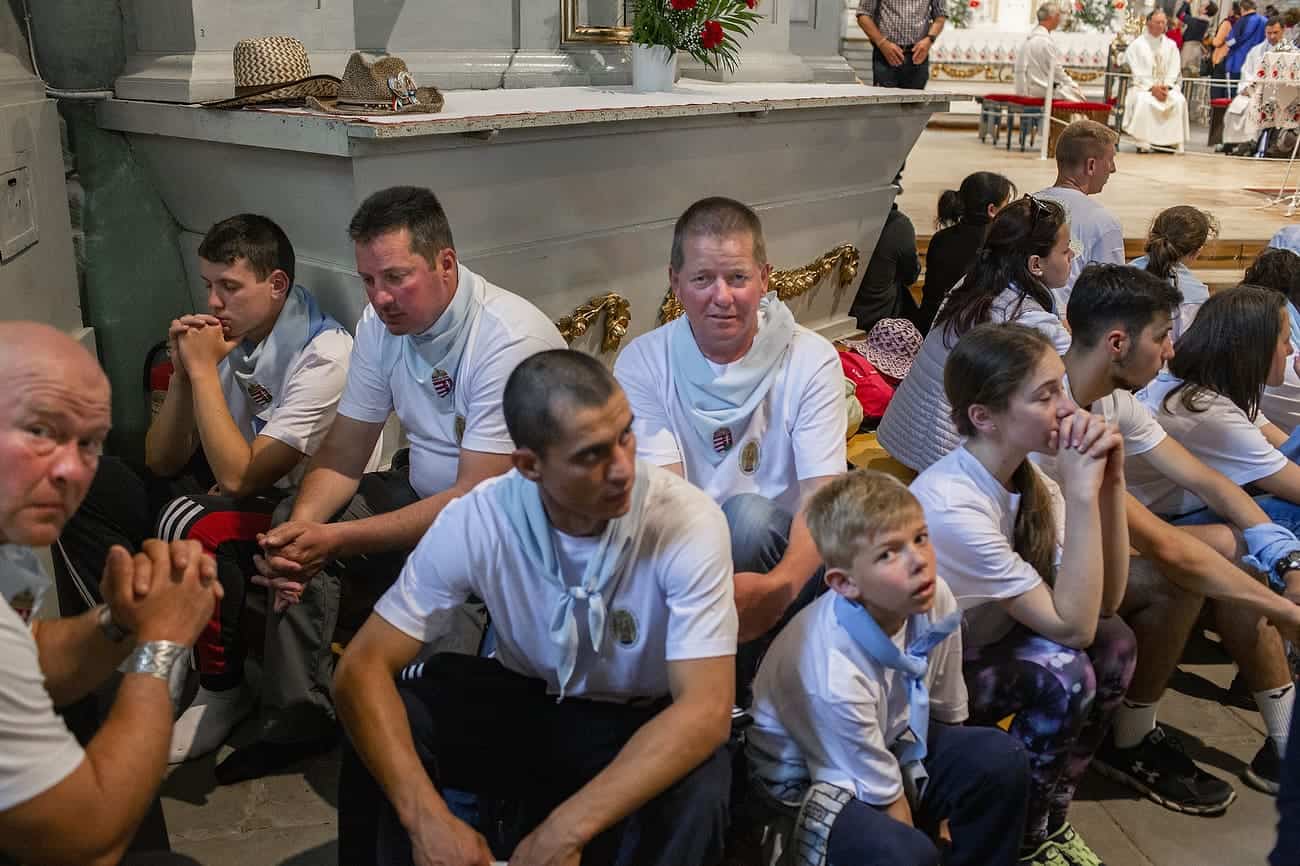
SUMULEU CIUC, ROMANIA - MAY 18: Hungarians from all over the world attending the early pilgrimage hold at Sumuleu Ciuc in Romania, as seen on May 18, 2018. Sumuleu Ciuc became a pilgrimage site in 1567, when Hungarian king John II Sigismund Zpolya wanted to convert the Szkely population of the upper Csk to Protestantism. The Szkelys refused to abandon the Catholic faith and resisted. A battle took place on a nearby field, on Saturday before Pentecost 1567, from which the Szkelys emerged victorious. The monks saw this as a sign of the care of Virgin Mary, and since then, this event has been commemorated by a pilgrimage when the believers gather on Pentecost every year. Beside its religious importance, the pilgrimage has also become a community event demonstrating spiritual unity of Hungarian people living in and outside the historical region of Transylvania. Photography by Mugur Varzariu/Getty Images/Newsweek.

SUMULEU CIUC, ROMANIA - MAY 18: Hungarians from all over the world attending the early pilgrimage hold at Sumuleu Ciuc in Romania, as seen on May 18, 2018. Sumuleu Ciuc became a pilgrimage site in 1567, when Hungarian king John II Sigismund Zápolya wanted to convert the Székely population of the upper Csík to Protestantism. The Székelys refused to abandon the Catholic faith and resisted. A battle took place on a nearby field, on Saturday before Pentecost 1567, from which the Székelys emerged victorious. The monks saw this as a sign of the care of Virgin Mary, and since then, this event has been commemorated by a pilgrimage when the believers gather on Pentecost every year. Beside its religious importance, the pilgrimage has also become a community event demonstrating spiritual unity of Hungarian people living in and outside the historical region of Transylvania. Photography by Mugur Varzariu/Getty Images/Newsweek.
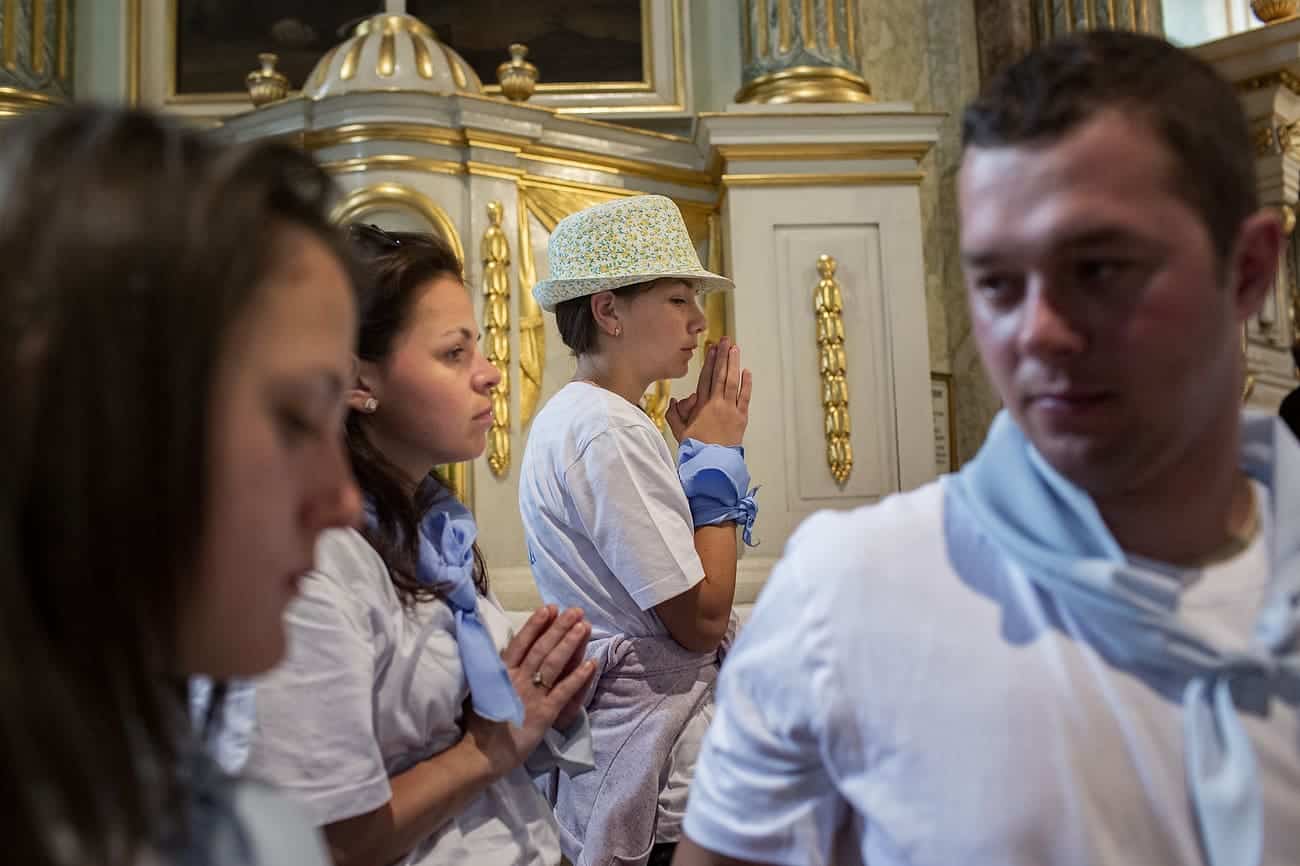
SUMULEU CIUC, ROMANIA - MAY 18: Hungarians from all over the world attending the early pilgrimage hold at Sumuleu Ciuc in Romania, as seen on May 18, 2018. Sumuleu Ciuc became a pilgrimage site in 1567, when Hungarian king John II Sigismund Zpolya wanted to convert the Szkely population of the upper Csk to Protestantism. The Szkelys refused to abandon the Catholic faith and resisted. A battle took place on a nearby field, on Saturday before Pentecost 1567, from which the Szkelys emerged victorious. The monks saw this as a sign of the care of Virgin Mary, and since then, this event has been commemorated by a pilgrimage when the believers gather on Pentecost every year. Beside its religious importance, the pilgrimage has also become a community event demonstrating spiritual unity of Hungarian people living in and outside the historical region of Transylvania. Photography by Mugur Varzariu/Getty Images/Newsweek.
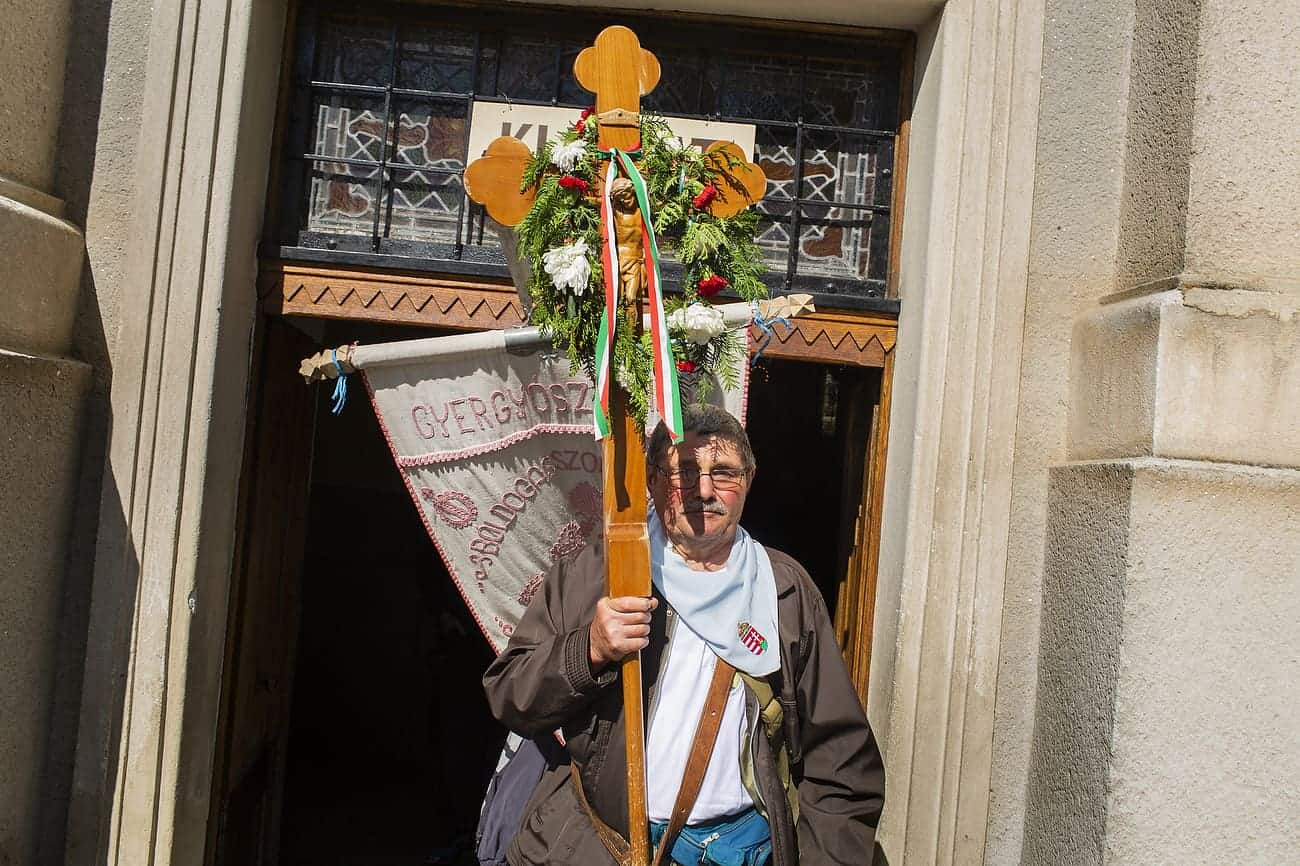
SUMULEU CIUC, ROMANIA - MAY 18: Hungarians from all over the world attending the early pilgrimage hold at Sumuleu Ciuc in Romania, as seen on May 18, 2018. Sumuleu Ciuc became a pilgrimage site in 1567, when Hungarian king John II Sigismund Zápolya wanted to convert the Székely population of the upper Csík to Protestantism. The Székelys refused to abandon the Catholic faith and resisted. A battle took place on a nearby field, on Saturday before Pentecost 1567, from which the Székelys emerged victorious. The monks saw this as a sign of the care of Virgin Mary, and since then, this event has been commemorated by a pilgrimage when the believers gather on Pentecost every year. Beside its religious importance, the pilgrimage has also become a community event demonstrating spiritual unity of Hungarian people living in and outside the historical region of Transylvania. Photography by Mugur Varzariu/Getty Images/Newsweek.
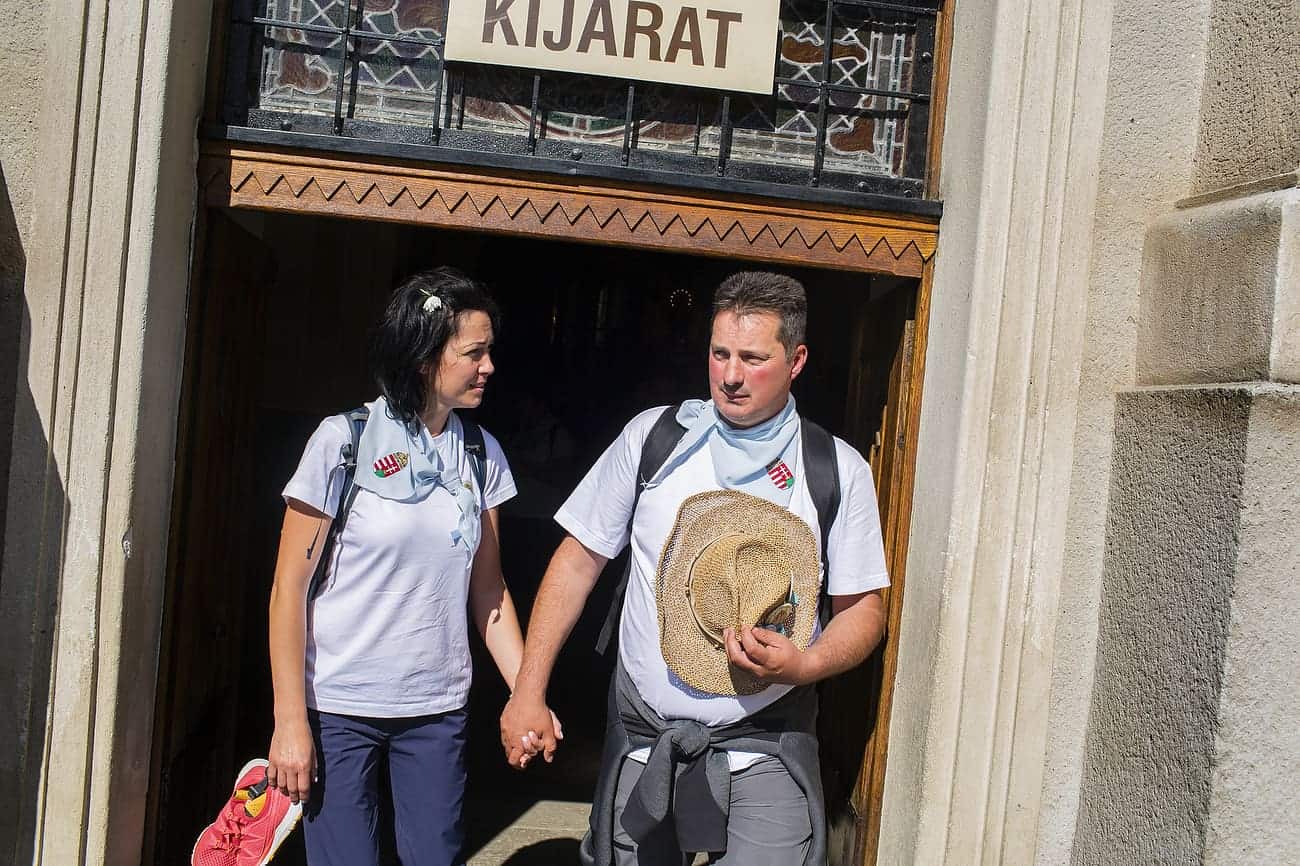
SUMULEU CIUC, ROMANIA - MAY 18: Hungarians from all over the world attending the early pilgrimage hold at Sumuleu Ciuc in Romania, as seen on May 18, 2018. Sumuleu Ciuc became a pilgrimage site in 1567, when Hungarian king John II Sigismund Zápolya wanted to convert the Székely population of the upper Csík to Protestantism. The Székelys refused to abandon the Catholic faith and resisted. A battle took place on a nearby field, on Saturday before Pentecost 1567, from which the Székelys emerged victorious. The monks saw this as a sign of the care of Virgin Mary, and since then, this event has been commemorated by a pilgrimage when the believers gather on Pentecost every year. Beside its religious importance, the pilgrimage has also become a community event demonstrating spiritual unity of Hungarian people living in and outside the historical region of Transylvania. Photography by Mugur Varzariu/Getty Images/Newsweek.
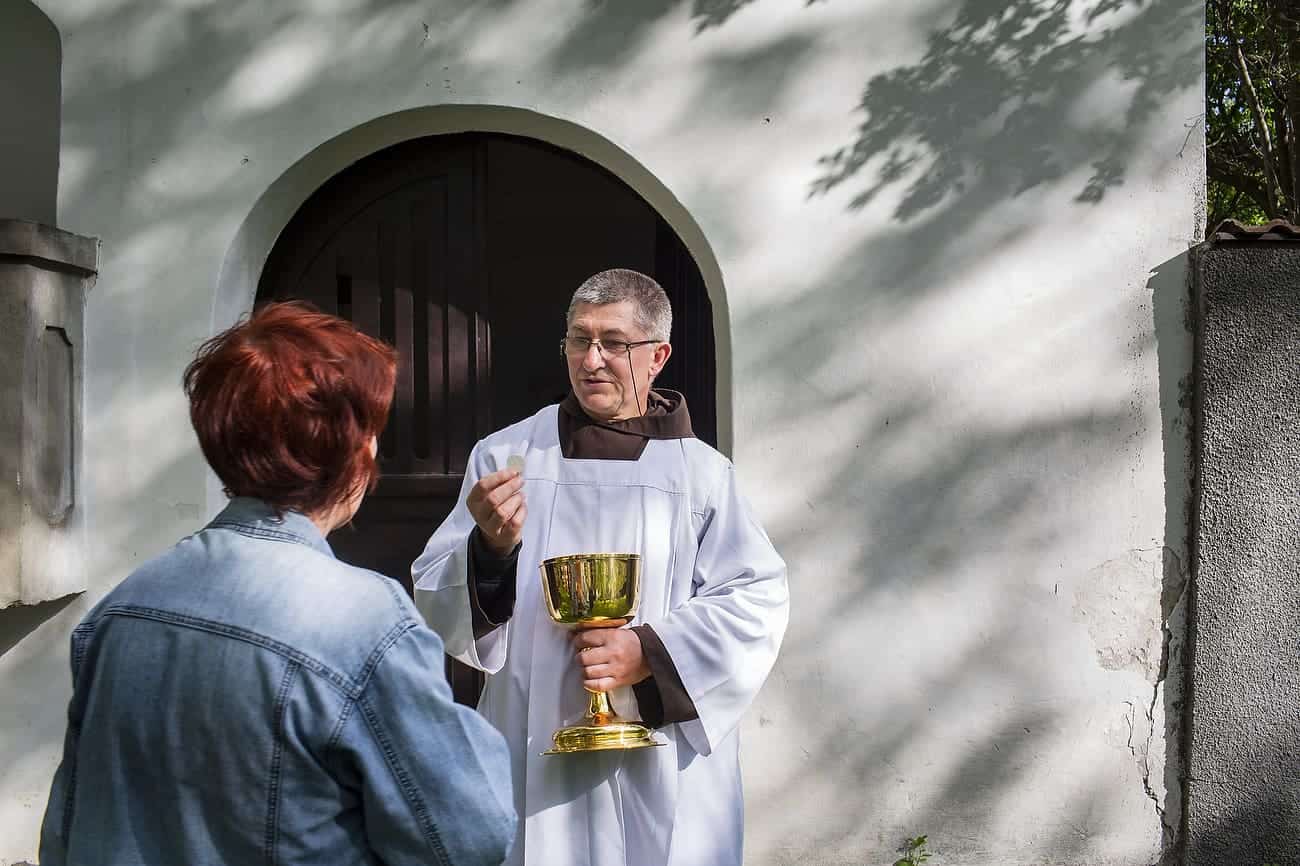
SUMULEU CIUC, ROMANIA - MAY 18: Hungarians from all over the world attending the early pilgrimage hold at Sumuleu Ciuc in Romania, as seen on May 18, 2018. Sumuleu Ciuc became a pilgrimage site in 1567, when Hungarian king John II Sigismund Zápolya wanted to convert the Székely population of the upper Csík to Protestantism. The Székelys refused to abandon the Catholic faith and resisted. A battle took place on a nearby field, on Saturday before Pentecost 1567, from which the Székelys emerged victorious. The monks saw this as a sign of the care of Virgin Mary, and since then, this event has been commemorated by a pilgrimage when the believers gather on Pentecost every year. Beside its religious importance, the pilgrimage has also become a community event demonstrating spiritual unity of Hungarian people living in and outside the historical region of Transylvania. Photography by Mugur Varzariu/Getty Images/Newsweek.

SUMULEU CIUC, ROMANIA - MAY 18: Hungarians from all over the world attending the early pilgrimage hold at Sumuleu Ciuc in Romania, as seen on May 18, 2018. Sumuleu Ciuc became a pilgrimage site in 1567, when Hungarian king John II Sigismund Zápolya wanted to convert the Székely population of the upper Csík to Protestantism. The Székelys refused to abandon the Catholic faith and resisted. A battle took place on a nearby field, on Saturday before Pentecost 1567, from which the Székelys emerged victorious. The monks saw this as a sign of the care of Virgin Mary, and since then, this event has been commemorated by a pilgrimage when the believers gather on Pentecost every year. Beside its religious importance, the pilgrimage has also become a community event demonstrating spiritual unity of Hungarian people living in and outside the historical region of Transylvania. Photography by Mugur Varzariu/Getty Images/Newsweek.

SUMULEU CIUC, ROMANIA - MAY 18: Hungarians from all over the world attending the early pilgrimage hold at Sumuleu Ciuc in Romania, as seen on May 18, 2018. Sumuleu Ciuc became a pilgrimage site in 1567, when Hungarian king John II Sigismund Zápolya wanted to convert the Székely population of the upper Csík to Protestantism. The Székelys refused to abandon the Catholic faith and resisted. A battle took place on a nearby field, on Saturday before Pentecost 1567, from which the Székelys emerged victorious. The monks saw this as a sign of the care of Virgin Mary, and since then, this event has been commemorated by a pilgrimage when the believers gather on Pentecost every year. Beside its religious importance, the pilgrimage has also become a community event demonstrating spiritual unity of Hungarian people living in and outside the historical region of Transylvania. Photography by Mugur Varzariu/Getty Images/Newsweek.
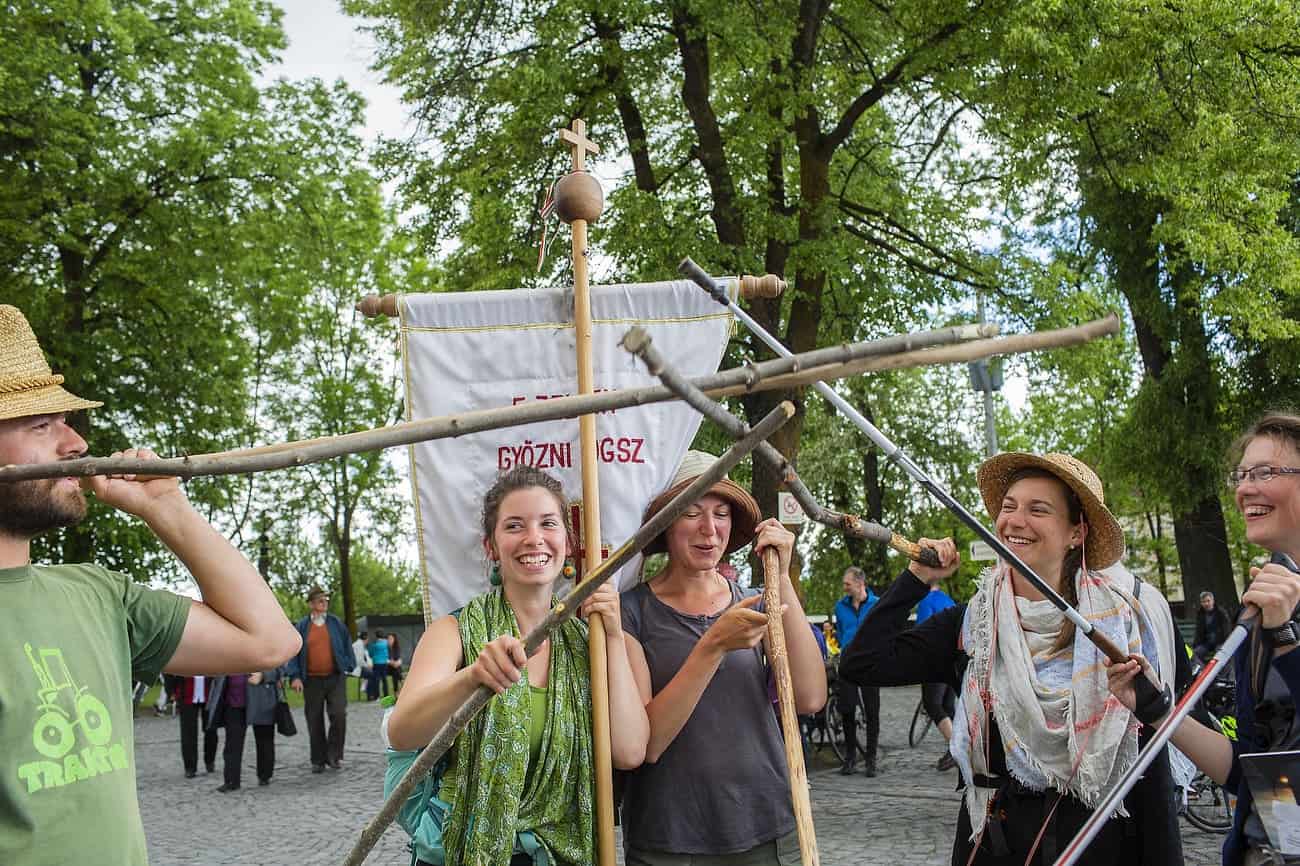
SUMULEU CIUC, ROMANIA - MAY 18: Hungarians from all over the world attending the early pilgrimage hold at Sumuleu Ciuc in Romania, as seen on May 18, 2018. Sumuleu Ciuc became a pilgrimage site in 1567, when Hungarian king John II Sigismund Zápolya wanted to convert the Székely population of the upper Csík to Protestantism. The Székelys refused to abandon the Catholic faith and resisted. A battle took place on a nearby field, on Saturday before Pentecost 1567, from which the Székelys emerged victorious. The monks saw this as a sign of the care of Virgin Mary, and since then, this event has been commemorated by a pilgrimage when the believers gather on Pentecost every year. Beside its religious importance, the pilgrimage has also become a community event demonstrating spiritual unity of Hungarian people living in and outside the historical region of Transylvania. Photography by Mugur Varzariu/Getty Images/Newsweek.
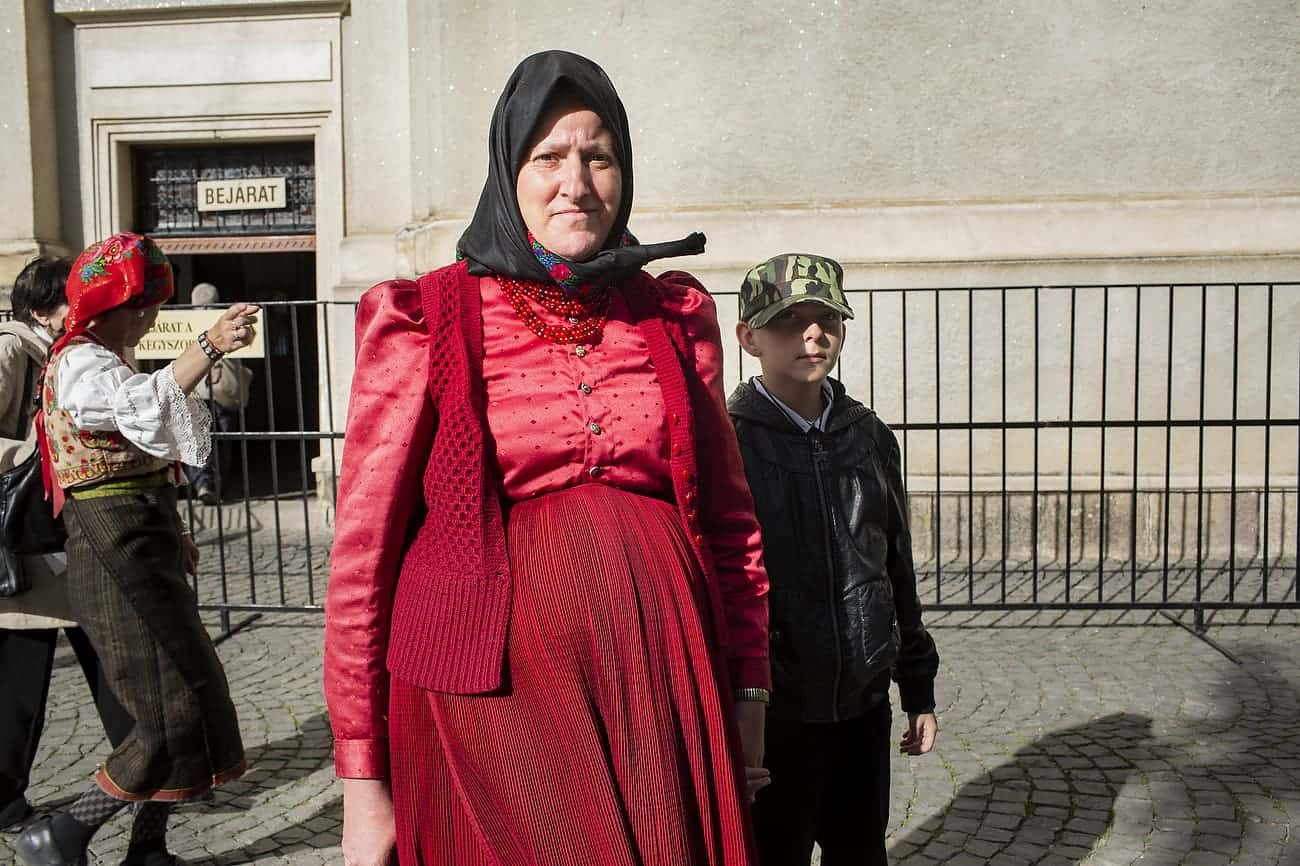
SUMULEU CIUC, ROMANIA - MAY 18: Hungarians from all over the world attending the early pilgrimage hold at Sumuleu Ciuc in Romania, as seen on May 18, 2018. Sumuleu Ciuc became a pilgrimage site in 1567, when Hungarian king John II Sigismund Zápolya wanted to convert the Székely population of the upper Csík to Protestantism. The Székelys refused to abandon the Catholic faith and resisted. A battle took place on a nearby field, on Saturday before Pentecost 1567, from which the Székelys emerged victorious. The monks saw this as a sign of the care of Virgin Mary, and since then, this event has been commemorated by a pilgrimage when the believers gather on Pentecost every year. Beside its religious importance, the pilgrimage has also become a community event demonstrating spiritual unity of Hungarian people living in and outside the historical region of Transylvania. Photography by Mugur Varzariu/Getty Images/Newsweek.
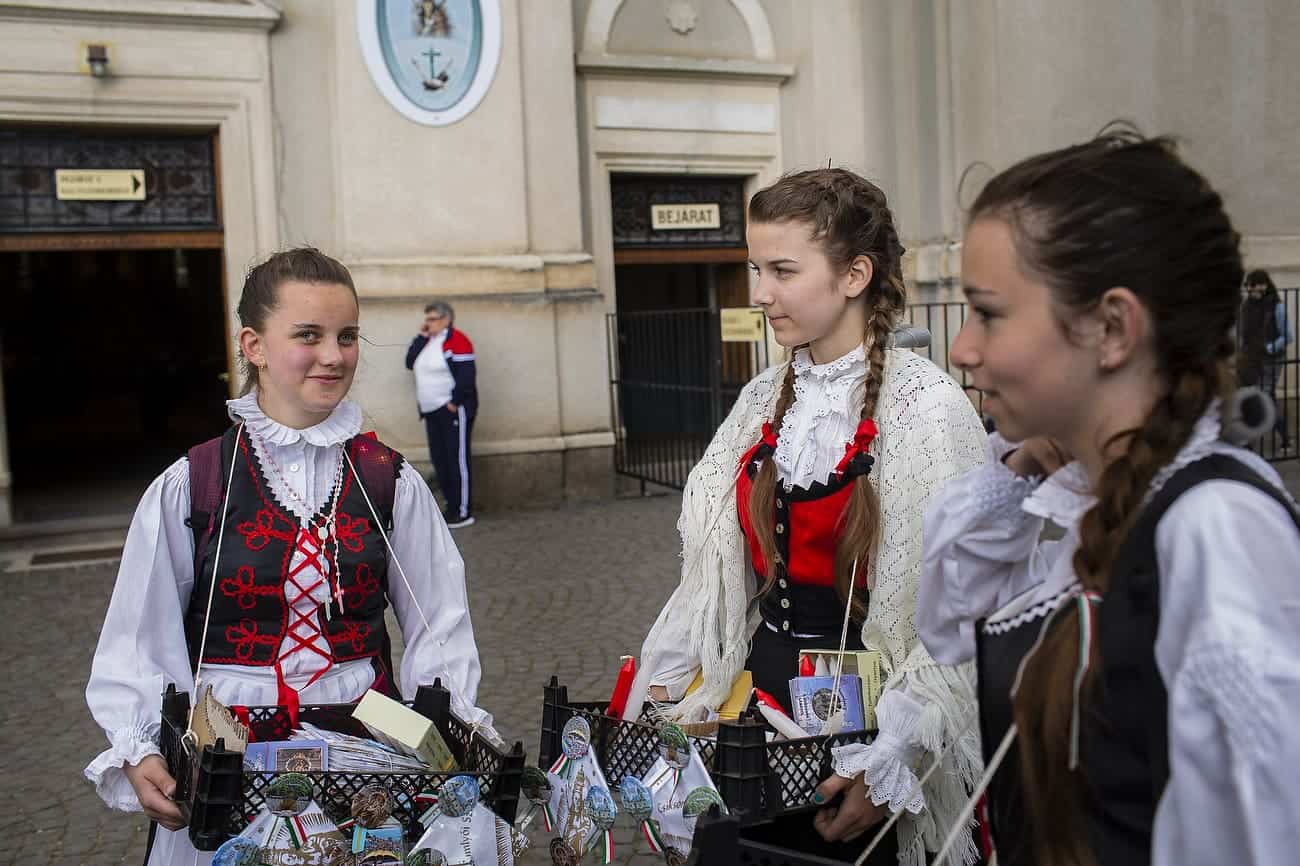
SUMULEU CIUC, ROMANIA - MAY 18: Hungarians from all over the world attending the early pilgrimage hold at Sumuleu Ciuc in Romania, as seen on May 18, 2018. Sumuleu Ciuc became a pilgrimage site in 1567, when Hungarian king John II Sigismund Zápolya wanted to convert the Székely population of the upper Csík to Protestantism. The Székelys refused to abandon the Catholic faith and resisted. A battle took place on a nearby field, on Saturday before Pentecost 1567, from which the Székelys emerged victorious. The monks saw this as a sign of the care of Virgin Mary, and since then, this event has been commemorated by a pilgrimage when the believers gather on Pentecost every year. Beside its religious importance, the pilgrimage has also become a community event demonstrating spiritual unity of Hungarian people living in and outside the historical region of Transylvania. Photography by Mugur Varzariu/Getty Images/Newsweek.
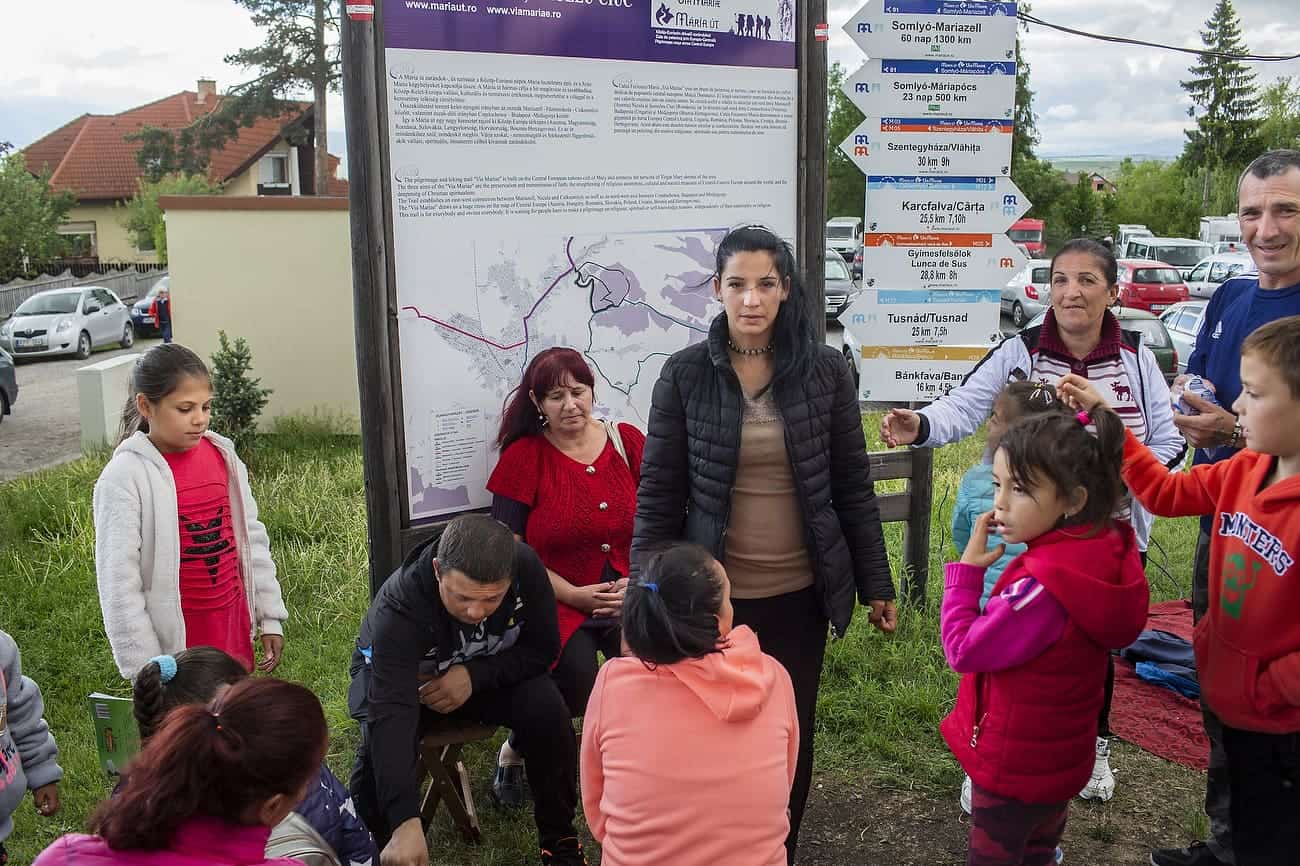
SUMULEU CIUC, ROMANIA - MAY 18: Hungarians from all over the world attending the early pilgrimage hold at Sumuleu Ciuc in Romania, as seen on May 18, 2018. Sumuleu Ciuc became a pilgrimage site in 1567, when Hungarian king John II Sigismund Zápolya wanted to convert the Székely population of the upper Csík to Protestantism. The Székelys refused to abandon the Catholic faith and resisted. A battle took place on a nearby field, on Saturday before Pentecost 1567, from which the Székelys emerged victorious. The monks saw this as a sign of the care of Virgin Mary, and since then, this event has been commemorated by a pilgrimage when the believers gather on Pentecost every year. Beside its religious importance, the pilgrimage has also become a community event demonstrating spiritual unity of Hungarian people living in and outside the historical region of Transylvania. Photography by Mugur Varzariu/Getty Images/Newsweek.
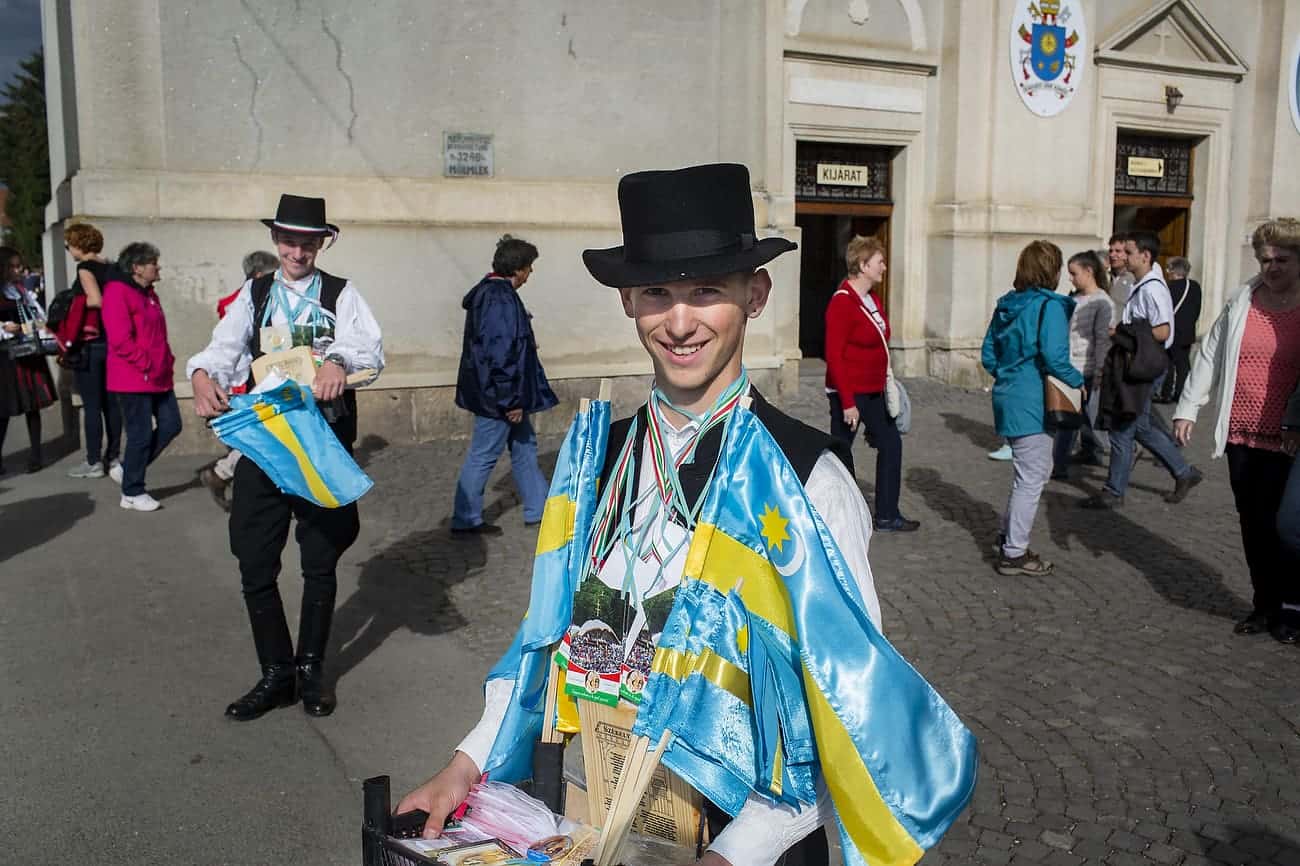
SUMULEU CIUC, ROMANIA - MAY 18: Hungarians from all over the world attending the early pilgrimage hold at Sumuleu Ciuc in Romania, as seen on May 18, 2018. Sumuleu Ciuc became a pilgrimage site in 1567, when Hungarian king John II Sigismund Zápolya wanted to convert the Székely population of the upper Csík to Protestantism. The Székelys refused to abandon the Catholic faith and resisted. A battle took place on a nearby field, on Saturday before Pentecost 1567, from which the Székelys emerged victorious. The monks saw this as a sign of the care of Virgin Mary, and since then, this event has been commemorated by a pilgrimage when the believers gather on Pentecost every year. Beside its religious importance, the pilgrimage has also become a community event demonstrating spiritual unity of Hungarian people living in and outside the historical region of Transylvania. Photography by Mugur Varzariu/Getty Images/Newsweek.
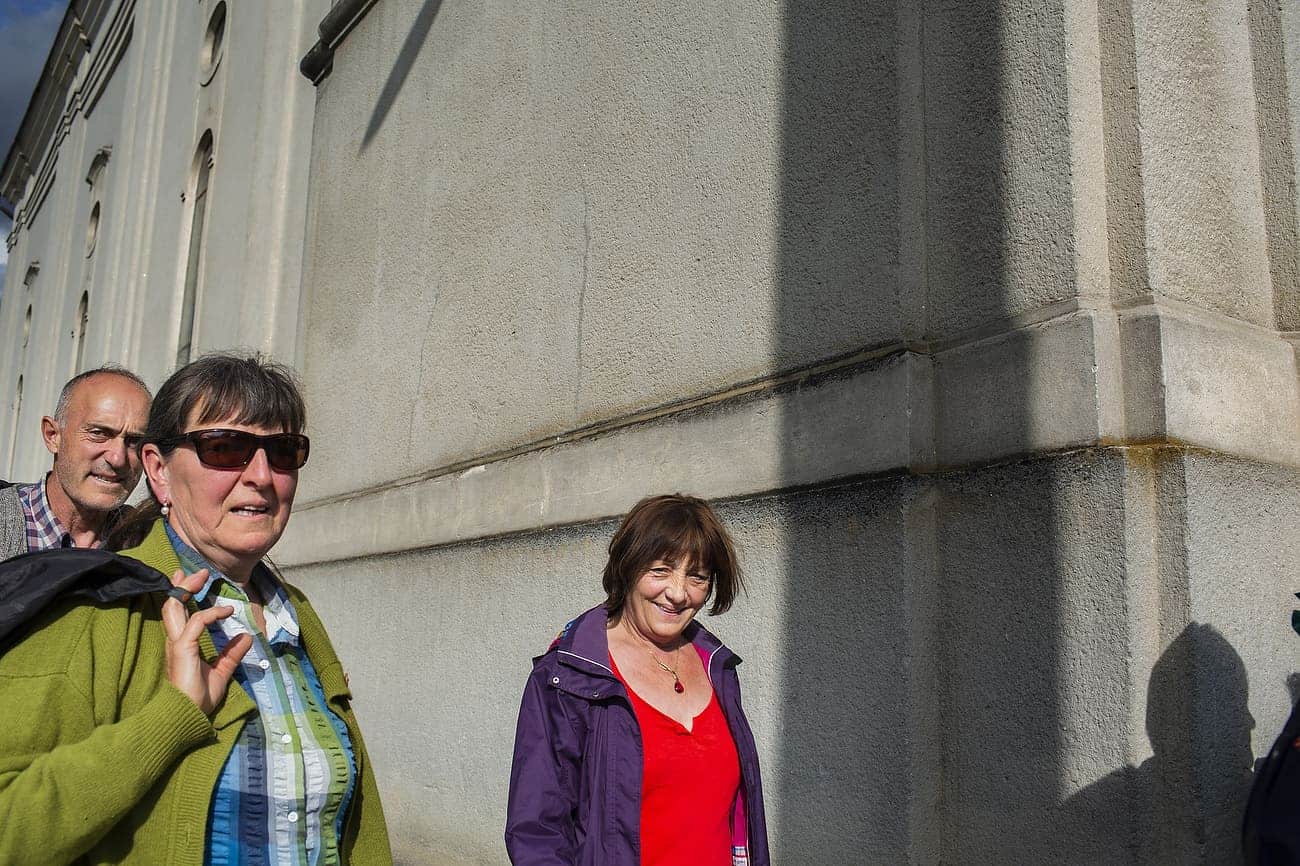
SUMULEU CIUC, ROMANIA - MAY 18: Hungarians from all over the world attending the early pilgrimage hold at Sumuleu Ciuc in Romania, as seen on May 18, 2018. Sumuleu Ciuc became a pilgrimage site in 1567, when Hungarian king John II Sigismund Zápolya wanted to convert the Székely population of the upper Csík to Protestantism. The Székelys refused to abandon the Catholic faith and resisted. A battle took place on a nearby field, on Saturday before Pentecost 1567, from which the Székelys emerged victorious. The monks saw this as a sign of the care of Virgin Mary, and since then, this event has been commemorated by a pilgrimage when the believers gather on Pentecost every year. Beside its religious importance, the pilgrimage has also become a community event demonstrating spiritual unity of Hungarian people living in and outside the historical region of Transylvania. Photography by Mugur Varzariu/Getty Images/Newsweek.

SUMULEU CIUC, ROMANIA - MAY 18: Hungarians from all over the world attending the early pilgrimage hold at Sumuleu Ciuc in Romania, as seen on May 18, 2018. Sumuleu Ciuc became a pilgrimage site in 1567, when Hungarian king John II Sigismund Zápolya wanted to convert the Székely population of the upper Csík to Protestantism. The Székelys refused to abandon the Catholic faith and resisted. A battle took place on a nearby field, on Saturday before Pentecost 1567, from which the Székelys emerged victorious. The monks saw this as a sign of the care of Virgin Mary, and since then, this event has been commemorated by a pilgrimage when the believers gather on Pentecost every year. Beside its religious importance, the pilgrimage has also become a community event demonstrating spiritual unity of Hungarian people living in and outside the historical region of Transylvania. Photography by Mugur Varzariu/Getty Images/Newsweek.
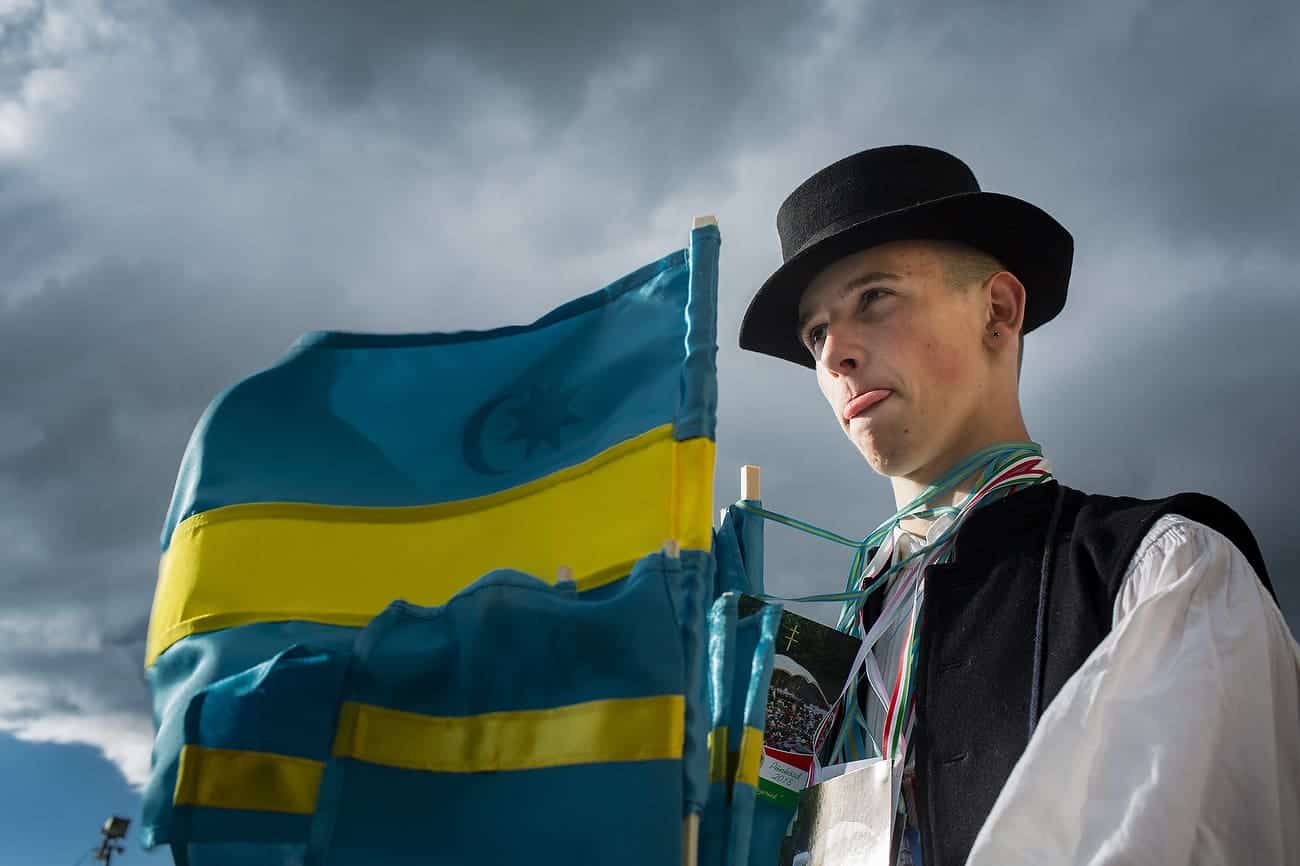
SUMULEU CIUC, ROMANIA - MAY 18: Hungarians from all over the world attending the early pilgrimage hold at Sumuleu Ciuc in Romania, as seen on May 18, 2018. Sumuleu Ciuc became a pilgrimage site in 1567, when Hungarian king John II Sigismund Zápolya wanted to convert the Székely population of the upper Csík to Protestantism. The Székelys refused to abandon the Catholic faith and resisted. A battle took place on a nearby field, on Saturday before Pentecost 1567, from which the Székelys emerged victorious. The monks saw this as a sign of the care of Virgin Mary, and since then, this event has been commemorated by a pilgrimage when the believers gather on Pentecost every year. Beside its religious importance, the pilgrimage has also become a community event demonstrating spiritual unity of Hungarian people living in and outside the historical region of Transylvania. Photography by Mugur Varzariu/Getty Images/Newsweek.

SUMULEU CIUC, ROMANIA - MAY 18: Hungarians from all over the world attending the early pilgrimage hold at Sumuleu Ciuc in Romania, as seen on May 18, 2018. Sumuleu Ciuc became a pilgrimage site in 1567, when Hungarian king John II Sigismund Zápolya wanted to convert the Székely population of the upper Csík to Protestantism. The Székelys refused to abandon the Catholic faith and resisted. A battle took place on a nearby field, on Saturday before Pentecost 1567, from which the Székelys emerged victorious. The monks saw this as a sign of the care of Virgin Mary, and since then, this event has been commemorated by a pilgrimage when the believers gather on Pentecost every year. Beside its religious importance, the pilgrimage has also become a community event demonstrating spiritual unity of Hungarian people living in and outside the historical region of Transylvania. Photography by Mugur Varzariu/Getty Images/Newsweek.

SUMULEU CIUC, ROMANIA - MAY 18: Hungarians from all over the world attending the early pilgrimage hold at Sumuleu Ciuc in Romania, as seen on May 18, 2018. Sumuleu Ciuc became a pilgrimage site in 1567, when Hungarian king John II Sigismund Zápolya wanted to convert the Székely population of the upper Csík to Protestantism. The Székelys refused to abandon the Catholic faith and resisted. A battle took place on a nearby field, on Saturday before Pentecost 1567, from which the Székelys emerged victorious. The monks saw this as a sign of the care of Virgin Mary, and since then, this event has been commemorated by a pilgrimage when the believers gather on Pentecost every year. Beside its religious importance, the pilgrimage has also become a community event demonstrating spiritual unity of Hungarian people living in and outside the historical region of Transylvania. © Mugur Varzariu
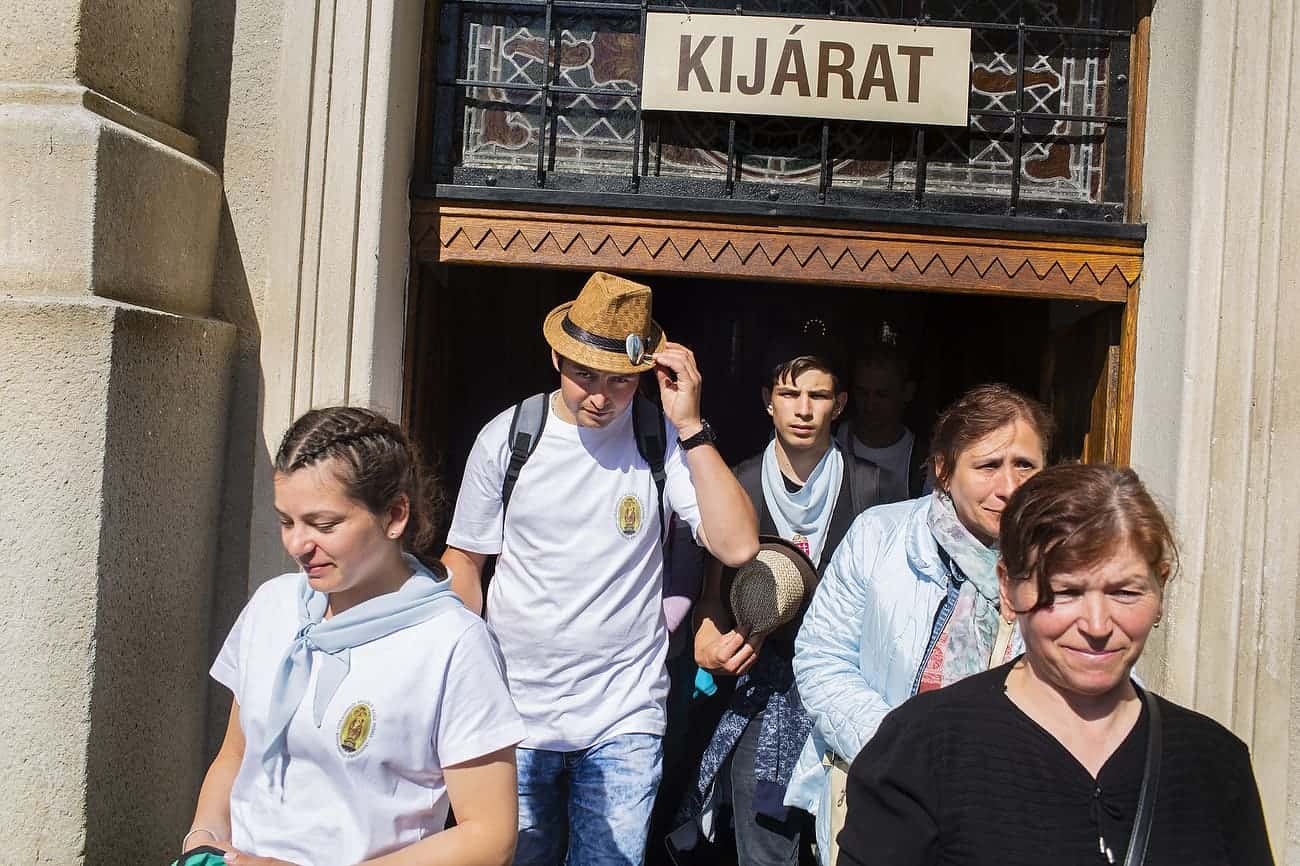
SUMULEU CIUC, ROMANIA - MAY 18: Hungarians from all over the world attending the early pilgrimage hold at Sumuleu Ciuc in Romania, as seen on May 18, 2018. Sumuleu Ciuc became a pilgrimage site in 1567, when Hungarian king John II Sigismund Zápolya wanted to convert the Székely population of the upper Csík to Protestantism. The Székelys refused to abandon the Catholic faith and resisted. A battle took place on a nearby field, on Saturday before Pentecost 1567, from which the Székelys emerged victorious. The monks saw this as a sign of the care of Virgin Mary, and since then, this event has been commemorated by a pilgrimage when the believers gather on Pentecost every year. Beside its religious importance, the pilgrimage has also become a community event demonstrating spiritual unity of Hungarian people living in and outside the historical region of Transylvania. Photography by Mugur Varzariu/Getty Images/Newsweek.
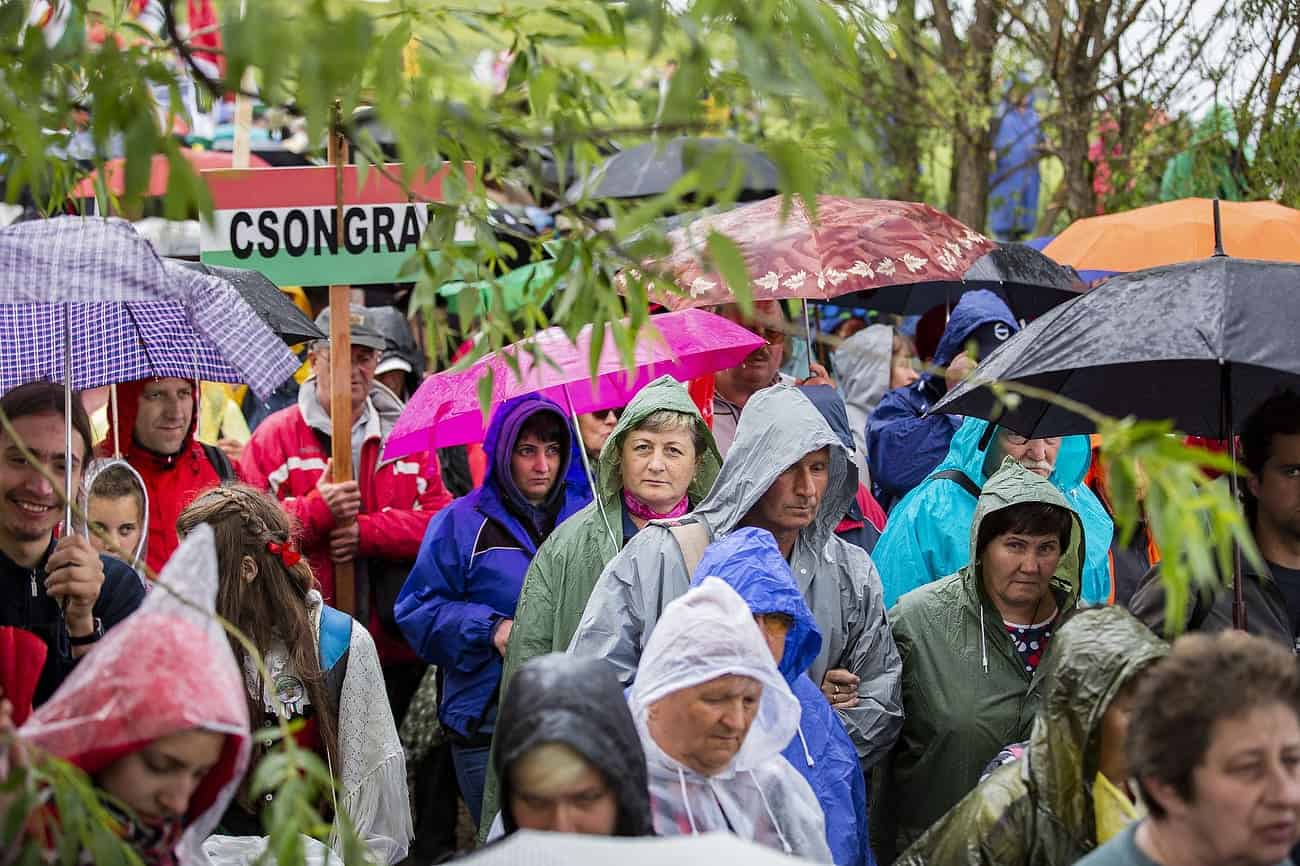
SUMULEU CIUC, ROMANIA - MAY 19: Hungarians from all over the world attending the early pilgrimage hold at Sumuleu Ciuc in Romania, as seen on May 19, 2018. Sumuleu Ciuc became a pilgrimage site in 1567, when Hungarian king John II Sigismund Zápolya wanted to convert the Székely population of the upper Csík to Protestantism. The Székelys refused to abandon the Catholic faith and resisted. A battle took place on a nearby field, on Saturday before Pentecost 1567, from which the Székelys emerged victorious. The monks saw this as a sign of the care of Virgin Mary, and since then, this event has been commemorated by a pilgrimage when the believers gather on Pentecost every year. Beside its religious importance, the pilgrimage has also become a community event demonstrating spiritual unity of Hungarian people living in and outside the historical region of Transylvania. Photography by Mugur Varzariu/Getty Images/Newsweek.

SUMULEU CIUC, ROMANIA - MAY 18: Hungarians from all over the world attending the early pilgrimage hold at Sumuleu Ciuc in Romania, as seen on May 18, 2018. Sumuleu Ciuc became a pilgrimage site in 1567, when Hungarian king John II Sigismund Zápolya wanted to convert the Székely population of the upper Csík to Protestantism. The Székelys refused to abandon the Catholic faith and resisted. A battle took place on a nearby field, on Saturday before Pentecost 1567, from which the Székelys emerged victorious. The monks saw this as a sign of the care of Virgin Mary, and since then, this event has been commemorated by a pilgrimage when the believers gather on Pentecost every year. Beside its religious importance, the pilgrimage has also become a community event demonstrating spiritual unity of Hungarian people living in and outside the historical region of Transylvania. Photography by Mugur Varzariu/Getty Images/Newsweek.
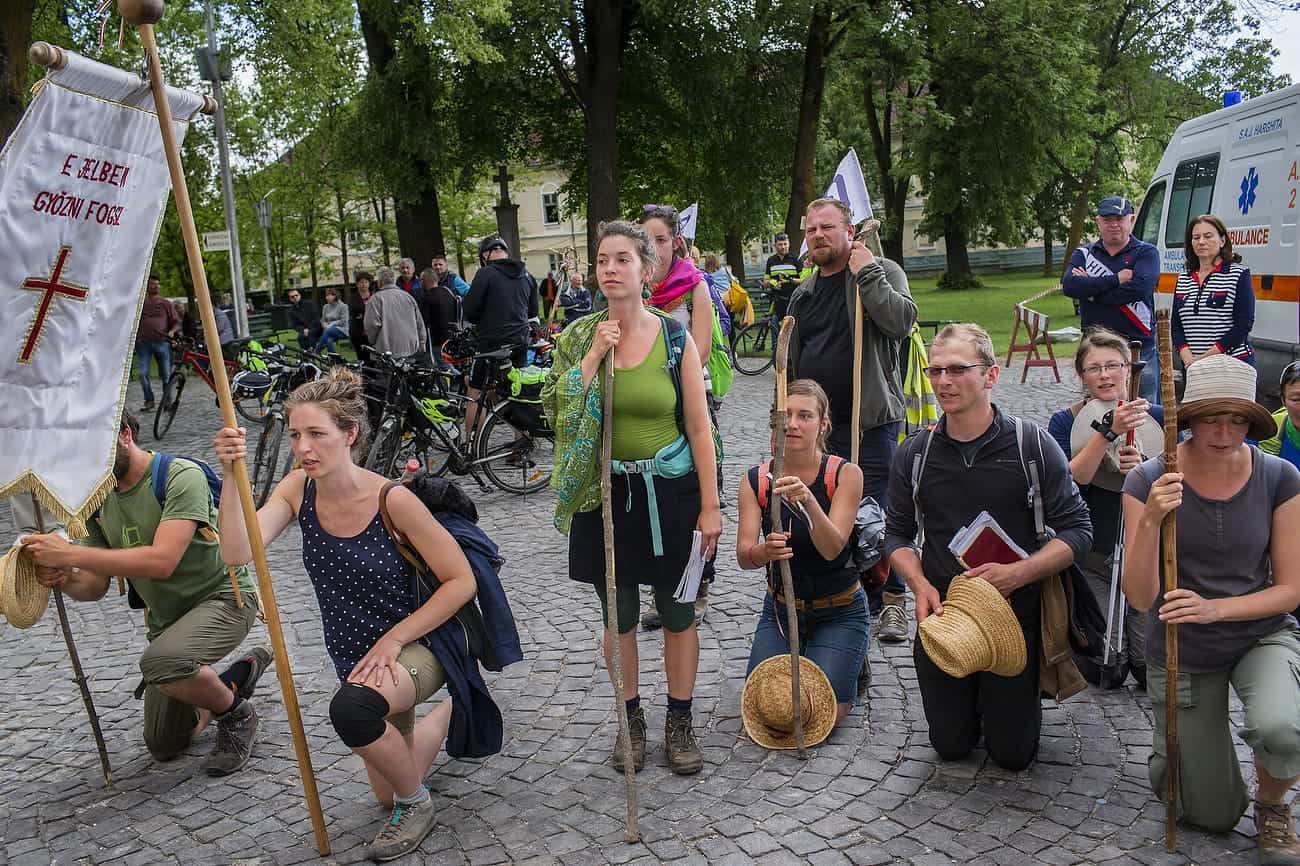
SUMULEU CIUC, ROMANIA - MAY 18: Hungarians from all over the world attending the early pilgrimage hold at Sumuleu Ciuc in Romania, as seen on May 18, 2018. Sumuleu Ciuc became a pilgrimage site in 1567, when Hungarian king John II Sigismund Zápolya wanted to convert the Székely population of the upper Csík to Protestantism. The Székelys refused to abandon the Catholic faith and resisted. A battle took place on a nearby field, on Saturday before Pentecost 1567, from which the Székelys emerged victorious. The monks saw this as a sign of the care of Virgin Mary, and since then, this event has been commemorated by a pilgrimage when the believers gather on Pentecost every year. Beside its religious importance, the pilgrimage has also become a community event demonstrating spiritual unity of Hungarian people living in and outside the historical region of Transylvania. Photography by Mugur Varzariu/Getty Images/Newsweek.
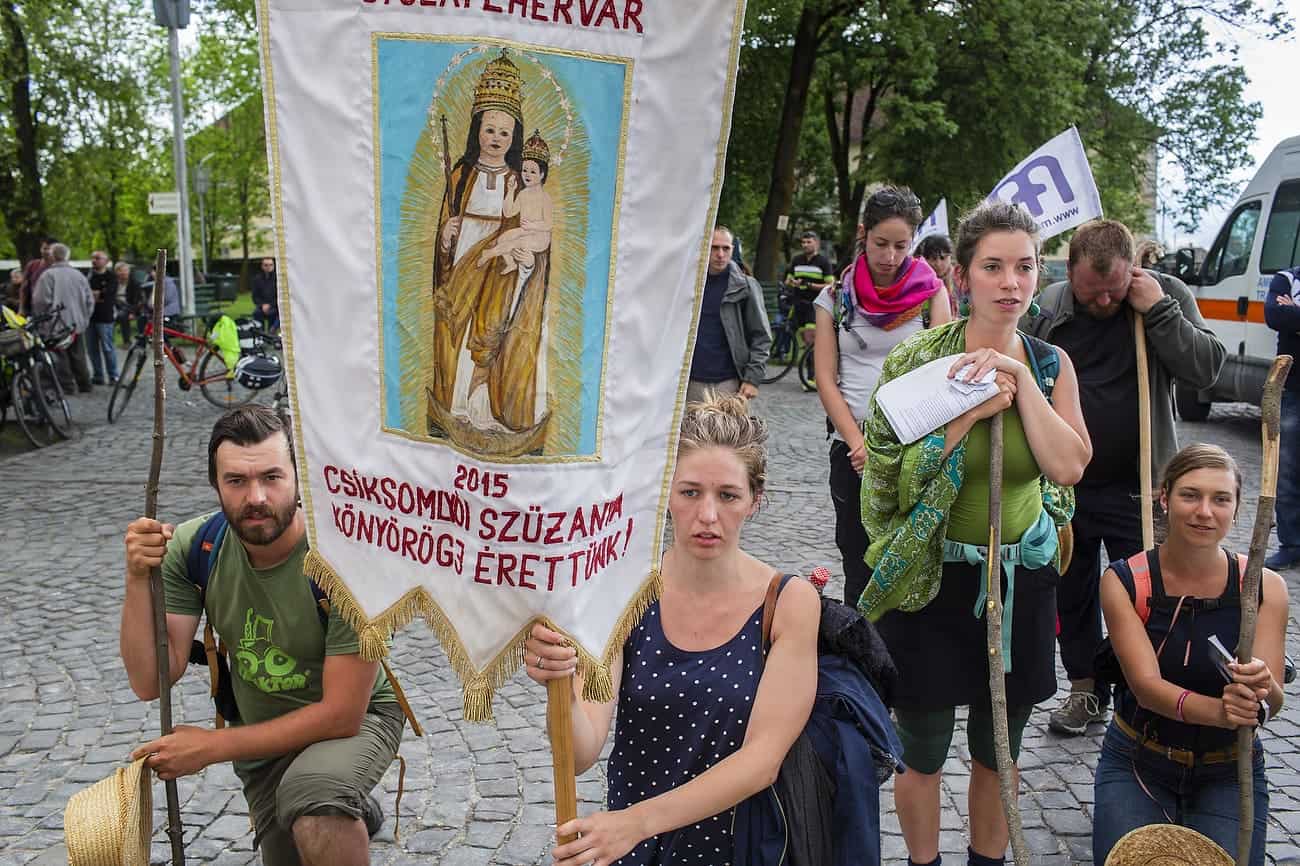
SUMULEU CIUC, ROMANIA - MAY 18: Hungarians from all over the world attending the early pilgrimage hold at Sumuleu Ciuc in Romania, as seen on May 18, 2018. Sumuleu Ciuc became a pilgrimage site in 1567, when Hungarian king John II Sigismund Zápolya wanted to convert the Székely population of the upper Csík to Protestantism. The Székelys refused to abandon the Catholic faith and resisted. A battle took place on a nearby field, on Saturday before Pentecost 1567, from which the Székelys emerged victorious. The monks saw this as a sign of the care of Virgin Mary, and since then, this event has been commemorated by a pilgrimage when the believers gather on Pentecost every year. Beside its religious importance, the pilgrimage has also become a community event demonstrating spiritual unity of Hungarian people living in and outside the historical region of Transylvania. Photography by Mugur Varzariu/Getty Images/Newsweek.
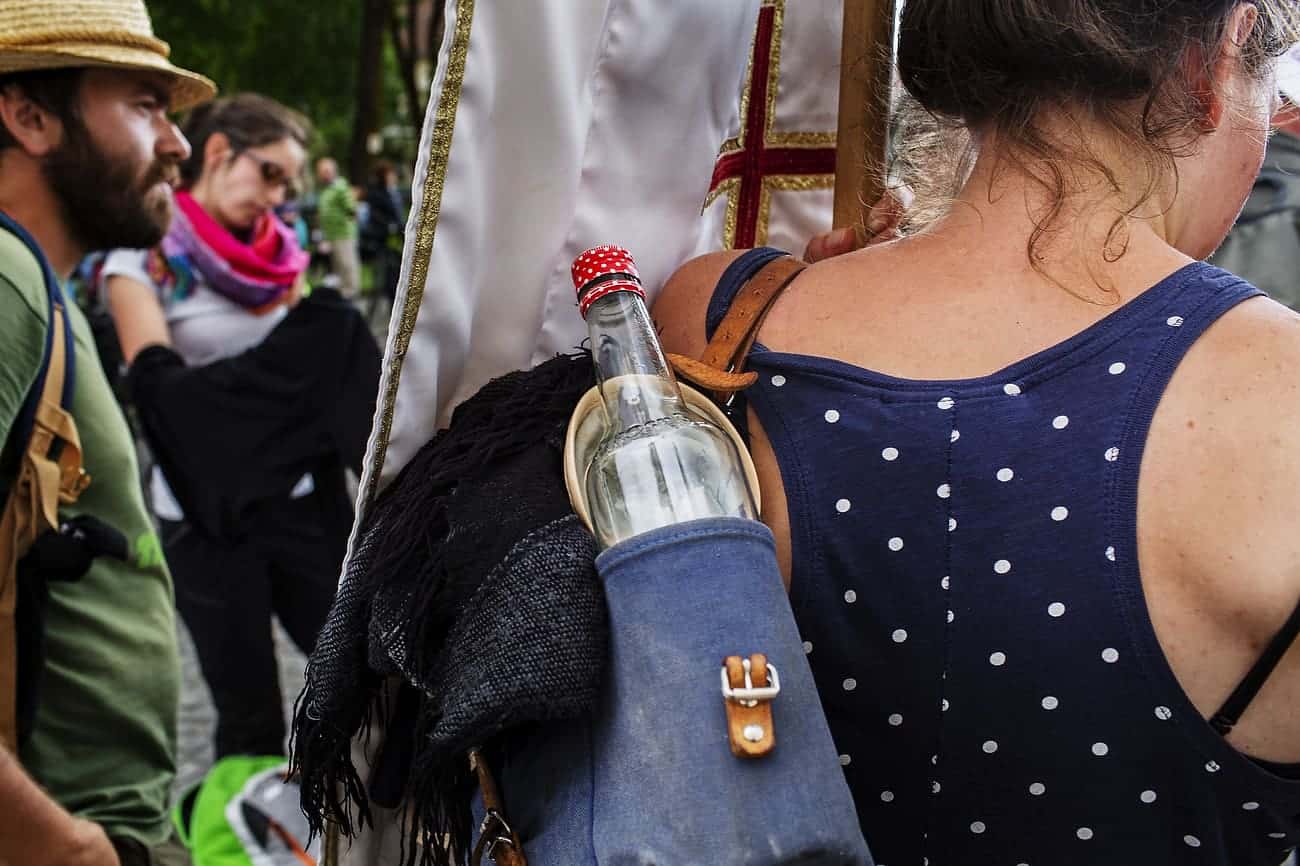
SUMULEU CIUC, ROMANIA - MAY 18: Hungarians from all over the world attending the early pilgrimage hold at Sumuleu Ciuc in Romania, as seen on May 18, 2018. Sumuleu Ciuc became a pilgrimage site in 1567, when Hungarian king John II Sigismund Zpolya wanted to convert the Szkely population of the upper Csk to Protestantism. The Szkelys refused to abandon the Catholic faith and resisted. A battle took place on a nearby field, on Saturday before Pentecost 1567, from which the Szkelys emerged victorious. The monks saw this as a sign of the care of Virgin Mary, and since then, this event has been commemorated by a pilgrimage when the believers gather on Pentecost every year. Beside its religious importance, the pilgrimage has also become a community event demonstrating spiritual unity of Hungarian people living in and outside the historical region of Transylvania. Photography by Mugur Varzariu/Getty Images/Newsweek.
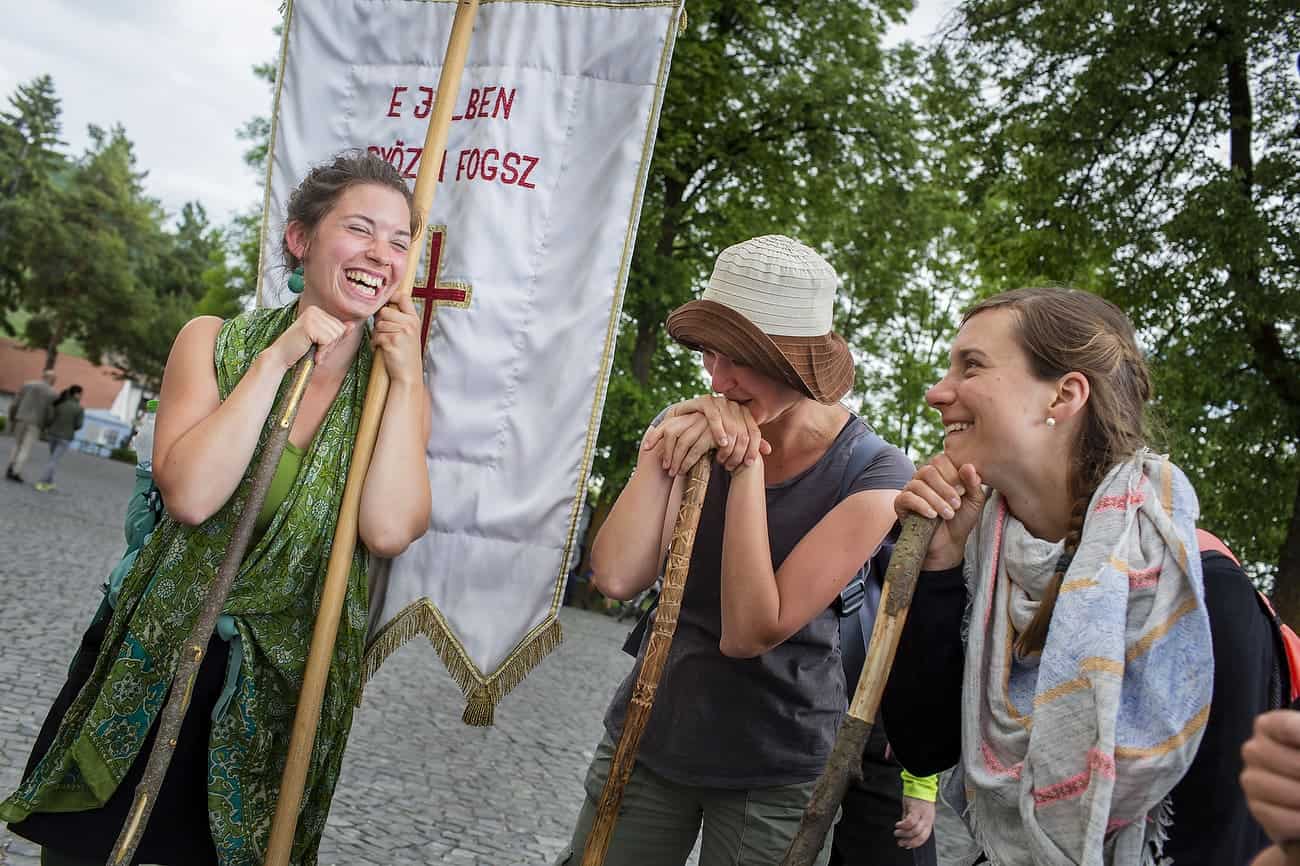
SUMULEU CIUC, ROMANIA - MAY 18: Hungarians from all over the world attending the early pilgrimage hold at Sumuleu Ciuc in Romania, as seen on May 18, 2018. Sumuleu Ciuc became a pilgrimage site in 1567, when Hungarian king John II Sigismund Zápolya wanted to convert the Székely population of the upper Csík to Protestantism. The Székelys refused to abandon the Catholic faith and resisted. A battle took place on a nearby field, on Saturday before Pentecost 1567, from which the Székelys emerged victorious. The monks saw this as a sign of the care of Virgin Mary, and since then, this event has been commemorated by a pilgrimage when the believers gather on Pentecost every year. Beside its religious importance, the pilgrimage has also become a community event demonstrating spiritual unity of Hungarian people living in and outside the historical region of Transylvania. Photography by Mugur Varzariu/Getty Images/Newsweek.
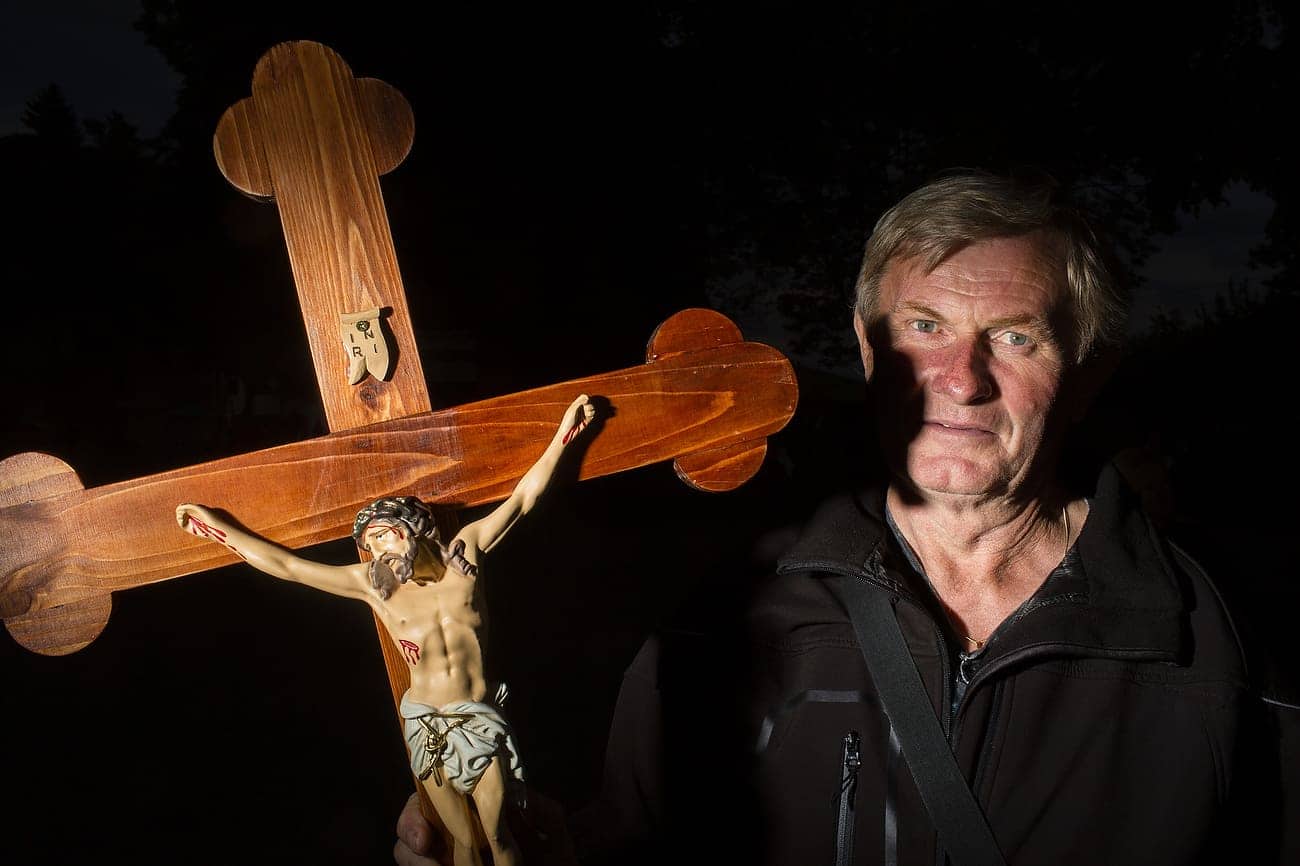
SUMULEU CIUC, ROMANIA - MAY 18: Hungarians from all over the world attending the early pilgrimage hold at Sumuleu Ciuc in Romania, as seen on May 18, 2018. Sumuleu Ciuc became a pilgrimage site in 1567, when Hungarian king John II Sigismund Zápolya wanted to convert the Székely population of the upper Csík to Protestantism. The Székelys refused to abandon the Catholic faith and resisted. A battle took place on a nearby field, on Saturday before Pentecost 1567, from which the Székelys emerged victorious. The monks saw this as a sign of the care of Virgin Mary, and since then, this event has been commemorated by a pilgrimage when the believers gather on Pentecost every year. Beside its religious importance, the pilgrimage has also become a community event demonstrating spiritual unity of Hungarian people living in and outside the historical region of Transylvania. Photography by Mugur Varzariu/Getty Images/Newsweek.
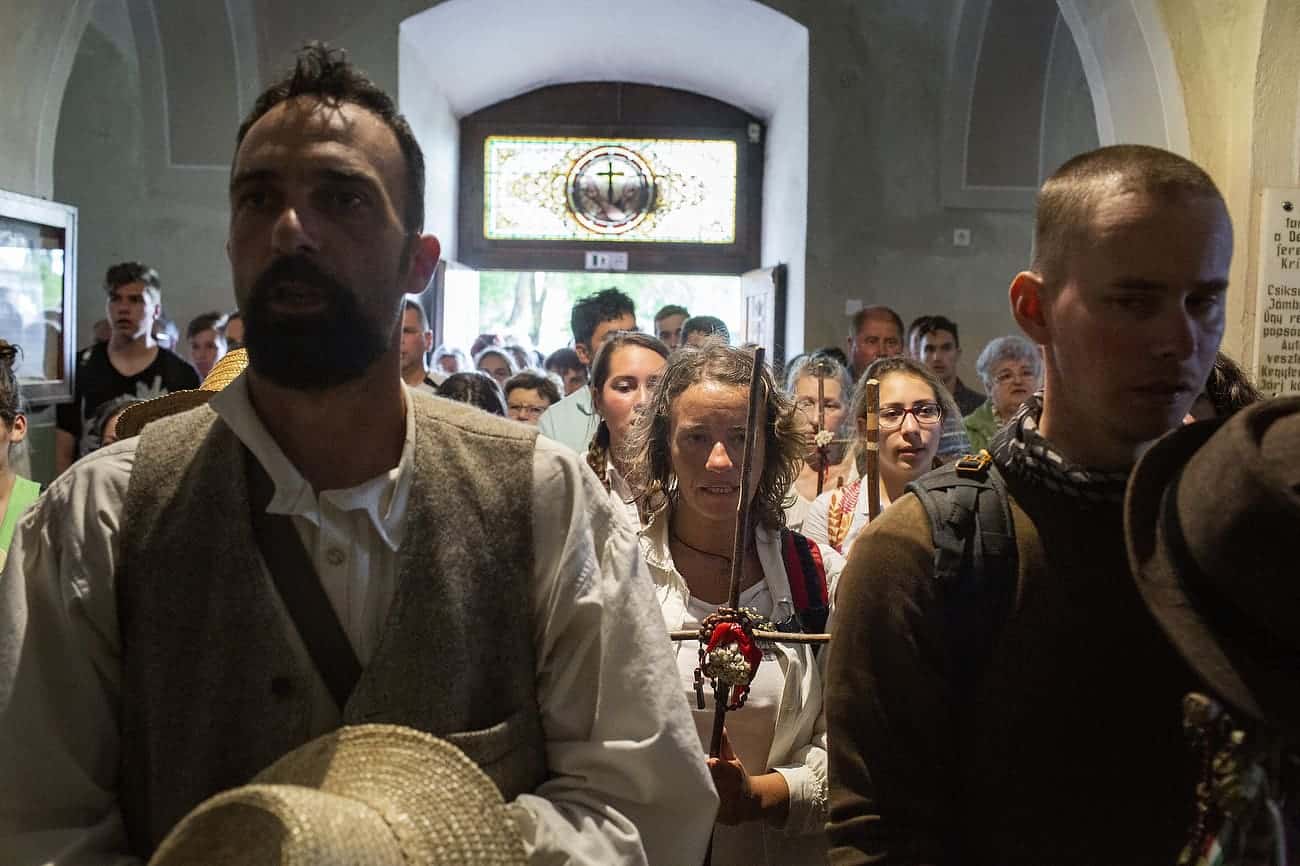
SUMULEU CIUC, ROMANIA - MAY 18: Hungarians from all over the world attending the early pilgrimage hold at Sumuleu Ciuc in Romania, as seen on May 18, 2018. Sumuleu Ciuc became a pilgrimage site in 1567, when Hungarian king John II Sigismund Zápolya wanted to convert the Székely population of the upper Csík to Protestantism. The Székelys refused to abandon the Catholic faith and resisted. A battle took place on a nearby field, on Saturday before Pentecost 1567, from which the Székelys emerged victorious. The monks saw this as a sign of the care of Virgin Mary, and since then, this event has been commemorated by a pilgrimage when the believers gather on Pentecost every year. Beside its religious importance, the pilgrimage has also become a community event demonstrating spiritual unity of Hungarian people living in and outside the historical region of Transylvania. Photography by Mugur Varzariu/Getty Images/Newsweek.
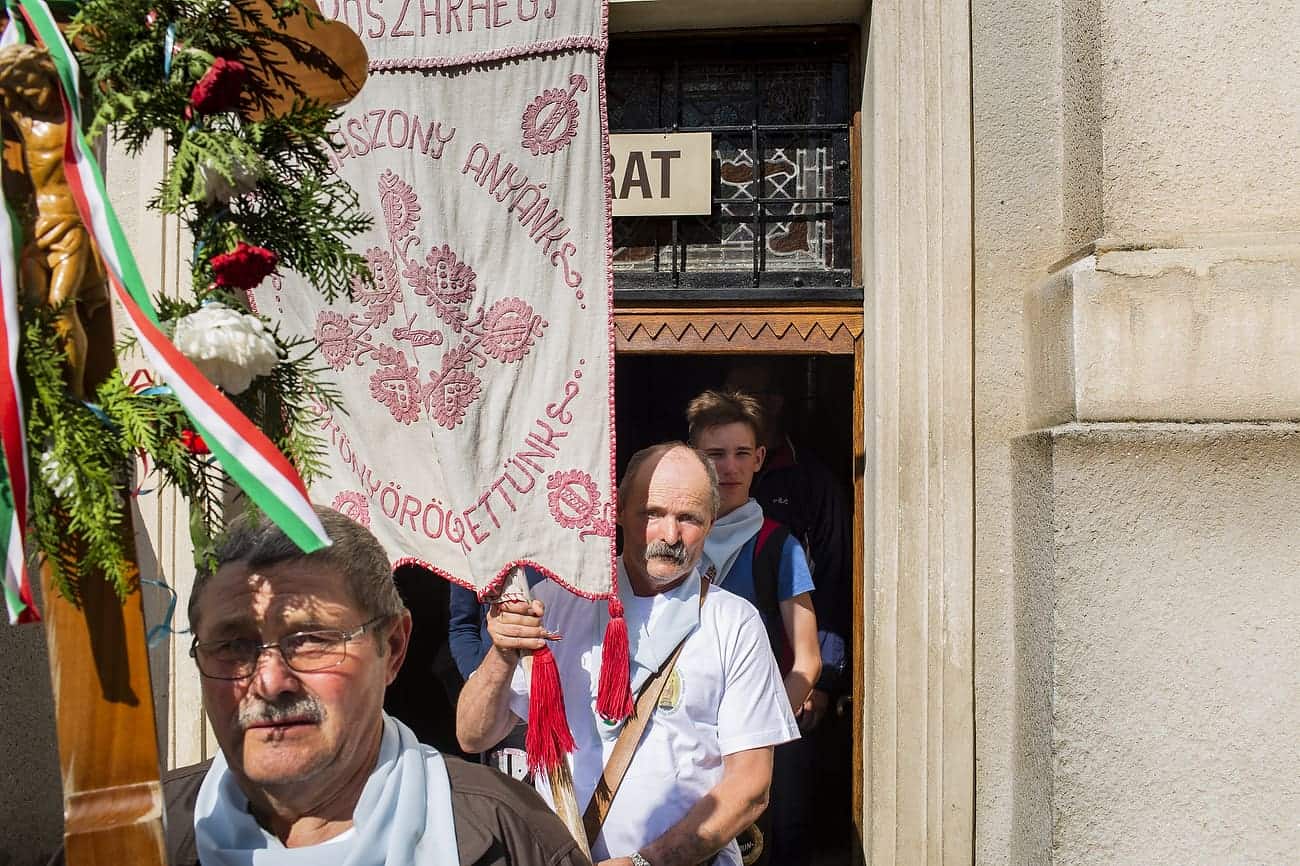
SUMULEU CIUC, ROMANIA - MAY 18: Hungarians from all over the world attending the early pilgrimage hold at Sumuleu Ciuc in Romania, as seen on May 18, 2018. Sumuleu Ciuc became a pilgrimage site in 1567, when Hungarian king John II Sigismund Zápolya wanted to convert the Székely population of the upper Csík to Protestantism. The Székelys refused to abandon the Catholic faith and resisted. A battle took place on a nearby field, on Saturday before Pentecost 1567, from which the Székelys emerged victorious. The monks saw this as a sign of the care of Virgin Mary, and since then, this event has been commemorated by a pilgrimage when the believers gather on Pentecost every year. Beside its religious importance, the pilgrimage has also become a community event demonstrating spiritual unity of Hungarian people living in and outside the historical region of Transylvania. Photography by Mugur Varzariu/Getty Images/Newsweek.
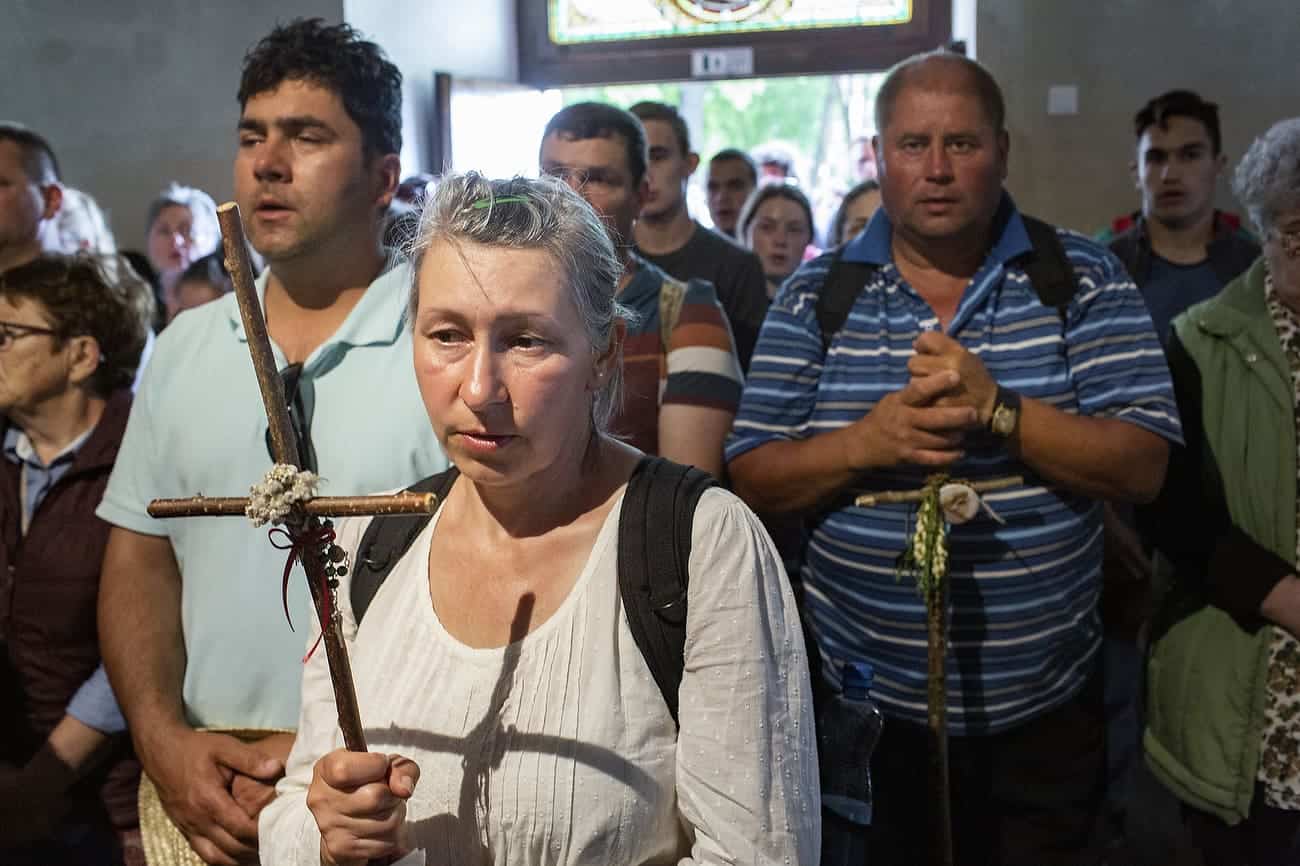
SUMULEU CIUC, ROMANIA - MAY 18: Hungarians from all over the world attending the early pilgrimage hold at Sumuleu Ciuc in Romania, as seen on May 18, 2018. Sumuleu Ciuc became a pilgrimage site in 1567, when Hungarian king John II Sigismund Zápolya wanted to convert the Székely population of the upper Csík to Protestantism. The Székelys refused to abandon the Catholic faith and resisted. A battle took place on a nearby field, on Saturday before Pentecost 1567, from which the Székelys emerged victorious. The monks saw this as a sign of the care of Virgin Mary, and since then, this event has been commemorated by a pilgrimage when the believers gather on Pentecost every year. Beside its religious importance, the pilgrimage has also become a community event demonstrating spiritual unity of Hungarian people living in and outside the historical region of Transylvania. Photography by Mugur Varzariu/Getty Images/Newsweek.
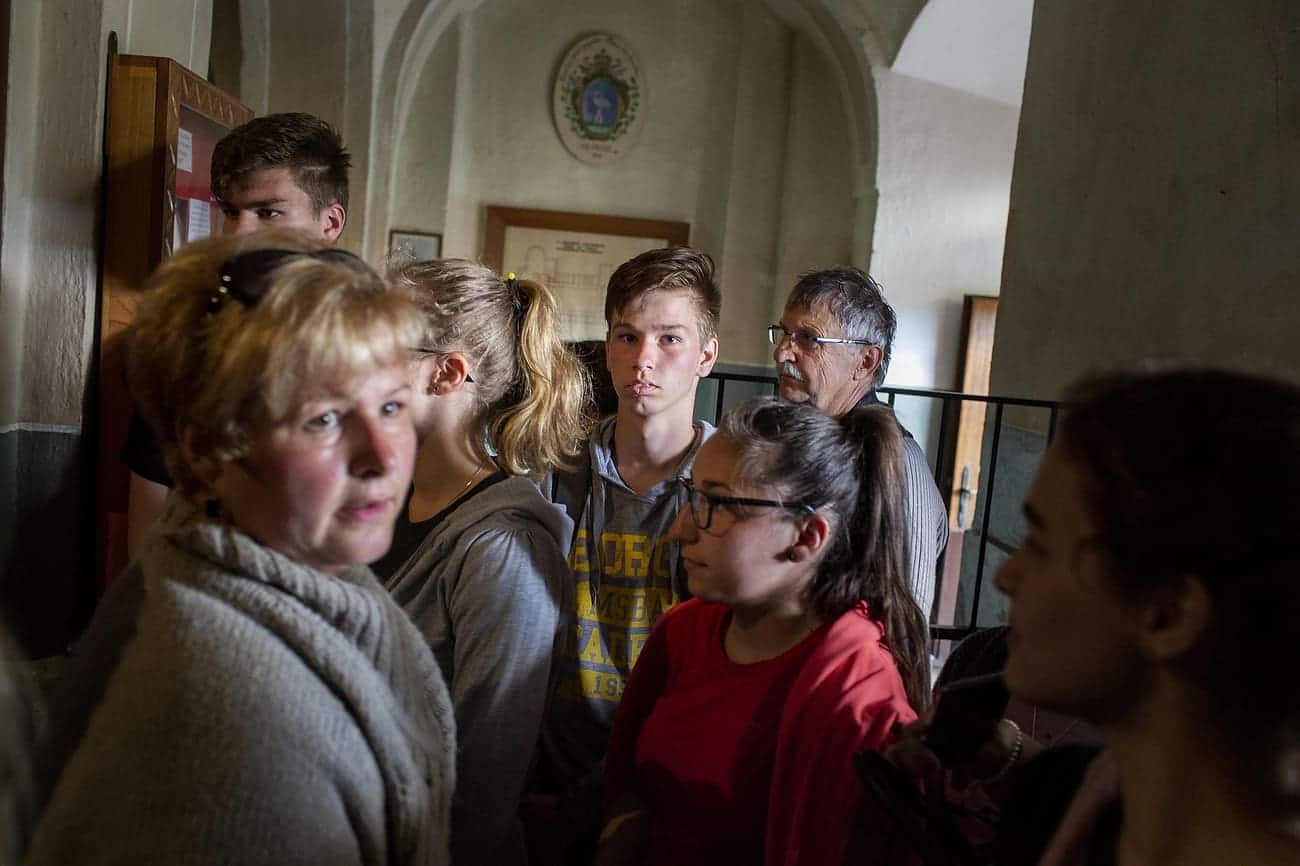
SUMULEU CIUC, ROMANIA - MAY 18: Hungarians from all over the world attending the early pilgrimage hold at Sumuleu Ciuc in Romania, as seen on May 18, 2018. Sumuleu Ciuc became a pilgrimage site in 1567, when Hungarian king John II Sigismund Zápolya wanted to convert the Székely population of the upper Csík to Protestantism. The Székelys refused to abandon the Catholic faith and resisted. A battle took place on a nearby field, on Saturday before Pentecost 1567, from which the Székelys emerged victorious. The monks saw this as a sign of the care of Virgin Mary, and since then, this event has been commemorated by a pilgrimage when the believers gather on Pentecost every year. Beside its religious importance, the pilgrimage has also become a community event demonstrating spiritual unity of Hungarian people living in and outside the historical region of Transylvania. Photography by Mugur Varzariu/Getty Images/Newsweek.
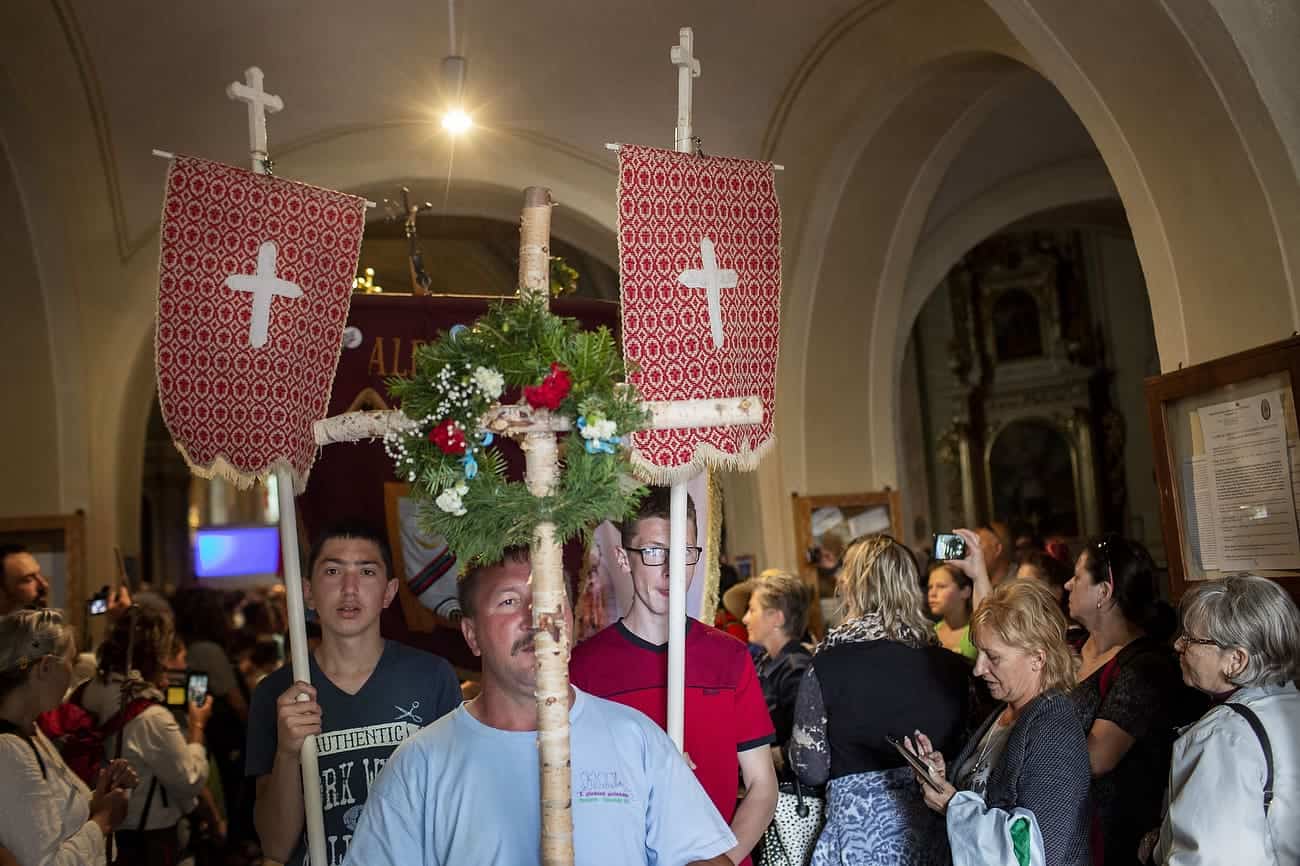
SUMULEU CIUC, ROMANIA - MAY 18: Hungarians from all over the world attending the early pilgrimage hold at Sumuleu Ciuc in Romania, as seen on May 18, 2018. Sumuleu Ciuc became a pilgrimage site in 1567, when Hungarian king John II Sigismund Zápolya wanted to convert the Székely population of the upper Csík to Protestantism. The Székelys refused to abandon the Catholic faith and resisted. A battle took place on a nearby field, on Saturday before Pentecost 1567, from which the Székelys emerged victorious. The monks saw this as a sign of the care of Virgin Mary, and since then, this event has been commemorated by a pilgrimage when the believers gather on Pentecost every year. Beside its religious importance, the pilgrimage has also become a community event demonstrating spiritual unity of Hungarian people living in and outside the historical region of Transylvania. Photography by Mugur Varzariu/Getty Images/Newsweek.
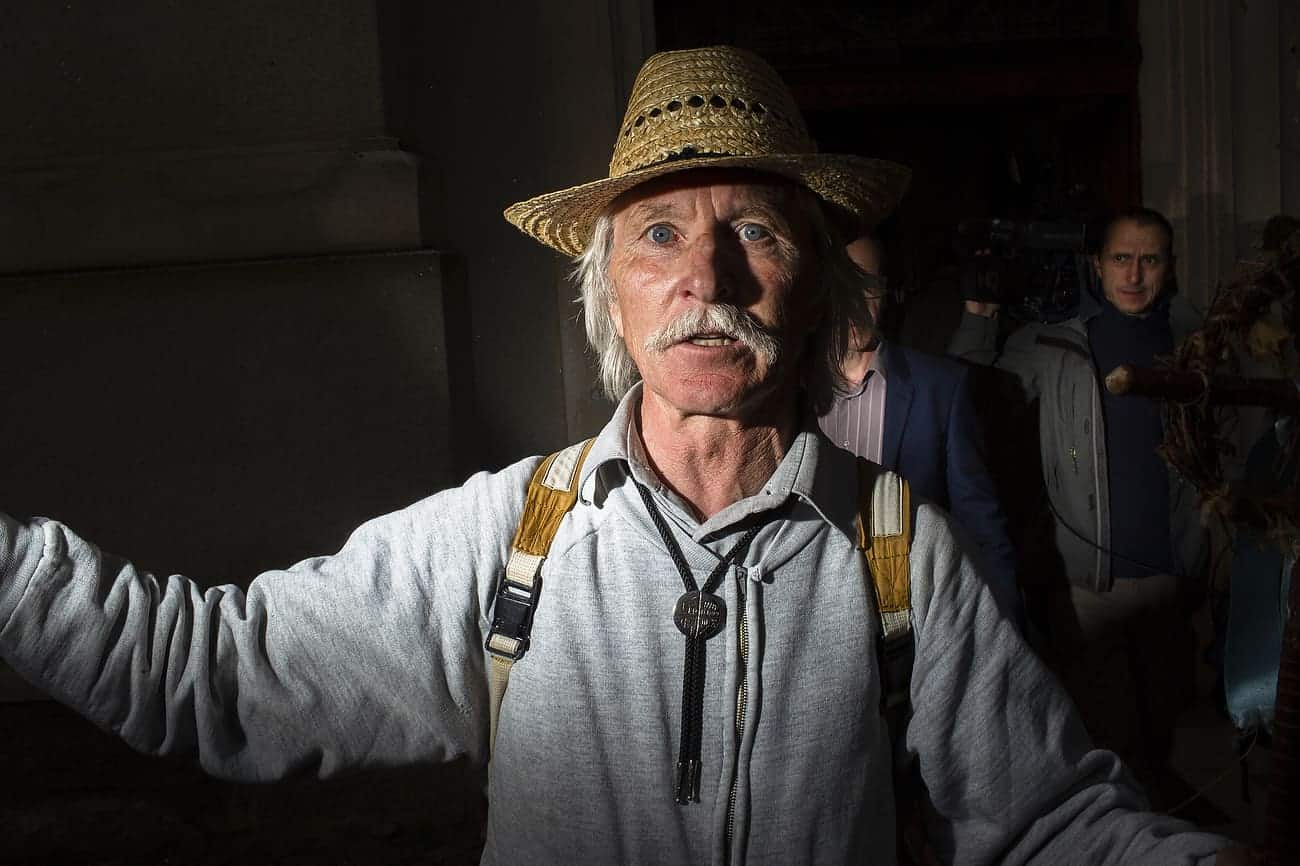
SUMULEU CIUC, ROMANIA - MAY 18: Hungarians from all over the world attending the early pilgrimage hold at Sumuleu Ciuc in Romania, as seen on May 18, 2018. Sumuleu Ciuc became a pilgrimage site in 1567, when Hungarian king John II Sigismund Zápolya wanted to convert the Székely population of the upper Csík to Protestantism. The Székelys refused to abandon the Catholic faith and resisted. A battle took place on a nearby field, on Saturday before Pentecost 1567, from which the Székelys emerged victorious. The monks saw this as a sign of the care of Virgin Mary, and since then, this event has been commemorated by a pilgrimage when the believers gather on Pentecost every year. Beside its religious importance, the pilgrimage has also become a community event demonstrating spiritual unity of Hungarian people living in and outside the historical region of Transylvania. Photography by Mugur Varzariu/Getty Images/Newsweek.
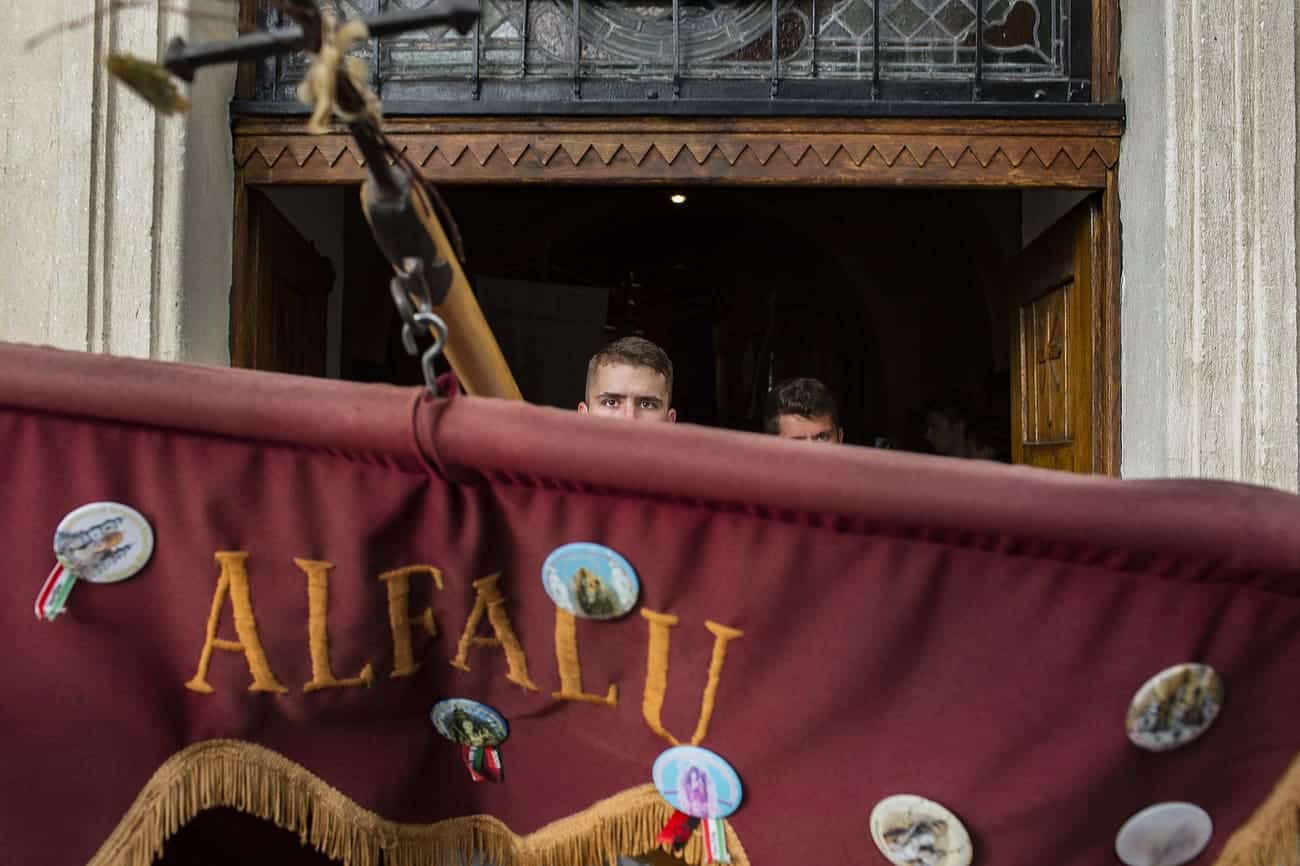
SUMULEU CIUC, ROMANIA - MAY 18: Hungarians from all over the world attending the early pilgrimage hold at Sumuleu Ciuc in Romania, as seen on May 18, 2018. Sumuleu Ciuc became a pilgrimage site in 1567, when Hungarian king John II Sigismund Zpolya wanted to convert the Szkely population of the upper Csk to Protestantism. The Szkelys refused to abandon the Catholic faith and resisted. A battle took place on a nearby field, on Saturday before Pentecost 1567, from which the Szkelys emerged victorious. The monks saw this as a sign of the care of Virgin Mary, and since then, this event has been commemorated by a pilgrimage when the believers gather on Pentecost every year. Beside its religious importance, the pilgrimage has also become a community event demonstrating spiritual unity of Hungarian people living in and outside the historical region of Transylvania. Photography by Mugur Varzariu/Getty Images/Newsweek.
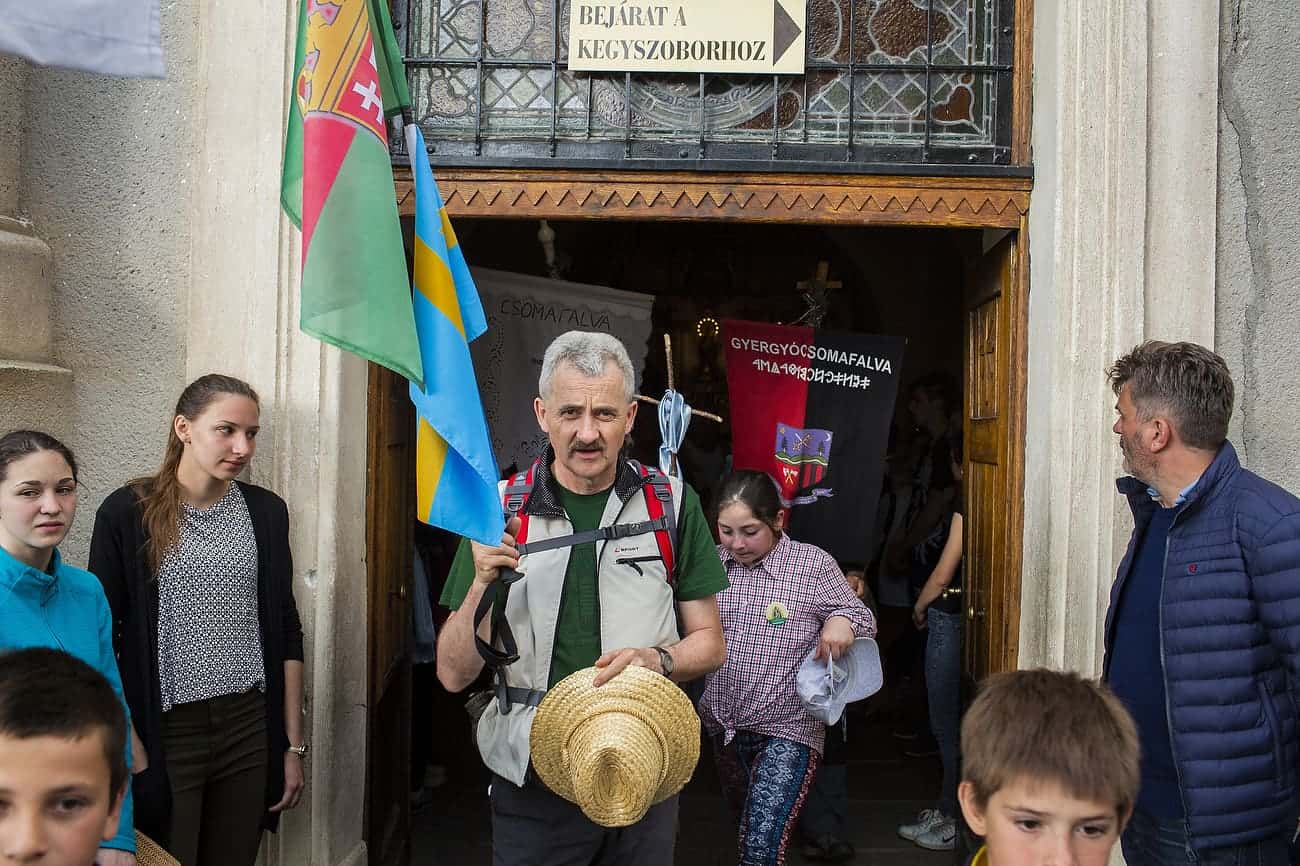
SUMULEU CIUC, ROMANIA - MAY 18: Hungarians from all over the world attending the early pilgrimage hold at Sumuleu Ciuc in Romania, as seen on May 18, 2018. Sumuleu Ciuc became a pilgrimage site in 1567, when Hungarian king John II Sigismund Zápolya wanted to convert the Székely population of the upper Csík to Protestantism. The Székelys refused to abandon the Catholic faith and resisted. A battle took place on a nearby field, on Saturday before Pentecost 1567, from which the Székelys emerged victorious. The monks saw this as a sign of the care of Virgin Mary, and since then, this event has been commemorated by a pilgrimage when the believers gather on Pentecost every year. Beside its religious importance, the pilgrimage has also become a community event demonstrating spiritual unity of Hungarian people living in and outside the historical region of Transylvania. Photography by Mugur Varzariu/Getty Images/Newsweek.
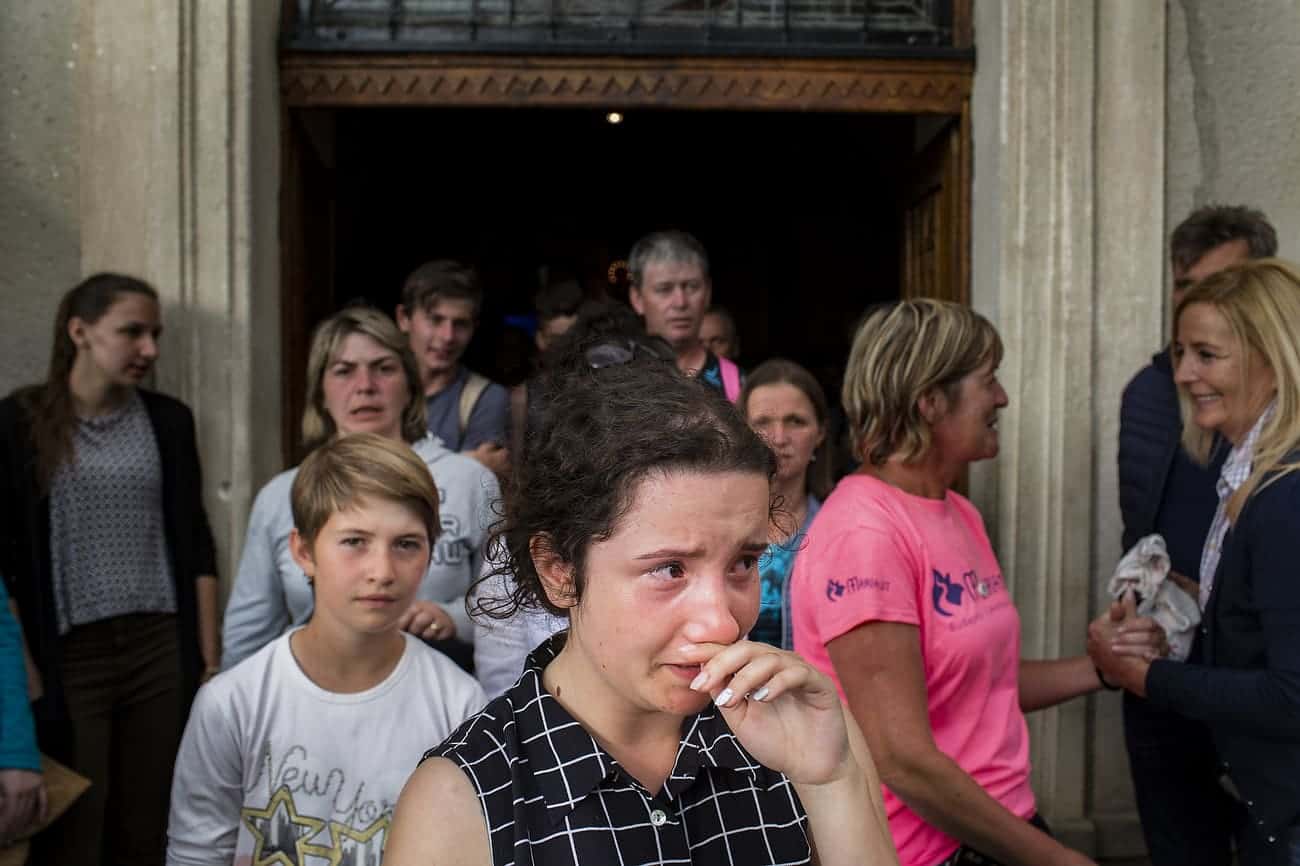
SUMULEU CIUC, ROMANIA - MAY 18: Hungarians from all over the world attending the early pilgrimage hold at Sumuleu Ciuc in Romania, as seen on May 18, 2018. Sumuleu Ciuc became a pilgrimage site in 1567, when Hungarian king John II Sigismund Zápolya wanted to convert the Székely population of the upper Csík to Protestantism. The Székelys refused to abandon the Catholic faith and resisted. A battle took place on a nearby field, on Saturday before Pentecost 1567, from which the Székelys emerged victorious. The monks saw this as a sign of the care of Virgin Mary, and since then, this event has been commemorated by a pilgrimage when the believers gather on Pentecost every year. Beside its religious importance, the pilgrimage has also become a community event demonstrating spiritual unity of Hungarian people living in and outside the historical region of Transylvania. Photography by Mugur Varzariu/Getty Images/Newsweek.
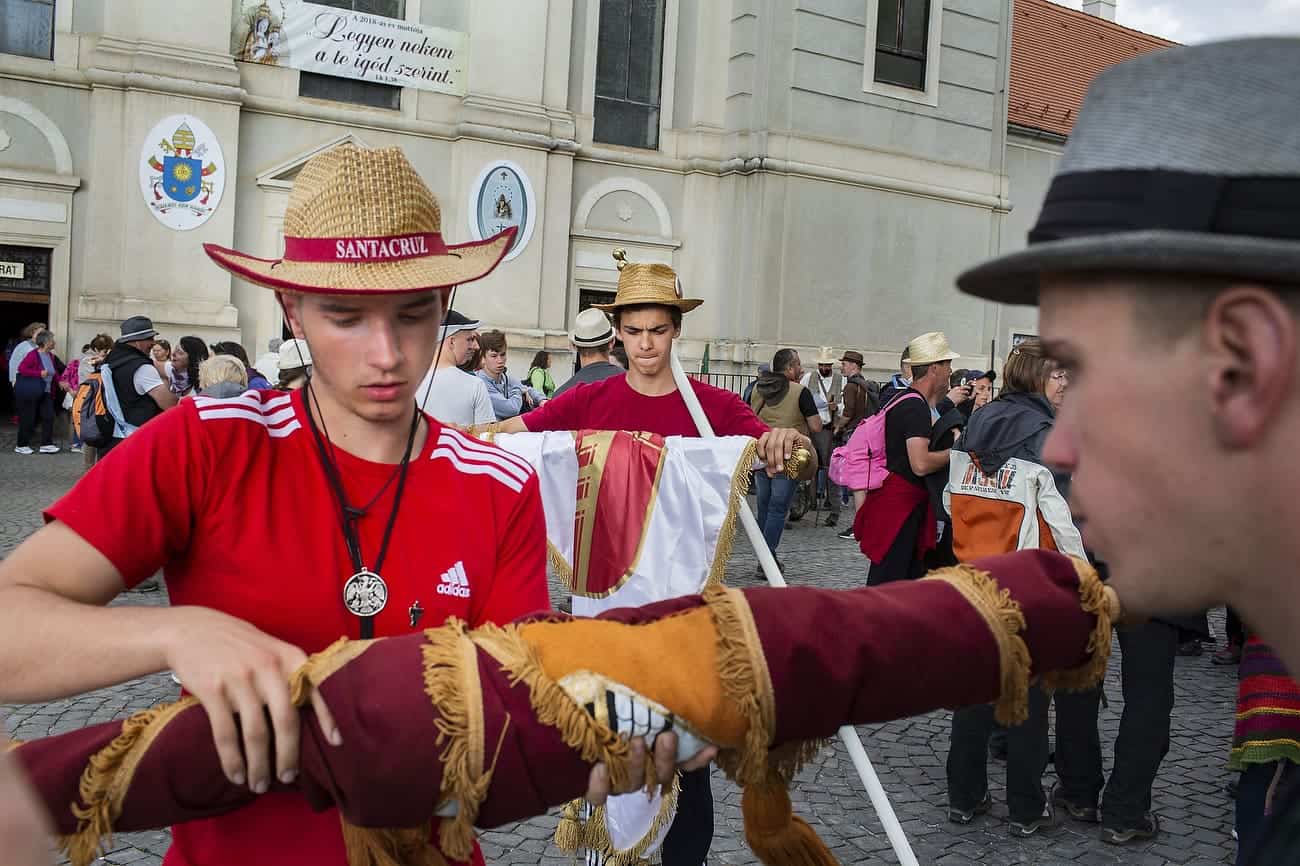
SUMULEU CIUC, ROMANIA - MAY 18: Hungarians from all over the world attending the early pilgrimage hold at Sumuleu Ciuc in Romania, as seen on May 18, 2018. Sumuleu Ciuc became a pilgrimage site in 1567, when Hungarian king John II Sigismund Zápolya wanted to convert the Székely population of the upper Csík to Protestantism. The Székelys refused to abandon the Catholic faith and resisted. A battle took place on a nearby field, on Saturday before Pentecost 1567, from which the Székelys emerged victorious. The monks saw this as a sign of the care of Virgin Mary, and since then, this event has been commemorated by a pilgrimage when the believers gather on Pentecost every year. Beside its religious importance, the pilgrimage has also become a community event demonstrating spiritual unity of Hungarian people living in and outside the historical region of Transylvania. Photography by Mugur Varzariu/Getty Images/Newsweek.
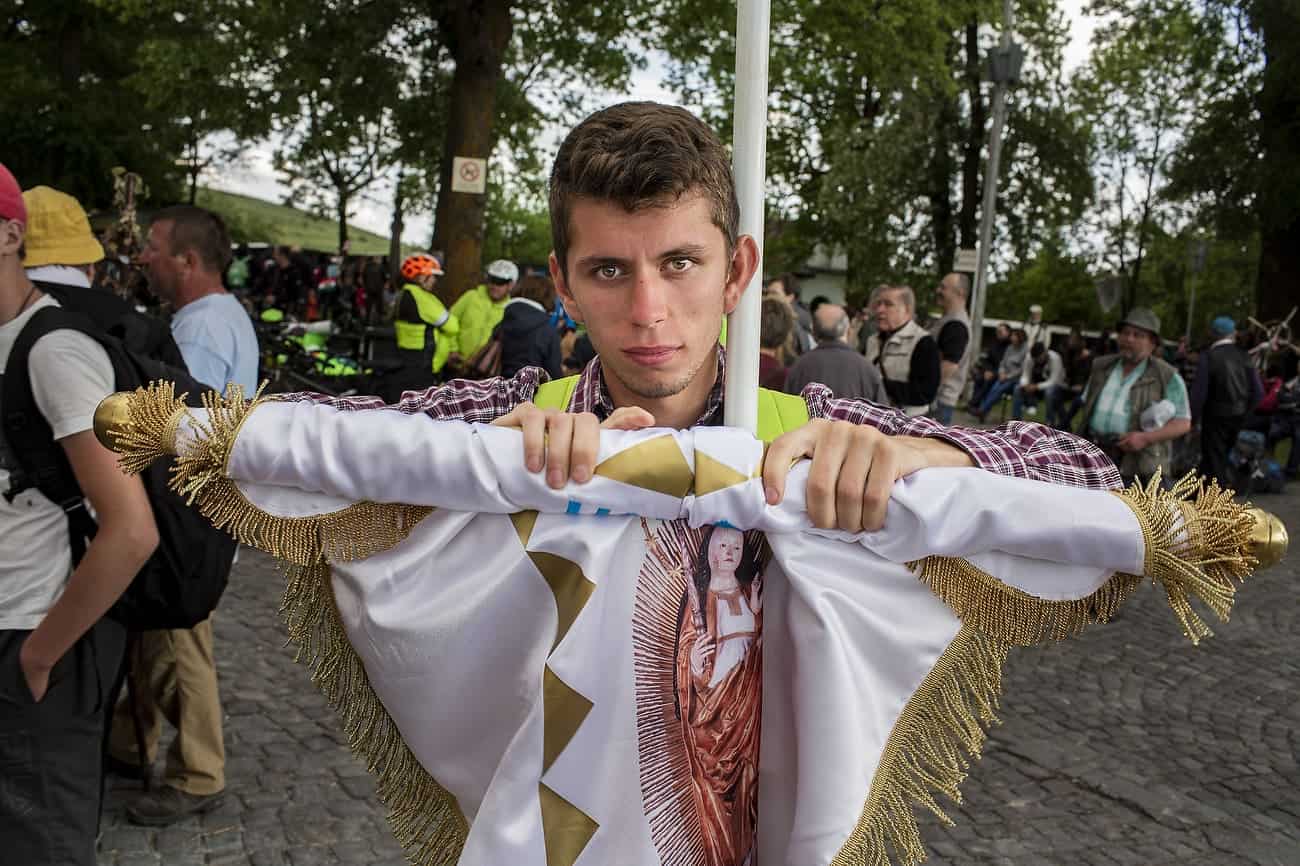
SUMULEU CIUC, ROMANIA - MAY 18: Hungarians from all over the world attending the early pilgrimage hold at Sumuleu Ciuc in Romania, as seen on May 18, 2018. Sumuleu Ciuc became a pilgrimage site in 1567, when Hungarian king John II Sigismund Zpolya wanted to convert the Szkely population of the upper Csk to Protestantism. The Szkelys refused to abandon the Catholic faith and resisted. A battle took place on a nearby field, on Saturday before Pentecost 1567, from which the Szkelys emerged victorious. The monks saw this as a sign of the care of Virgin Mary, and since then, this event has been commemorated by a pilgrimage when the believers gather on Pentecost every year. Beside its religious importance, the pilgrimage has also become a community event demonstrating spiritual unity of Hungarian people living in and outside the historical region of Transylvania. Photography by Mugur Varzariu/Getty Images/Newsweek.
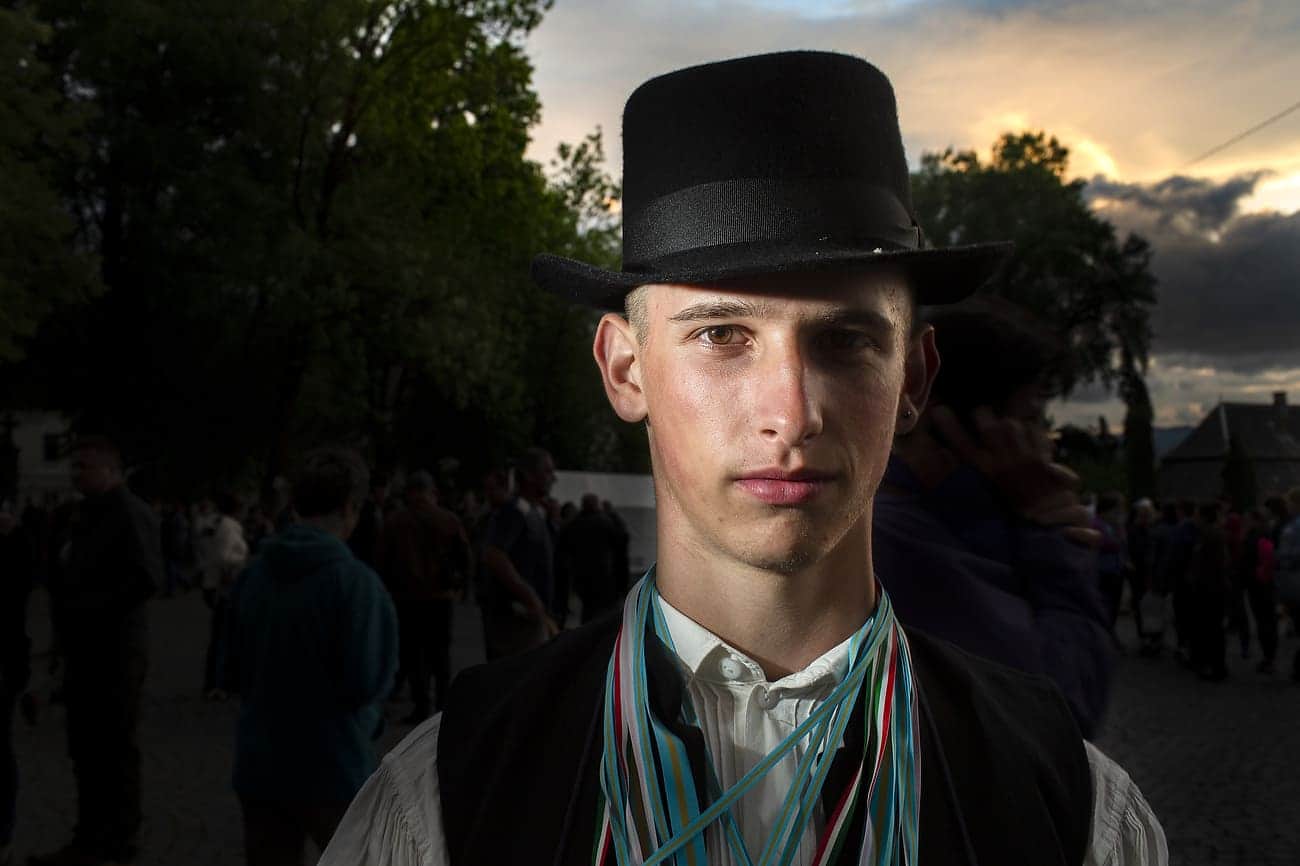
SUMULEU CIUC, ROMANIA - MAY 18: Hungarians from all over the world attending the early pilgrimage hold at Sumuleu Ciuc in Romania, as seen on May 18, 2018. Sumuleu Ciuc became a pilgrimage site in 1567, when Hungarian king John II Sigismund Zápolya wanted to convert the Székely population of the upper Csík to Protestantism. The Székelys refused to abandon the Catholic faith and resisted. A battle took place on a nearby field, on Saturday before Pentecost 1567, from which the Székelys emerged victorious. The monks saw this as a sign of the care of Virgin Mary, and since then, this event has been commemorated by a pilgrimage when the believers gather on Pentecost every year. Beside its religious importance, the pilgrimage has also become a community event demonstrating spiritual unity of Hungarian people living in and outside the historical region of Transylvania. Photography by Mugur Varzariu/Getty Images/Newsweek.
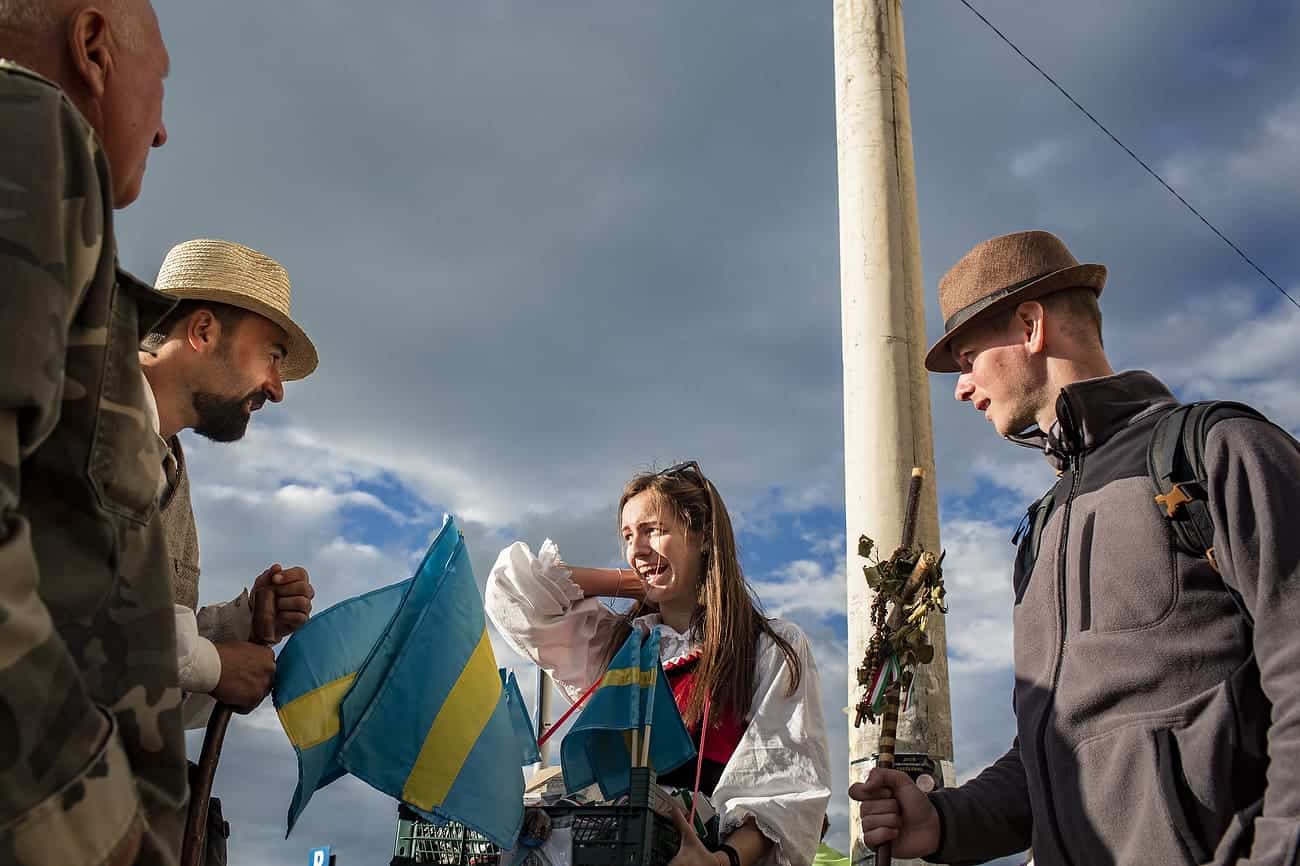
SUMULEU CIUC, ROMANIA - MAY 18: Hungarians from all over the world attending the early pilgrimage hold at Sumuleu Ciuc in Romania, as seen on May 18, 2018. Sumuleu Ciuc became a pilgrimage site in 1567, when Hungarian king John II Sigismund Zpolya wanted to convert the Szkely population of the upper Csk to Protestantism. The Szkelys refused to abandon the Catholic faith and resisted. A battle took place on a nearby field, on Saturday before Pentecost 1567, from which the Szkelys emerged victorious. The monks saw this as a sign of the care of Virgin Mary, and since then, this event has been commemorated by a pilgrimage when the believers gather on Pentecost every year. Beside its religious importance, the pilgrimage has also become a community event demonstrating spiritual unity of Hungarian people living in and outside the historical region of Transylvania. Photography by Mugur Varzariu/Getty Images/Newsweek.

SUMULEU CIUC, ROMANIA - MAY 18: Hungarians from all over the world attending the early pilgrimage hold at Sumuleu Ciuc in Romania, as seen on May 18, 2018. Sumuleu Ciuc became a pilgrimage site in 1567, when Hungarian king John II Sigismund Zápolya wanted to convert the Székely population of the upper Csík to Protestantism. The Székelys refused to abandon the Catholic faith and resisted. A battle took place on a nearby field, on Saturday before Pentecost 1567, from which the Székelys emerged victorious. The monks saw this as a sign of the care of Virgin Mary, and since then, this event has been commemorated by a pilgrimage when the believers gather on Pentecost every year. Beside its religious importance, the pilgrimage has also become a community event demonstrating spiritual unity of Hungarian people living in and outside the historical region of Transylvania. Photography by Mugur Varzariu/Getty Images/Newsweek.
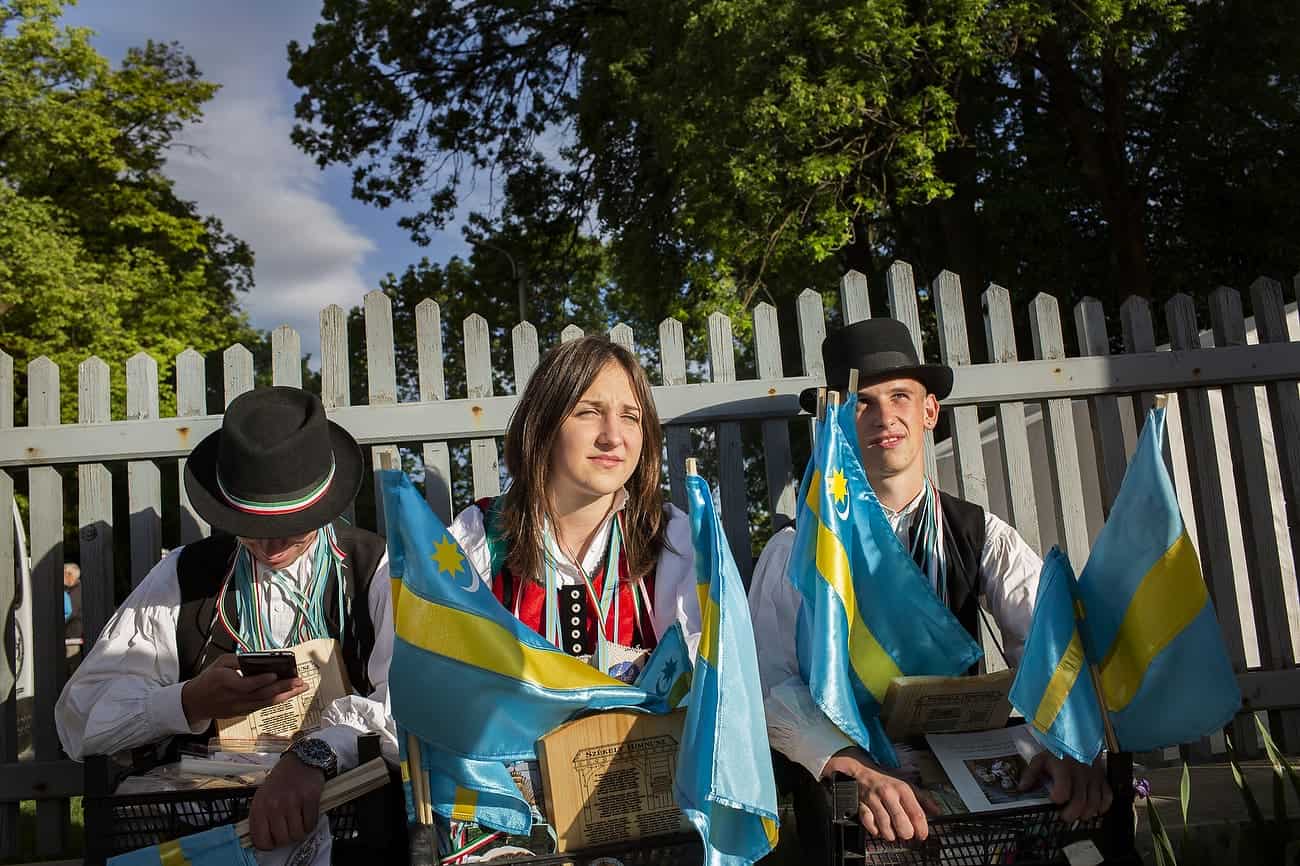
SUMULEU CIUC, ROMANIA - MAY 18: Hungarians from all over the world attending the early pilgrimage hold at Sumuleu Ciuc in Romania, as seen on May 18, 2018. Sumuleu Ciuc became a pilgrimage site in 1567, when Hungarian king John II Sigismund Zápolya wanted to convert the Székely population of the upper Csík to Protestantism. The Székelys refused to abandon the Catholic faith and resisted. A battle took place on a nearby field, on Saturday before Pentecost 1567, from which the Székelys emerged victorious. The monks saw this as a sign of the care of Virgin Mary, and since then, this event has been commemorated by a pilgrimage when the believers gather on Pentecost every year. Beside its religious importance, the pilgrimage has also become a community event demonstrating spiritual unity of Hungarian people living in and outside the historical region of Transylvania. Photography by Mugur Varzariu/Getty Images/Newsweek.
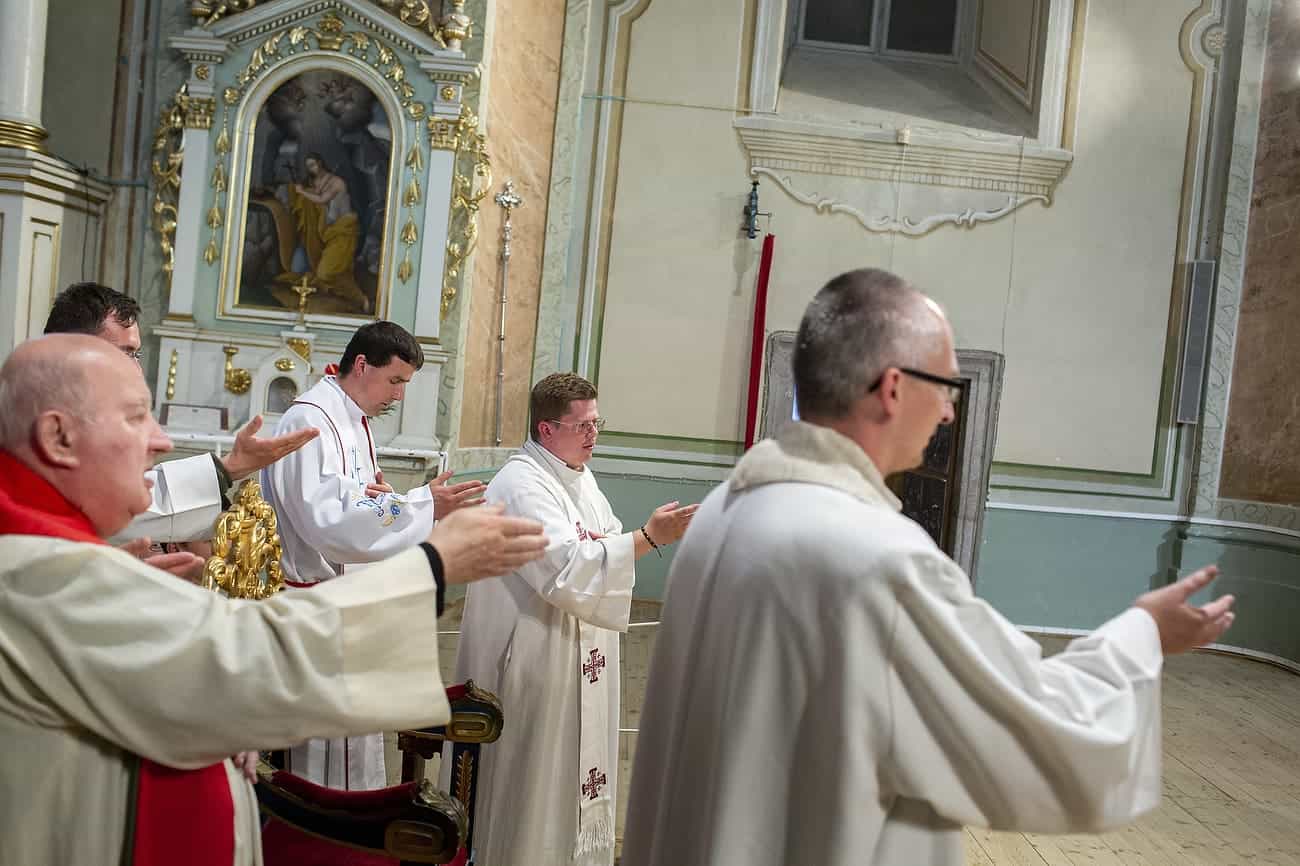
SUMULEU CIUC, ROMANIA - MAY 18: Hungarians from all over the world attending the early pilgrimage hold at Sumuleu Ciuc in Romania, as seen on May 18, 2018. Sumuleu Ciuc became a pilgrimage site in 1567, when Hungarian king John II Sigismund Zápolya wanted to convert the Székely population of the upper Csík to Protestantism. The Székelys refused to abandon the Catholic faith and resisted. A battle took place on a nearby field, on Saturday before Pentecost 1567, from which the Székelys emerged victorious. The monks saw this as a sign of the care of Virgin Mary, and since then, this event has been commemorated by a pilgrimage when the believers gather on Pentecost every year. Beside its religious importance, the pilgrimage has also become a community event demonstrating spiritual unity of Hungarian people living in and outside the historical region of Transylvania. Photography by Mugur Varzariu/Getty Images/Newsweek.
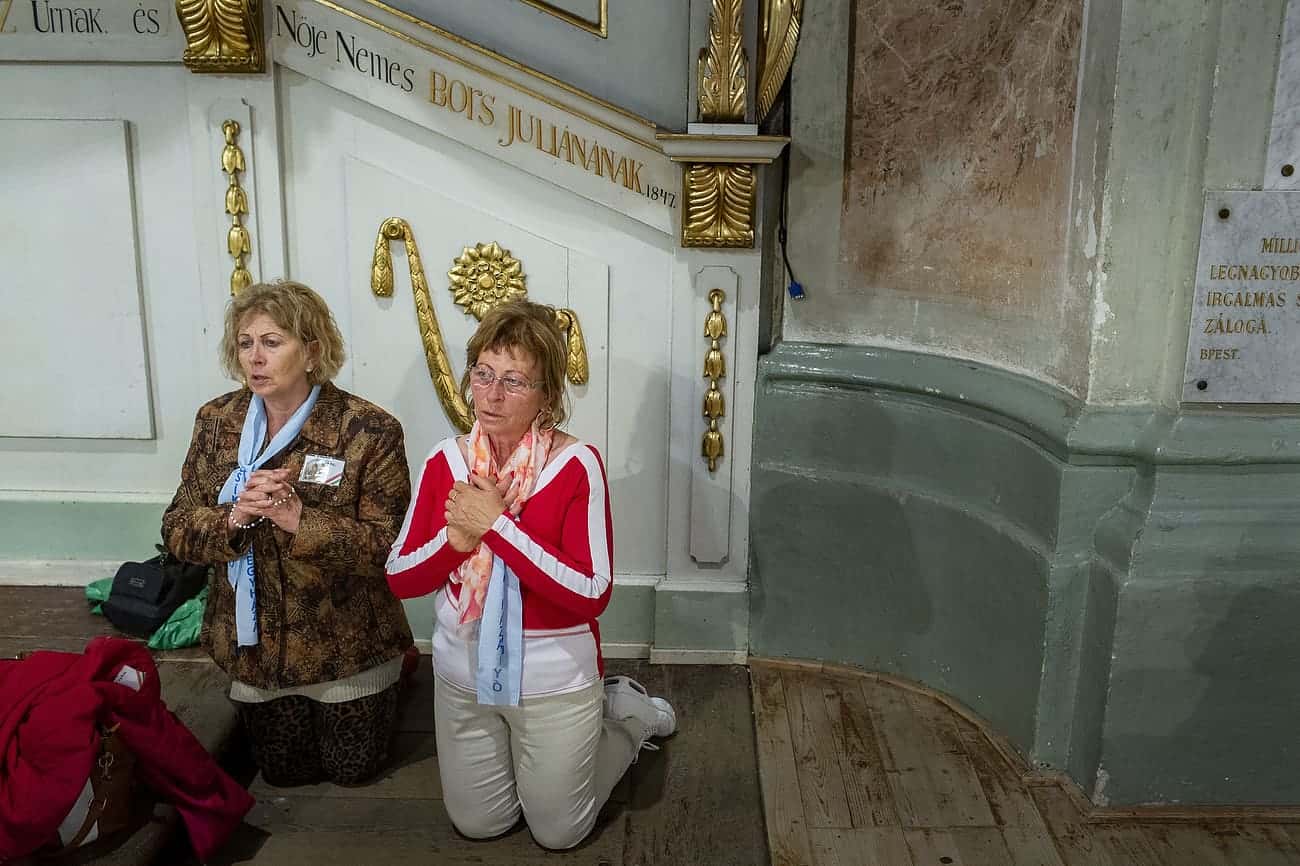
SUMULEU CIUC, ROMANIA - MAY 18: Hungarians from all over the world attending the early pilgrimage hold at Sumuleu Ciuc in Romania, as seen on May 18, 2018. Sumuleu Ciuc became a pilgrimage site in 1567, when Hungarian king John II Sigismund Zápolya wanted to convert the Székely population of the upper Csík to Protestantism. The Székelys refused to abandon the Catholic faith and resisted. A battle took place on a nearby field, on Saturday before Pentecost 1567, from which the Székelys emerged victorious. The monks saw this as a sign of the care of Virgin Mary, and since then, this event has been commemorated by a pilgrimage when the believers gather on Pentecost every year. Beside its religious importance, the pilgrimage has also become a community event demonstrating spiritual unity of Hungarian people living in and outside the historical region of Transylvania. Photography by Mugur Varzariu/Getty Images/Newsweek.
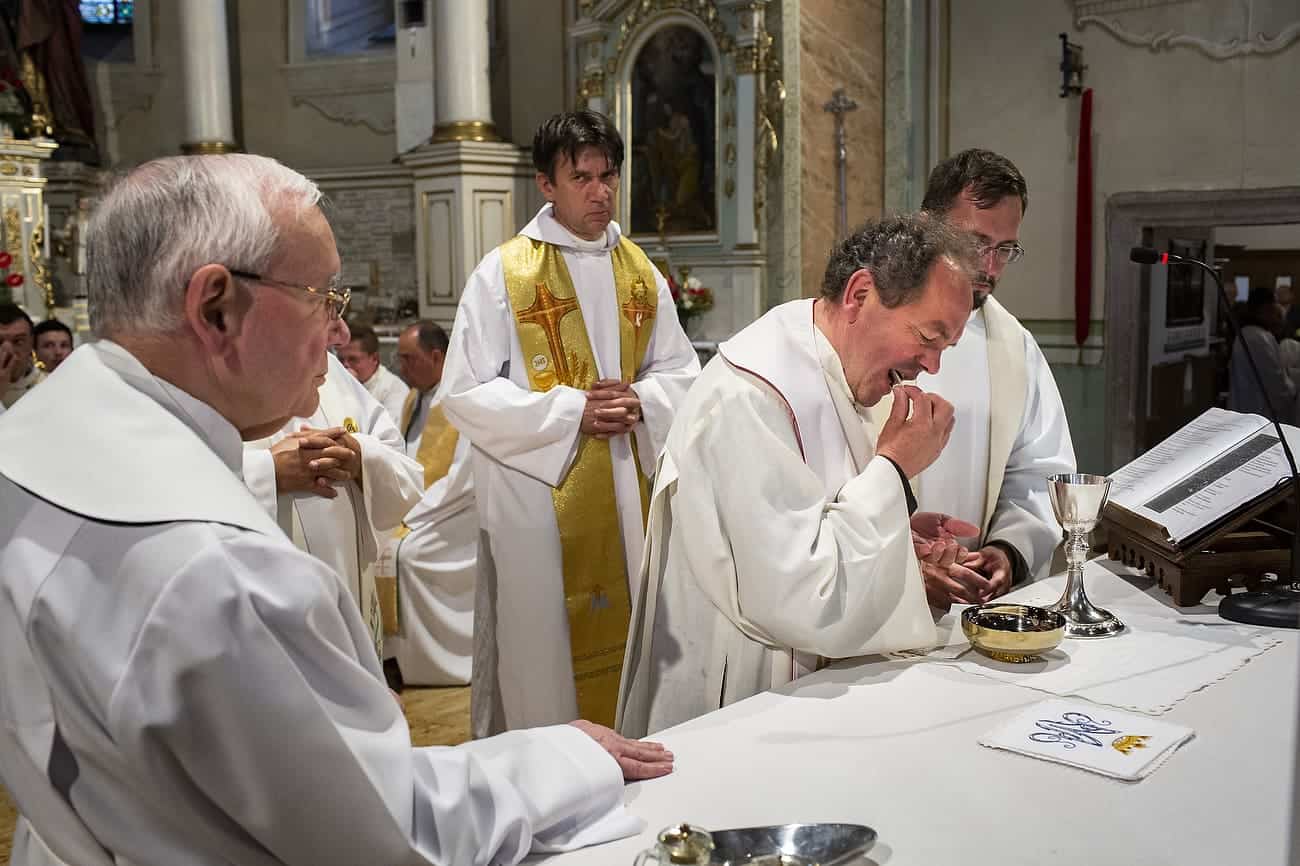
SUMULEU CIUC, ROMANIA - MAY 18: Hungarians from all over the world attending the early pilgrimage hold at Sumuleu Ciuc in Romania, as seen on May 18, 2018. Sumuleu Ciuc became a pilgrimage site in 1567, when Hungarian king John II Sigismund Zápolya wanted to convert the Székely population of the upper Csík to Protestantism. The Székelys refused to abandon the Catholic faith and resisted. A battle took place on a nearby field, on Saturday before Pentecost 1567, from which the Székelys emerged victorious. The monks saw this as a sign of the care of Virgin Mary, and since then, this event has been commemorated by a pilgrimage when the believers gather on Pentecost every year. Beside its religious importance, the pilgrimage has also become a community event demonstrating spiritual unity of Hungarian people living in and outside the historical region of Transylvania. Photography by Mugur Varzariu/Getty Images/Newsweek.
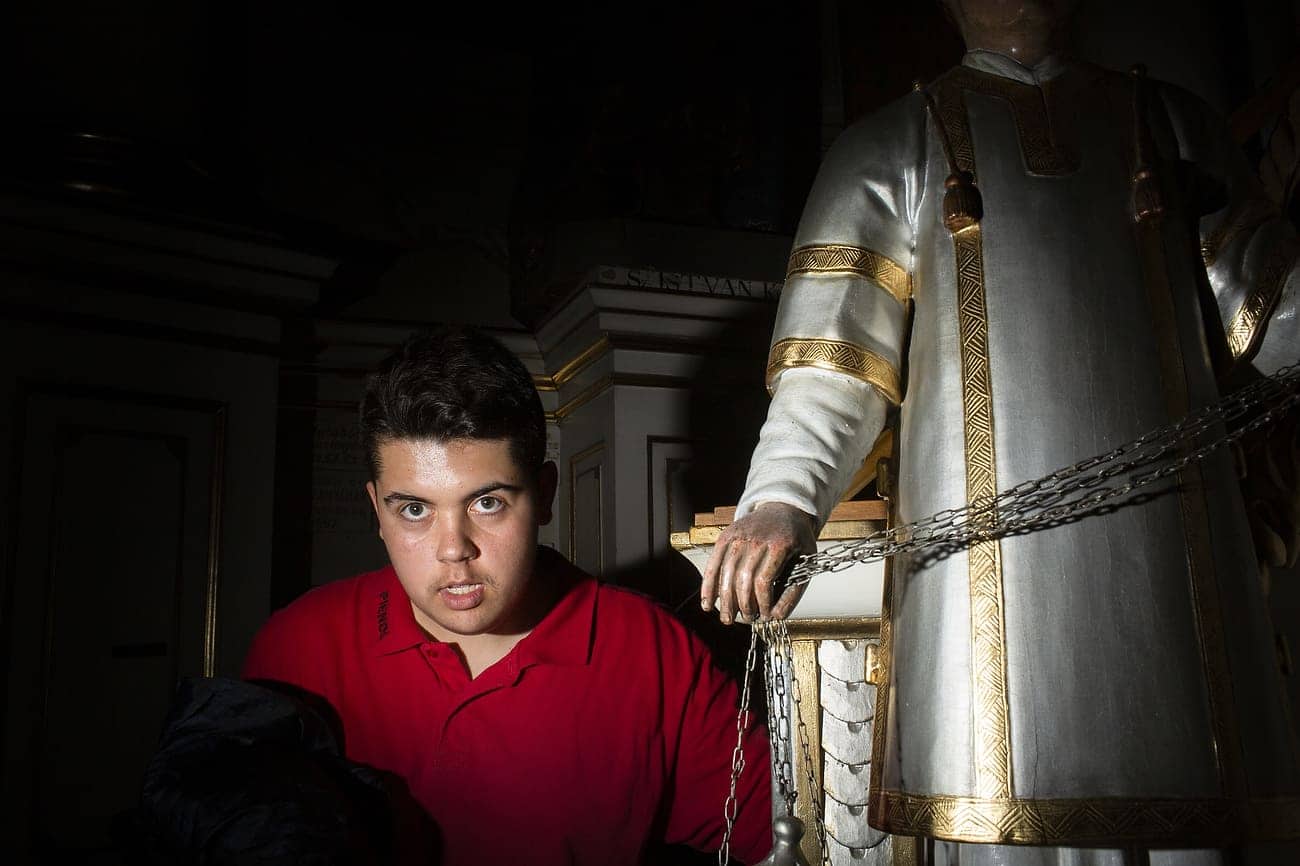
SUMULEU CIUC, ROMANIA - MAY 18: Hungarians from all over the world attending the early pilgrimage hold at Sumuleu Ciuc in Romania, as seen on May 18, 2018. Sumuleu Ciuc became a pilgrimage site in 1567, when Hungarian king John II Sigismund Zápolya wanted to convert the Székely population of the upper Csík to Protestantism. The Székelys refused to abandon the Catholic faith and resisted. A battle took place on a nearby field, on Saturday before Pentecost 1567, from which the Székelys emerged victorious. The monks saw this as a sign of the care of Virgin Mary, and since then, this event has been commemorated by a pilgrimage when the believers gather on Pentecost every year. Beside its religious importance, the pilgrimage has also become a community event demonstrating spiritual unity of Hungarian people living in and outside the historical region of Transylvania. Photography by Mugur Varzariu/Getty Images/Newsweek.
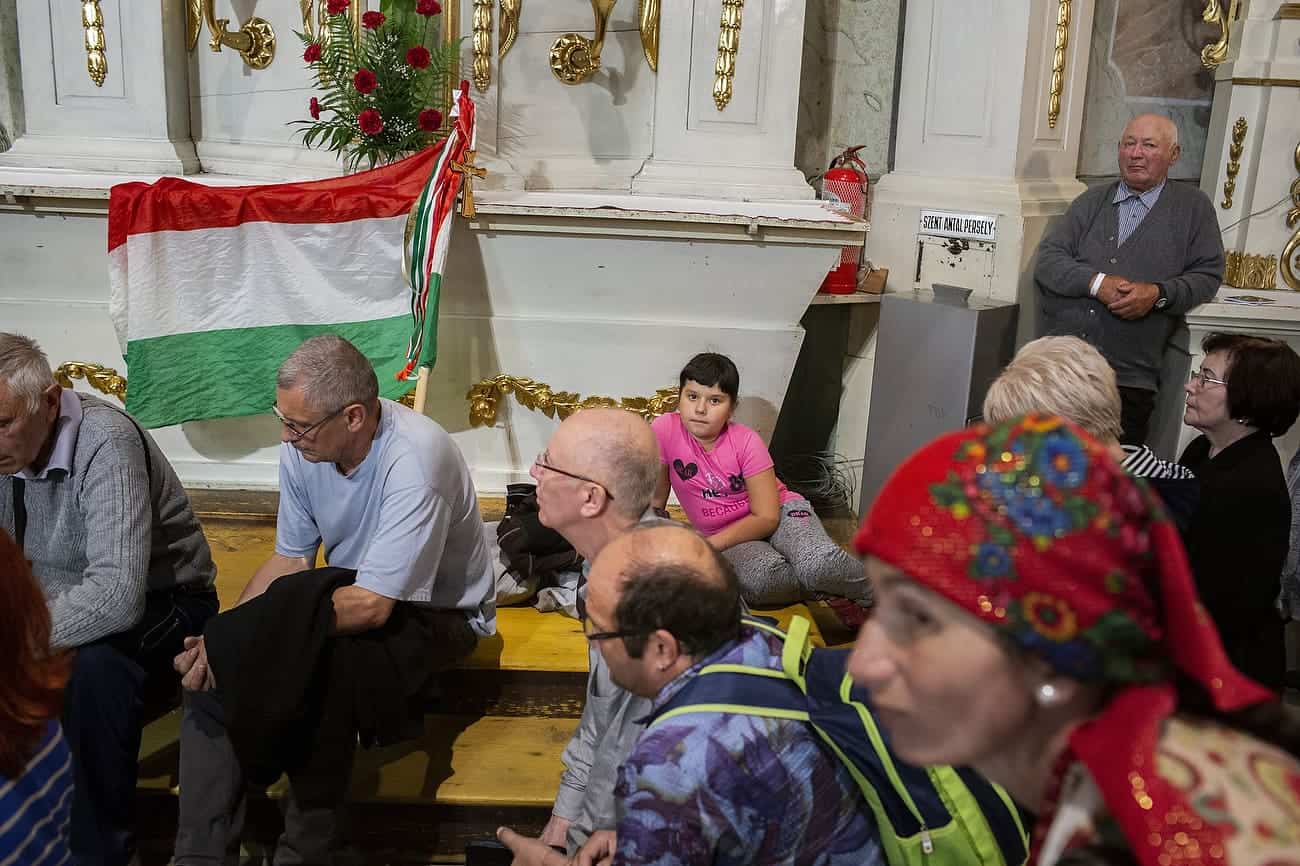
SUMULEU CIUC, ROMANIA - MAY 18: Hungarians from all over the world attending the early pilgrimage hold at Sumuleu Ciuc in Romania, as seen on May 18, 2018. Sumuleu Ciuc became a pilgrimage site in 1567, when Hungarian king John II Sigismund Zápolya wanted to convert the Székely population of the upper Csík to Protestantism. The Székelys refused to abandon the Catholic faith and resisted. A battle took place on a nearby field, on Saturday before Pentecost 1567, from which the Székelys emerged victorious. The monks saw this as a sign of the care of Virgin Mary, and since then, this event has been commemorated by a pilgrimage when the believers gather on Pentecost every year. Beside its religious importance, the pilgrimage has also become a community event demonstrating spiritual unity of Hungarian people living in and outside the historical region of Transylvania. Photography by Mugur Varzariu/Getty Images/Newsweek.
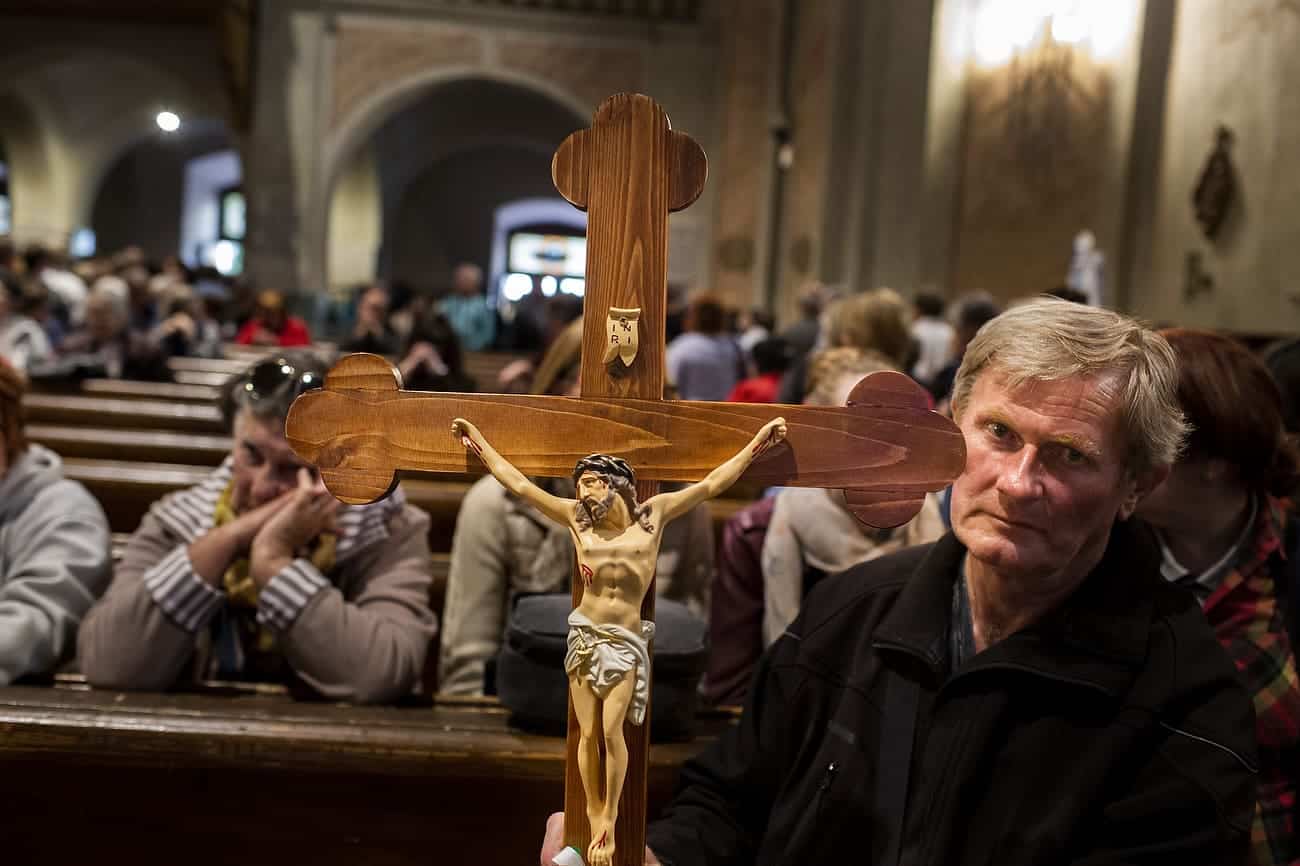
SUMULEU CIUC, ROMANIA - MAY 18: Hungarians from all over the world attending the early pilgrimage hold at Sumuleu Ciuc in Romania, as seen on May 18, 2018. Sumuleu Ciuc became a pilgrimage site in 1567, when Hungarian king John II Sigismund Zápolya wanted to convert the Székely population of the upper Csík to Protestantism. The Székelys refused to abandon the Catholic faith and resisted. A battle took place on a nearby field, on Saturday before Pentecost 1567, from which the Székelys emerged victorious. The monks saw this as a sign of the care of Virgin Mary, and since then, this event has been commemorated by a pilgrimage when the believers gather on Pentecost every year. Beside its religious importance, the pilgrimage has also become a community event demonstrating spiritual unity of Hungarian people living in and outside the historical region of Transylvania. Photography by Mugur Varzariu/Getty Images/Newsweek.
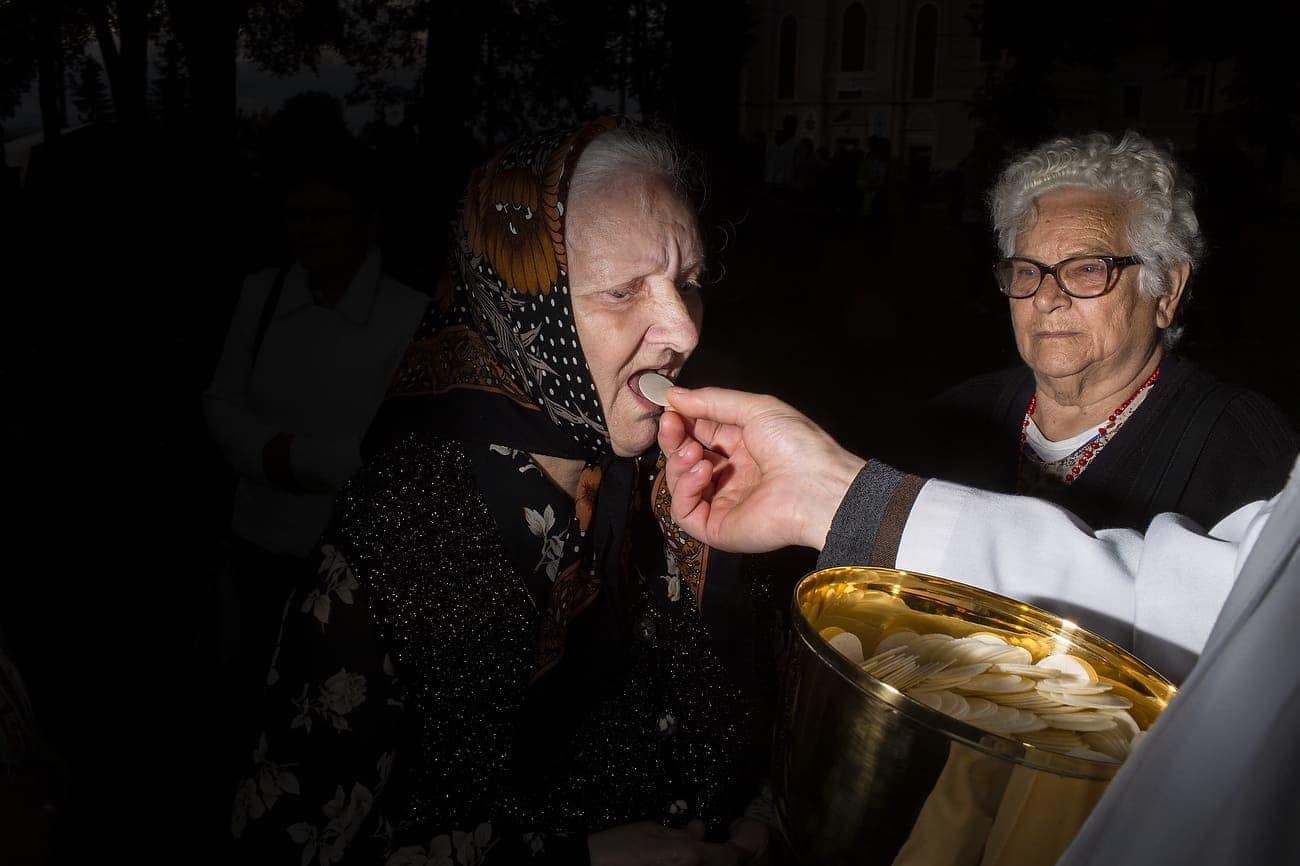
SUMULEU CIUC, ROMANIA - MAY 18: Hungarians from all over the world attending the early pilgrimage hold at Sumuleu Ciuc in Romania, as seen on May 18, 2018. Sumuleu Ciuc became a pilgrimage site in 1567, when Hungarian king John II Sigismund Zápolya wanted to convert the Székely population of the upper Csík to Protestantism. The Székelys refused to abandon the Catholic faith and resisted. A battle took place on a nearby field, on Saturday before Pentecost 1567, from which the Székelys emerged victorious. The monks saw this as a sign of the care of Virgin Mary, and since then, this event has been commemorated by a pilgrimage when the believers gather on Pentecost every year. Beside its religious importance, the pilgrimage has also become a community event demonstrating spiritual unity of Hungarian people living in and outside the historical region of Transylvania. Photography by Mugur Varzariu/Getty Images/Newsweek.
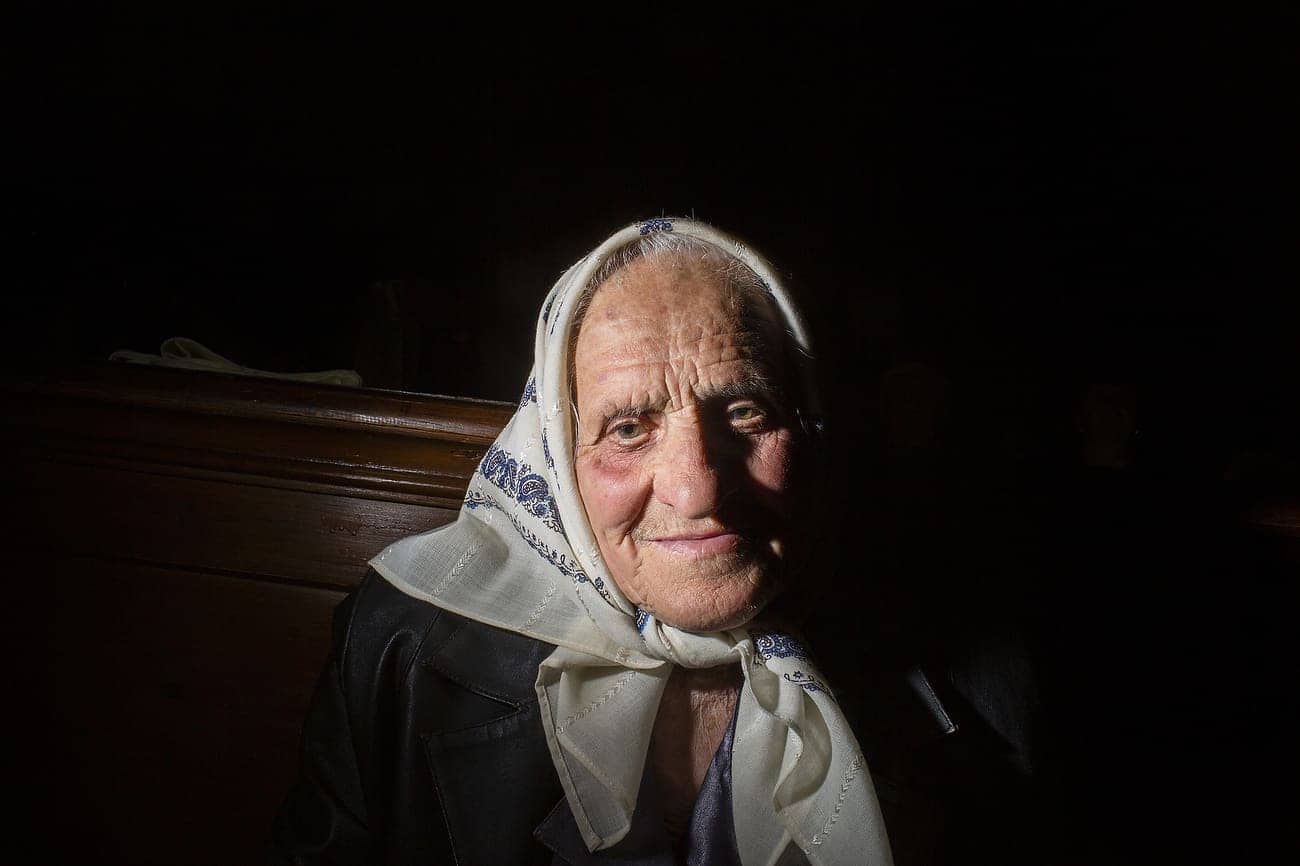
SUMULEU CIUC, ROMANIA - MAY 18: Hungarians from all over the world attending the early pilgrimage hold at Sumuleu Ciuc in Romania, as seen on May 18, 2018. Sumuleu Ciuc became a pilgrimage site in 1567, when Hungarian king John II Sigismund Zápolya wanted to convert the Székely population of the upper Csík to Protestantism. The Székelys refused to abandon the Catholic faith and resisted. A battle took place on a nearby field, on Saturday before Pentecost 1567, from which the Székelys emerged victorious. The monks saw this as a sign of the care of Virgin Mary, and since then, this event has been commemorated by a pilgrimage when the believers gather on Pentecost every year. Beside its religious importance, the pilgrimage has also become a community event demonstrating spiritual unity of Hungarian people living in and outside the historical region of Transylvania. Photography by Mugur Varzariu/Getty Images/Newsweek.
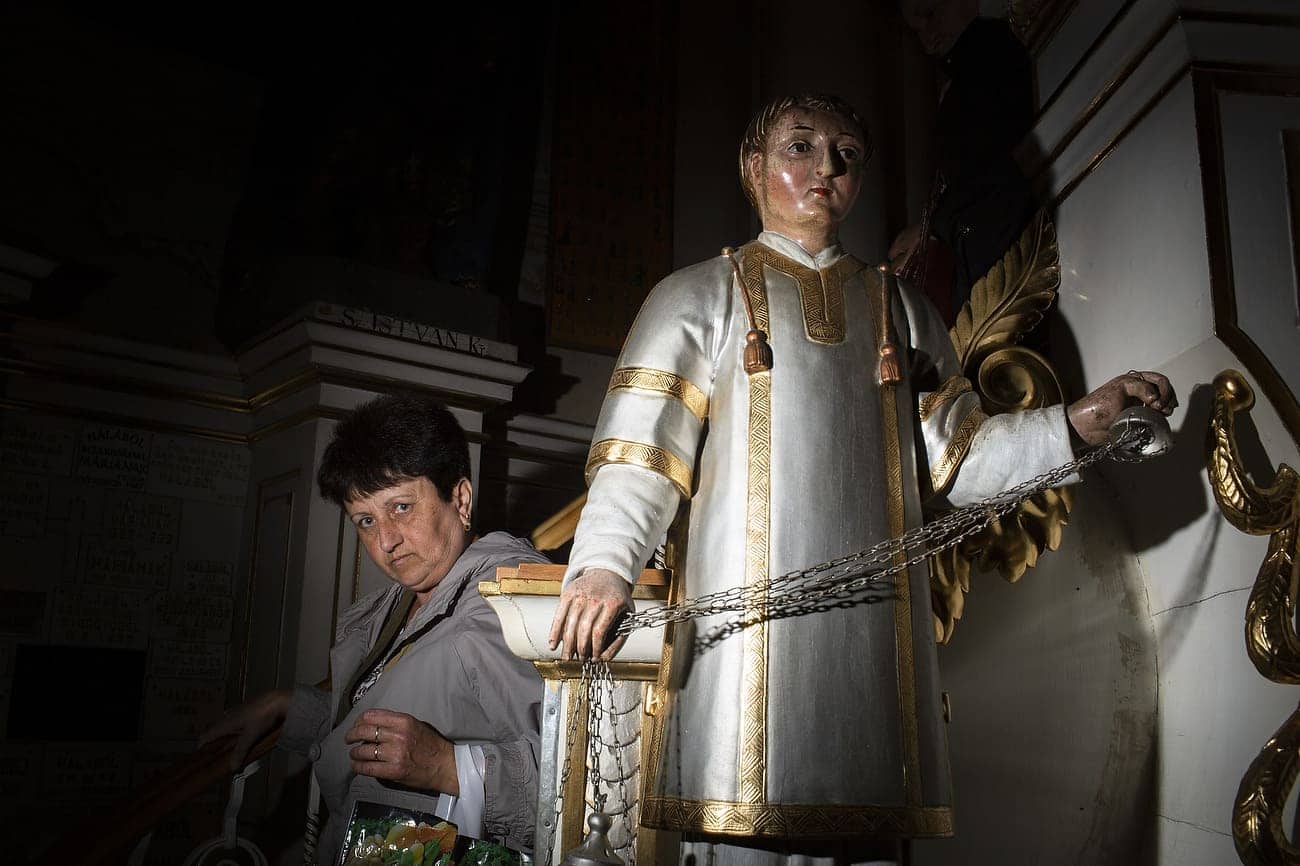
SUMULEU CIUC, ROMANIA - MAY 18: Hungarians from all over the world attending the early pilgrimage hold at Sumuleu Ciuc in Romania, as seen on May 18, 2018. Sumuleu Ciuc became a pilgrimage site in 1567, when Hungarian king John II Sigismund Zápolya wanted to convert the Székely population of the upper Csík to Protestantism. The Székelys refused to abandon the Catholic faith and resisted. A battle took place on a nearby field, on Saturday before Pentecost 1567, from which the Székelys emerged victorious. The monks saw this as a sign of the care of Virgin Mary, and since then, this event has been commemorated by a pilgrimage when the believers gather on Pentecost every year. Beside its religious importance, the pilgrimage has also become a community event demonstrating spiritual unity of Hungarian people living in and outside the historical region of Transylvania. Photography by Mugur Varzariu/Getty Images/Newsweek.
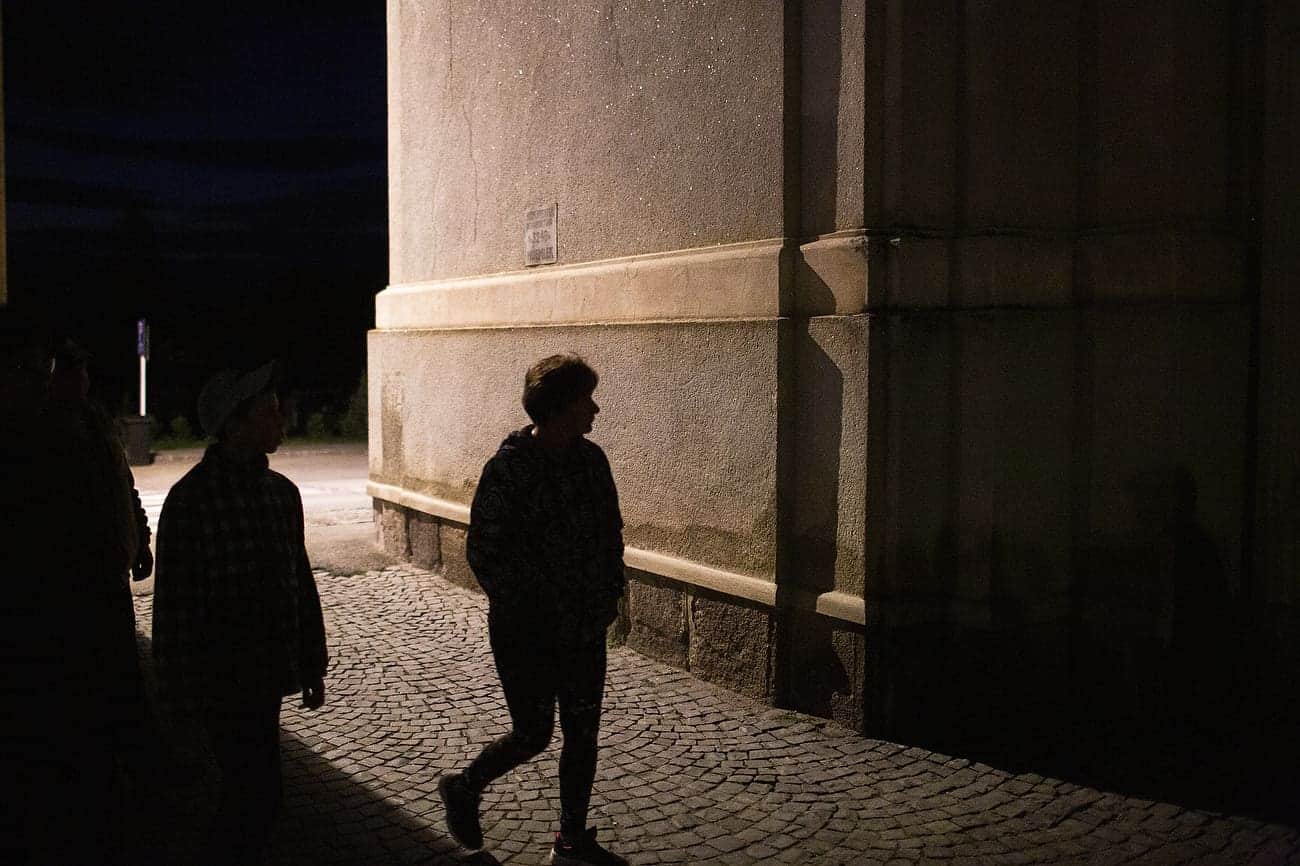
SUMULEU CIUC, ROMANIA - MAY 18: Hungarians from all over the world attending the early pilgrimage hold at Sumuleu Ciuc in Romania, as seen on May 18, 2018. Sumuleu Ciuc became a pilgrimage site in 1567, when Hungarian king John II Sigismund Zápolya wanted to convert the Székely population of the upper Csík to Protestantism. The Székelys refused to abandon the Catholic faith and resisted. A battle took place on a nearby field, on Saturday before Pentecost 1567, from which the Székelys emerged victorious. The monks saw this as a sign of the care of Virgin Mary, and since then, this event has been commemorated by a pilgrimage when the believers gather on Pentecost every year. Beside its religious importance, the pilgrimage has also become a community event demonstrating spiritual unity of Hungarian people living in and outside the historical region of Transylvania. Photography by Mugur Varzariu/Getty Images/Newsweek.
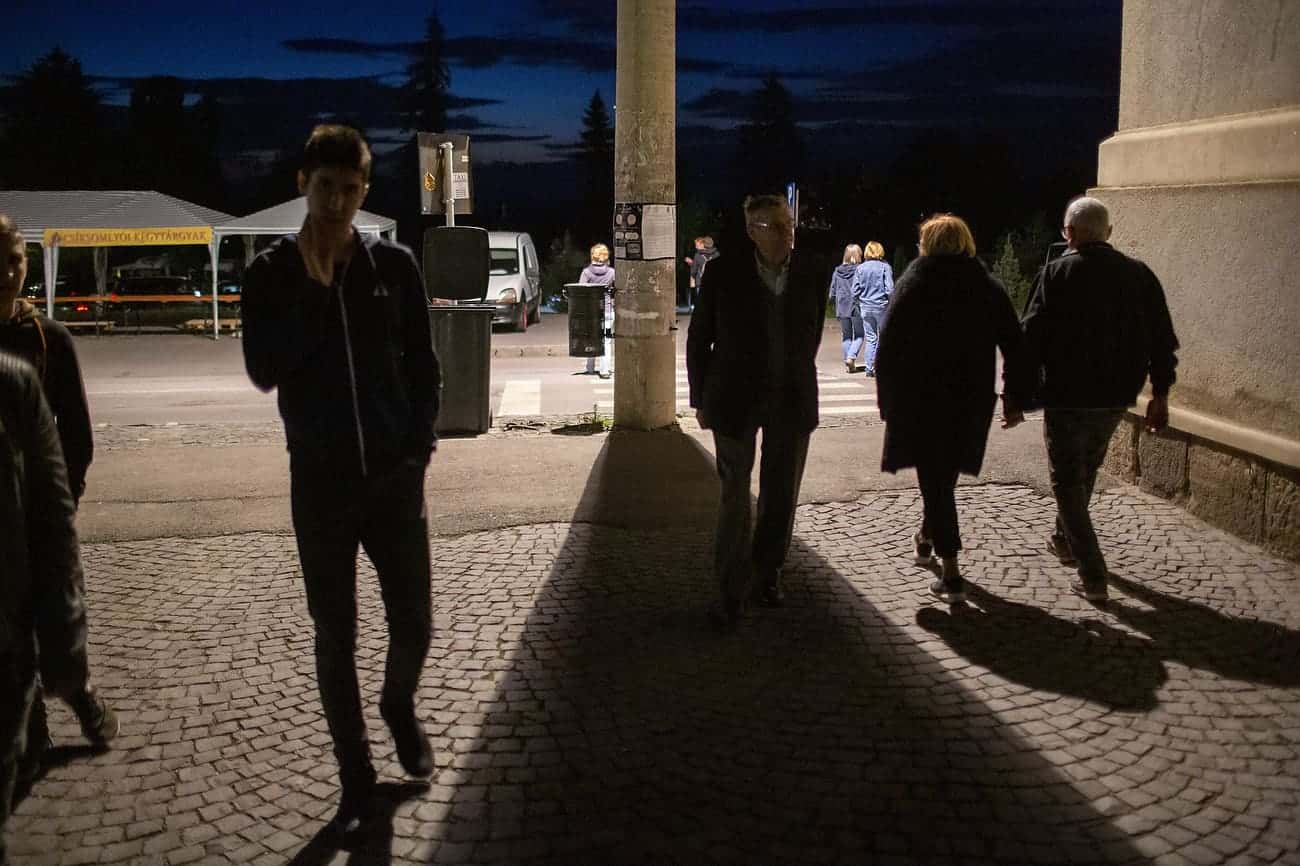
SUMULEU CIUC, ROMANIA - MAY 18: Hungarians from all over the world attending the early pilgrimage hold at Sumuleu Ciuc in Romania, as seen on May 18, 2018. Sumuleu Ciuc became a pilgrimage site in 1567, when Hungarian king John II Sigismund Zápolya wanted to convert the Székely population of the upper Csík to Protestantism. The Székelys refused to abandon the Catholic faith and resisted. A battle took place on a nearby field, on Saturday before Pentecost 1567, from which the Székelys emerged victorious. The monks saw this as a sign of the care of Virgin Mary, and since then, this event has been commemorated by a pilgrimage when the believers gather on Pentecost every year. Beside its religious importance, the pilgrimage has also become a community event demonstrating spiritual unity of Hungarian people living in and outside the historical region of Transylvania. Photography by Mugur Varzariu/Getty Images/Newsweek.
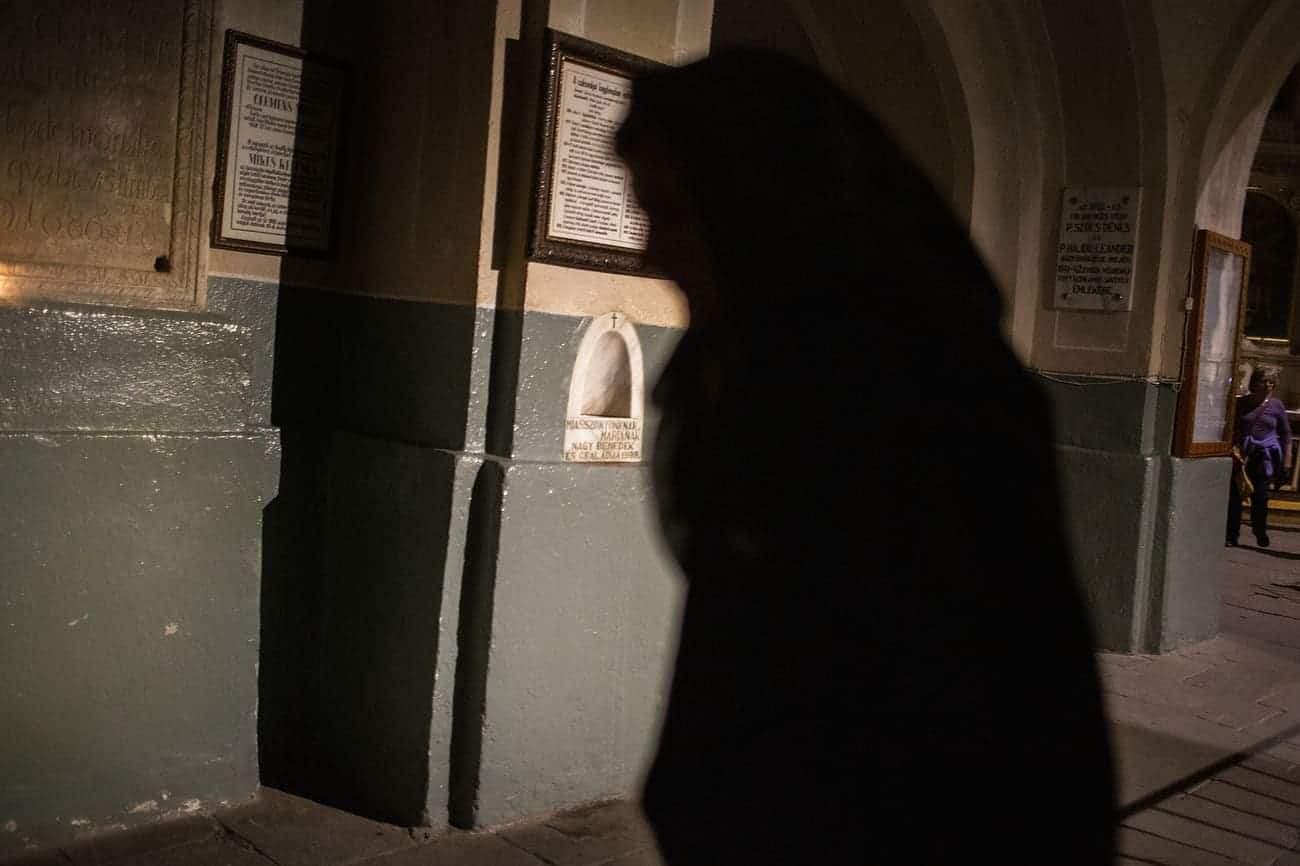
SUMULEU CIUC, ROMANIA - MAY 18: Hungarians from all over the world attending the early pilgrimage hold at Sumuleu Ciuc in Romania, as seen on May 18, 2018. Sumuleu Ciuc became a pilgrimage site in 1567, when Hungarian king John II Sigismund Zápolya wanted to convert the Székely population of the upper Csík to Protestantism. The Székelys refused to abandon the Catholic faith and resisted. A battle took place on a nearby field, on Saturday before Pentecost 1567, from which the Székelys emerged victorious. The monks saw this as a sign of the care of Virgin Mary, and since then, this event has been commemorated by a pilgrimage when the believers gather on Pentecost every year. Beside its religious importance, the pilgrimage has also become a community event demonstrating spiritual unity of Hungarian people living in and outside the historical region of Transylvania. Photography by Mugur Varzariu/Getty Images/Newsweek.
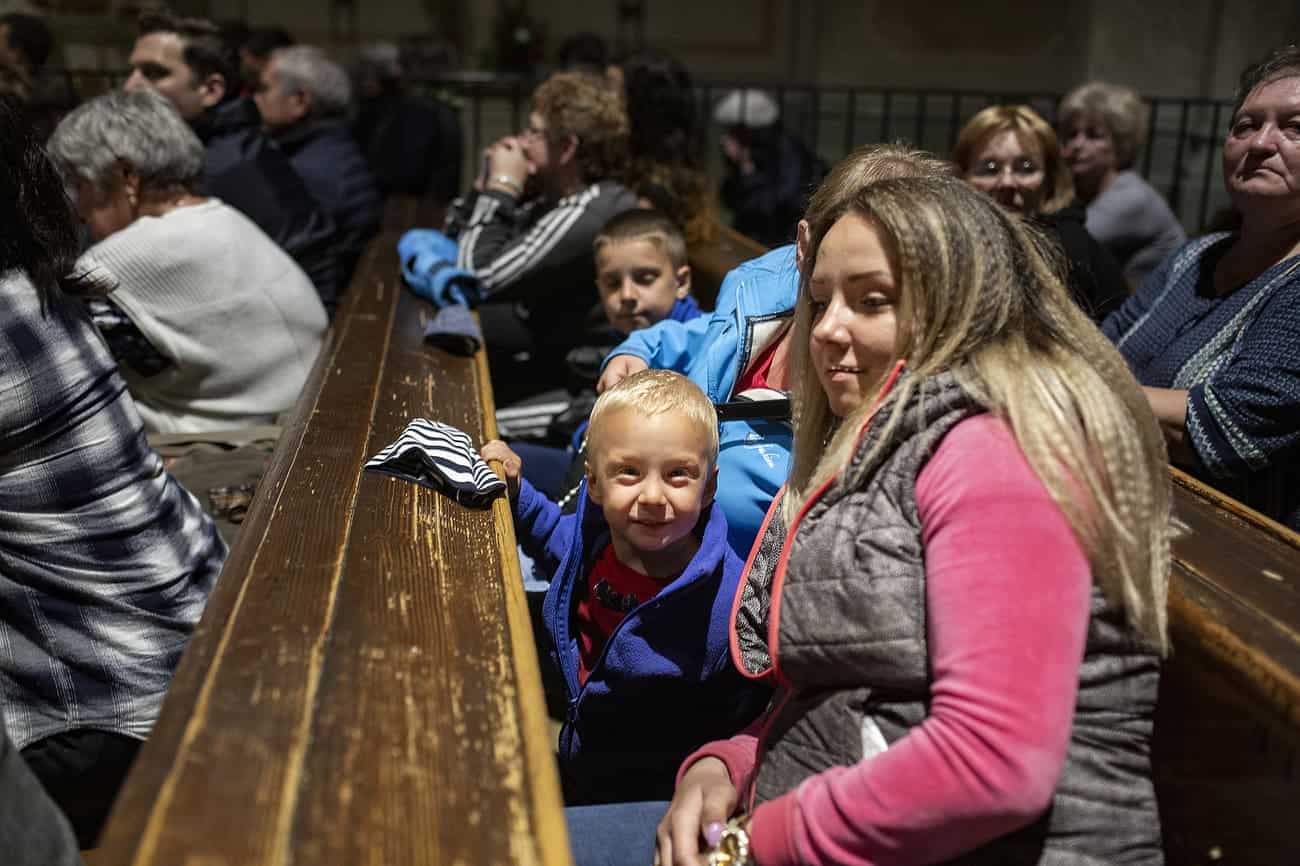
SUMULEU CIUC, ROMANIA - MAY 18: Hungarians from all over the world attending the early pilgrimage hold at Sumuleu Ciuc in Romania, as seen on May 18, 2018. Sumuleu Ciuc became a pilgrimage site in 1567, when Hungarian king John II Sigismund Zápolya wanted to convert the Székely population of the upper Csík to Protestantism. The Székelys refused to abandon the Catholic faith and resisted. A battle took place on a nearby field, on Saturday before Pentecost 1567, from which the Székelys emerged victorious. The monks saw this as a sign of the care of Virgin Mary, and since then, this event has been commemorated by a pilgrimage when the believers gather on Pentecost every year. Beside its religious importance, the pilgrimage has also become a community event demonstrating spiritual unity of Hungarian people living in and outside the historical region of Transylvania. Photography by Mugur Varzariu/Getty Images/Newsweek.
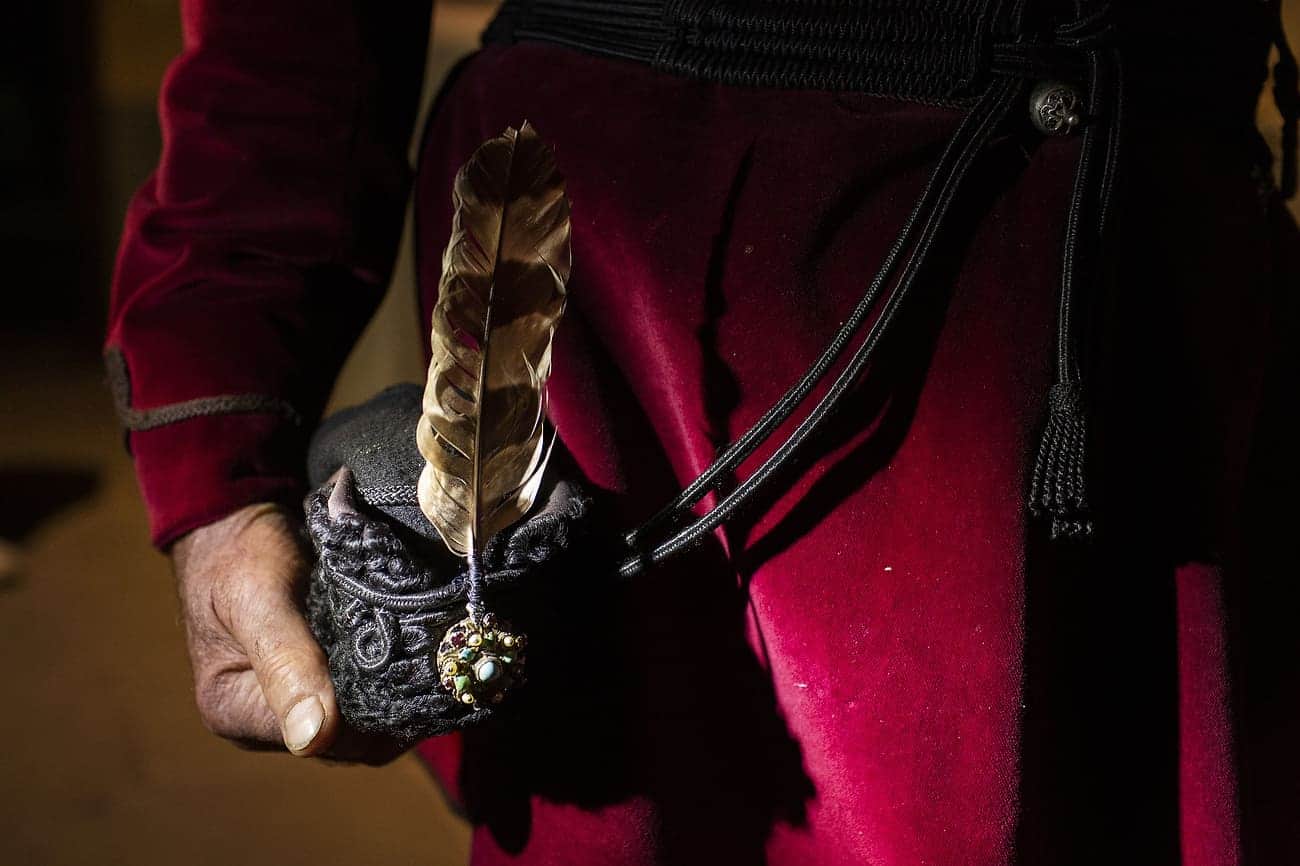
SUMULEU CIUC, ROMANIA - MAY 18: Hungarians from all over the world attending the early pilgrimage hold at Sumuleu Ciuc in Romania, as seen on May 18, 2018. Sumuleu Ciuc became a pilgrimage site in 1567, when Hungarian king John II Sigismund Zápolya wanted to convert the Székely population of the upper Csík to Protestantism. The Székelys refused to abandon the Catholic faith and resisted. A battle took place on a nearby field, on Saturday before Pentecost 1567, from which the Székelys emerged victorious. The monks saw this as a sign of the care of Virgin Mary, and since then, this event has been commemorated by a pilgrimage when the believers gather on Pentecost every year. Beside its religious importance, the pilgrimage has also become a community event demonstrating spiritual unity of Hungarian people living in and outside the historical region of Transylvania. Photography by Mugur Varzariu/Getty Images/Newsweek.
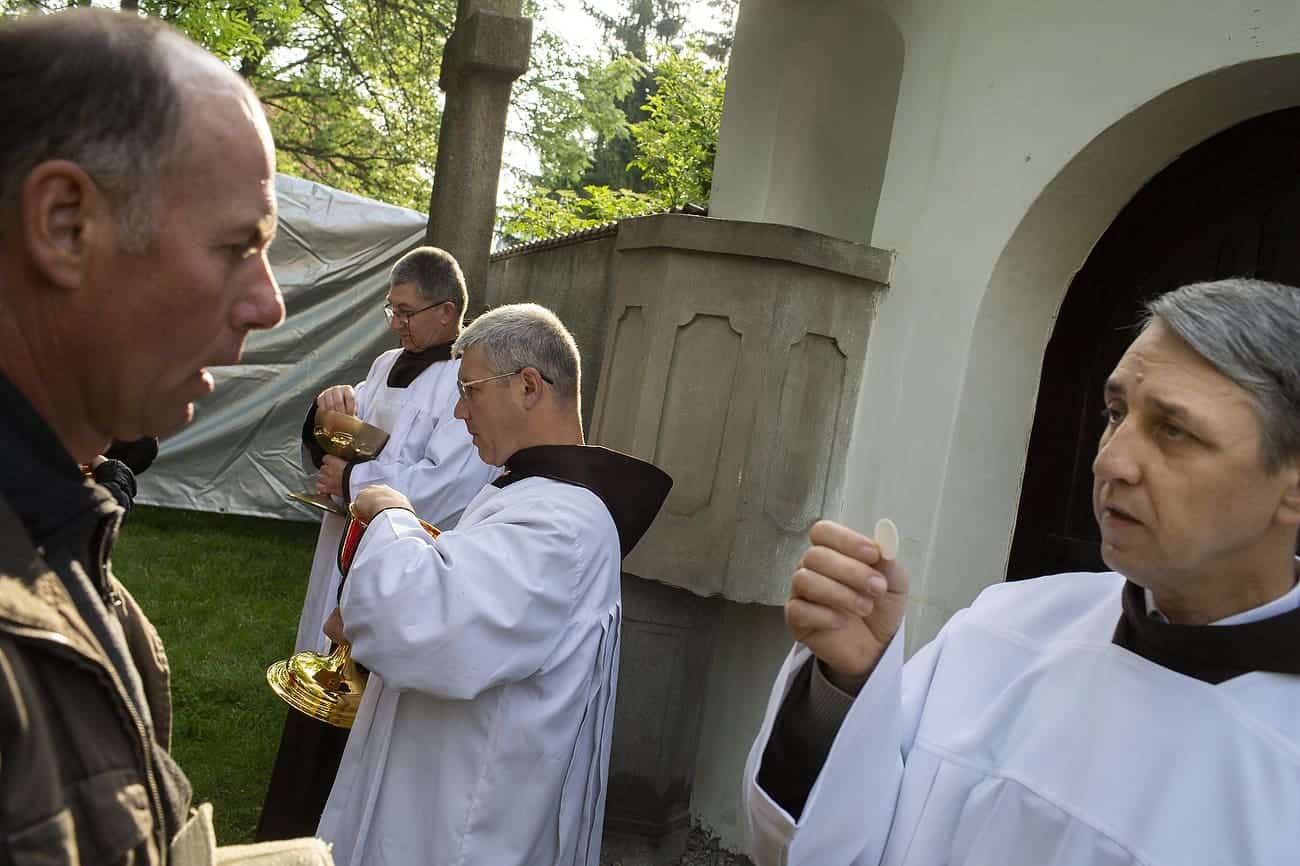
SUMULEU CIUC, ROMANIA - MAY 19: Hungarians from all over the world attending the early pilgrimage hold at Sumuleu Ciuc in Romania, as seen on May 19, 2018. Sumuleu Ciuc became a pilgrimage site in 1567, when Hungarian king John II Sigismund Zápolya wanted to convert the Székely population of the upper Csík to Protestantism. The Székelys refused to abandon the Catholic faith and resisted. A battle took place on a nearby field, on Saturday before Pentecost 1567, from which the Székelys emerged victorious. The monks saw this as a sign of the care of Virgin Mary, and since then, this event has been commemorated by a pilgrimage when the believers gather on Pentecost every year. Beside its religious importance, the pilgrimage has also become a community event demonstrating spiritual unity of Hungarian people living in and outside the historical region of Transylvania. Photography by Mugur Varzariu/Getty Images/Newsweek.
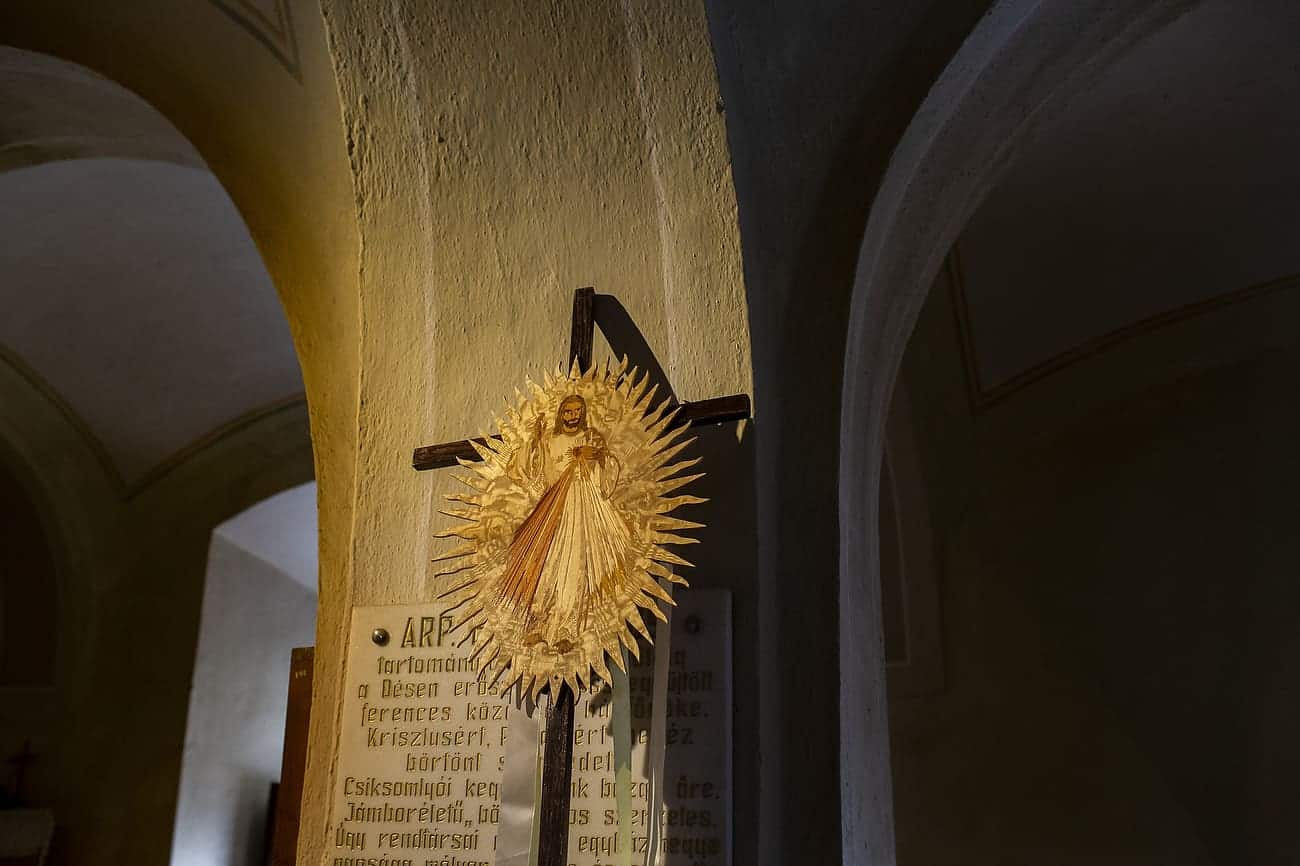
SUMULEU CIUC, ROMANIA - MAY 19: Hungarians from all over the world attending the early pilgrimage hold at Sumuleu Ciuc in Romania, as seen on May 19, 2018. Sumuleu Ciuc became a pilgrimage site in 1567, when Hungarian king John II Sigismund Zápolya wanted to convert the Székely population of the upper Csík to Protestantism. The Székelys refused to abandon the Catholic faith and resisted. A battle took place on a nearby field, on Saturday before Pentecost 1567, from which the Székelys emerged victorious. The monks saw this as a sign of the care of Virgin Mary, and since then, this event has been commemorated by a pilgrimage when the believers gather on Pentecost every year. Beside its religious importance, the pilgrimage has also become a community event demonstrating spiritual unity of Hungarian people living in and outside the historical region of Transylvania. Photography by Mugur Varzariu/Getty Images/Newsweek.
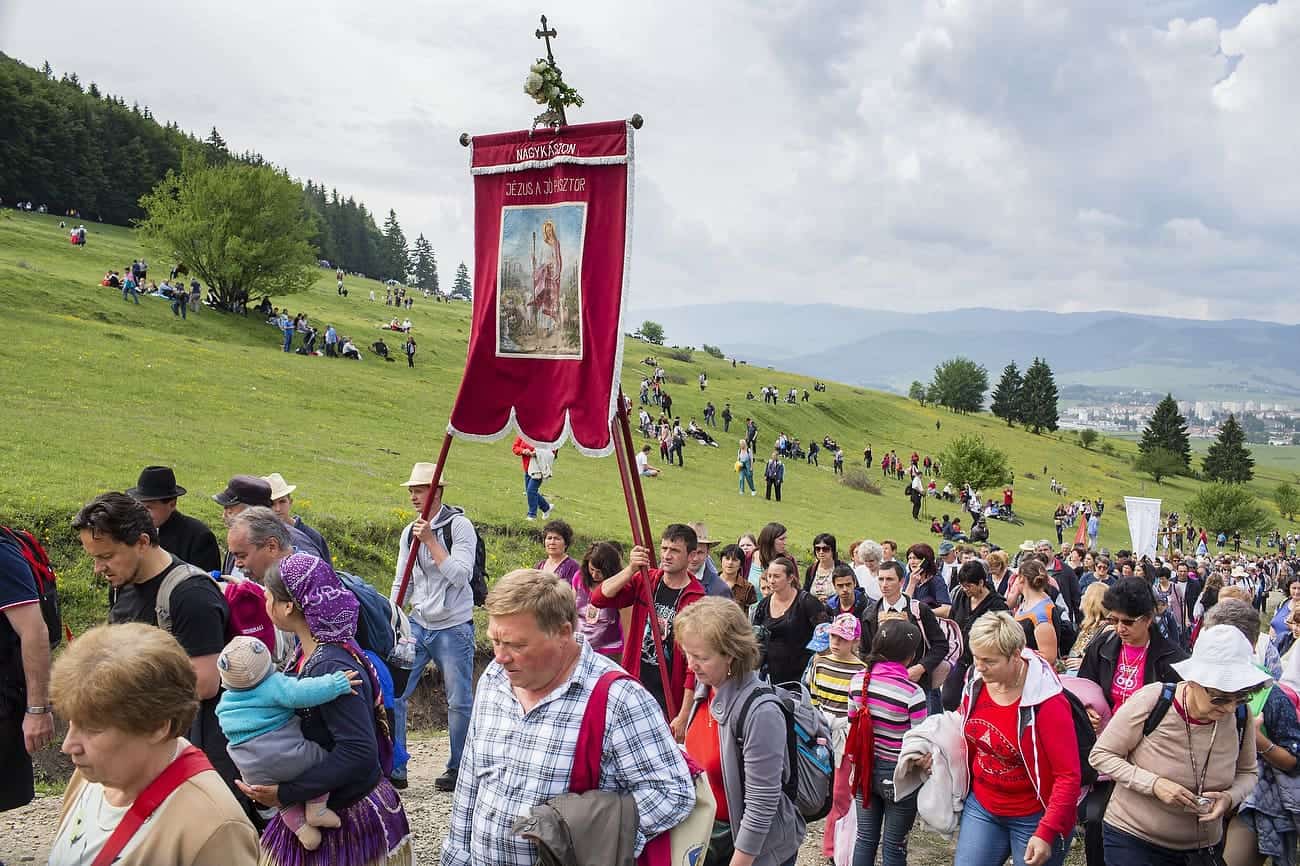
SUMULEU CIUC, ROMANIA - MAY 19: Hungarians from all over the world attending the early pilgrimage hold at Sumuleu Ciuc in Romania, as seen on May 19, 2018. Sumuleu Ciuc became a pilgrimage site in 1567, when Hungarian king John II Sigismund Zápolya wanted to convert the Székely population of the upper Csík to Protestantism. The Székelys refused to abandon the Catholic faith and resisted. A battle took place on a nearby field, on Saturday before Pentecost 1567, from which the Székelys emerged victorious. The monks saw this as a sign of the care of Virgin Mary, and since then, this event has been commemorated by a pilgrimage when the believers gather on Pentecost every year. Beside its religious importance, the pilgrimage has also become a community event demonstrating spiritual unity of Hungarian people living in and outside the historical region of Transylvania. Photography by Mugur Varzariu/Getty Images/Newsweek.
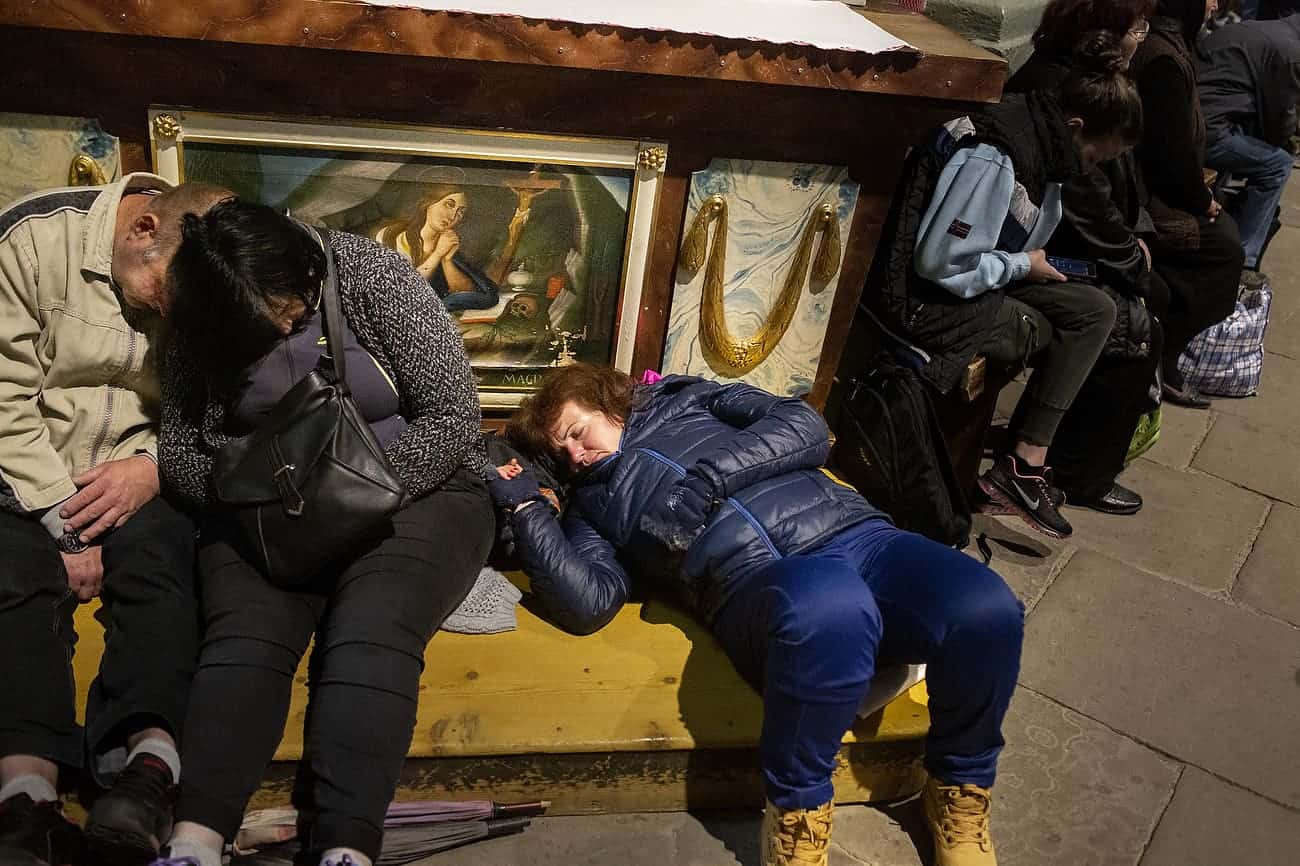
SUMULEU CIUC, ROMANIA - MAY 19: Hungarians from all over the world attending the early pilgrimage hold at Sumuleu Ciuc in Romania, as seen on May 19, 2018. Sumuleu Ciuc became a pilgrimage site in 1567, when Hungarian king John II Sigismund Zápolya wanted to convert the Székely population of the upper Csík to Protestantism. The Székelys refused to abandon the Catholic faith and resisted. A battle took place on a nearby field, on Saturday before Pentecost 1567, from which the Székelys emerged victorious. The monks saw this as a sign of the care of Virgin Mary, and since then, this event has been commemorated by a pilgrimage when the believers gather on Pentecost every year. Beside its religious importance, the pilgrimage has also become a community event demonstrating spiritual unity of Hungarian people living in and outside the historical region of Transylvania. Photography by Mugur Varzariu/Getty Images/Newsweek.
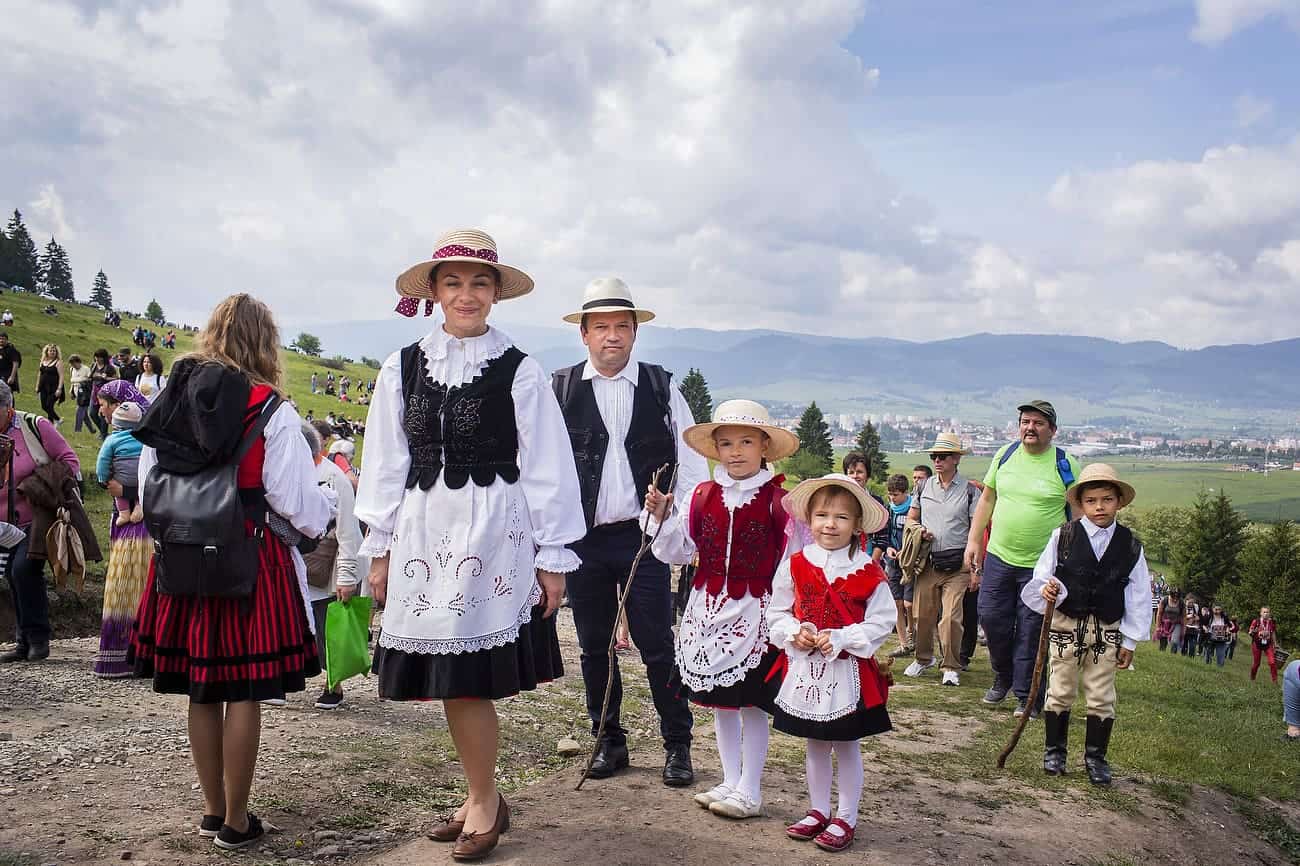
SUMULEU CIUC, ROMANIA - MAY 19: Hungarians from all over the world attending the early pilgrimage hold at Sumuleu Ciuc in Romania, as seen on May 19, 2018. Sumuleu Ciuc became a pilgrimage site in 1567, when Hungarian king John II Sigismund Zápolya wanted to convert the Székely population of the upper Csík to Protestantism. The Székelys refused to abandon the Catholic faith and resisted. A battle took place on a nearby field, on Saturday before Pentecost 1567, from which the Székelys emerged victorious. The monks saw this as a sign of the care of Virgin Mary, and since then, this event has been commemorated by a pilgrimage when the believers gather on Pentecost every year. Beside its religious importance, the pilgrimage has also become a community event demonstrating spiritual unity of Hungarian people living in and outside the historical region of Transylvania. Photography by Mugur Varzariu/Getty Images/Newsweek.
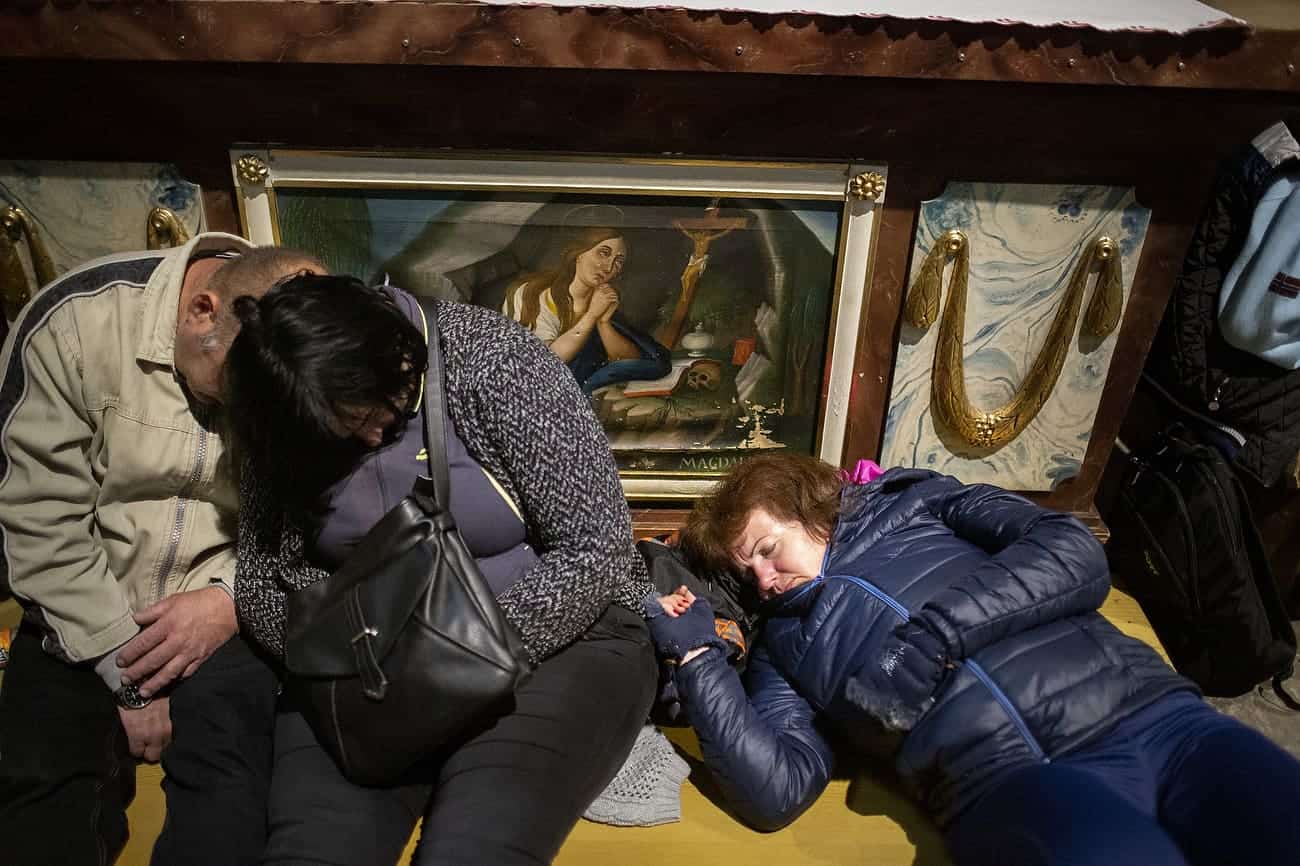
SUMULEU CIUC, ROMANIA - MAY 19: Hungarians from all over the world attending the early pilgrimage hold at Sumuleu Ciuc in Romania, as seen on May 19, 2018. Sumuleu Ciuc became a pilgrimage site in 1567, when Hungarian king John II Sigismund Zápolya wanted to convert the Székely population of the upper Csík to Protestantism. The Székelys refused to abandon the Catholic faith and resisted. A battle took place on a nearby field, on Saturday before Pentecost 1567, from which the Székelys emerged victorious. The monks saw this as a sign of the care of Virgin Mary, and since then, this event has been commemorated by a pilgrimage when the believers gather on Pentecost every year. Beside its religious importance, the pilgrimage has also become a community event demonstrating spiritual unity of Hungarian people living in and outside the historical region of Transylvania. Photography by Mugur Varzariu/Getty Images/Newsweek.
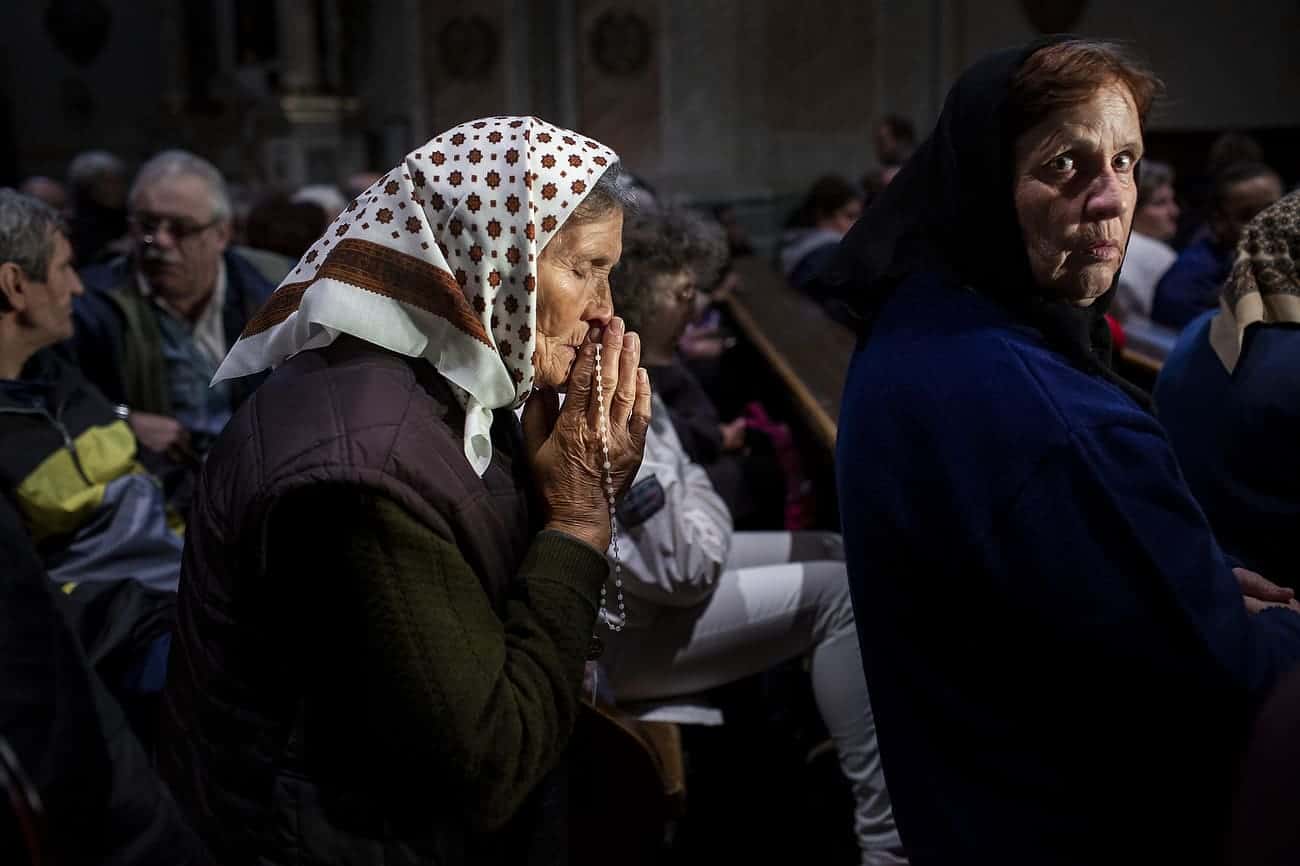
SUMULEU CIUC, ROMANIA - MAY 19: Hungarians from all over the world attending the early pilgrimage hold at Sumuleu Ciuc in Romania, as seen on May 19, 2018. Sumuleu Ciuc became a pilgrimage site in 1567, when Hungarian king John II Sigismund Zápolya wanted to convert the Székely population of the upper Csík to Protestantism. The Székelys refused to abandon the Catholic faith and resisted. A battle took place on a nearby field, on Saturday before Pentecost 1567, from which the Székelys emerged victorious. The monks saw this as a sign of the care of Virgin Mary, and since then, this event has been commemorated by a pilgrimage when the believers gather on Pentecost every year. Beside its religious importance, the pilgrimage has also become a community event demonstrating spiritual unity of Hungarian people living in and outside the historical region of Transylvania. Photography by Mugur Varzariu/Getty Images/Newsweek.
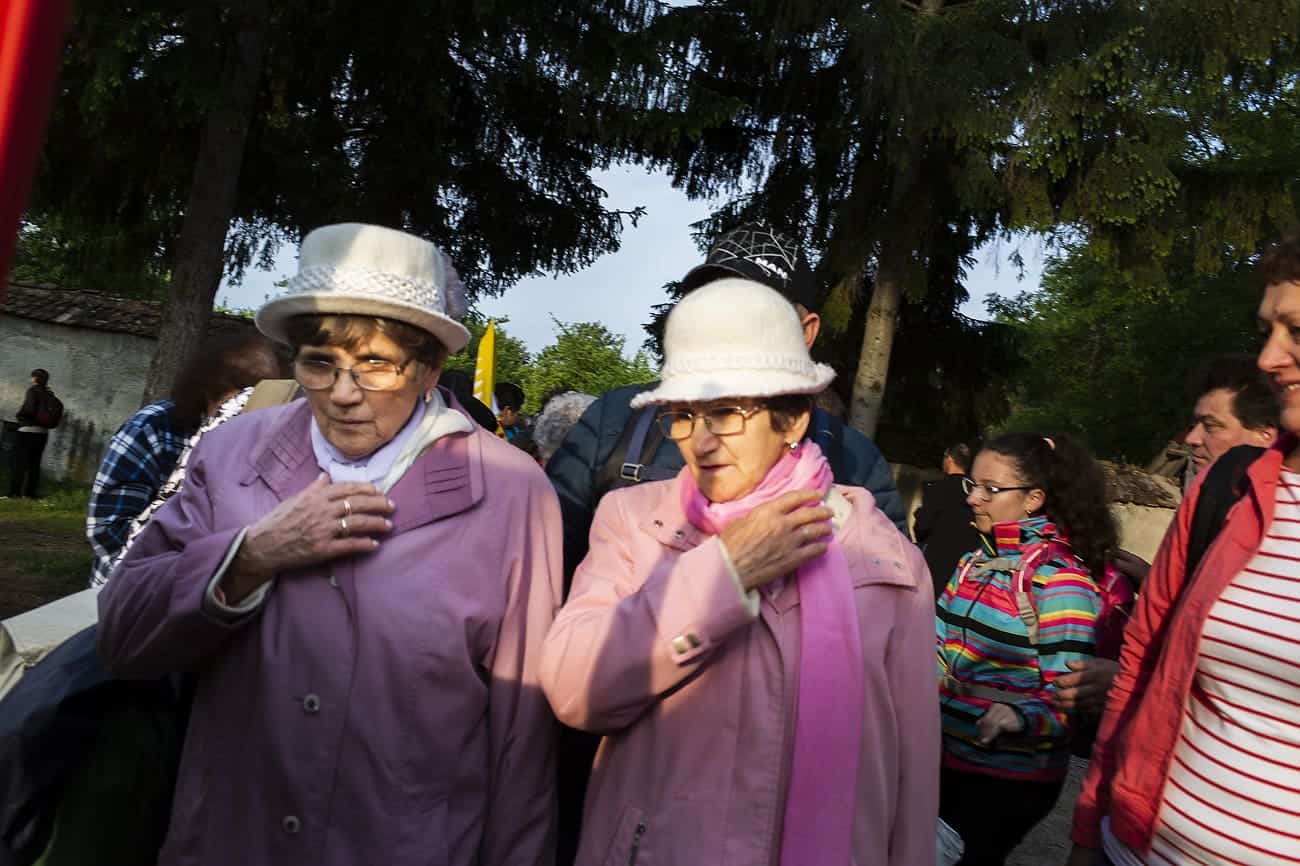
SUMULEU CIUC, ROMANIA - MAY 19: Hungarians from all over the world attending the early pilgrimage hold at Sumuleu Ciuc in Romania, as seen on May 19, 2018. Sumuleu Ciuc became a pilgrimage site in 1567, when Hungarian king John II Sigismund Zápolya wanted to convert the Székely population of the upper Csík to Protestantism. The Székelys refused to abandon the Catholic faith and resisted. A battle took place on a nearby field, on Saturday before Pentecost 1567, from which the Székelys emerged victorious. The monks saw this as a sign of the care of Virgin Mary, and since then, this event has been commemorated by a pilgrimage when the believers gather on Pentecost every year. Beside its religious importance, the pilgrimage has also become a community event demonstrating spiritual unity of Hungarian people living in and outside the historical region of Transylvania. Photography by Mugur Varzariu/Getty Images/Newsweek.
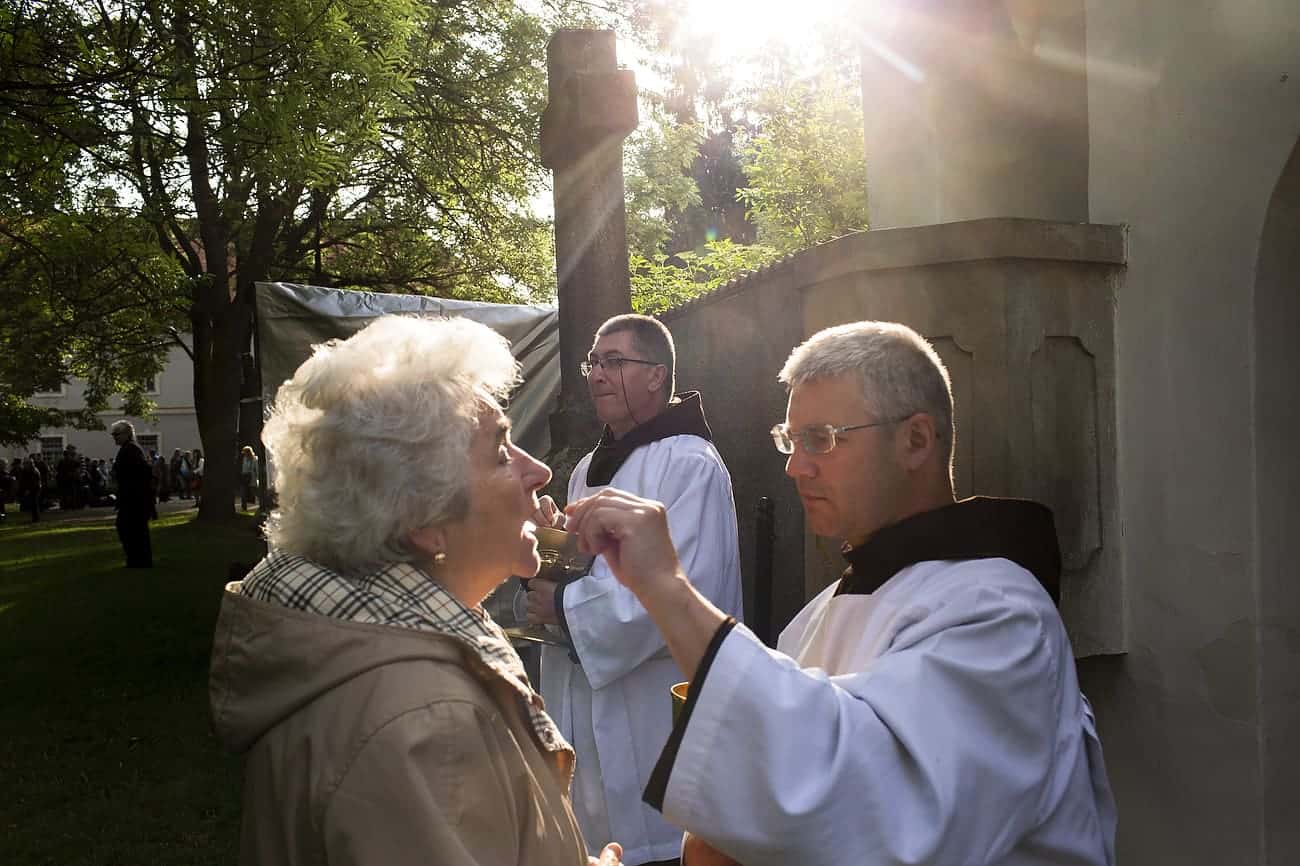
SUMULEU CIUC, ROMANIA - MAY 19: Hungarians from all over the world attending the early pilgrimage hold at Sumuleu Ciuc in Romania, as seen on May 19, 2018. Sumuleu Ciuc became a pilgrimage site in 1567, when Hungarian king John II Sigismund Zápolya wanted to convert the Székely population of the upper Csík to Protestantism. The Székelys refused to abandon the Catholic faith and resisted. A battle took place on a nearby field, on Saturday before Pentecost 1567, from which the Székelys emerged victorious. The monks saw this as a sign of the care of Virgin Mary, and since then, this event has been commemorated by a pilgrimage when the believers gather on Pentecost every year. Beside its religious importance, the pilgrimage has also become a community event demonstrating spiritual unity of Hungarian people living in and outside the historical region of Transylvania. Photography by Mugur Varzariu/Getty Images/Newsweek.
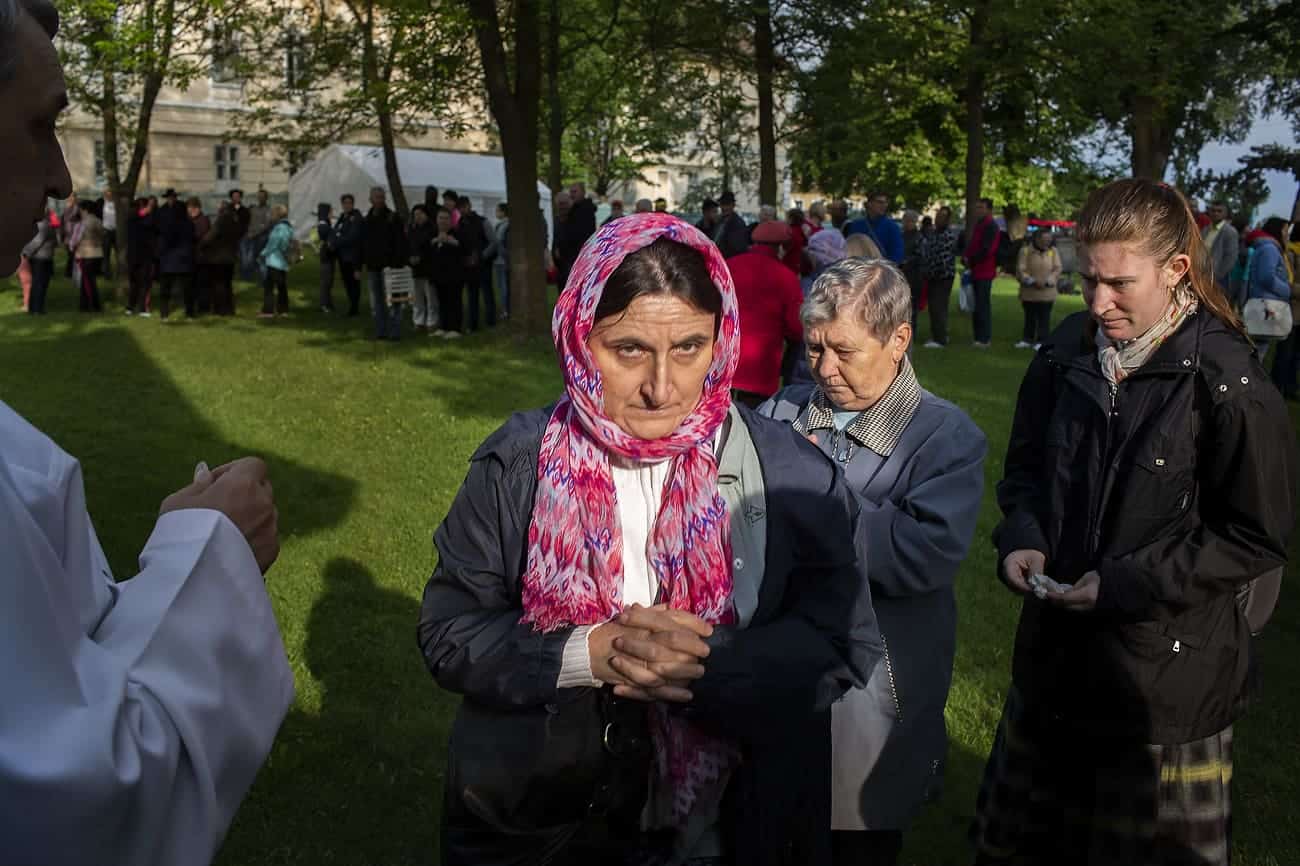
SUMULEU CIUC, ROMANIA - MAY 19: Hungarians from all over the world attending the early pilgrimage hold at Sumuleu Ciuc in Romania, as seen on May 19, 2018. Sumuleu Ciuc became a pilgrimage site in 1567, when Hungarian king John II Sigismund Zápolya wanted to convert the Székely population of the upper Csík to Protestantism. The Székelys refused to abandon the Catholic faith and resisted. A battle took place on a nearby field, on Saturday before Pentecost 1567, from which the Székelys emerged victorious. The monks saw this as a sign of the care of Virgin Mary, and since then, this event has been commemorated by a pilgrimage when the believers gather on Pentecost every year. Beside its religious importance, the pilgrimage has also become a community event demonstrating spiritual unity of Hungarian people living in and outside the historical region of Transylvania. Photography by Mugur Varzariu/Getty Images/Newsweek.
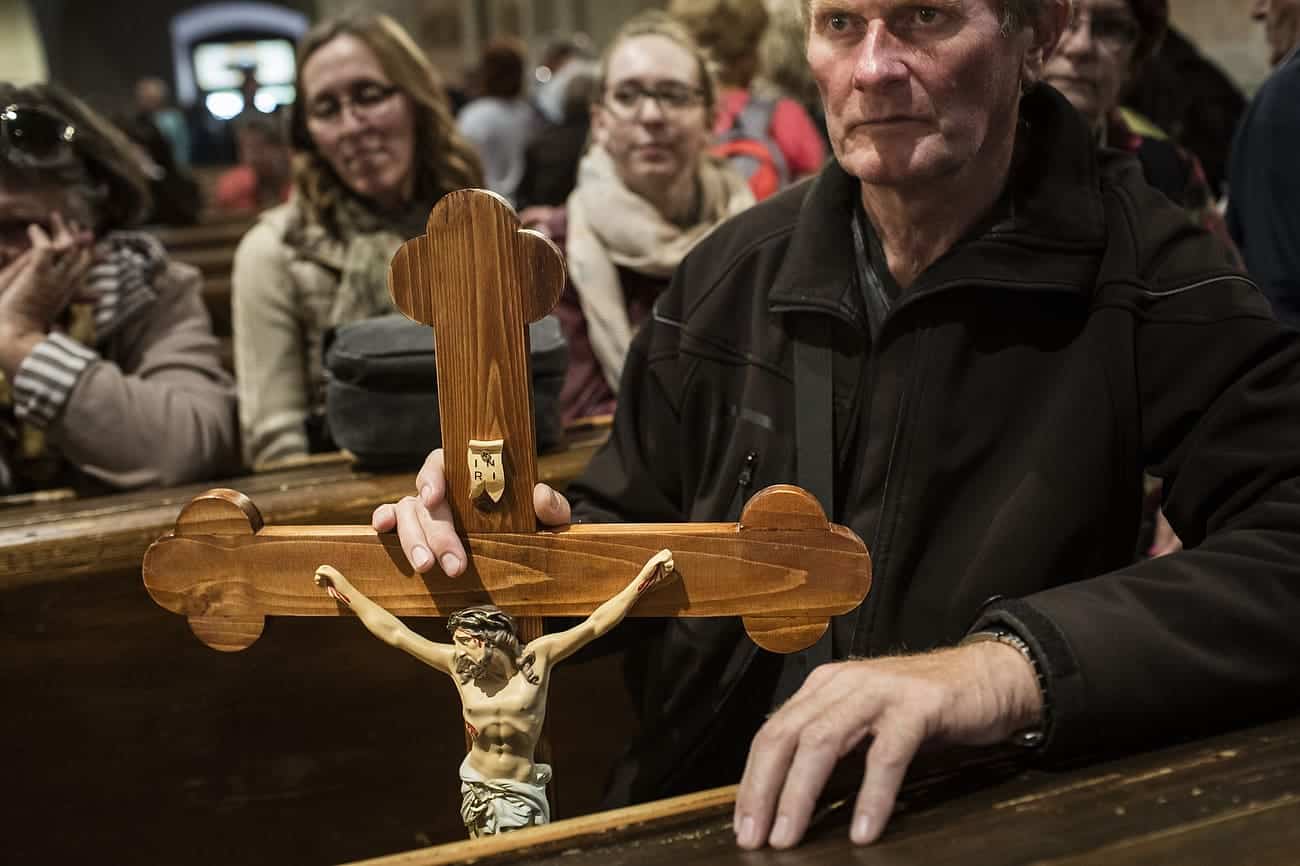
SUMULEU CIUC, ROMANIA - MAY 18: Hungarians from all over the world attending the early pilgrimage hold at Sumuleu Ciuc in Romania, as seen on May 18, 2018. Sumuleu Ciuc became a pilgrimage site in 1567, when Hungarian king John II Sigismund Zápolya wanted to convert the Székely population of the upper Csík to Protestantism. The Székelys refused to abandon the Catholic faith and resisted. A battle took place on a nearby field, on Saturday before Pentecost 1567, from which the Székelys emerged victorious. The monks saw this as a sign of the care of Virgin Mary, and since then, this event has been commemorated by a pilgrimage when the believers gather on Pentecost every year. Beside its religious importance, the pilgrimage has also become a community event demonstrating spiritual unity of Hungarian people living in and outside the historical region of Transylvania. Photography by Mugur Varzariu/Getty Images/Newsweek.
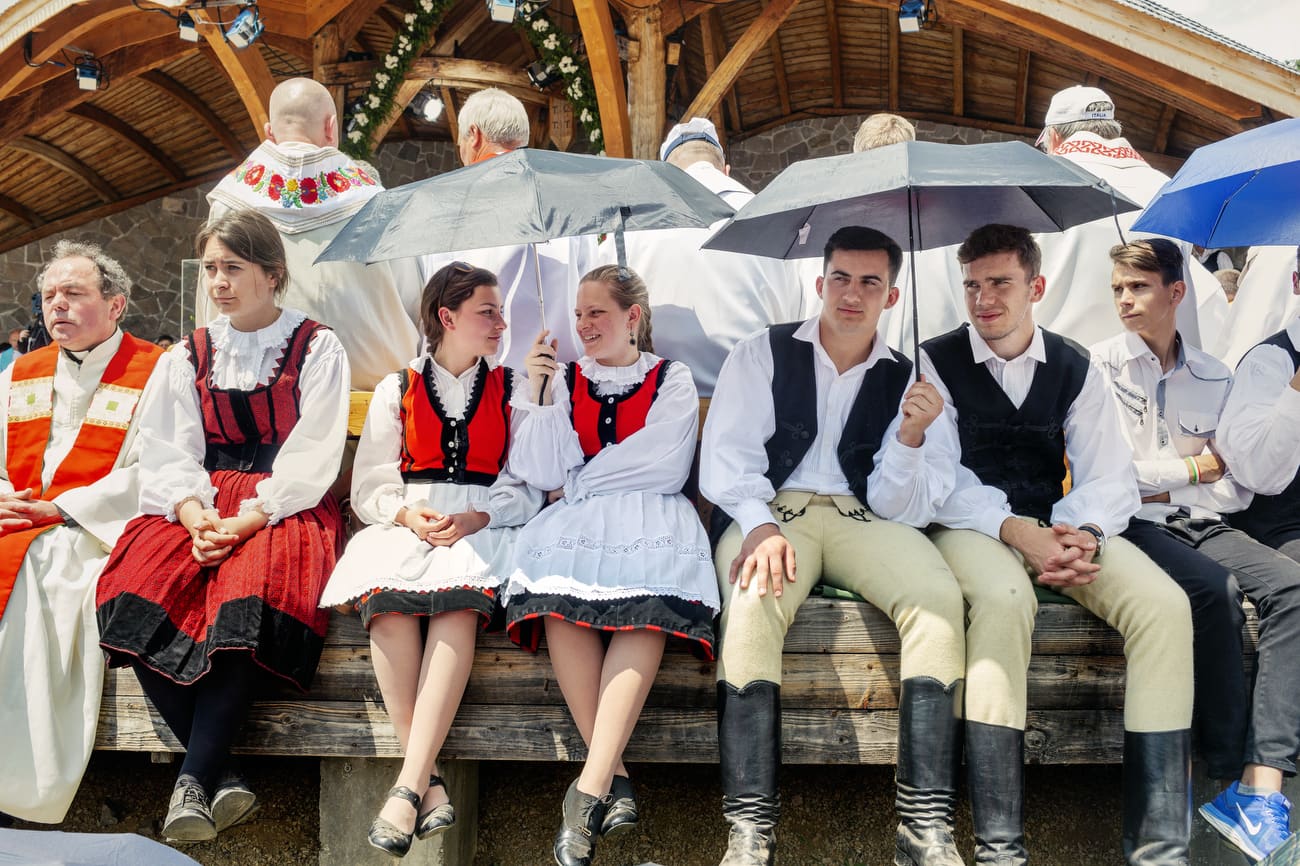
SUMULEU CIUC, ROMANIA - MAY 19: Hungarians from all over the world attending the early pilgrimage hold at Sumuleu Ciuc in Romania, as seen on May 19, 2018. Sumuleu Ciuc became a pilgrimage site in 1567, when Hungarian king John II Sigismund Zápolya wanted to convert the Székely population of the upper Csík to Protestantism. The Székelys refused to abandon the Catholic faith and resisted. A battle took place on a nearby field, on Saturday before Pentecost 1567, from which the Székelys emerged victorious. The monks saw this as a sign of the care of Virgin Mary, and since then, this event has been commemorated by a pilgrimage when the believers gather on Pentecost every year. Beside its religious importance, the pilgrimage has also become a community event demonstrating spiritual unity of Hungarian people living in and outside the historical region of Transylvania. © Mugur Varzariu
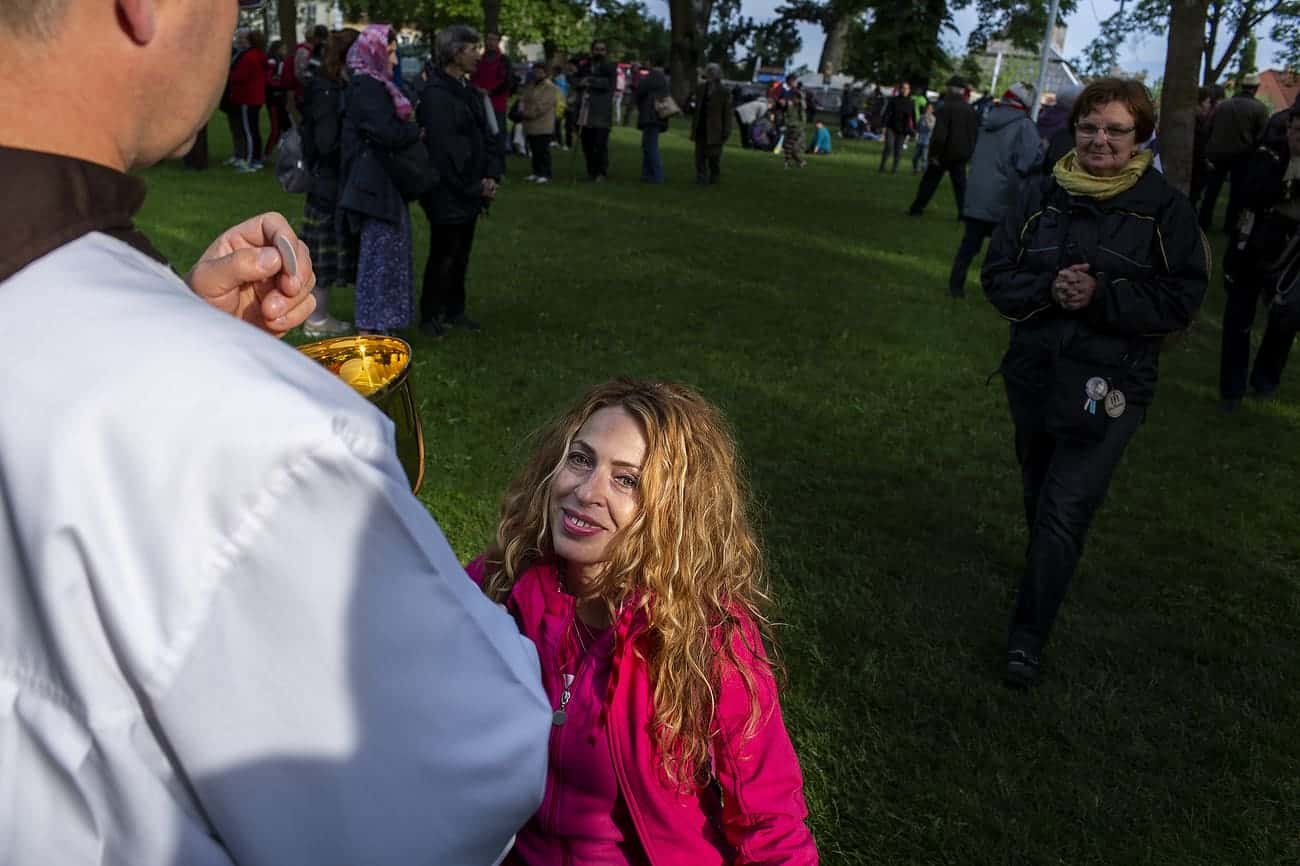
SUMULEU CIUC, ROMANIA - MAY 19: Hungarians from all over the world attending the early pilgrimage hold at Sumuleu Ciuc in Romania, as seen on May 19, 2018. Sumuleu Ciuc became a pilgrimage site in 1567, when Hungarian king John II Sigismund Zápolya wanted to convert the Székely population of the upper Csík to Protestantism. The Székelys refused to abandon the Catholic faith and resisted. A battle took place on a nearby field, on Saturday before Pentecost 1567, from which the Székelys emerged victorious. The monks saw this as a sign of the care of Virgin Mary, and since then, this event has been commemorated by a pilgrimage when the believers gather on Pentecost every year. Beside its religious importance, the pilgrimage has also become a community event demonstrating spiritual unity of Hungarian people living in and outside the historical region of Transylvania. Photography by Mugur Varzariu/Getty Images/Newsweek.

SUMULEU CIUC, ROMANIA - MAY 19: Hungarians from all over the world attending the early pilgrimage hold at Sumuleu Ciuc in Romania, as seen on May 19, 2018. Sumuleu Ciuc became a pilgrimage site in 1567, when Hungarian king John II Sigismund Zápolya wanted to convert the Székely population of the upper Csík to Protestantism. The Székelys refused to abandon the Catholic faith and resisted. A battle took place on a nearby field, on Saturday before Pentecost 1567, from which the Székelys emerged victorious. The monks saw this as a sign of the care of Virgin Mary, and since then, this event has been commemorated by a pilgrimage when the believers gather on Pentecost every year. Beside its religious importance, the pilgrimage has also become a community event demonstrating spiritual unity of Hungarian people living in and outside the historical region of Transylvania. Photography by Mugur Varzariu/Getty Images/Newsweek.
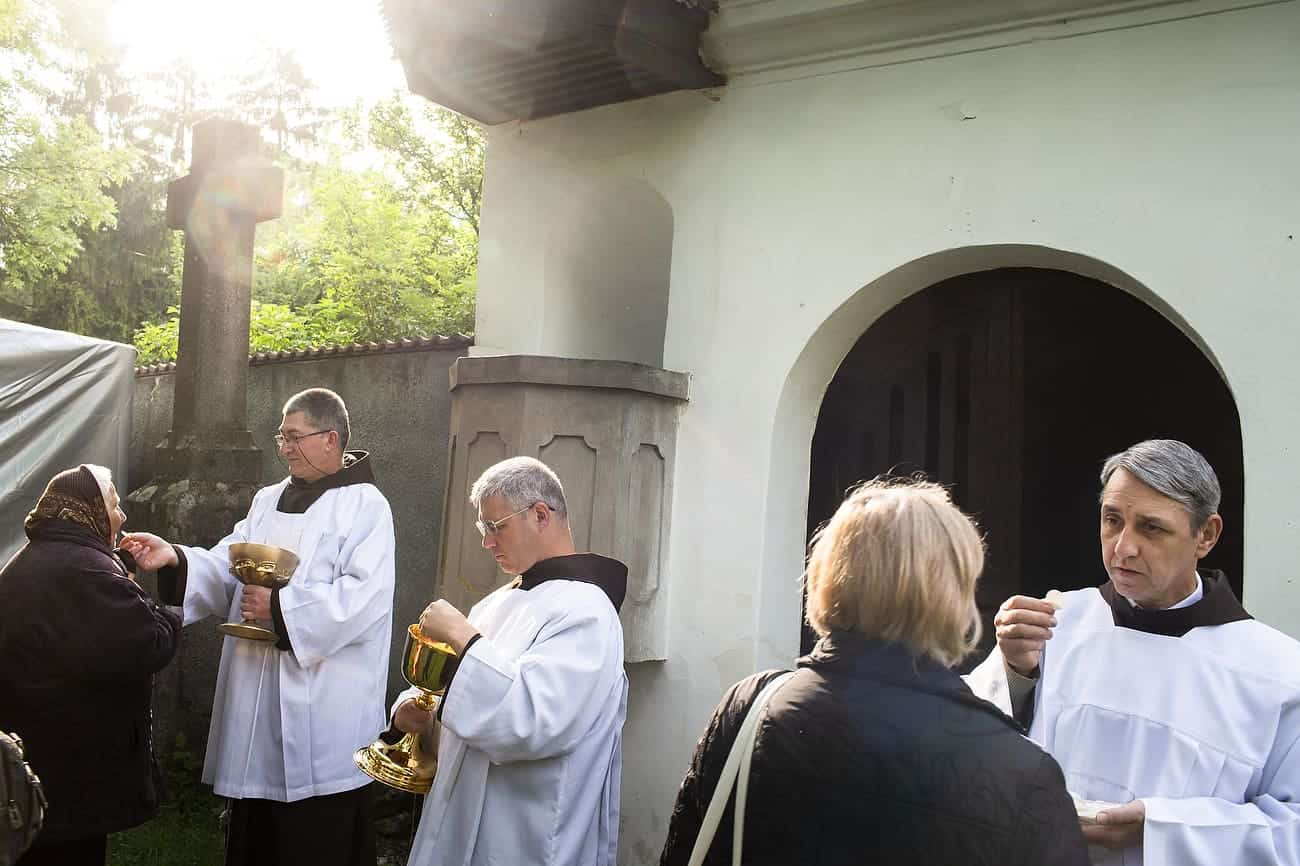
SUMULEU CIUC, ROMANIA - MAY 19: Hungarians from all over the world attending the early pilgrimage hold at Sumuleu Ciuc in Romania, as seen on May 19, 2018. Sumuleu Ciuc became a pilgrimage site in 1567, when Hungarian king John II Sigismund Zápolya wanted to convert the Székely population of the upper Csík to Protestantism. The Székelys refused to abandon the Catholic faith and resisted. A battle took place on a nearby field, on Saturday before Pentecost 1567, from which the Székelys emerged victorious. The monks saw this as a sign of the care of Virgin Mary, and since then, this event has been commemorated by a pilgrimage when the believers gather on Pentecost every year. Beside its religious importance, the pilgrimage has also become a community event demonstrating spiritual unity of Hungarian people living in and outside the historical region of Transylvania. Photography by Mugur Varzariu/Getty Images/Newsweek.
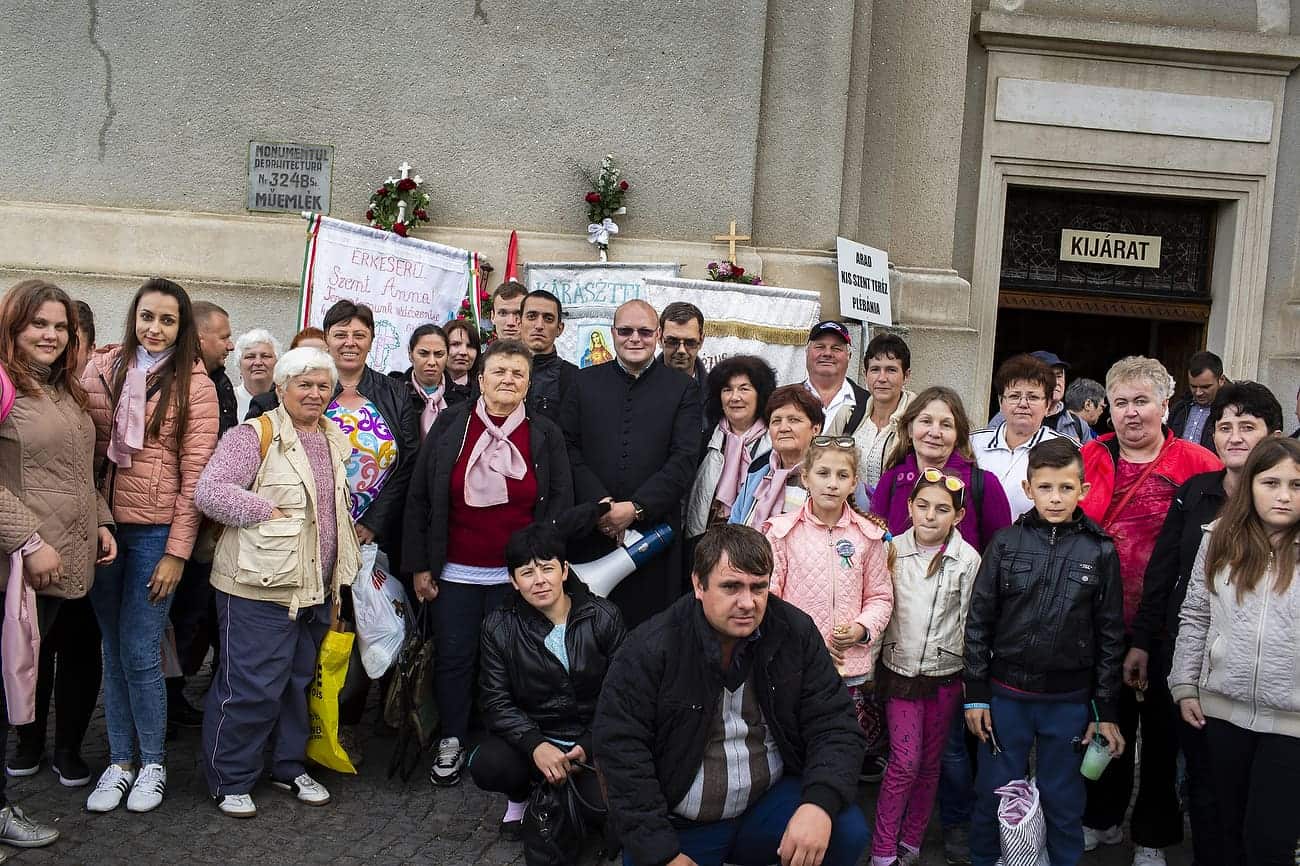
SUMULEU CIUC, ROMANIA - MAY 19: Hungarians from all over the world attending the early pilgrimage hold at Sumuleu Ciuc in Romania, as seen on May 19, 2018. Sumuleu Ciuc became a pilgrimage site in 1567, when Hungarian king John II Sigismund Zápolya wanted to convert the Székely population of the upper Csík to Protestantism. The Székelys refused to abandon the Catholic faith and resisted. A battle took place on a nearby field, on Saturday before Pentecost 1567, from which the Székelys emerged victorious. The monks saw this as a sign of the care of Virgin Mary, and since then, this event has been commemorated by a pilgrimage when the believers gather on Pentecost every year. Beside its religious importance, the pilgrimage has also become a community event demonstrating spiritual unity of Hungarian people living in and outside the historical region of Transylvania. Photography by Mugur Varzariu/Getty Images/Newsweek.
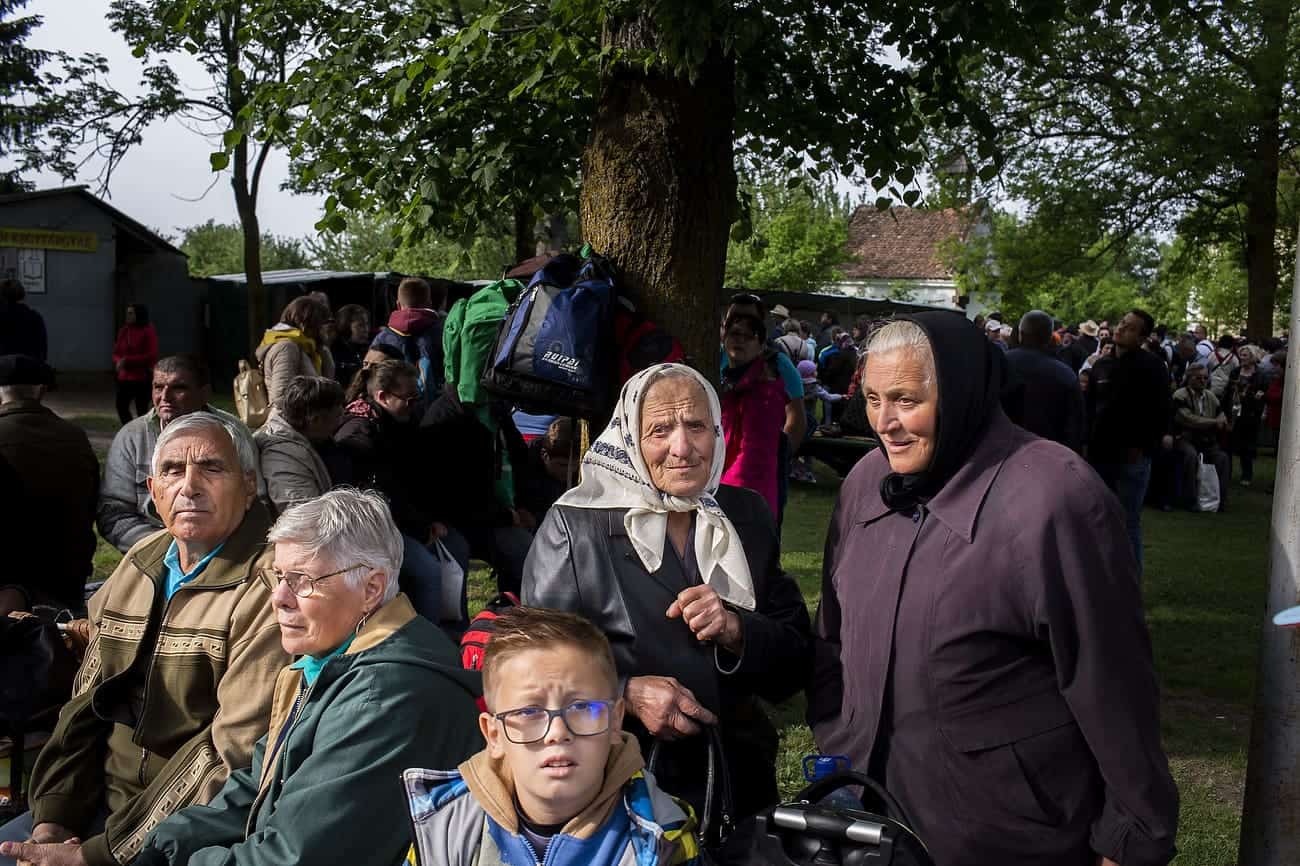
SUMULEU CIUC, ROMANIA - MAY 19: Hungarians from all over the world attending the early pilgrimage hold at Sumuleu Ciuc in Romania, as seen on May 19, 2018. Sumuleu Ciuc became a pilgrimage site in 1567, when Hungarian king John II Sigismund Zápolya wanted to convert the Székely population of the upper Csík to Protestantism. The Székelys refused to abandon the Catholic faith and resisted. A battle took place on a nearby field, on Saturday before Pentecost 1567, from which the Székelys emerged victorious. The monks saw this as a sign of the care of Virgin Mary, and since then, this event has been commemorated by a pilgrimage when the believers gather on Pentecost every year. Beside its religious importance, the pilgrimage has also become a community event demonstrating spiritual unity of Hungarian people living in and outside the historical region of Transylvania. Photography by Mugur Varzariu/Getty Images/Newsweek.
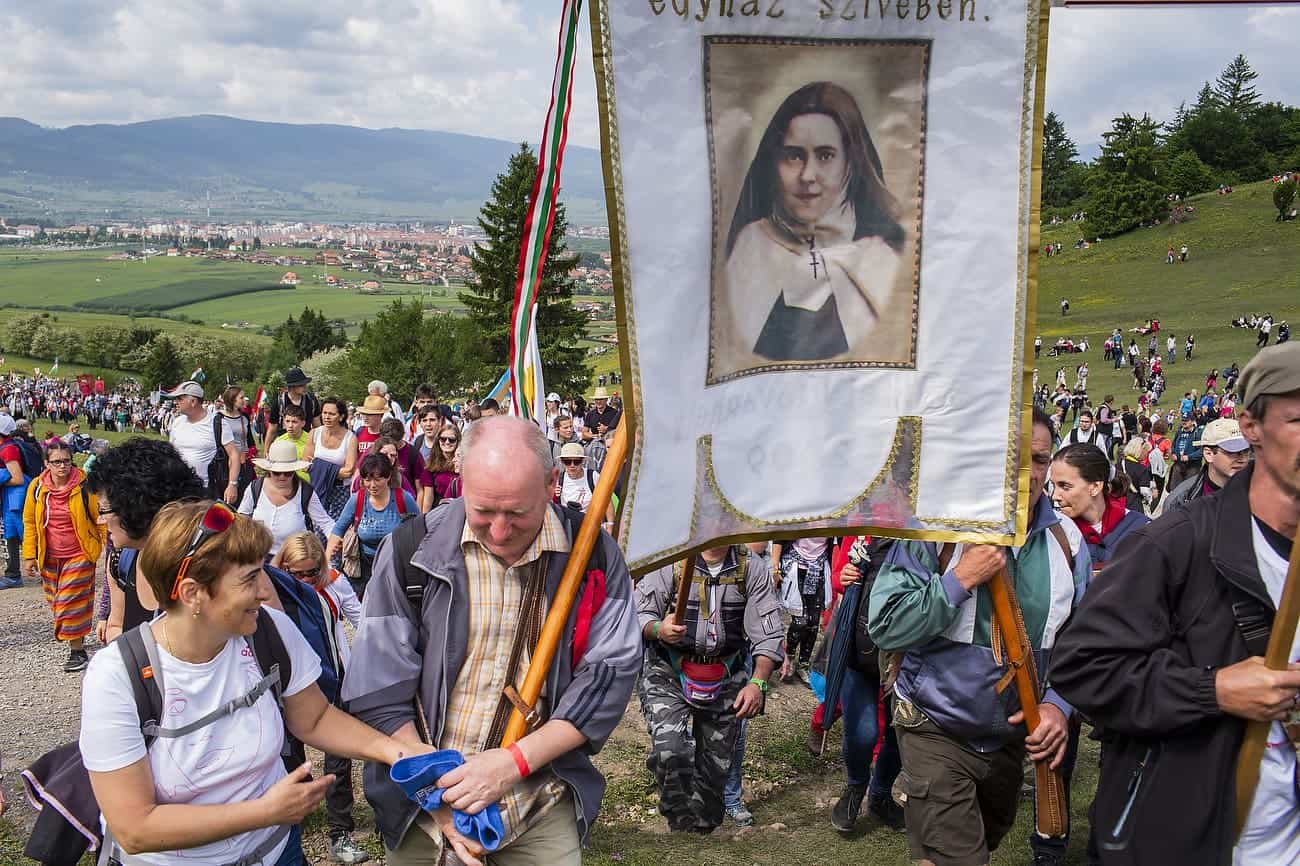
SUMULEU CIUC, ROMANIA - MAY 19: Hungarians from all over the world attending the early pilgrimage hold at Sumuleu Ciuc in Romania, as seen on May 19, 2018. Sumuleu Ciuc became a pilgrimage site in 1567, when Hungarian king John II Sigismund Zápolya wanted to convert the Székely population of the upper Csík to Protestantism. The Székelys refused to abandon the Catholic faith and resisted. A battle took place on a nearby field, on Saturday before Pentecost 1567, from which the Székelys emerged victorious. The monks saw this as a sign of the care of Virgin Mary, and since then, this event has been commemorated by a pilgrimage when the believers gather on Pentecost every year. Beside its religious importance, the pilgrimage has also become a community event demonstrating spiritual unity of Hungarian people living in and outside the historical region of Transylvania. Photography by Mugur Varzariu/Getty Images/Newsweek.
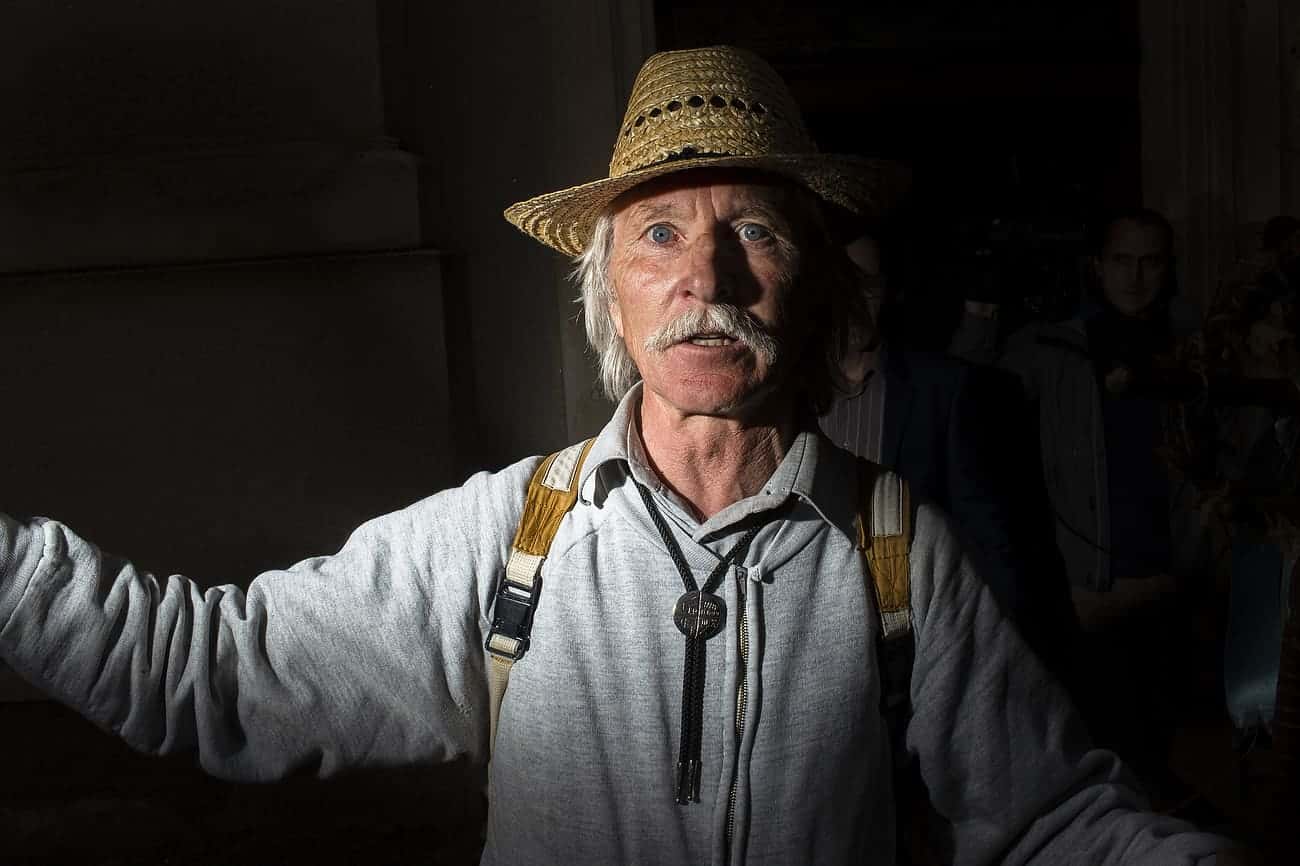
SUMULEU CIUC, ROMANIA - MAY 18: Hungarians from all over the world attending the early pilgrimage hold at Sumuleu Ciuc in Romania, as seen on May 18, 2018. Sumuleu Ciuc became a pilgrimage site in 1567, when Hungarian king John II Sigismund Zápolya wanted to convert the Székely population of the upper Csík to Protestantism. The Székelys refused to abandon the Catholic faith and resisted. A battle took place on a nearby field, on Saturday before Pentecost 1567, from which the Székelys emerged victorious. The monks saw this as a sign of the care of Virgin Mary, and since then, this event has been commemorated by a pilgrimage when the believers gather on Pentecost every year. Beside its religious importance, the pilgrimage has also become a community event demonstrating spiritual unity of Hungarian people living in and outside the historical region of Transylvania. Photography by Mugur Varzariu/Getty Images/Newsweek.
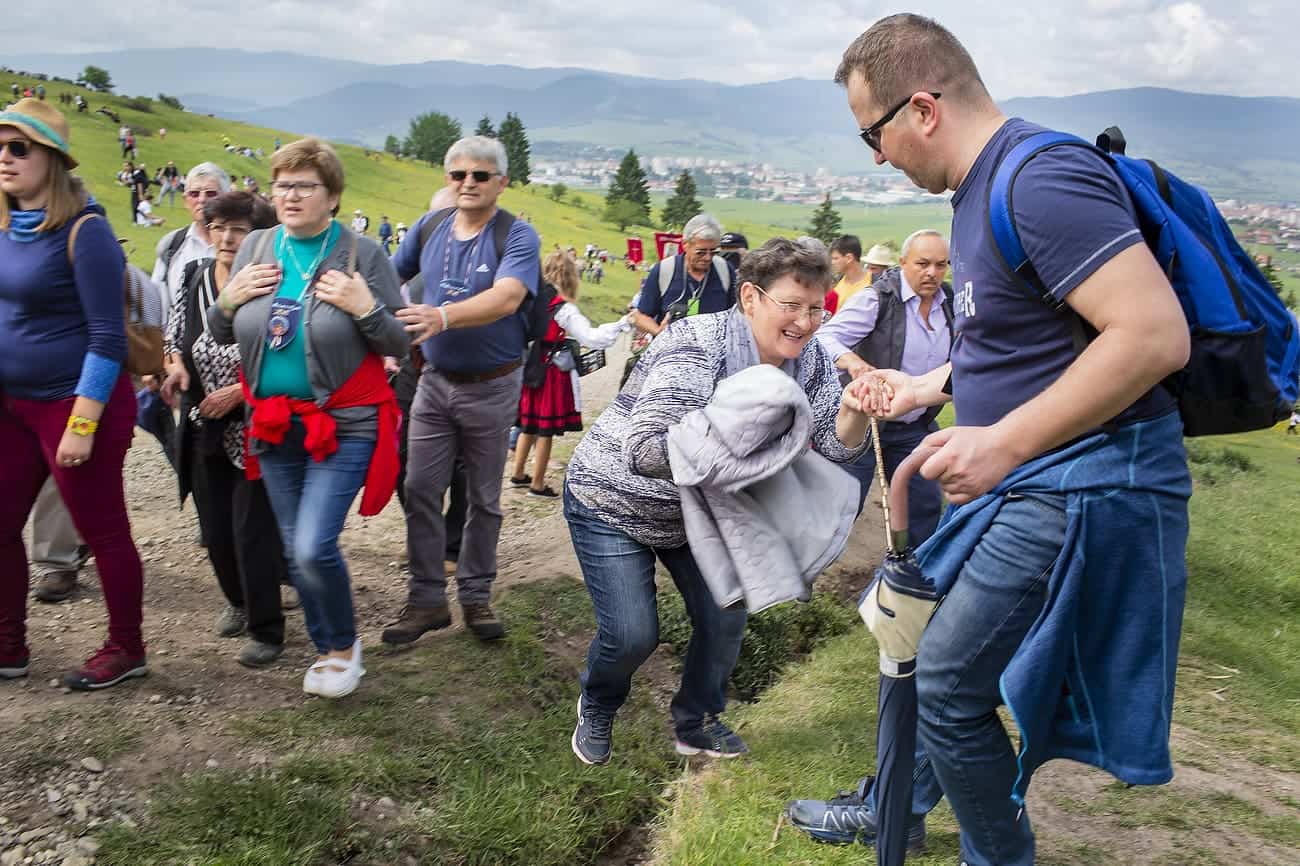
SUMULEU CIUC, ROMANIA - MAY 19: Hungarians from all over the world attending the early pilgrimage hold at Sumuleu Ciuc in Romania, as seen on May 19, 2018. Sumuleu Ciuc became a pilgrimage site in 1567, when Hungarian king John II Sigismund Zápolya wanted to convert the Székely population of the upper Csík to Protestantism. The Székelys refused to abandon the Catholic faith and resisted. A battle took place on a nearby field, on Saturday before Pentecost 1567, from which the Székelys emerged victorious. The monks saw this as a sign of the care of Virgin Mary, and since then, this event has been commemorated by a pilgrimage when the believers gather on Pentecost every year. Beside its religious importance, the pilgrimage has also become a community event demonstrating spiritual unity of Hungarian people living in and outside the historical region of Transylvania. Photography by Mugur Varzariu/Getty Images/Newsweek.
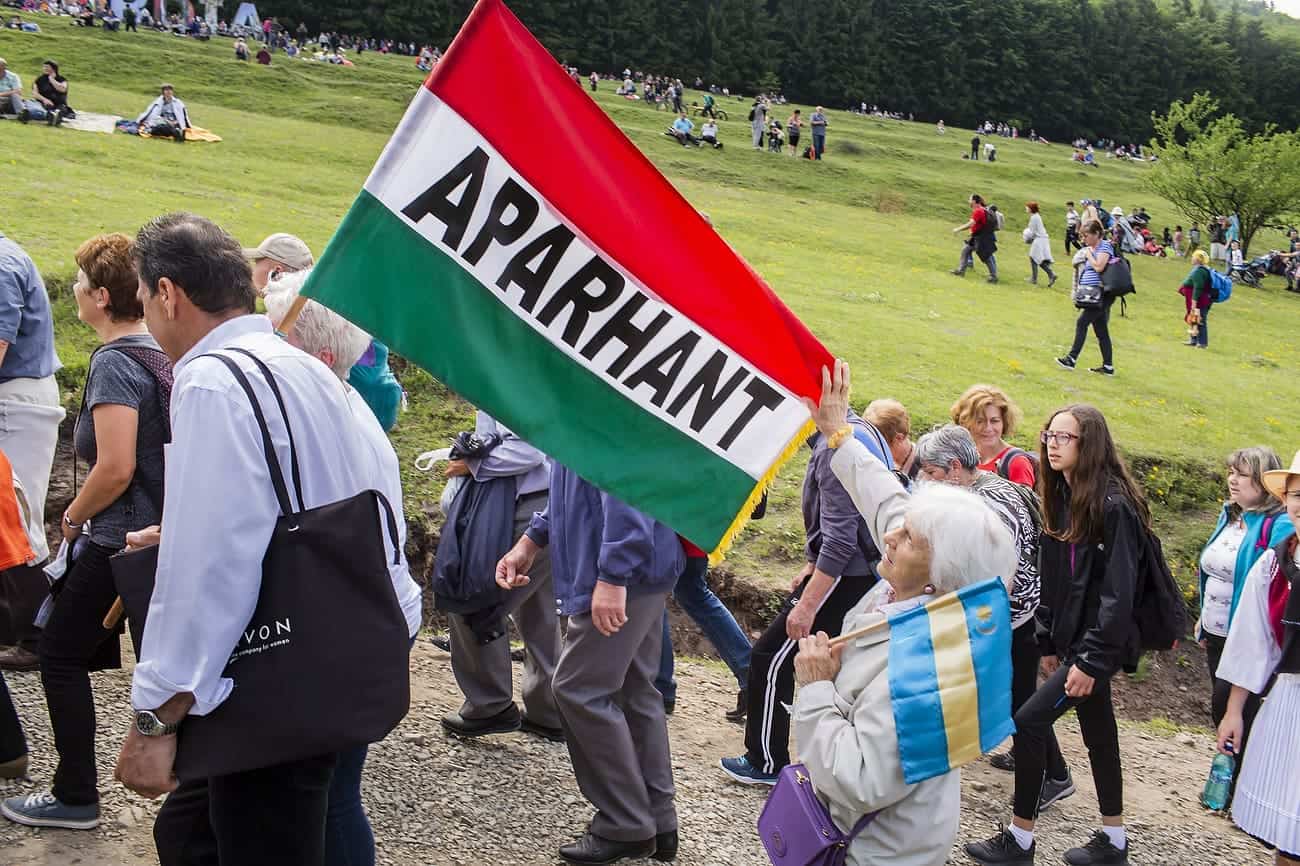
SUMULEU CIUC, ROMANIA - MAY 19: Hungarians from all over the world attending the early pilgrimage hold at Sumuleu Ciuc in Romania, as seen on May 19, 2018. Sumuleu Ciuc became a pilgrimage site in 1567, when Hungarian king John II Sigismund Zápolya wanted to convert the Székely population of the upper Csík to Protestantism. The Székelys refused to abandon the Catholic faith and resisted. A battle took place on a nearby field, on Saturday before Pentecost 1567, from which the Székelys emerged victorious. The monks saw this as a sign of the care of Virgin Mary, and since then, this event has been commemorated by a pilgrimage when the believers gather on Pentecost every year. Beside its religious importance, the pilgrimage has also become a community event demonstrating spiritual unity of Hungarian people living in and outside the historical region of Transylvania. Photography by Mugur Varzariu/Getty Images/Newsweek.
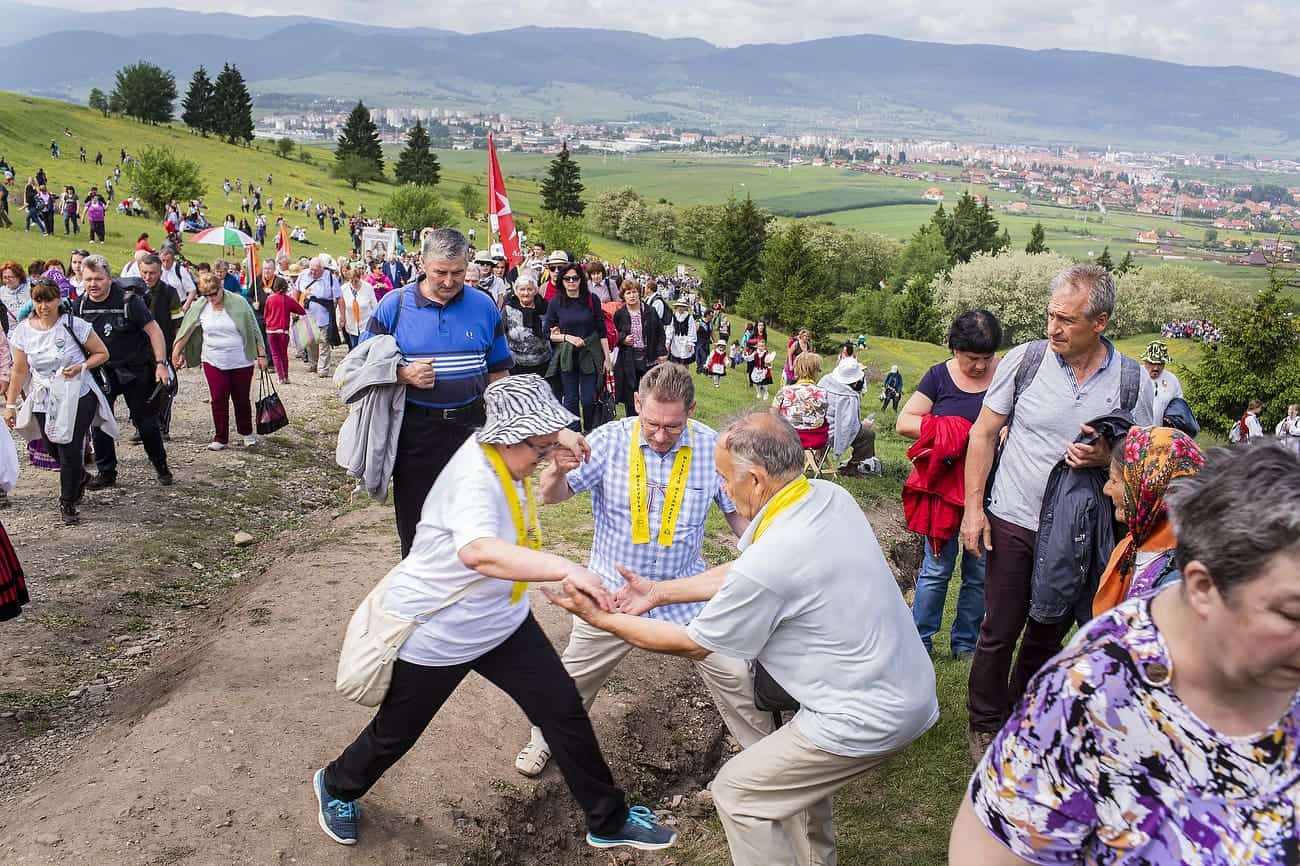
SUMULEU CIUC, ROMANIA - MAY 19: Hungarians from all over the world attending the early pilgrimage hold at Sumuleu Ciuc in Romania, as seen on May 19, 2018. Sumuleu Ciuc became a pilgrimage site in 1567, when Hungarian king John II Sigismund Zápolya wanted to convert the Székely population of the upper Csík to Protestantism. The Székelys refused to abandon the Catholic faith and resisted. A battle took place on a nearby field, on Saturday before Pentecost 1567, from which the Székelys emerged victorious. The monks saw this as a sign of the care of Virgin Mary, and since then, this event has been commemorated by a pilgrimage when the believers gather on Pentecost every year. Beside its religious importance, the pilgrimage has also become a community event demonstrating spiritual unity of Hungarian people living in and outside the historical region of Transylvania. Photography by Mugur Varzariu/Getty Images/Newsweek.
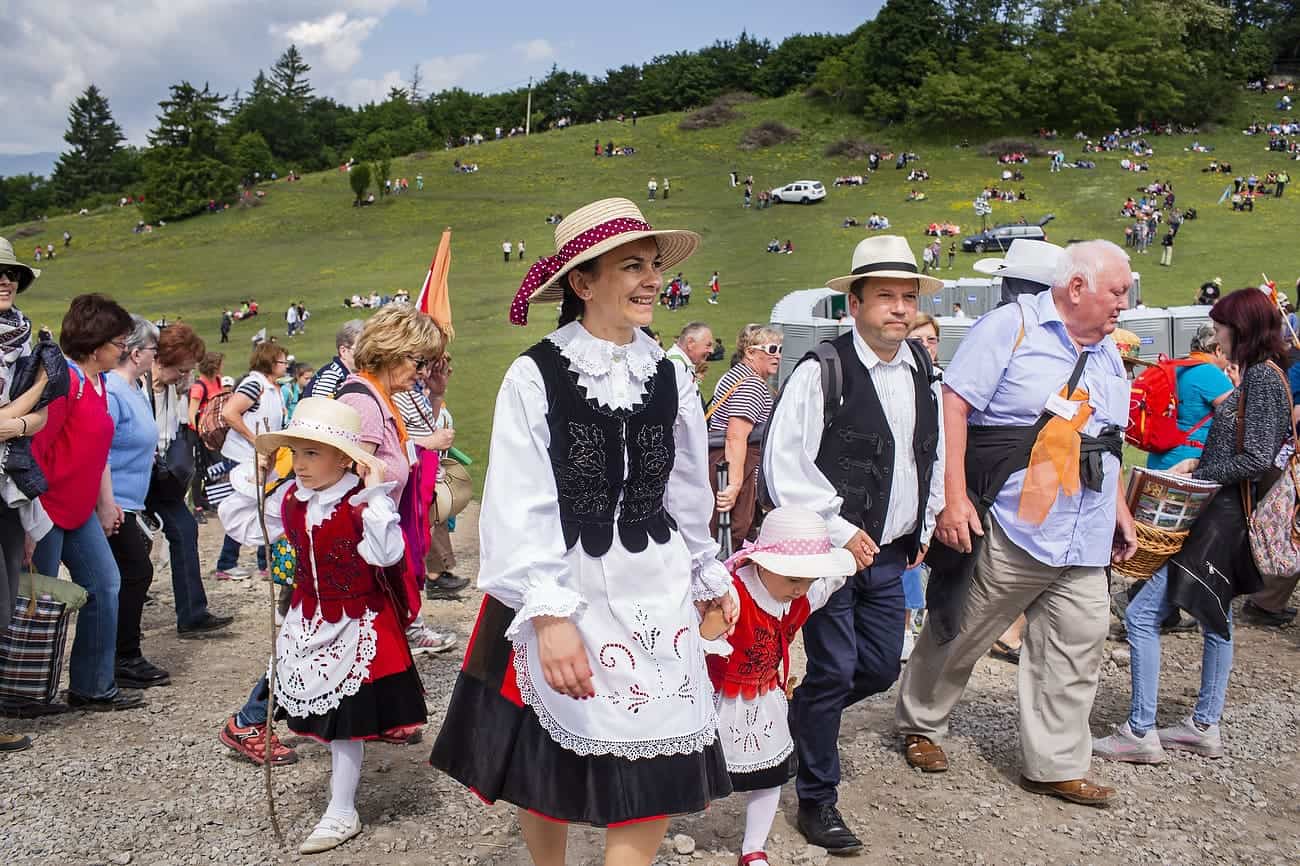
SUMULEU CIUC, ROMANIA - MAY 19: Hungarians from all over the world attending the early pilgrimage hold at Sumuleu Ciuc in Romania, as seen on May 19, 2018. Sumuleu Ciuc became a pilgrimage site in 1567, when Hungarian king John II Sigismund Zápolya wanted to convert the Székely population of the upper Csík to Protestantism. The Székelys refused to abandon the Catholic faith and resisted. A battle took place on a nearby field, on Saturday before Pentecost 1567, from which the Székelys emerged victorious. The monks saw this as a sign of the care of Virgin Mary, and since then, this event has been commemorated by a pilgrimage when the believers gather on Pentecost every year. Beside its religious importance, the pilgrimage has also become a community event demonstrating spiritual unity of Hungarian people living in and outside the historical region of Transylvania. Photography by Mugur Varzariu/Getty Images/Newsweek.
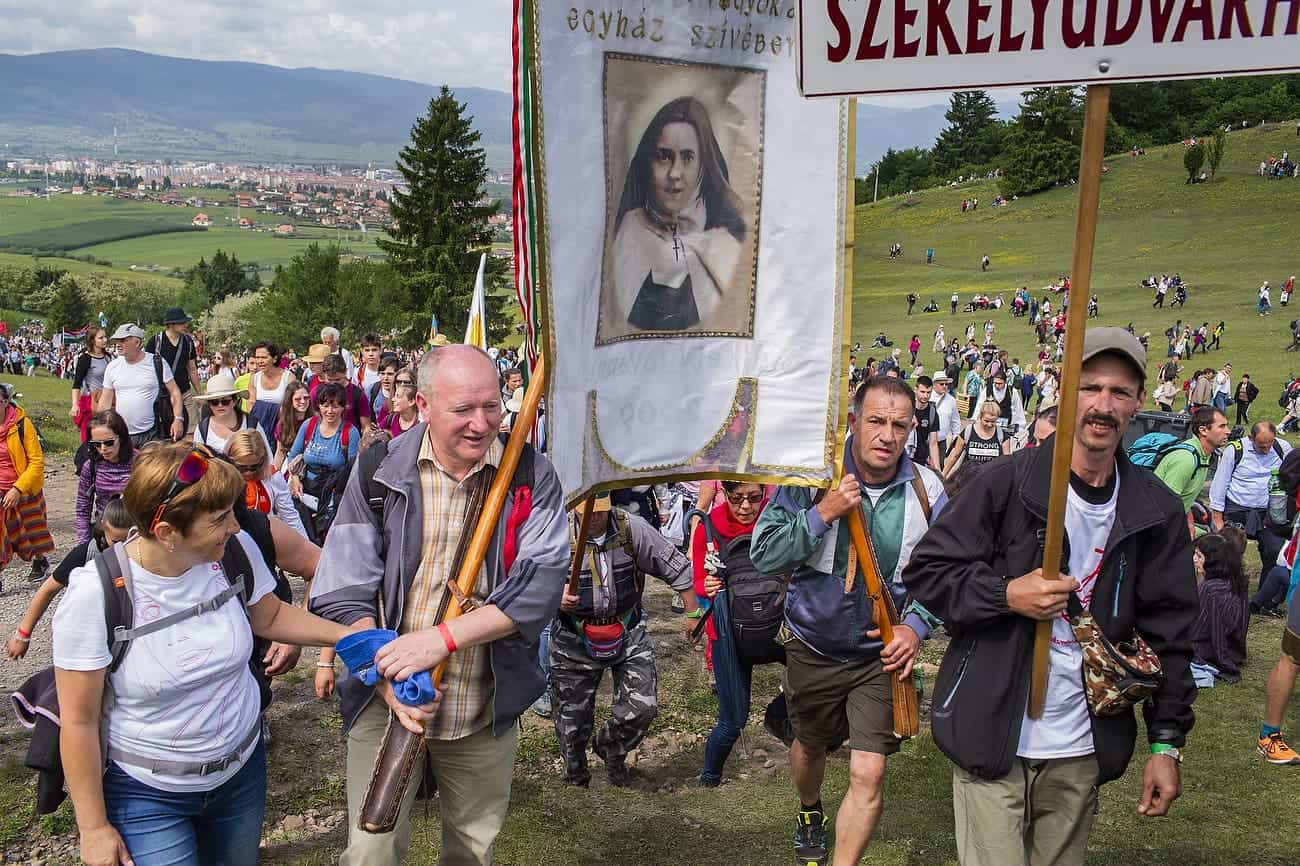
SUMULEU CIUC, ROMANIA - MAY 19: Hungarians from all over the world attending the early pilgrimage hold at Sumuleu Ciuc in Romania, as seen on May 19, 2018. Sumuleu Ciuc became a pilgrimage site in 1567, when Hungarian king John II Sigismund Zápolya wanted to convert the Székely population of the upper Csík to Protestantism. The Székelys refused to abandon the Catholic faith and resisted. A battle took place on a nearby field, on Saturday before Pentecost 1567, from which the Székelys emerged victorious. The monks saw this as a sign of the care of Virgin Mary, and since then, this event has been commemorated by a pilgrimage when the believers gather on Pentecost every year. Beside its religious importance, the pilgrimage has also become a community event demonstrating spiritual unity of Hungarian people living in and outside the historical region of Transylvania. Photography by Mugur Varzariu/Getty Images/Newsweek.
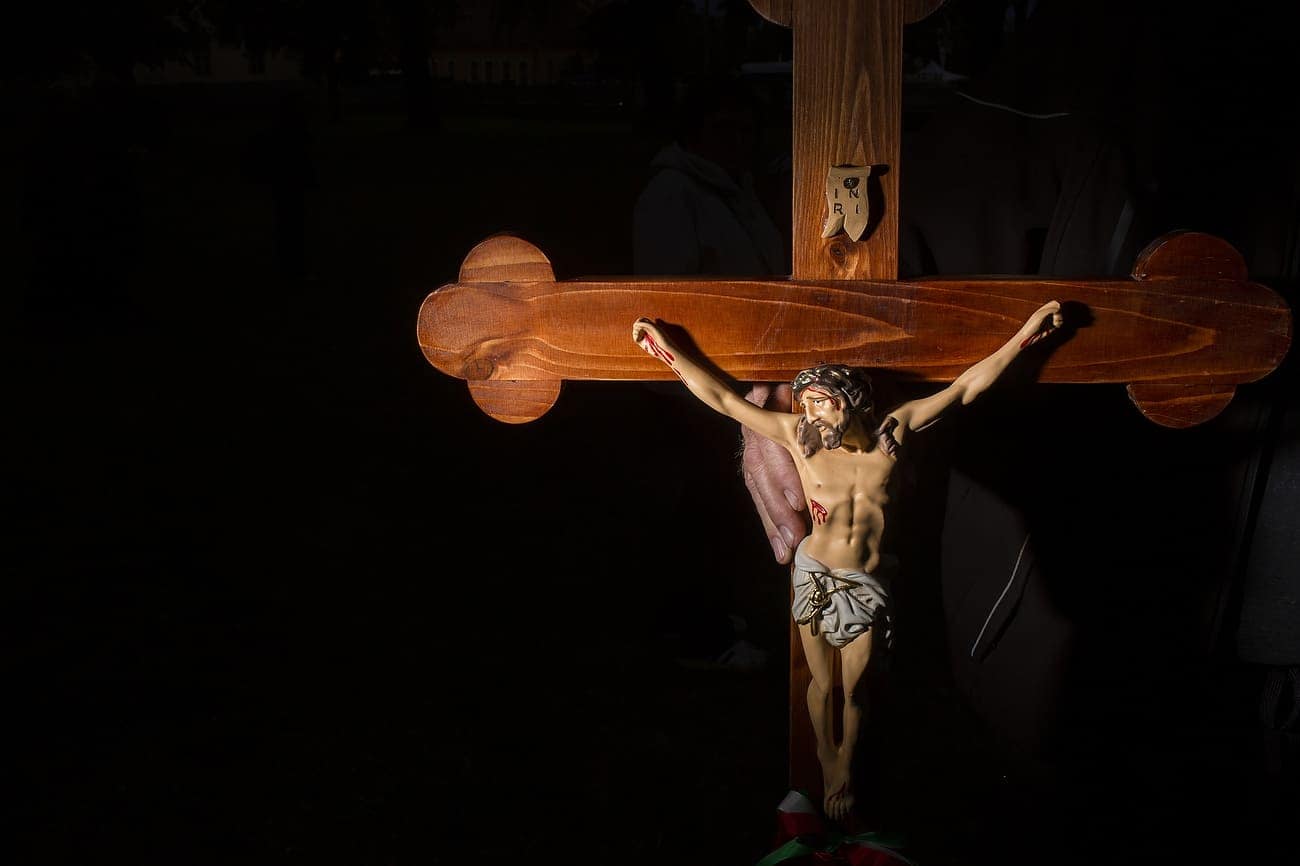
SUMULEU CIUC, ROMANIA - MAY 18: Hungarians from all over the world attending the early pilgrimage hold at Sumuleu Ciuc in Romania, as seen on May 18, 2018. Sumuleu Ciuc became a pilgrimage site in 1567, when Hungarian king John II Sigismund Zápolya wanted to convert the Székely population of the upper Csík to Protestantism. The Székelys refused to abandon the Catholic faith and resisted. A battle took place on a nearby field, on Saturday before Pentecost 1567, from which the Székelys emerged victorious. The monks saw this as a sign of the care of Virgin Mary, and since then, this event has been commemorated by a pilgrimage when the believers gather on Pentecost every year. Beside its religious importance, the pilgrimage has also become a community event demonstrating spiritual unity of Hungarian people living in and outside the historical region of Transylvania. Photography by Mugur Varzariu/Getty Images/Newsweek.
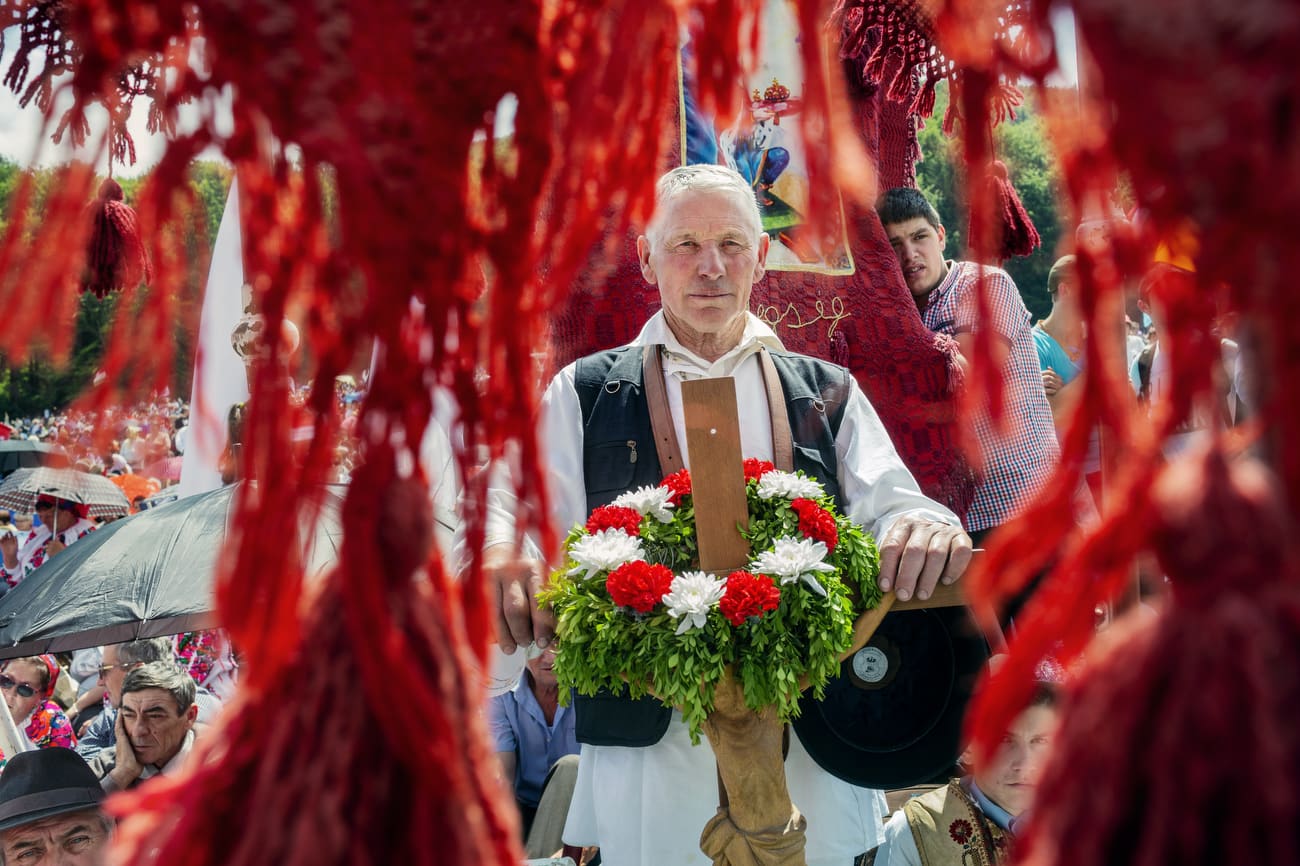
SUMULEU CIUC, ROMANIA - MAY 19: Hungarians from all over the world attending the early pilgrimage hold at Sumuleu Ciuc in Romania, as seen on May 19, 2018. Sumuleu Ciuc became a pilgrimage site in 1567, when Hungarian king John II Sigismund Zápolya wanted to convert the Székely population of the upper Csík to Protestantism. The Székelys refused to abandon the Catholic faith and resisted. A battle took place on a nearby field, on Saturday before Pentecost 1567, from which the Székelys emerged victorious. The monks saw this as a sign of the care of Virgin Mary, and since then, this event has been commemorated by a pilgrimage when the believers gather on Pentecost every year. Beside its religious importance, the pilgrimage has also become a community event demonstrating spiritual unity of Hungarian people living in and outside the historical region of Transylvania. © Mugur Varzariu
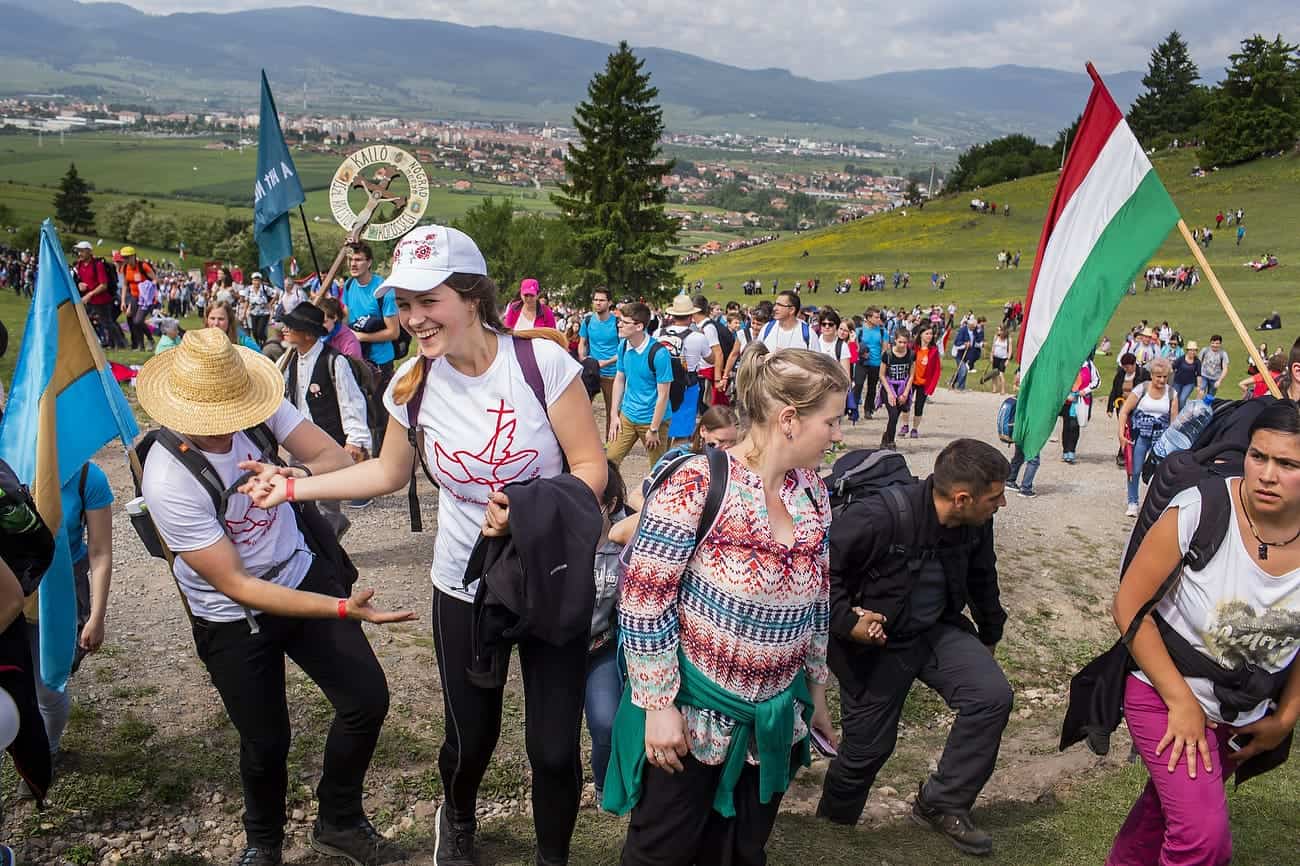
SUMULEU CIUC, ROMANIA - MAY 19: Hungarians from all over the world attending the early pilgrimage hold at Sumuleu Ciuc in Romania, as seen on May 19, 2018. Sumuleu Ciuc became a pilgrimage site in 1567, when Hungarian king John II Sigismund Zápolya wanted to convert the Székely population of the upper Csík to Protestantism. The Székelys refused to abandon the Catholic faith and resisted. A battle took place on a nearby field, on Saturday before Pentecost 1567, from which the Székelys emerged victorious. The monks saw this as a sign of the care of Virgin Mary, and since then, this event has been commemorated by a pilgrimage when the believers gather on Pentecost every year. Beside its religious importance, the pilgrimage has also become a community event demonstrating spiritual unity of Hungarian people living in and outside the historical region of Transylvania. Photography by Mugur Varzariu/Getty Images/Newsweek.
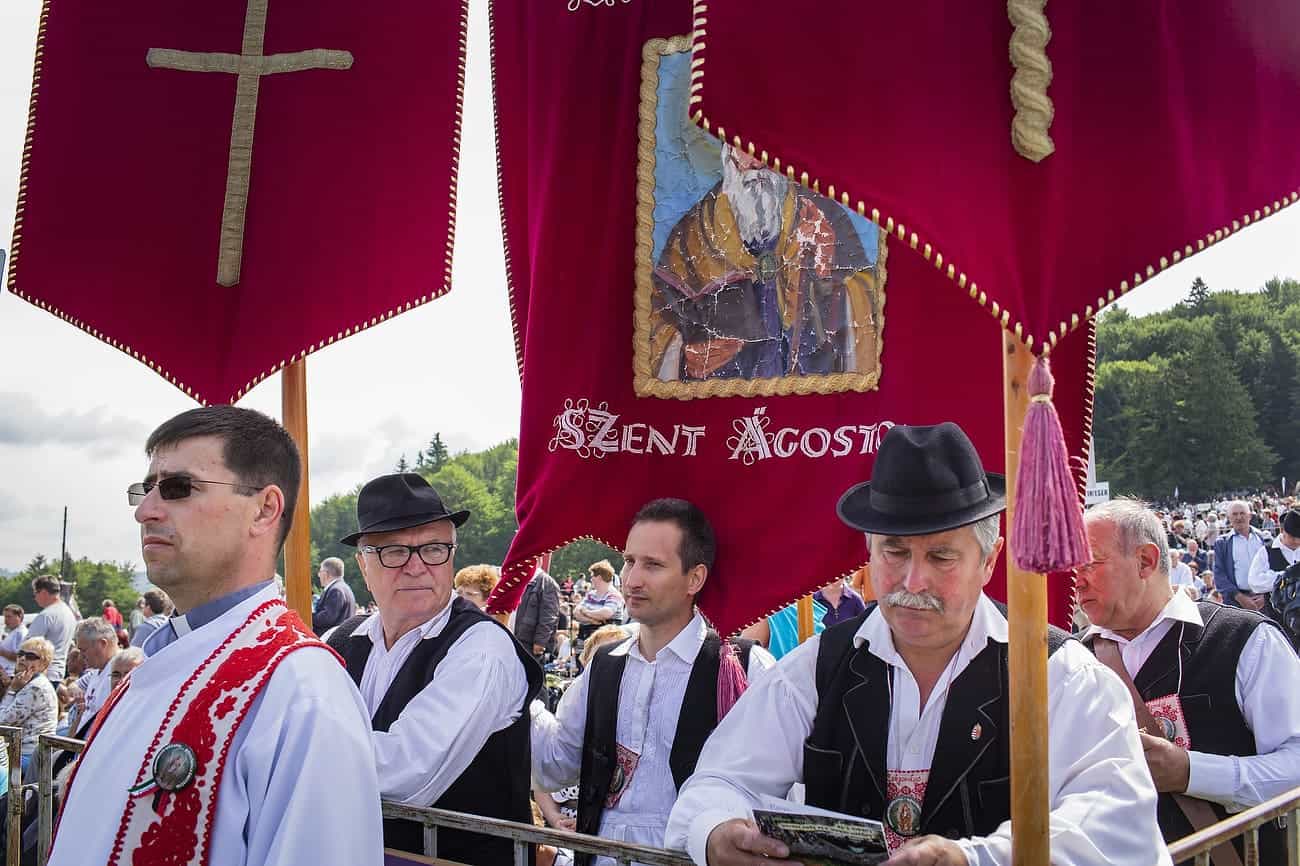
SUMULEU CIUC, ROMANIA - MAY 19: Hungarians from all over the world attending the early pilgrimage hold at Sumuleu Ciuc in Romania, as seen on May 19, 2018. Sumuleu Ciuc became a pilgrimage site in 1567, when Hungarian king John II Sigismund Zápolya wanted to convert the Székely population of the upper Csík to Protestantism. The Székelys refused to abandon the Catholic faith and resisted. A battle took place on a nearby field, on Saturday before Pentecost 1567, from which the Székelys emerged victorious. The monks saw this as a sign of the care of Virgin Mary, and since then, this event has been commemorated by a pilgrimage when the believers gather on Pentecost every year. Beside its religious importance, the pilgrimage has also become a community event demonstrating spiritual unity of Hungarian people living in and outside the historical region of Transylvania. Photography by Mugur Varzariu/Getty Images/Newsweek.
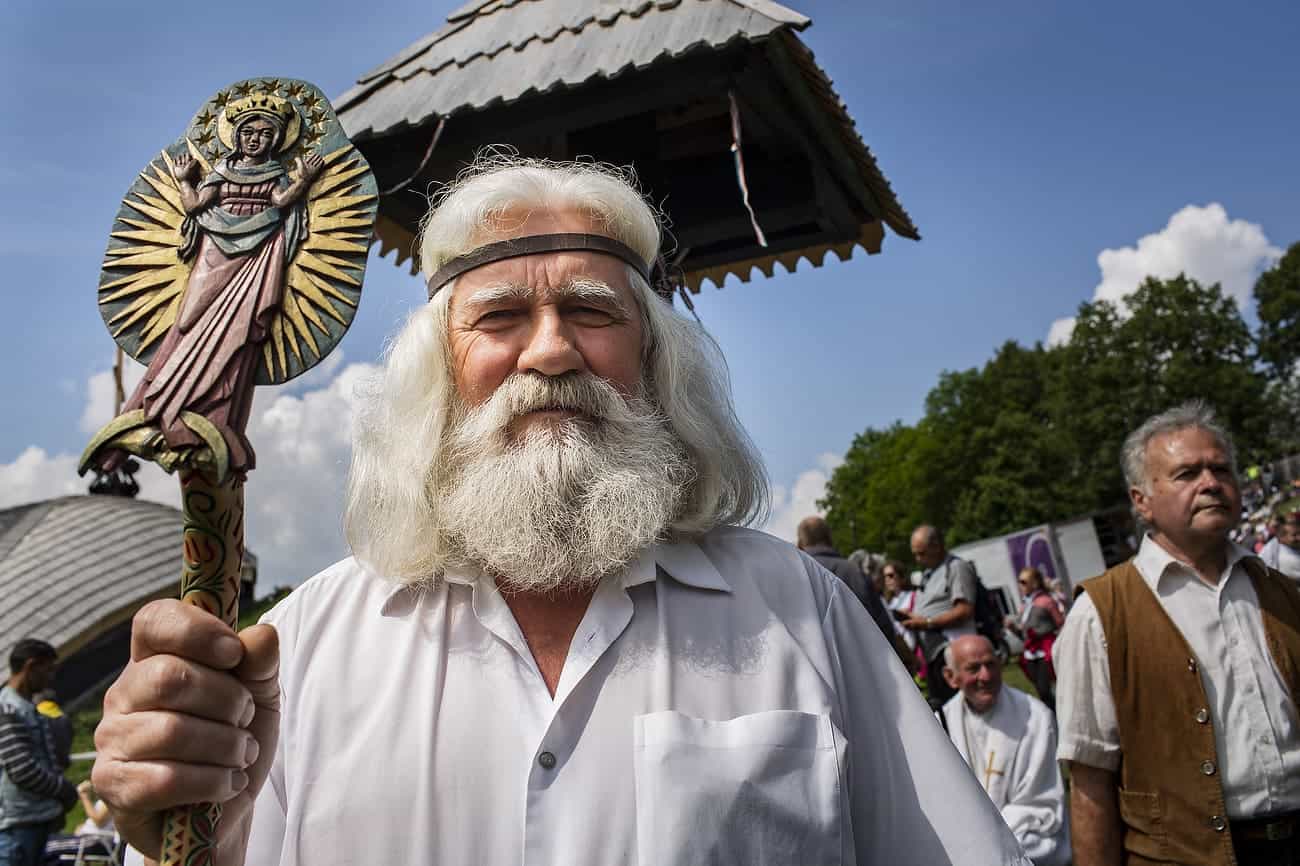
SUMULEU CIUC, ROMANIA - MAY 19: Hungarians from all over the world attending the early pilgrimage hold at Sumuleu Ciuc in Romania, as seen on May 19, 2018. Sumuleu Ciuc became a pilgrimage site in 1567, when Hungarian king John II Sigismund Zápolya wanted to convert the Székely population of the upper Csík to Protestantism. The Székelys refused to abandon the Catholic faith and resisted. A battle took place on a nearby field, on Saturday before Pentecost 1567, from which the Székelys emerged victorious. The monks saw this as a sign of the care of Virgin Mary, and since then, this event has been commemorated by a pilgrimage when the believers gather on Pentecost every year. Beside its religious importance, the pilgrimage has also become a community event demonstrating spiritual unity of Hungarian people living in and outside the historical region of Transylvania. Photography by Mugur Varzariu/Getty Images/Newsweek.
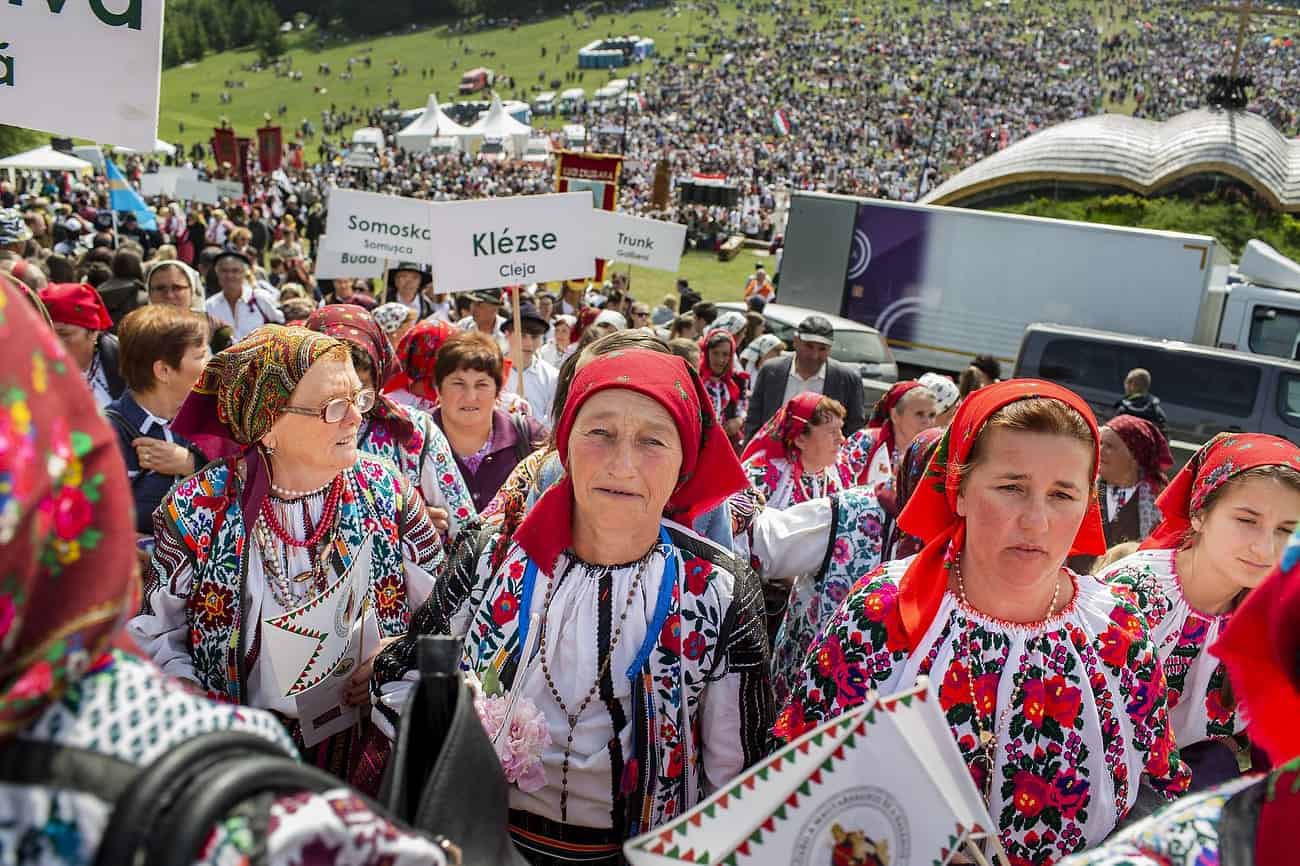
SUMULEU CIUC, ROMANIA - MAY 19: Hungarians from all over the world attending the early pilgrimage hold at Sumuleu Ciuc in Romania, as seen on May 19, 2018. Sumuleu Ciuc became a pilgrimage site in 1567, when Hungarian king John II Sigismund Zápolya wanted to convert the Székely population of the upper Csík to Protestantism. The Székelys refused to abandon the Catholic faith and resisted. A battle took place on a nearby field, on Saturday before Pentecost 1567, from which the Székelys emerged victorious. The monks saw this as a sign of the care of Virgin Mary, and since then, this event has been commemorated by a pilgrimage when the believers gather on Pentecost every year. Beside its religious importance, the pilgrimage has also become a community event demonstrating spiritual unity of Hungarian people living in and outside the historical region of Transylvania. Photography by Mugur Varzariu/Getty Images/Newsweek.
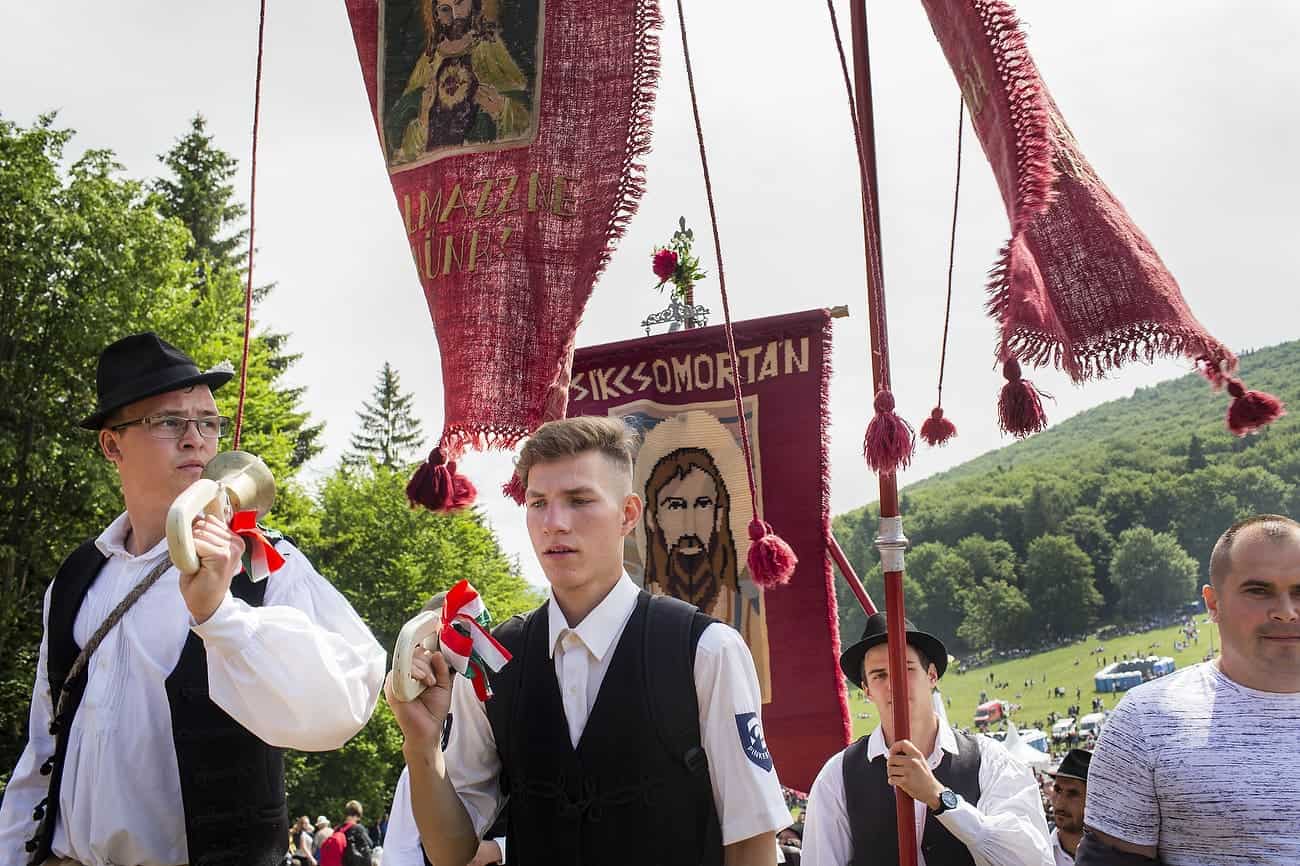
SUMULEU CIUC, ROMANIA - MAY 19: Hungarians from all over the world attending the early pilgrimage hold at Sumuleu Ciuc in Romania, as seen on May 19, 2018. Sumuleu Ciuc became a pilgrimage site in 1567, when Hungarian king John II Sigismund Zápolya wanted to convert the Székely population of the upper Csík to Protestantism. The Székelys refused to abandon the Catholic faith and resisted. A battle took place on a nearby field, on Saturday before Pentecost 1567, from which the Székelys emerged victorious. The monks saw this as a sign of the care of Virgin Mary, and since then, this event has been commemorated by a pilgrimage when the believers gather on Pentecost every year. Beside its religious importance, the pilgrimage has also become a community event demonstrating spiritual unity of Hungarian people living in and outside the historical region of Transylvania. Photography by Mugur Varzariu/Getty Images/Newsweek.
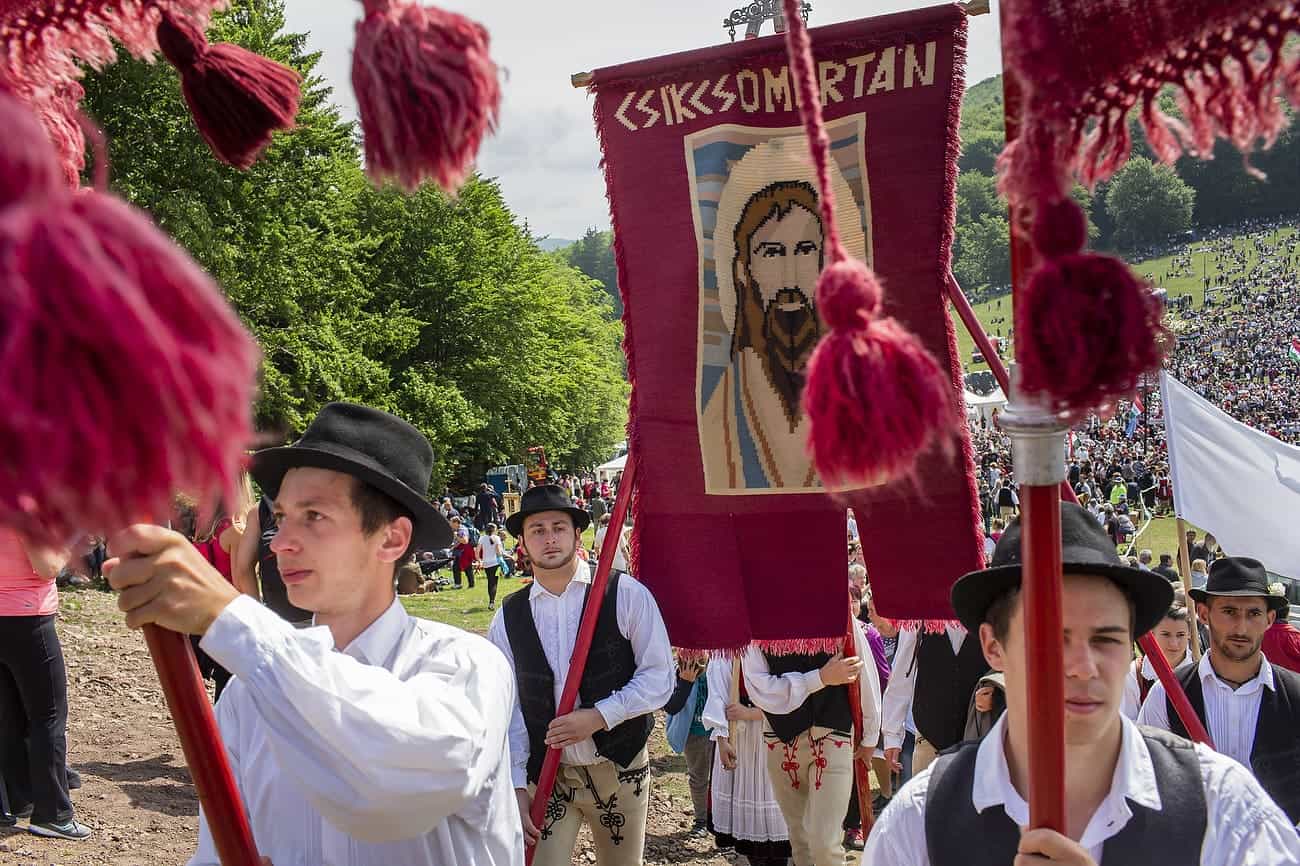
SUMULEU CIUC, ROMANIA - MAY 19: Hungarians from all over the world attending the early pilgrimage hold at Sumuleu Ciuc in Romania, as seen on May 19, 2018. Sumuleu Ciuc became a pilgrimage site in 1567, when Hungarian king John II Sigismund Zápolya wanted to convert the Székely population of the upper Csík to Protestantism. The Székelys refused to abandon the Catholic faith and resisted. A battle took place on a nearby field, on Saturday before Pentecost 1567, from which the Székelys emerged victorious. The monks saw this as a sign of the care of Virgin Mary, and since then, this event has been commemorated by a pilgrimage when the believers gather on Pentecost every year. Beside its religious importance, the pilgrimage has also become a community event demonstrating spiritual unity of Hungarian people living in and outside the historical region of Transylvania. Photography by Mugur Varzariu/Getty Images/Newsweek.
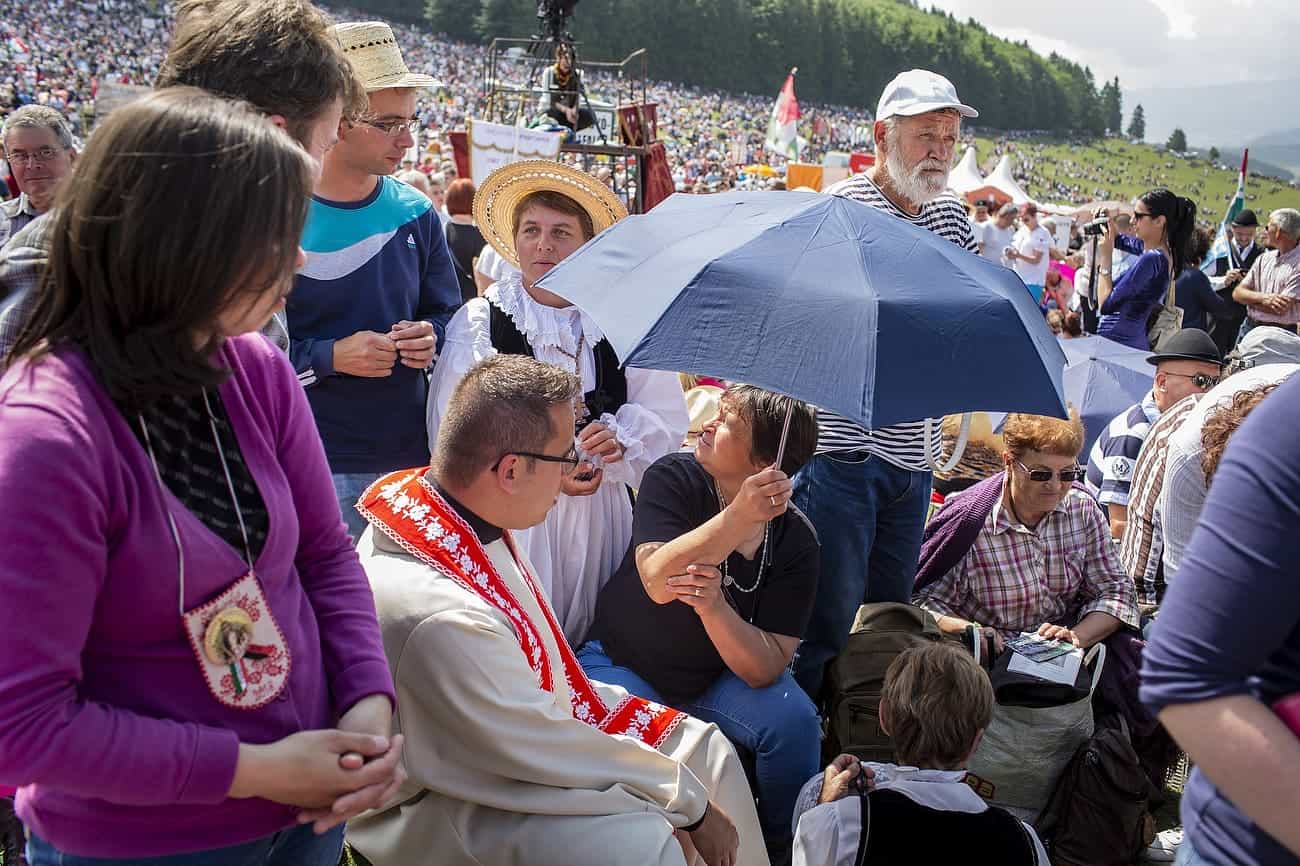
SUMULEU CIUC, ROMANIA - MAY 19: Hungarians from all over the world attending the early pilgrimage hold at Sumuleu Ciuc in Romania, as seen on May 19, 2018. Sumuleu Ciuc became a pilgrimage site in 1567, when Hungarian king John II Sigismund Zápolya wanted to convert the Székely population of the upper Csík to Protestantism. The Székelys refused to abandon the Catholic faith and resisted. A battle took place on a nearby field, on Saturday before Pentecost 1567, from which the Székelys emerged victorious. The monks saw this as a sign of the care of Virgin Mary, and since then, this event has been commemorated by a pilgrimage when the believers gather on Pentecost every year. Beside its religious importance, the pilgrimage has also become a community event demonstrating spiritual unity of Hungarian people living in and outside the historical region of Transylvania. Photography by Mugur Varzariu/Getty Images/Newsweek.
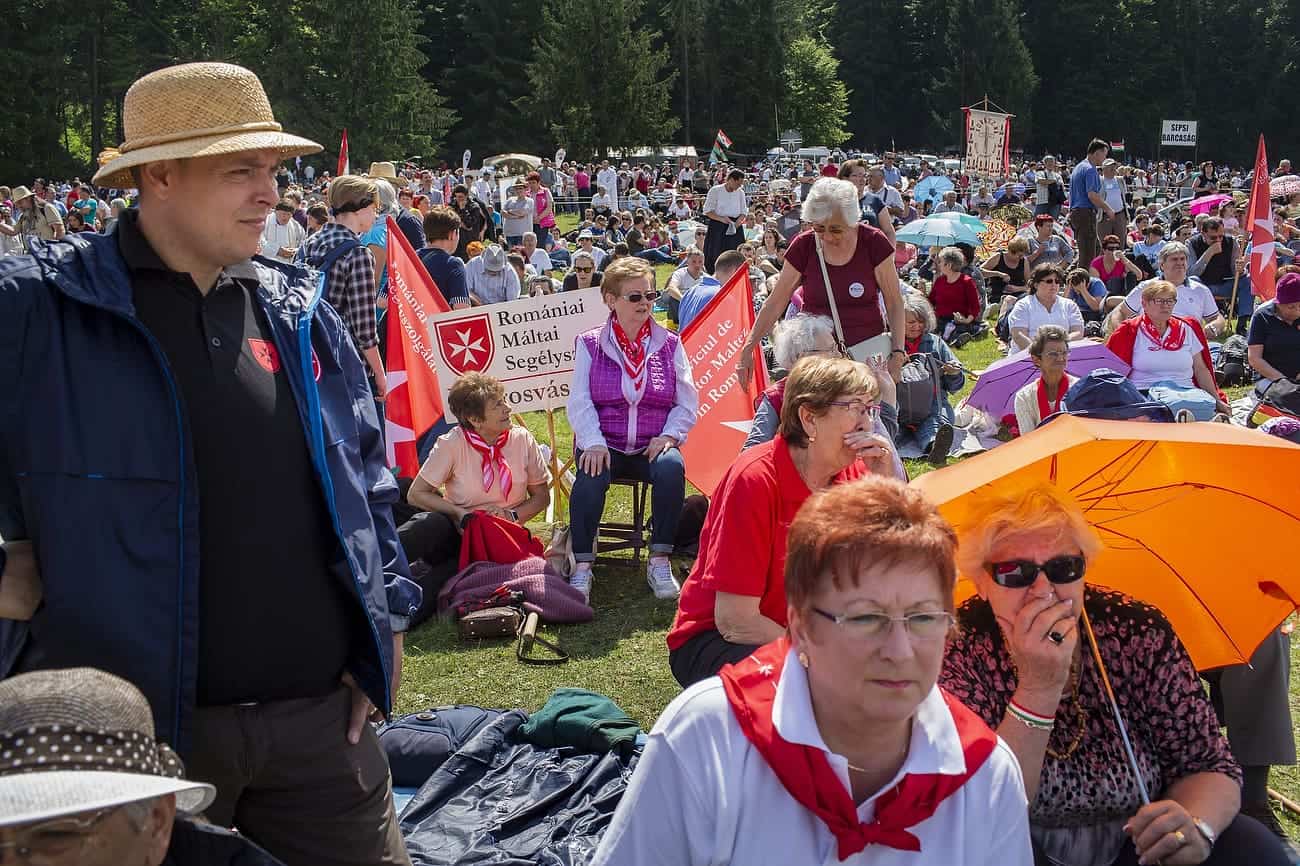
SUMULEU CIUC, ROMANIA - MAY 19: Hungarians from all over the world attending the early pilgrimage hold at Sumuleu Ciuc in Romania, as seen on May 19, 2018. Sumuleu Ciuc became a pilgrimage site in 1567, when Hungarian king John II Sigismund Zápolya wanted to convert the Székely population of the upper Csík to Protestantism. The Székelys refused to abandon the Catholic faith and resisted. A battle took place on a nearby field, on Saturday before Pentecost 1567, from which the Székelys emerged victorious. The monks saw this as a sign of the care of Virgin Mary, and since then, this event has been commemorated by a pilgrimage when the believers gather on Pentecost every year. Beside its religious importance, the pilgrimage has also become a community event demonstrating spiritual unity of Hungarian people living in and outside the historical region of Transylvania. Photography by Mugur Varzariu/Getty Images/Newsweek.
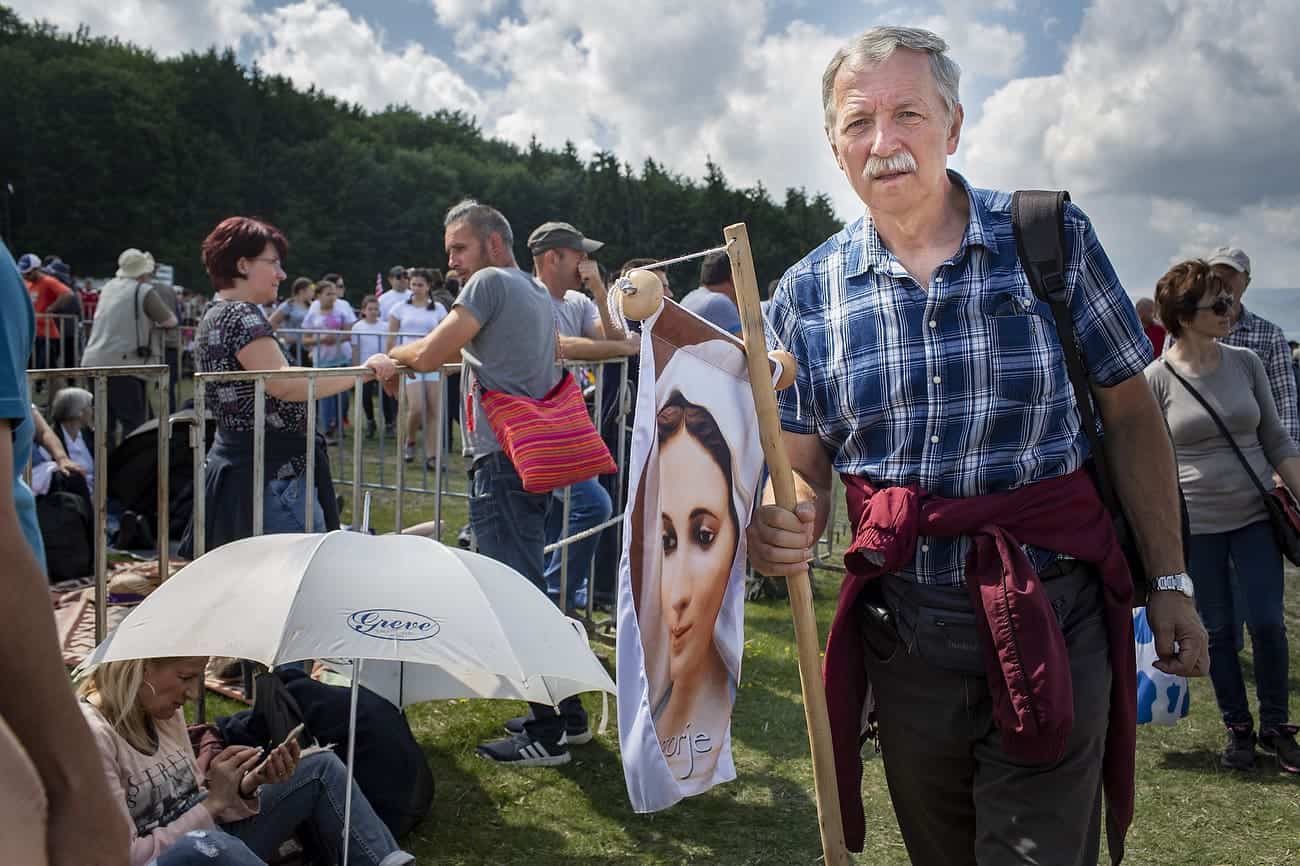
SUMULEU CIUC, ROMANIA - MAY 19: Hungarians from all over the world attending the early pilgrimage hold at Sumuleu Ciuc in Romania, as seen on May 19, 2018. Sumuleu Ciuc became a pilgrimage site in 1567, when Hungarian king John II Sigismund Zpolya wanted to convert the Szkely population of the upper Csk to Protestantism. The Szkelys refused to abandon the Catholic faith and resisted. A battle took place on a nearby field, on Saturday before Pentecost 1567, from which the Szkelys emerged victorious. The monks saw this as a sign of the care of Virgin Mary, and since then, this event has been commemorated by a pilgrimage when the believers gather on Pentecost every year. Beside its religious importance, the pilgrimage has also become a community event demonstrating spiritual unity of Hungarian people living in and outside the historical region of Transylvania. Photography by Mugur Varzariu/Getty Images/Newsweek.
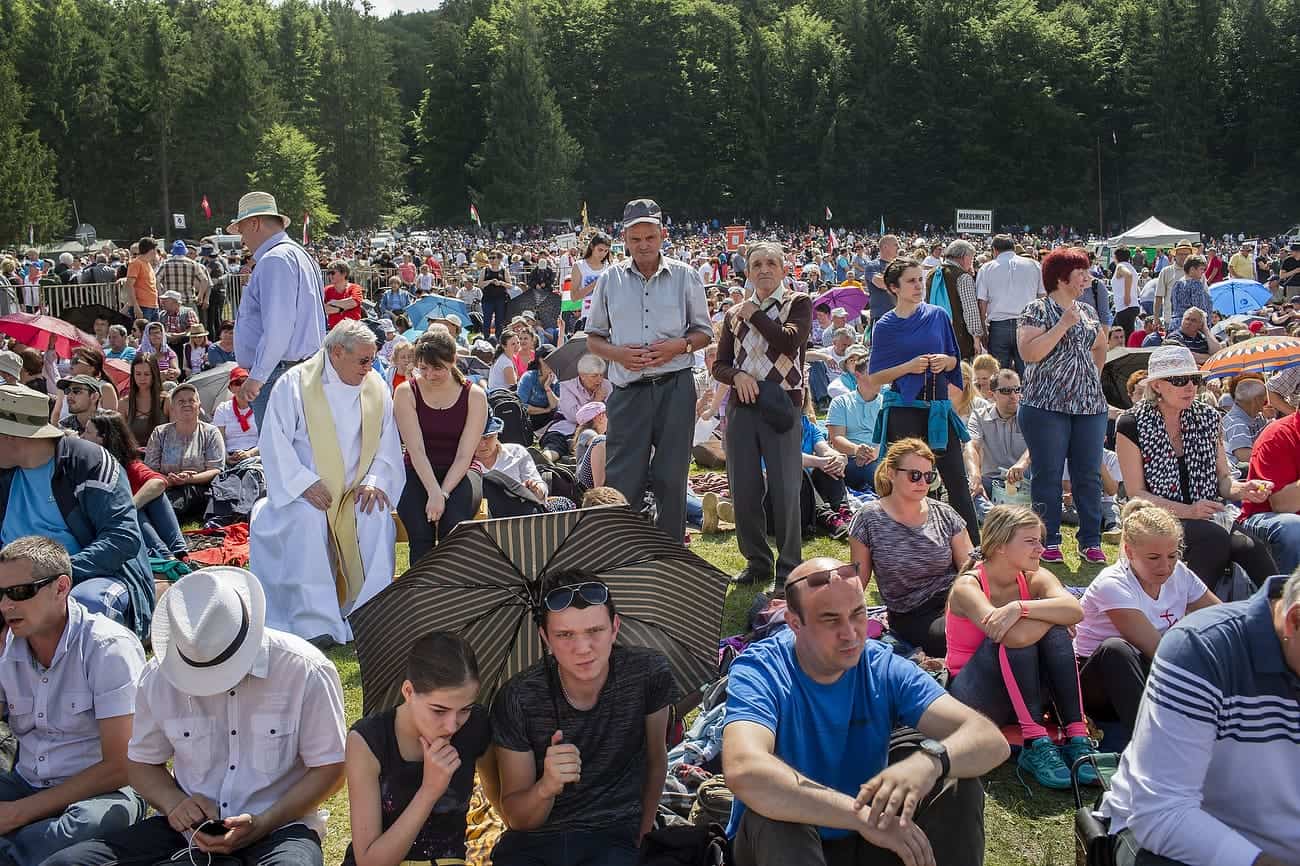
SUMULEU CIUC, ROMANIA - MAY 19: Hungarians from all over the world attending the early pilgrimage hold at Sumuleu Ciuc in Romania, as seen on May 19, 2018. Sumuleu Ciuc became a pilgrimage site in 1567, when Hungarian king John II Sigismund Zápolya wanted to convert the Székely population of the upper Csík to Protestantism. The Székelys refused to abandon the Catholic faith and resisted. A battle took place on a nearby field, on Saturday before Pentecost 1567, from which the Székelys emerged victorious. The monks saw this as a sign of the care of Virgin Mary, and since then, this event has been commemorated by a pilgrimage when the believers gather on Pentecost every year. Beside its religious importance, the pilgrimage has also become a community event demonstrating spiritual unity of Hungarian people living in and outside the historical region of Transylvania. Photography by Mugur Varzariu/Getty Images/Newsweek.

SUMULEU CIUC, ROMANIA - MAY 19: Hungarians from all over the world attending the early pilgrimage hold at Sumuleu Ciuc in Romania, as seen on May 19, 2018. Sumuleu Ciuc became a pilgrimage site in 1567, when Hungarian king John II Sigismund Zápolya wanted to convert the Székely population of the upper Csík to Protestantism. The Székelys refused to abandon the Catholic faith and resisted. A battle took place on a nearby field, on Saturday before Pentecost 1567, from which the Székelys emerged victorious. The monks saw this as a sign of the care of Virgin Mary, and since then, this event has been commemorated by a pilgrimage when the believers gather on Pentecost every year. Beside its religious importance, the pilgrimage has also become a community event demonstrating spiritual unity of Hungarian people living in and outside the historical region of Transylvania. Photography by Mugur Varzariu/Getty Images/Newsweek.

SUMULEU CIUC, ROMANIA - MAY 19: Hungarians from all over the world attending the early pilgrimage hold at Sumuleu Ciuc in Romania, as seen on May 19, 2018. Sumuleu Ciuc became a pilgrimage site in 1567, when Hungarian king John II Sigismund Zápolya wanted to convert the Székely population of the upper Csík to Protestantism. The Székelys refused to abandon the Catholic faith and resisted. A battle took place on a nearby field, on Saturday before Pentecost 1567, from which the Székelys emerged victorious. The monks saw this as a sign of the care of Virgin Mary, and since then, this event has been commemorated by a pilgrimage when the believers gather on Pentecost every year. Beside its religious importance, the pilgrimage has also become a community event demonstrating spiritual unity of Hungarian people living in and outside the historical region of Transylvania. Photography by Mugur Varzariu/Getty Images/Newsweek.
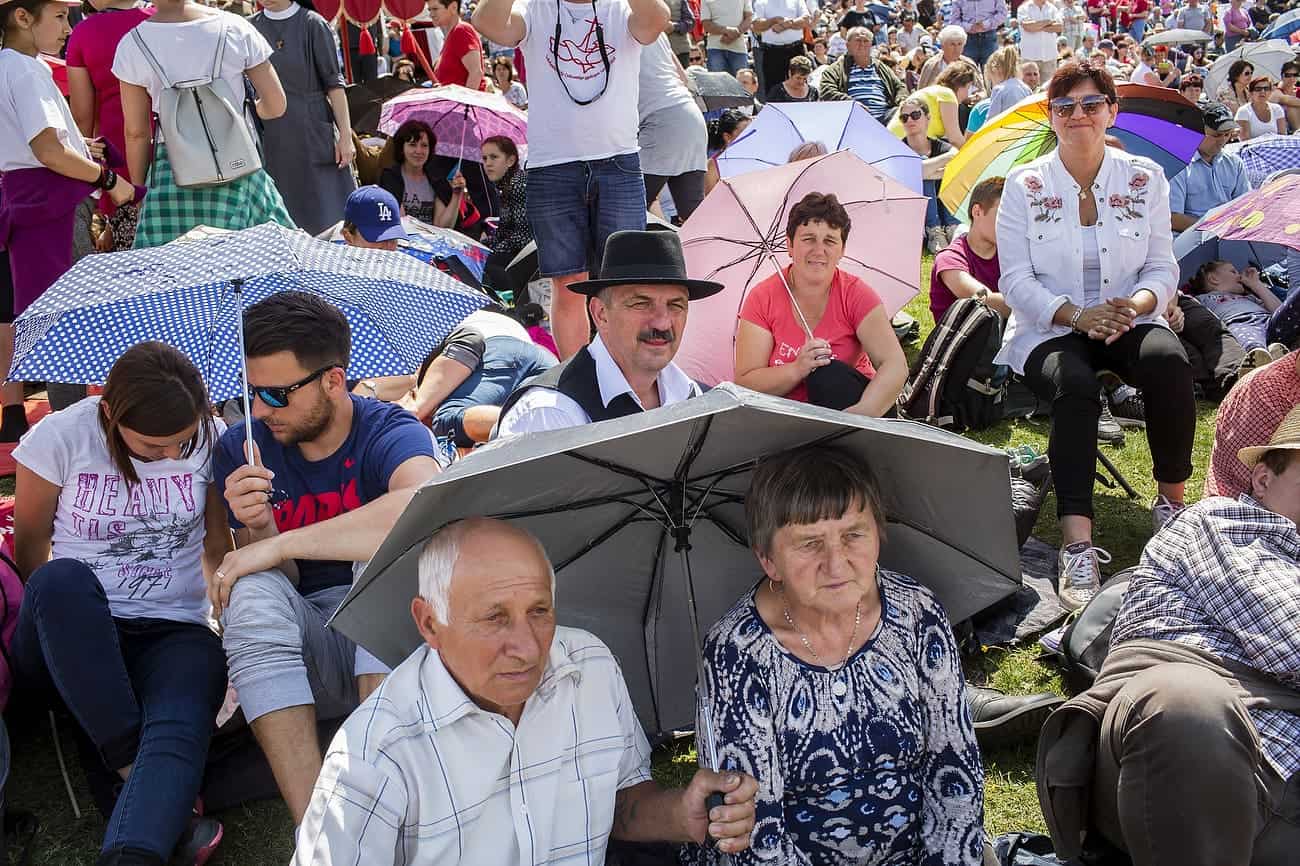
SUMULEU CIUC, ROMANIA - MAY 19: Hungarians from all over the world attending the early pilgrimage hold at Sumuleu Ciuc in Romania, as seen on May 19, 2018. Sumuleu Ciuc became a pilgrimage site in 1567, when Hungarian king John II Sigismund Zápolya wanted to convert the Székely population of the upper Csík to Protestantism. The Székelys refused to abandon the Catholic faith and resisted. A battle took place on a nearby field, on Saturday before Pentecost 1567, from which the Székelys emerged victorious. The monks saw this as a sign of the care of Virgin Mary, and since then, this event has been commemorated by a pilgrimage when the believers gather on Pentecost every year. Beside its religious importance, the pilgrimage has also become a community event demonstrating spiritual unity of Hungarian people living in and outside the historical region of Transylvania. Photography by Mugur Varzariu/Getty Images/Newsweek.
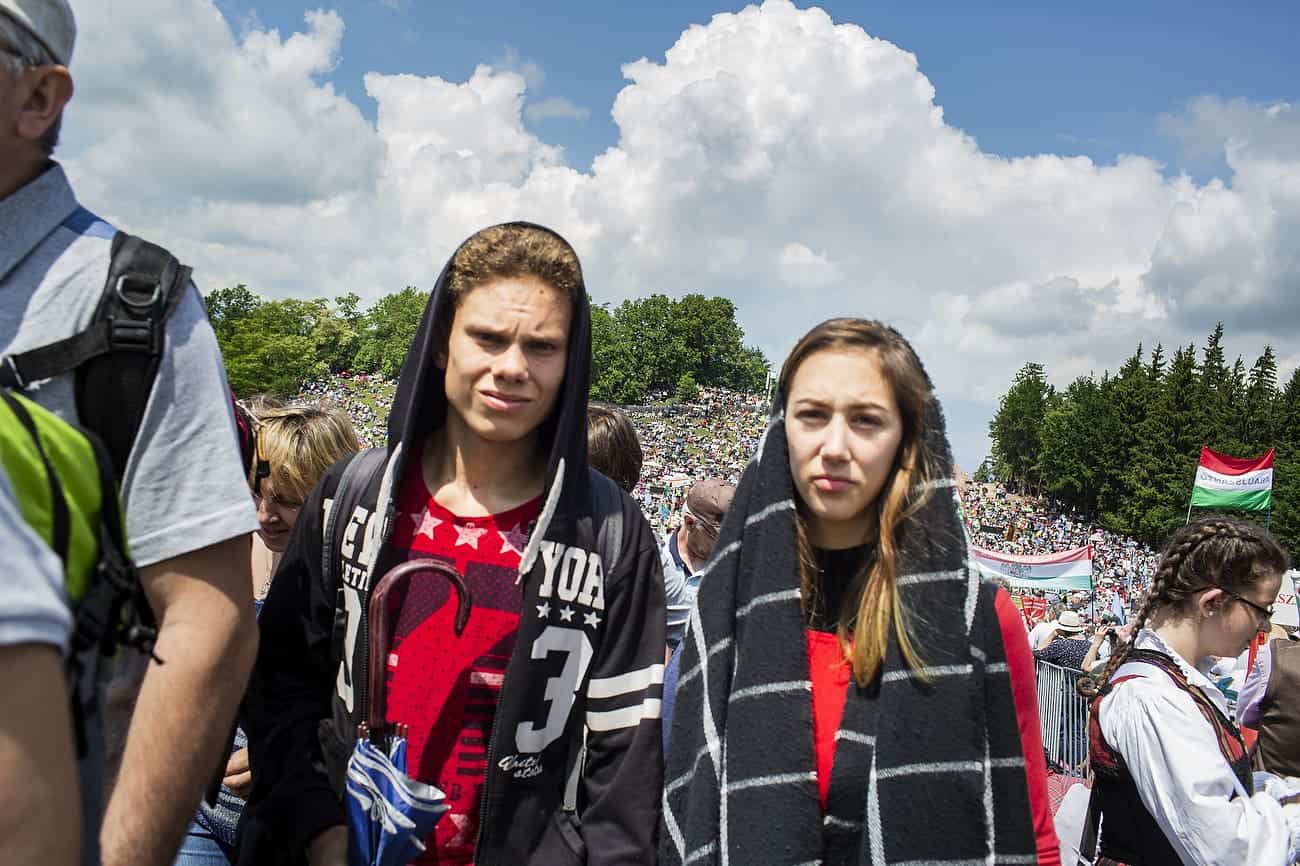
SUMULEU CIUC, ROMANIA - MAY 19: Hungarians from all over the world attending the early pilgrimage hold at Sumuleu Ciuc in Romania, as seen on May 19, 2018. Sumuleu Ciuc became a pilgrimage site in 1567, when Hungarian king John II Sigismund Zápolya wanted to convert the Székely population of the upper Csík to Protestantism. The Székelys refused to abandon the Catholic faith and resisted. A battle took place on a nearby field, on Saturday before Pentecost 1567, from which the Székelys emerged victorious. The monks saw this as a sign of the care of Virgin Mary, and since then, this event has been commemorated by a pilgrimage when the believers gather on Pentecost every year. Beside its religious importance, the pilgrimage has also become a community event demonstrating spiritual unity of Hungarian people living in and outside the historical region of Transylvania. Photography by Mugur Varzariu/Getty Images/Newsweek.
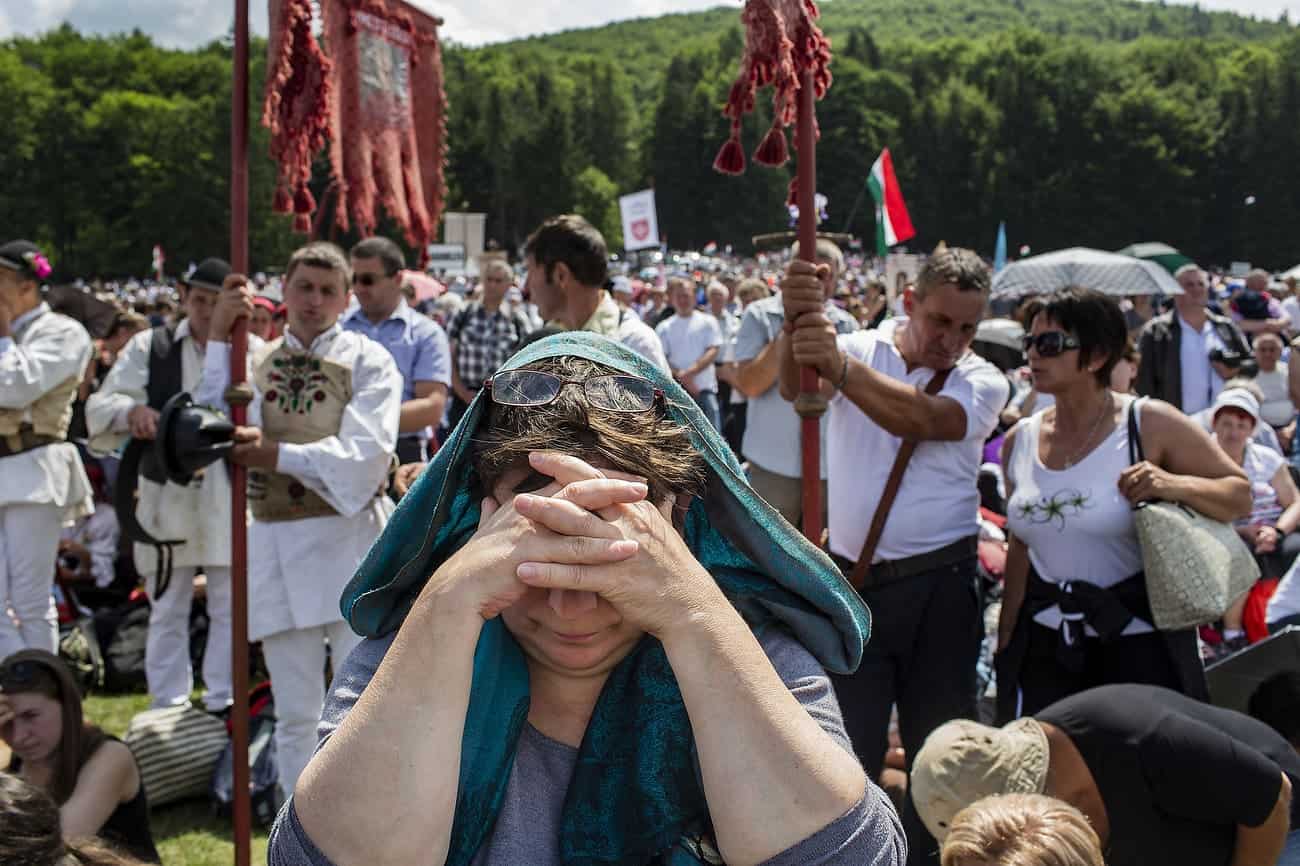
SUMULEU CIUC, ROMANIA - MAY 19: Hungarians from all over the world attending the early pilgrimage hold at Sumuleu Ciuc in Romania, as seen on May 19, 2018. Sumuleu Ciuc became a pilgrimage site in 1567, when Hungarian king John II Sigismund Zápolya wanted to convert the Székely population of the upper Csík to Protestantism. The Székelys refused to abandon the Catholic faith and resisted. A battle took place on a nearby field, on Saturday before Pentecost 1567, from which the Székelys emerged victorious. The monks saw this as a sign of the care of Virgin Mary, and since then, this event has been commemorated by a pilgrimage when the believers gather on Pentecost every year. Beside its religious importance, the pilgrimage has also become a community event demonstrating spiritual unity of Hungarian people living in and outside the historical region of Transylvania. Photography by Mugur Varzariu/Getty Images/Newsweek.
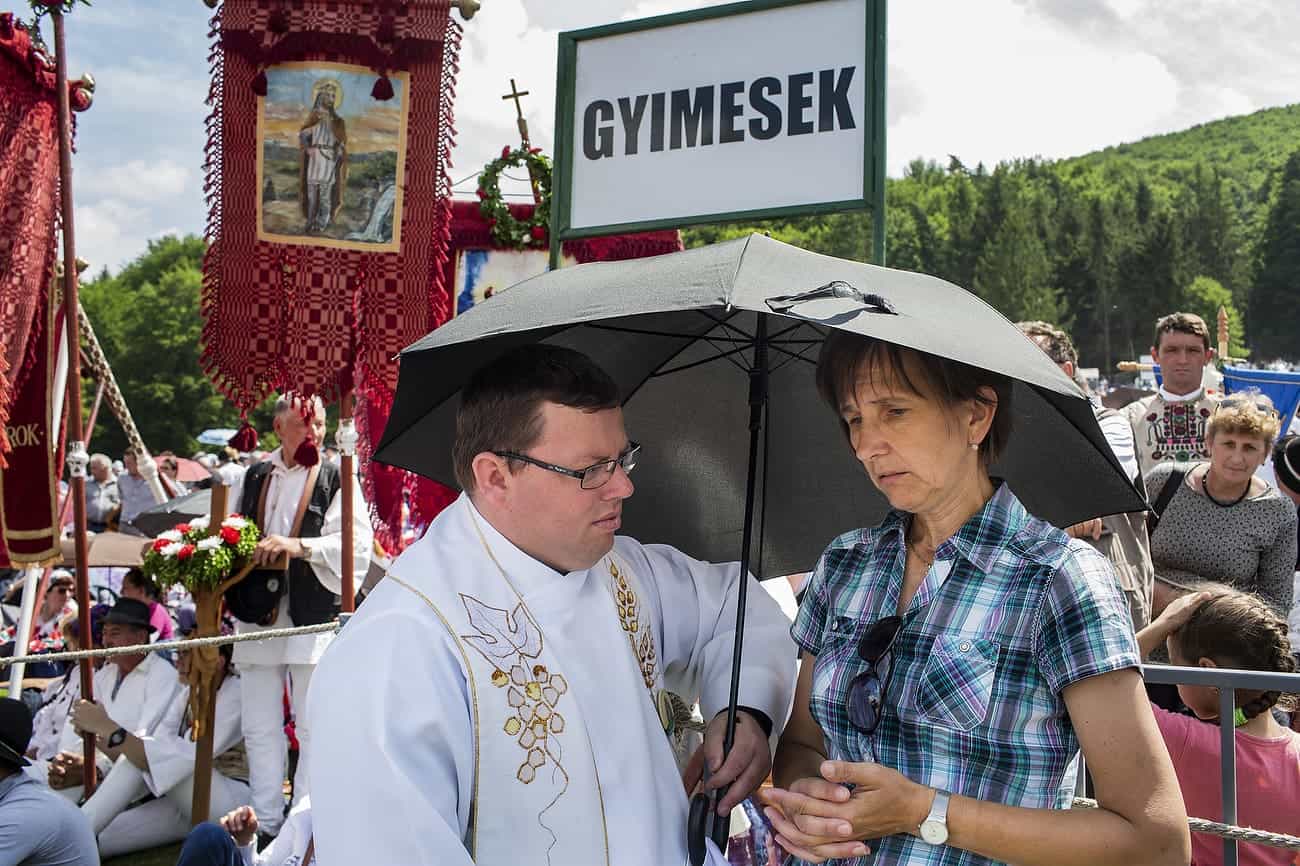
SUMULEU CIUC, ROMANIA - MAY 19: Hungarians from all over the world attending the early pilgrimage hold at Sumuleu Ciuc in Romania, as seen on May 19, 2018. Sumuleu Ciuc became a pilgrimage site in 1567, when Hungarian king John II Sigismund Zápolya wanted to convert the Székely population of the upper Csík to Protestantism. The Székelys refused to abandon the Catholic faith and resisted. A battle took place on a nearby field, on Saturday before Pentecost 1567, from which the Székelys emerged victorious. The monks saw this as a sign of the care of Virgin Mary, and since then, this event has been commemorated by a pilgrimage when the believers gather on Pentecost every year. Beside its religious importance, the pilgrimage has also become a community event demonstrating spiritual unity of Hungarian people living in and outside the historical region of Transylvania. Photography by Mugur Varzariu/Getty Images/Newsweek.
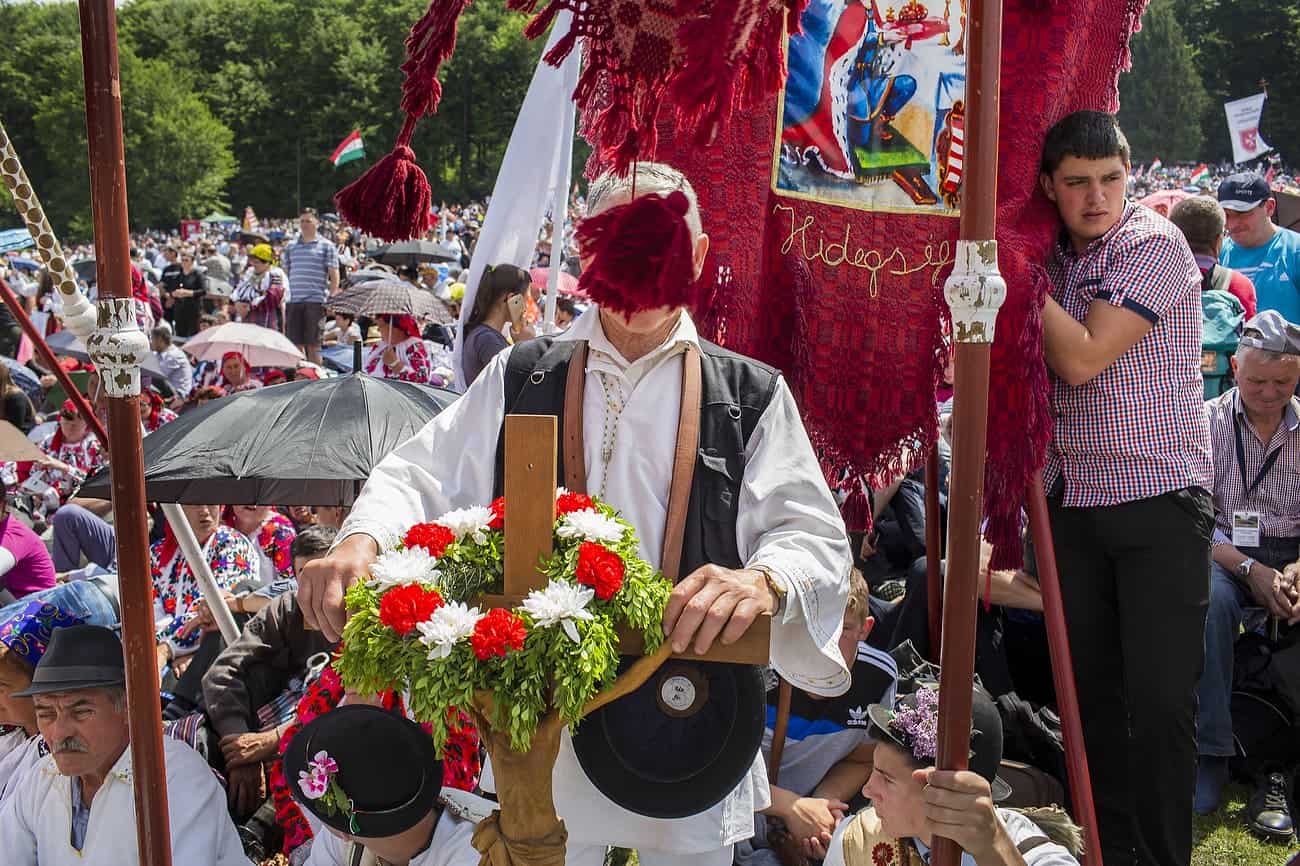
SUMULEU CIUC, ROMANIA - MAY 19: Hungarians from all over the world attending the early pilgrimage hold at Sumuleu Ciuc in Romania, as seen on May 19, 2018. Sumuleu Ciuc became a pilgrimage site in 1567, when Hungarian king John II Sigismund Zpolya wanted to convert the Szkely population of the upper Csk to Protestantism. The Szkelys refused to abandon the Catholic faith and resisted. A battle took place on a nearby field, on Saturday before Pentecost 1567, from which the Szkelys emerged victorious. The monks saw this as a sign of the care of Virgin Mary, and since then, this event has been commemorated by a pilgrimage when the believers gather on Pentecost every year. Beside its religious importance, the pilgrimage has also become a community event demonstrating spiritual unity of Hungarian people living in and outside the historical region of Transylvania. Photography by Mugur Varzariu/Getty Images/Newsweek.
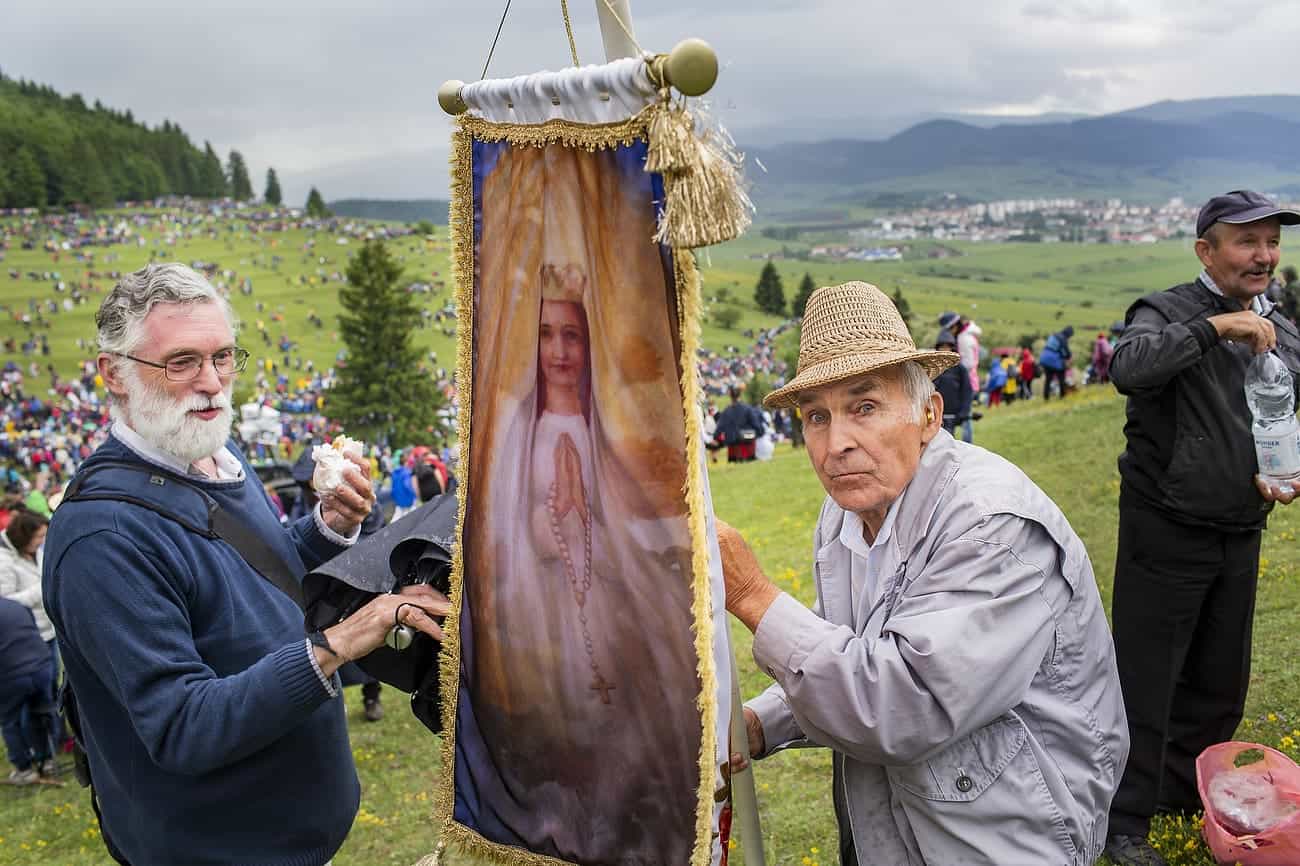
SUMULEU CIUC, ROMANIA - MAY 19: Hungarians from all over the world attending the early pilgrimage hold at Sumuleu Ciuc in Romania, as seen on May 19, 2018. Sumuleu Ciuc became a pilgrimage site in 1567, when Hungarian king John II Sigismund Zápolya wanted to convert the Székely population of the upper Csík to Protestantism. The Székelys refused to abandon the Catholic faith and resisted. A battle took place on a nearby field, on Saturday before Pentecost 1567, from which the Székelys emerged victorious. The monks saw this as a sign of the care of Virgin Mary, and since then, this event has been commemorated by a pilgrimage when the believers gather on Pentecost every year. Beside its religious importance, the pilgrimage has also become a community event demonstrating spiritual unity of Hungarian people living in and outside the historical region of Transylvania. Photography by Mugur Varzariu/Getty Images/Newsweek.
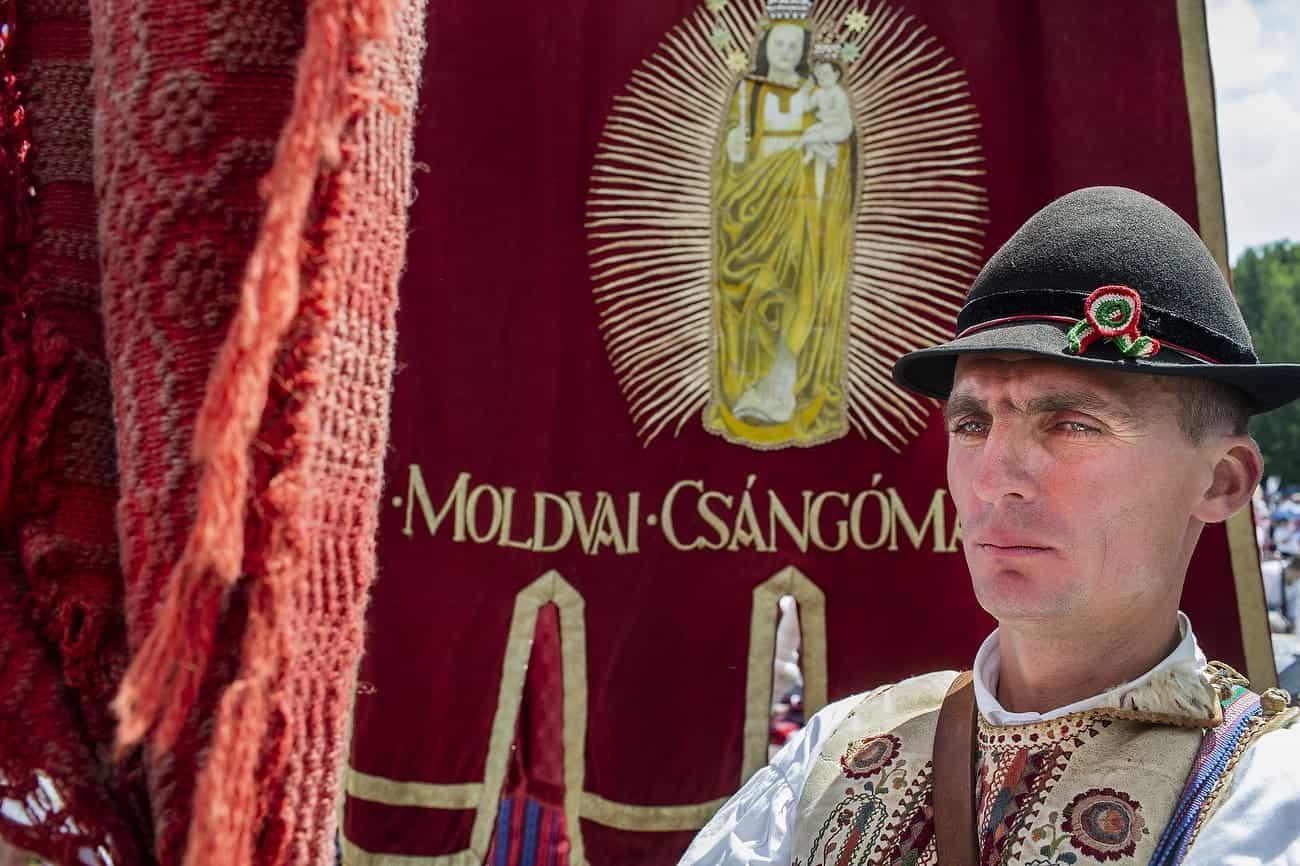
SUMULEU CIUC, ROMANIA - MAY 19: Hungarians from all over the world attending the early pilgrimage hold at Sumuleu Ciuc in Romania, as seen on May 19, 2018. Sumuleu Ciuc became a pilgrimage site in 1567, when Hungarian king John II Sigismund Zápolya wanted to convert the Székely population of the upper Csík to Protestantism. The Székelys refused to abandon the Catholic faith and resisted. A battle took place on a nearby field, on Saturday before Pentecost 1567, from which the Székelys emerged victorious. The monks saw this as a sign of the care of Virgin Mary, and since then, this event has been commemorated by a pilgrimage when the believers gather on Pentecost every year. Beside its religious importance, the pilgrimage has also become a community event demonstrating spiritual unity of Hungarian people living in and outside the historical region of Transylvania. Photography by Mugur Varzariu/Getty Images/Newsweek.
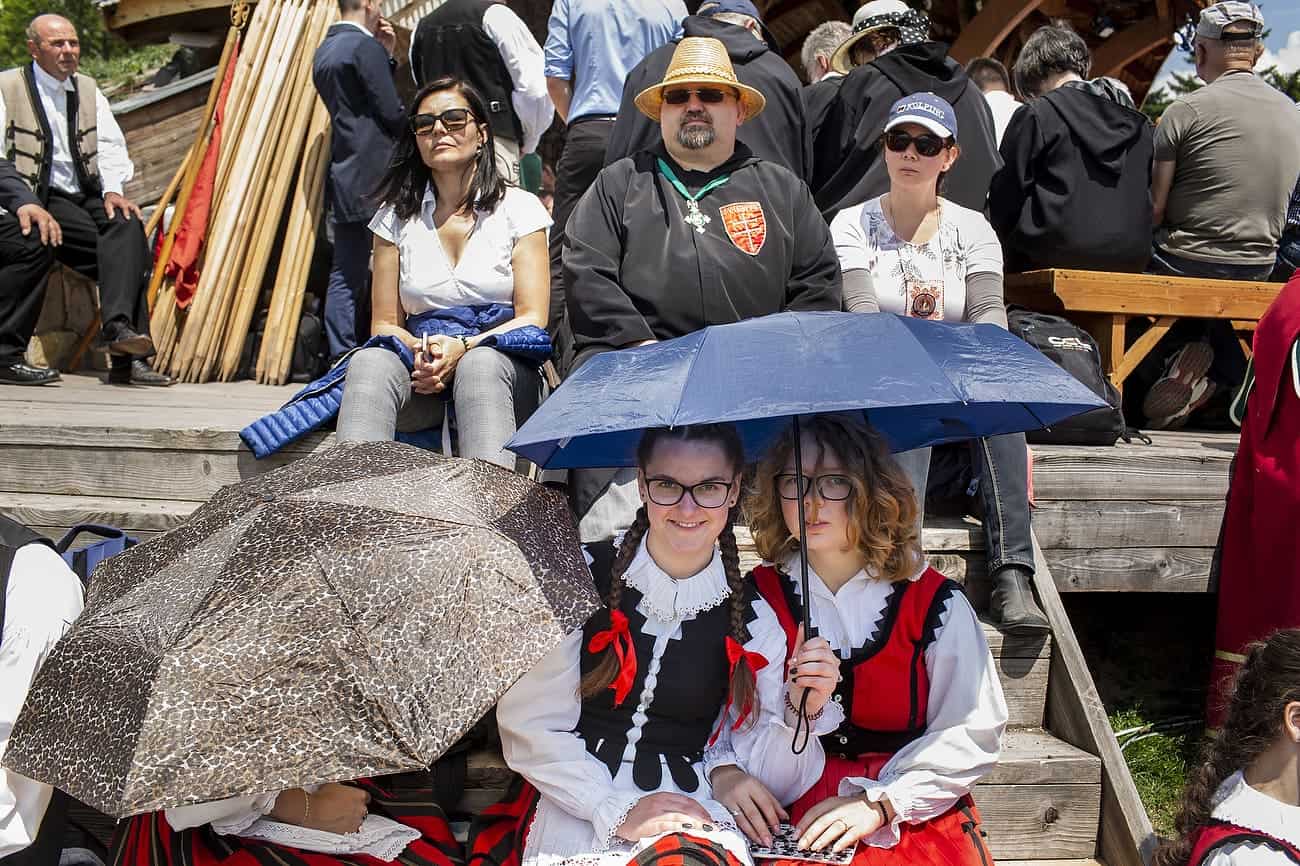
SUMULEU CIUC, ROMANIA - MAY 19: Hungarians from all over the world attending the early pilgrimage hold at Sumuleu Ciuc in Romania, as seen on May 19, 2018. Sumuleu Ciuc became a pilgrimage site in 1567, when Hungarian king John II Sigismund Zápolya wanted to convert the Székely population of the upper Csík to Protestantism. The Székelys refused to abandon the Catholic faith and resisted. A battle took place on a nearby field, on Saturday before Pentecost 1567, from which the Székelys emerged victorious. The monks saw this as a sign of the care of Virgin Mary, and since then, this event has been commemorated by a pilgrimage when the believers gather on Pentecost every year. Beside its religious importance, the pilgrimage has also become a community event demonstrating spiritual unity of Hungarian people living in and outside the historical region of Transylvania. Photography by Mugur Varzariu/Getty Images/Newsweek.
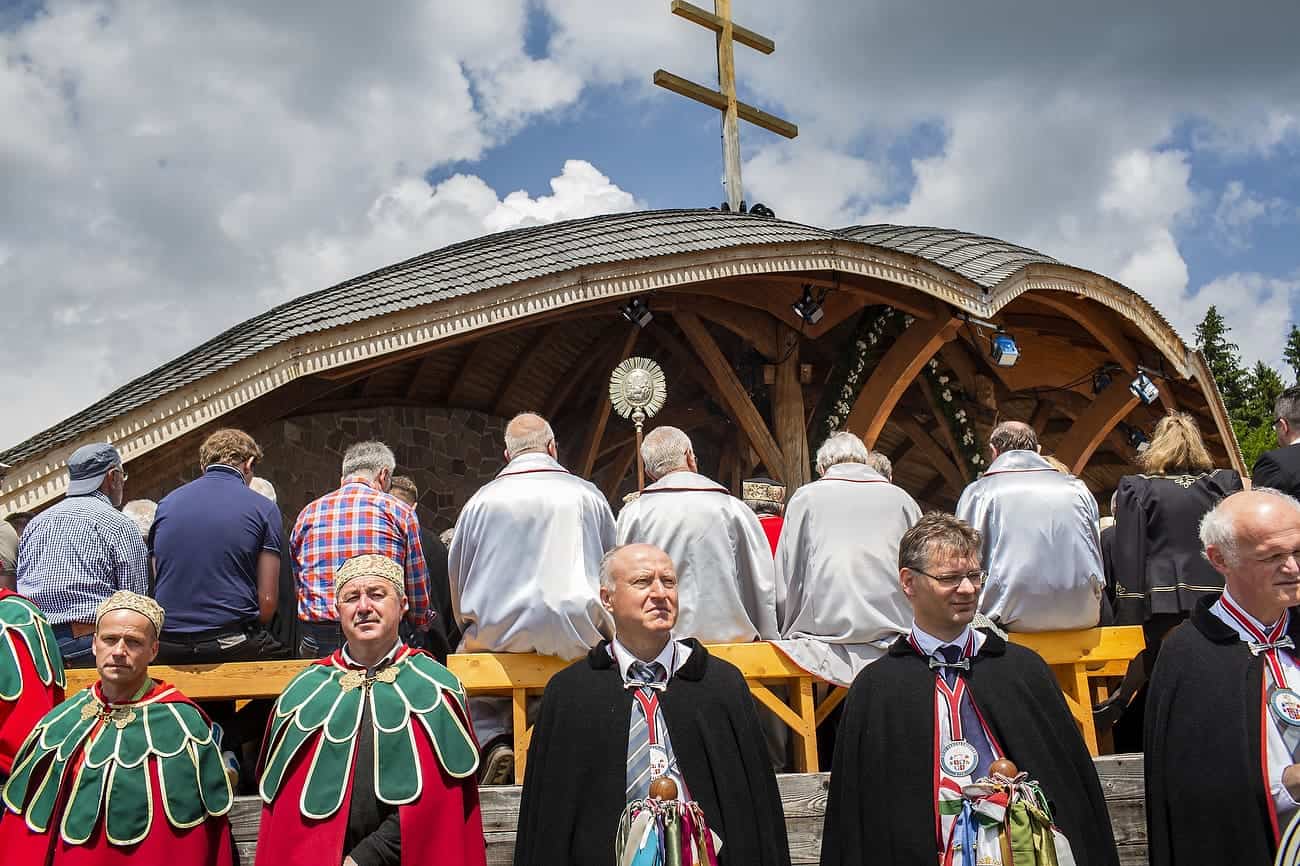
SUMULEU CIUC, ROMANIA - MAY 19: Hungarians from all over the world attending the early pilgrimage hold at Sumuleu Ciuc in Romania, as seen on May 19, 2018. Sumuleu Ciuc became a pilgrimage site in 1567, when Hungarian king John II Sigismund Zápolya wanted to convert the Székely population of the upper Csík to Protestantism. The Székelys refused to abandon the Catholic faith and resisted. A battle took place on a nearby field, on Saturday before Pentecost 1567, from which the Székelys emerged victorious. The monks saw this as a sign of the care of Virgin Mary, and since then, this event has been commemorated by a pilgrimage when the believers gather on Pentecost every year. Beside its religious importance, the pilgrimage has also become a community event demonstrating spiritual unity of Hungarian people living in and outside the historical region of Transylvania. Photography by Mugur Varzariu/Getty Images/Newsweek.
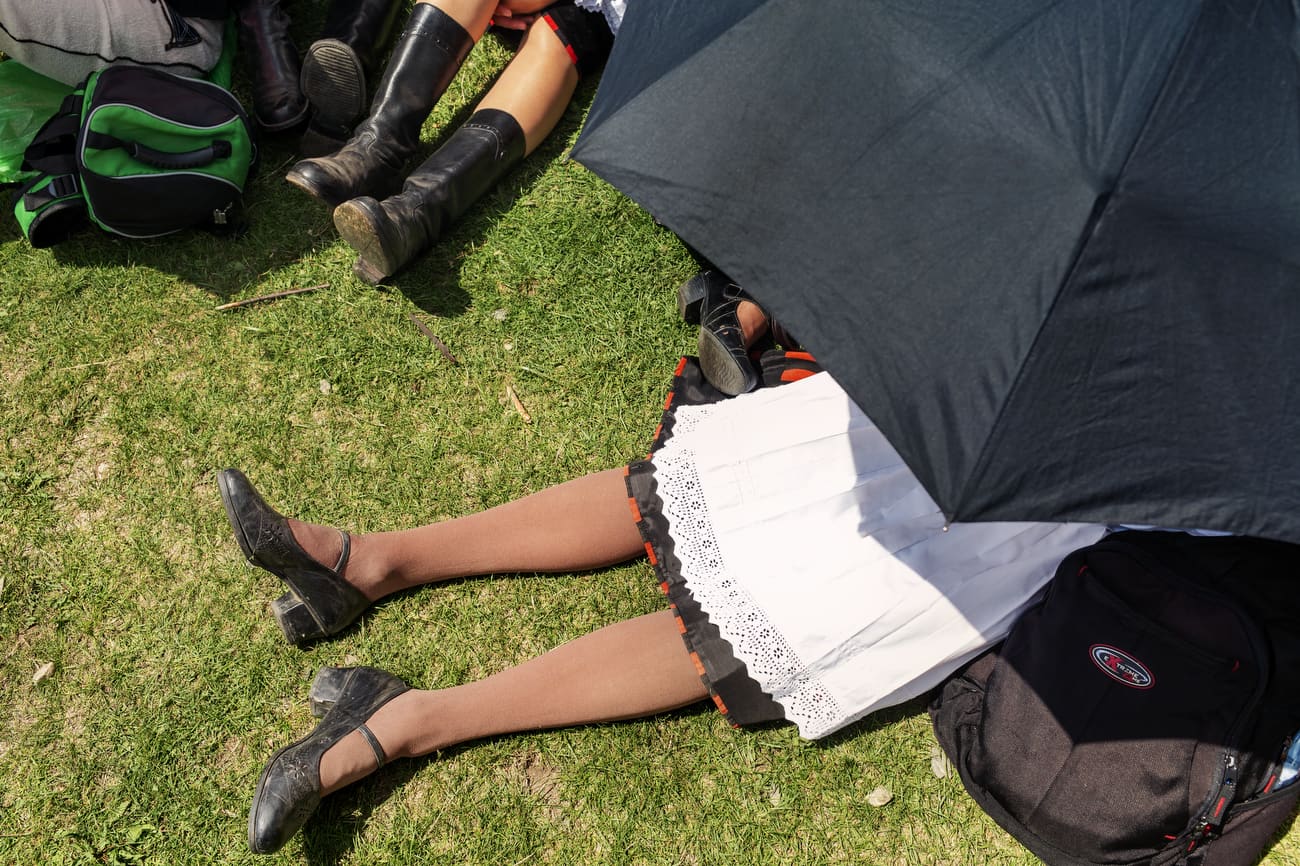
SUMULEU CIUC, ROMANIA - MAY 19: Hungarians from all over the world attending the early pilgrimage hold at Sumuleu Ciuc in Romania, as seen on May 19, 2018. Sumuleu Ciuc became a pilgrimage site in 1567, when Hungarian king John II Sigismund Zápolya wanted to convert the Székely population of the upper Csík to Protestantism. The Székelys refused to abandon the Catholic faith and resisted. A battle took place on a nearby field, on Saturday before Pentecost 1567, from which the Székelys emerged victorious. The monks saw this as a sign of the care of Virgin Mary, and since then, this event has been commemorated by a pilgrimage when the believers gather on Pentecost every year. Beside its religious importance, the pilgrimage has also become a community event demonstrating spiritual unity of Hungarian people living in and outside the historical region of Transylvania. © Mugur Varzariu
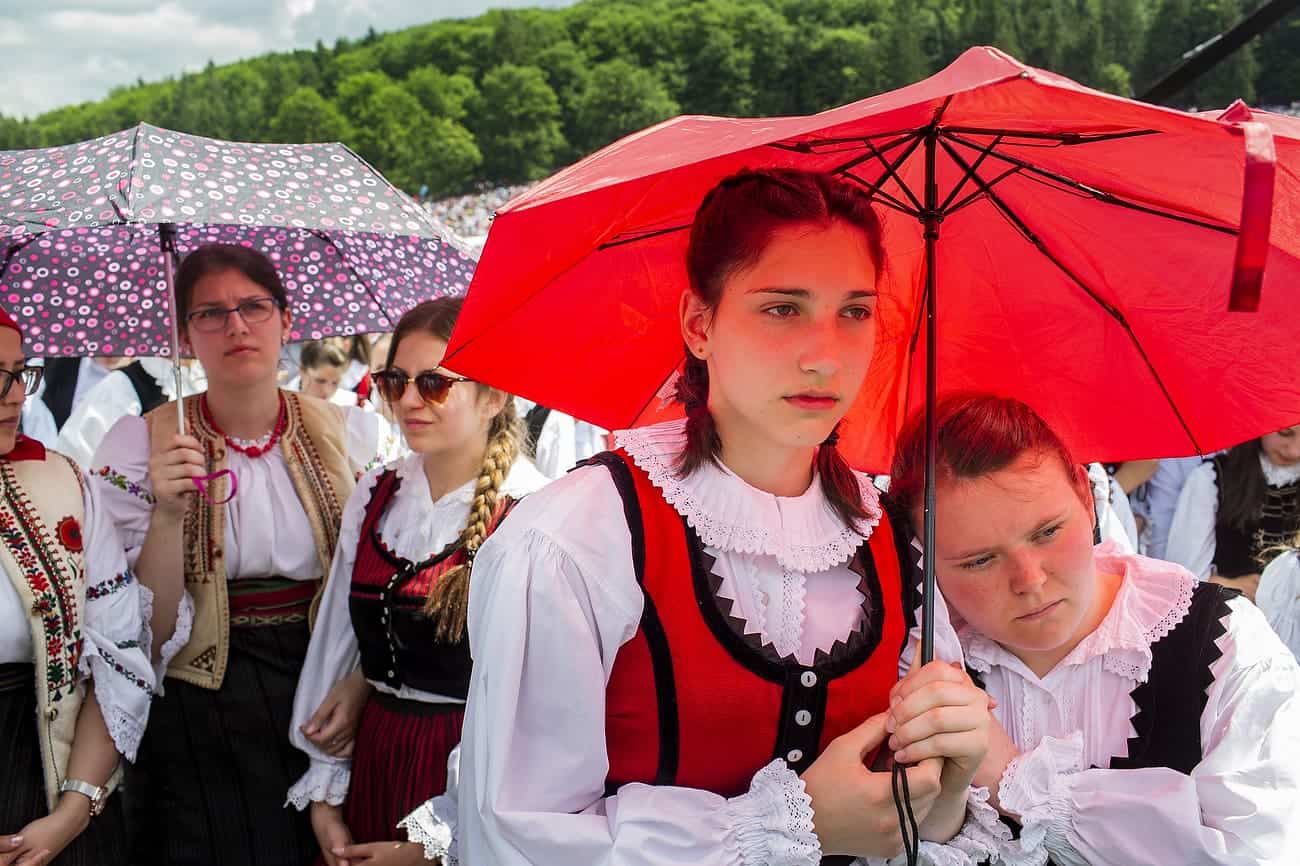
SUMULEU CIUC, ROMANIA - MAY 19: Hungarians from all over the world attending the early pilgrimage hold at Sumuleu Ciuc in Romania, as seen on May 19, 2018. Sumuleu Ciuc became a pilgrimage site in 1567, when Hungarian king John II Sigismund Zápolya wanted to convert the Székely population of the upper Csík to Protestantism. The Székelys refused to abandon the Catholic faith and resisted. A battle took place on a nearby field, on Saturday before Pentecost 1567, from which the Székelys emerged victorious. The monks saw this as a sign of the care of Virgin Mary, and since then, this event has been commemorated by a pilgrimage when the believers gather on Pentecost every year. Beside its religious importance, the pilgrimage has also become a community event demonstrating spiritual unity of Hungarian people living in and outside the historical region of Transylvania. Photography by Mugur Varzariu/Getty Images/Newsweek.
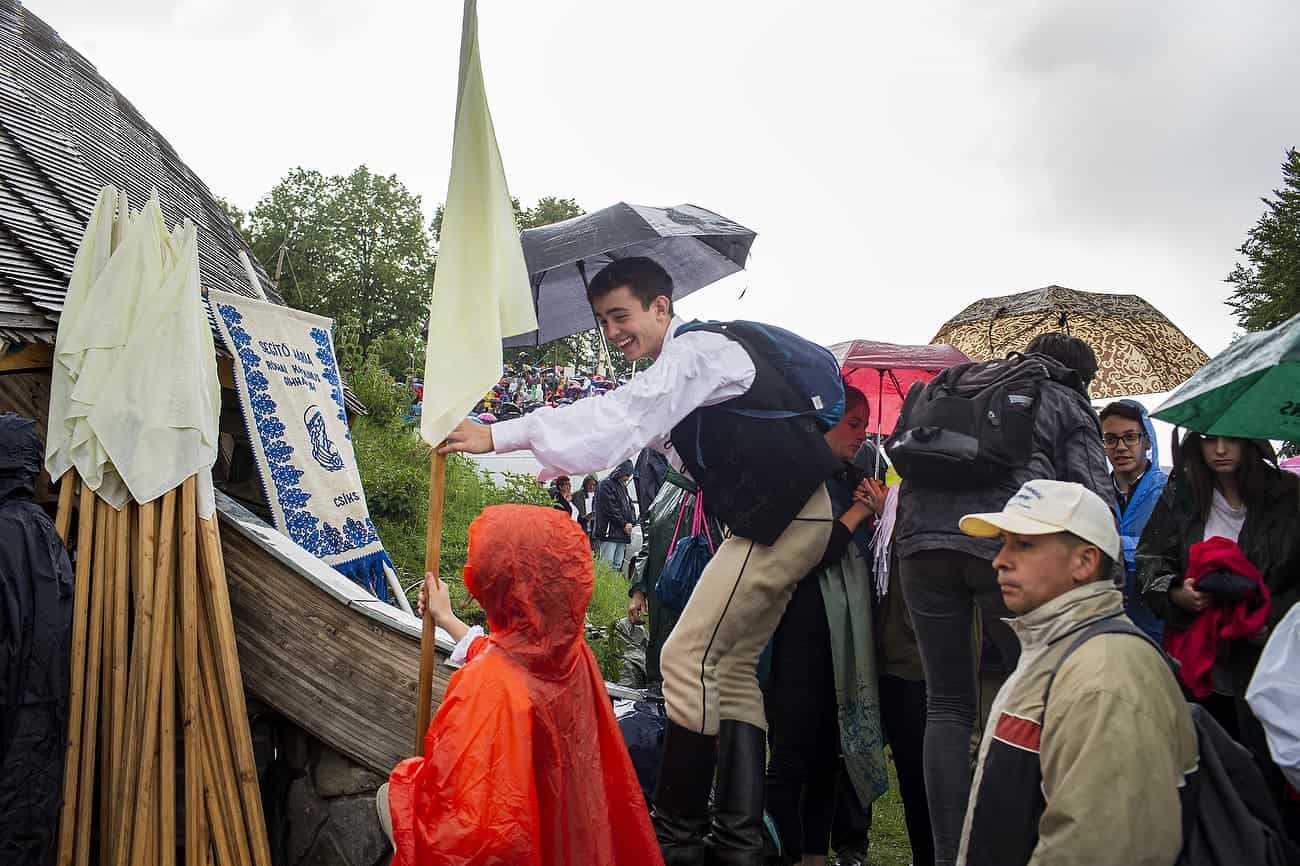
SUMULEU CIUC, ROMANIA - MAY 19: Hungarians from all over the world attending the early pilgrimage hold at Sumuleu Ciuc in Romania, as seen on May 19, 2018. Sumuleu Ciuc became a pilgrimage site in 1567, when Hungarian king John II Sigismund Zápolya wanted to convert the Székely population of the upper Csík to Protestantism. The Székelys refused to abandon the Catholic faith and resisted. A battle took place on a nearby field, on Saturday before Pentecost 1567, from which the Székelys emerged victorious. The monks saw this as a sign of the care of Virgin Mary, and since then, this event has been commemorated by a pilgrimage when the believers gather on Pentecost every year. Beside its religious importance, the pilgrimage has also become a community event demonstrating spiritual unity of Hungarian people living in and outside the historical region of Transylvania. Photography by Mugur Varzariu/Getty Images/Newsweek.
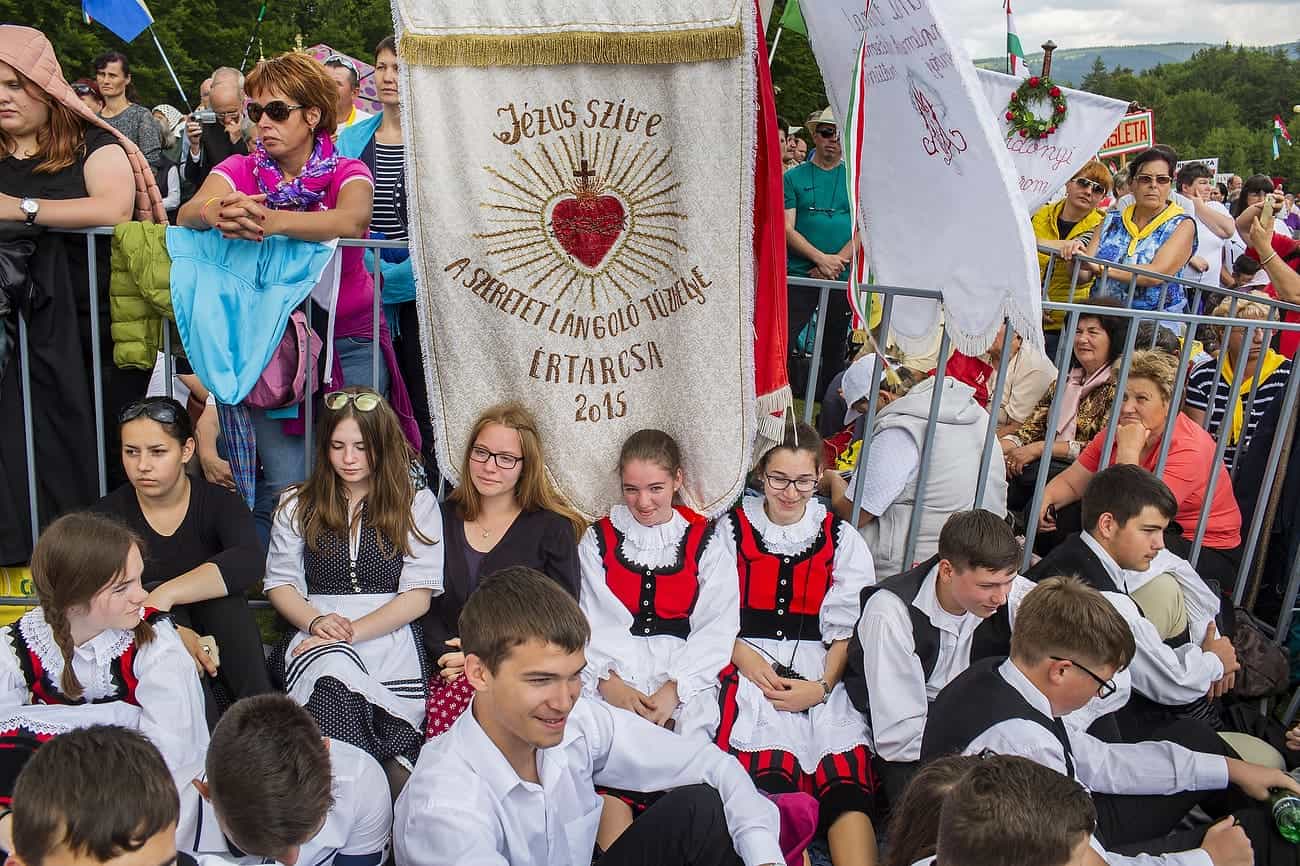
SUMULEU CIUC, ROMANIA - MAY 19: Hungarians from all over the world attending the early pilgrimage hold at Sumuleu Ciuc in Romania, as seen on May 19, 2018. Sumuleu Ciuc became a pilgrimage site in 1567, when Hungarian king John II Sigismund Zápolya wanted to convert the Székely population of the upper Csík to Protestantism. The Székelys refused to abandon the Catholic faith and resisted. A battle took place on a nearby field, on Saturday before Pentecost 1567, from which the Székelys emerged victorious. The monks saw this as a sign of the care of Virgin Mary, and since then, this event has been commemorated by a pilgrimage when the believers gather on Pentecost every year. Beside its religious importance, the pilgrimage has also become a community event demonstrating spiritual unity of Hungarian people living in and outside the historical region of Transylvania. Photography by Mugur Varzariu/Getty Images/Newsweek.
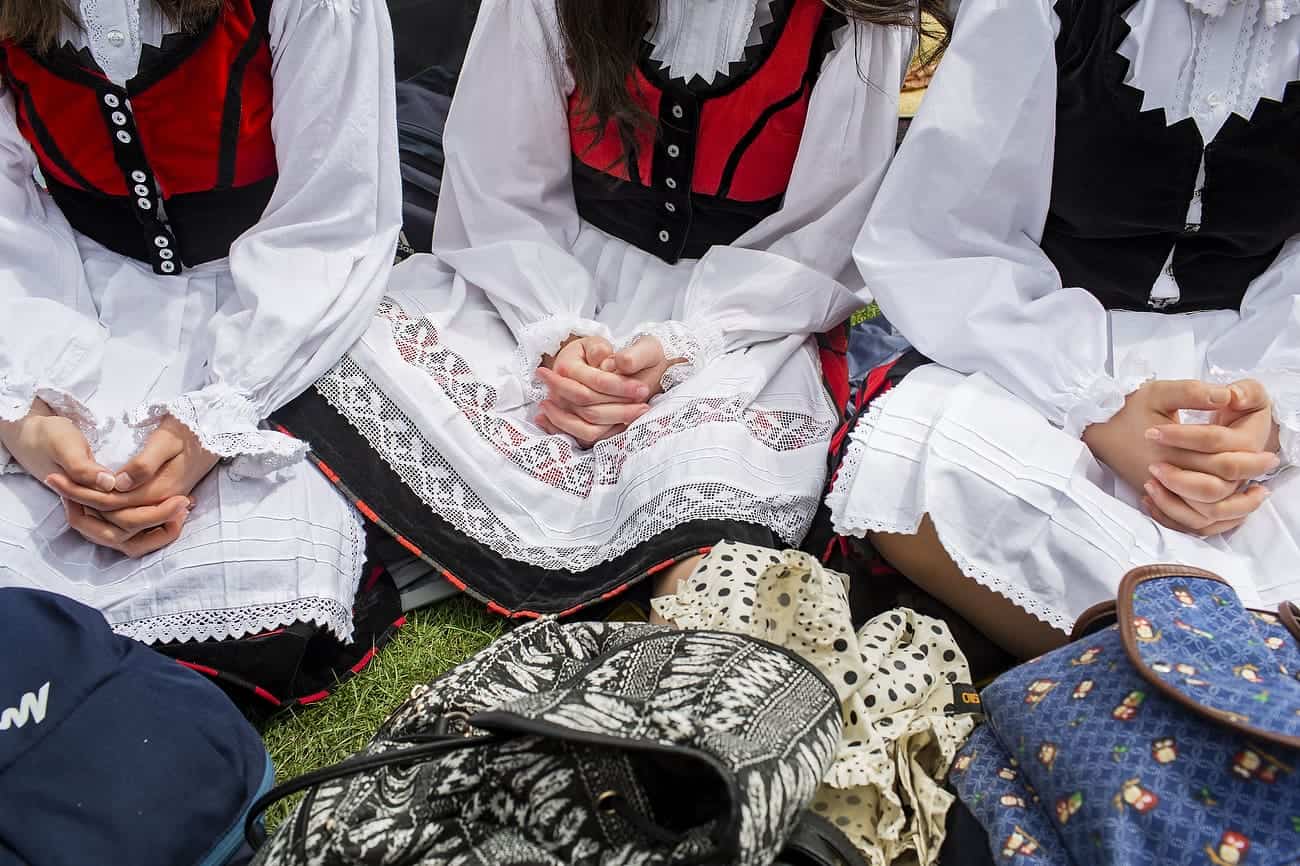
SUMULEU CIUC, ROMANIA - MAY 19: Hungarians from all over the world attending the early pilgrimage hold at Sumuleu Ciuc in Romania, as seen on May 19, 2018. Sumuleu Ciuc became a pilgrimage site in 1567, when Hungarian king John II Sigismund Zápolya wanted to convert the Székely population of the upper Csík to Protestantism. The Székelys refused to abandon the Catholic faith and resisted. A battle took place on a nearby field, on Saturday before Pentecost 1567, from which the Székelys emerged victorious. The monks saw this as a sign of the care of Virgin Mary, and since then, this event has been commemorated by a pilgrimage when the believers gather on Pentecost every year. Beside its religious importance, the pilgrimage has also become a community event demonstrating spiritual unity of Hungarian people living in and outside the historical region of Transylvania. Photography by Mugur Varzariu/Getty Images/Newsweek.
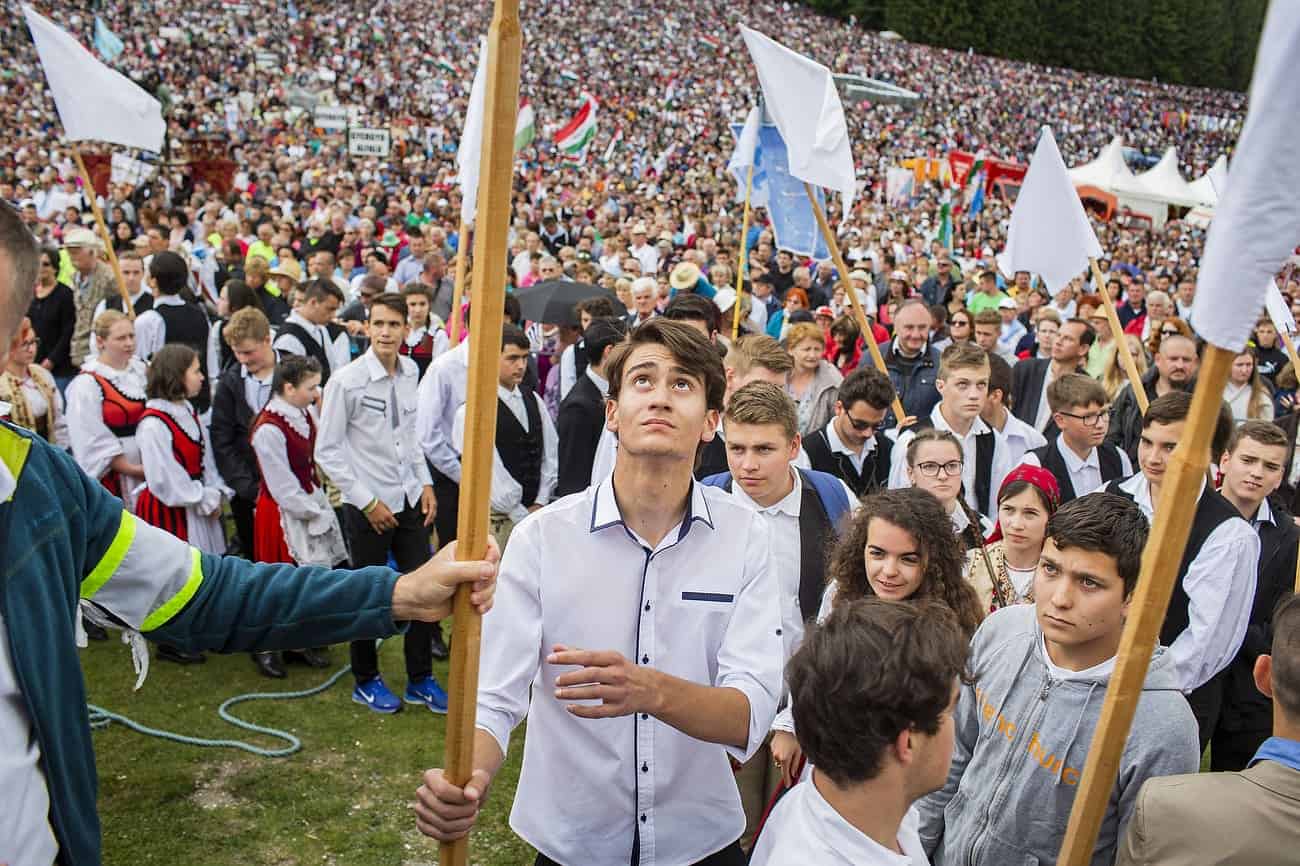
SUMULEU CIUC, ROMANIA - MAY 19: Hungarians from all over the world attending the early pilgrimage hold at Sumuleu Ciuc in Romania, as seen on May 19, 2018. Sumuleu Ciuc became a pilgrimage site in 1567, when Hungarian king John II Sigismund Zápolya wanted to convert the Székely population of the upper Csík to Protestantism. The Székelys refused to abandon the Catholic faith and resisted. A battle took place on a nearby field, on Saturday before Pentecost 1567, from which the Székelys emerged victorious. The monks saw this as a sign of the care of Virgin Mary, and since then, this event has been commemorated by a pilgrimage when the believers gather on Pentecost every year. Beside its religious importance, the pilgrimage has also become a community event demonstrating spiritual unity of Hungarian people living in and outside the historical region of Transylvania. Photography by Mugur Varzariu/Getty Images/Newsweek.
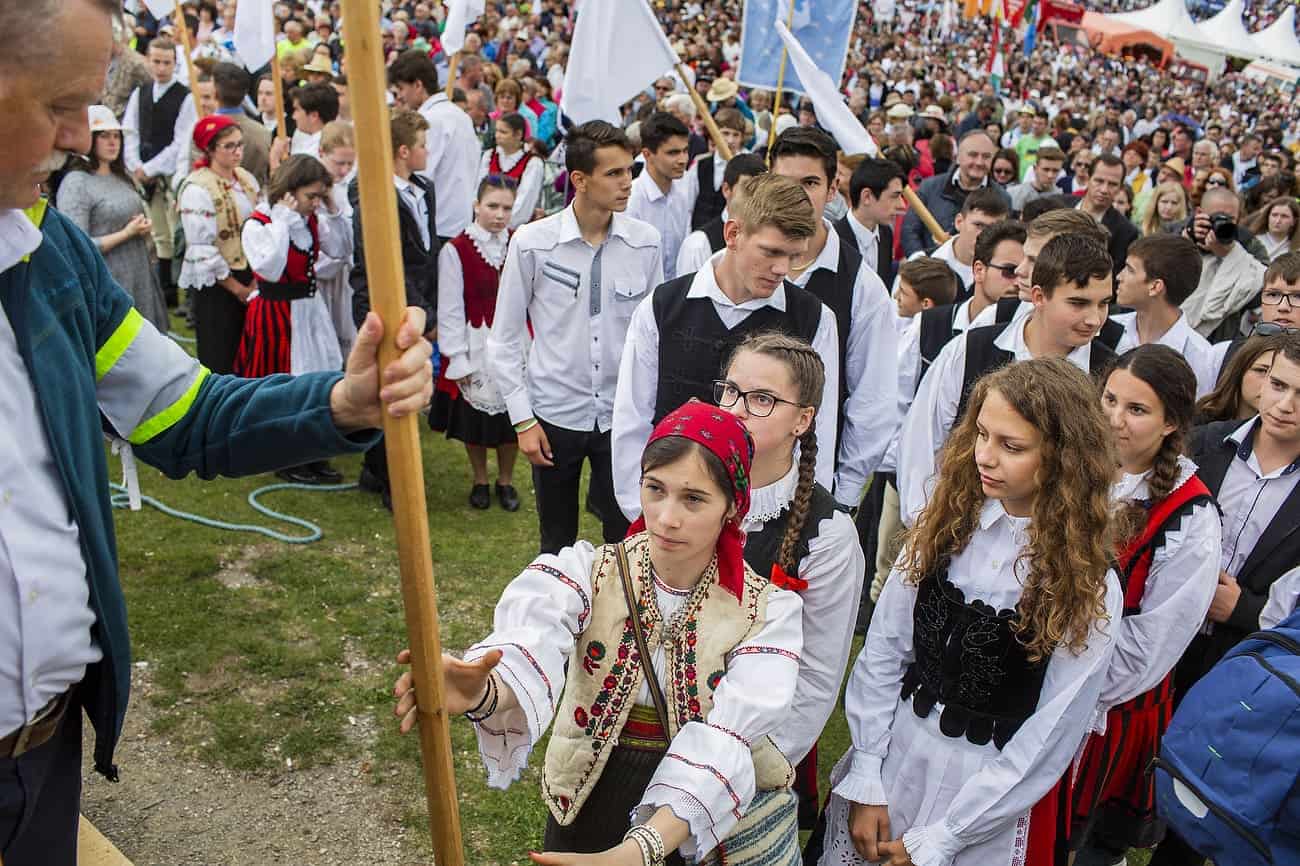
SUMULEU CIUC, ROMANIA - MAY 19: Hungarians from all over the world attending the early pilgrimage hold at Sumuleu Ciuc in Romania, as seen on May 19, 2018. Sumuleu Ciuc became a pilgrimage site in 1567, when Hungarian king John II Sigismund Zápolya wanted to convert the Székely population of the upper Csík to Protestantism. The Székelys refused to abandon the Catholic faith and resisted. A battle took place on a nearby field, on Saturday before Pentecost 1567, from which the Székelys emerged victorious. The monks saw this as a sign of the care of Virgin Mary, and since then, this event has been commemorated by a pilgrimage when the believers gather on Pentecost every year. Beside its religious importance, the pilgrimage has also become a community event demonstrating spiritual unity of Hungarian people living in and outside the historical region of Transylvania. Photography by Mugur Varzariu/Getty Images/Newsweek.
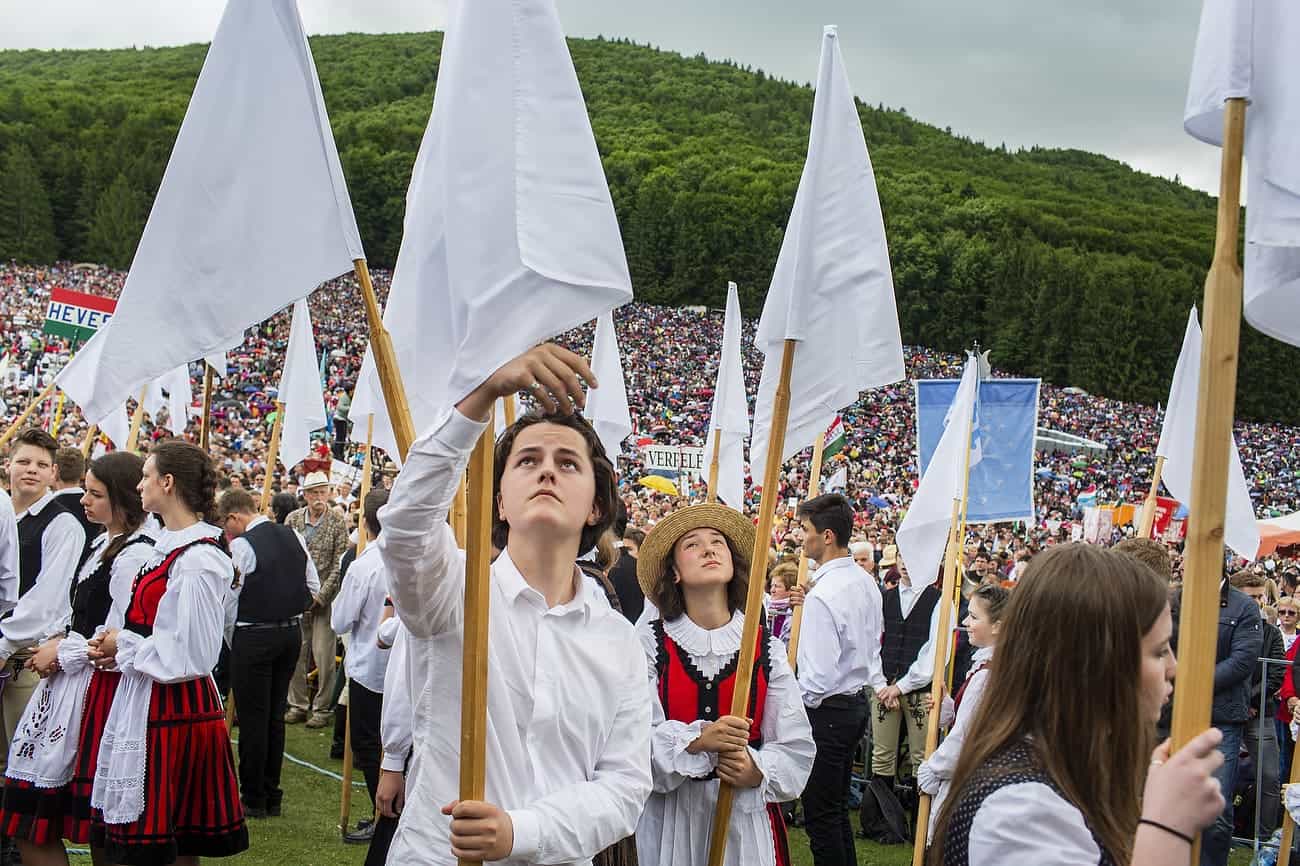
SUMULEU CIUC, ROMANIA - MAY 19: Hungarians from all over the world attending the early pilgrimage hold at Sumuleu Ciuc in Romania, as seen on May 19, 2018. Sumuleu Ciuc became a pilgrimage site in 1567, when Hungarian king John II Sigismund Zápolya wanted to convert the Székely population of the upper Csík to Protestantism. The Székelys refused to abandon the Catholic faith and resisted. A battle took place on a nearby field, on Saturday before Pentecost 1567, from which the Székelys emerged victorious. The monks saw this as a sign of the care of Virgin Mary, and since then, this event has been commemorated by a pilgrimage when the believers gather on Pentecost every year. Beside its religious importance, the pilgrimage has also become a community event demonstrating spiritual unity of Hungarian people living in and outside the historical region of Transylvania. Photography by Mugur Varzariu/Getty Images/Newsweek.
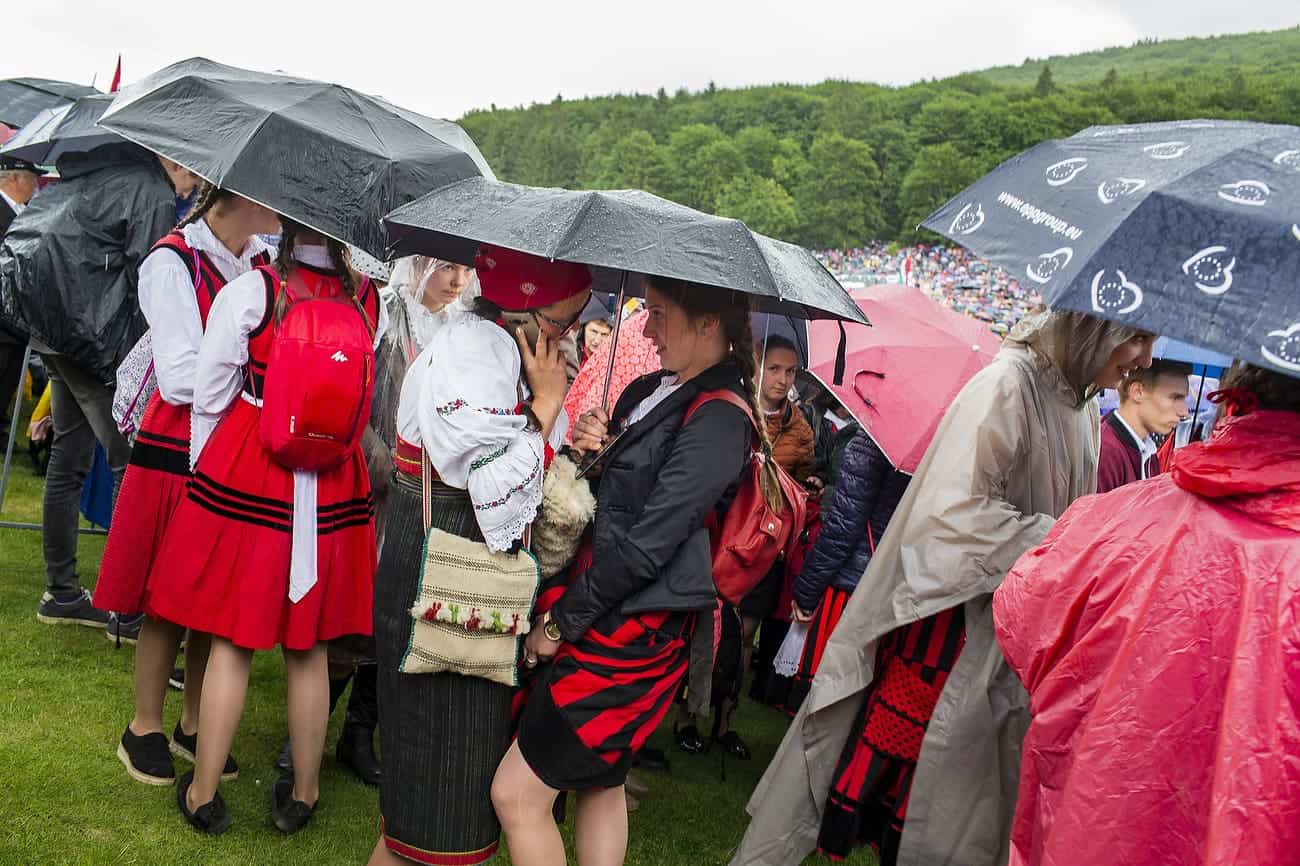
SUMULEU CIUC, ROMANIA - MAY 19: Hungarians from all over the world attending the early pilgrimage hold at Sumuleu Ciuc in Romania, as seen on May 19, 2018. Sumuleu Ciuc became a pilgrimage site in 1567, when Hungarian king John II Sigismund Zápolya wanted to convert the Székely population of the upper Csík to Protestantism. The Székelys refused to abandon the Catholic faith and resisted. A battle took place on a nearby field, on Saturday before Pentecost 1567, from which the Székelys emerged victorious. The monks saw this as a sign of the care of Virgin Mary, and since then, this event has been commemorated by a pilgrimage when the believers gather on Pentecost every year. Beside its religious importance, the pilgrimage has also become a community event demonstrating spiritual unity of Hungarian people living in and outside the historical region of Transylvania. Photography by Mugur Varzariu/Getty Images/Newsweek.
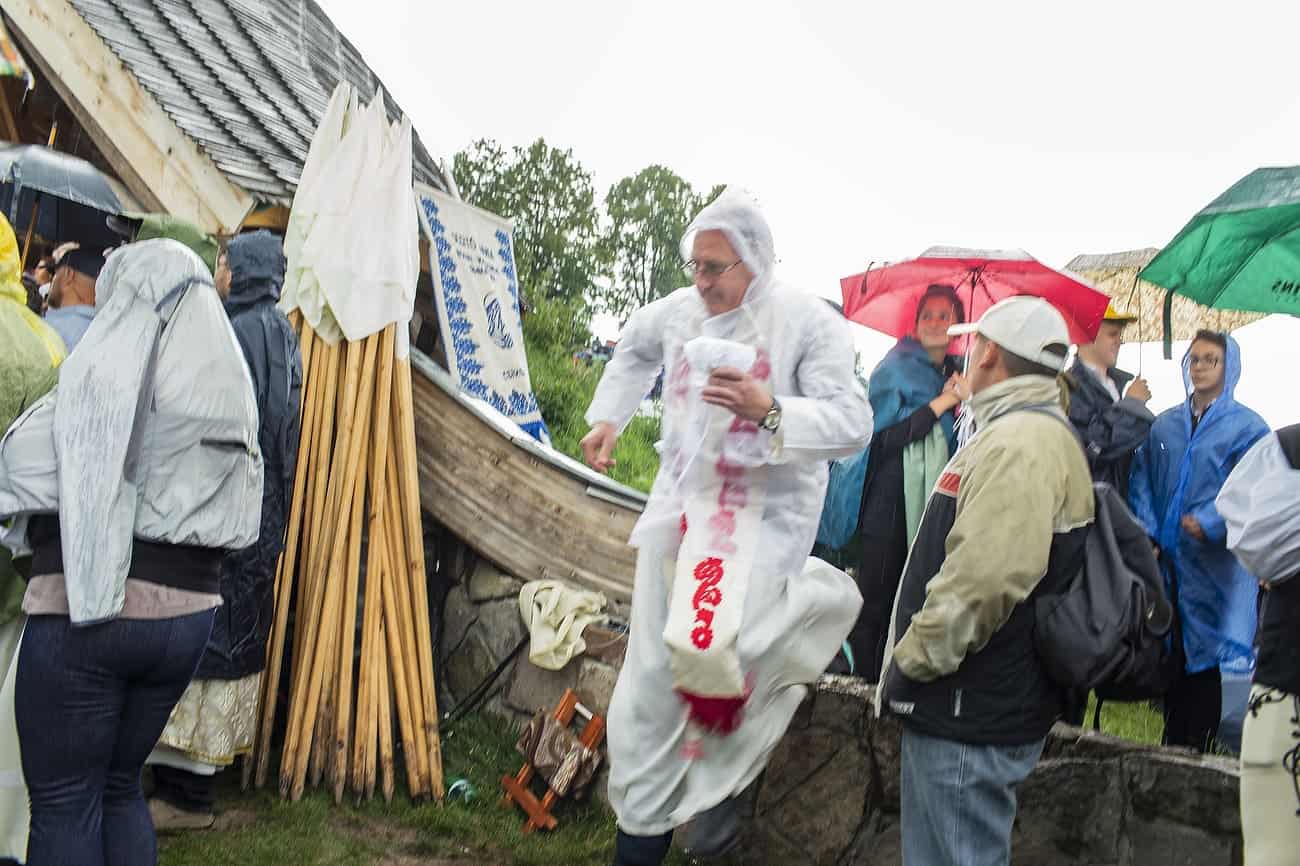
SUMULEU CIUC, ROMANIA - MAY 19: Hungarians from all over the world attending the early pilgrimage hold at Sumuleu Ciuc in Romania, as seen on May 19, 2018. Sumuleu Ciuc became a pilgrimage site in 1567, when Hungarian king John II Sigismund Zápolya wanted to convert the Székely population of the upper Csík to Protestantism. The Székelys refused to abandon the Catholic faith and resisted. A battle took place on a nearby field, on Saturday before Pentecost 1567, from which the Székelys emerged victorious. The monks saw this as a sign of the care of Virgin Mary, and since then, this event has been commemorated by a pilgrimage when the believers gather on Pentecost every year. Beside its religious importance, the pilgrimage has also become a community event demonstrating spiritual unity of Hungarian people living in and outside the historical region of Transylvania. Photography by Mugur Varzariu/Getty Images/Newsweek.
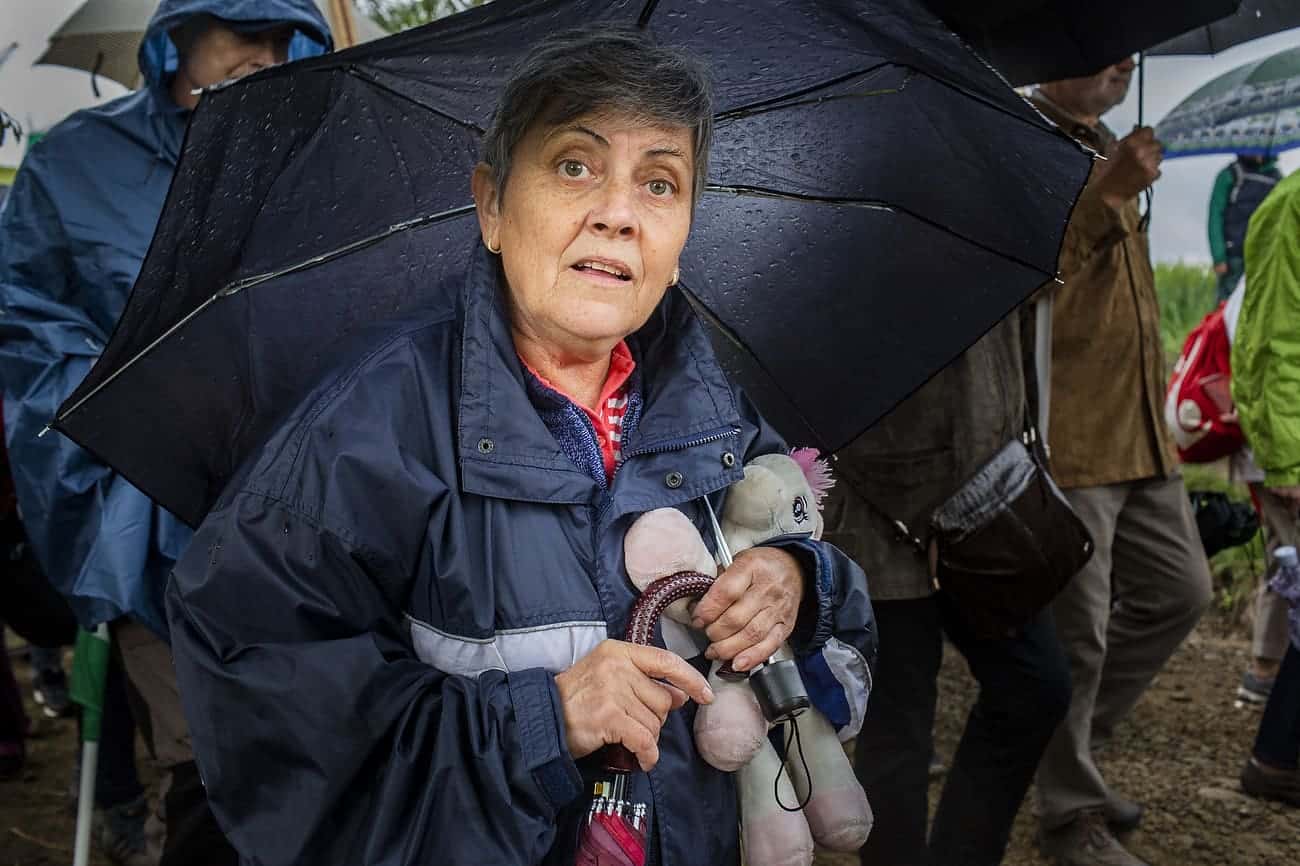
SUMULEU CIUC, ROMANIA - MAY 19: Hungarians from all over the world attending the early pilgrimage hold at Sumuleu Ciuc in Romania, as seen on May 19, 2018. Sumuleu Ciuc became a pilgrimage site in 1567, when Hungarian king John II Sigismund Zápolya wanted to convert the Székely population of the upper Csík to Protestantism. The Székelys refused to abandon the Catholic faith and resisted. A battle took place on a nearby field, on Saturday before Pentecost 1567, from which the Székelys emerged victorious. The monks saw this as a sign of the care of Virgin Mary, and since then, this event has been commemorated by a pilgrimage when the believers gather on Pentecost every year. Beside its religious importance, the pilgrimage has also become a community event demonstrating spiritual unity of Hungarian people living in and outside the historical region of Transylvania. Photography by Mugur Varzariu/Getty Images/Newsweek.

SUMULEU CIUC, ROMANIA - MAY 19: Hungarians from all over the world attending the early pilgrimage hold at Sumuleu Ciuc in Romania, as seen on May 19, 2018. Sumuleu Ciuc became a pilgrimage site in 1567, when Hungarian king John II Sigismund Zápolya wanted to convert the Székely population of the upper Csík to Protestantism. The Székelys refused to abandon the Catholic faith and resisted. A battle took place on a nearby field, on Saturday before Pentecost 1567, from which the Székelys emerged victorious. The monks saw this as a sign of the care of Virgin Mary, and since then, this event has been commemorated by a pilgrimage when the believers gather on Pentecost every year. Beside its religious importance, the pilgrimage has also become a community event demonstrating spiritual unity of Hungarian people living in and outside the historical region of Transylvania. Photography by Mugur Varzariu/Getty Images/Newsweek.

SUMULEU CIUC, ROMANIA - MAY 19: Hungarians from all over the world attending the early pilgrimage hold at Sumuleu Ciuc in Romania, as seen on May 19, 2018. Sumuleu Ciuc became a pilgrimage site in 1567, when Hungarian king John II Sigismund Zpolya wanted to convert the Szkely population of the upper Csk to Protestantism. The Szkelys refused to abandon the Catholic faith and resisted. A battle took place on a nearby field, on Saturday before Pentecost 1567, from which the Szkelys emerged victorious. The monks saw this as a sign of the care of Virgin Mary, and since then, this event has been commemorated by a pilgrimage when the believers gather on Pentecost every year. Beside its religious importance, the pilgrimage has also become a community event demonstrating spiritual unity of Hungarian people living in and outside the historical region of Transylvania. Photography by Mugur Varzariu/Getty Images/Newsweek.
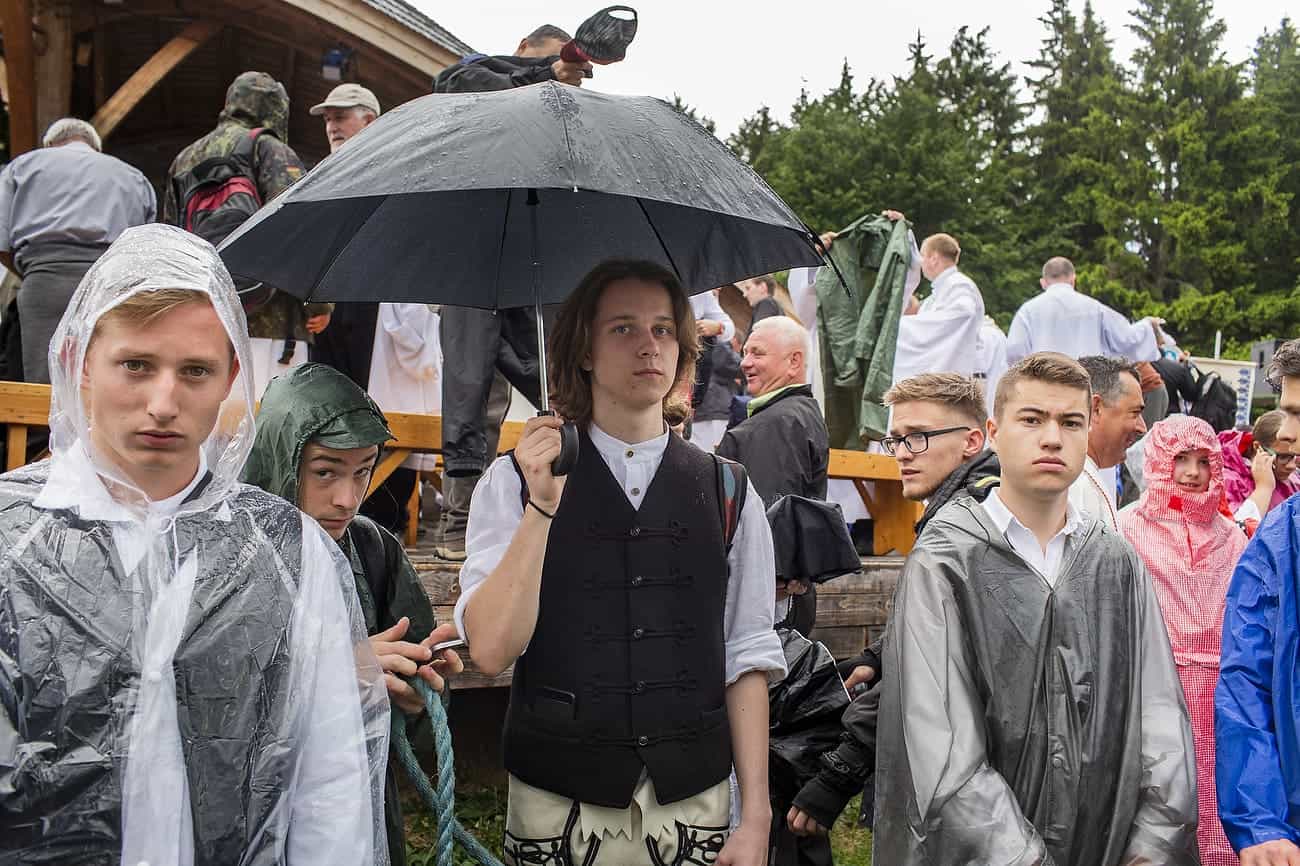
SUMULEU CIUC, ROMANIA - MAY 19: Hungarians from all over the world attending the early pilgrimage hold at Sumuleu Ciuc in Romania, as seen on May 19, 2018. Sumuleu Ciuc became a pilgrimage site in 1567, when Hungarian king John II Sigismund Zápolya wanted to convert the Székely population of the upper Csík to Protestantism. The Székelys refused to abandon the Catholic faith and resisted. A battle took place on a nearby field, on Saturday before Pentecost 1567, from which the Székelys emerged victorious. The monks saw this as a sign of the care of Virgin Mary, and since then, this event has been commemorated by a pilgrimage when the believers gather on Pentecost every year. Beside its religious importance, the pilgrimage has also become a community event demonstrating spiritual unity of Hungarian people living in and outside the historical region of Transylvania. Photography by Mugur Varzariu/Getty Images/Newsweek.
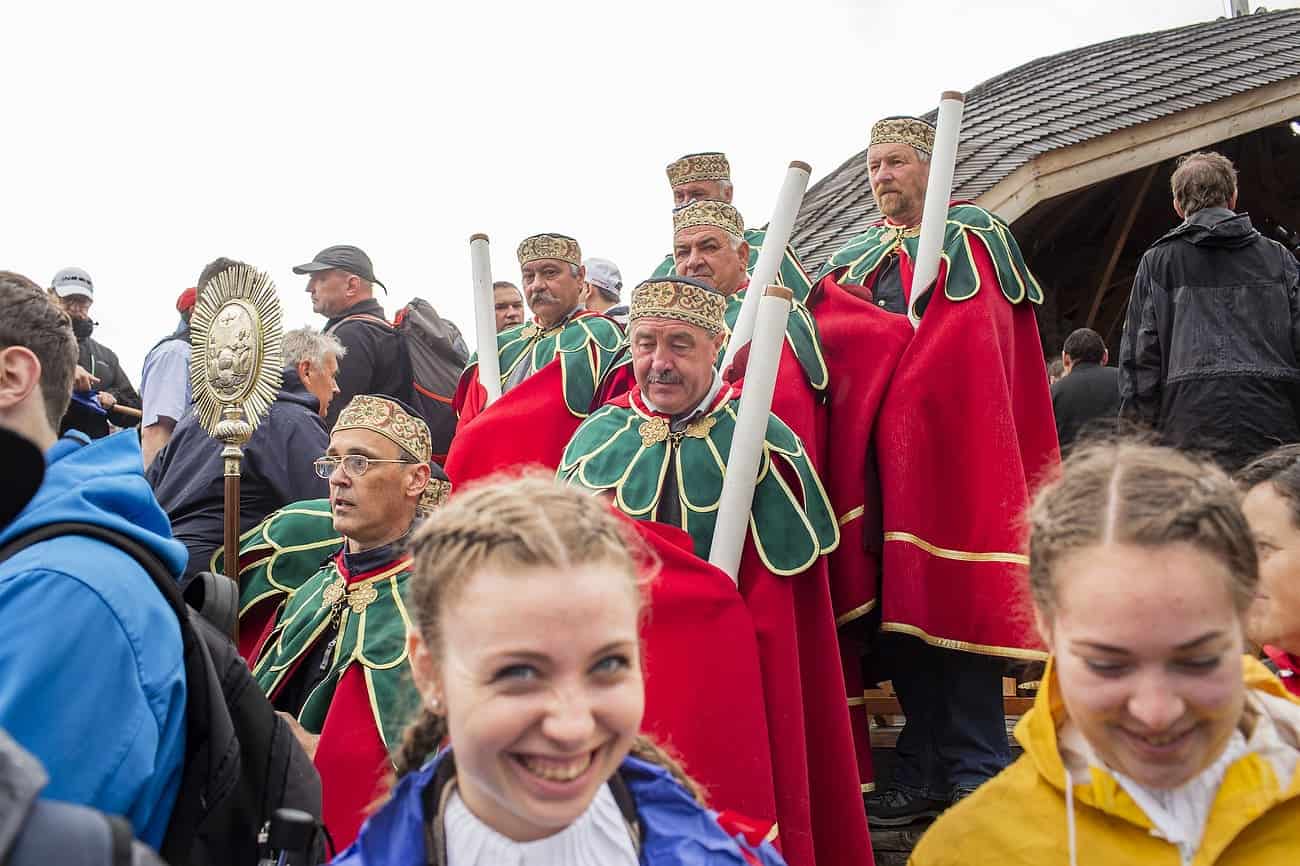
SUMULEU CIUC, ROMANIA - MAY 19: Hungarians from all over the world attending the early pilgrimage hold at Sumuleu Ciuc in Romania, as seen on May 19, 2018. Sumuleu Ciuc became a pilgrimage site in 1567, when Hungarian king John II Sigismund Zápolya wanted to convert the Székely population of the upper Csík to Protestantism. The Székelys refused to abandon the Catholic faith and resisted. A battle took place on a nearby field, on Saturday before Pentecost 1567, from which the Székelys emerged victorious. The monks saw this as a sign of the care of Virgin Mary, and since then, this event has been commemorated by a pilgrimage when the believers gather on Pentecost every year. Beside its religious importance, the pilgrimage has also become a community event demonstrating spiritual unity of Hungarian people living in and outside the historical region of Transylvania. Photography by Mugur Varzariu/Getty Images/Newsweek.
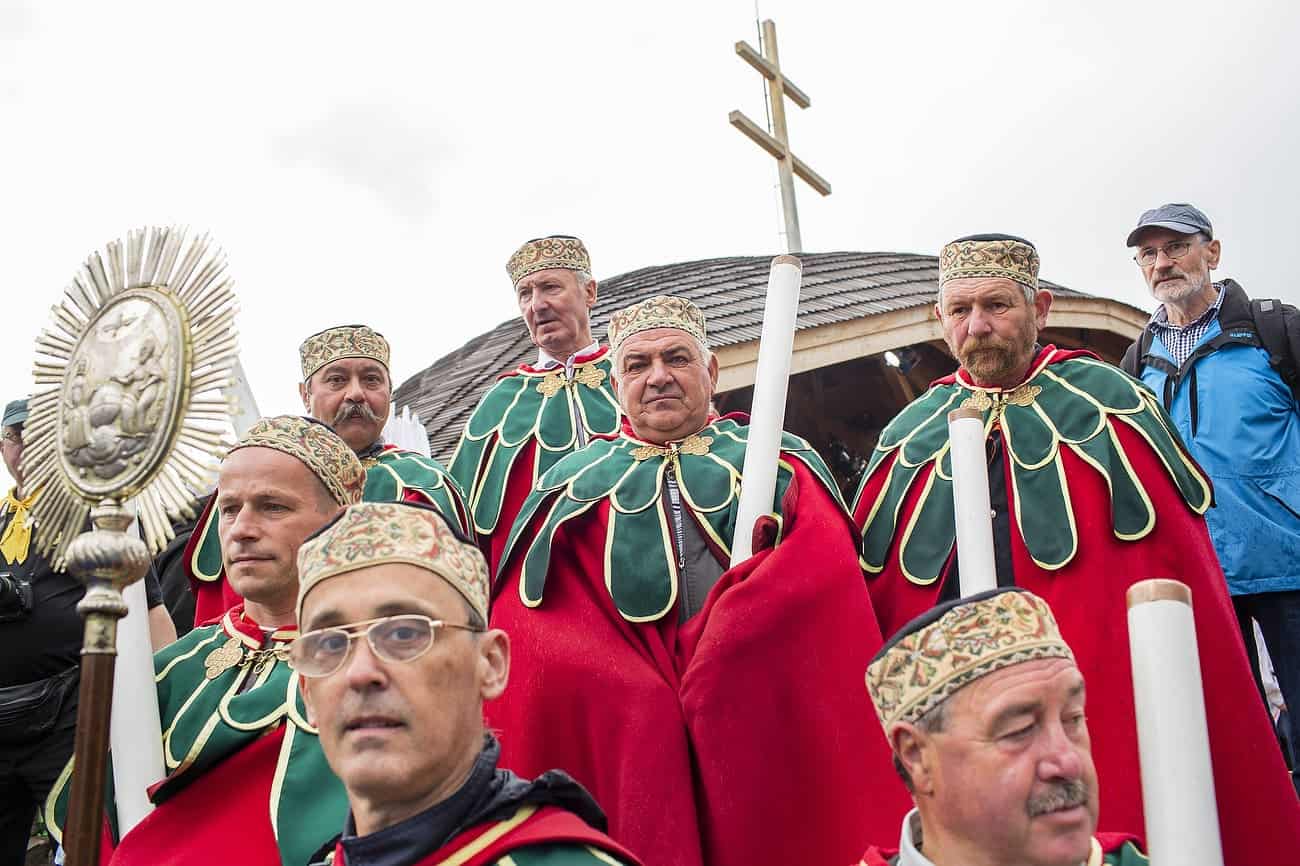
SUMULEU CIUC, ROMANIA - MAY 19: Hungarians from all over the world attending the early pilgrimage hold at Sumuleu Ciuc in Romania, as seen on May 19, 2018. Sumuleu Ciuc became a pilgrimage site in 1567, when Hungarian king John II Sigismund Zápolya wanted to convert the Székely population of the upper Csík to Protestantism. The Székelys refused to abandon the Catholic faith and resisted. A battle took place on a nearby field, on Saturday before Pentecost 1567, from which the Székelys emerged victorious. The monks saw this as a sign of the care of Virgin Mary, and since then, this event has been commemorated by a pilgrimage when the believers gather on Pentecost every year. Beside its religious importance, the pilgrimage has also become a community event demonstrating spiritual unity of Hungarian people living in and outside the historical region of Transylvania. Photography by Mugur Varzariu/Getty Images/Newsweek.
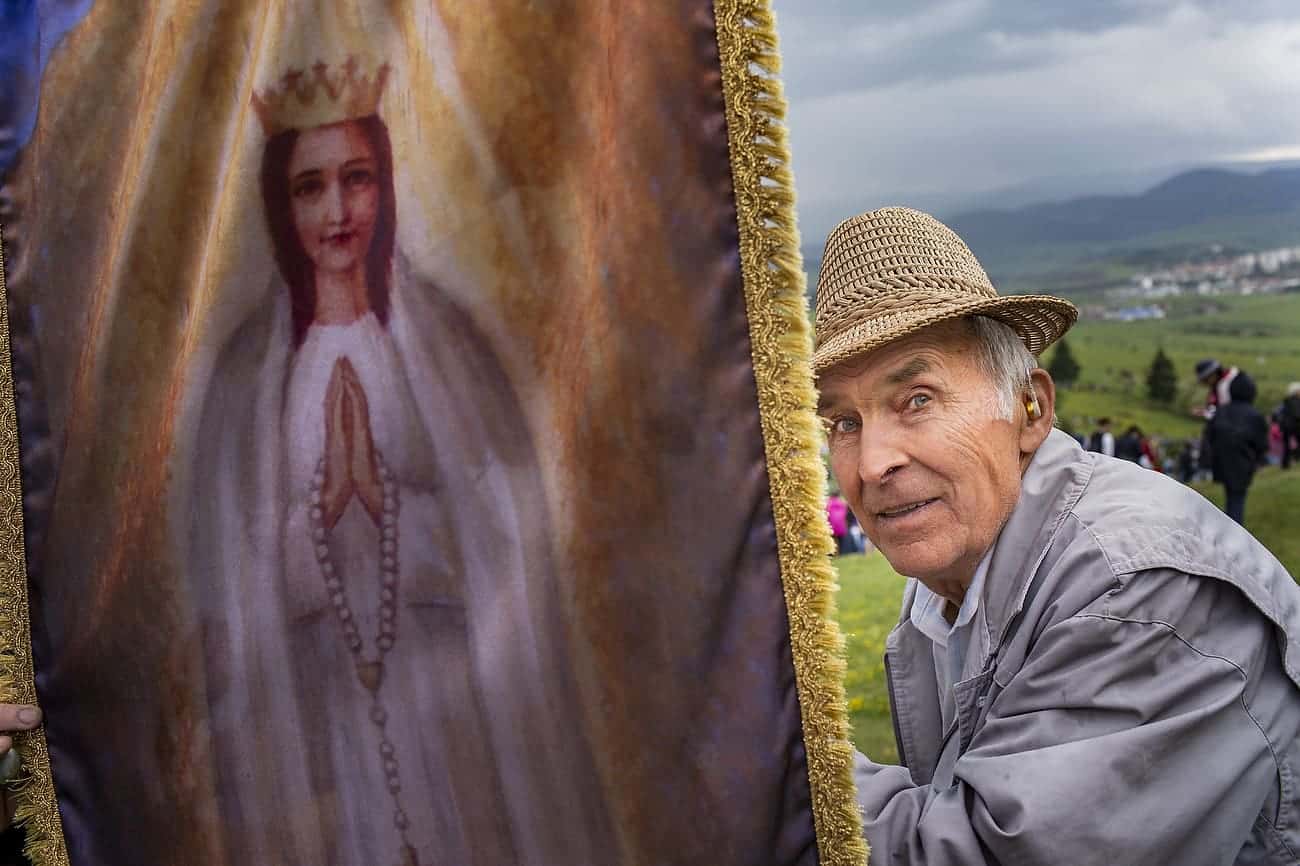
SUMULEU CIUC, ROMANIA - MAY 19: Hungarians from all over the world attending the early pilgrimage hold at Sumuleu Ciuc in Romania, as seen on May 19, 2018. Sumuleu Ciuc became a pilgrimage site in 1567, when Hungarian king John II Sigismund Zpolya wanted to convert the Szkely population of the upper Csk to Protestantism. The Szkelys refused to abandon the Catholic faith and resisted. A battle took place on a nearby field, on Saturday before Pentecost 1567, from which the Szkelys emerged victorious. The monks saw this as a sign of the care of Virgin Mary, and since then, this event has been commemorated by a pilgrimage when the believers gather on Pentecost every year. Beside its religious importance, the pilgrimage has also become a community event demonstrating spiritual unity of Hungarian people living in and outside the historical region of Transylvania. Photography by Mugur Varzariu/Getty Images/Newsweek.
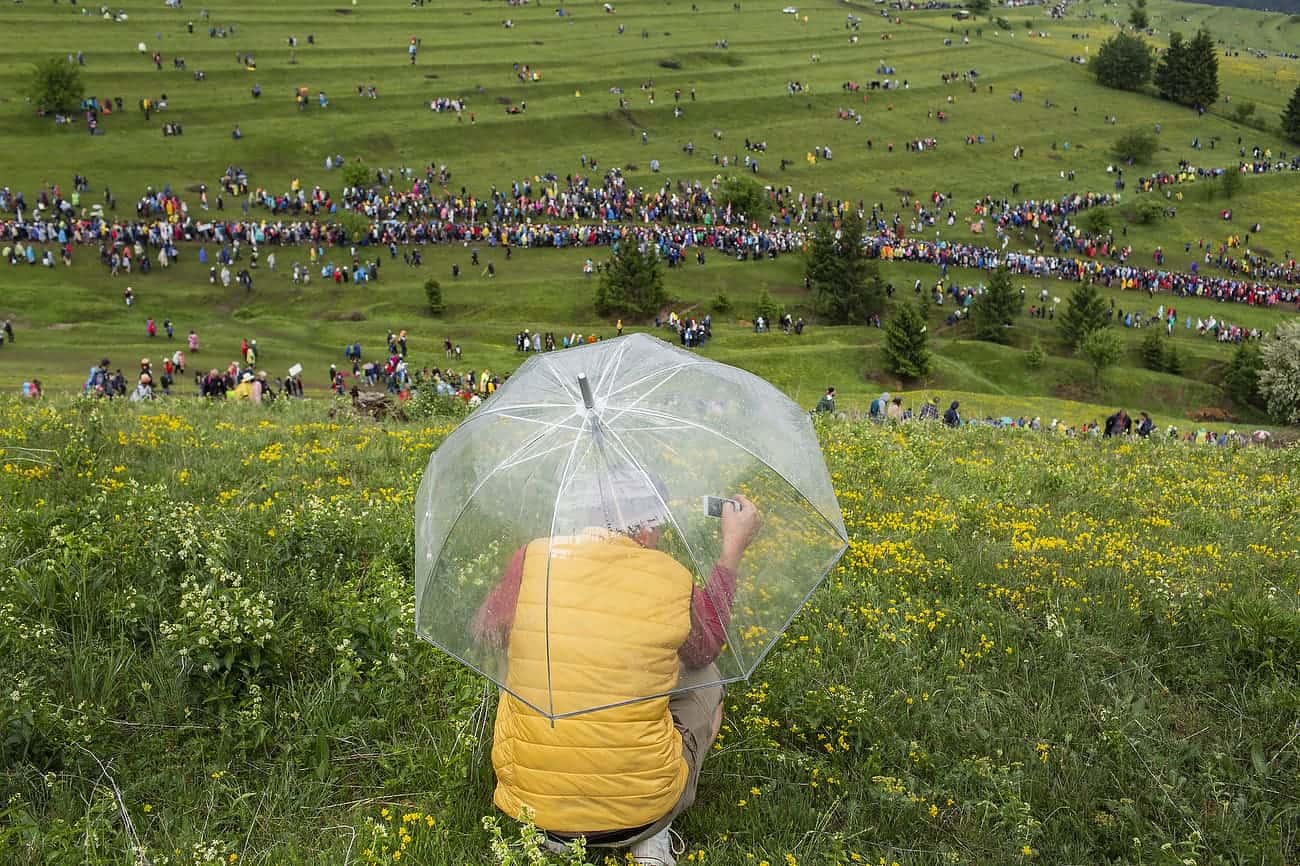
SUMULEU CIUC, ROMANIA - MAY 19: Hungarians from all over the world attending the early pilgrimage hold at Sumuleu Ciuc in Romania, as seen on May 19, 2018. Sumuleu Ciuc became a pilgrimage site in 1567, when Hungarian king John II Sigismund Zápolya wanted to convert the Székely population of the upper Csík to Protestantism. The Székelys refused to abandon the Catholic faith and resisted. A battle took place on a nearby field, on Saturday before Pentecost 1567, from which the Székelys emerged victorious. The monks saw this as a sign of the care of Virgin Mary, and since then, this event has been commemorated by a pilgrimage when the believers gather on Pentecost every year. Beside its religious importance, the pilgrimage has also become a community event demonstrating spiritual unity of Hungarian people living in and outside the historical region of Transylvania. Photography by Mugur Varzariu/Getty Images/Newsweek.
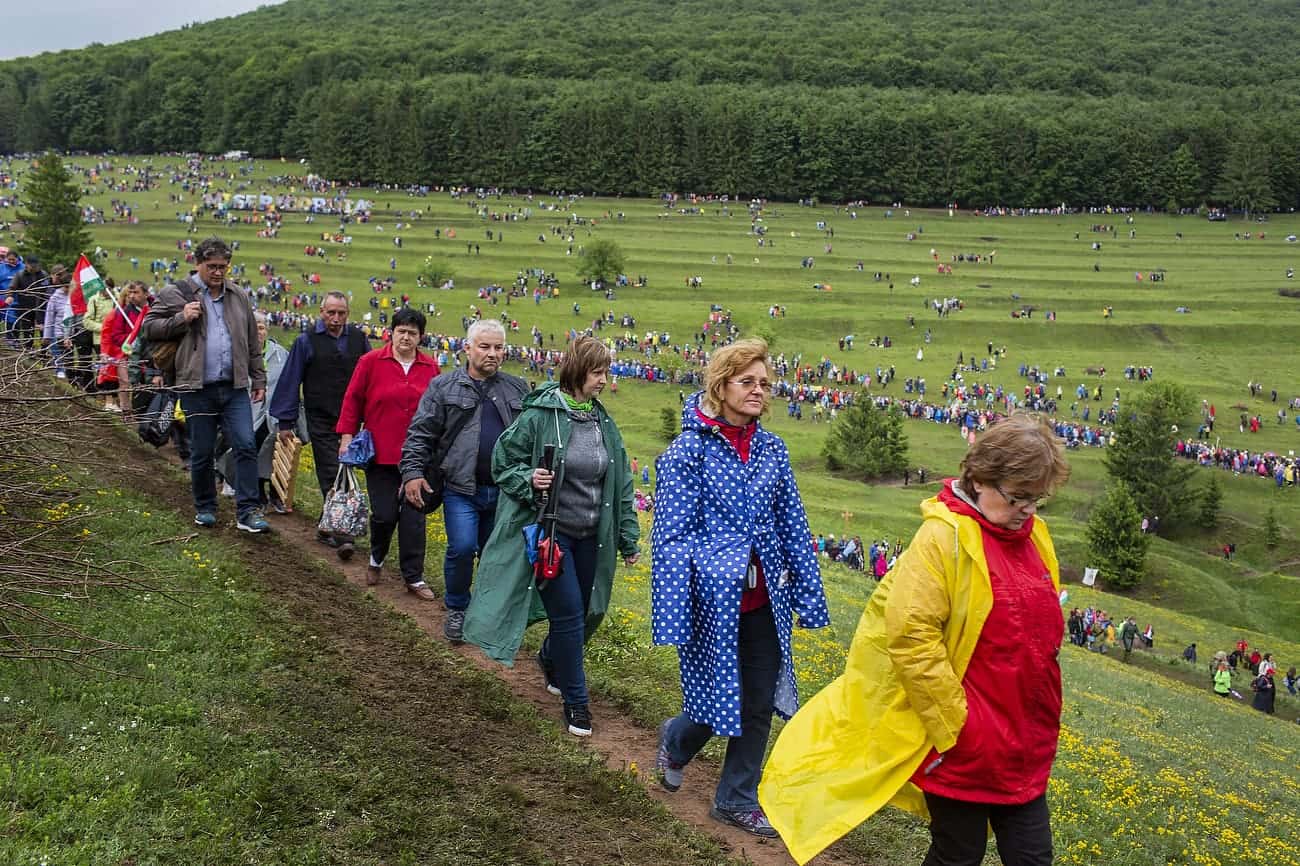
SUMULEU CIUC, ROMANIA - MAY 19: Hungarians from all over the world attending the early pilgrimage hold at Sumuleu Ciuc in Romania, as seen on May 19, 2018. Sumuleu Ciuc became a pilgrimage site in 1567, when Hungarian king John II Sigismund Zápolya wanted to convert the Székely population of the upper Csík to Protestantism. The Székelys refused to abandon the Catholic faith and resisted. A battle took place on a nearby field, on Saturday before Pentecost 1567, from which the Székelys emerged victorious. The monks saw this as a sign of the care of Virgin Mary, and since then, this event has been commemorated by a pilgrimage when the believers gather on Pentecost every year. Beside its religious importance, the pilgrimage has also become a community event demonstrating spiritual unity of Hungarian people living in and outside the historical region of Transylvania. Photography by Mugur Varzariu/Getty Images/Newsweek.
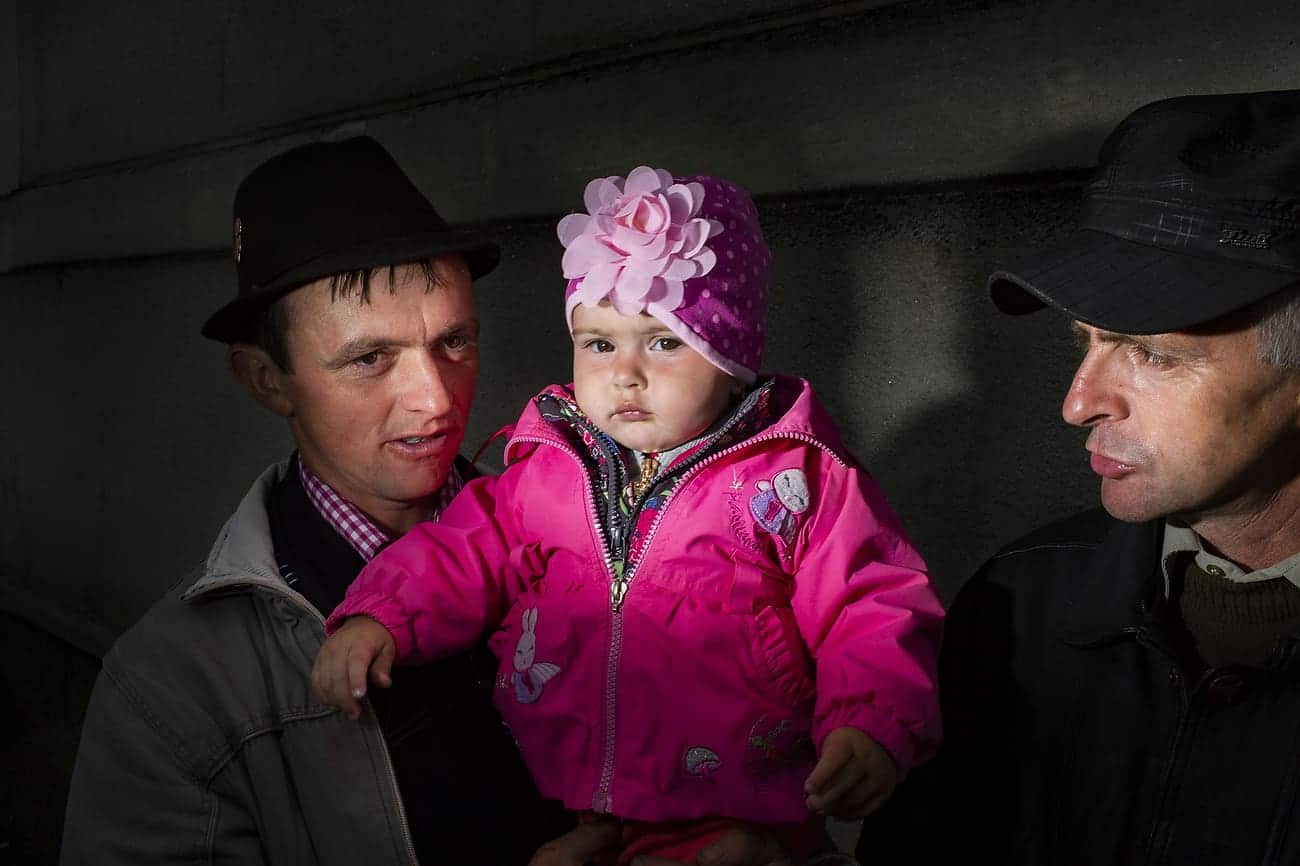
SUMULEU CIUC, ROMANIA - MAY 19: Hungarians from all over the world attending the early pilgrimage hold at Sumuleu Ciuc in Romania, as seen on May 19, 2018. Sumuleu Ciuc became a pilgrimage site in 1567, when Hungarian king John II Sigismund Zápolya wanted to convert the Székely population of the upper Csík to Protestantism. The Székelys refused to abandon the Catholic faith and resisted. A battle took place on a nearby field, on Saturday before Pentecost 1567, from which the Székelys emerged victorious. The monks saw this as a sign of the care of Virgin Mary, and since then, this event has been commemorated by a pilgrimage when the believers gather on Pentecost every year. Beside its religious importance, the pilgrimage has also become a community event demonstrating spiritual unity of Hungarian people living in and outside the historical region of Transylvania. Photography by Mugur Varzariu/Getty Images/Newsweek.
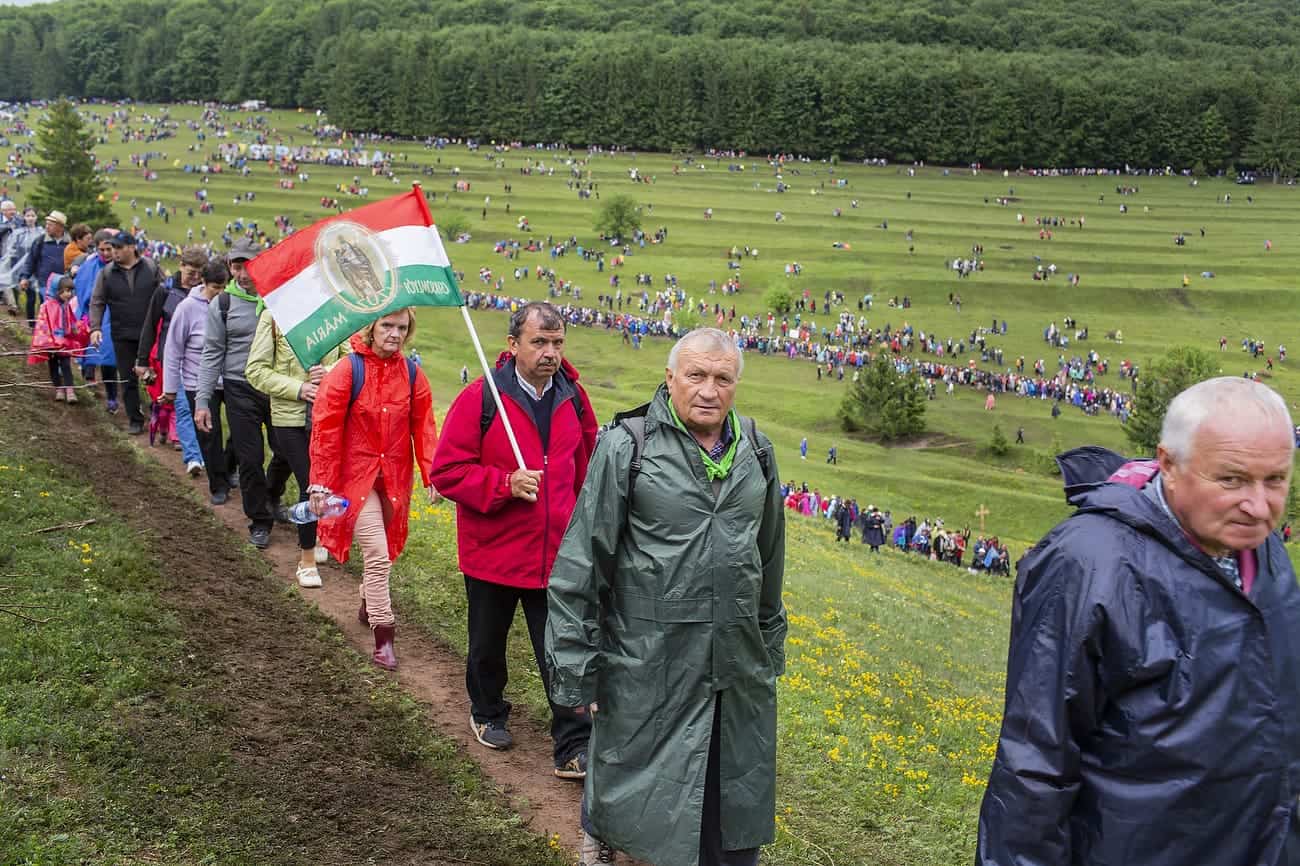
SUMULEU CIUC, ROMANIA - MAY 19: Hungarians from all over the world attending the early pilgrimage hold at Sumuleu Ciuc in Romania, as seen on May 19, 2018. Sumuleu Ciuc became a pilgrimage site in 1567, when Hungarian king John II Sigismund Zápolya wanted to convert the Székely population of the upper Csík to Protestantism. The Székelys refused to abandon the Catholic faith and resisted. A battle took place on a nearby field, on Saturday before Pentecost 1567, from which the Székelys emerged victorious. The monks saw this as a sign of the care of Virgin Mary, and since then, this event has been commemorated by a pilgrimage when the believers gather on Pentecost every year. Beside its religious importance, the pilgrimage has also become a community event demonstrating spiritual unity of Hungarian people living in and outside the historical region of Transylvania. Photography by Mugur Varzariu/Getty Images/Newsweek.
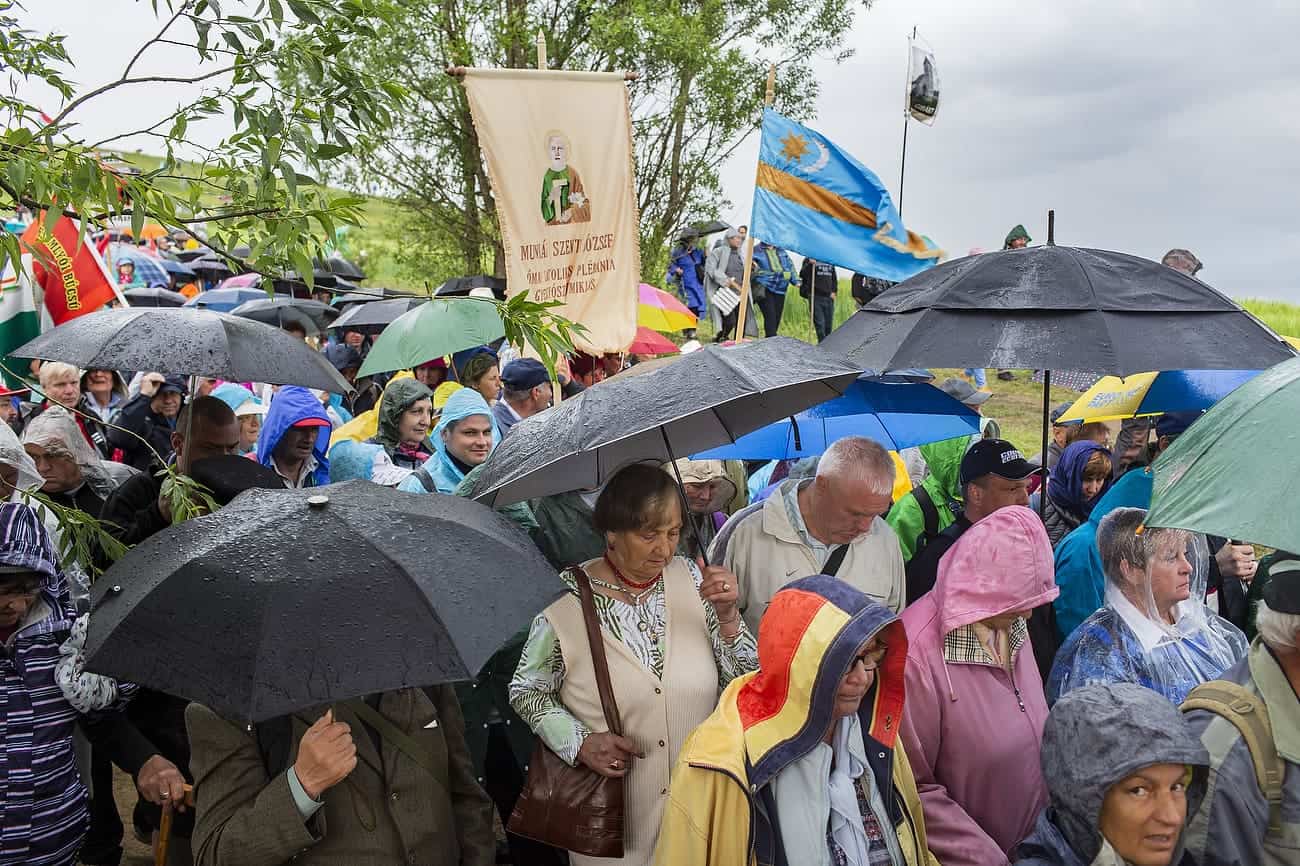
SUMULEU CIUC, ROMANIA - MAY 19: Hungarians from all over the world attending the early pilgrimage hold at Sumuleu Ciuc in Romania, as seen on May 19, 2018. Sumuleu Ciuc became a pilgrimage site in 1567, when Hungarian king John II Sigismund Zápolya wanted to convert the Székely population of the upper Csík to Protestantism. The Székelys refused to abandon the Catholic faith and resisted. A battle took place on a nearby field, on Saturday before Pentecost 1567, from which the Székelys emerged victorious. The monks saw this as a sign of the care of Virgin Mary, and since then, this event has been commemorated by a pilgrimage when the believers gather on Pentecost every year. Beside its religious importance, the pilgrimage has also become a community event demonstrating spiritual unity of Hungarian people living in and outside the historical region of Transylvania. Photography by Mugur Varzariu/Getty Images/Newsweek.
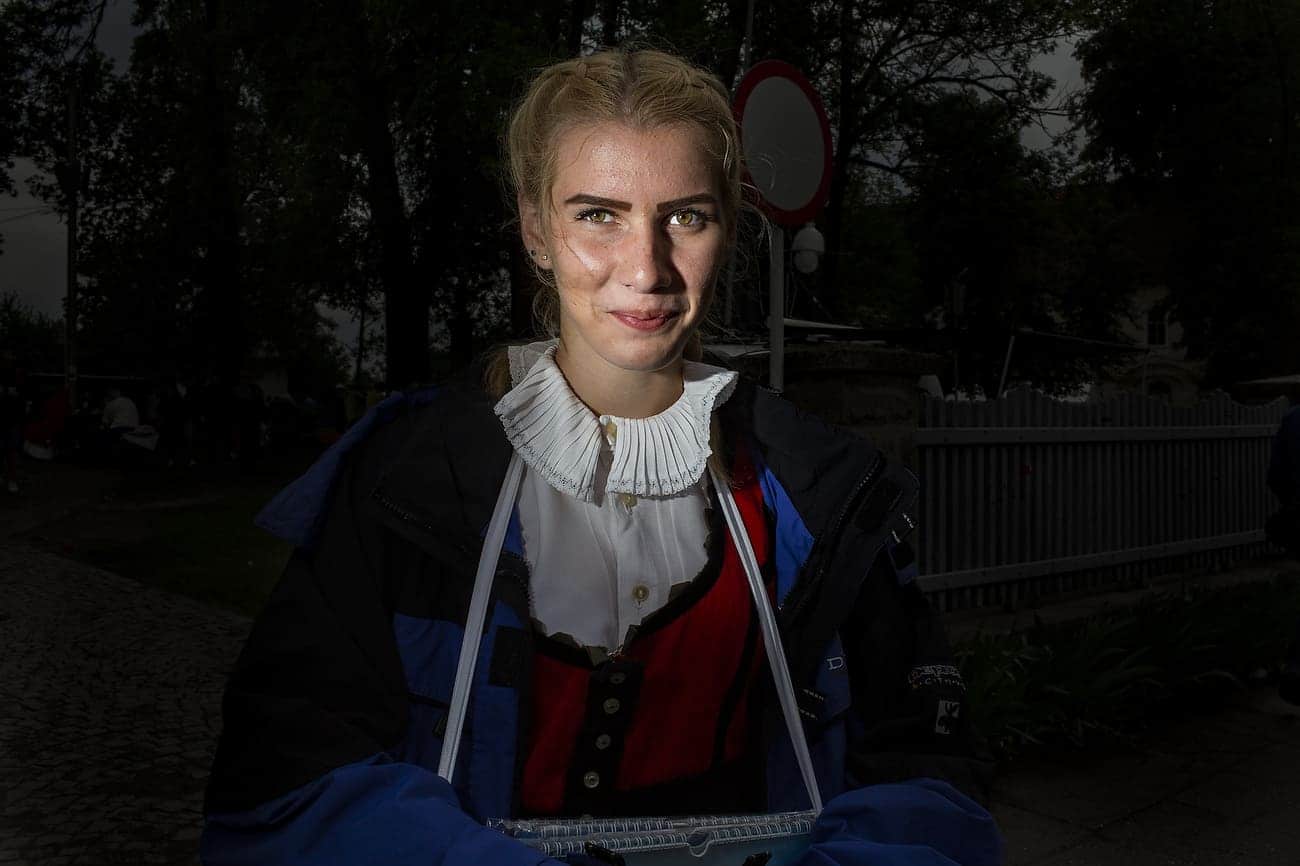
SUMULEU CIUC, ROMANIA - MAY 19: Hungarians from all over the world attending the early pilgrimage hold at Sumuleu Ciuc in Romania, as seen on May 19, 2018. Sumuleu Ciuc became a pilgrimage site in 1567, when Hungarian king John II Sigismund Zpolya wanted to convert the Szkely population of the upper Csk to Protestantism. The Szkelys refused to abandon the Catholic faith and resisted. A battle took place on a nearby field, on Saturday before Pentecost 1567, from which the Szkelys emerged victorious. The monks saw this as a sign of the care of Virgin Mary, and since then, this event has been commemorated by a pilgrimage when the believers gather on Pentecost every year. Beside its religious importance, the pilgrimage has also become a community event demonstrating spiritual unity of Hungarian people living in and outside the historical region of Transylvania. Photography by Mugur Varzariu/Getty Images/Newsweek.
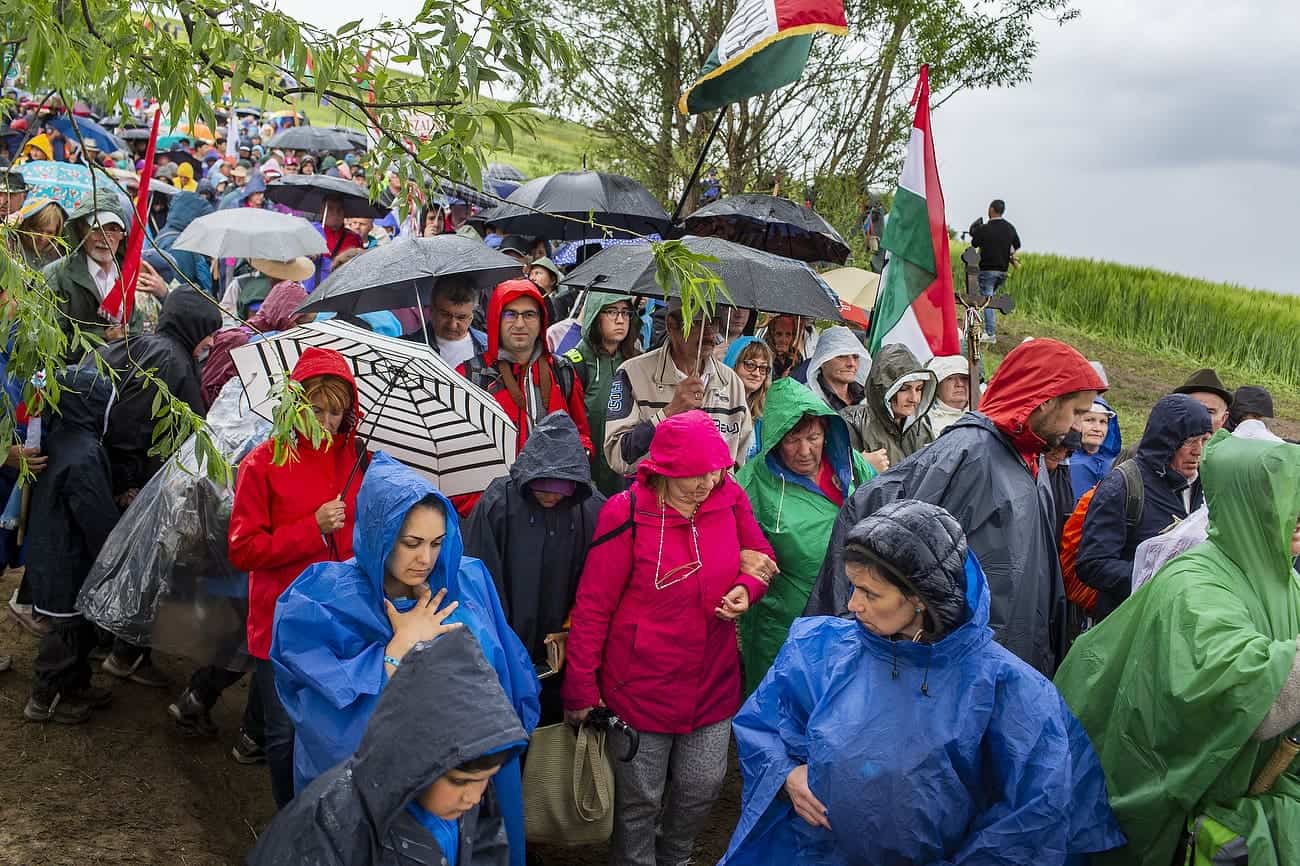
SUMULEU CIUC, ROMANIA - MAY 19: Hungarians from all over the world attending the early pilgrimage hold at Sumuleu Ciuc in Romania, as seen on May 19, 2018. Sumuleu Ciuc became a pilgrimage site in 1567, when Hungarian king John II Sigismund Zápolya wanted to convert the Székely population of the upper Csík to Protestantism. The Székelys refused to abandon the Catholic faith and resisted. A battle took place on a nearby field, on Saturday before Pentecost 1567, from which the Székelys emerged victorious. The monks saw this as a sign of the care of Virgin Mary, and since then, this event has been commemorated by a pilgrimage when the believers gather on Pentecost every year. Beside its religious importance, the pilgrimage has also become a community event demonstrating spiritual unity of Hungarian people living in and outside the historical region of Transylvania. Photography by Mugur Varzariu/Getty Images/Newsweek.
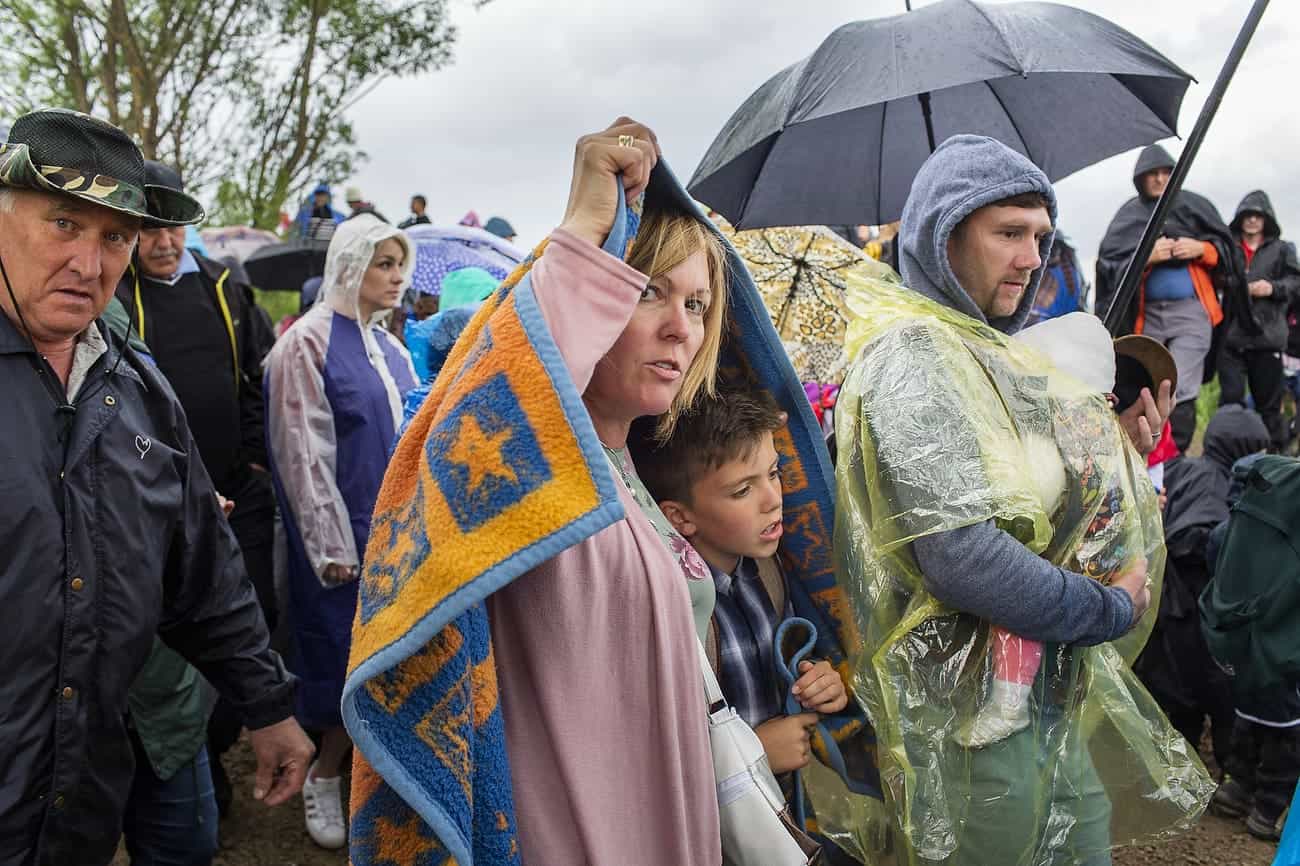
SUMULEU CIUC, ROMANIA - MAY 19: Hungarians from all over the world attending the early pilgrimage hold at Sumuleu Ciuc in Romania, as seen on May 19, 2018. Sumuleu Ciuc became a pilgrimage site in 1567, when Hungarian king John II Sigismund Zápolya wanted to convert the Székely population of the upper Csík to Protestantism. The Székelys refused to abandon the Catholic faith and resisted. A battle took place on a nearby field, on Saturday before Pentecost 1567, from which the Székelys emerged victorious. The monks saw this as a sign of the care of Virgin Mary, and since then, this event has been commemorated by a pilgrimage when the believers gather on Pentecost every year. Beside its religious importance, the pilgrimage has also become a community event demonstrating spiritual unity of Hungarian people living in and outside the historical region of Transylvania. Photography by Mugur Varzariu/Getty Images/Newsweek.
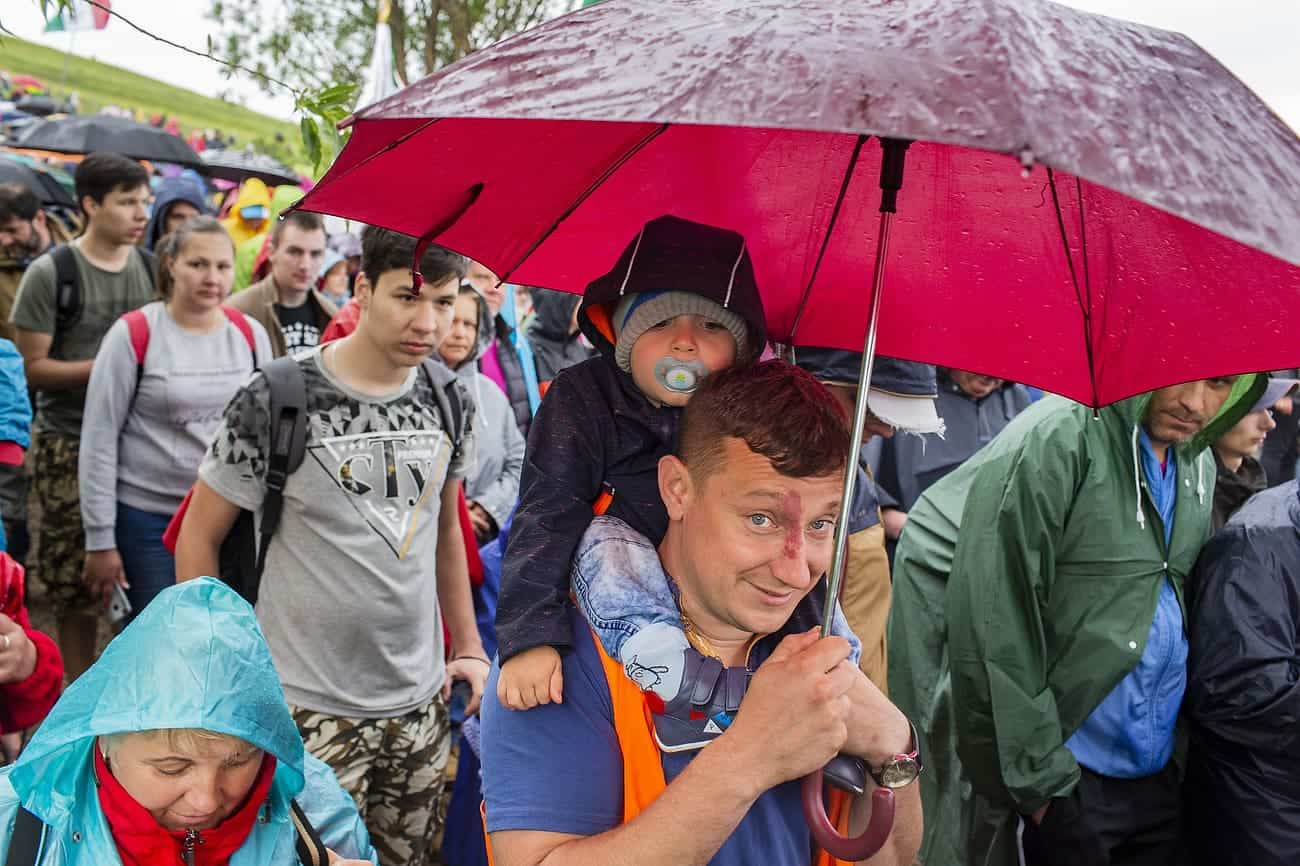
SUMULEU CIUC, ROMANIA - MAY 19: Hungarians from all over the world attending the early pilgrimage hold at Sumuleu Ciuc in Romania, as seen on May 19, 2018. Sumuleu Ciuc became a pilgrimage site in 1567, when Hungarian king John II Sigismund Zápolya wanted to convert the Székely population of the upper Csík to Protestantism. The Székelys refused to abandon the Catholic faith and resisted. A battle took place on a nearby field, on Saturday before Pentecost 1567, from which the Székelys emerged victorious. The monks saw this as a sign of the care of Virgin Mary, and since then, this event has been commemorated by a pilgrimage when the believers gather on Pentecost every year. Beside its religious importance, the pilgrimage has also become a community event demonstrating spiritual unity of Hungarian people living in and outside the historical region of Transylvania. Photography by Mugur Varzariu/Getty Images/Newsweek.
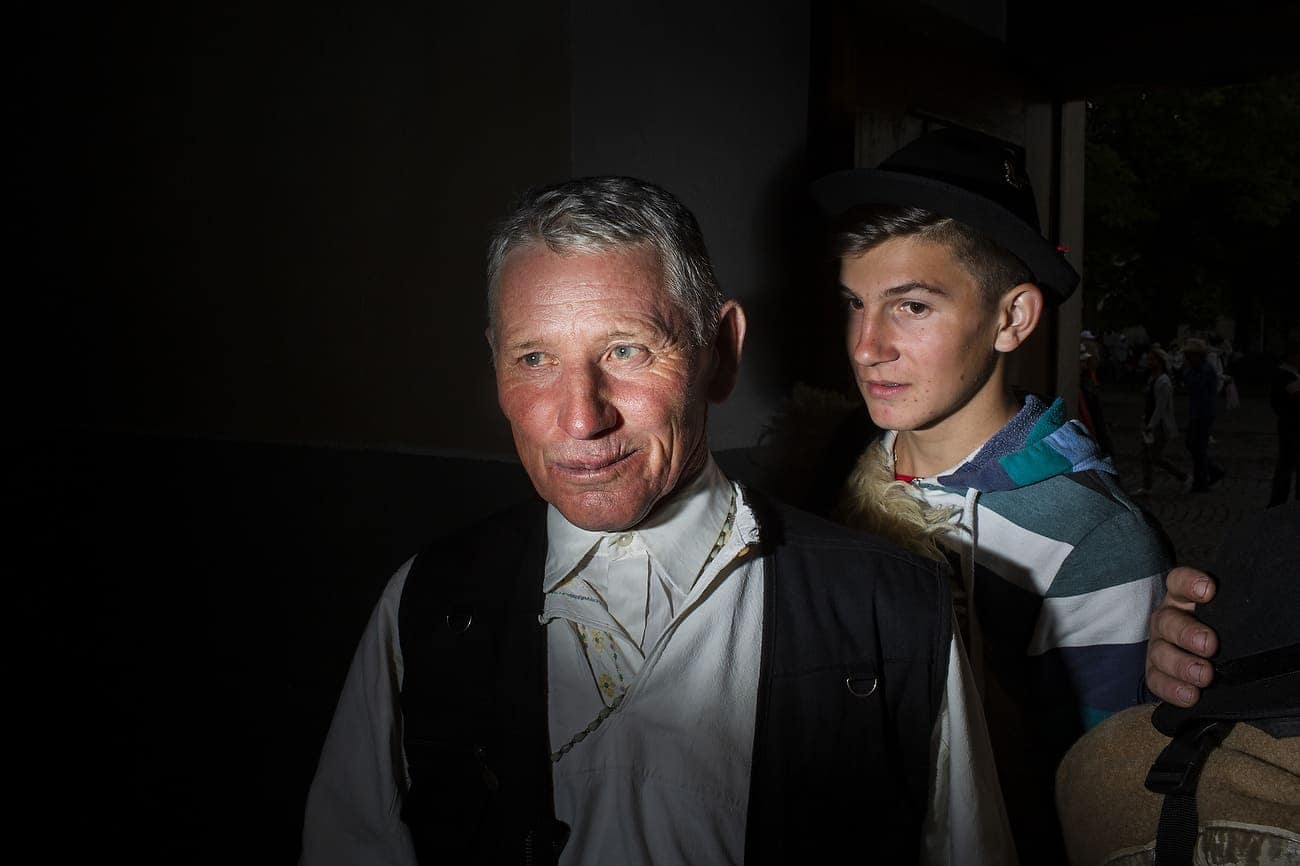
SUMULEU CIUC, ROMANIA - MAY 19: Hungarians from all over the world attending the early pilgrimage hold at Sumuleu Ciuc in Romania, as seen on May 19, 2018. Sumuleu Ciuc became a pilgrimage site in 1567, when Hungarian king John II Sigismund Zápolya wanted to convert the Székely population of the upper Csík to Protestantism. The Székelys refused to abandon the Catholic faith and resisted. A battle took place on a nearby field, on Saturday before Pentecost 1567, from which the Székelys emerged victorious. The monks saw this as a sign of the care of Virgin Mary, and since then, this event has been commemorated by a pilgrimage when the believers gather on Pentecost every year. Beside its religious importance, the pilgrimage has also become a community event demonstrating spiritual unity of Hungarian people living in and outside the historical region of Transylvania. Photography by Mugur Varzariu/Getty Images/Newsweek.
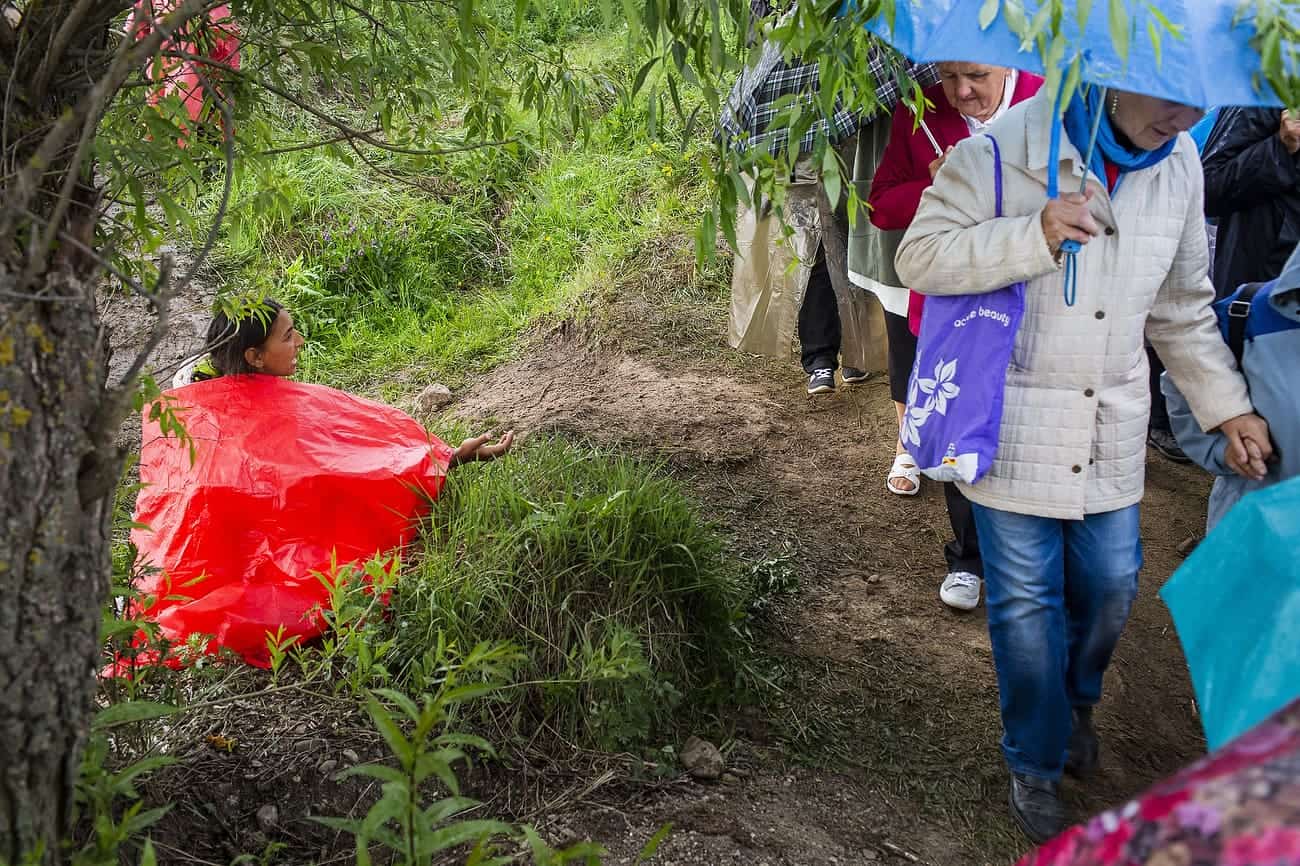
SUMULEU CIUC, ROMANIA - MAY 19: Hungarians from all over the world attending the early pilgrimage hold at Sumuleu Ciuc in Romania, as seen on May 19, 2018. Sumuleu Ciuc became a pilgrimage site in 1567, when Hungarian king John II Sigismund Zápolya wanted to convert the Székely population of the upper Csík to Protestantism. The Székelys refused to abandon the Catholic faith and resisted. A battle took place on a nearby field, on Saturday before Pentecost 1567, from which the Székelys emerged victorious. The monks saw this as a sign of the care of Virgin Mary, and since then, this event has been commemorated by a pilgrimage when the believers gather on Pentecost every year. Beside its religious importance, the pilgrimage has also become a community event demonstrating spiritual unity of Hungarian people living in and outside the historical region of Transylvania. Photography by Mugur Varzariu/Getty Images/Newsweek.
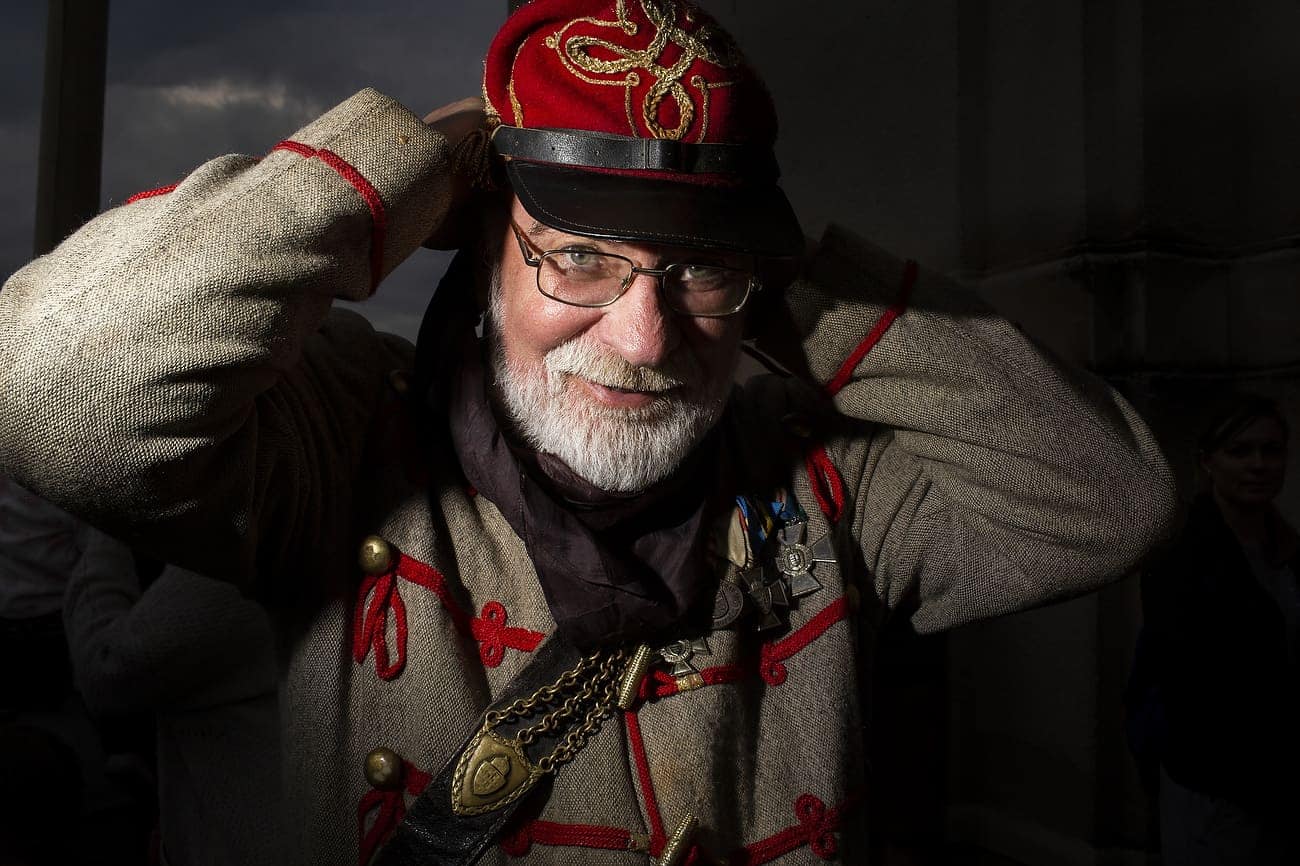
SUMULEU CIUC, ROMANIA - MAY 19: Hungarians from all over the world attending the early pilgrimage hold at Sumuleu Ciuc in Romania, as seen on May 19, 2018. Sumuleu Ciuc became a pilgrimage site in 1567, when Hungarian king John II Sigismund Zápolya wanted to convert the Székely population of the upper Csík to Protestantism. The Székelys refused to abandon the Catholic faith and resisted. A battle took place on a nearby field, on Saturday before Pentecost 1567, from which the Székelys emerged victorious. The monks saw this as a sign of the care of Virgin Mary, and since then, this event has been commemorated by a pilgrimage when the believers gather on Pentecost every year. Beside its religious importance, the pilgrimage has also become a community event demonstrating spiritual unity of Hungarian people living in and outside the historical region of Transylvania. Photography by Mugur Varzariu/Getty Images/Newsweek.
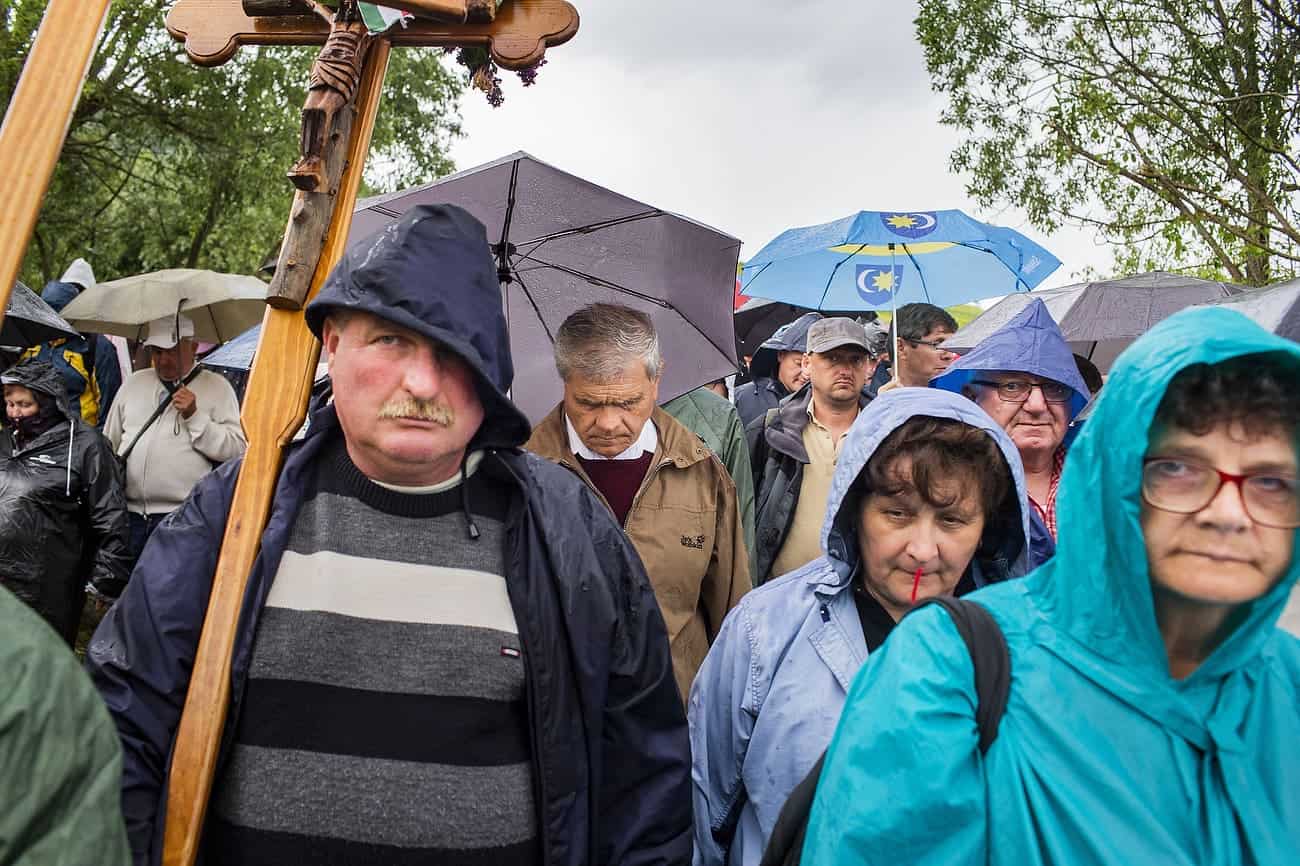
SUMULEU CIUC, ROMANIA - MAY 19: Hungarians from all over the world attending the early pilgrimage hold at Sumuleu Ciuc in Romania, as seen on May 19, 2018. Sumuleu Ciuc became a pilgrimage site in 1567, when Hungarian king John II Sigismund Zápolya wanted to convert the Székely population of the upper Csík to Protestantism. The Székelys refused to abandon the Catholic faith and resisted. A battle took place on a nearby field, on Saturday before Pentecost 1567, from which the Székelys emerged victorious. The monks saw this as a sign of the care of Virgin Mary, and since then, this event has been commemorated by a pilgrimage when the believers gather on Pentecost every year. Beside its religious importance, the pilgrimage has also become a community event demonstrating spiritual unity of Hungarian people living in and outside the historical region of Transylvania. Photography by Mugur Varzariu/Getty Images/Newsweek.
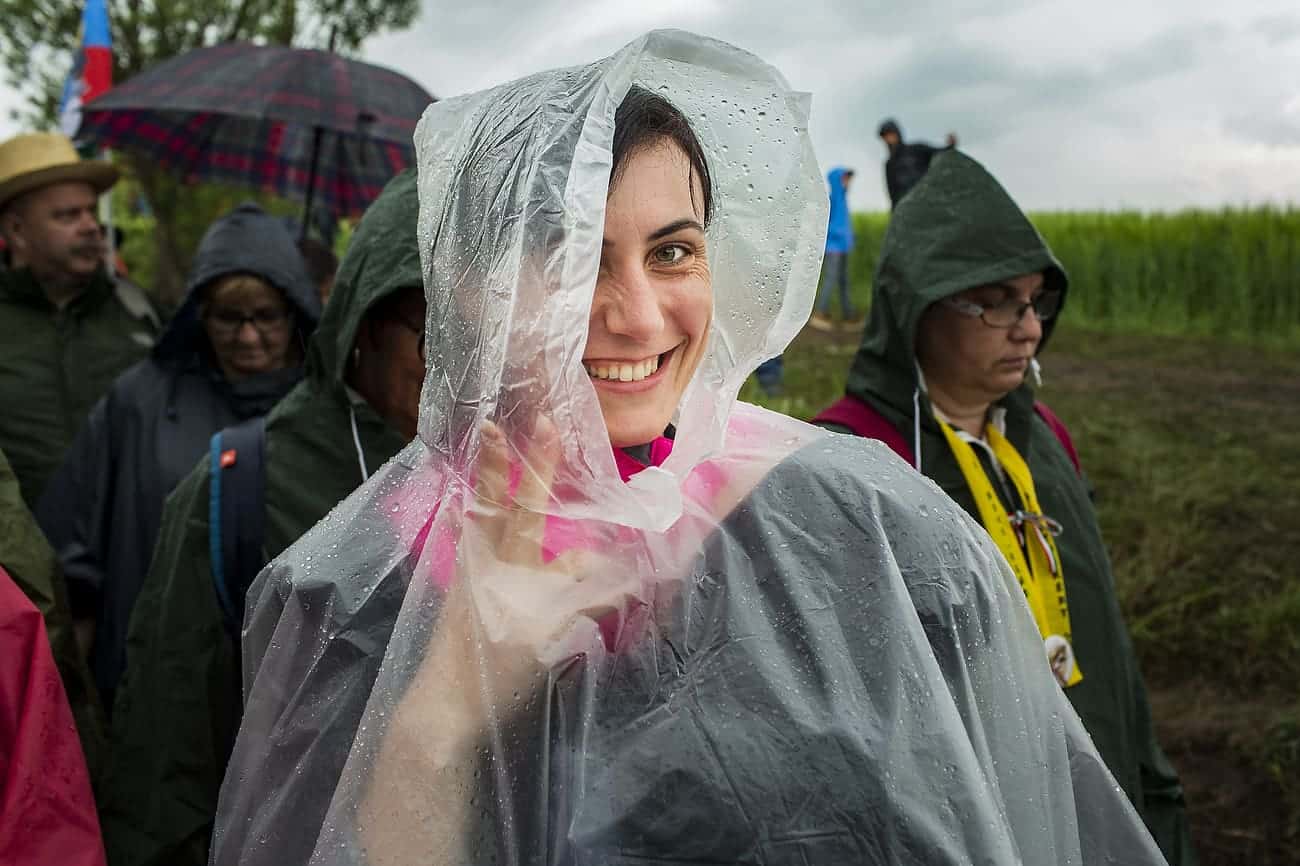
SUMULEU CIUC, ROMANIA - MAY 19: Hungarians from all over the world attending the early pilgrimage hold at Sumuleu Ciuc in Romania, as seen on May 19, 2018. Sumuleu Ciuc became a pilgrimage site in 1567, when Hungarian king John II Sigismund Zápolya wanted to convert the Székely population of the upper Csík to Protestantism. The Székelys refused to abandon the Catholic faith and resisted. A battle took place on a nearby field, on Saturday before Pentecost 1567, from which the Székelys emerged victorious. The monks saw this as a sign of the care of Virgin Mary, and since then, this event has been commemorated by a pilgrimage when the believers gather on Pentecost every year. Beside its religious importance, the pilgrimage has also become a community event demonstrating spiritual unity of Hungarian people living in and outside the historical region of Transylvania. Photography by Mugur Varzariu/Getty Images/Newsweek.
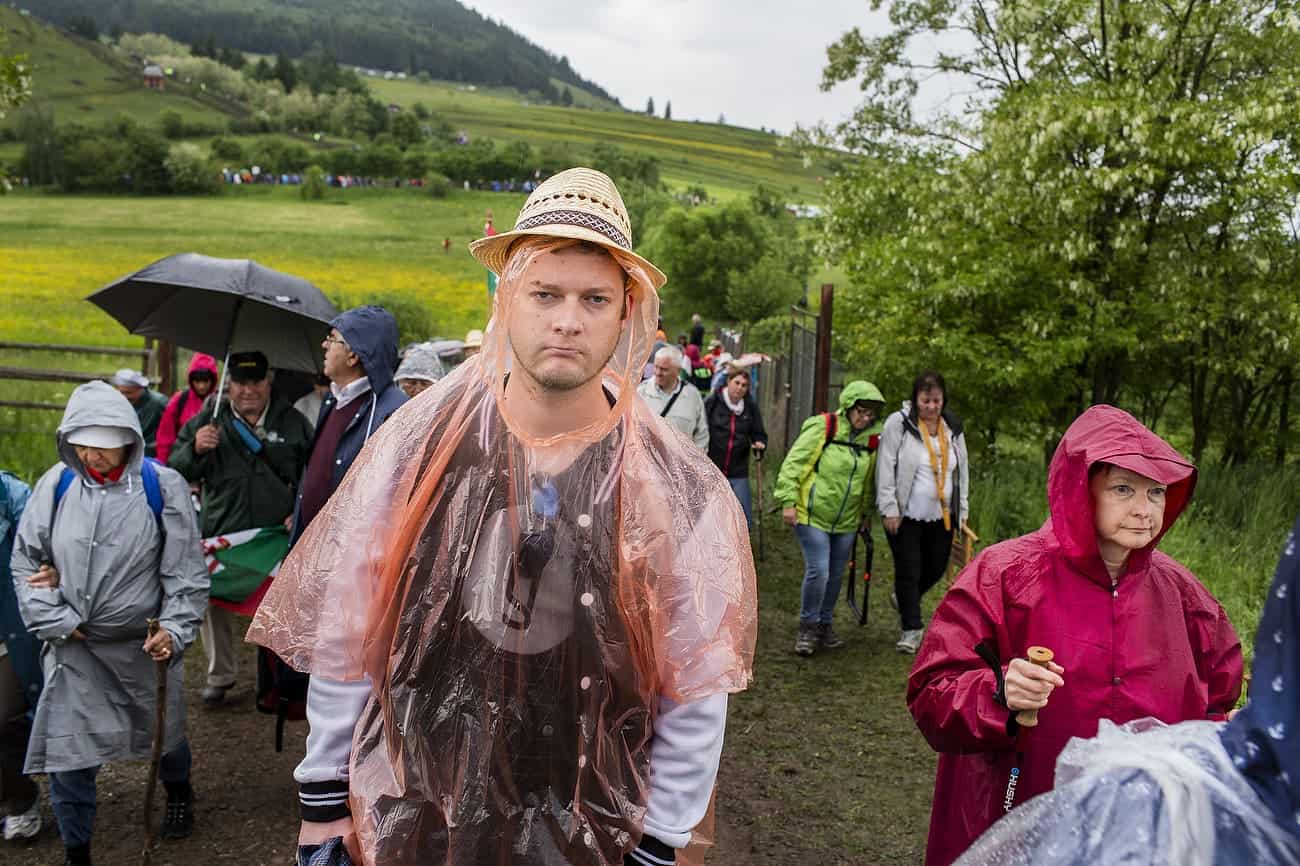
SUMULEU CIUC, ROMANIA - MAY 19: Hungarians from all over the world attending the early pilgrimage hold at Sumuleu Ciuc in Romania, as seen on May 19, 2018. Sumuleu Ciuc became a pilgrimage site in 1567, when Hungarian king John II Sigismund Zápolya wanted to convert the Székely population of the upper Csík to Protestantism. The Székelys refused to abandon the Catholic faith and resisted. A battle took place on a nearby field, on Saturday before Pentecost 1567, from which the Székelys emerged victorious. The monks saw this as a sign of the care of Virgin Mary, and since then, this event has been commemorated by a pilgrimage when the believers gather on Pentecost every year. Beside its religious importance, the pilgrimage has also become a community event demonstrating spiritual unity of Hungarian people living in and outside the historical region of Transylvania. Photography by Mugur Varzariu/Getty Images/Newsweek.
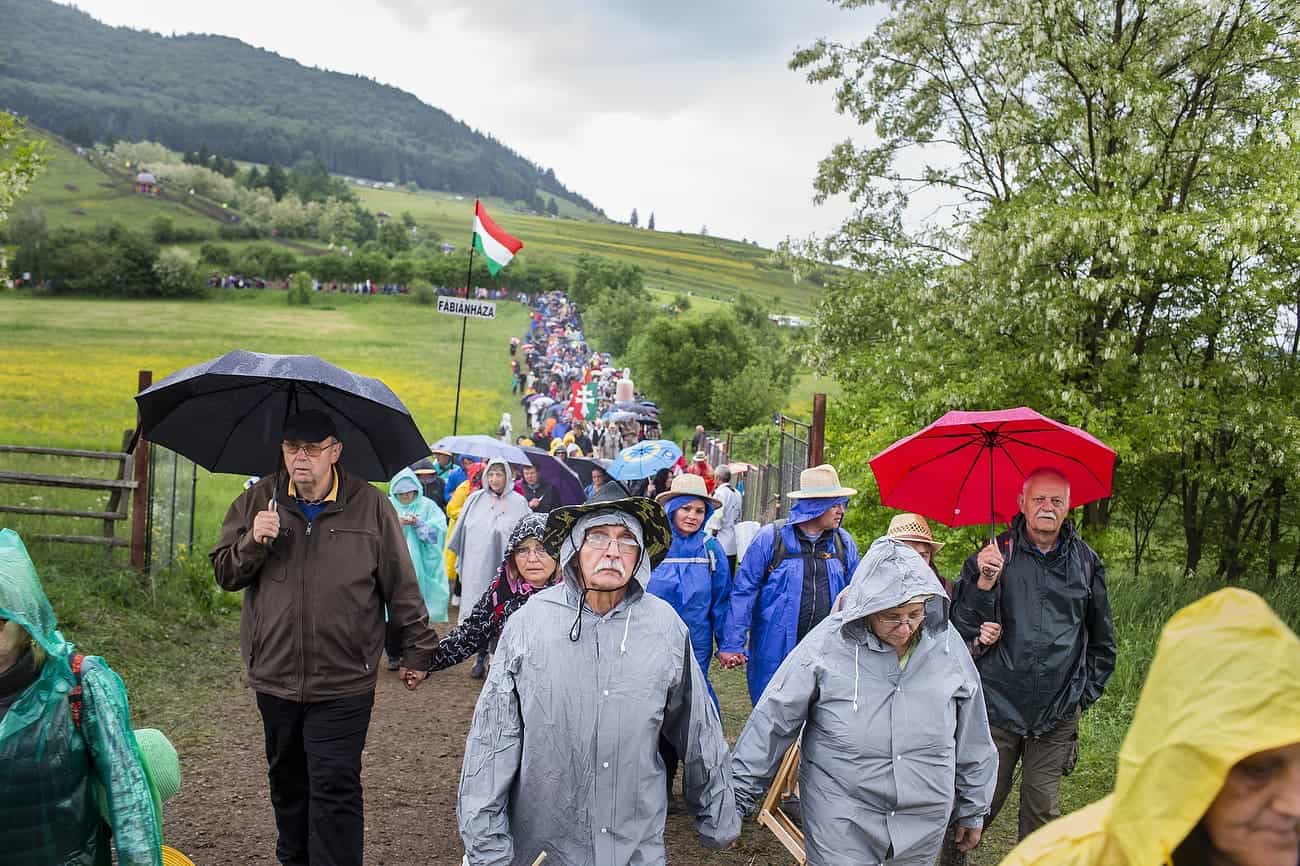
SUMULEU CIUC, ROMANIA - MAY 19: Hungarians from all over the world attending the early pilgrimage hold at Sumuleu Ciuc in Romania, as seen on May 19, 2018. Sumuleu Ciuc became a pilgrimage site in 1567, when Hungarian king John II Sigismund Zápolya wanted to convert the Székely population of the upper Csík to Protestantism. The Székelys refused to abandon the Catholic faith and resisted. A battle took place on a nearby field, on Saturday before Pentecost 1567, from which the Székelys emerged victorious. The monks saw this as a sign of the care of Virgin Mary, and since then, this event has been commemorated by a pilgrimage when the believers gather on Pentecost every year. Beside its religious importance, the pilgrimage has also become a community event demonstrating spiritual unity of Hungarian people living in and outside the historical region of Transylvania. Photography by Mugur Varzariu/Getty Images/Newsweek.
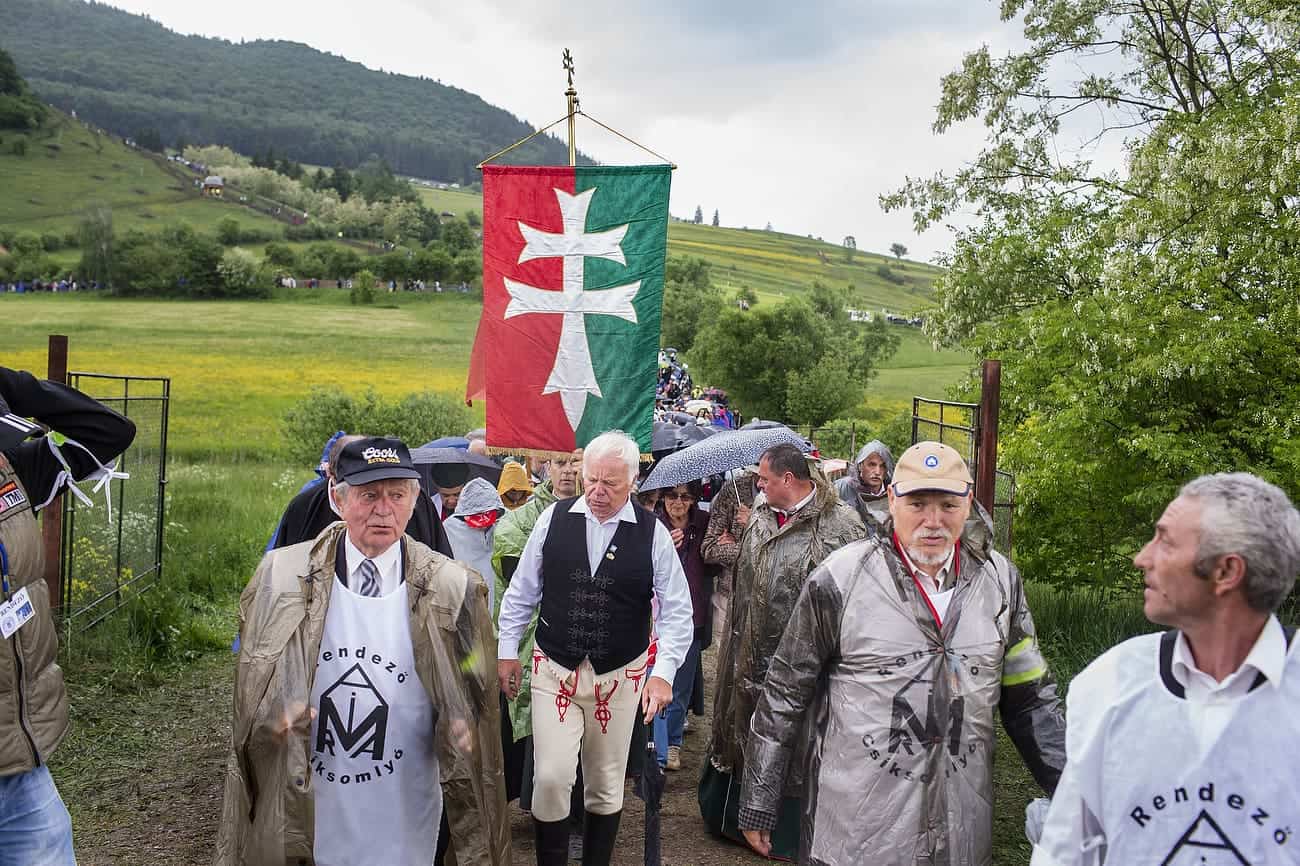
SUMULEU CIUC, ROMANIA - MAY 19: Hungarians from all over the world attending the early pilgrimage hold at Sumuleu Ciuc in Romania, as seen on May 19, 2018. Sumuleu Ciuc became a pilgrimage site in 1567, when Hungarian king John II Sigismund Zápolya wanted to convert the Székely population of the upper Csík to Protestantism. The Székelys refused to abandon the Catholic faith and resisted. A battle took place on a nearby field, on Saturday before Pentecost 1567, from which the Székelys emerged victorious. The monks saw this as a sign of the care of Virgin Mary, and since then, this event has been commemorated by a pilgrimage when the believers gather on Pentecost every year. Beside its religious importance, the pilgrimage has also become a community event demonstrating spiritual unity of Hungarian people living in and outside the historical region of Transylvania. Photography by Mugur Varzariu/Getty Images/Newsweek.
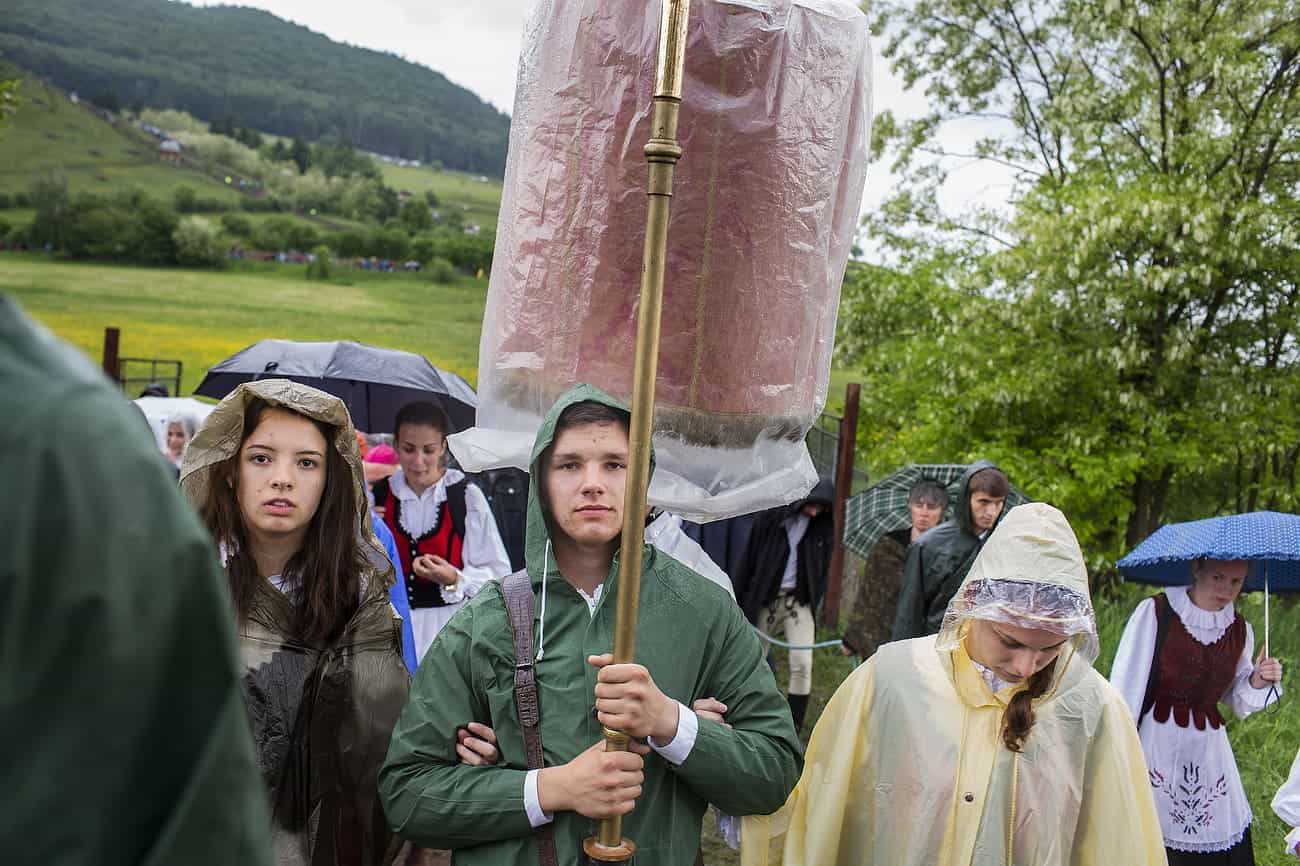
SUMULEU CIUC, ROMANIA - MAY 19: Hungarians from all over the world attending the early pilgrimage hold at Sumuleu Ciuc in Romania, as seen on May 19, 2018. Sumuleu Ciuc became a pilgrimage site in 1567, when Hungarian king John II Sigismund Zápolya wanted to convert the Székely population of the upper Csík to Protestantism. The Székelys refused to abandon the Catholic faith and resisted. A battle took place on a nearby field, on Saturday before Pentecost 1567, from which the Székelys emerged victorious. The monks saw this as a sign of the care of Virgin Mary, and since then, this event has been commemorated by a pilgrimage when the believers gather on Pentecost every year. Beside its religious importance, the pilgrimage has also become a community event demonstrating spiritual unity of Hungarian people living in and outside the historical region of Transylvania. Photography by Mugur Varzariu/Getty Images/Newsweek.

SUMULEU CIUC, ROMANIA - MAY 19: Hungarians from all over the world attending the early pilgrimage hold at Sumuleu Ciuc in Romania, as seen on May 19, 2018. Sumuleu Ciuc became a pilgrimage site in 1567, when Hungarian king John II Sigismund Zápolya wanted to convert the Székely population of the upper Csík to Protestantism. The Székelys refused to abandon the Catholic faith and resisted. A battle took place on a nearby field, on Saturday before Pentecost 1567, from which the Székelys emerged victorious. The monks saw this as a sign of the care of Virgin Mary, and since then, this event has been commemorated by a pilgrimage when the believers gather on Pentecost every year. Beside its religious importance, the pilgrimage has also become a community event demonstrating spiritual unity of Hungarian people living in and outside the historical region of Transylvania. Photography by Mugur Varzariu/Getty Images/Newsweek.
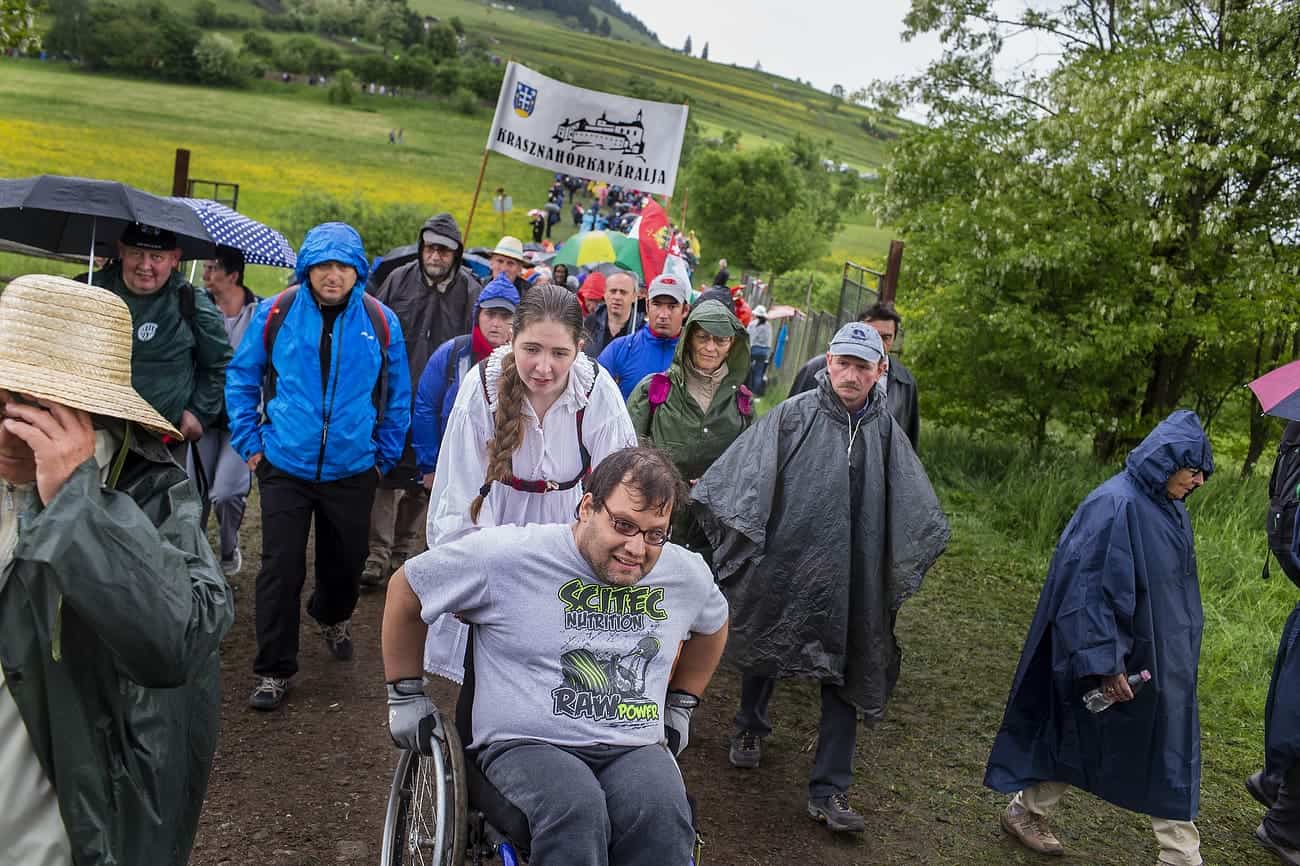
SUMULEU CIUC, ROMANIA - MAY 19: Hungarians from all over the world attending the early pilgrimage hold at Sumuleu Ciuc in Romania, as seen on May 19, 2018. Sumuleu Ciuc became a pilgrimage site in 1567, when Hungarian king John II Sigismund Zápolya wanted to convert the Székely population of the upper Csík to Protestantism. The Székelys refused to abandon the Catholic faith and resisted. A battle took place on a nearby field, on Saturday before Pentecost 1567, from which the Székelys emerged victorious. The monks saw this as a sign of the care of Virgin Mary, and since then, this event has been commemorated by a pilgrimage when the believers gather on Pentecost every year. Beside its religious importance, the pilgrimage has also become a community event demonstrating spiritual unity of Hungarian people living in and outside the historical region of Transylvania. Photography by Mugur Varzariu/Getty Images/Newsweek.
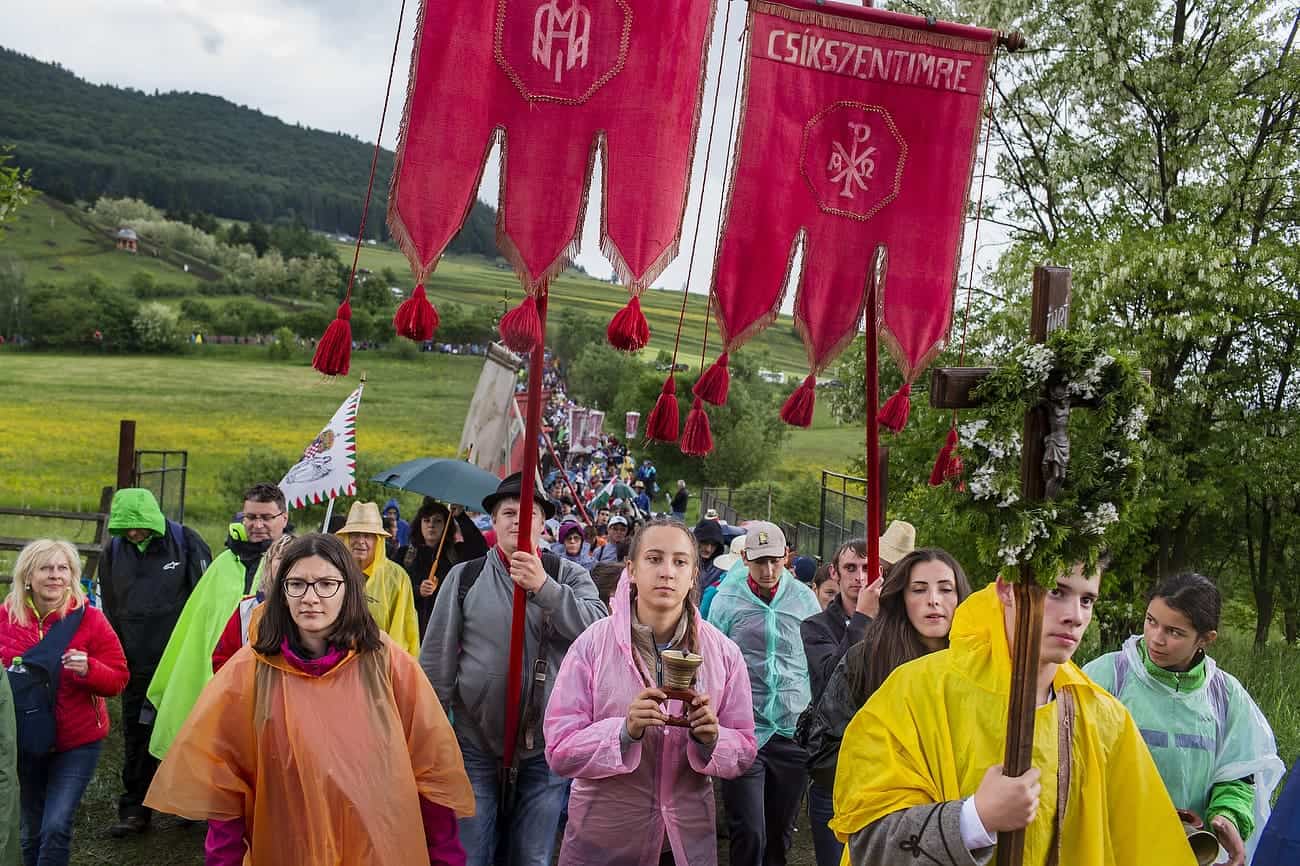
SUMULEU CIUC, ROMANIA - MAY 19: Hungarians from all over the world attending the early pilgrimage hold at Sumuleu Ciuc in Romania, as seen on May 19, 2018. Sumuleu Ciuc became a pilgrimage site in 1567, when Hungarian king John II Sigismund Zápolya wanted to convert the Székely population of the upper Csík to Protestantism. The Székelys refused to abandon the Catholic faith and resisted. A battle took place on a nearby field, on Saturday before Pentecost 1567, from which the Székelys emerged victorious. The monks saw this as a sign of the care of Virgin Mary, and since then, this event has been commemorated by a pilgrimage when the believers gather on Pentecost every year. Beside its religious importance, the pilgrimage has also become a community event demonstrating spiritual unity of Hungarian people living in and outside the historical region of Transylvania. Photography by Mugur Varzariu/Getty Images/Newsweek.
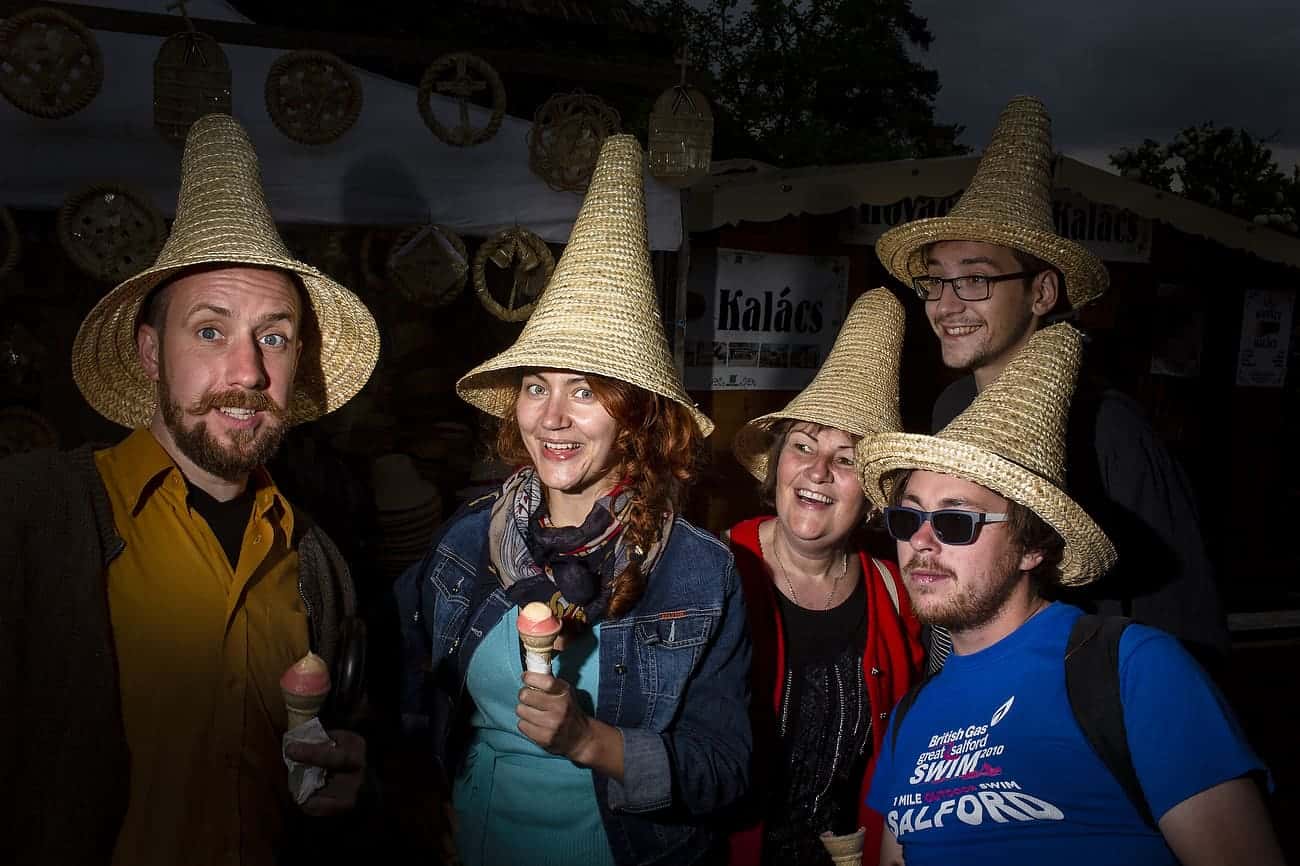
SUMULEU CIUC, ROMANIA - MAY 19: Hungarians from all over the world attending the early pilgrimage hold at Sumuleu Ciuc in Romania, as seen on May 19, 2018. Sumuleu Ciuc became a pilgrimage site in 1567, when Hungarian king John II Sigismund Zpolya wanted to convert the Szkely population of the upper Csk to Protestantism. The Szkelys refused to abandon the Catholic faith and resisted. A battle took place on a nearby field, on Saturday before Pentecost 1567, from which the Szkelys emerged victorious. The monks saw this as a sign of the care of Virgin Mary, and since then, this event has been commemorated by a pilgrimage when the believers gather on Pentecost every year. Beside its religious importance, the pilgrimage has also become a community event demonstrating spiritual unity of Hungarian people living in and outside the historical region of Transylvania. Photography by Mugur Varzariu/Getty Images/Newsweek.
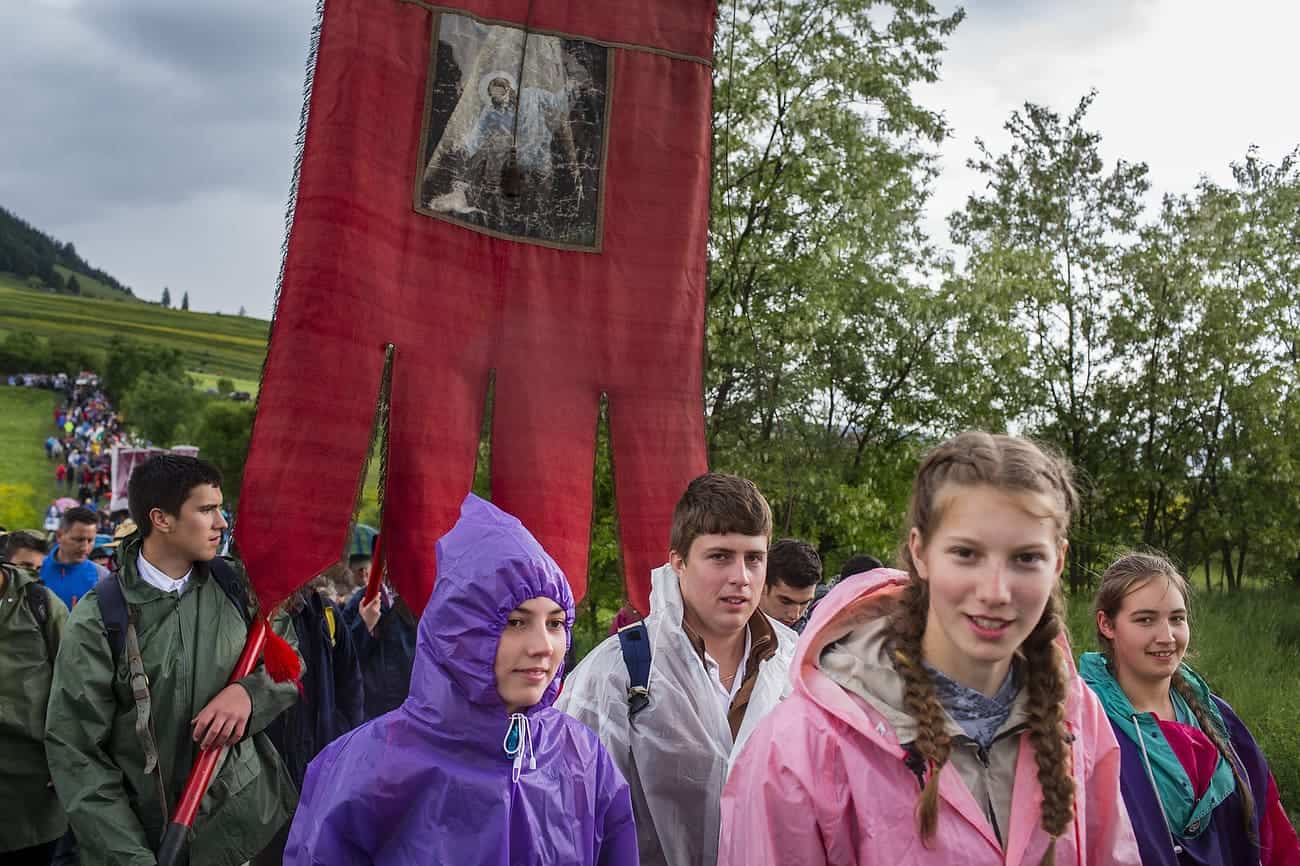
SUMULEU CIUC, ROMANIA - MAY 19: Hungarians from all over the world attending the early pilgrimage hold at Sumuleu Ciuc in Romania, as seen on May 19, 2018. Sumuleu Ciuc became a pilgrimage site in 1567, when Hungarian king John II Sigismund Zápolya wanted to convert the Székely population of the upper Csík to Protestantism. The Székelys refused to abandon the Catholic faith and resisted. A battle took place on a nearby field, on Saturday before Pentecost 1567, from which the Székelys emerged victorious. The monks saw this as a sign of the care of Virgin Mary, and since then, this event has been commemorated by a pilgrimage when the believers gather on Pentecost every year. Beside its religious importance, the pilgrimage has also become a community event demonstrating spiritual unity of Hungarian people living in and outside the historical region of Transylvania. Photography by Mugur Varzariu/Getty Images/Newsweek.
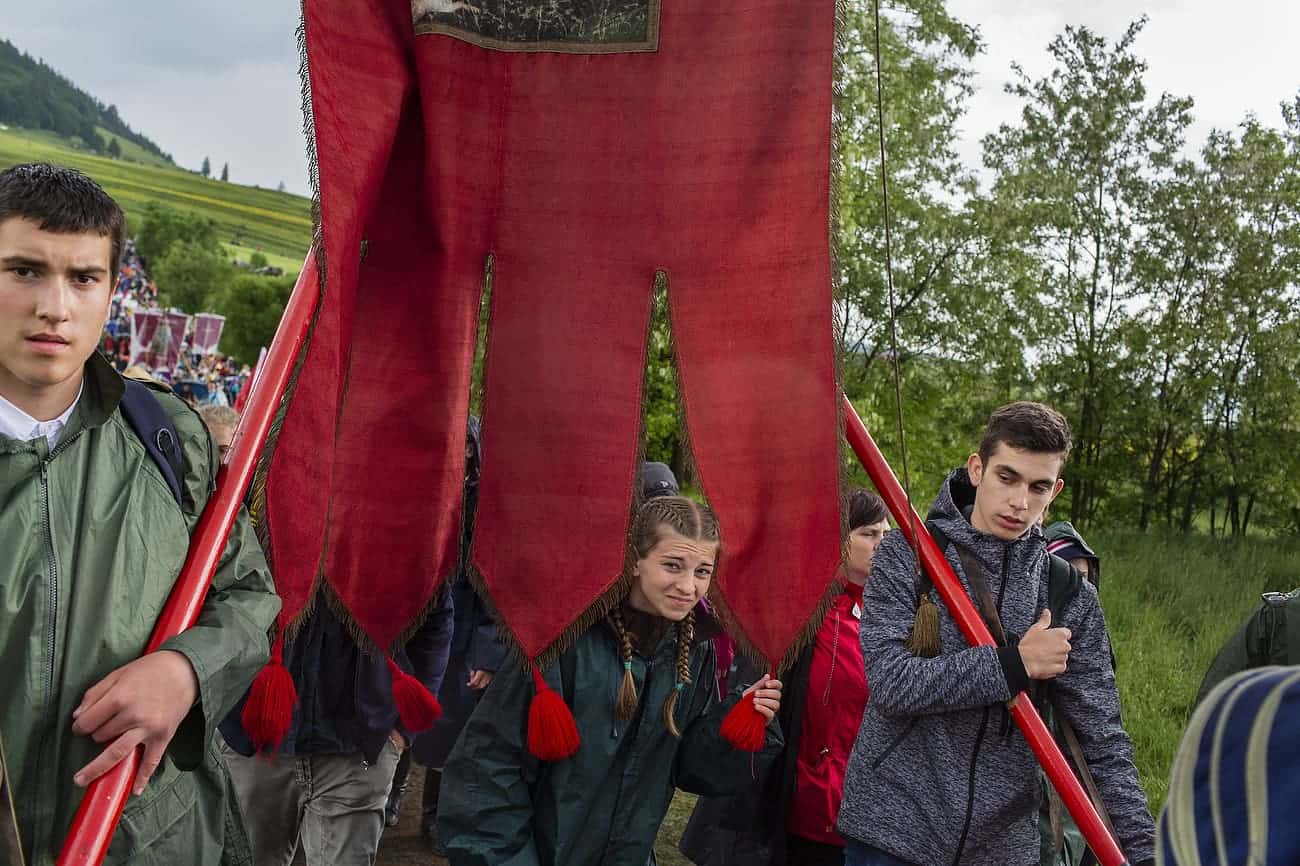
SUMULEU CIUC, ROMANIA - MAY 19: Hungarians from all over the world attending the early pilgrimage hold at Sumuleu Ciuc in Romania, as seen on May 19, 2018. Sumuleu Ciuc became a pilgrimage site in 1567, when Hungarian king John II Sigismund Zápolya wanted to convert the Székely population of the upper Csík to Protestantism. The Székelys refused to abandon the Catholic faith and resisted. A battle took place on a nearby field, on Saturday before Pentecost 1567, from which the Székelys emerged victorious. The monks saw this as a sign of the care of Virgin Mary, and since then, this event has been commemorated by a pilgrimage when the believers gather on Pentecost every year. Beside its religious importance, the pilgrimage has also become a community event demonstrating spiritual unity of Hungarian people living in and outside the historical region of Transylvania. Photography by Mugur Varzariu/Getty Images/Newsweek.
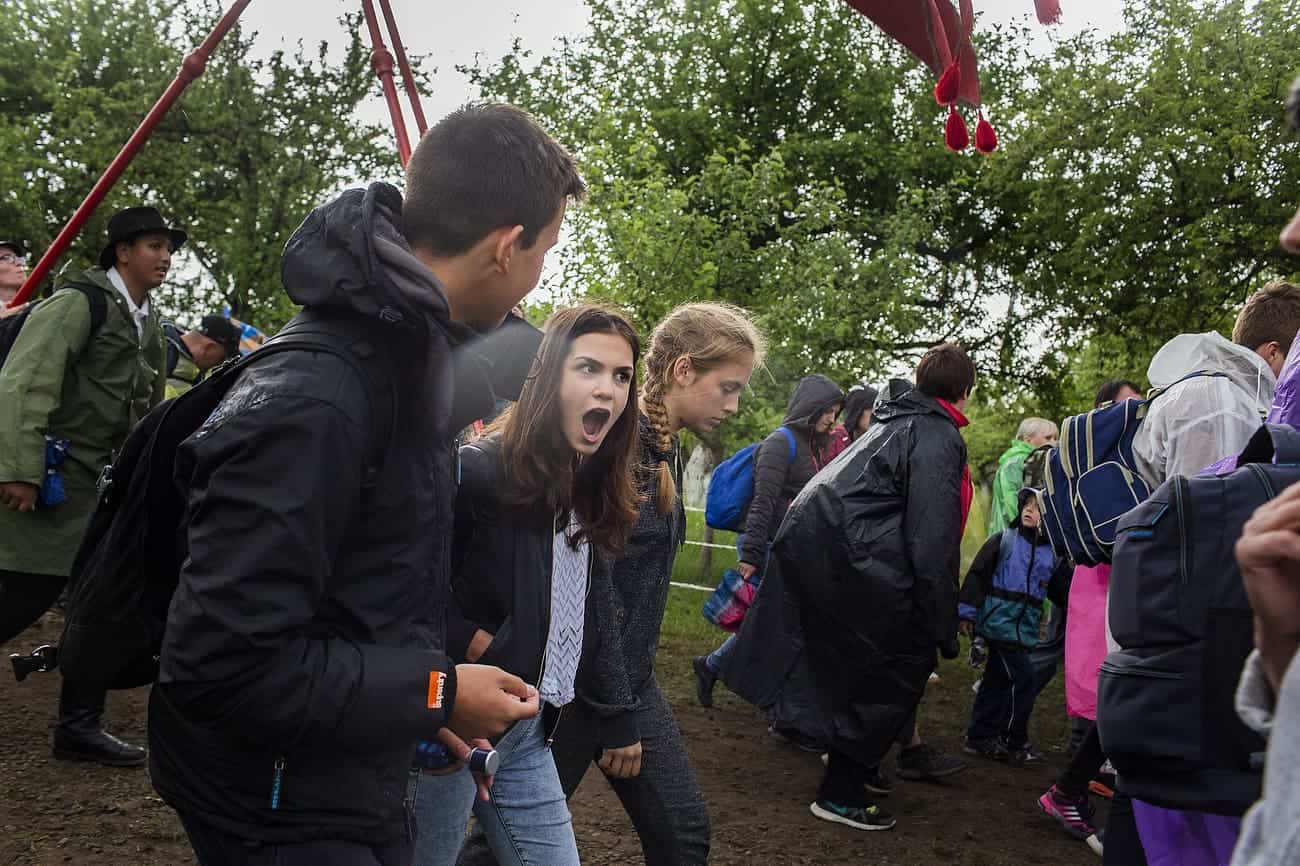
SUMULEU CIUC, ROMANIA - MAY 19: Hungarians from all over the world attending the early pilgrimage hold at Sumuleu Ciuc in Romania, as seen on May 19, 2018. Sumuleu Ciuc became a pilgrimage site in 1567, when Hungarian king John II Sigismund Zápolya wanted to convert the Székely population of the upper Csík to Protestantism. The Székelys refused to abandon the Catholic faith and resisted. A battle took place on a nearby field, on Saturday before Pentecost 1567, from which the Székelys emerged victorious. The monks saw this as a sign of the care of Virgin Mary, and since then, this event has been commemorated by a pilgrimage when the believers gather on Pentecost every year. Beside its religious importance, the pilgrimage has also become a community event demonstrating spiritual unity of Hungarian people living in and outside the historical region of Transylvania. Photography by Mugur Varzariu/Getty Images/Newsweek.
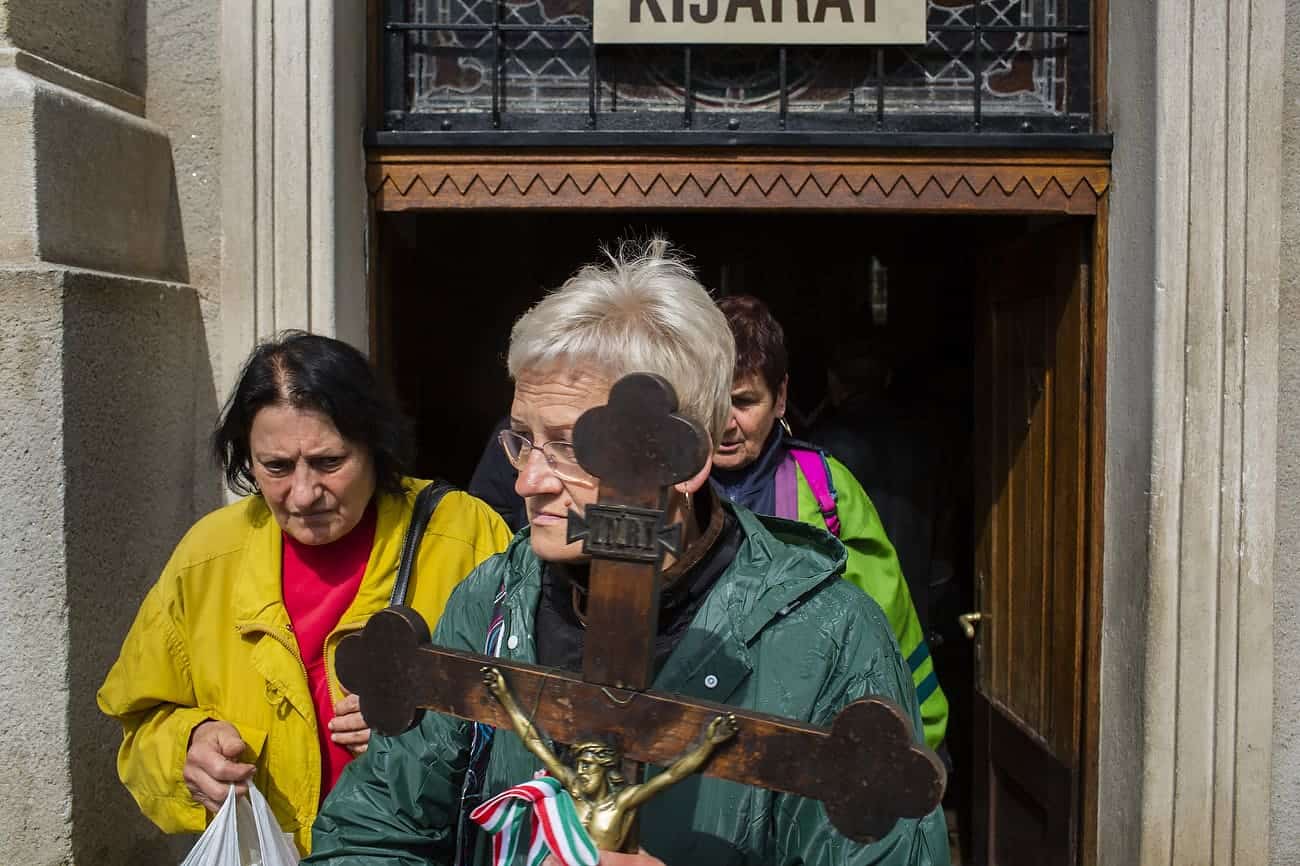
SUMULEU CIUC, ROMANIA - MAY 19: Hungarians from all over the world attending the early pilgrimage hold at Sumuleu Ciuc in Romania, as seen on May 19, 2018. Sumuleu Ciuc became a pilgrimage site in 1567, when Hungarian king John II Sigismund Zápolya wanted to convert the Székely population of the upper Csík to Protestantism. The Székelys refused to abandon the Catholic faith and resisted. A battle took place on a nearby field, on Saturday before Pentecost 1567, from which the Székelys emerged victorious. The monks saw this as a sign of the care of Virgin Mary, and since then, this event has been commemorated by a pilgrimage when the believers gather on Pentecost every year. Beside its religious importance, the pilgrimage has also become a community event demonstrating spiritual unity of Hungarian people living in and outside the historical region of Transylvania. Photography by Mugur Varzariu/Getty Images/Newsweek.
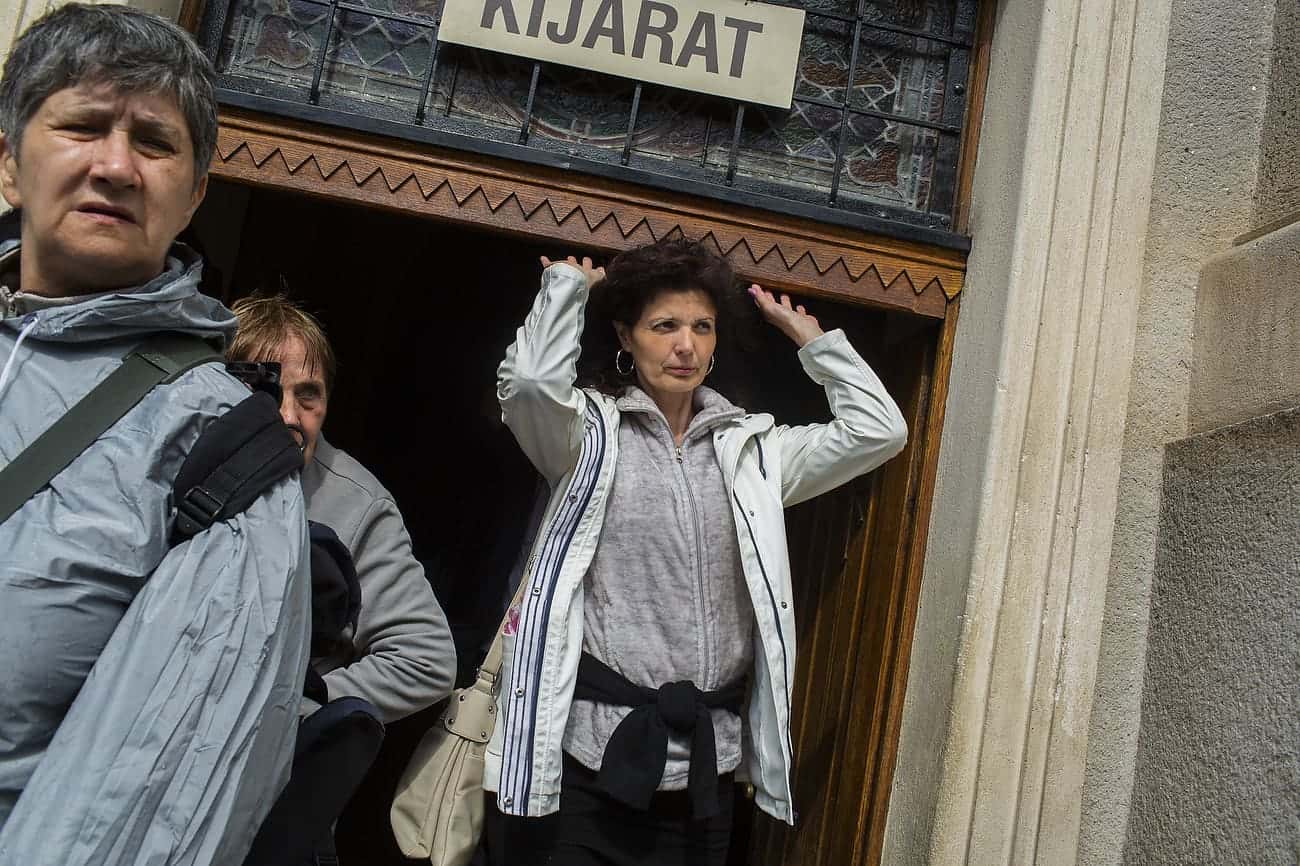
SUMULEU CIUC, ROMANIA - MAY 19: Hungarians from all over the world attending the early pilgrimage hold at Sumuleu Ciuc in Romania, as seen on May 19, 2018. Sumuleu Ciuc became a pilgrimage site in 1567, when Hungarian king John II Sigismund Zápolya wanted to convert the Székely population of the upper Csík to Protestantism. The Székelys refused to abandon the Catholic faith and resisted. A battle took place on a nearby field, on Saturday before Pentecost 1567, from which the Székelys emerged victorious. The monks saw this as a sign of the care of Virgin Mary, and since then, this event has been commemorated by a pilgrimage when the believers gather on Pentecost every year. Beside its religious importance, the pilgrimage has also become a community event demonstrating spiritual unity of Hungarian people living in and outside the historical region of Transylvania. Photography by Mugur Varzariu/Getty Images/Newsweek.
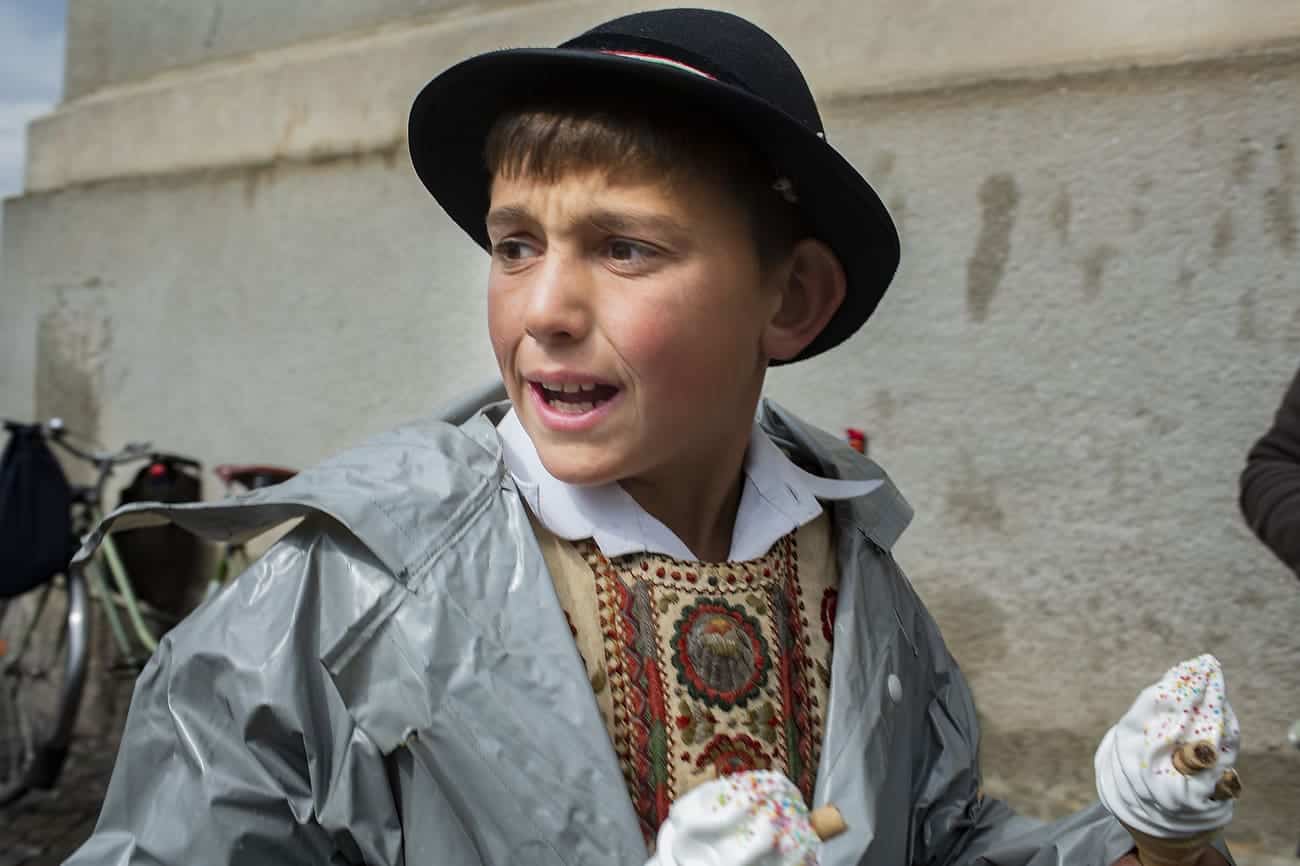
SUMULEU CIUC, ROMANIA - MAY 19: Hungarians from all over the world attending the early pilgrimage hold at Sumuleu Ciuc in Romania, as seen on May 19, 2018. Sumuleu Ciuc became a pilgrimage site in 1567, when Hungarian king John II Sigismund Zápolya wanted to convert the Székely population of the upper Csík to Protestantism. The Székelys refused to abandon the Catholic faith and resisted. A battle took place on a nearby field, on Saturday before Pentecost 1567, from which the Székelys emerged victorious. The monks saw this as a sign of the care of Virgin Mary, and since then, this event has been commemorated by a pilgrimage when the believers gather on Pentecost every year. Beside its religious importance, the pilgrimage has also become a community event demonstrating spiritual unity of Hungarian people living in and outside the historical region of Transylvania. Photography by Mugur Varzariu/Getty Images/Newsweek.
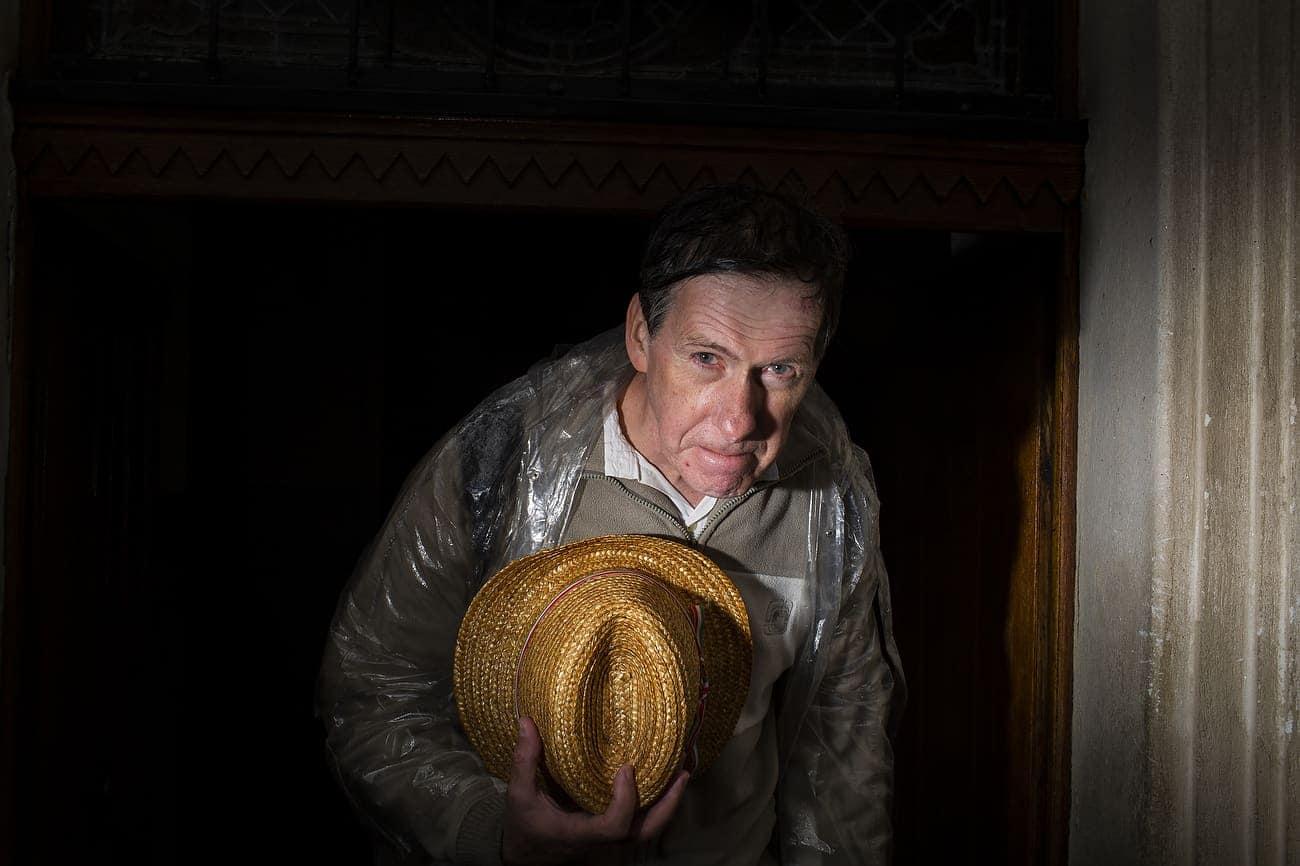
SUMULEU CIUC, ROMANIA - MAY 19: Hungarians from all over the world attending the early pilgrimage hold at Sumuleu Ciuc in Romania, as seen on May 19, 2018. Sumuleu Ciuc became a pilgrimage site in 1567, when Hungarian king John II Sigismund Zápolya wanted to convert the Székely population of the upper Csík to Protestantism. The Székelys refused to abandon the Catholic faith and resisted. A battle took place on a nearby field, on Saturday before Pentecost 1567, from which the Székelys emerged victorious. The monks saw this as a sign of the care of Virgin Mary, and since then, this event has been commemorated by a pilgrimage when the believers gather on Pentecost every year. Beside its religious importance, the pilgrimage has also become a community event demonstrating spiritual unity of Hungarian people living in and outside the historical region of Transylvania. Photography by Mugur Varzariu/Getty Images/Newsweek.
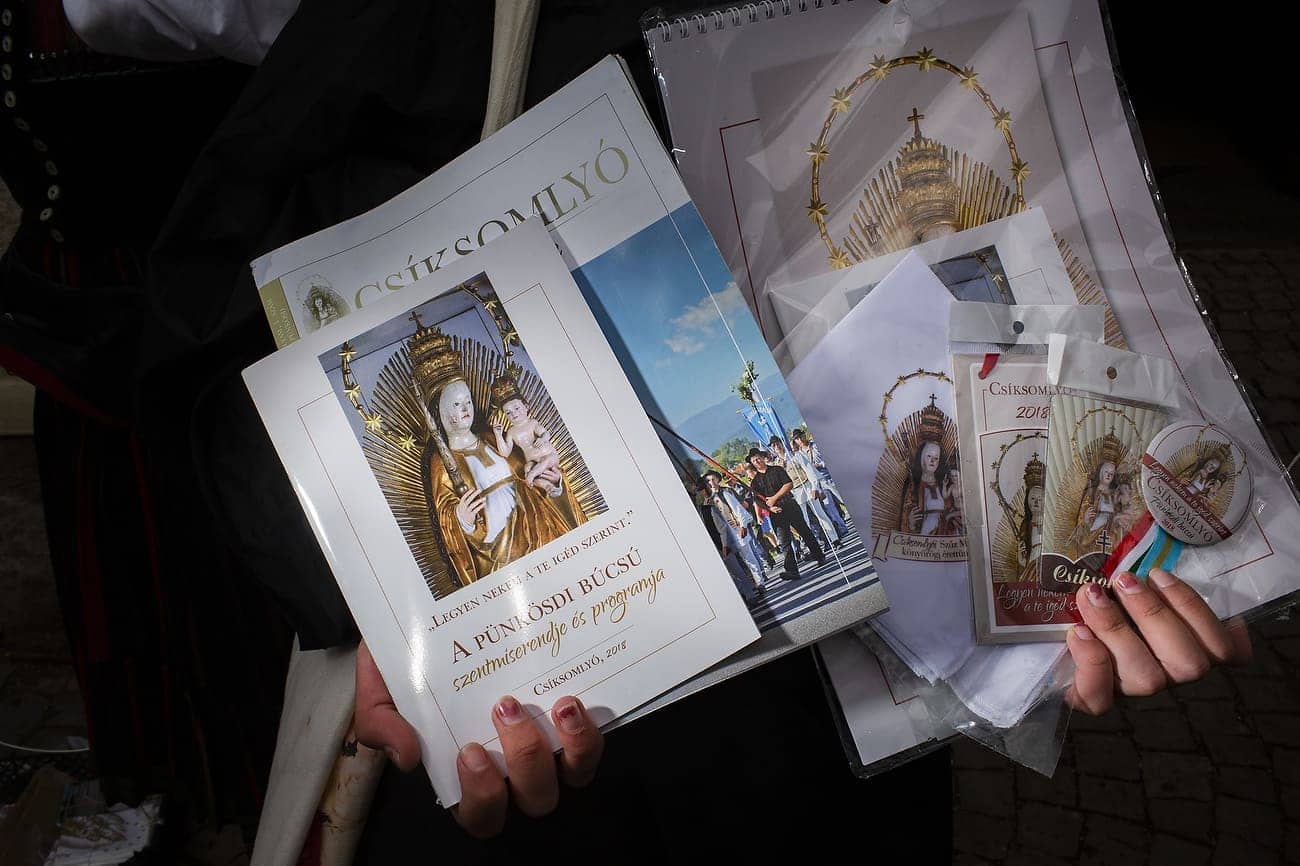
SUMULEU CIUC, ROMANIA - MAY 19: Hungarians from all over the world attending the early pilgrimage hold at Sumuleu Ciuc in Romania, as seen on May 19, 2018. Sumuleu Ciuc became a pilgrimage site in 1567, when Hungarian king John II Sigismund Zápolya wanted to convert the Székely population of the upper Csík to Protestantism. The Székelys refused to abandon the Catholic faith and resisted. A battle took place on a nearby field, on Saturday before Pentecost 1567, from which the Székelys emerged victorious. The monks saw this as a sign of the care of Virgin Mary, and since then, this event has been commemorated by a pilgrimage when the believers gather on Pentecost every year. Beside its religious importance, the pilgrimage has also become a community event demonstrating spiritual unity of Hungarian people living in and outside the historical region of Transylvania. Photography by Mugur Varzariu/Getty Images/Newsweek.

SUMULEU CIUC, ROMANIA - MAY 19: Hungarians from all over the world attending the early pilgrimage hold at Sumuleu Ciuc in Romania, as seen on May 19, 2018. Sumuleu Ciuc became a pilgrimage site in 1567, when Hungarian king John II Sigismund Zpolya wanted to convert the Szkely population of the upper Csk to Protestantism. The Szkelys refused to abandon the Catholic faith and resisted. A battle took place on a nearby field, on Saturday before Pentecost 1567, from which the Szkelys emerged victorious. The monks saw this as a sign of the care of Virgin Mary, and since then, this event has been commemorated by a pilgrimage when the believers gather on Pentecost every year. Beside its religious importance, the pilgrimage has also become a community event demonstrating spiritual unity of Hungarian people living in and outside the historical region of Transylvania. Photography by Mugur Varzariu/Getty Images/Newsweek.
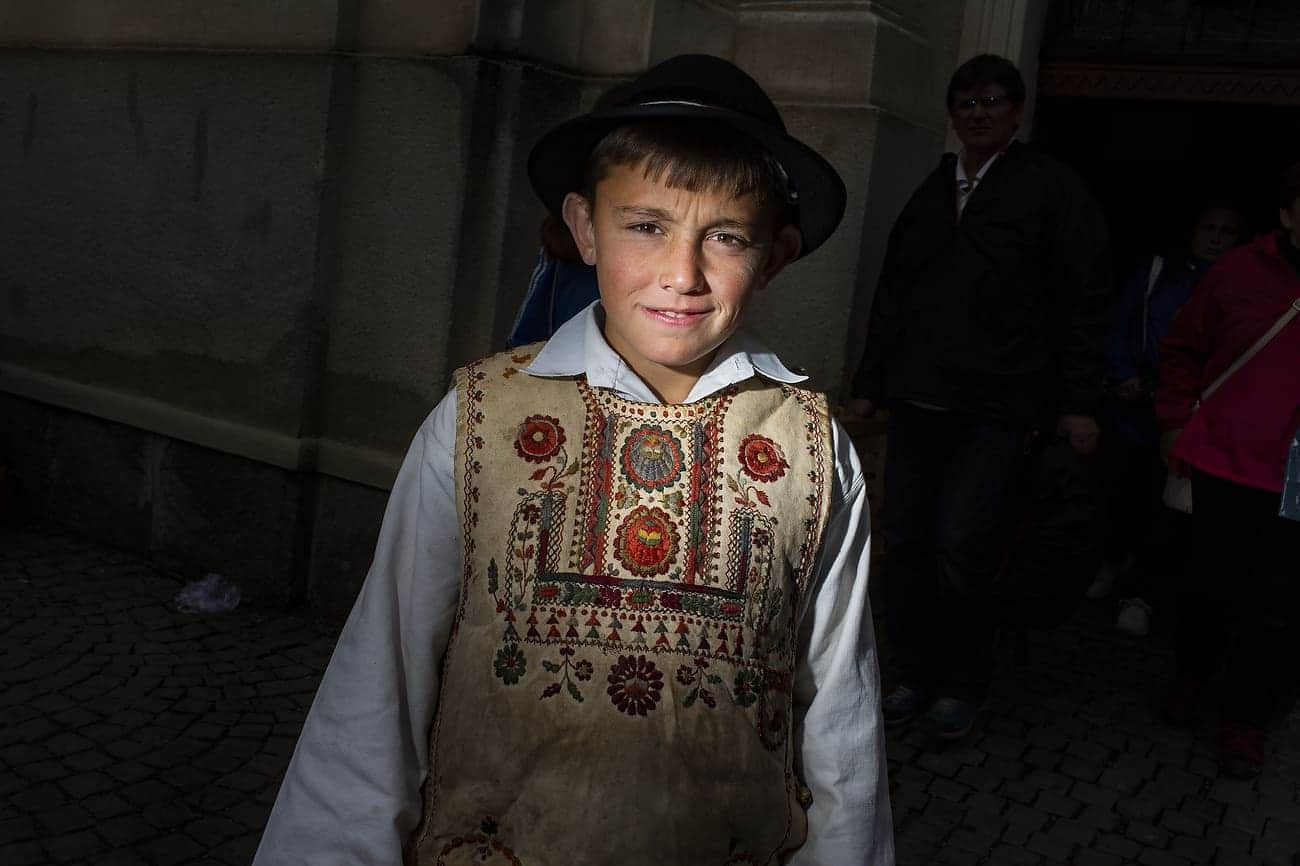
SUMULEU CIUC, ROMANIA - MAY 19: Hungarians from all over the world attending the early pilgrimage hold at Sumuleu Ciuc in Romania, as seen on May 19, 2018. Sumuleu Ciuc became a pilgrimage site in 1567, when Hungarian king John II Sigismund Zápolya wanted to convert the Székely population of the upper Csík to Protestantism. The Székelys refused to abandon the Catholic faith and resisted. A battle took place on a nearby field, on Saturday before Pentecost 1567, from which the Székelys emerged victorious. The monks saw this as a sign of the care of Virgin Mary, and since then, this event has been commemorated by a pilgrimage when the believers gather on Pentecost every year. Beside its religious importance, the pilgrimage has also become a community event demonstrating spiritual unity of Hungarian people living in and outside the historical region of Transylvania. Photography by Mugur Varzariu/Getty Images/Newsweek.
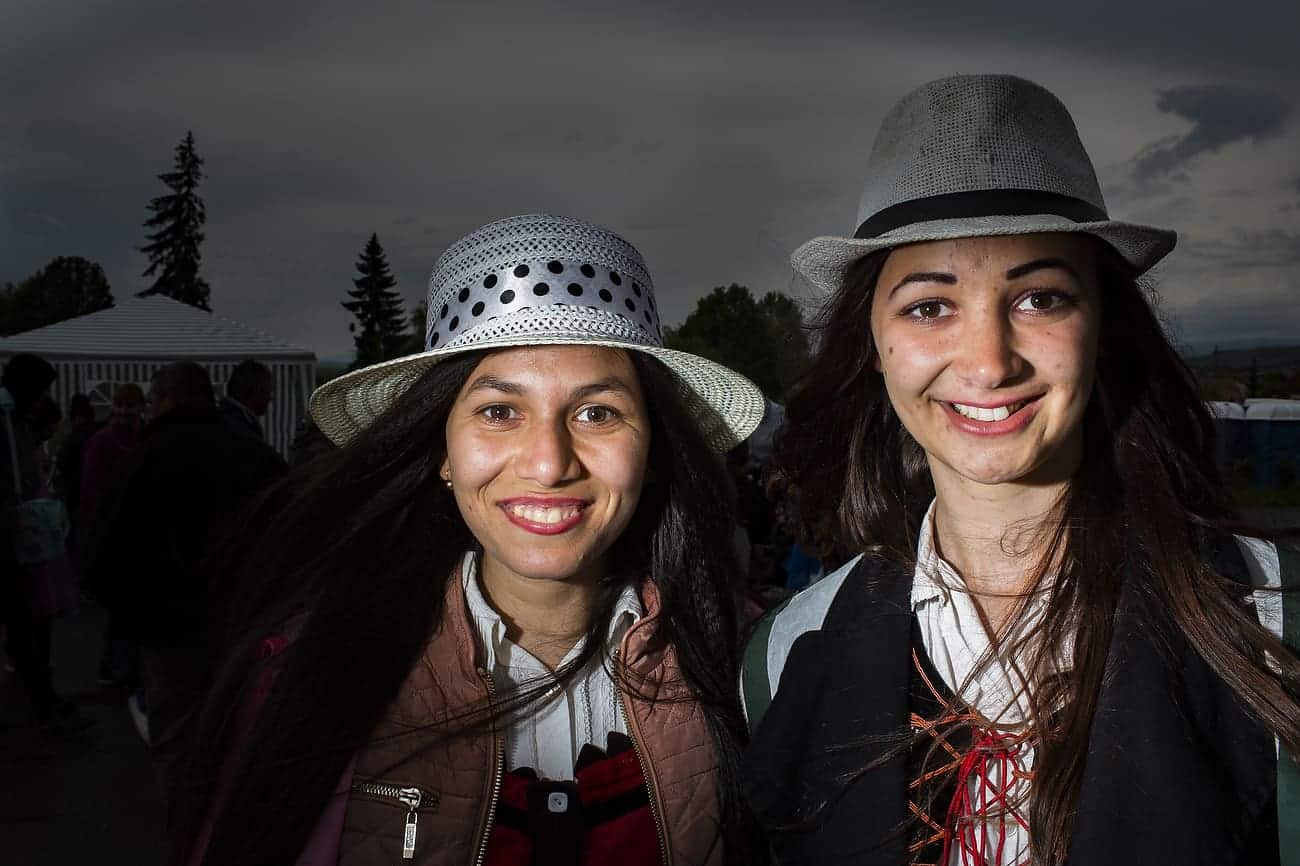
SUMULEU CIUC, ROMANIA - MAY 19: Hungarians from all over the world attending the early pilgrimage hold at Sumuleu Ciuc in Romania, as seen on May 19, 2018. Sumuleu Ciuc became a pilgrimage site in 1567, when Hungarian king John II Sigismund Zpolya wanted to convert the Szkely population of the upper Csk to Protestantism. The Szkelys refused to abandon the Catholic faith and resisted. A battle took place on a nearby field, on Saturday before Pentecost 1567, from which the Szkelys emerged victorious. The monks saw this as a sign of the care of Virgin Mary, and since then, this event has been commemorated by a pilgrimage when the believers gather on Pentecost every year. Beside its religious importance, the pilgrimage has also become a community event demonstrating spiritual unity of Hungarian people living in and outside the historical region of Transylvania. Photography by Mugur Varzariu/Getty Images/Newsweek.
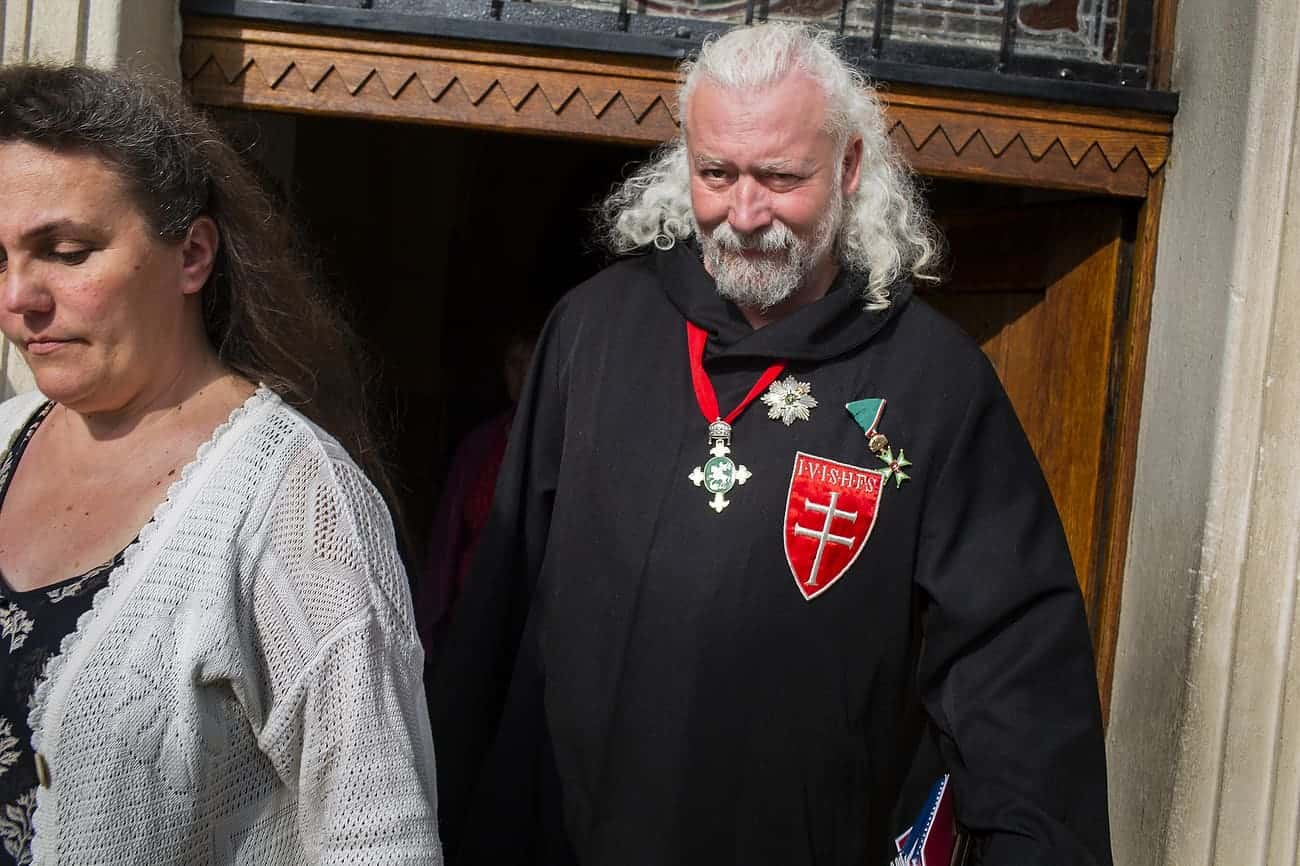
SUMULEU CIUC, ROMANIA - MAY 19: Hungarians from all over the world attending the early pilgrimage hold at Sumuleu Ciuc in Romania, as seen on May 19, 2018. Sumuleu Ciuc became a pilgrimage site in 1567, when Hungarian king John II Sigismund Zápolya wanted to convert the Székely population of the upper Csík to Protestantism. The Székelys refused to abandon the Catholic faith and resisted. A battle took place on a nearby field, on Saturday before Pentecost 1567, from which the Székelys emerged victorious. The monks saw this as a sign of the care of Virgin Mary, and since then, this event has been commemorated by a pilgrimage when the believers gather on Pentecost every year. Beside its religious importance, the pilgrimage has also become a community event demonstrating spiritual unity of Hungarian people living in and outside the historical region of Transylvania. Photography by Mugur Varzariu/Getty Images/Newsweek.
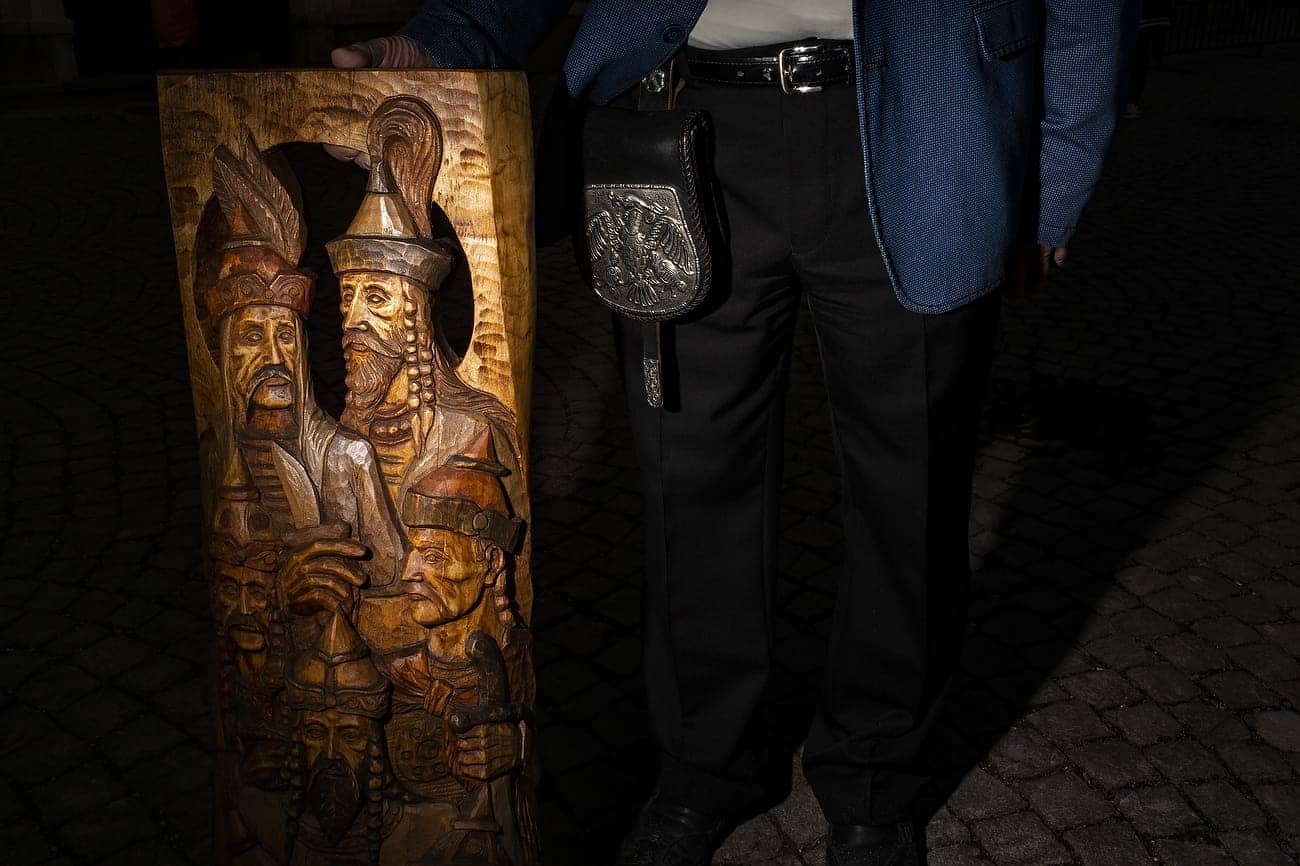
SUMULEU CIUC, ROMANIA - MAY 19: Hungarians from all over the world attending the early pilgrimage hold at Sumuleu Ciuc in Romania, as seen on May 19, 2018. Sumuleu Ciuc became a pilgrimage site in 1567, when Hungarian king John II Sigismund Zápolya wanted to convert the Székely population of the upper Csík to Protestantism. The Székelys refused to abandon the Catholic faith and resisted. A battle took place on a nearby field, on Saturday before Pentecost 1567, from which the Székelys emerged victorious. The monks saw this as a sign of the care of Virgin Mary, and since then, this event has been commemorated by a pilgrimage when the believers gather on Pentecost every year. Beside its religious importance, the pilgrimage has also become a community event demonstrating spiritual unity of Hungarian people living in and outside the historical region of Transylvania. Photography by Mugur Varzariu/Getty Images/Newsweek.
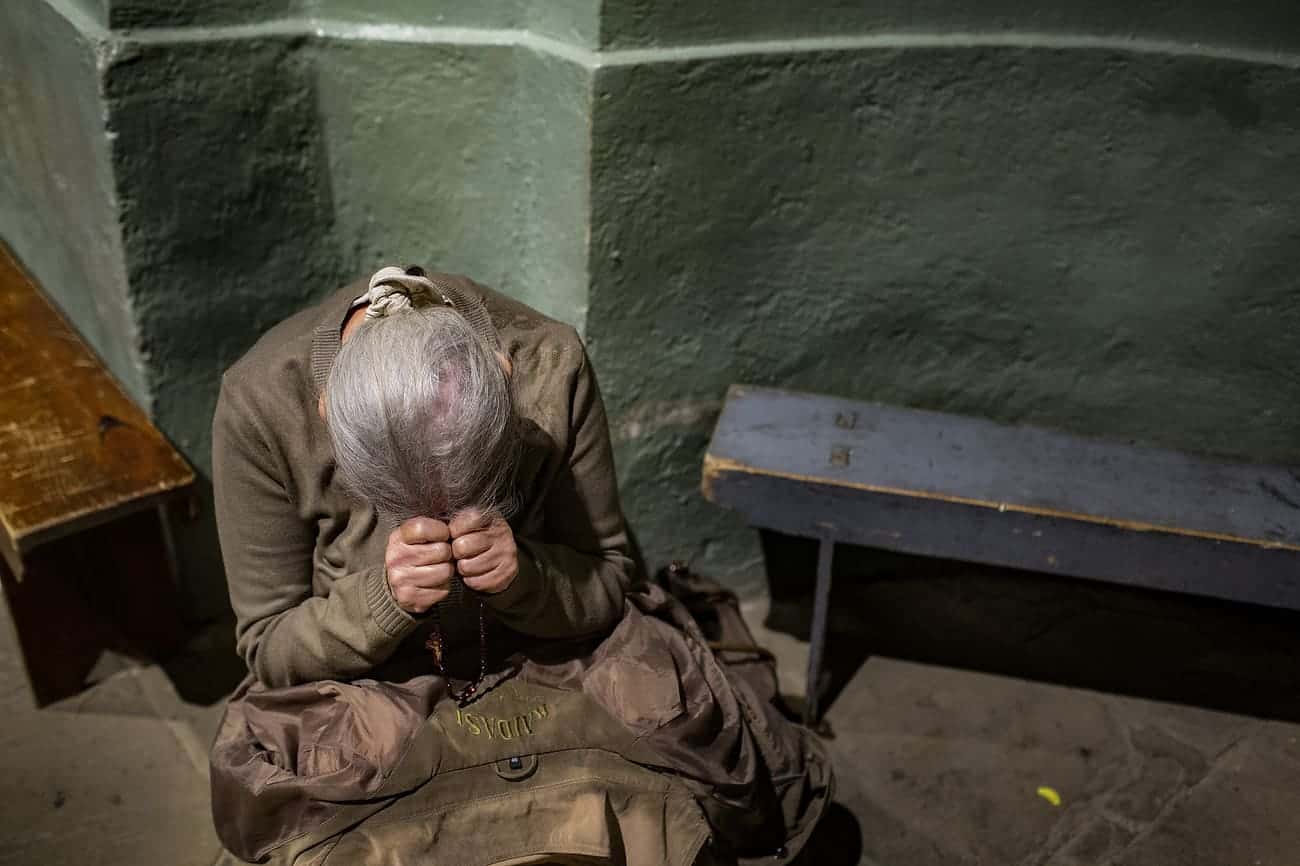
SUMULEU CIUC, ROMANIA - MAY 19: Hungarians from all over the world attending the early pilgrimage hold at Sumuleu Ciuc in Romania, as seen on May 19, 2018. Sumuleu Ciuc became a pilgrimage site in 1567, when Hungarian king John II Sigismund Zápolya wanted to convert the Székely population of the upper Csík to Protestantism. The Székelys refused to abandon the Catholic faith and resisted. A battle took place on a nearby field, on Saturday before Pentecost 1567, from which the Székelys emerged victorious. The monks saw this as a sign of the care of Virgin Mary, and since then, this event has been commemorated by a pilgrimage when the believers gather on Pentecost every year. Beside its religious importance, the pilgrimage has also become a community event demonstrating spiritual unity of Hungarian people living in and outside the historical region of Transylvania. Photography by Mugur Varzariu/Getty Images/Newsweek.
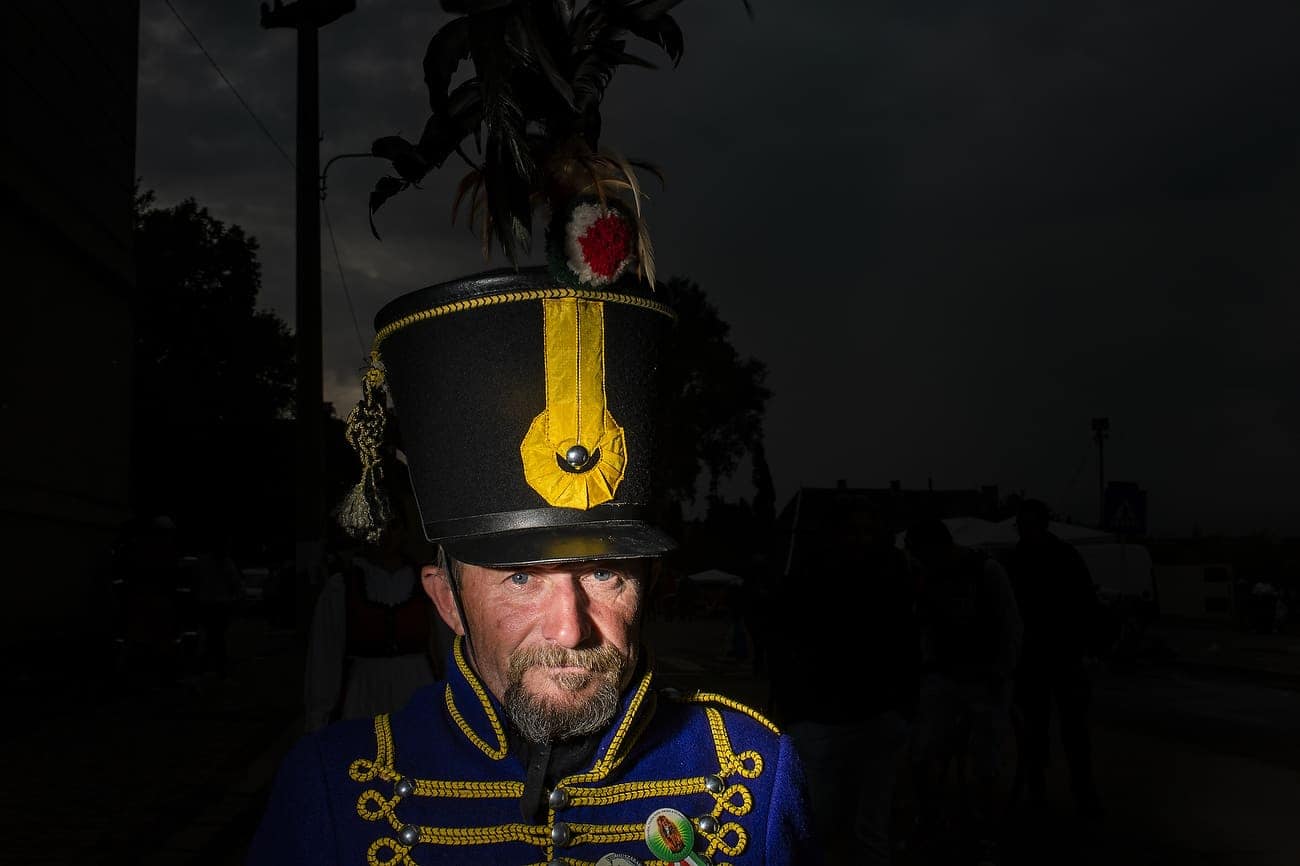
SUMULEU CIUC, ROMANIA - MAY 19: Hungarians from all over the world attending the early pilgrimage hold at Sumuleu Ciuc in Romania, as seen on May 19, 2018. Sumuleu Ciuc became a pilgrimage site in 1567, when Hungarian king John II Sigismund Zápolya wanted to convert the Székely population of the upper Csík to Protestantism. The Székelys refused to abandon the Catholic faith and resisted. A battle took place on a nearby field, on Saturday before Pentecost 1567, from which the Székelys emerged victorious. The monks saw this as a sign of the care of Virgin Mary, and since then, this event has been commemorated by a pilgrimage when the believers gather on Pentecost every year. Beside its religious importance, the pilgrimage has also become a community event demonstrating spiritual unity of Hungarian people living in and outside the historical region of Transylvania. Photography by Mugur Varzariu/Getty Images/Newsweek.
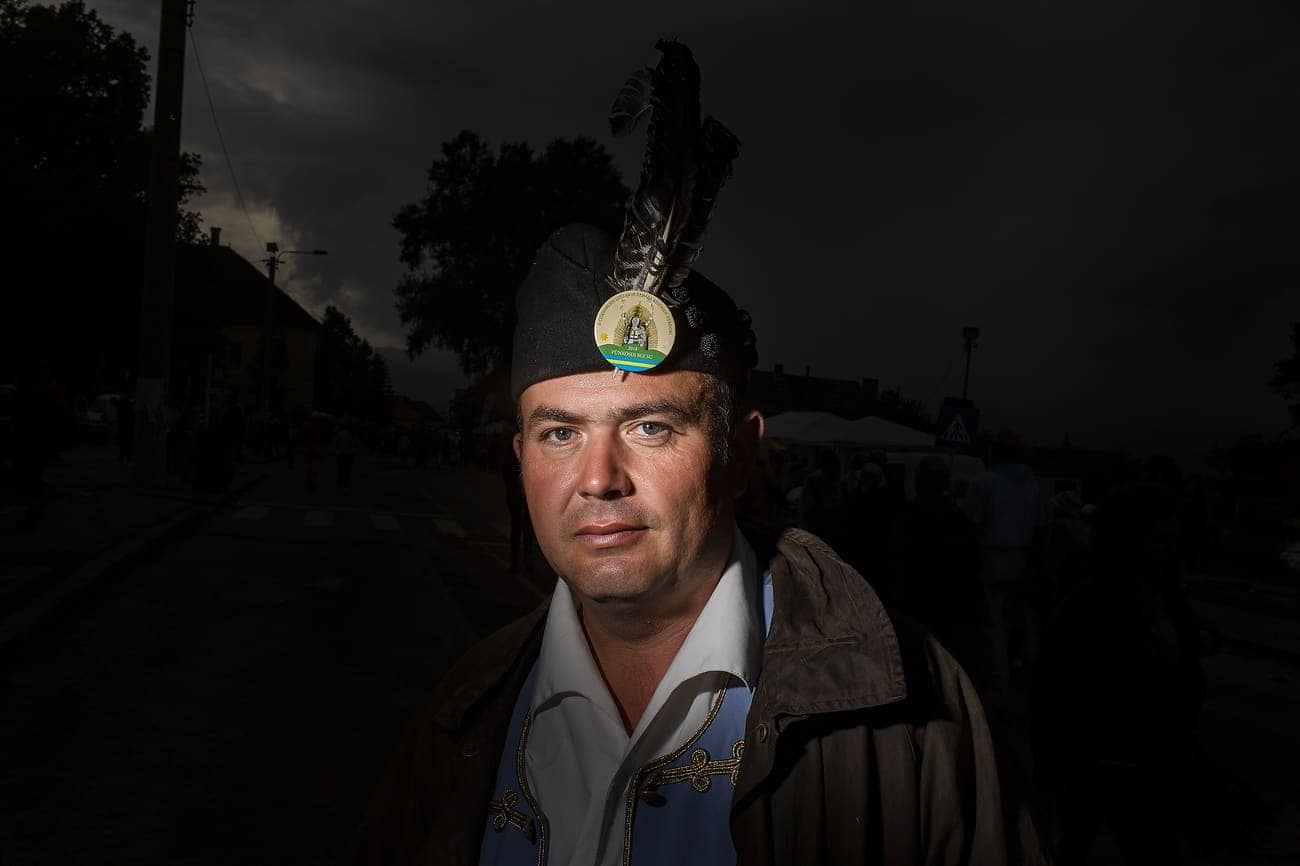
SUMULEU CIUC, ROMANIA - MAY 19: Hungarians from all over the world attending the early pilgrimage hold at Sumuleu Ciuc in Romania, as seen on May 19, 2018. Sumuleu Ciuc became a pilgrimage site in 1567, when Hungarian king John II Sigismund Zápolya wanted to convert the Székely population of the upper Csík to Protestantism. The Székelys refused to abandon the Catholic faith and resisted. A battle took place on a nearby field, on Saturday before Pentecost 1567, from which the Székelys emerged victorious. The monks saw this as a sign of the care of Virgin Mary, and since then, this event has been commemorated by a pilgrimage when the believers gather on Pentecost every year. Beside its religious importance, the pilgrimage has also become a community event demonstrating spiritual unity of Hungarian people living in and outside the historical region of Transylvania. Photography by Mugur Varzariu/Getty Images/Newsweek.
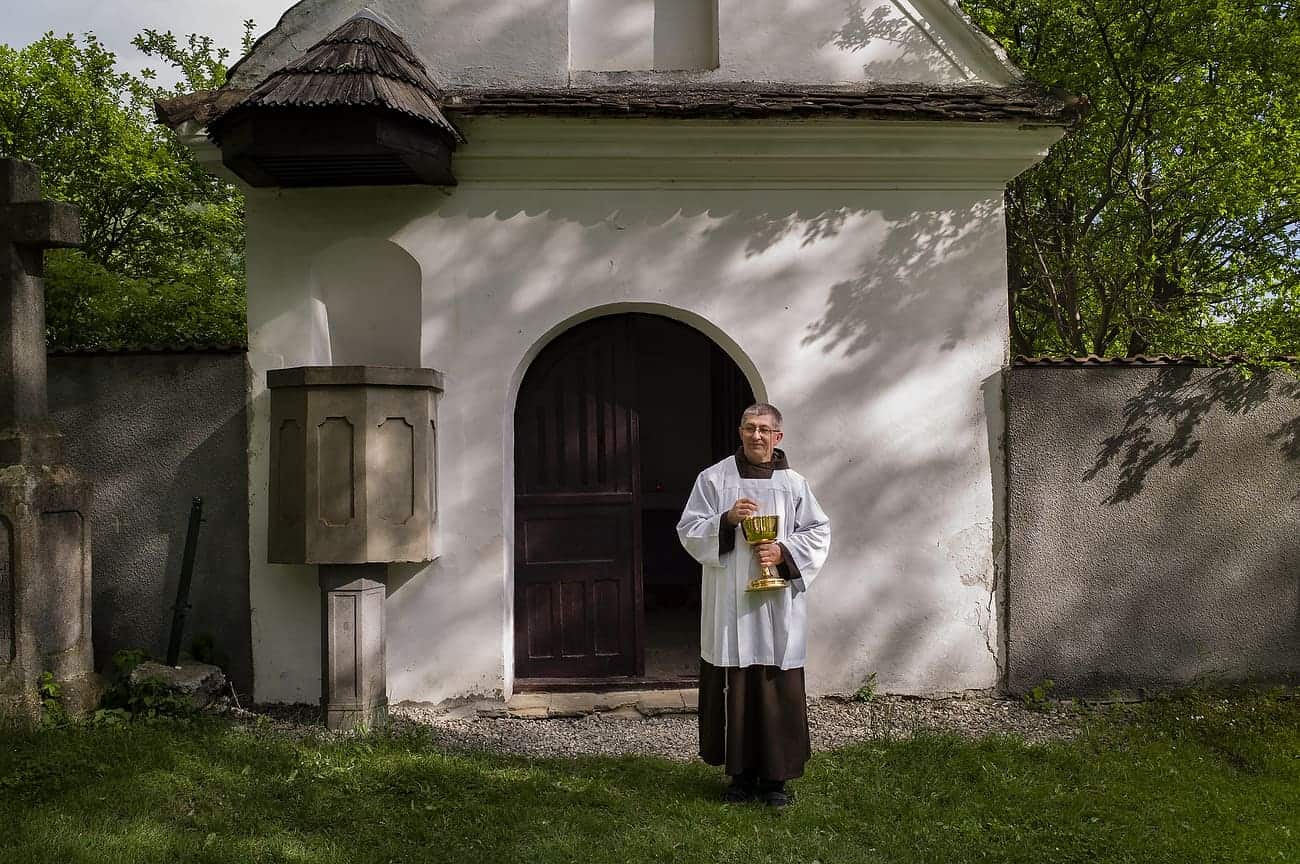
SUMULEU CIUC, ROMANIA - MAY 19: Hungarians from all over the world attending the early pilgrimage hold at Sumuleu Ciuc in Romania, as seen on May 19, 2018. Sumuleu Ciuc became a pilgrimage site in 1567, when Hungarian king John II Sigismund Zápolya wanted to convert the Székely population of the upper Csík to Protestantism. The Székelys refused to abandon the Catholic faith and resisted. A battle took place on a nearby field, on Saturday before Pentecost 1567, from which the Székelys emerged victorious. The monks saw this as a sign of the care of Virgin Mary, and since then, this event has been commemorated by a pilgrimage when the believers gather on Pentecost every year. Beside its religious importance, the pilgrimage has also become a community event demonstrating spiritual unity of Hungarian people living in and outside the historical region of Transylvania. Photography by Mugur Varzariu/Getty Images/Newsweek.
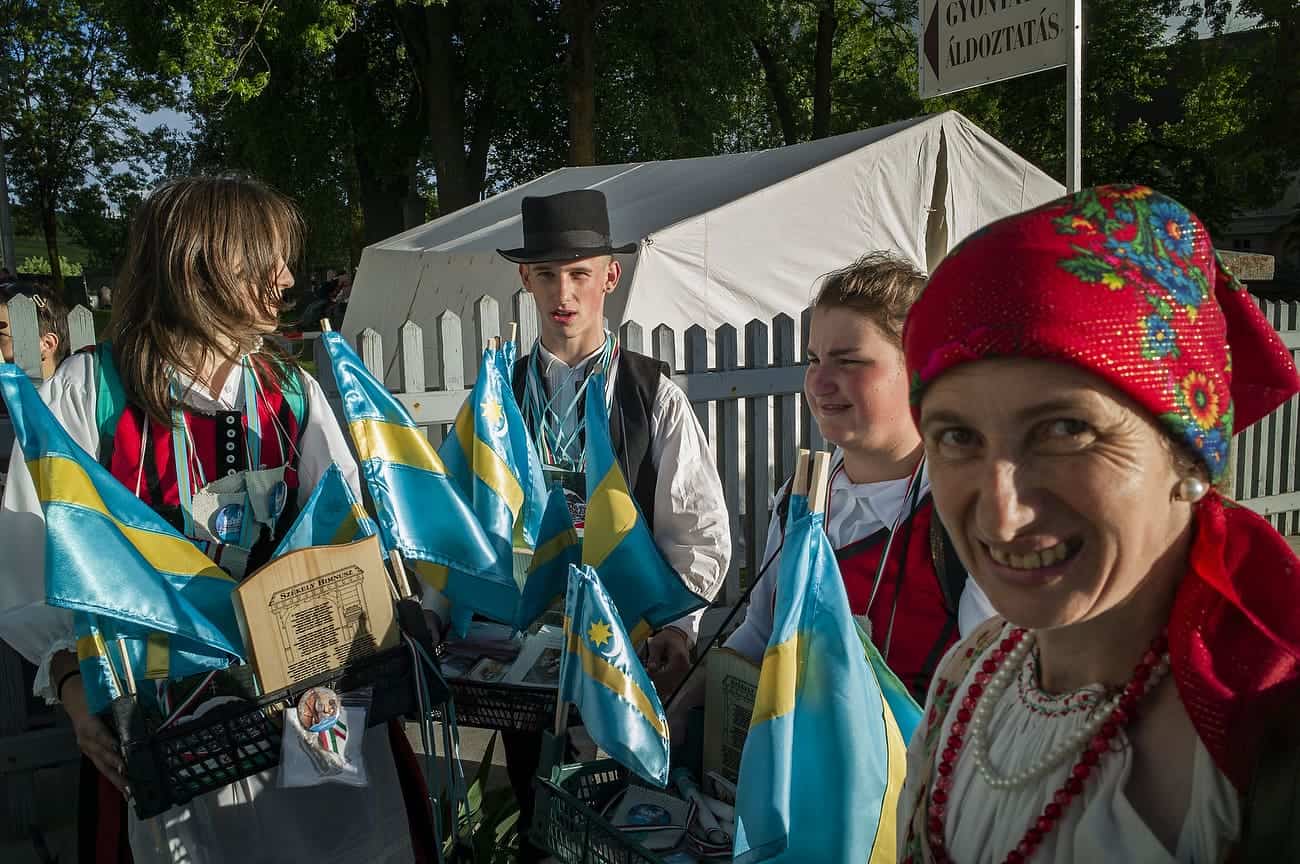
SUMULEU CIUC, ROMANIA - MAY 19: Hungarians from all over the world attending the early pilgrimage hold at Sumuleu Ciuc in Romania, as seen on May 19, 2018. Sumuleu Ciuc became a pilgrimage site in 1567, when Hungarian king John II Sigismund Zápolya wanted to convert the Székely population of the upper Csík to Protestantism. The Székelys refused to abandon the Catholic faith and resisted. A battle took place on a nearby field, on Saturday before Pentecost 1567, from which the Székelys emerged victorious. The monks saw this as a sign of the care of Virgin Mary, and since then, this event has been commemorated by a pilgrimage when the believers gather on Pentecost every year. Beside its religious importance, the pilgrimage has also become a community event demonstrating spiritual unity of Hungarian people living in and outside the historical region of Transylvania. Photography by Mugur Varzariu/Getty Images/Newsweek.
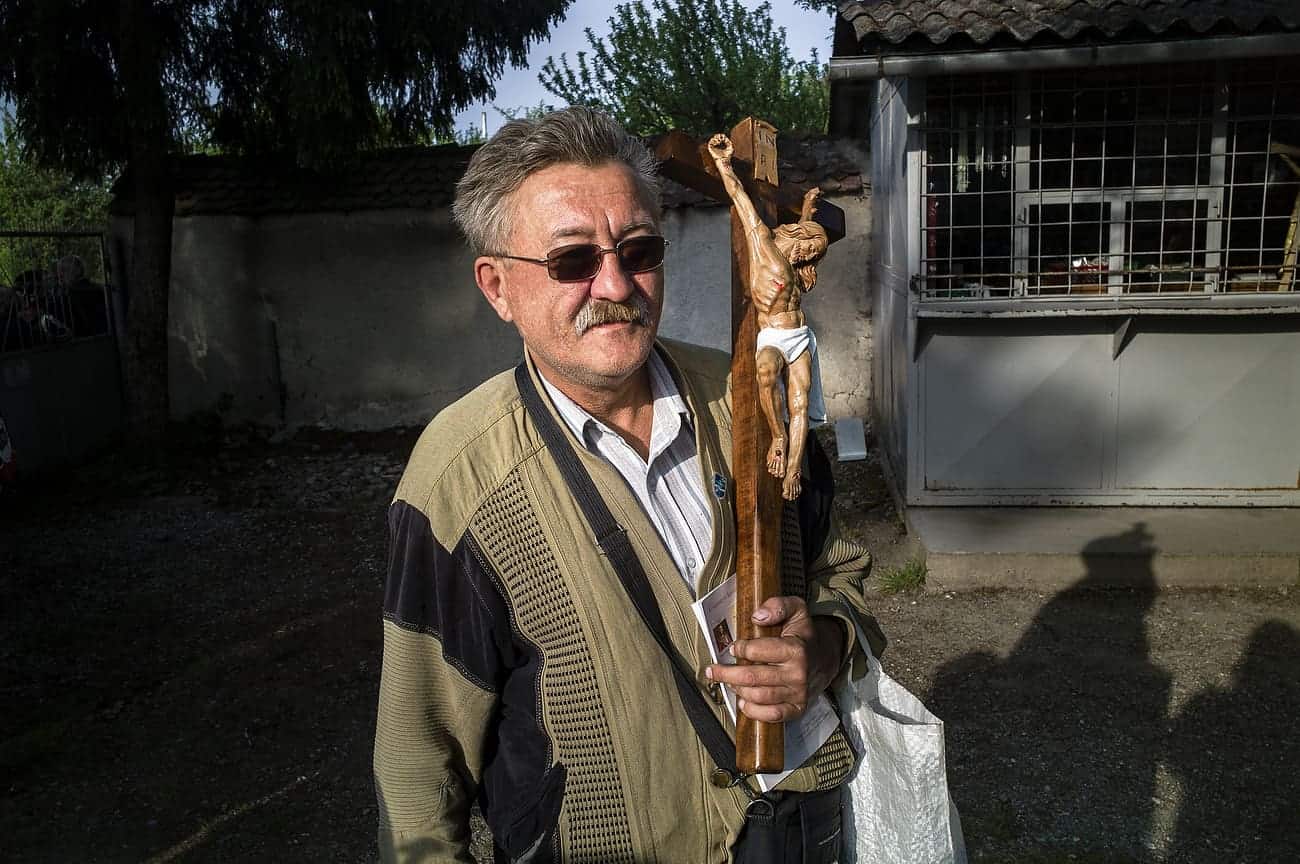
SUMULEU CIUC, ROMANIA - MAY 19: Hungarians from all over the world attending the early pilgrimage hold at Sumuleu Ciuc in Romania, as seen on May 19, 2018. Sumuleu Ciuc became a pilgrimage site in 1567, when Hungarian king John II Sigismund Zpolya wanted to convert the Szkely population of the upper Csk to Protestantism. The Szkelys refused to abandon the Catholic faith and resisted. A battle took place on a nearby field, on Saturday before Pentecost 1567, from which the Szkelys emerged victorious. The monks saw this as a sign of the care of Virgin Mary, and since then, this event has been commemorated by a pilgrimage when the believers gather on Pentecost every year. Beside its religious importance, the pilgrimage has also become a community event demonstrating spiritual unity of Hungarian people living in and outside the historical region of Transylvania. Photography by Mugur Varzariu/Getty Images/Newsweek.
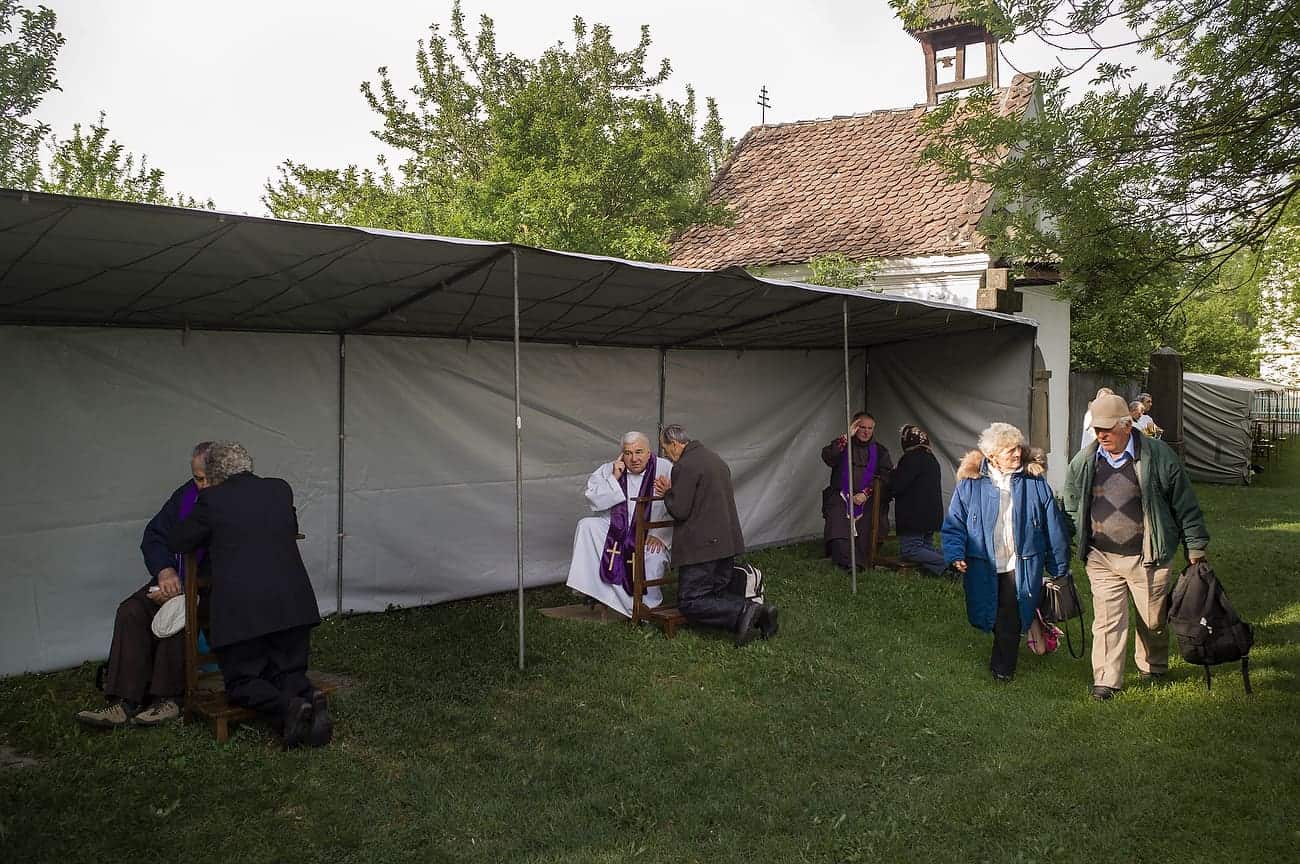
SUMULEU CIUC, ROMANIA - MAY 19: Hungarians from all over the world attending the early pilgrimage hold at Sumuleu Ciuc in Romania, as seen on May 19, 2018. Sumuleu Ciuc became a pilgrimage site in 1567, when Hungarian king John II Sigismund Zápolya wanted to convert the Székely population of the upper Csík to Protestantism. The Székelys refused to abandon the Catholic faith and resisted. A battle took place on a nearby field, on Saturday before Pentecost 1567, from which the Székelys emerged victorious. The monks saw this as a sign of the care of Virgin Mary, and since then, this event has been commemorated by a pilgrimage when the believers gather on Pentecost every year. Beside its religious importance, the pilgrimage has also become a community event demonstrating spiritual unity of Hungarian people living in and outside the historical region of Transylvania. Photography by Mugur Varzariu/Getty Images/Newsweek.
